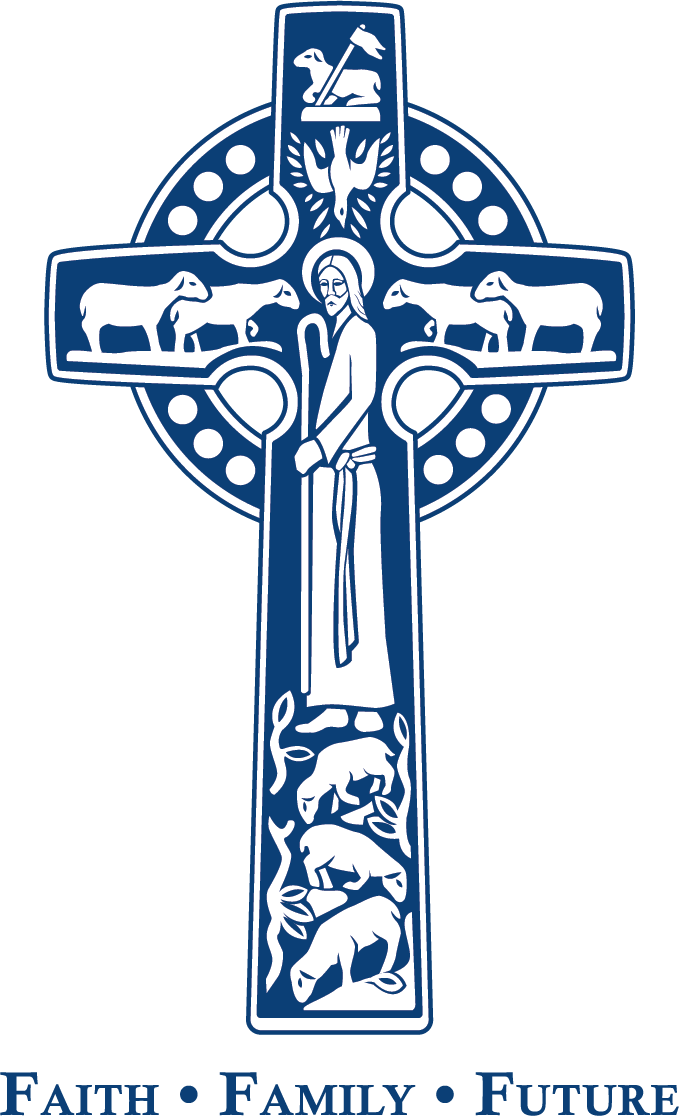Day 8: Our final day of touring was packed full of extraordinary places and experiences. We began by visiting a place that is meant to remember the upper room. However as you can see from the arches it is from the byzantine period, 1000 years after the disciples gathered there with Jesus. But it is thought to be in the general area. It also holds a traditional spot for David’s tomb, but that’s a bit suspect also. Then we went down to a church to commemorate the cock crowing, which was beautiful, but more importantly it is set in the priestly neighborhood. There was a section of Jerusalem in Jesus’s time where the priest lived. Archaeologists are fairly confident that they found Caiaphas’s house. It is unusual in that it has a prison within it. So this was a place where Jesus was held before and after his trial, and several of the apostles were held there later as well. The steps leading up to Caiaphas‘s house are still there and we were able to stand on part of them putting our feet where Jesus and the apostles walked.
Then we went to an alternate site for the crucifixion and burial of Jesus. Yesterday we went to the church of the holy sepulcher, and that was moving, but the garden tomb area seemed much more likely to us to be the place where Jesus was crucified and buried.
After a walk through the Jewish and Christian quarters in Jerusalem, and to stop for lunch, we went to the Wailing Wall. There happened to be hundreds of young Israeli soldiers being sworn in at the same time. It was moving to see their dedication to their nation. After praying at the Wailing Wall, we went and saw a site that shows where Jesus’ prophecy about “not one stone standing upon another” proved to be accurate. Then we ended up our day at the steps where Peter preached and more than 3,000 were baptized.
This is been a deeply moving pilgrimage for all of us. We all still have a lot more to process, but I can assure you it will deeply affect my study and preaching from now on.

This room is called the upper room, however you can tell from the Byzantine arches that it is thousand years younger than the events of the New Testament.

David’s tomb.
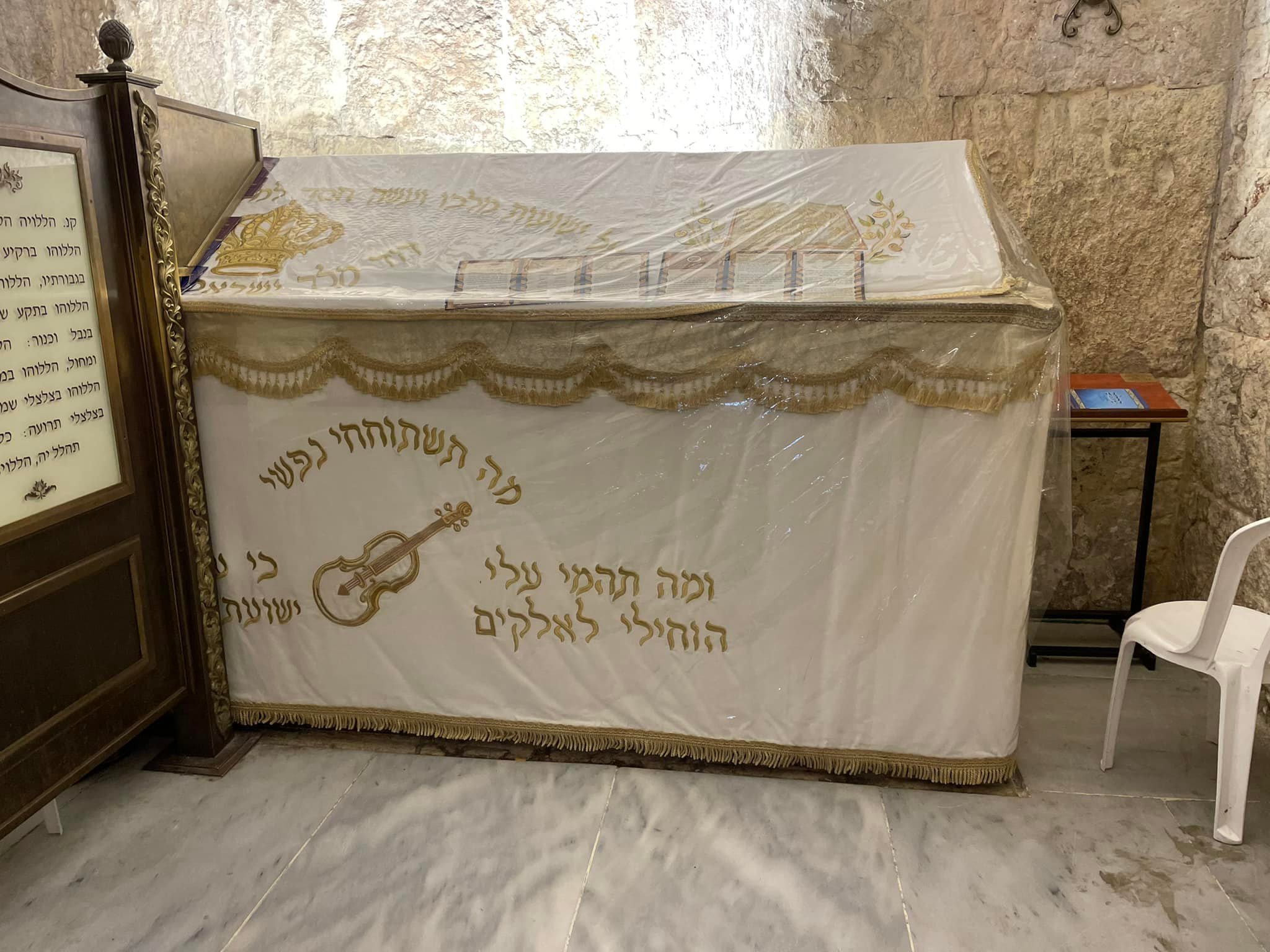
This is repeated to be David’s tomb, but his bones are not actually in there.
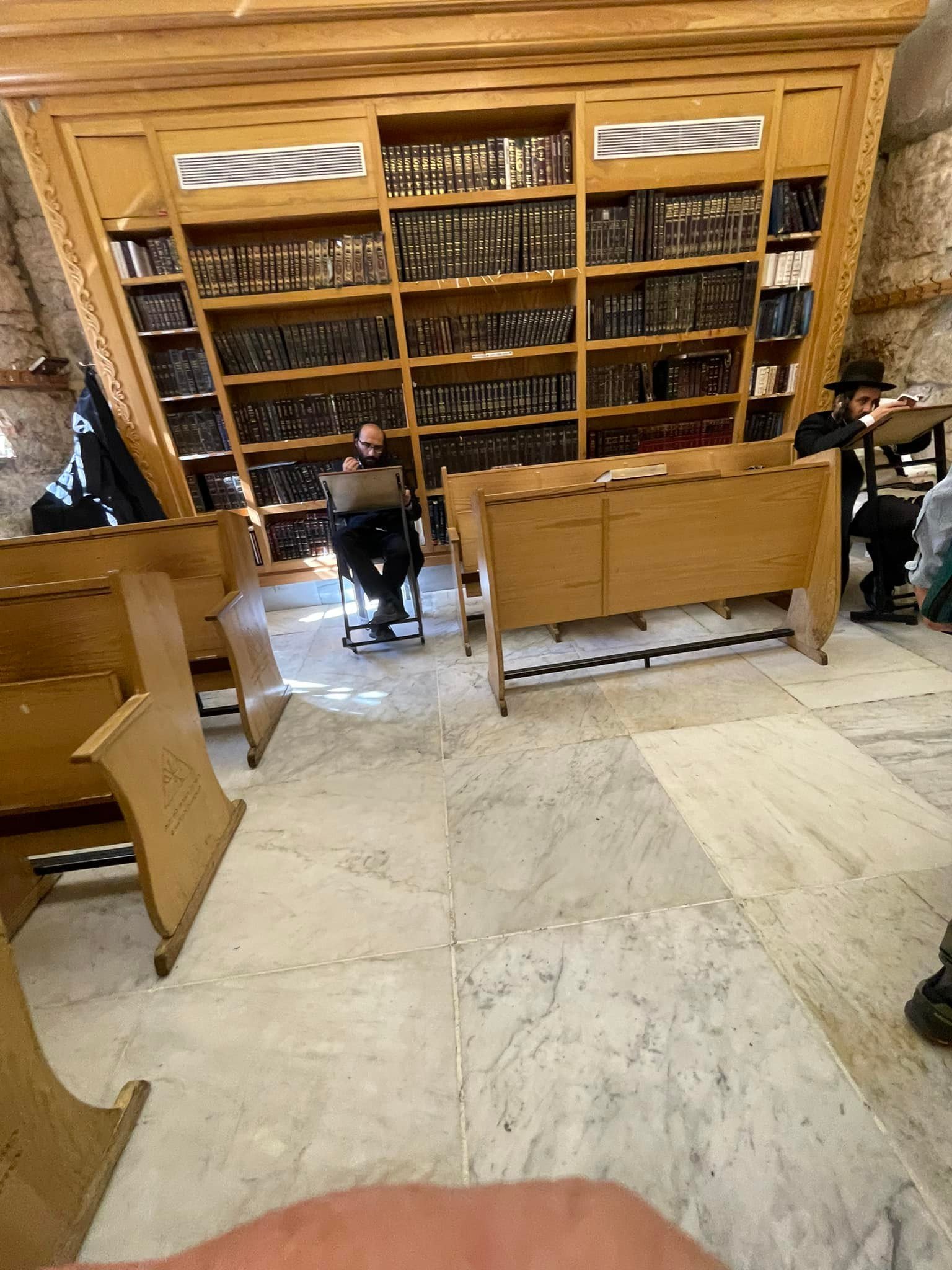
Even so, rabbis and other scholars come and study in this holy space.
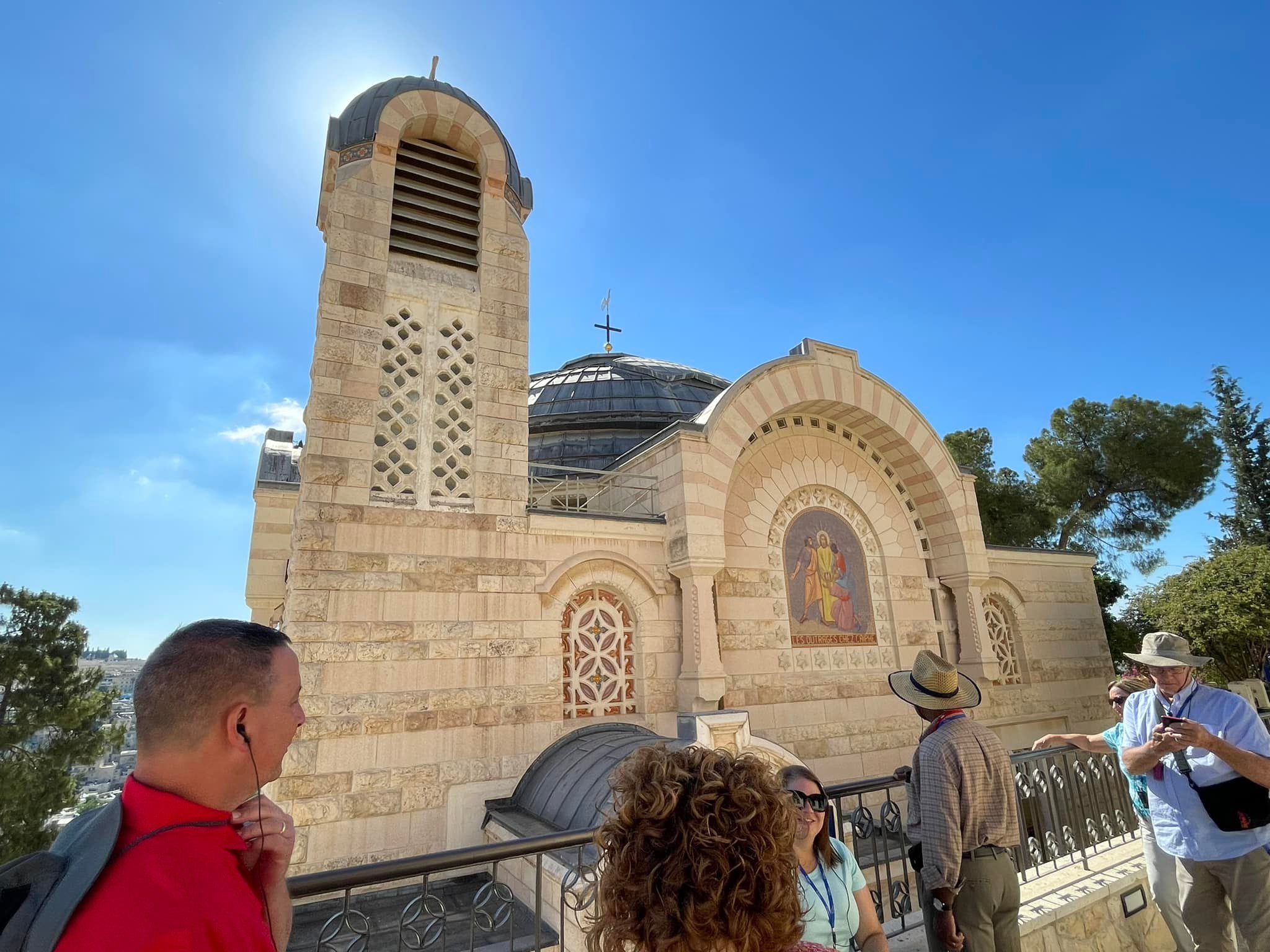
This church is dedicated to the Koch that crowd after Peter had denied Jesus three times. If you zoom in on the cross above the church, you’ll see a rooster weathervane.
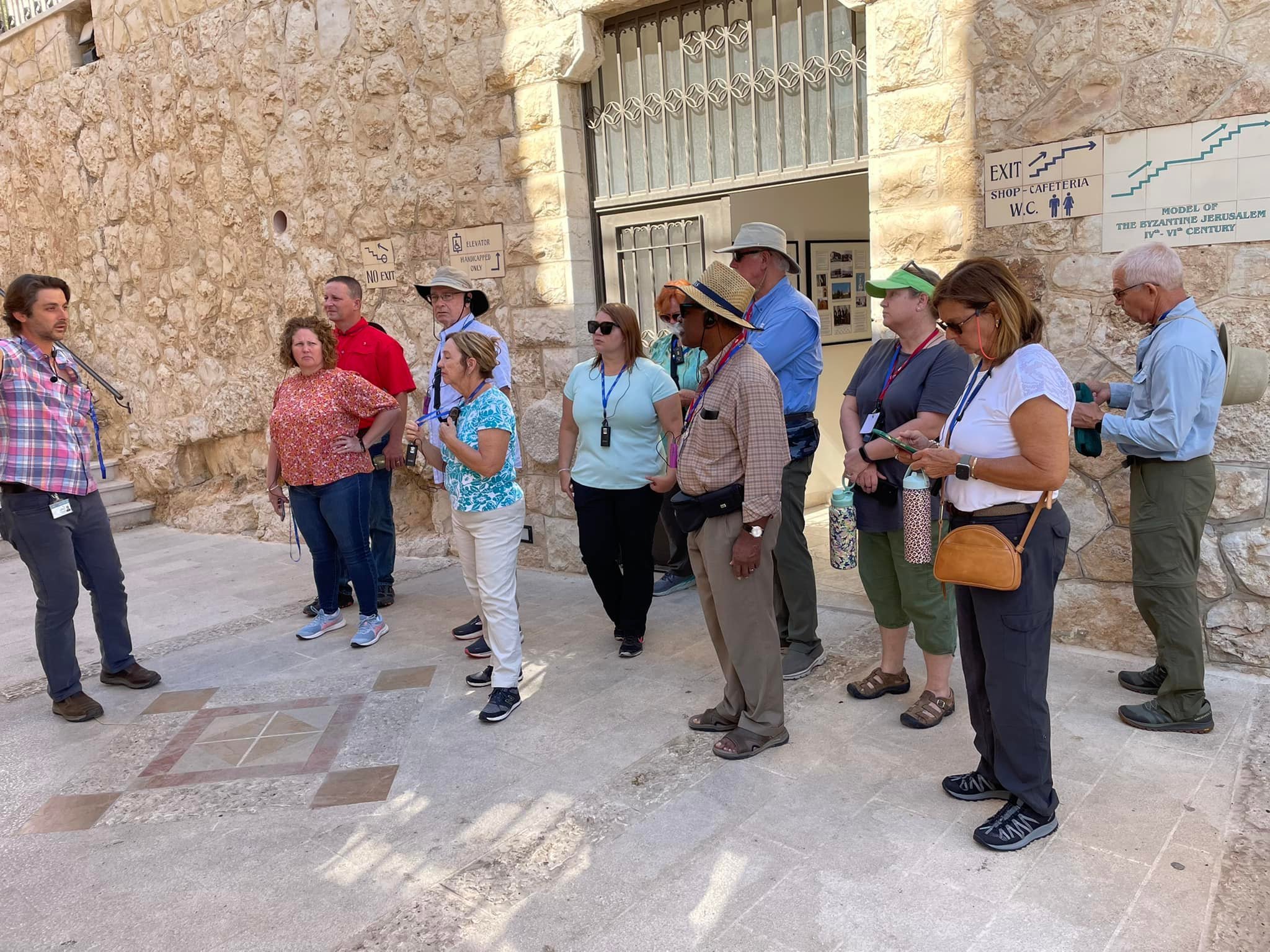
Our guide, Erez, shares more details of this site and its location in the priests’ neighborhood.
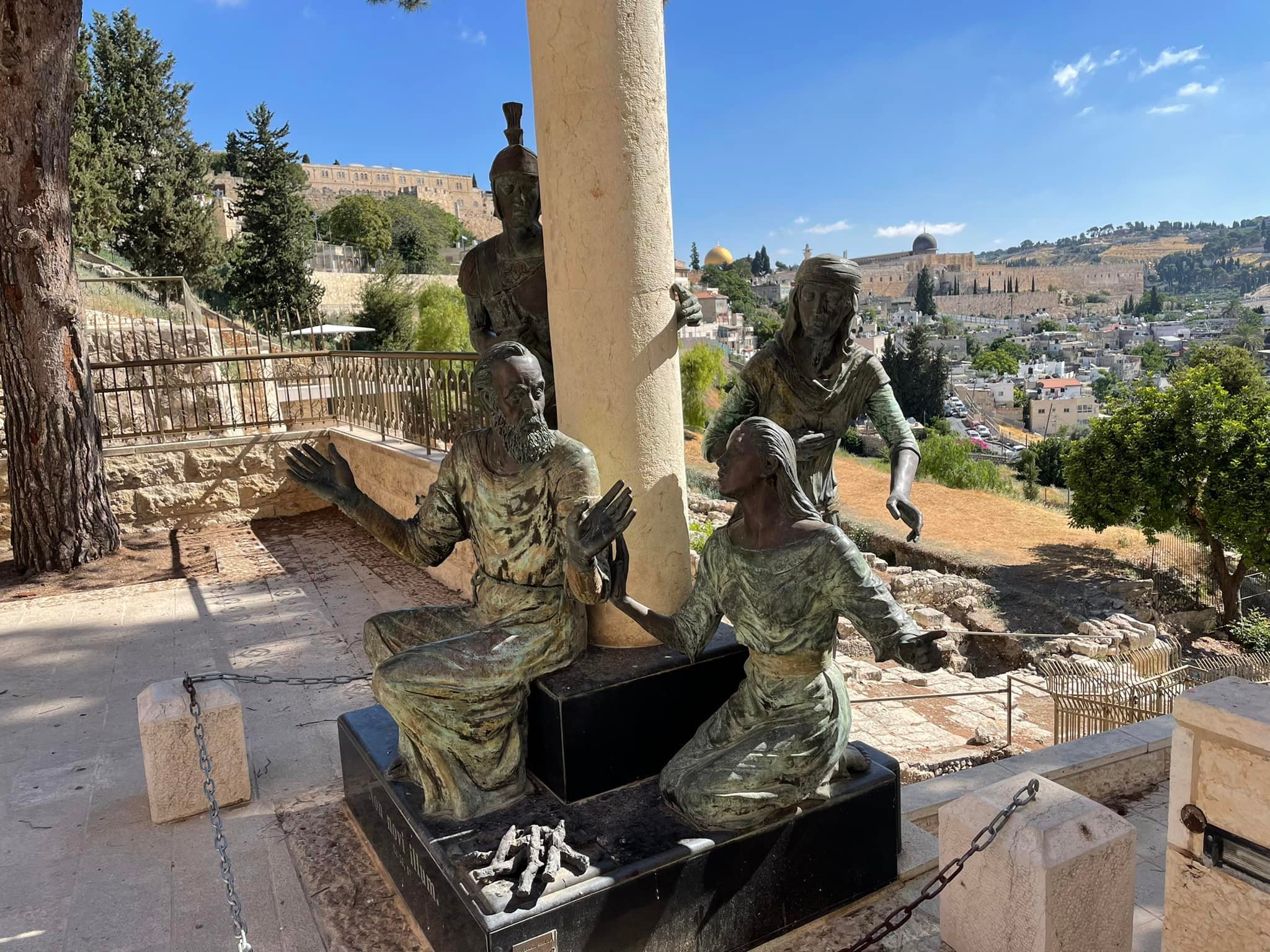
A beautiful picture depicting Peter’s denial.
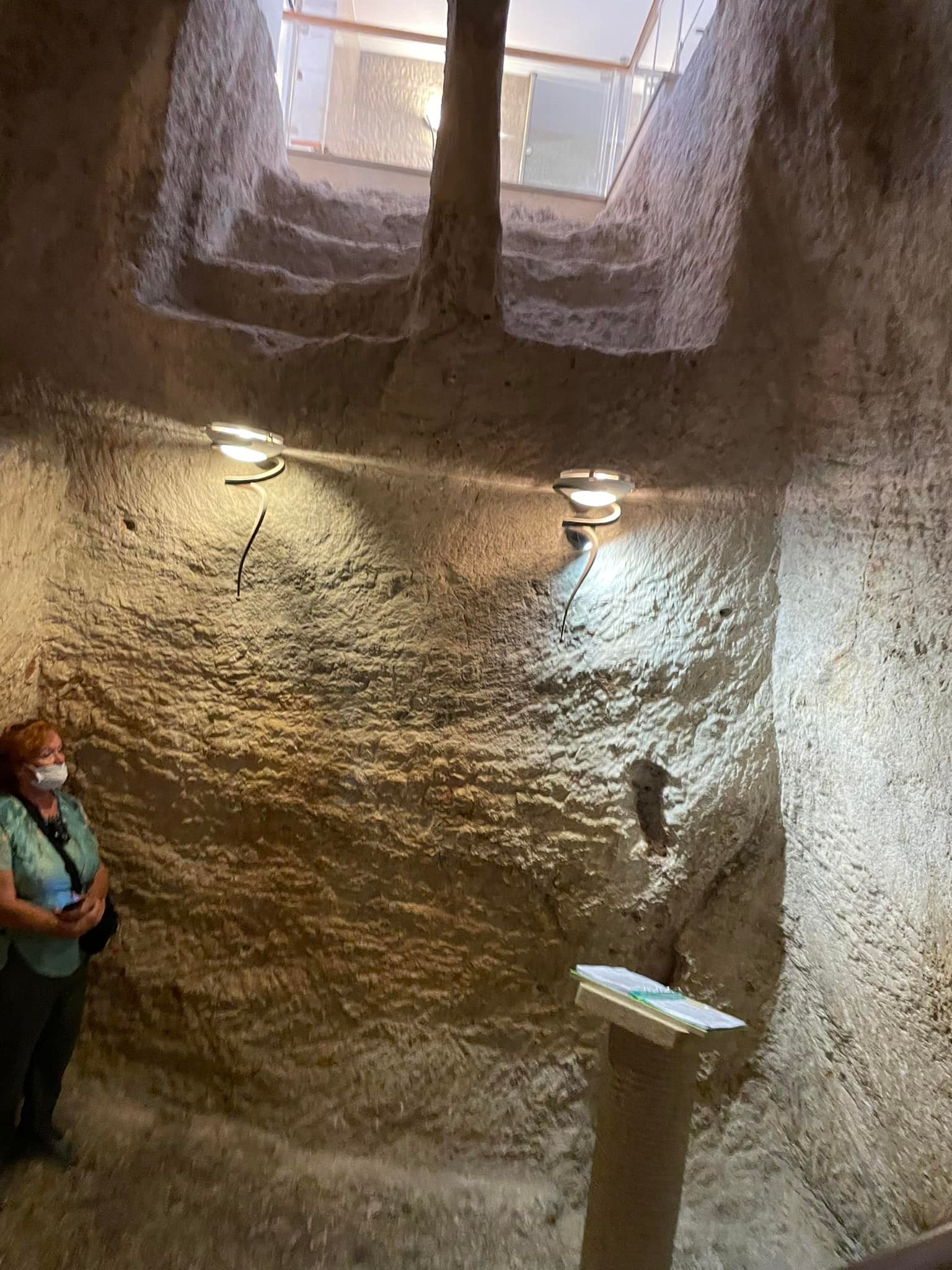
This picture is taken from down in the pit, a prison below Caiaphas’s house. It is very likely that Jesus and later the apostles were held in this space.
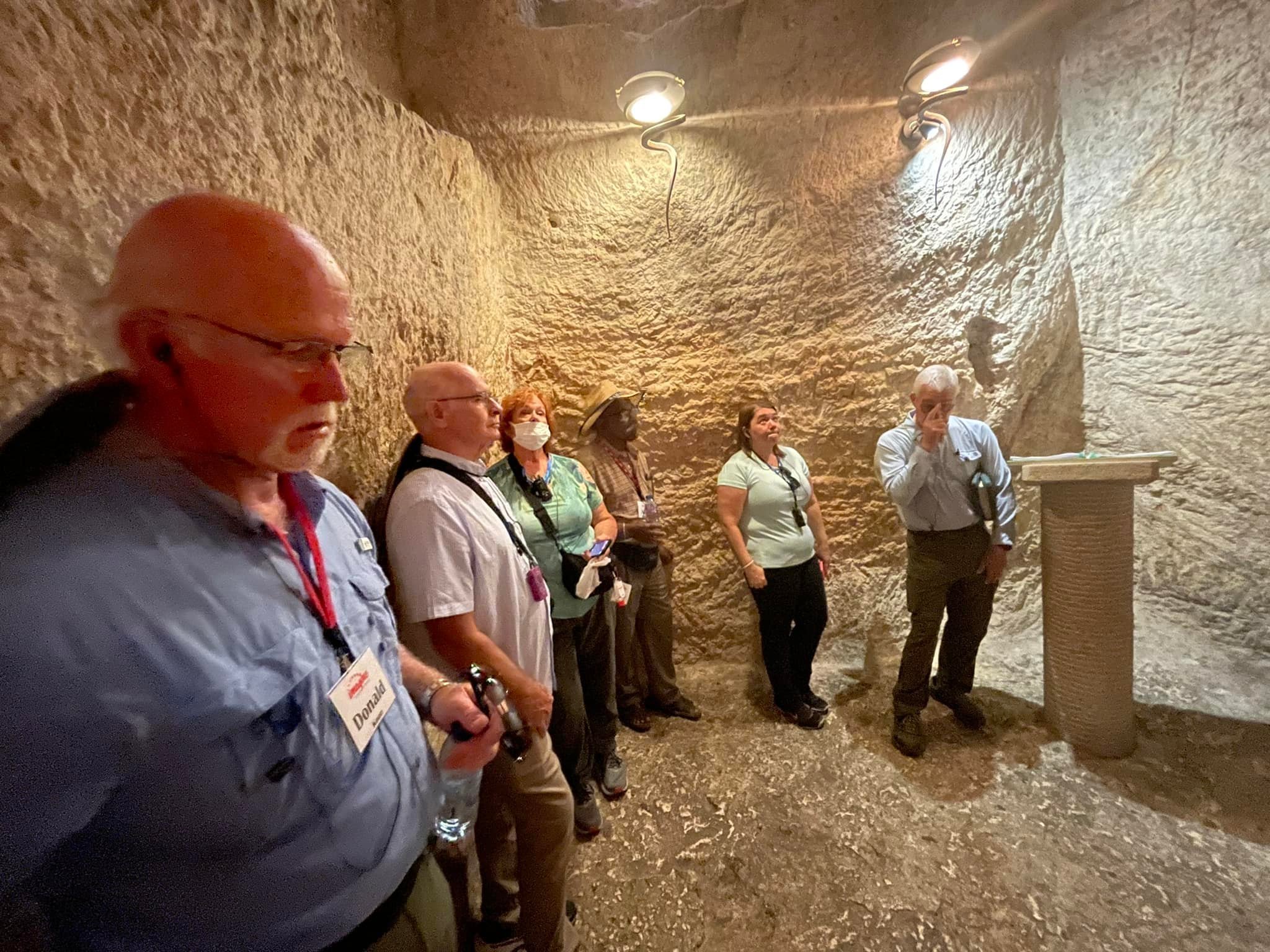
Being in the space was deeply moving for every one of us.
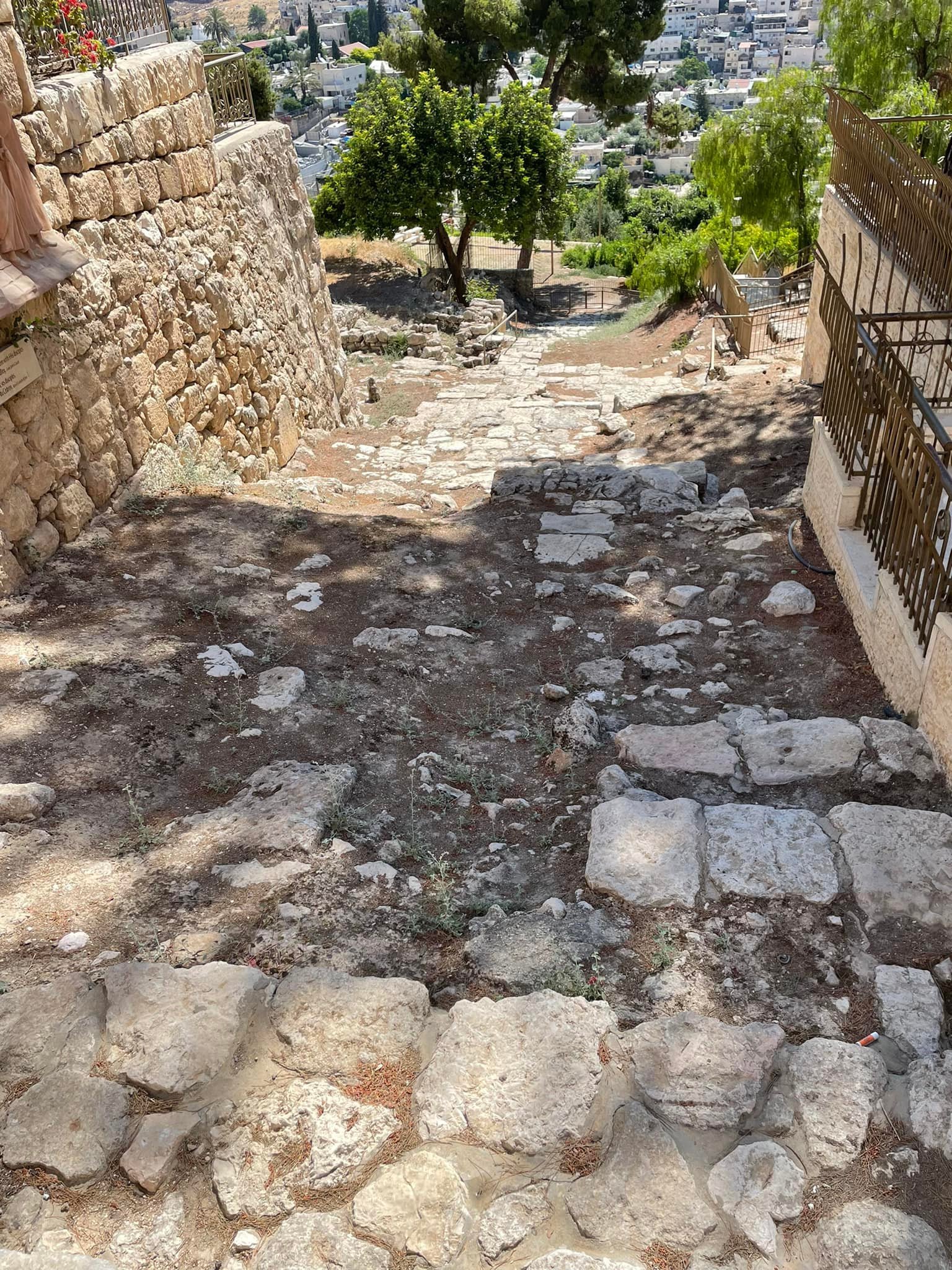
These are the steps that lead up to Caiaphas’s house. Jesus and the apostles walked up them, and we were able to put our feet on them as well.
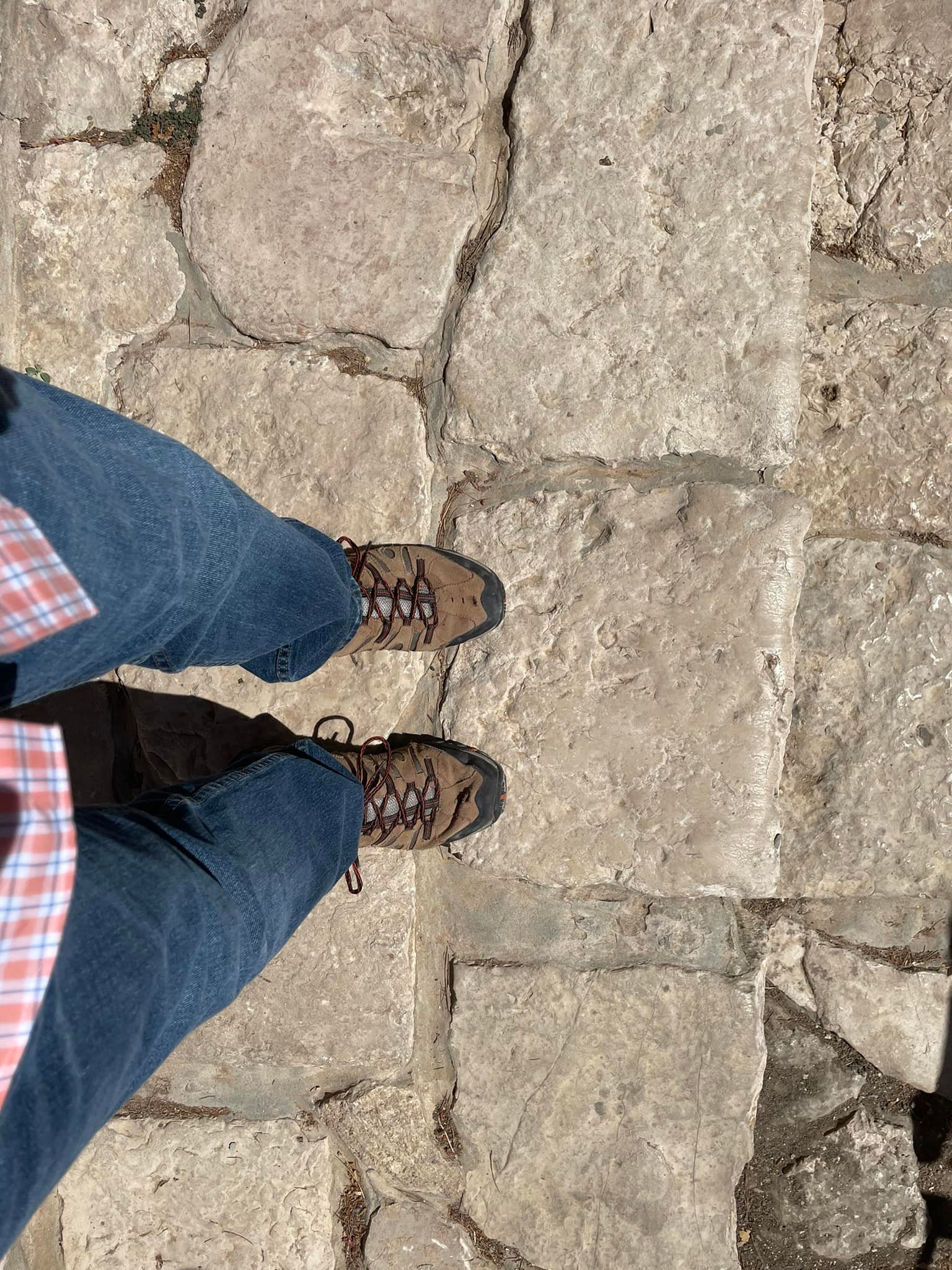
The stones have been here for over 2000 years; I felt very humbled to stand here.
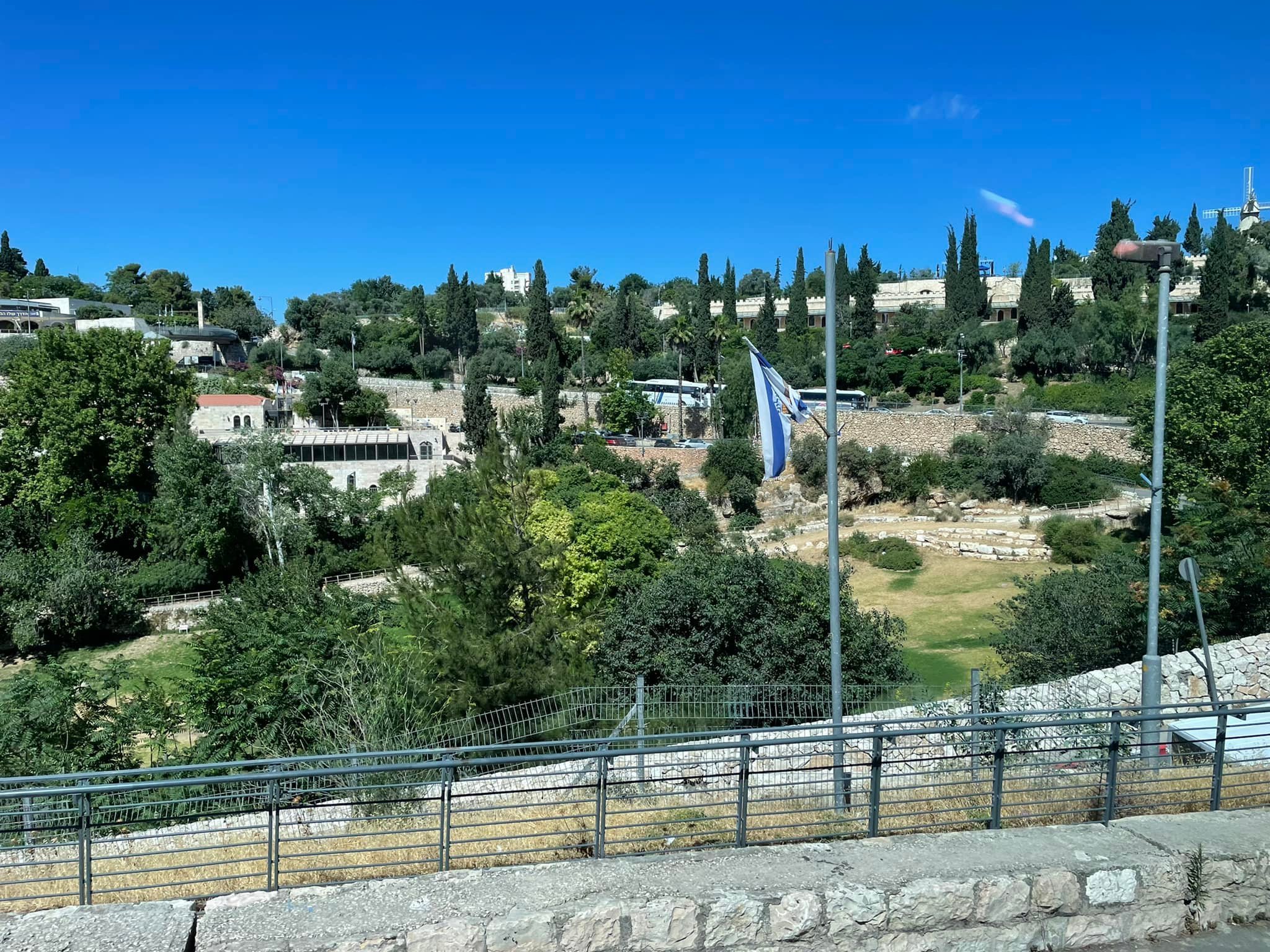
This ravine was once called Gahanna, it’s where the ancient people of Jerusalem dumped their garbage and set fire to it. Jesus used it repeatedly as a metaphor for hell, as did many references in the Old Testament. It has been re-settled and is quite beautiful.
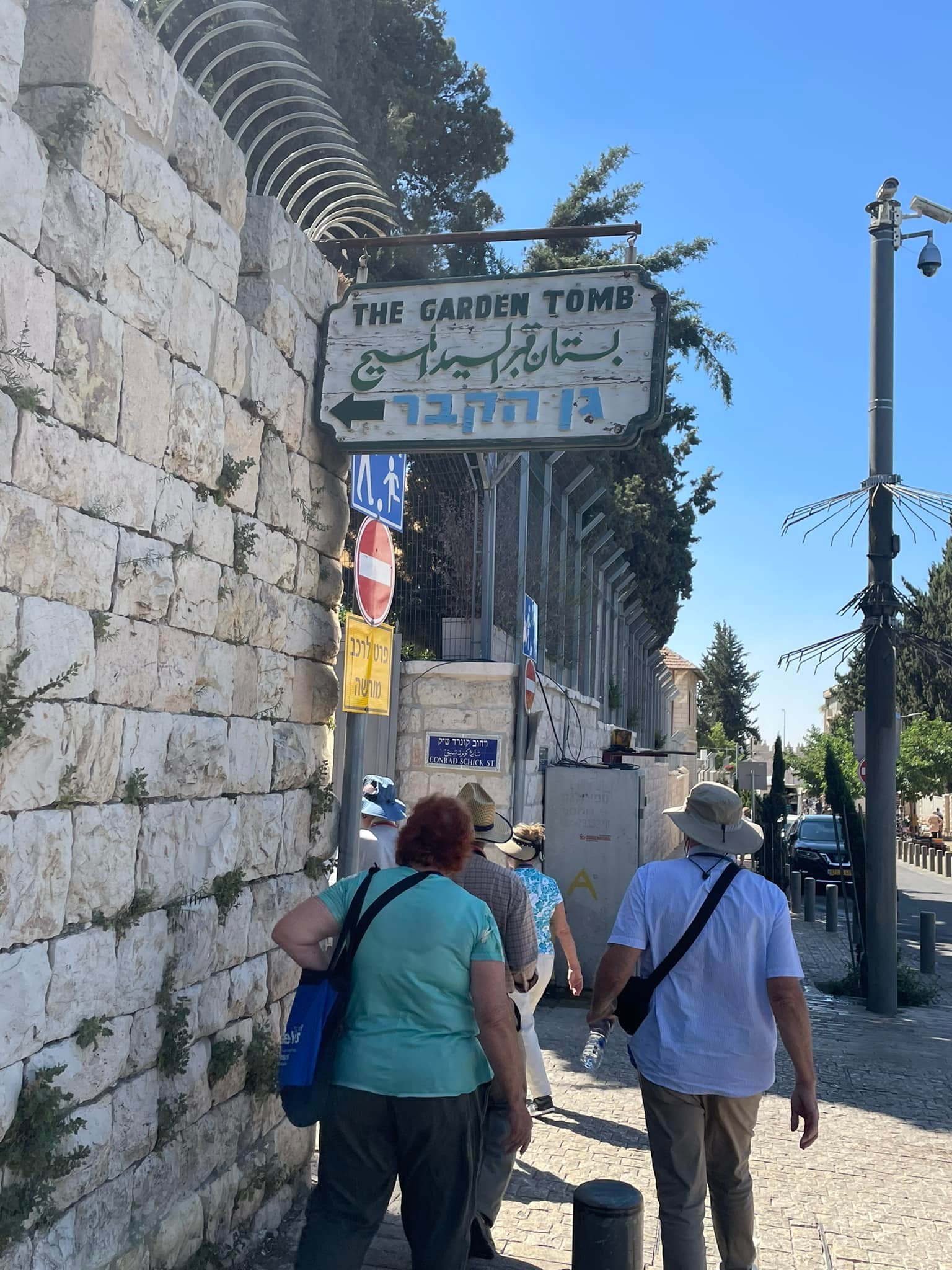
This is the entrance to the garden tomb area.
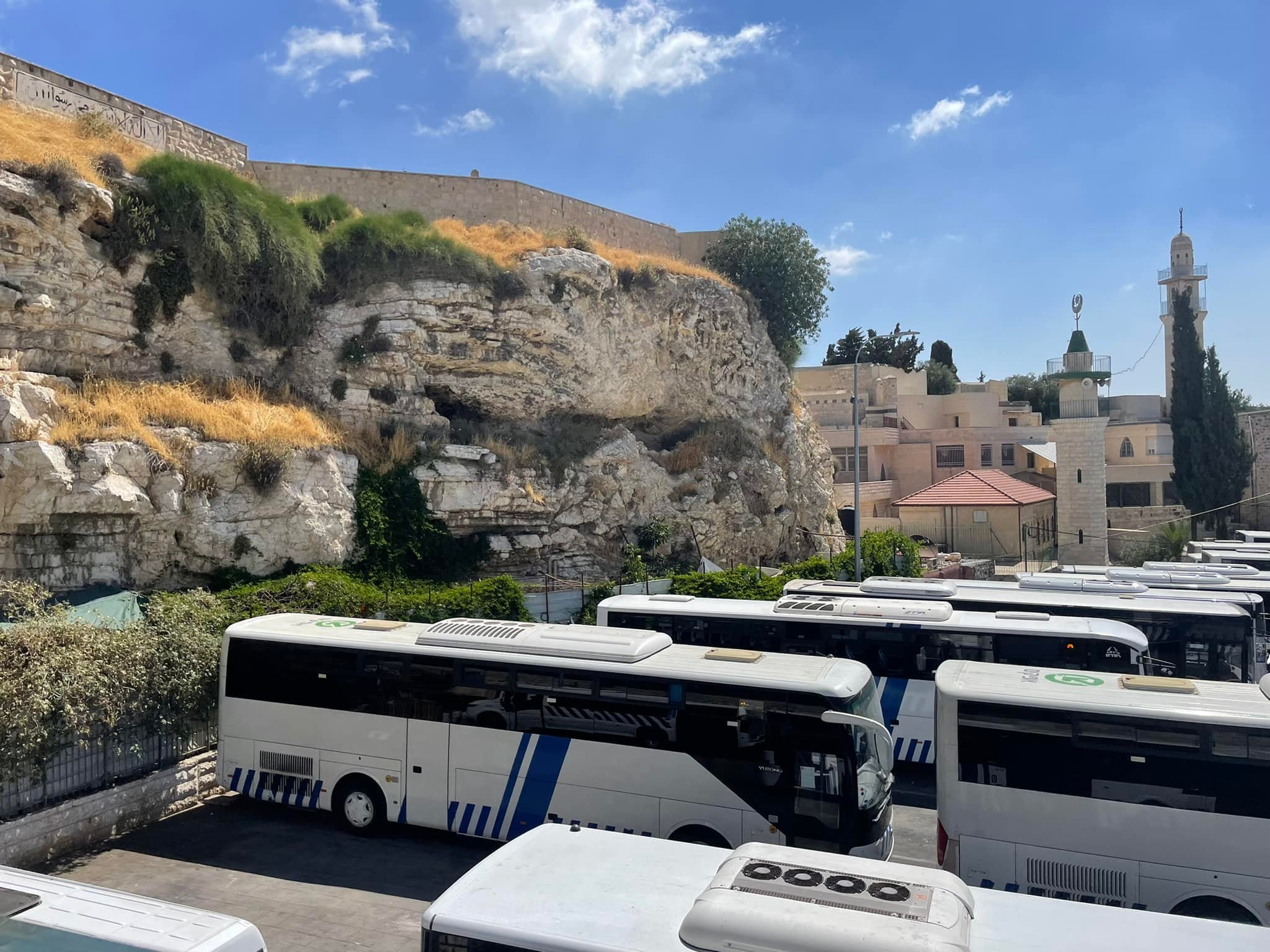
Now you tell me, does this rock formation look like it might be the “Place of the Skull“ or Golgotha? You can see the eyes quite clearly, and the nose although a chunk of it fell off some decades ago. The mouth is there but it was hidden when they built the bus parking lot that you can see. It is also very close to a main road coming into Jerusalem, so if Jesus was crucified near this formation it would have been in a very very public place as noted in scripture.
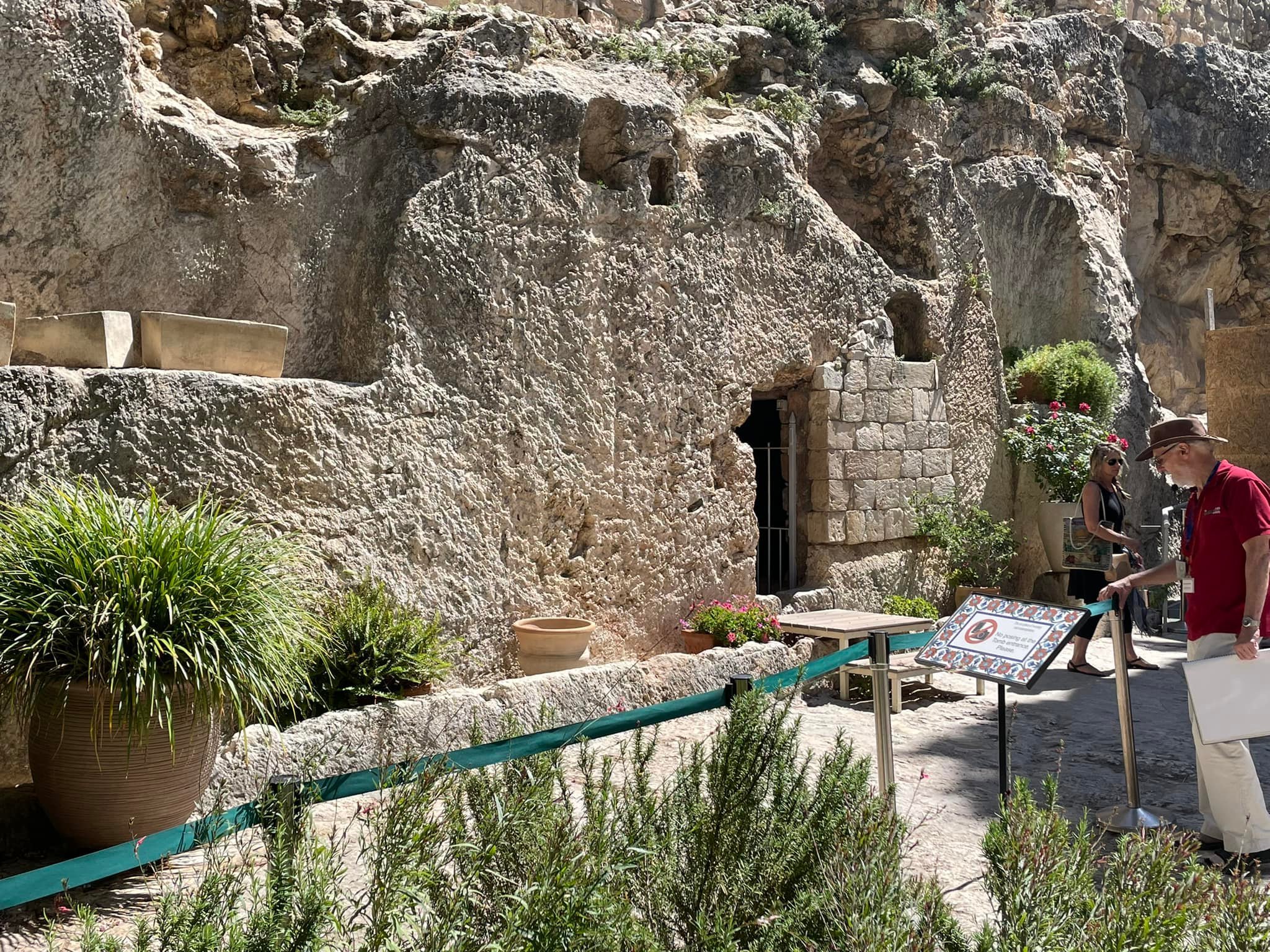
This is the garden tomb, and it looks like a very likely spot and fits the description that we have in the gospels.
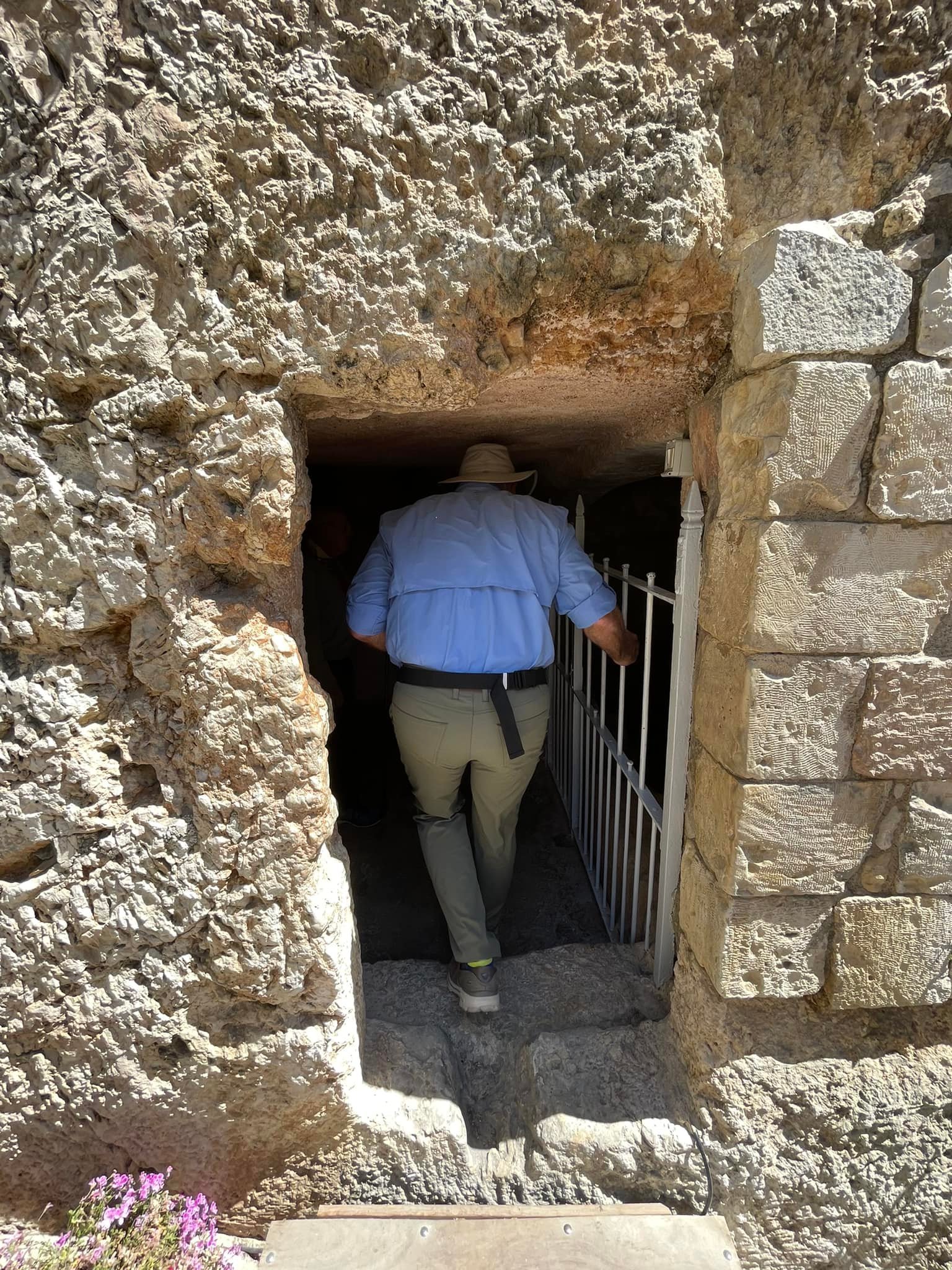
The entry is fairly low, but it was much lower. Peter and John would’ve had to stoop to see inside it.
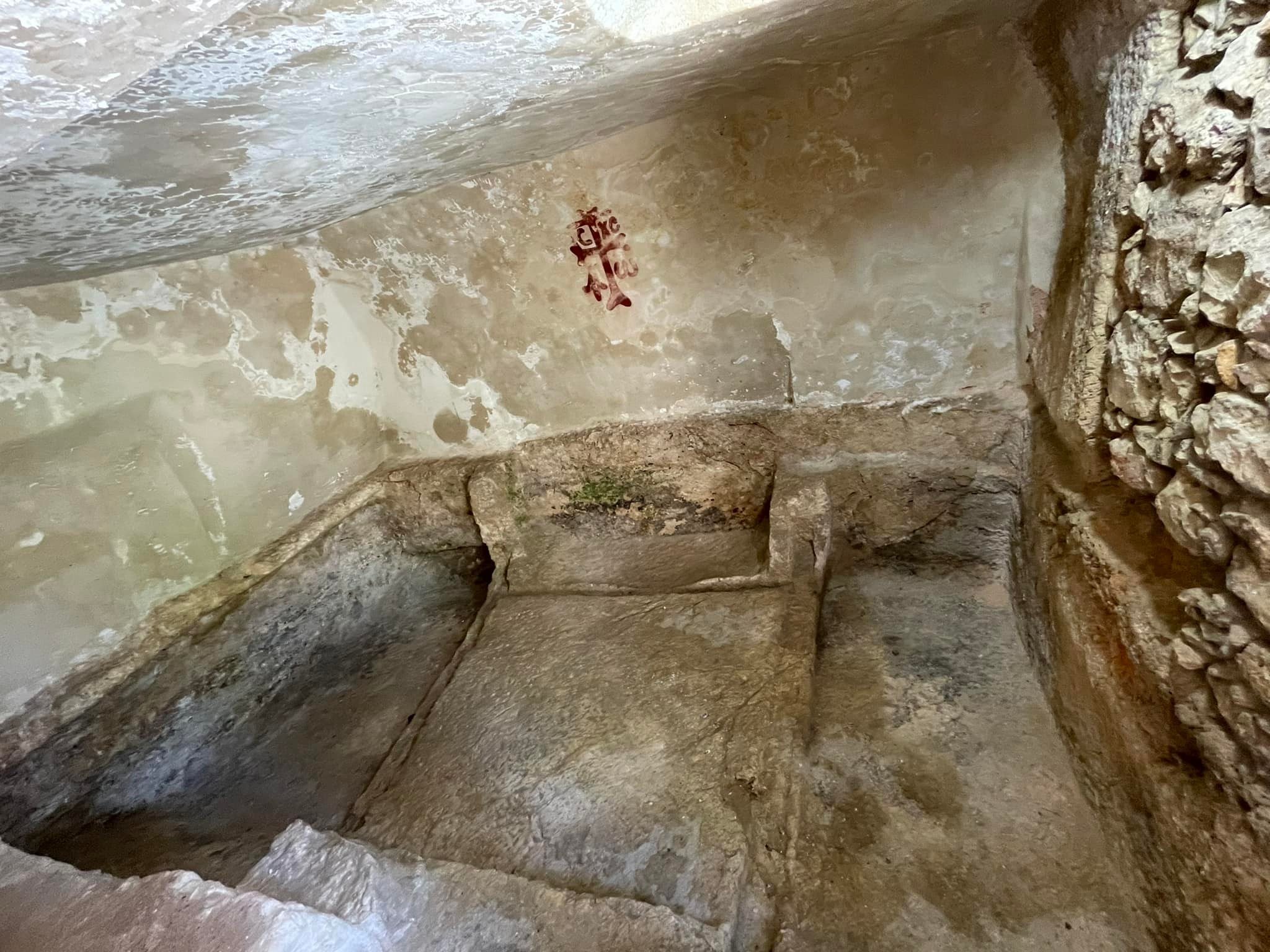
There are actually two chambers, I’m standing in the first chamber where the body would have been anointed. And I’m looking into the second chamber where the body would have been laid. I also asked about a small window - would that have been there? The guy said yes it was original, and that it would have allowed enough light for Peter and John to see the linens lying there where the head had been.
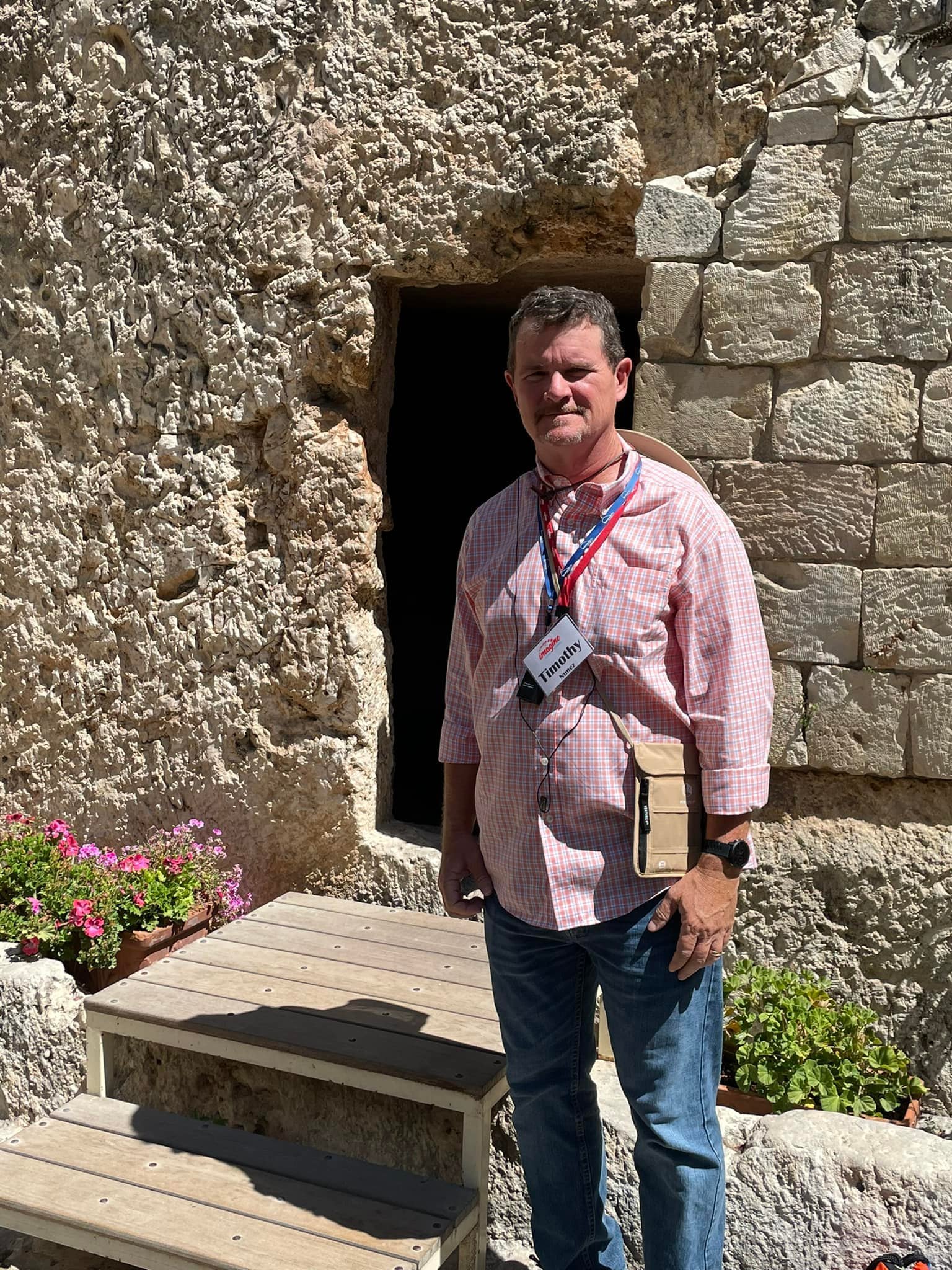
Yet another humbling place to stand.
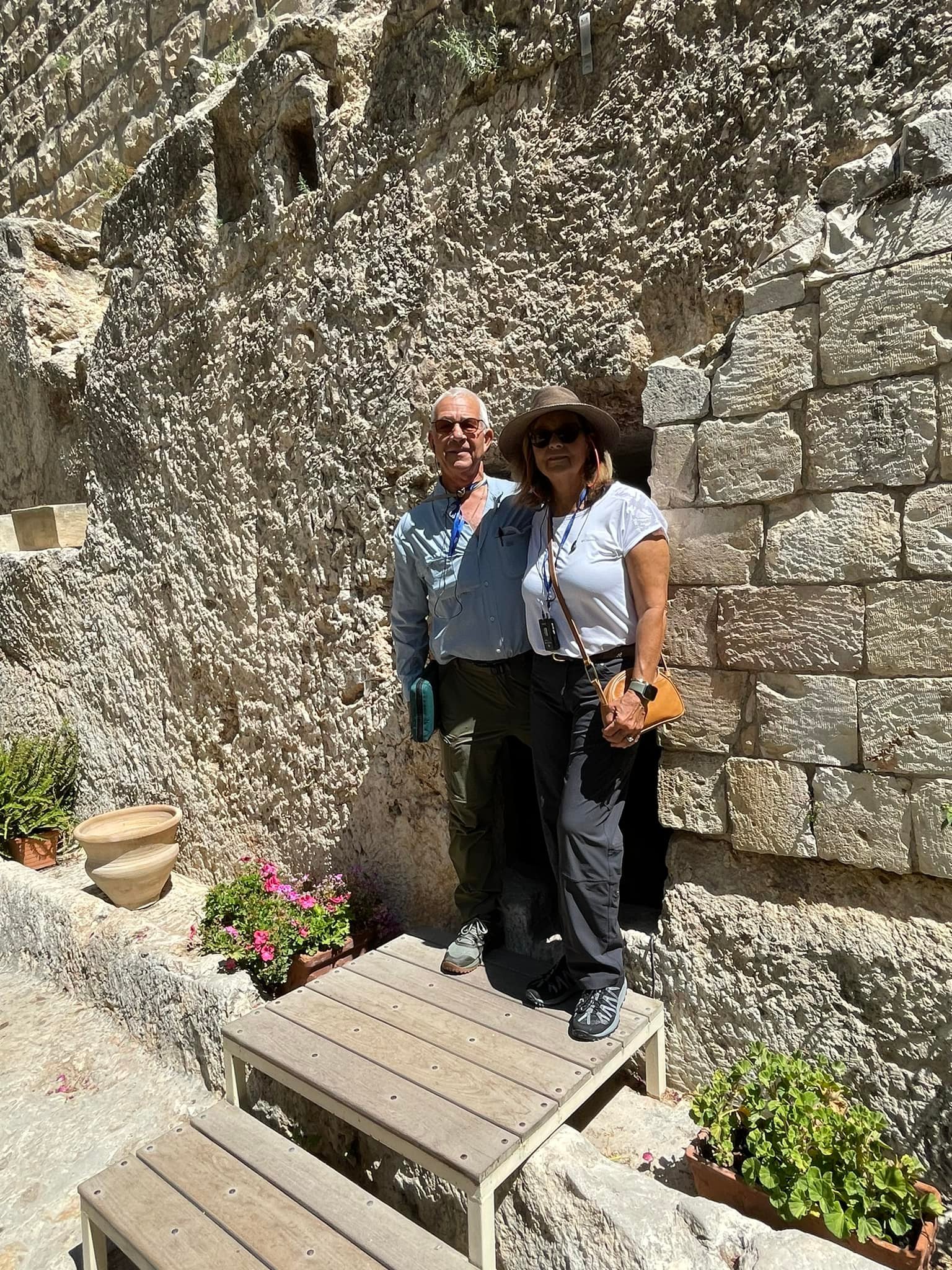
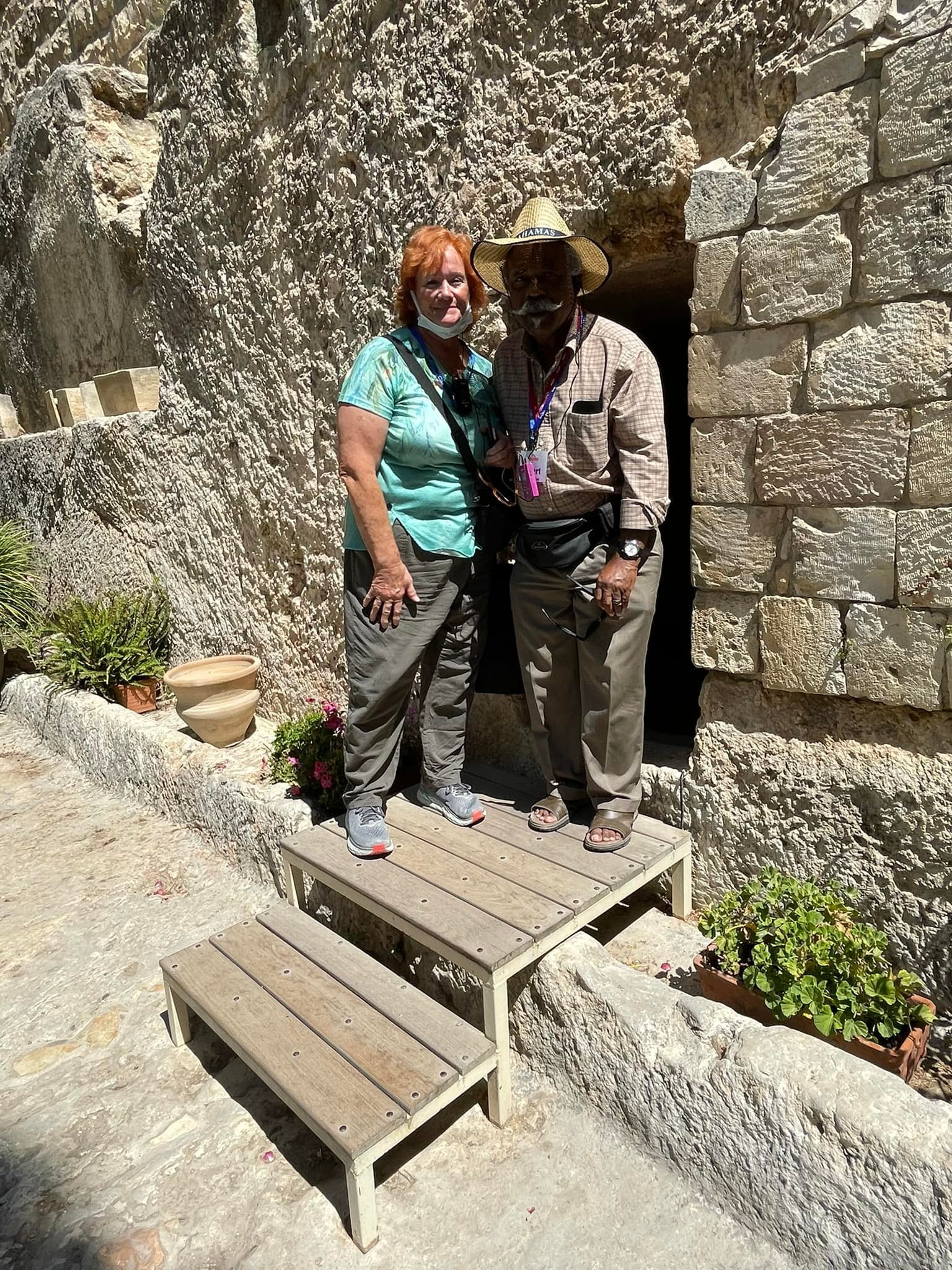
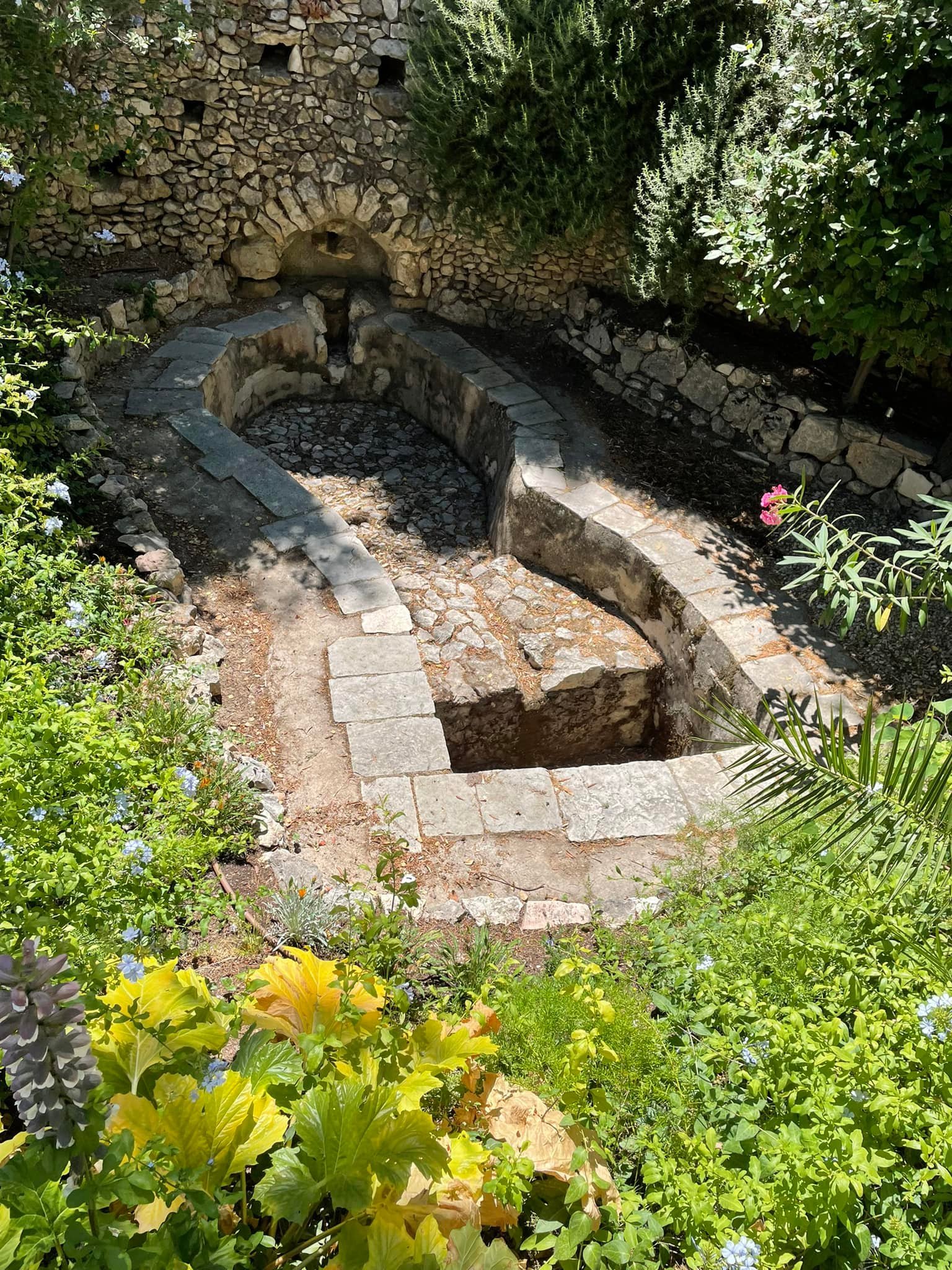
This is a wine press. Our guide explained that in their time, almost all gardens were working gardens with a crop of some sort. For example, Gesthemane has olive trees. This garden apparently had a vineyard, which would explain why Mary supposed Jesus to be the gardener.
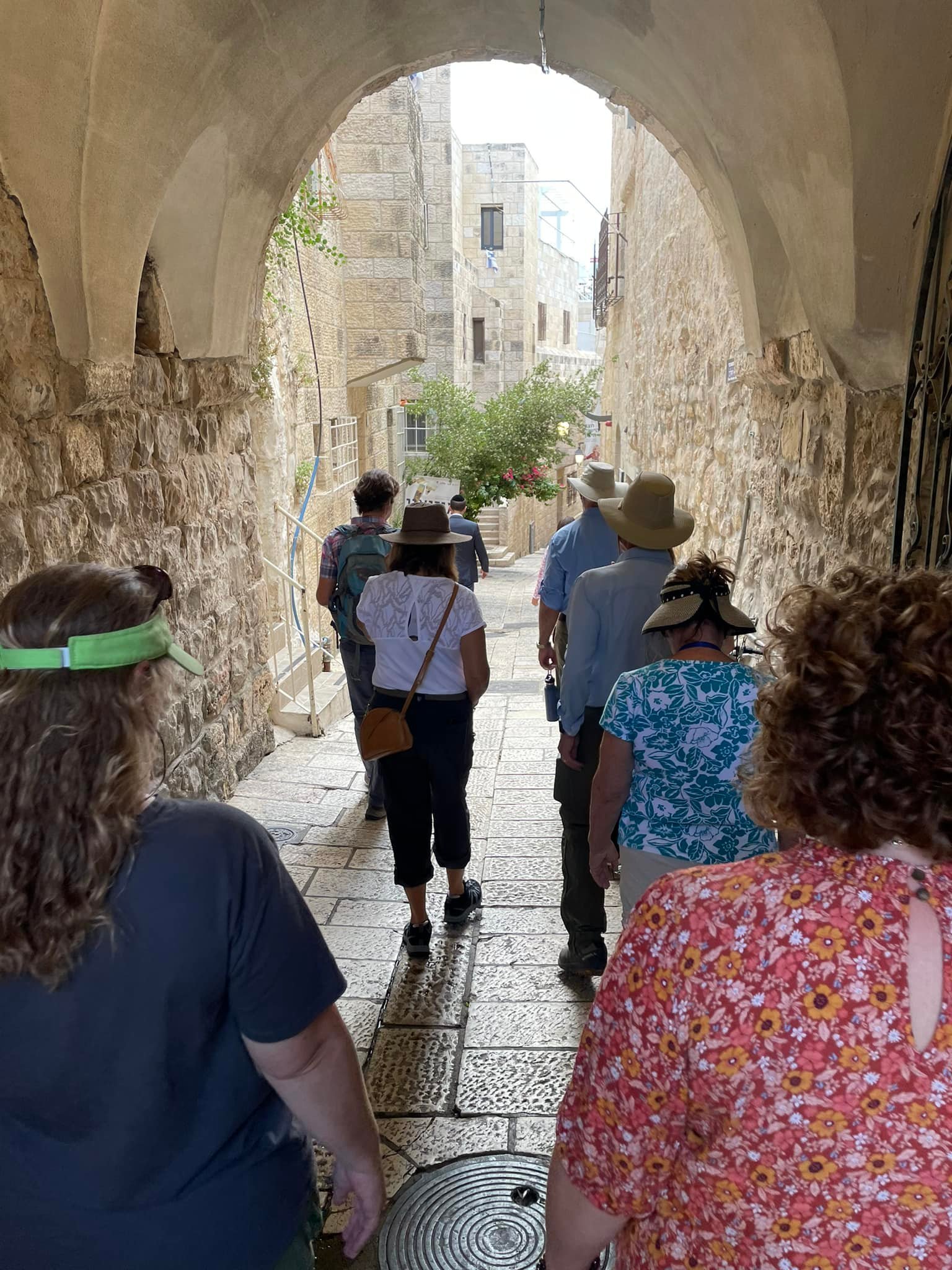
We are entering the Jewish quarter.
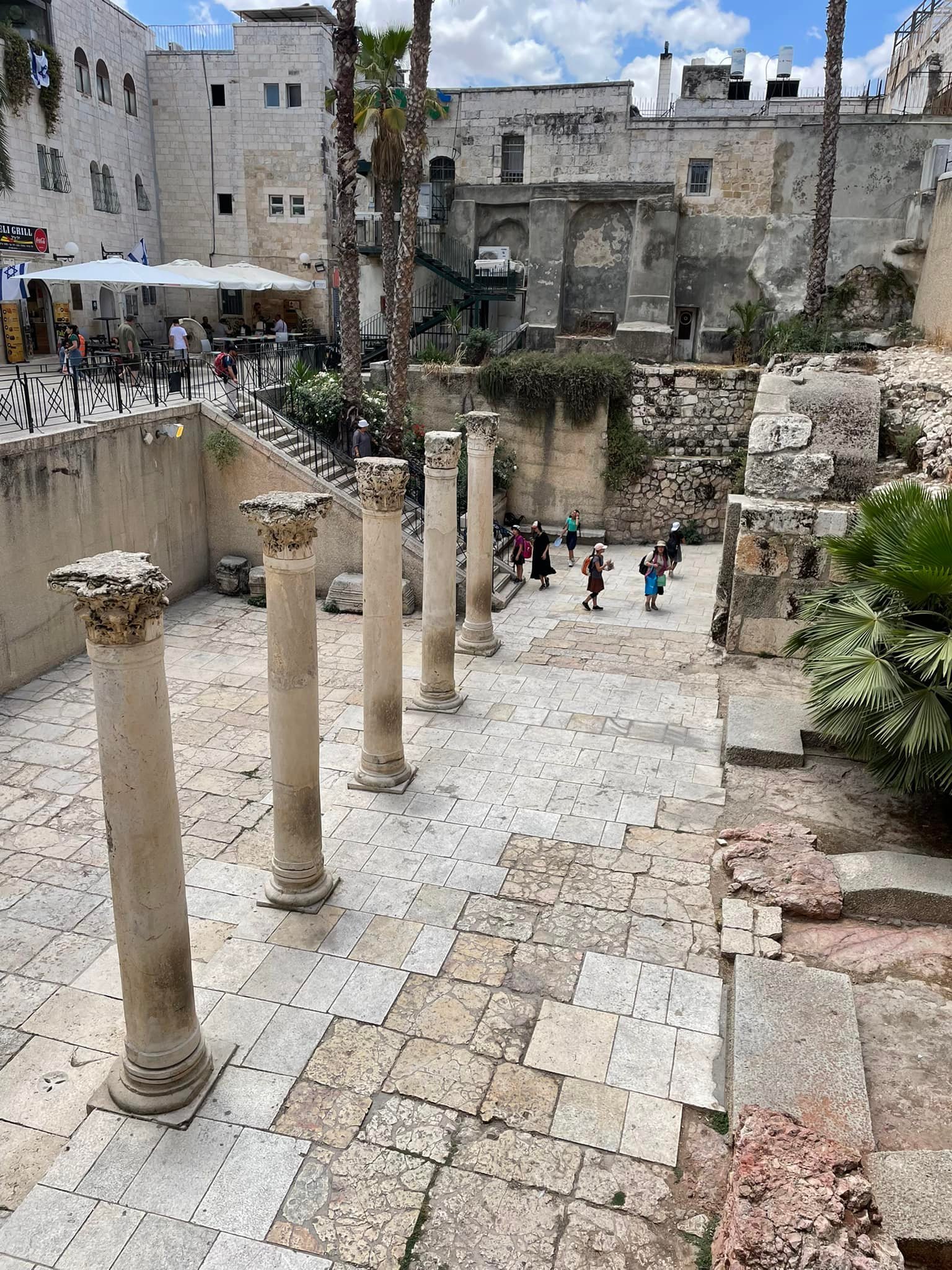
These columns are relics of the main road that ran down the center of Jerusalem from north to south in Jesus time. The road was almost 70 feet wide and had two rows of these columns.
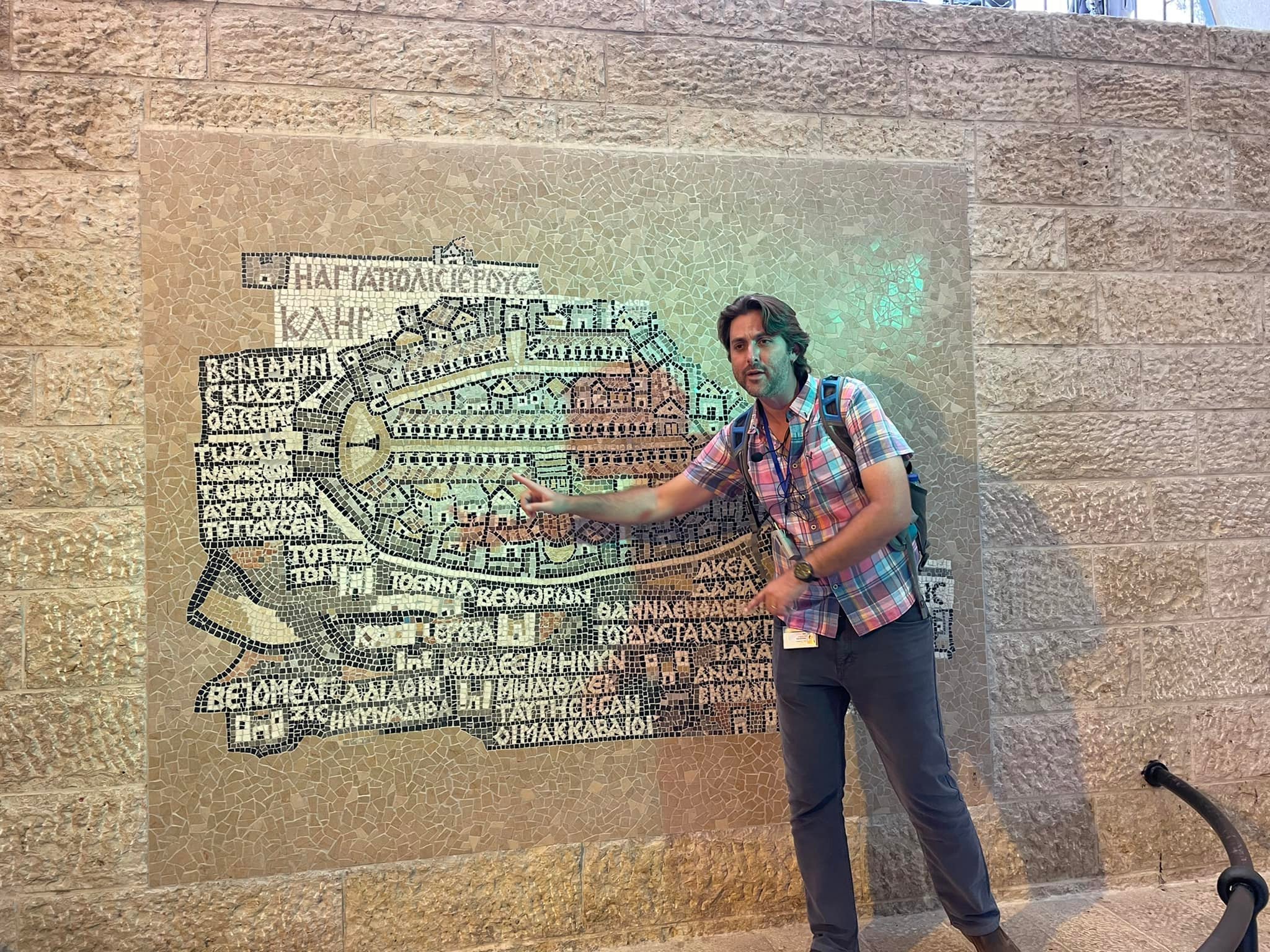
Erez shows us where the road would run.
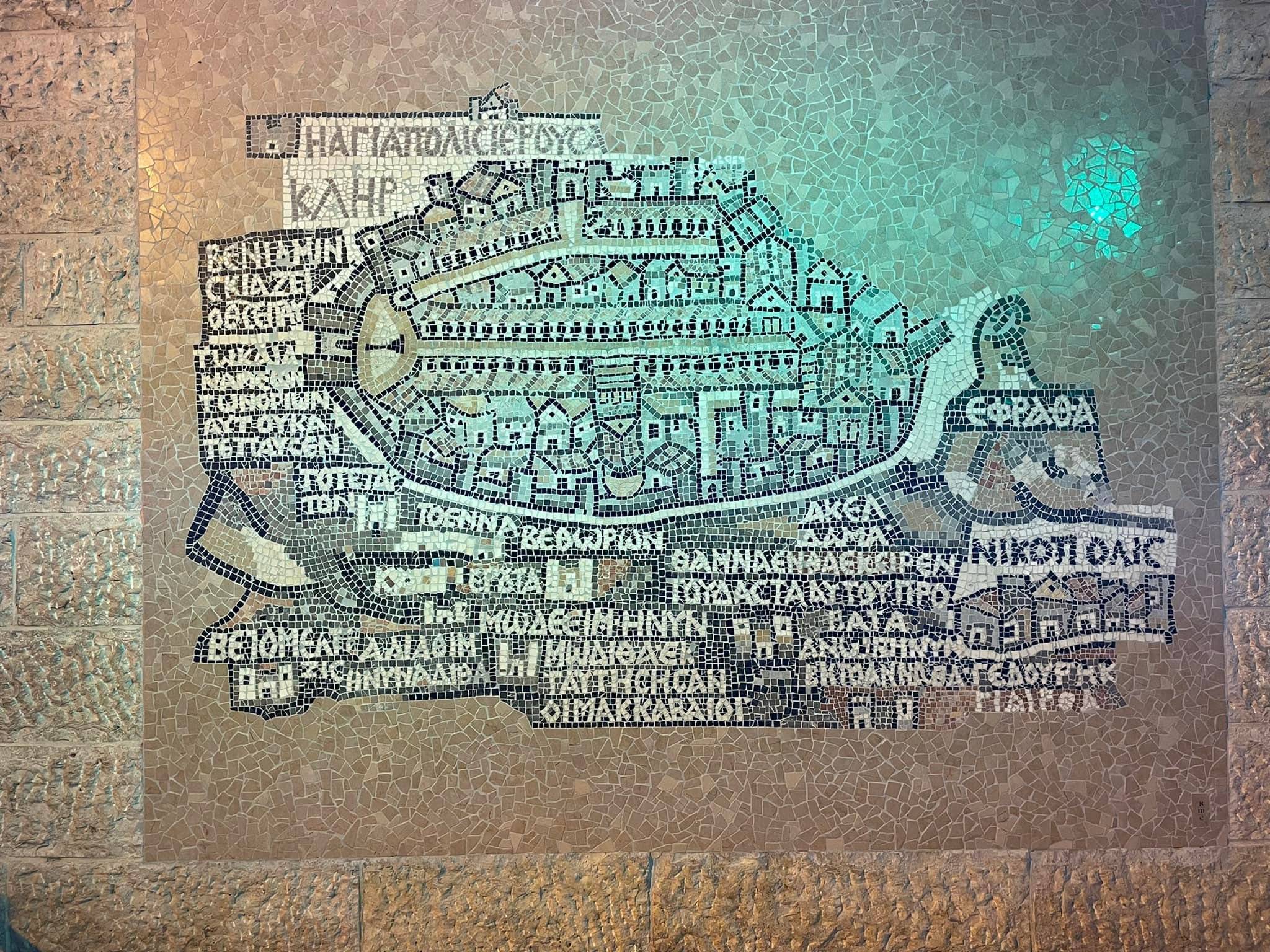
This is a rendition of the oldest map ever discovered of Jerusalem. It was found in a Byzantine monastery in Jordan, and is over 1600 years old. So the archaeologist knew exactly where to find the road.

Here is our happy crew mingling with the first century crowds on that road.
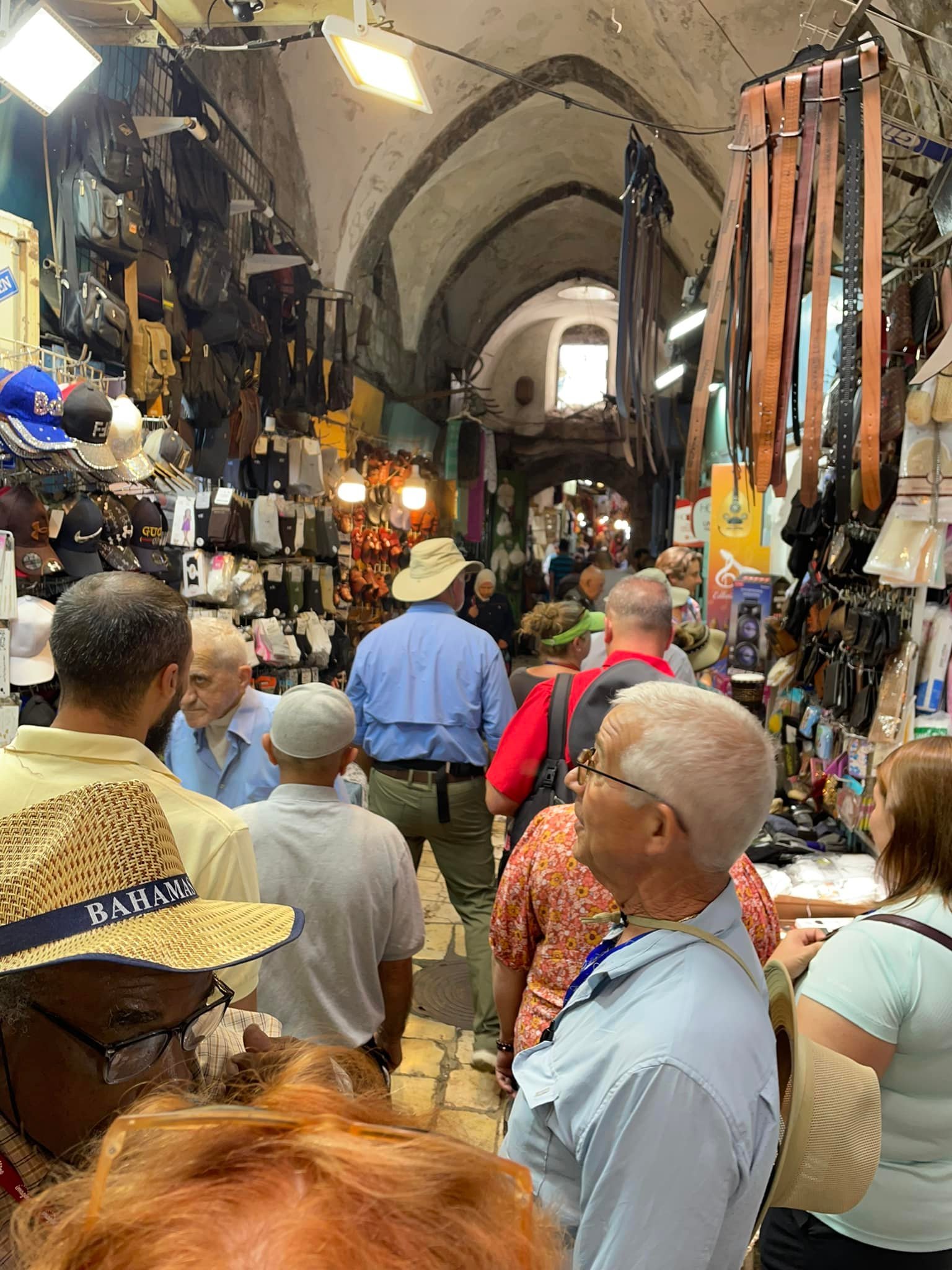
Working our way through the very narrow markets of the Jewish quarter toward the Christian quarter. By the way, that doesn’t mean that only Jews live in one quarter and Christians in another. Designations have to do with where the church is and the synagogues are and so forth.
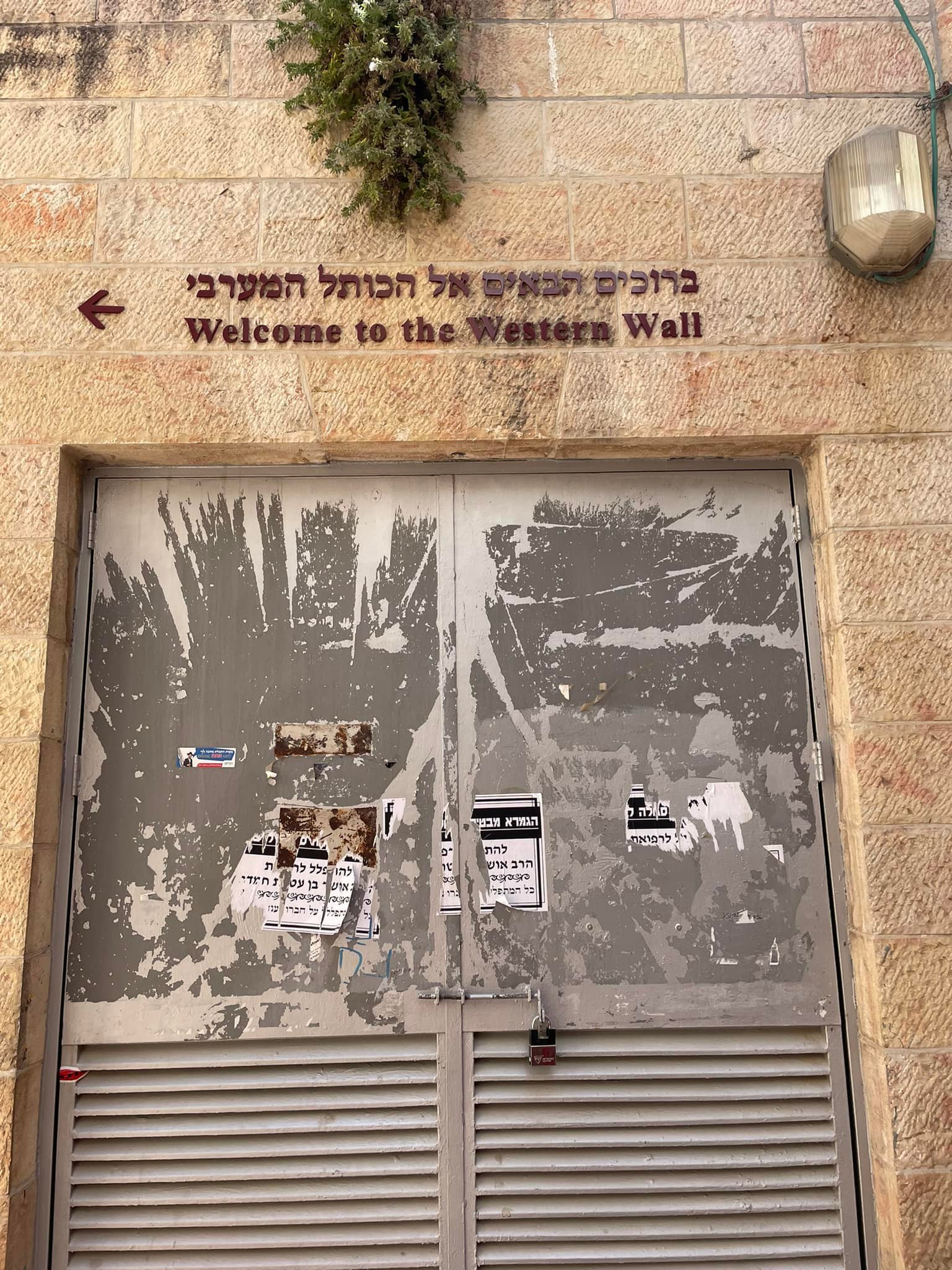
Almost to the Western Wall!
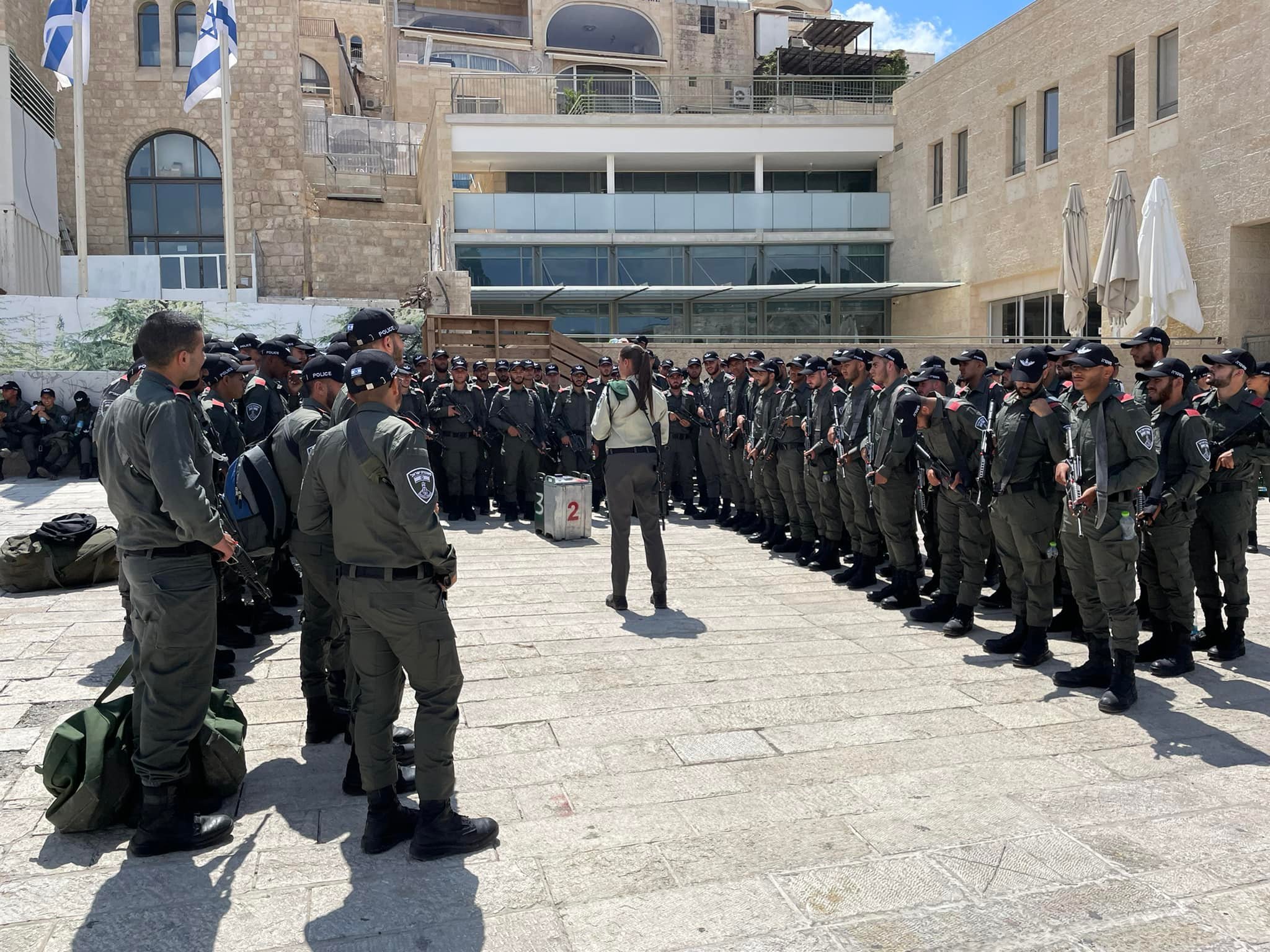
We happened to be there at the same time they were inducting a large number of recruits into the Israeli army. These recruits are going to be military police. Every Israeli ,male and female, is required to serve three years in military service.
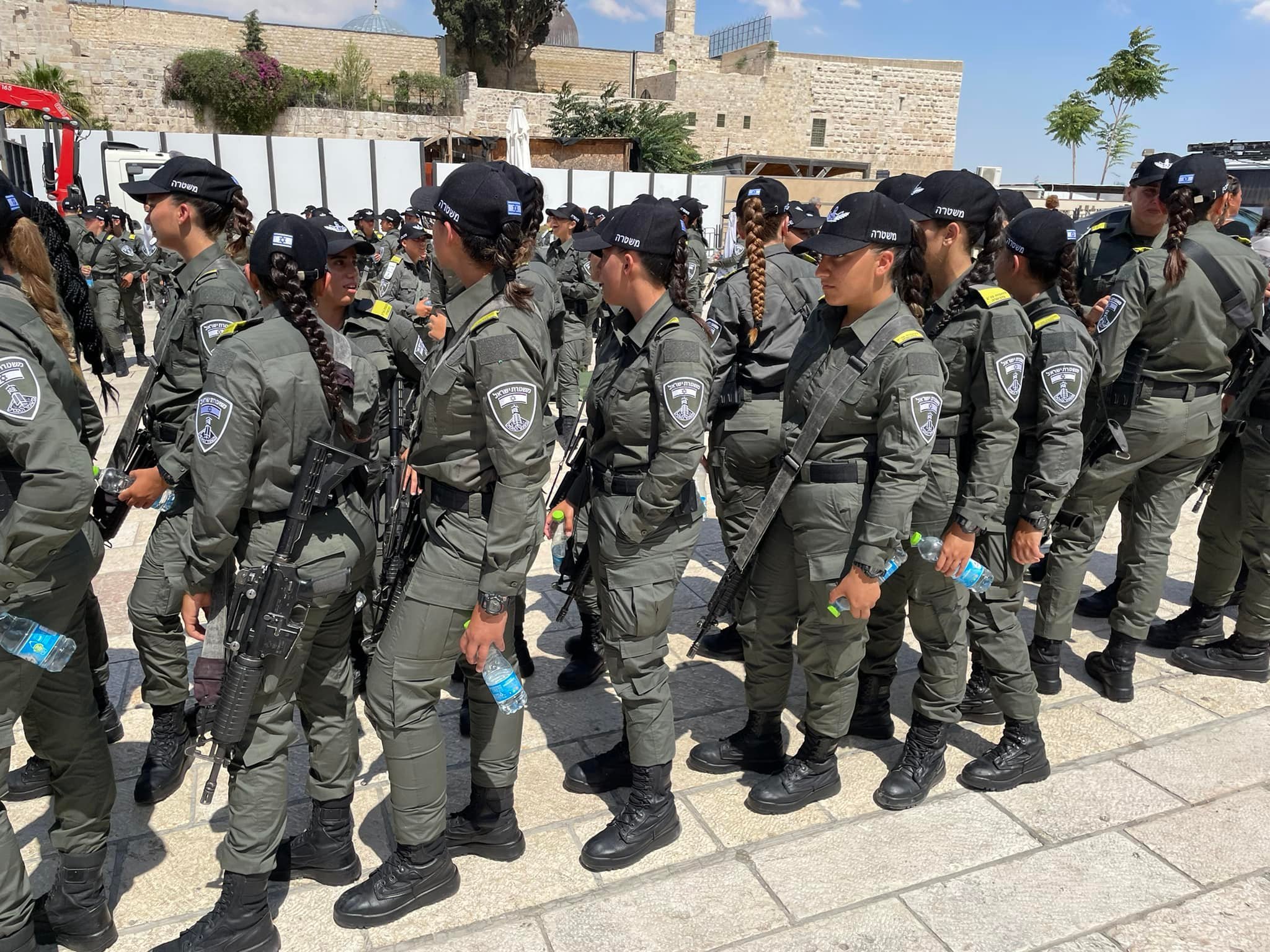
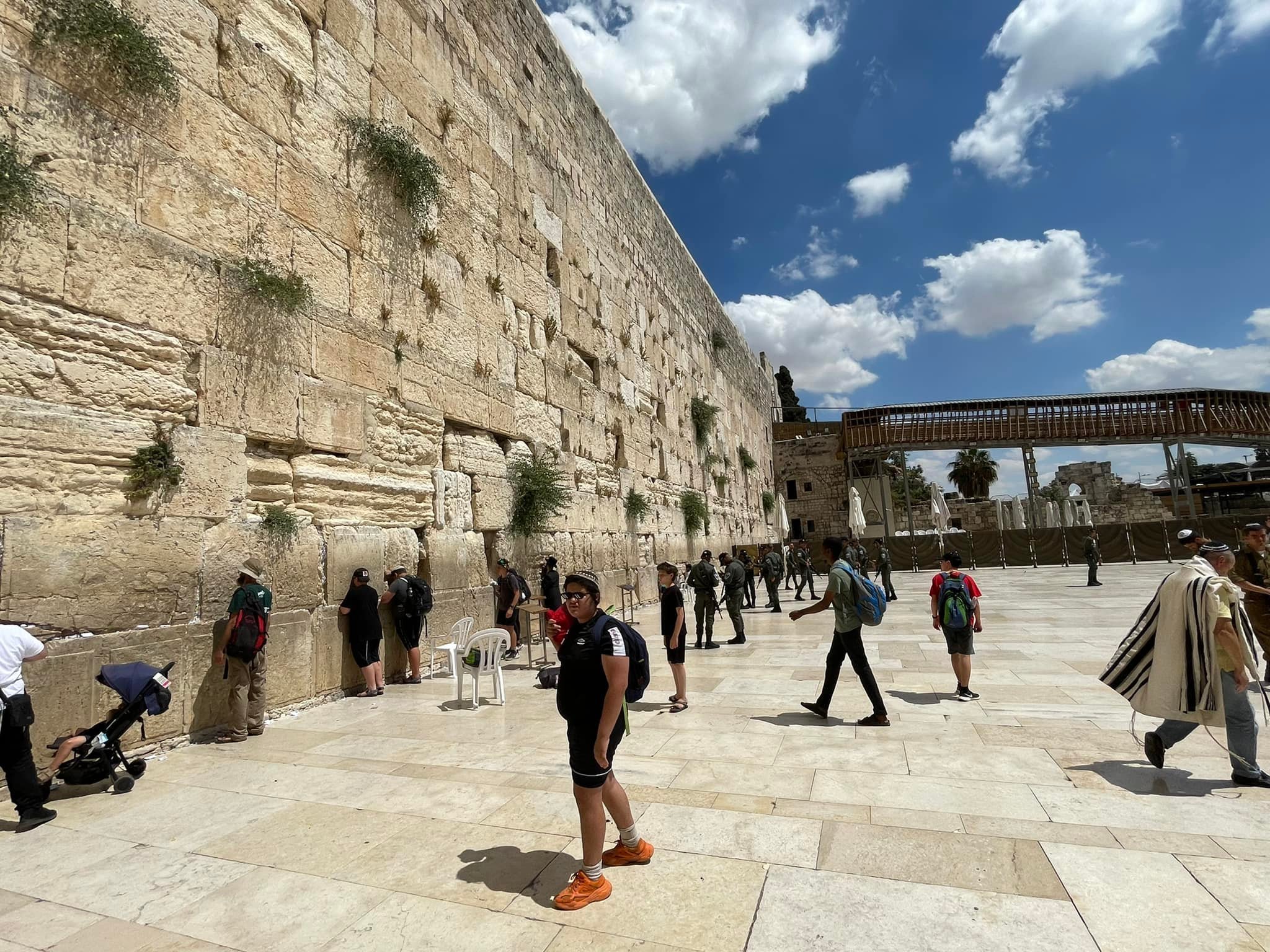
The Wailing Wall. It is called that because the Jews come there to pray for the restoration of the temple. The stones are part of the retaining wall for the foundation of the Temple Mount. The first seven layers are from Herod the Great’s time. The upper layers are from either Byzantine or Ottoman eras.
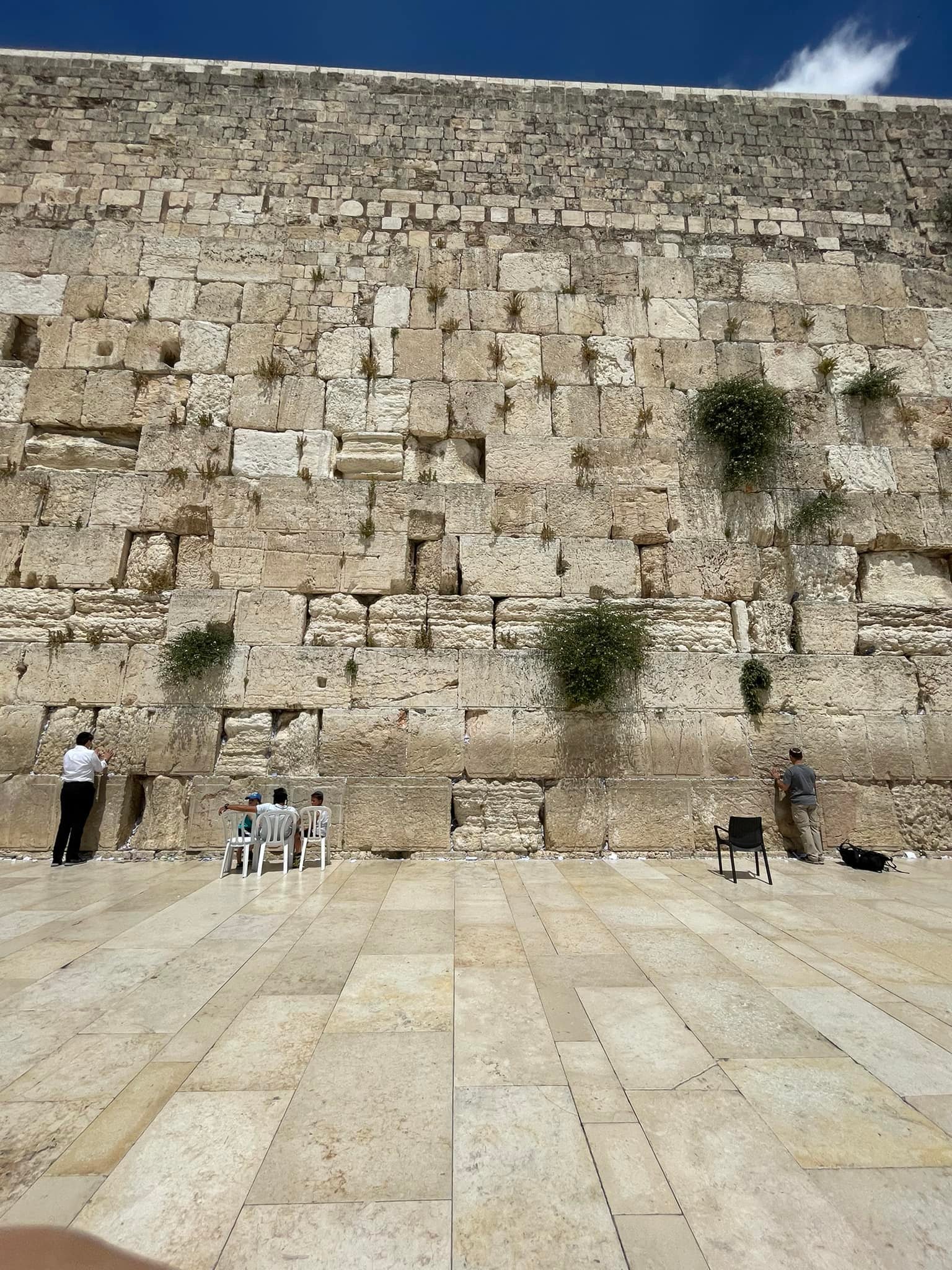
I’m honing in on the spot where I’m going to pray. And I’ve written prayers down on small pieces of paper to stuff into the cracks between the stones. About once a month, they gather up the notes that are stuck in there and bury them on the Mount of Olives.

Looking up from the spot where I placed my prayers and prayed them.
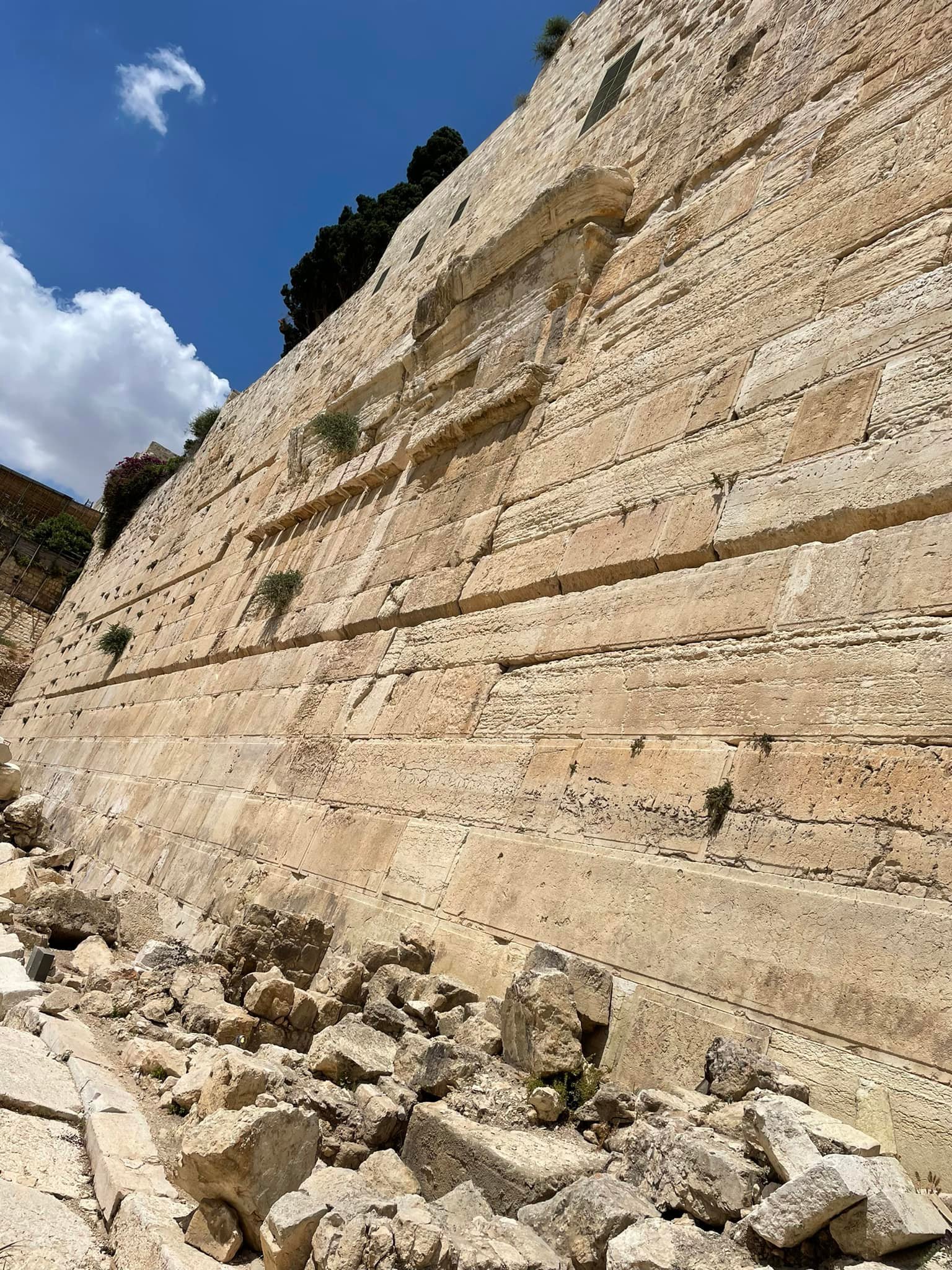
When they began to excavate this section in the 1920s, that cornice up above was nearly at ground level.
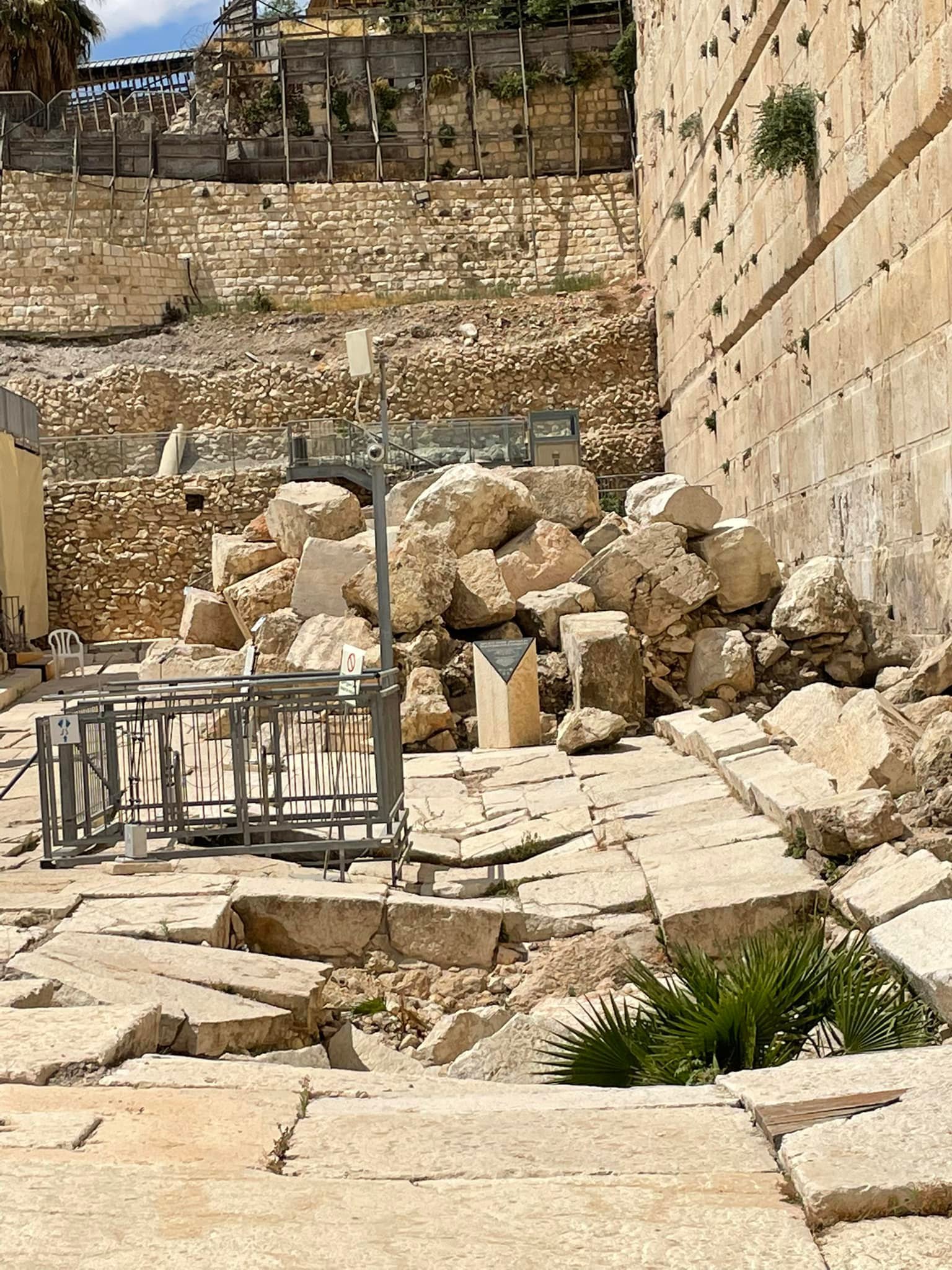
Jesus told his disciples that the temple would be destroyed to the point where not one stone was left upon another. That happened, and these are stones that were thrown down from the top of the wall. Not one is left upon another. And these are all from the Temple.
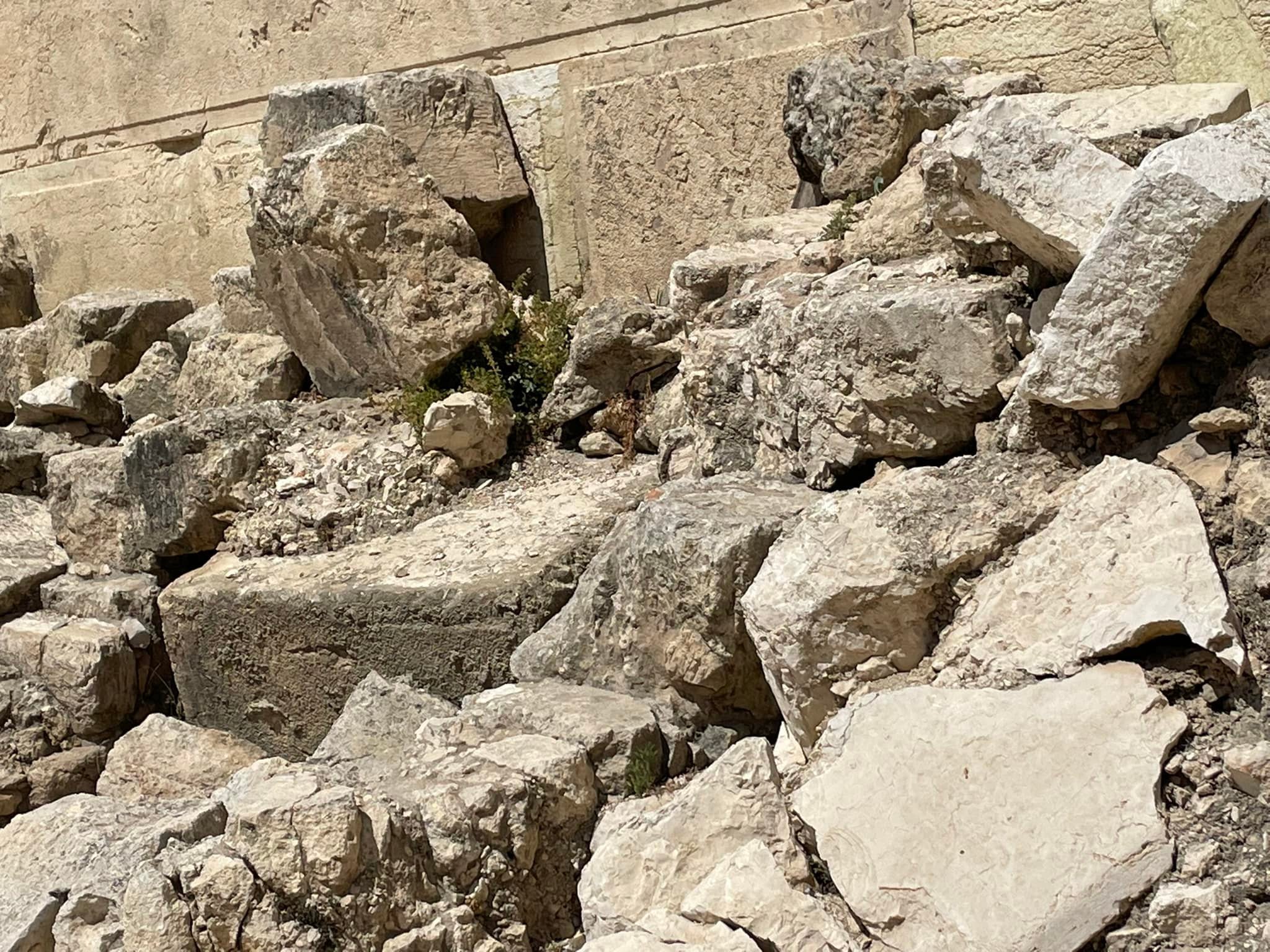
The stones bear the scorch marks of the fires that were burning when the Temple was destroyed. Of course, they were able to carbon date the scorch marks back to the first century A.D.

The last stone they found was the first one that was thrown down, the chief corner stone. We saw the actual stone in the museum yesterday, this is a replica that is kept on the actual site.
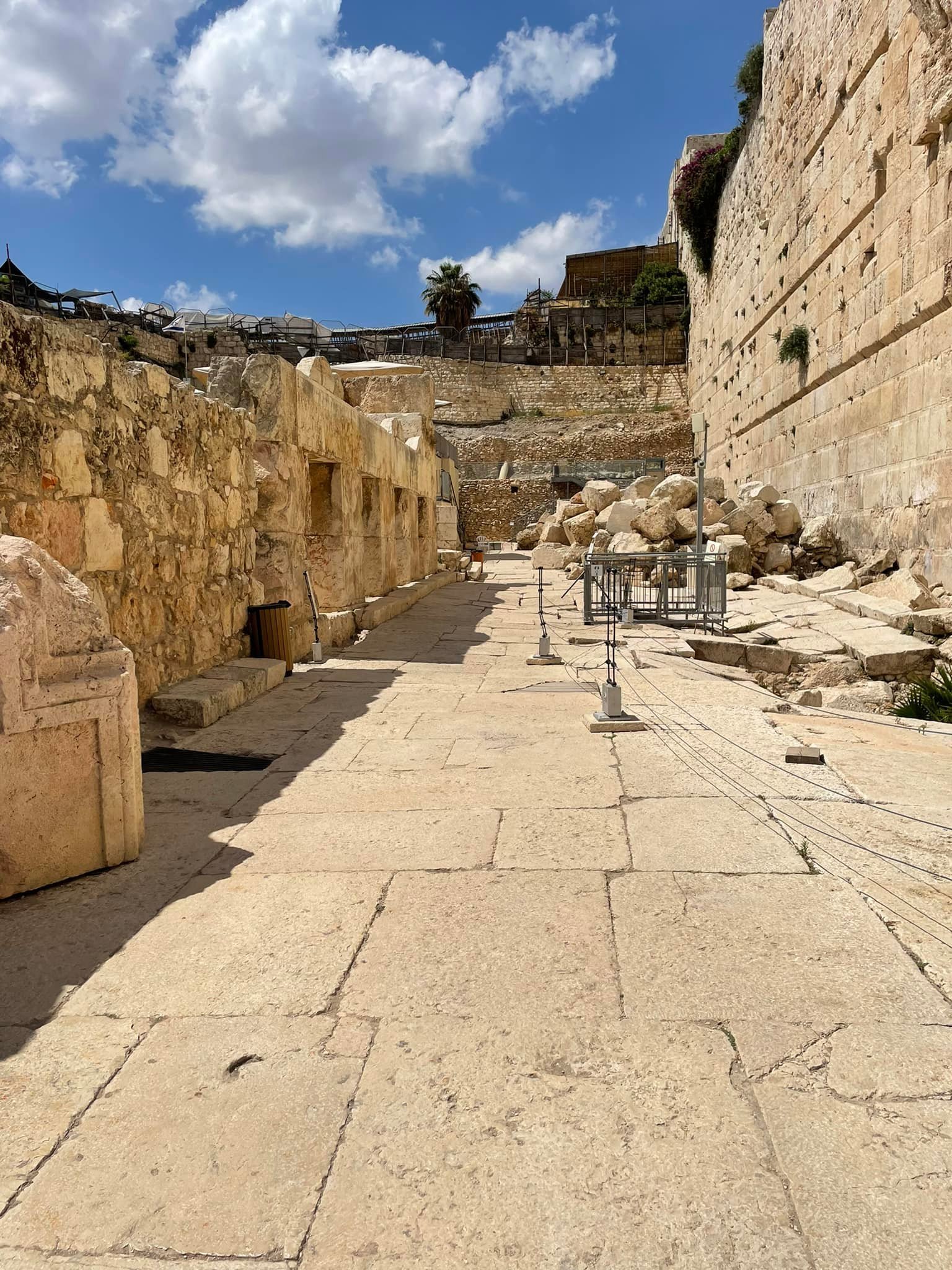
This is a main approach to the temple with market places along the way, as you can see in the arches on the left. Here again is a path that Jesus and his disciples definitely walked.
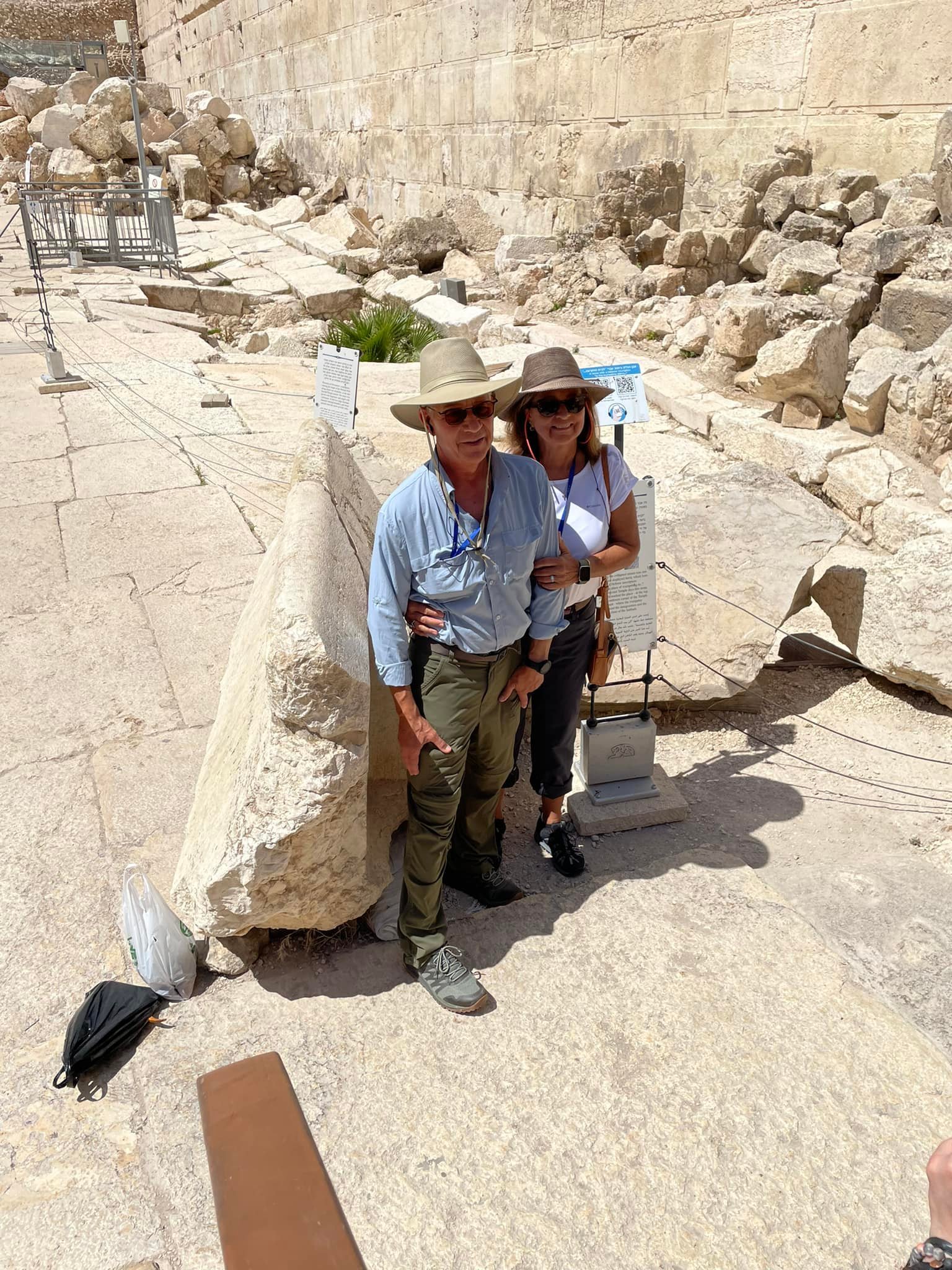
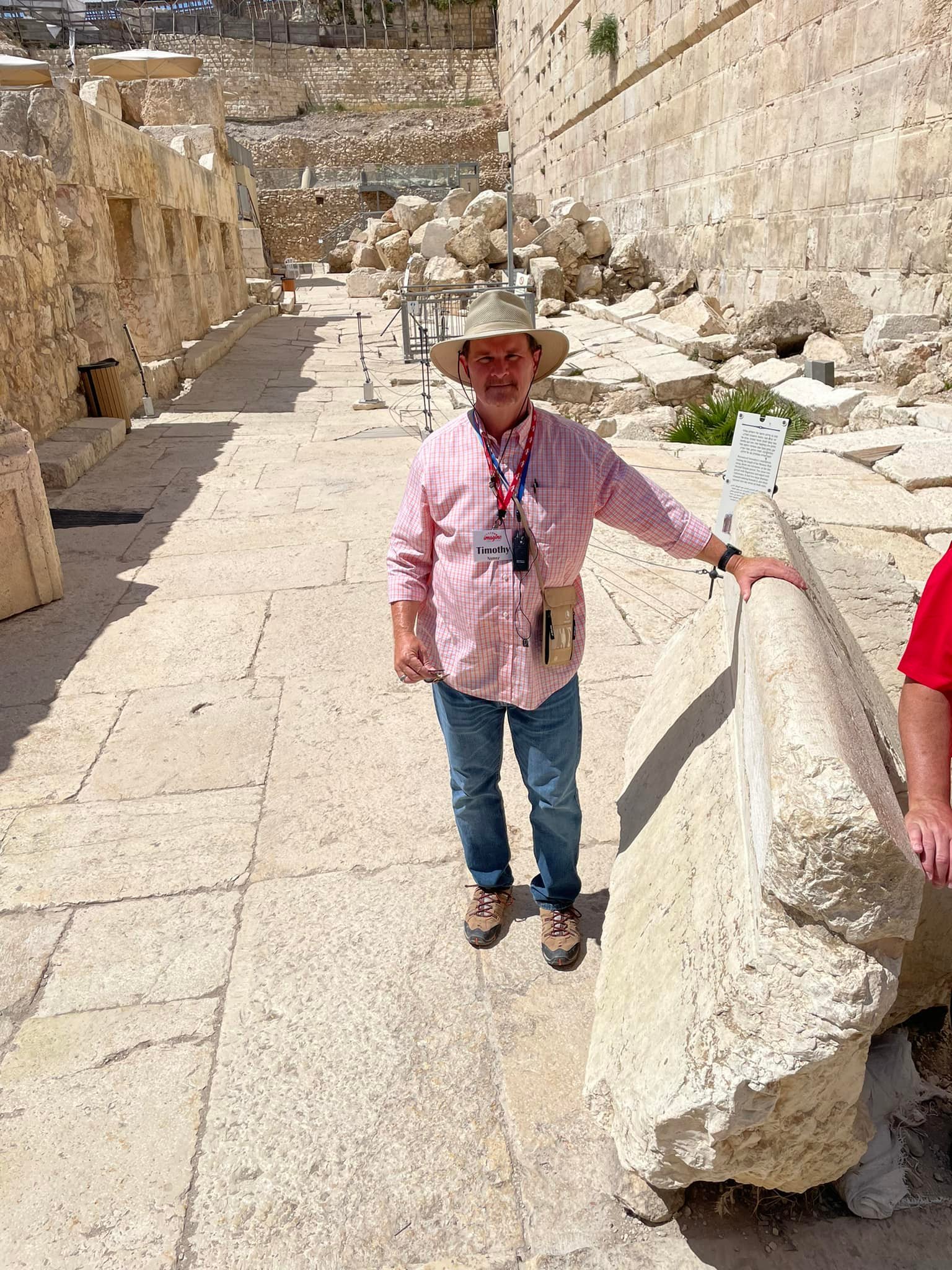
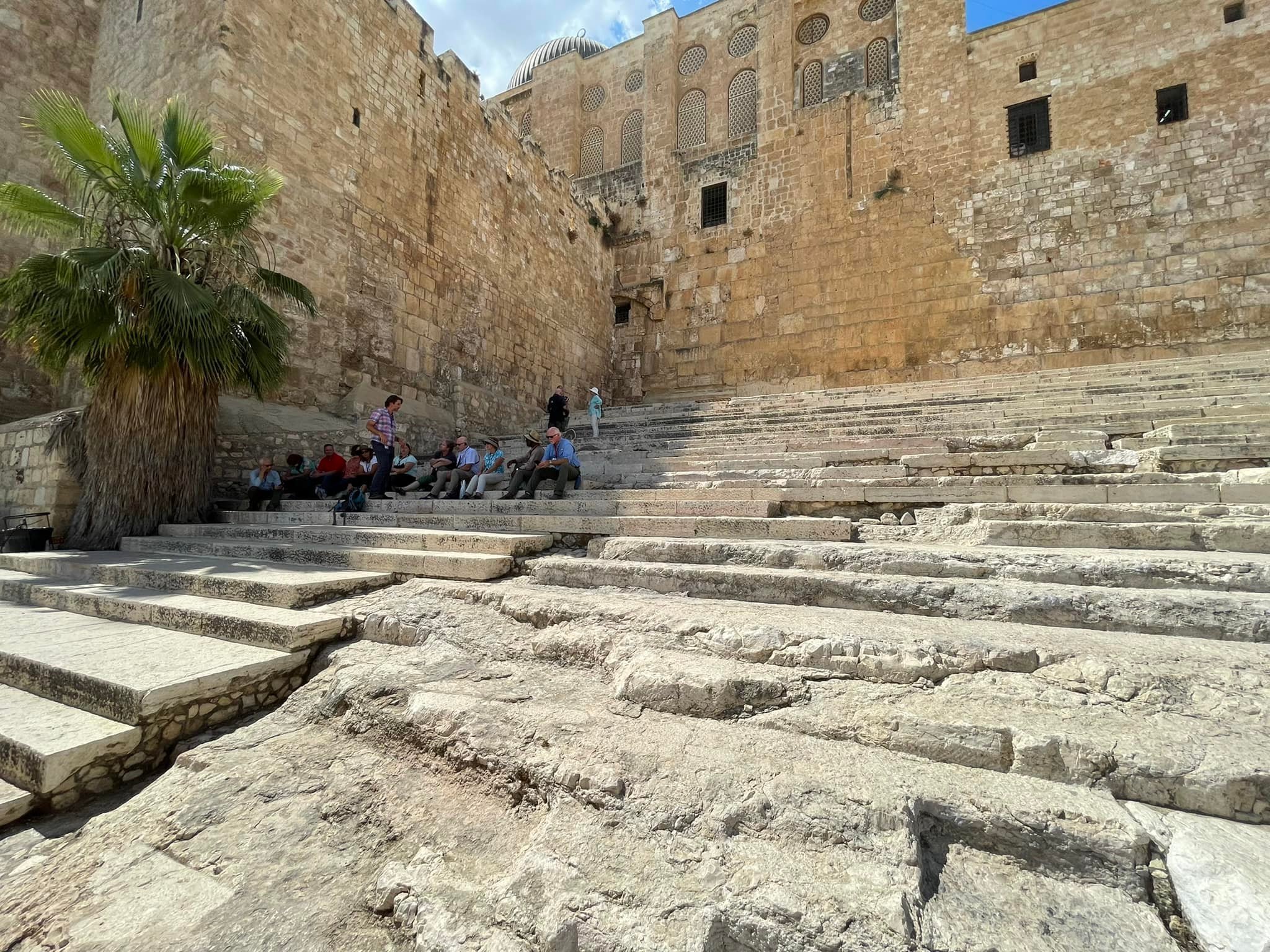
These steps are almost certainly where Peter preached in Acts 4:14-41, The day of Pentecost, when more than 3000 were baptized. In a moment I’ll show you why we know that.

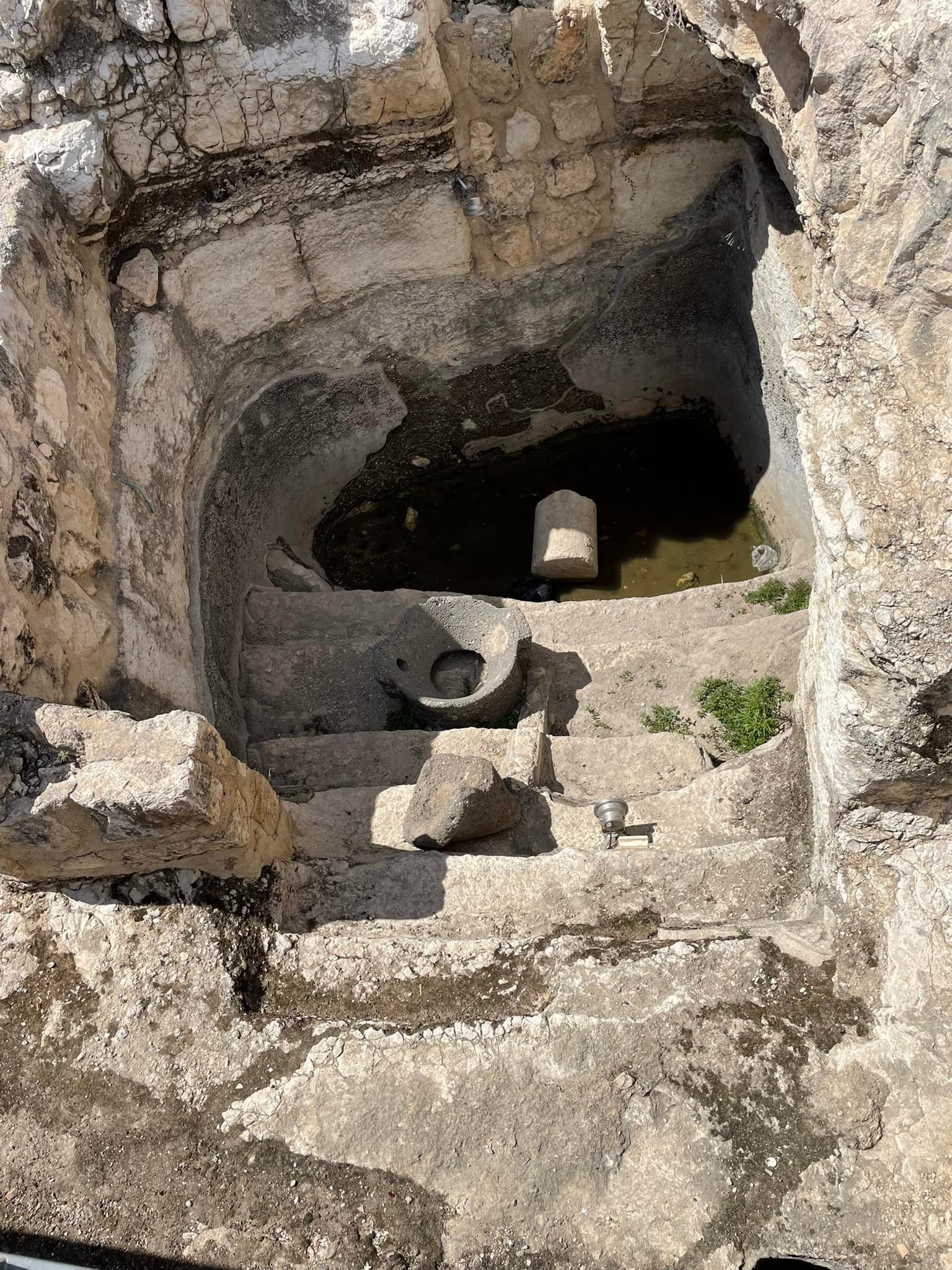
Adjacent to the steps is this baptismal font. Imagine it a good bit more full, with clear water. Note the steps; they have a dividing wall down the middle. This was so people who were impure could walk down one side, get richly bathed, then walk up the other side. This is the only place in Jerusalem where 3000 people could be reasonably baptized at once.
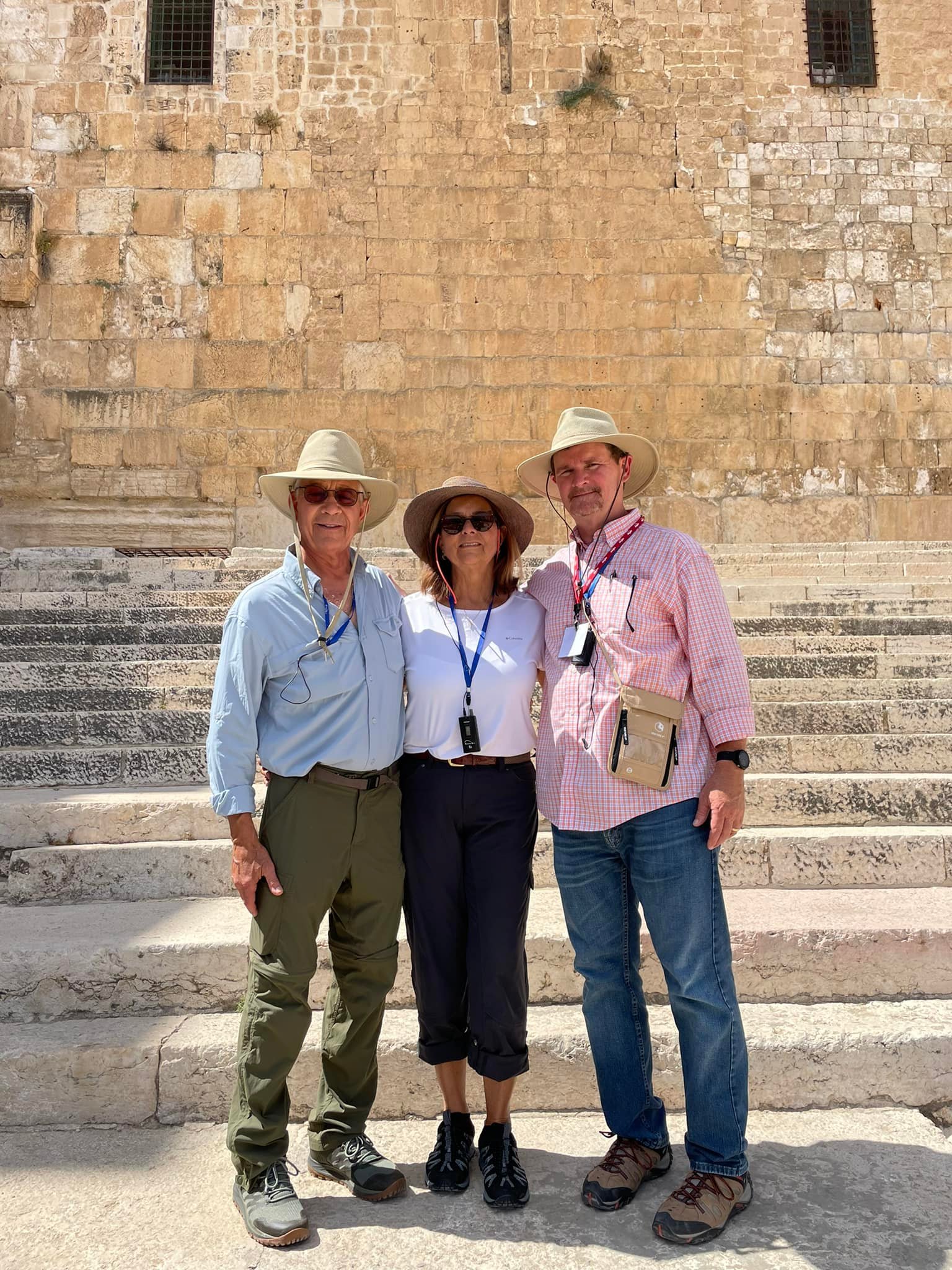

Our last night in Jerusalem, the view is stunning. It is even more stunning now that I know where I stand. Our hotel is on the north end of the Mount of Olives which is called Mount Scopus. It was from this vantage point that the 10th Roman legion scoped out the land to plan putting down the Jewish revolt in 67AD.
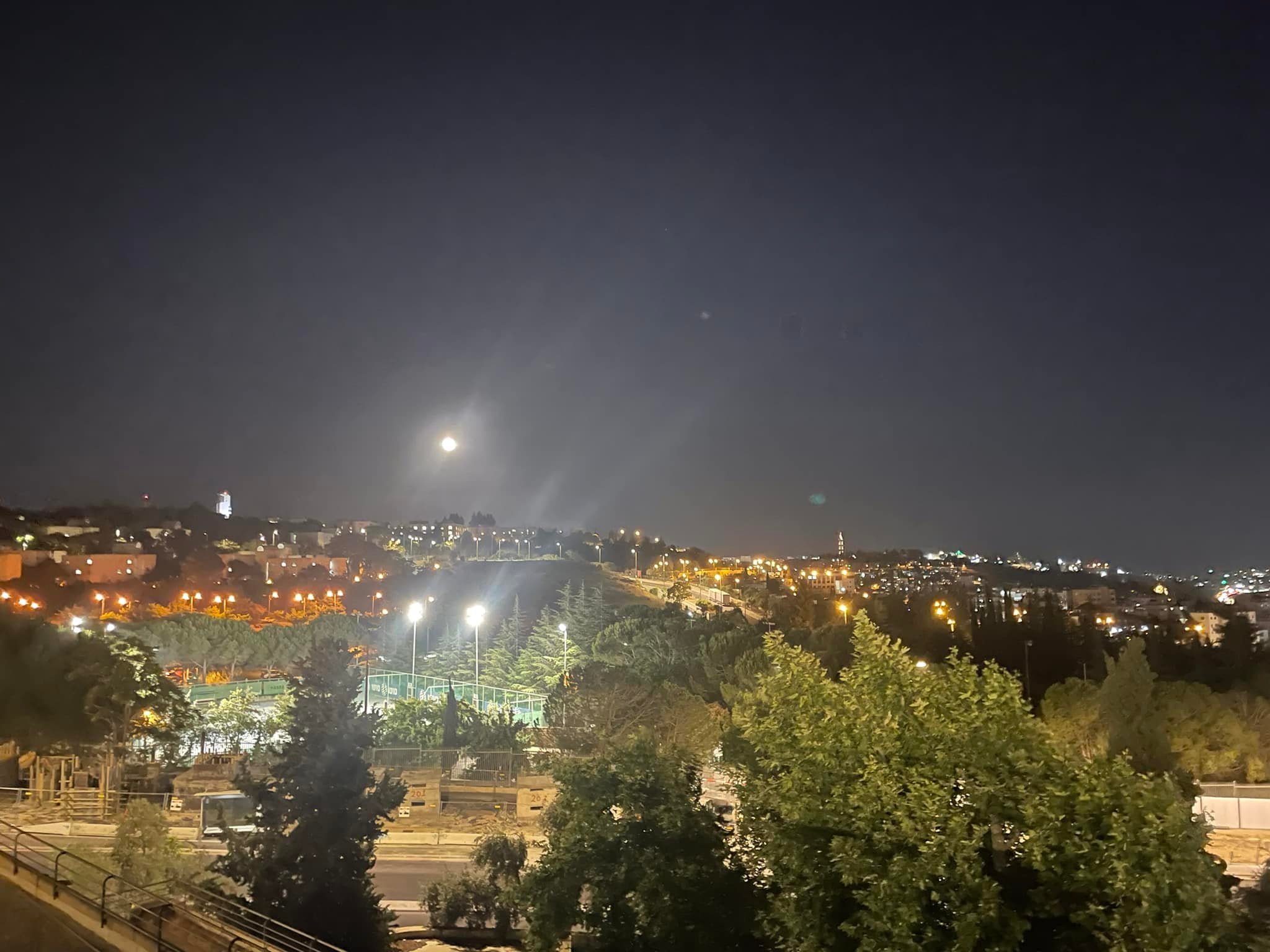
A full moon!
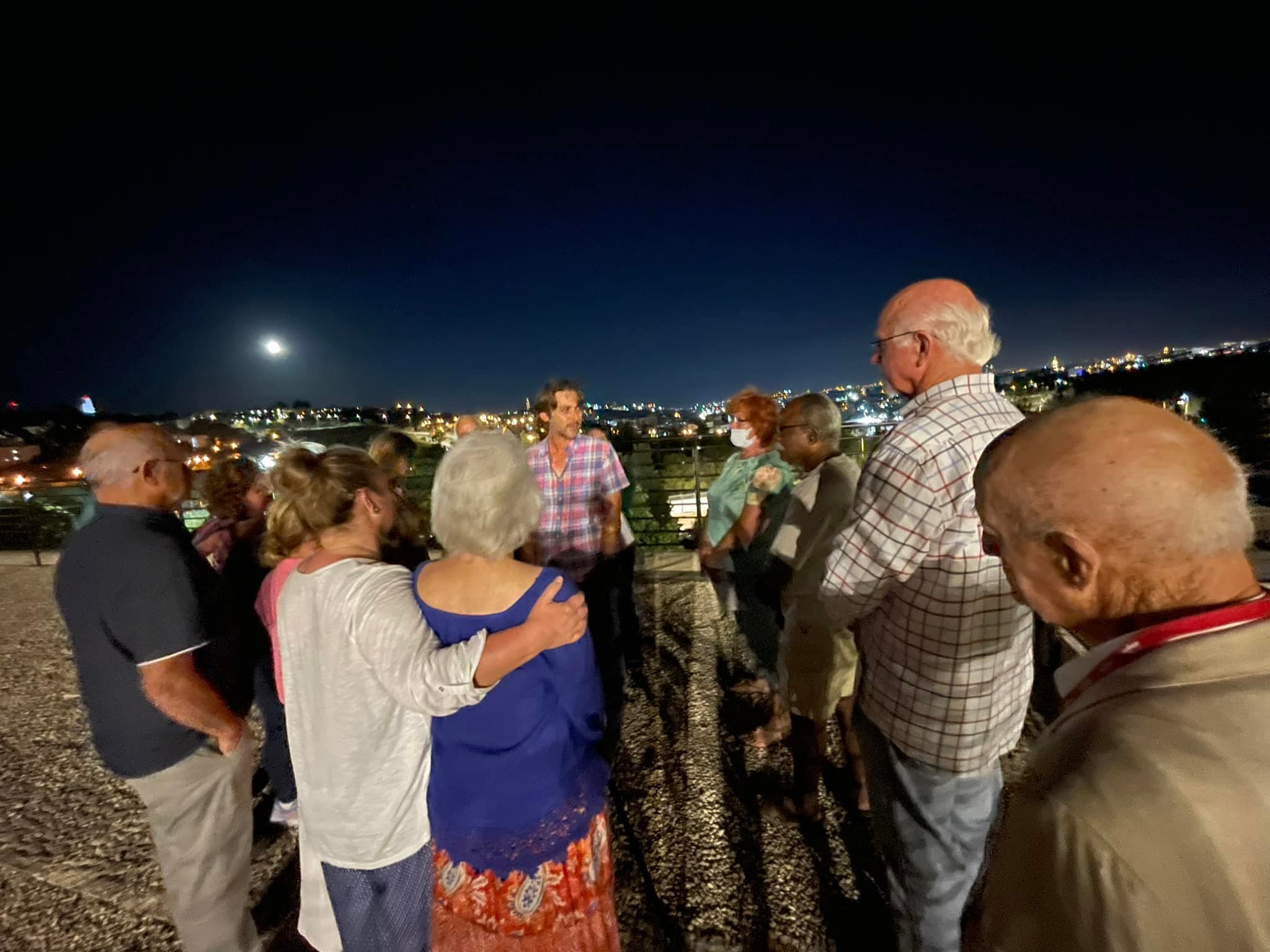
Erez encouraged us to tell Israel’s story. He read a passage from Isaiah about beating swords into plowshares (Isaiah 2:1-4). And reminded us of all we had seen of Israel’s growth by planting and cultivation. Jerusalem is truly the city where all nations come in pilgrimage to learn and deepen their faith and follow God’s ways.
Day 7: Today was a long day, spent entirely in and around the areas Jesus walked during holy week. Then we were able to see some amazing historic places that go back thousands of years. We began on the Mount of Olives, worked our way down to the Garden of Gethsemane, then to the Stations of the Cross in the city of David, then to the ruins of the city of David which is the largest archaeological dig in the world. After that, we went down into Hezekiah‘s water tunnel, all 500 yards through limestone.
One thing about old Jerusalem. Although we were in the same area all day, it is extremely hilly. We walked down the mount of olives as Jesus did. The Via Dolorosa, or Stations of the Cross, is a climb all the way up to the church of the Holy Sepulcher. Then we went down, down, down into the depths to get to Hezekiah’s water tunnel. And we wound up at the Pool of Siloam, where Jesus healed the blind man.
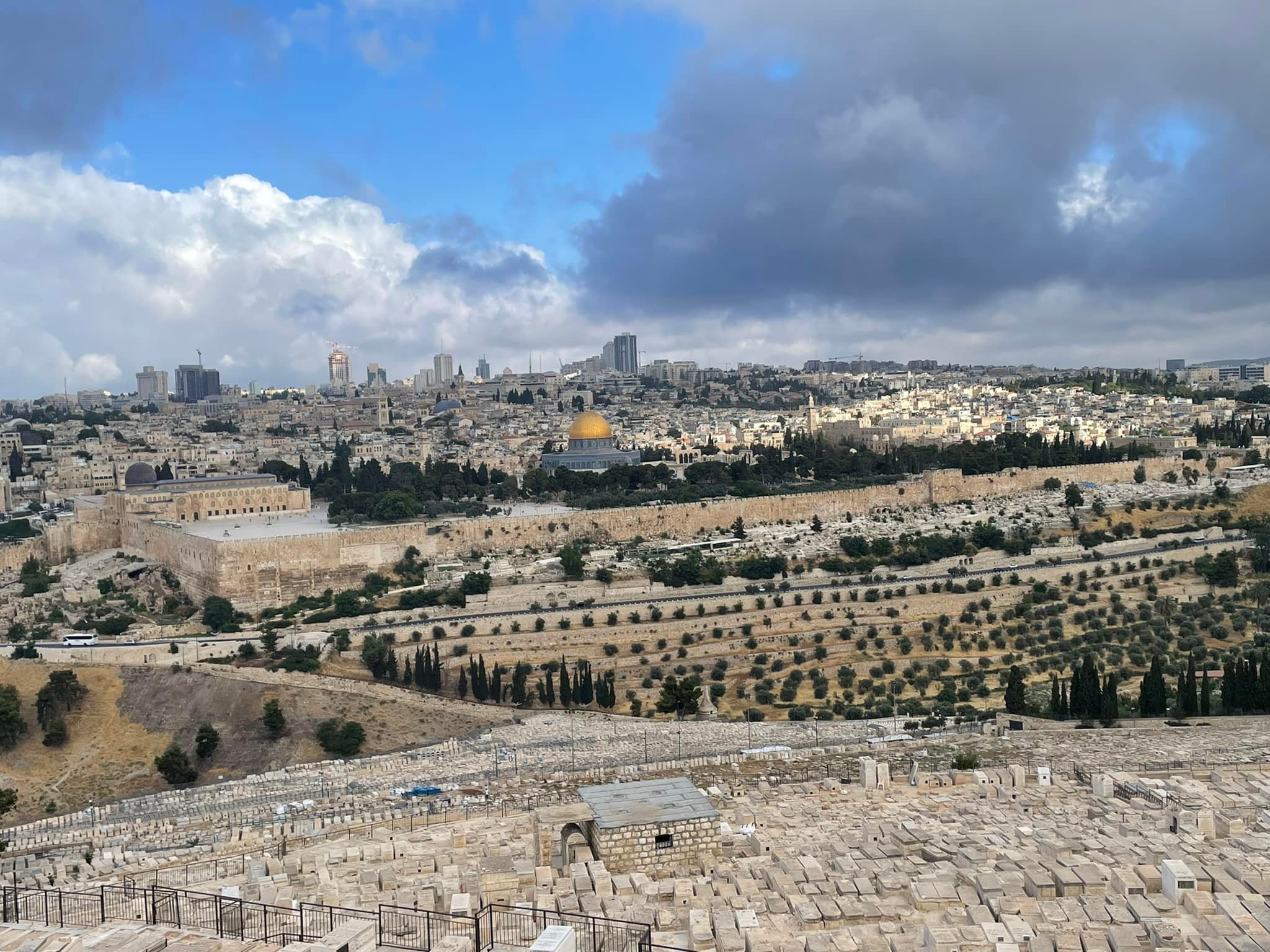
The Mount of Olives is largely a cemetery, and was in Jesus’ time as well.

And yes, there are actual olives! Lots of them.
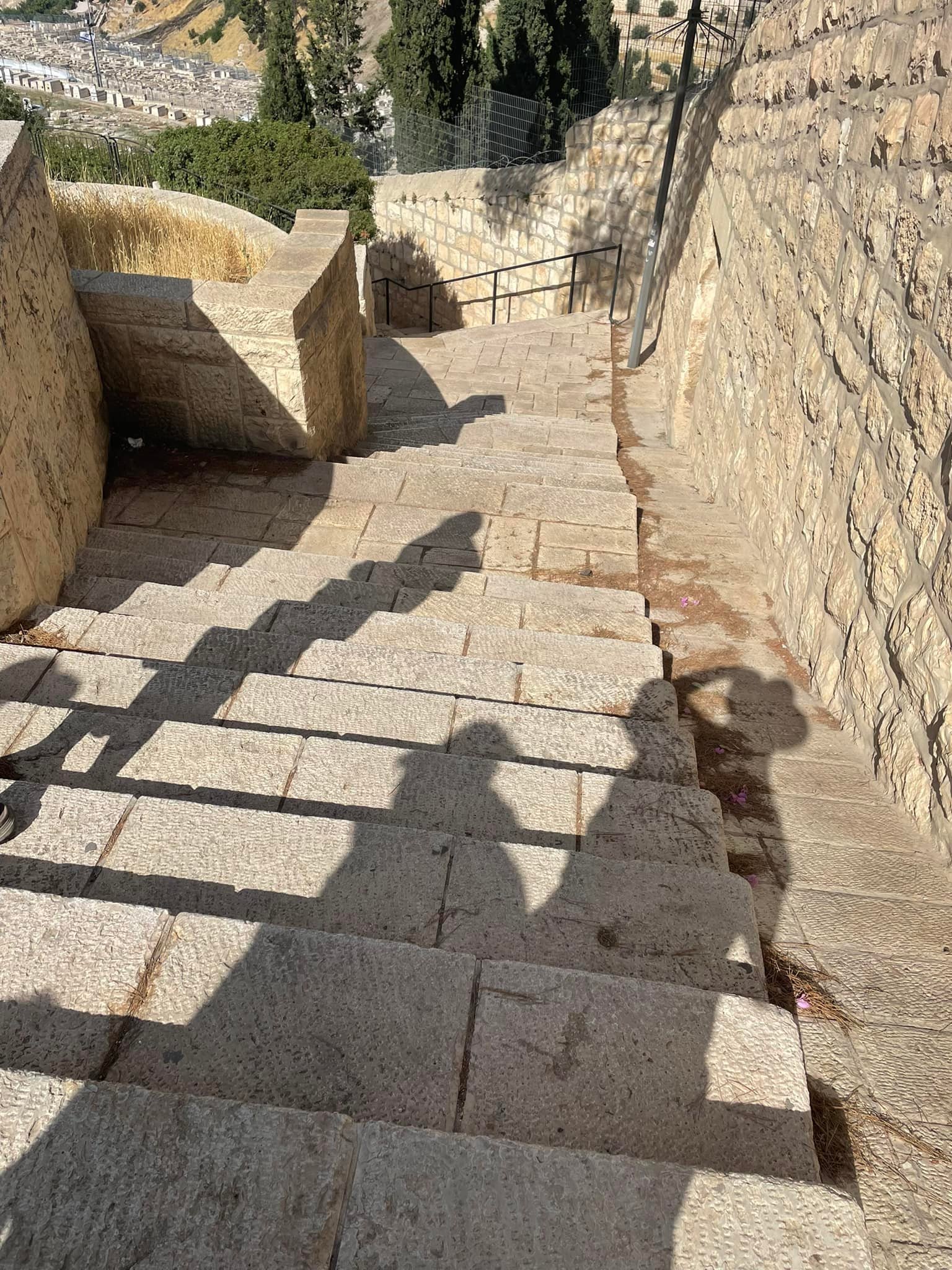
Because anything to do with death is richly unclean, the priests would walk this path which doesn’t cross any graves so that they could remain pure while passing through. Jesus very likely took this path or one very much like it because there are no graves on it to this day.
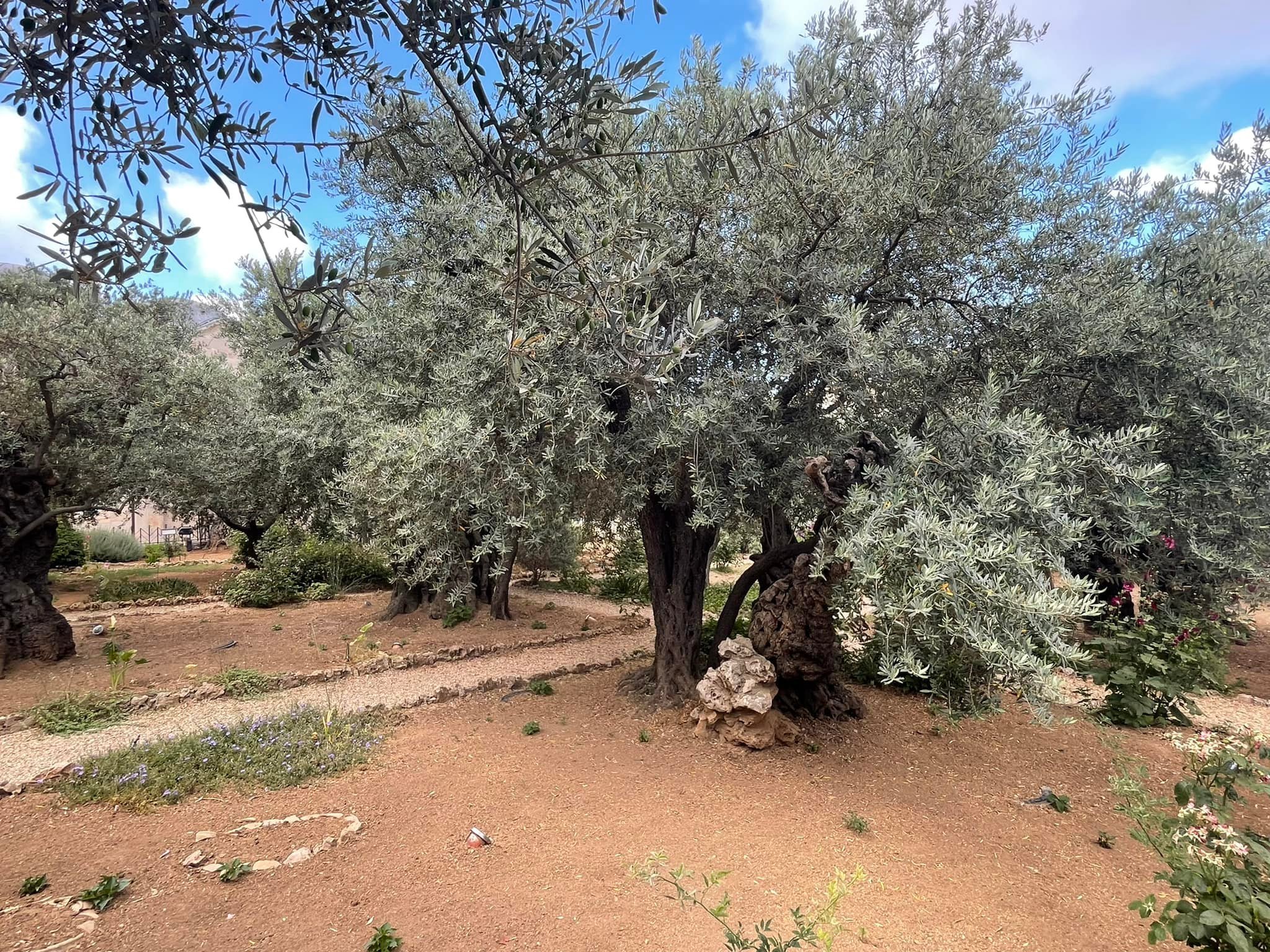
Gethsemane is as peaceful and beautiful as you might imagine. Ancient olive trees, rosemary, and aloe are everywhere.

We have no idea how old these trees are but some of them look like they must be ancient. All olive trees continually regenerate so it is quite possible to have them last out of the same root for 1000 or 2000 years or more. There are places in Greece and Crete they claim to have 4000 year old olive trees.
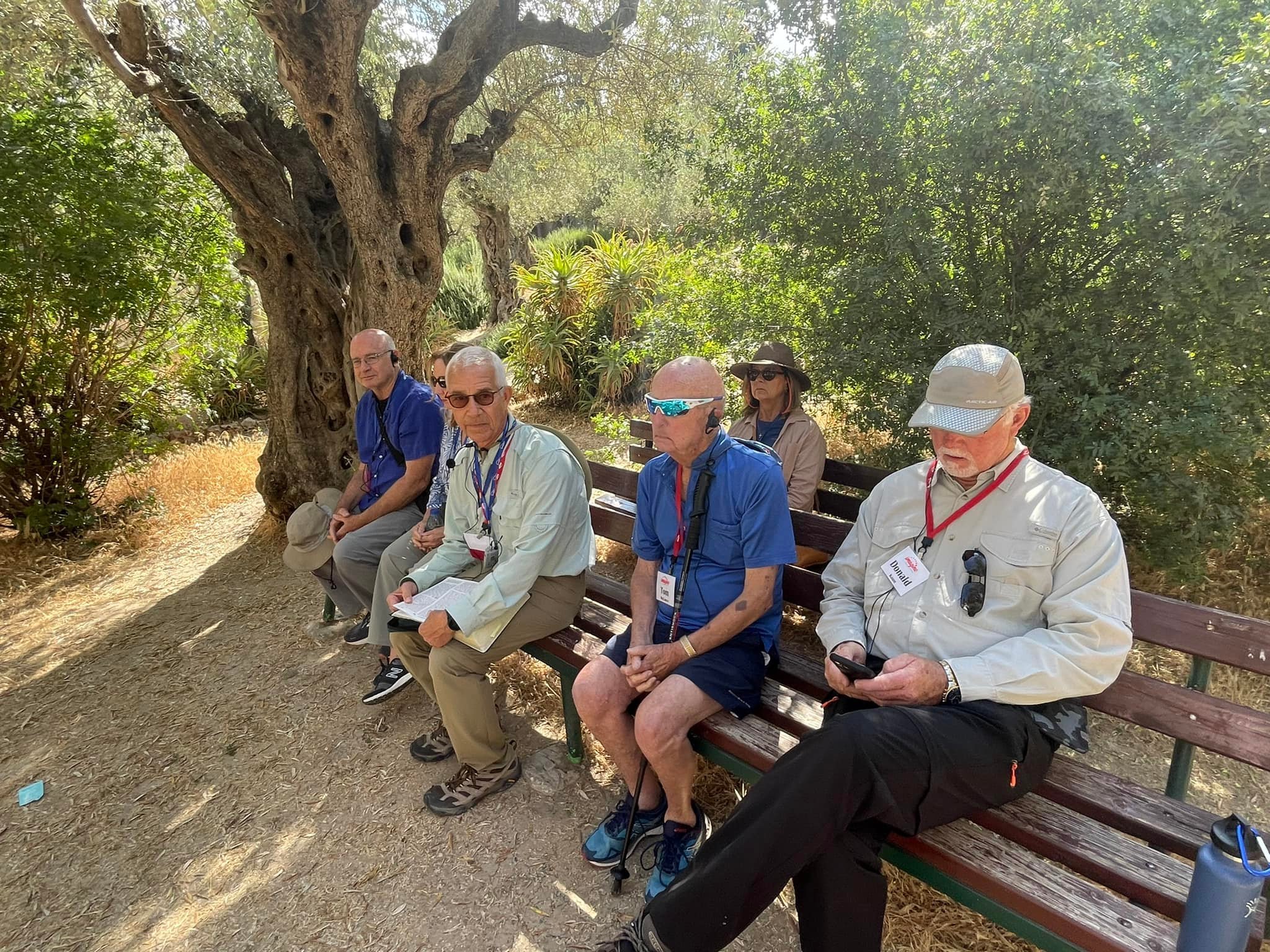
Then our beloved deacon John Motis read John chapter 18 which recounts Jesus in Gethsemane and onto his trial.
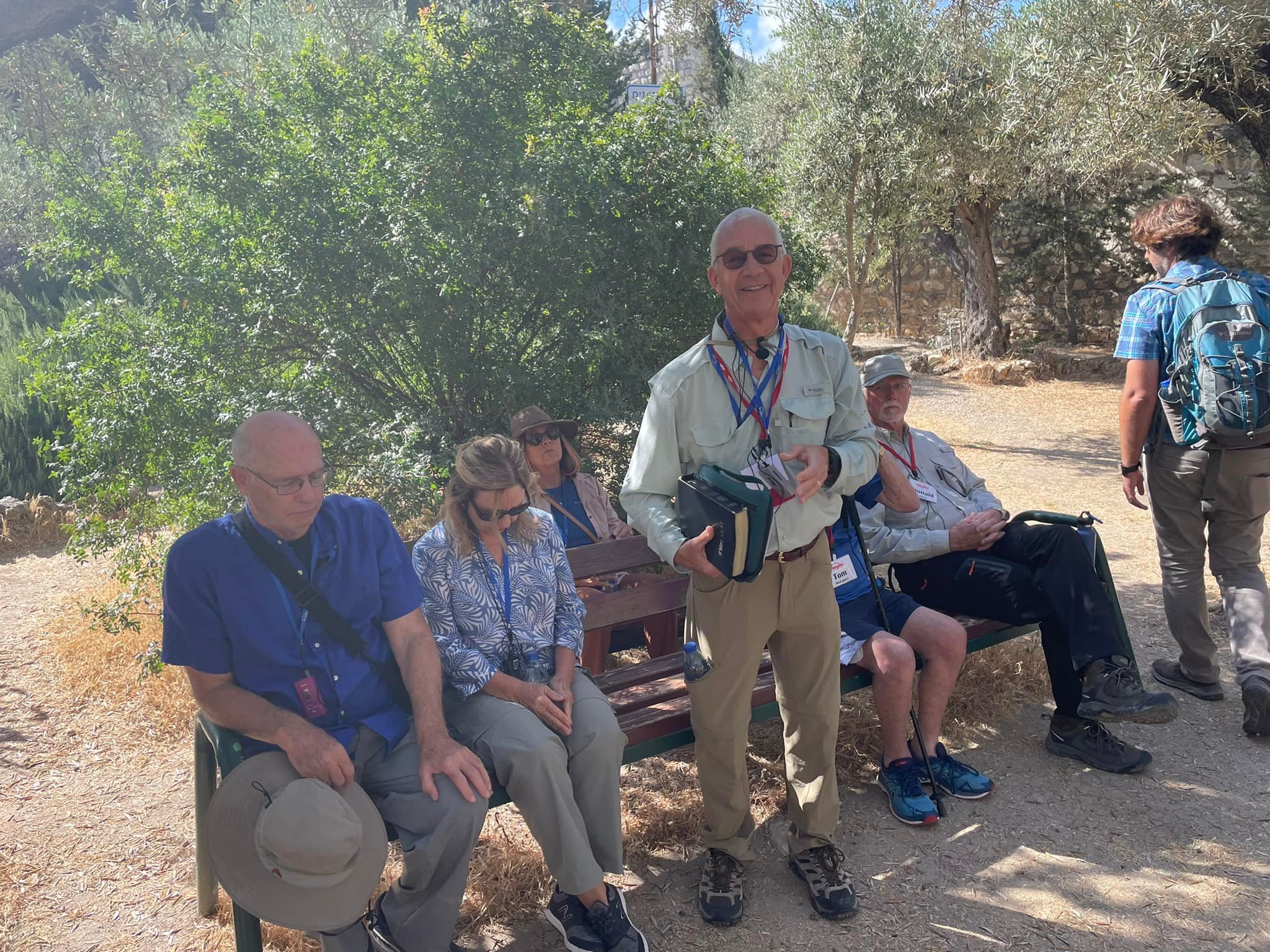

Troy and Kami Schulze in Gestuemane.

John and Laura with Thomas McCance.

Saint Ann’s church.
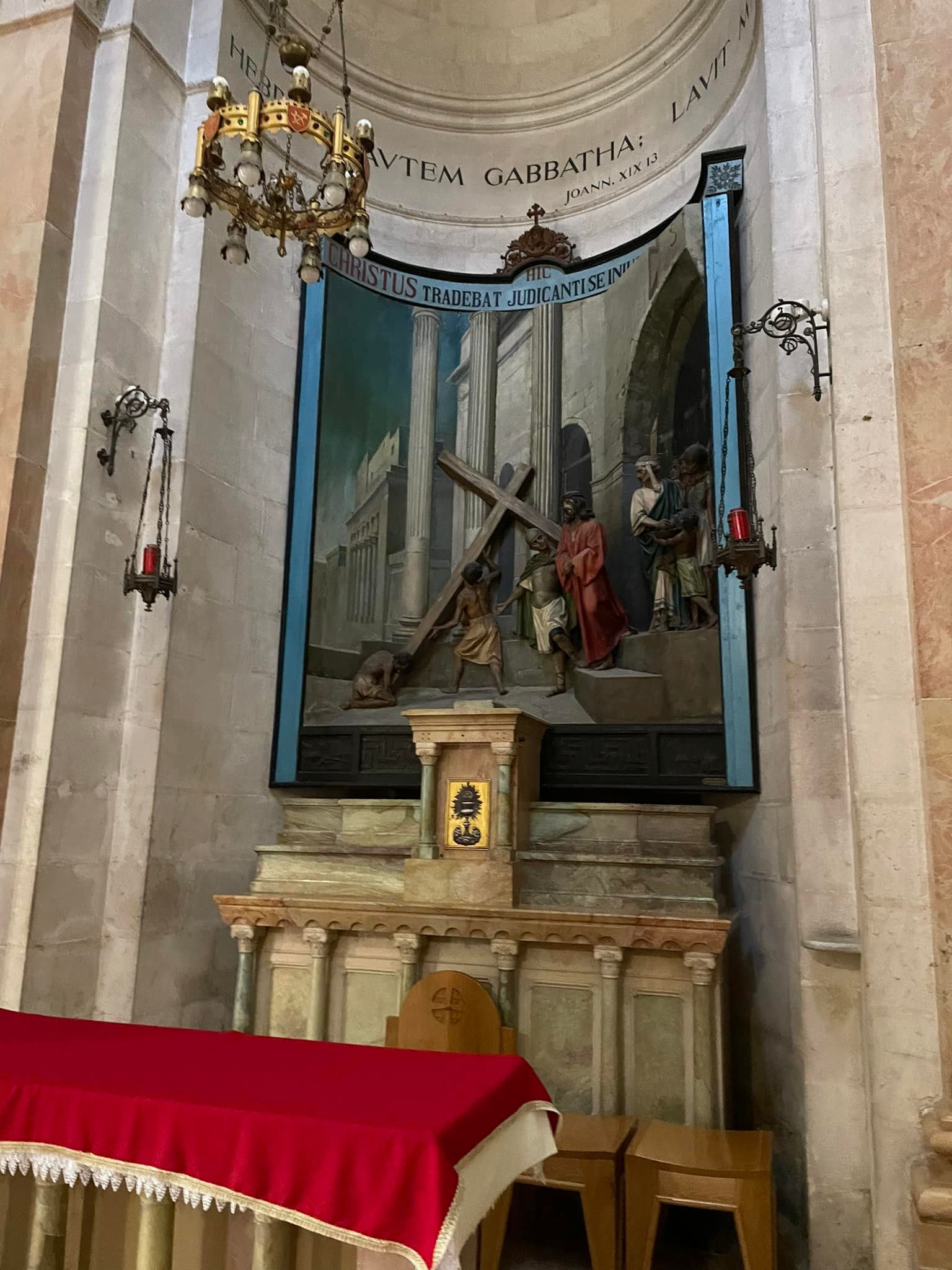
This is the side of the second Station of the Cross. That is not a painting, it is a raised fresco.

Walking the Via Dolorosa.
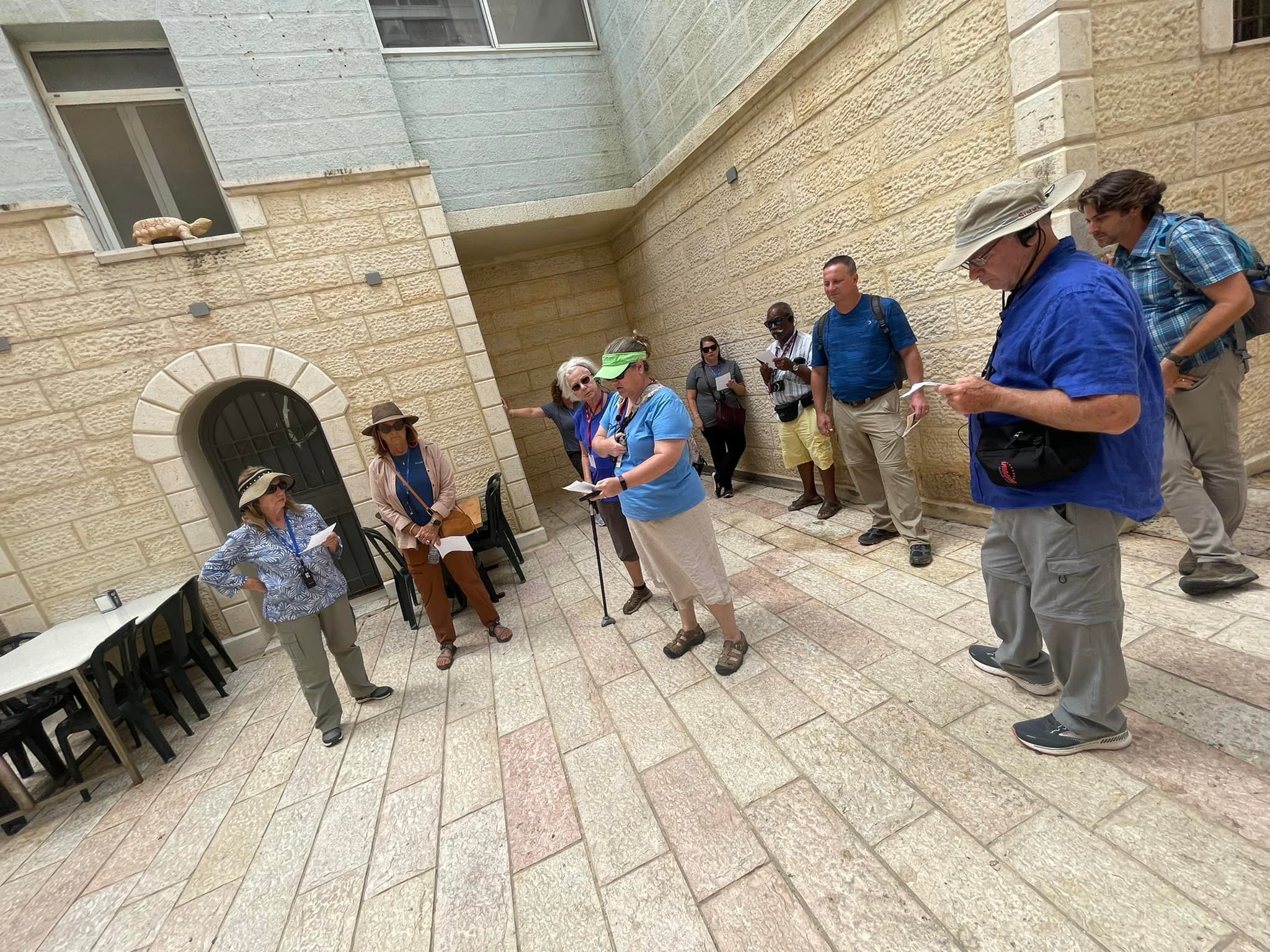
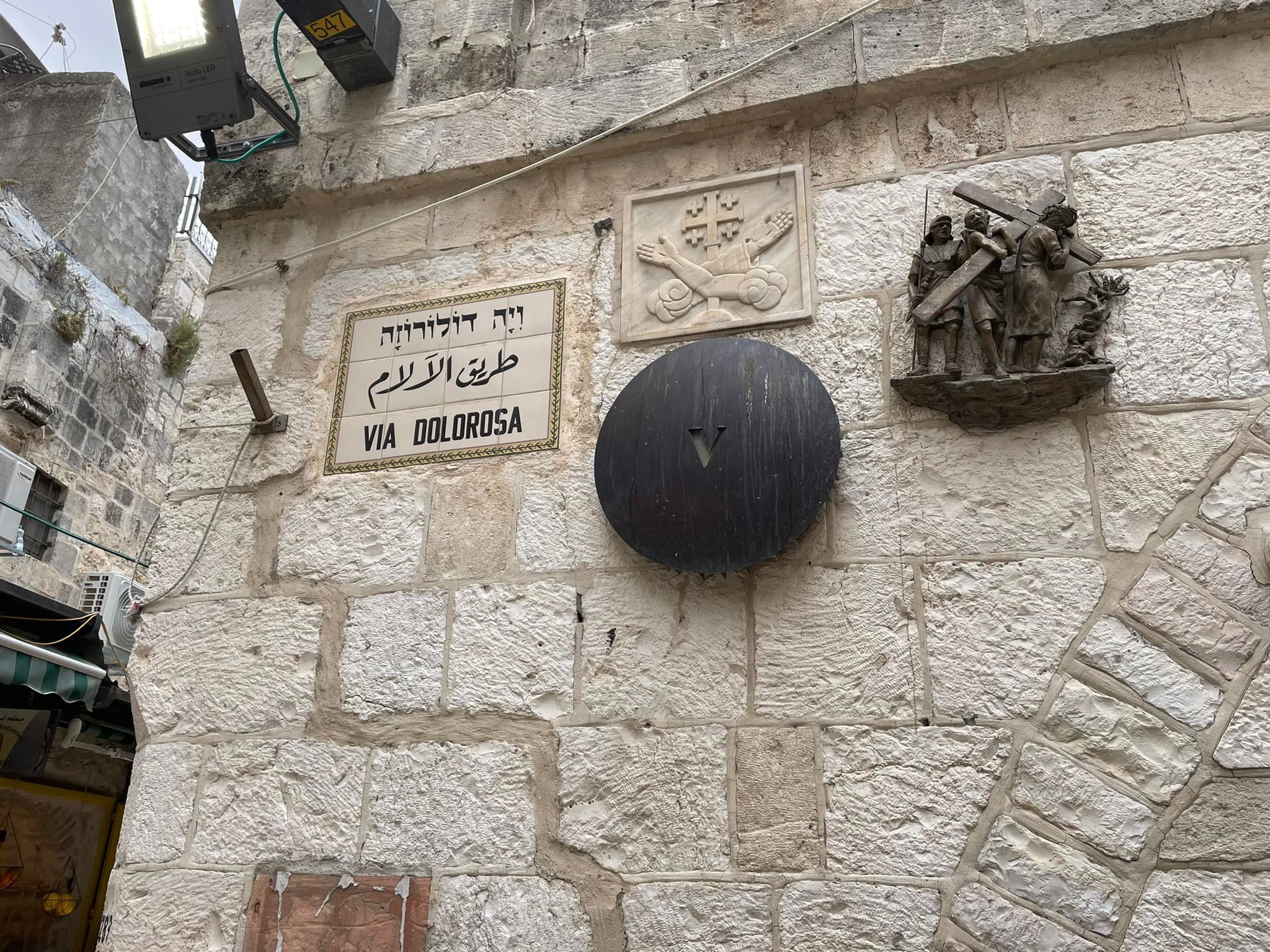
This is how many the stations are marked along the way.
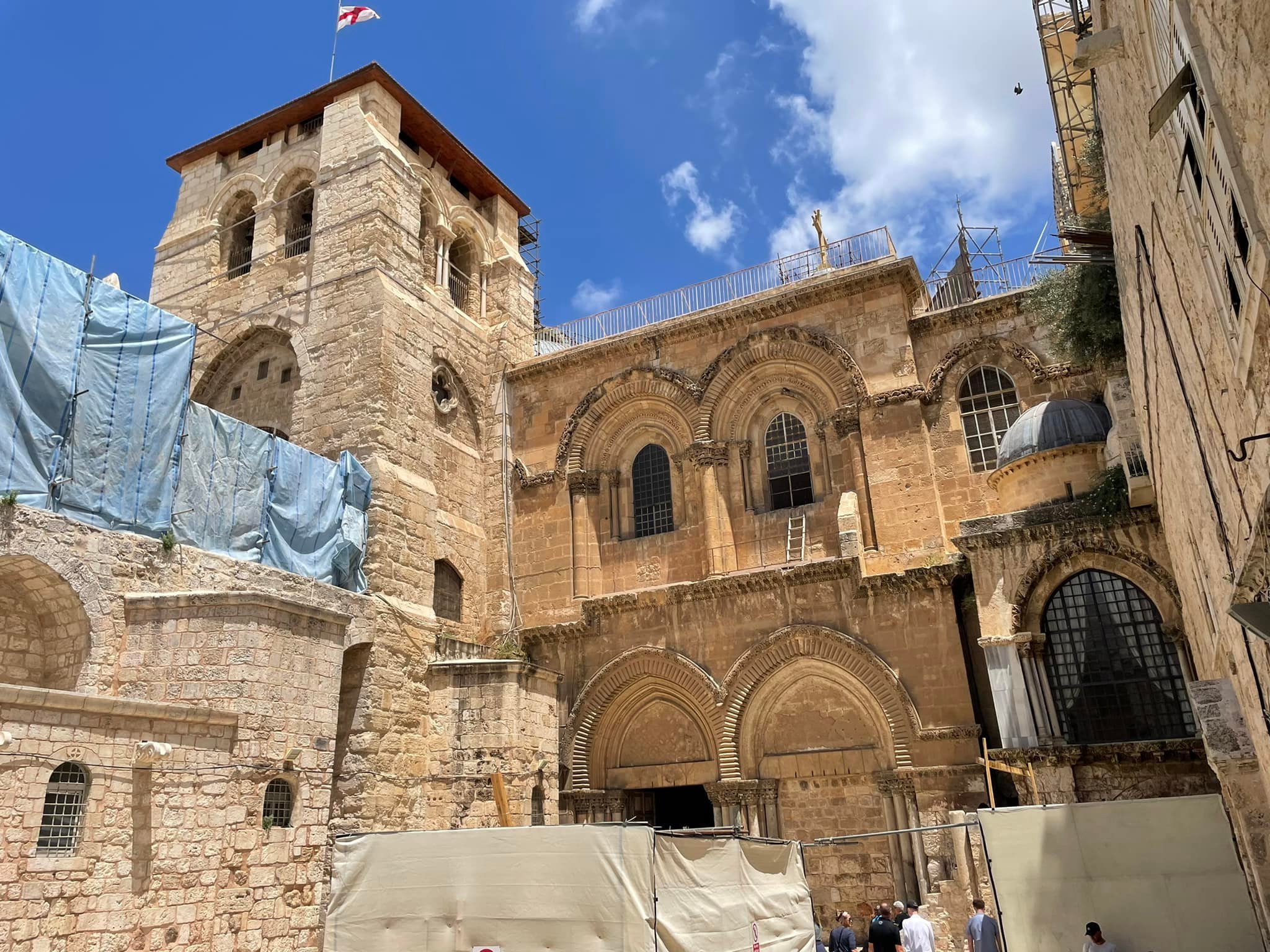
The church of the holy sepulcher is an international church. The three churches who share it cannot agree on who should open the door. So they hire a Muslim family to do it every day.
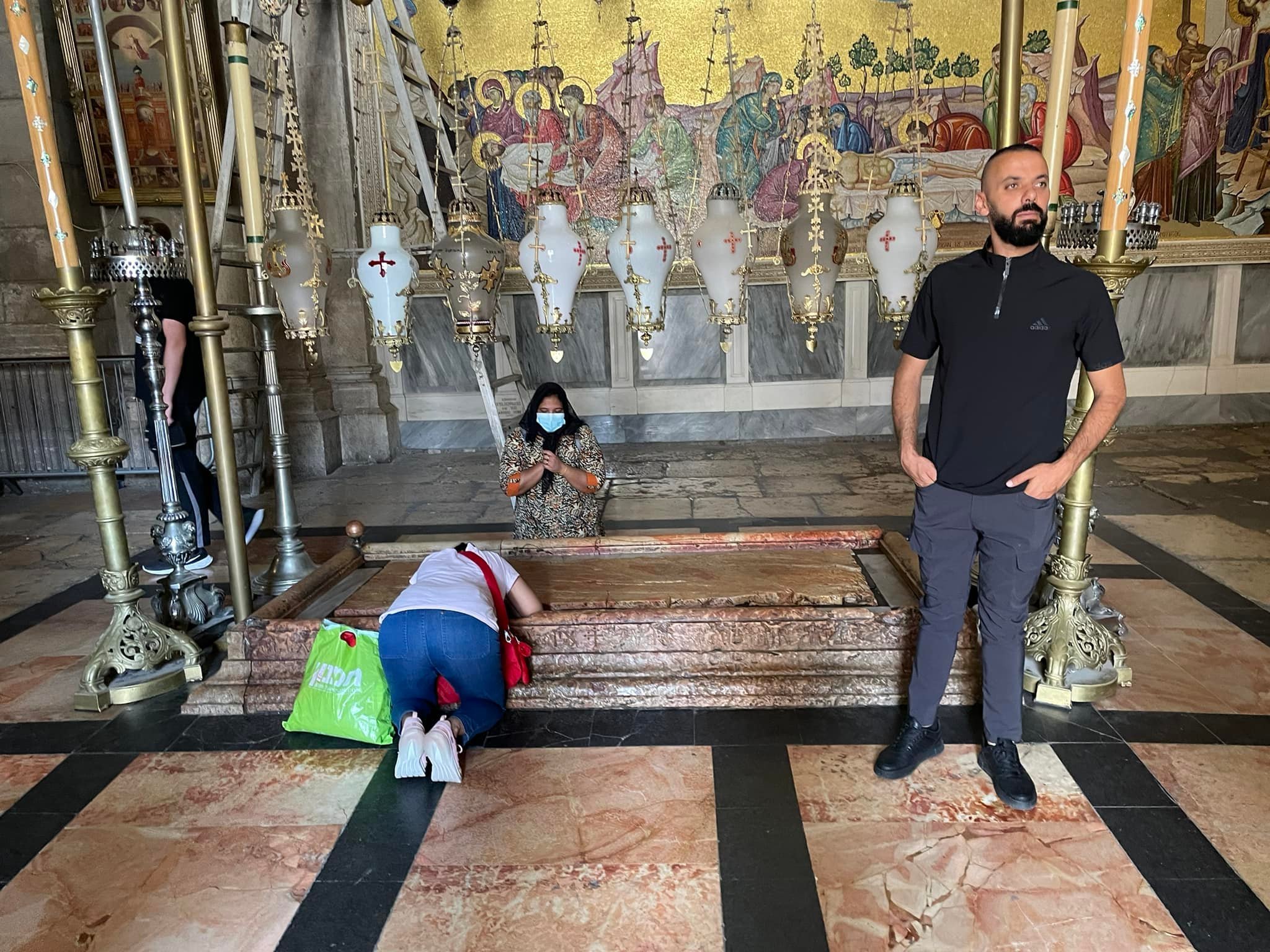
This is the spot where tradition holds that Jesus was anointed after his crucifixion.
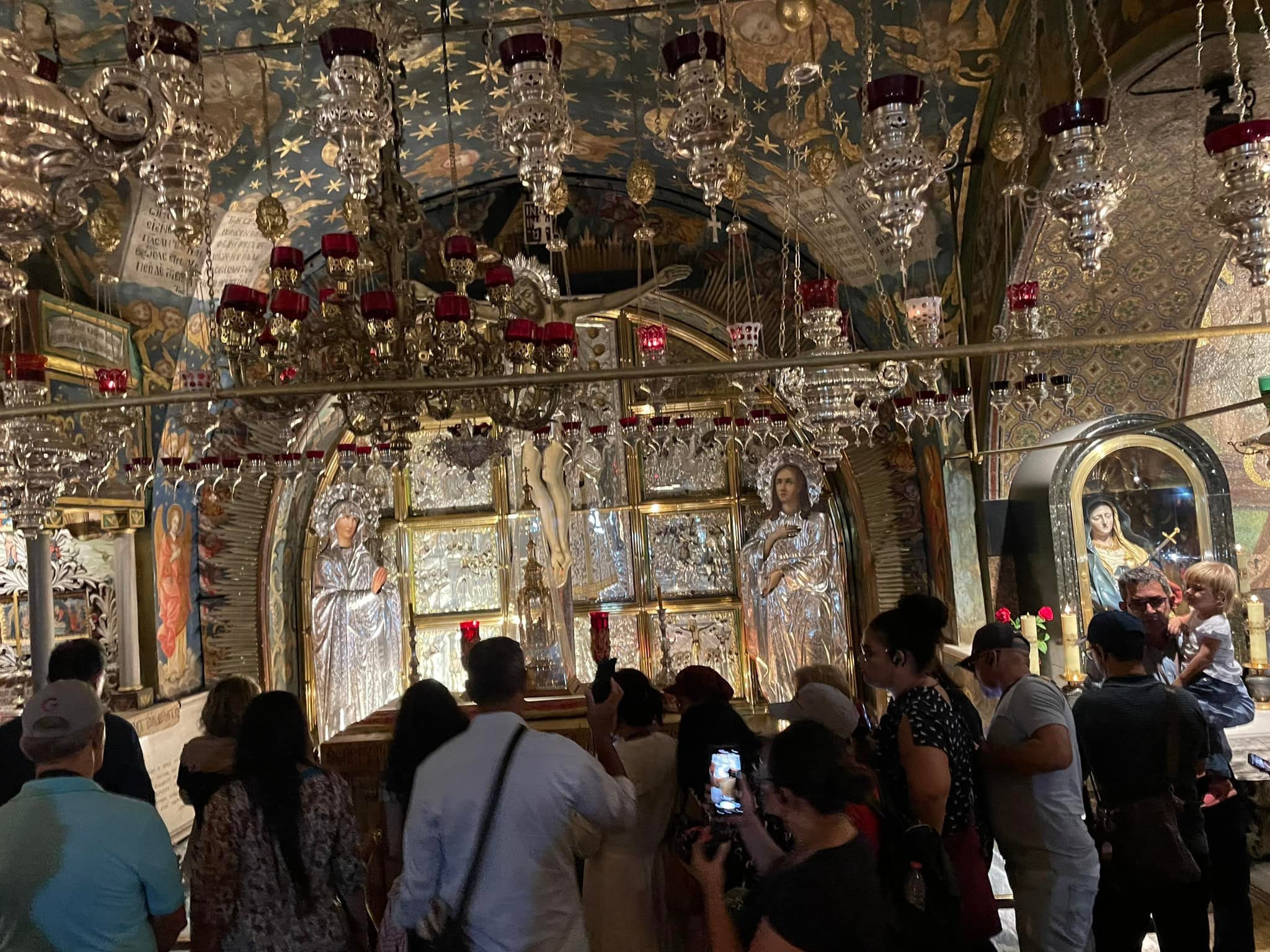
This is the altar over the spot where tradition holds the cross stood.
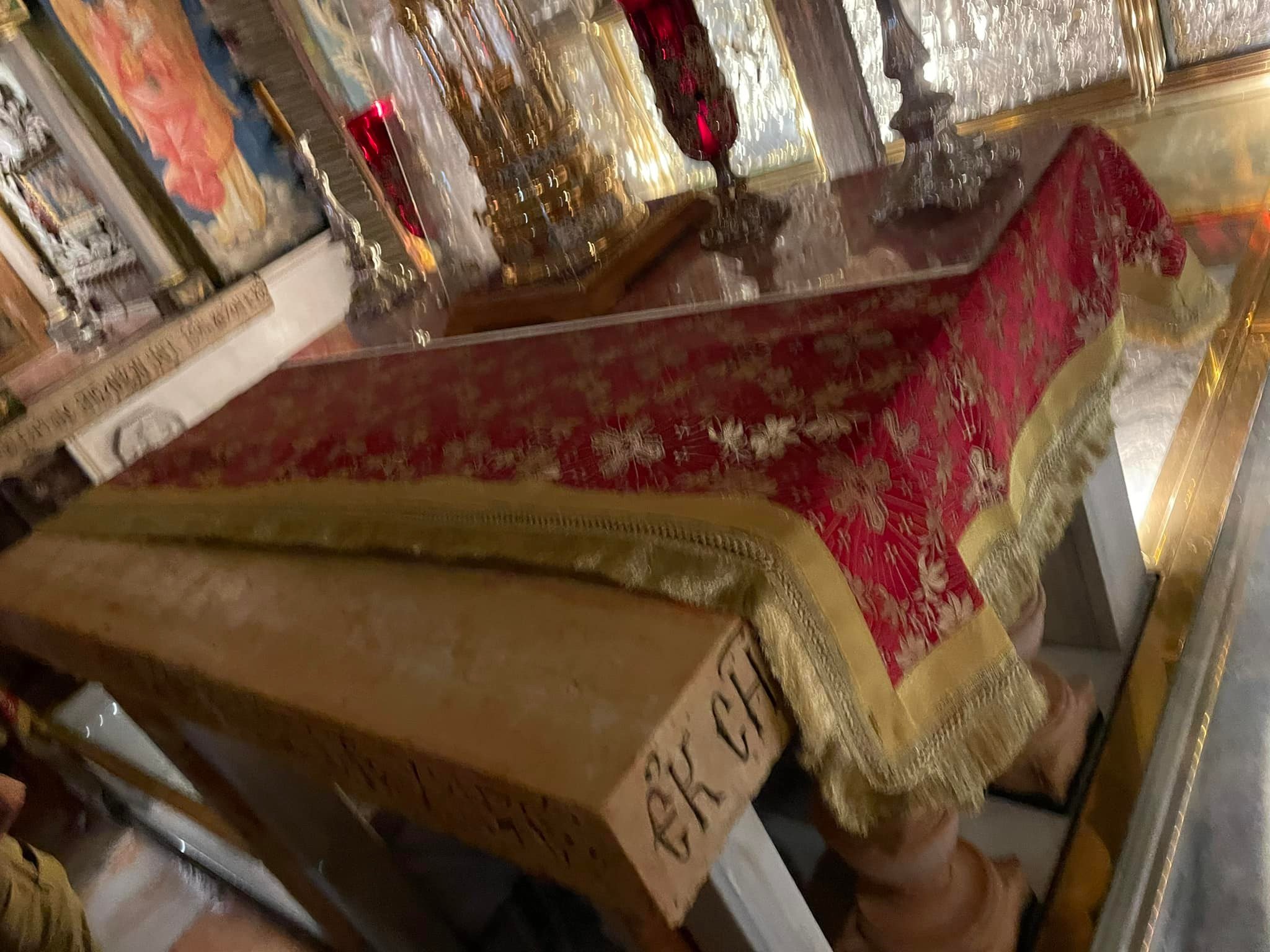
Close-up of the altar.
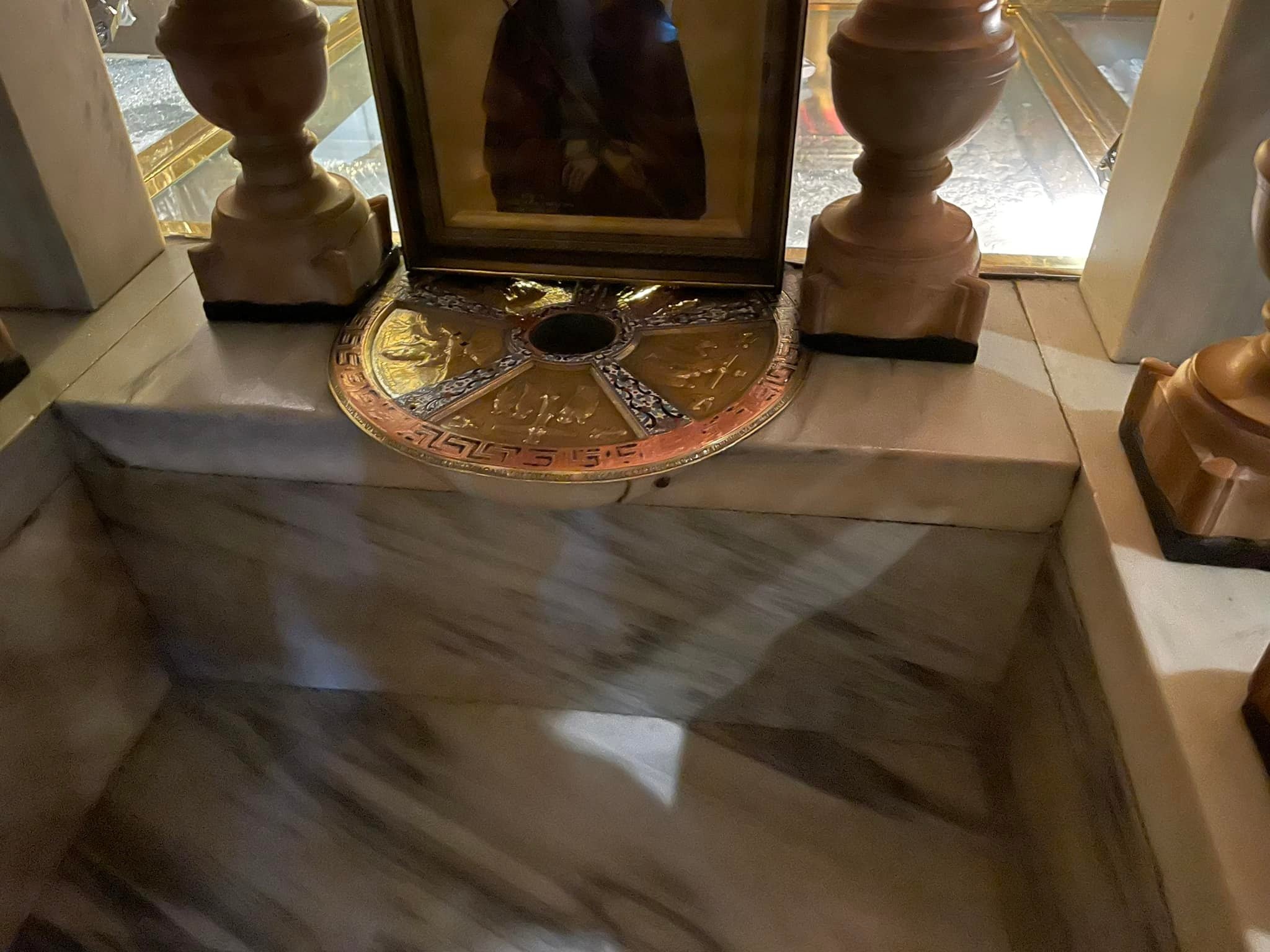
Beneath the altar is this hole where you can reach through and touch the bedrock beneath.
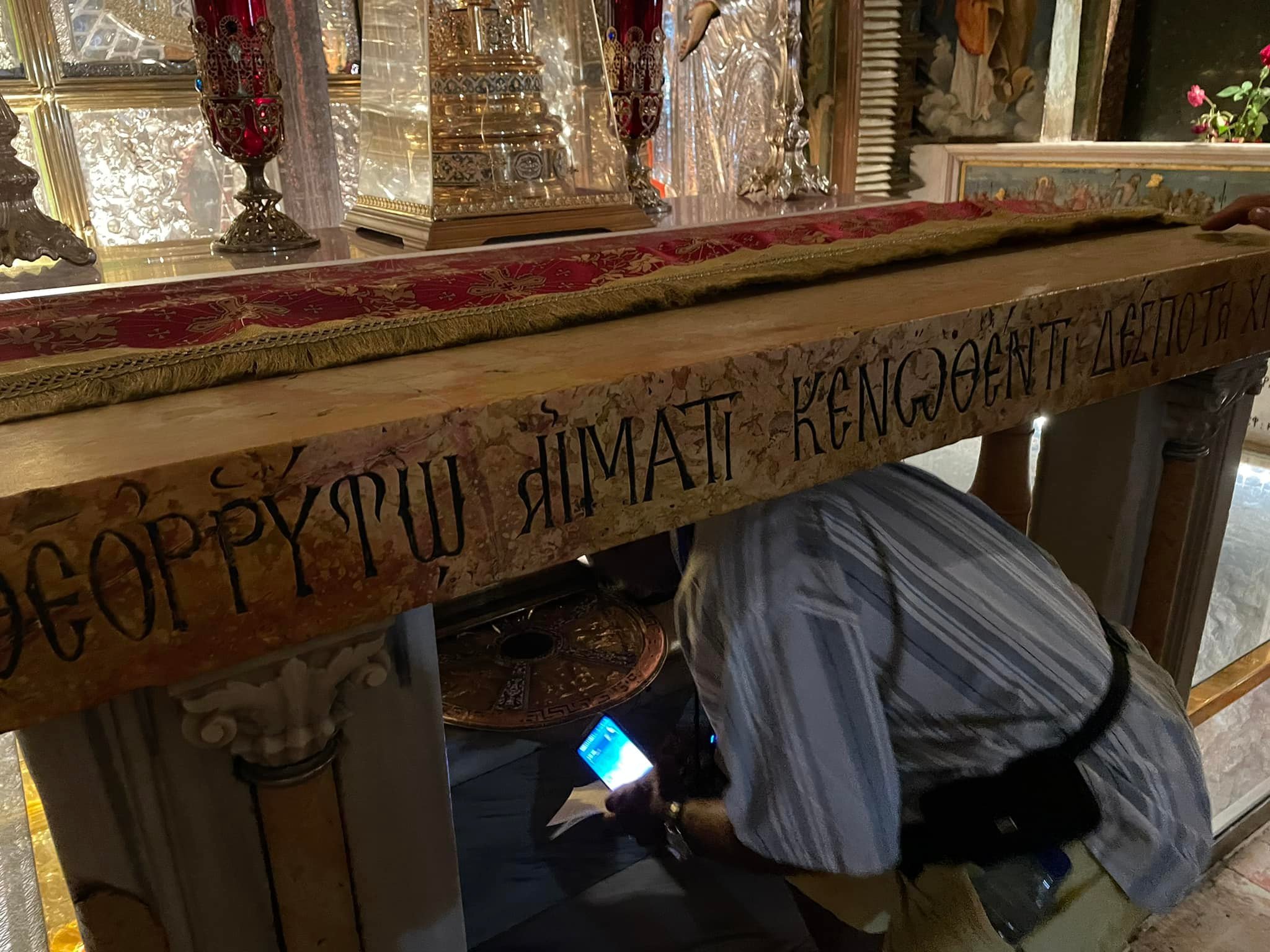
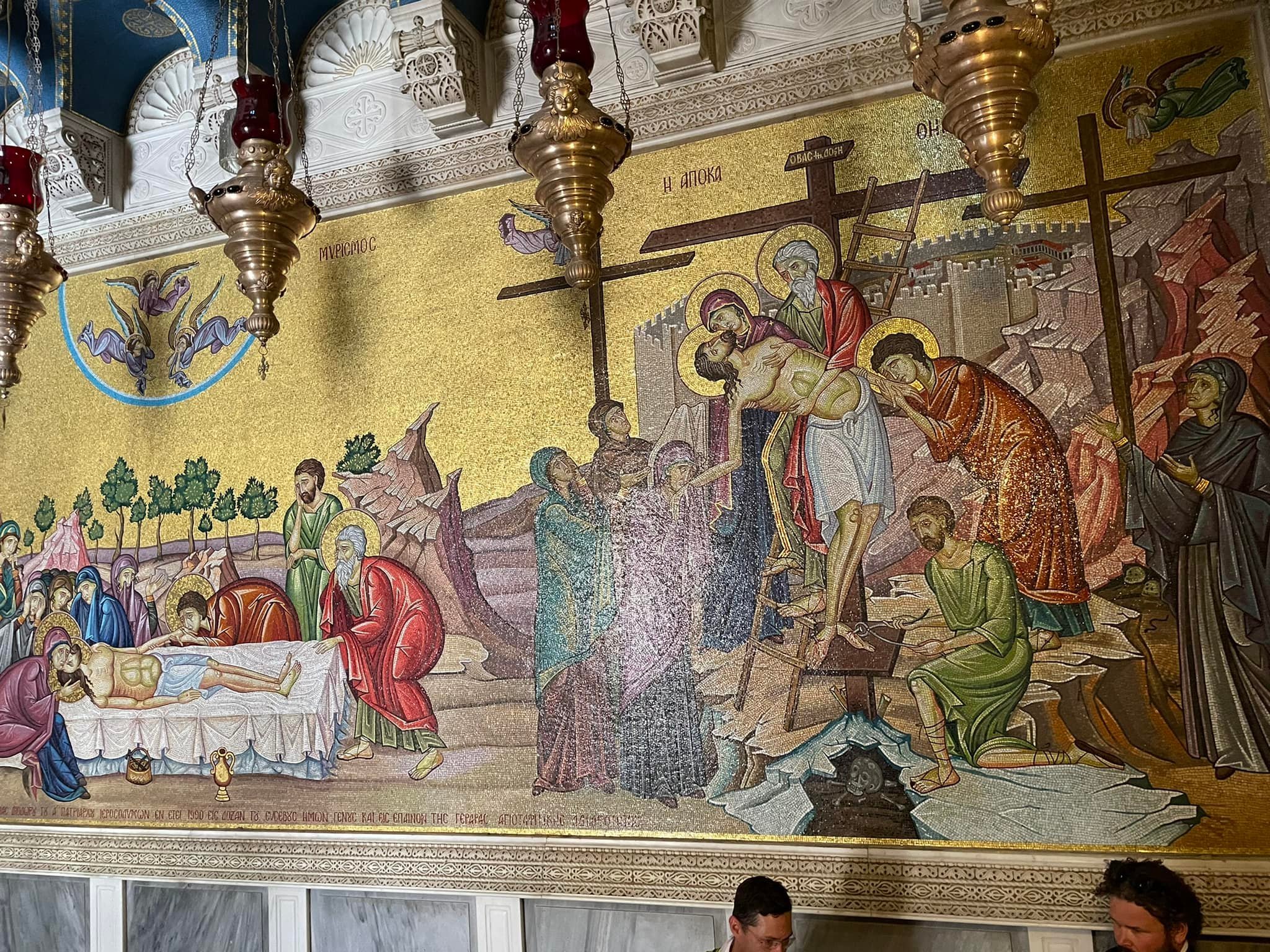
This mural adorns the main entrance. Look what’s underneath Jesus’ feet. We will explain that in just a moment.

The skull under Jesus’s feet represents Adam. Greek orthodox theology contends that Adam was buried underneath that spot way deep down. And when Jesus was crucified his water and his blood were able to work their way down the fissure that you see in this window to redeem Adam’s bones. Hmmm….
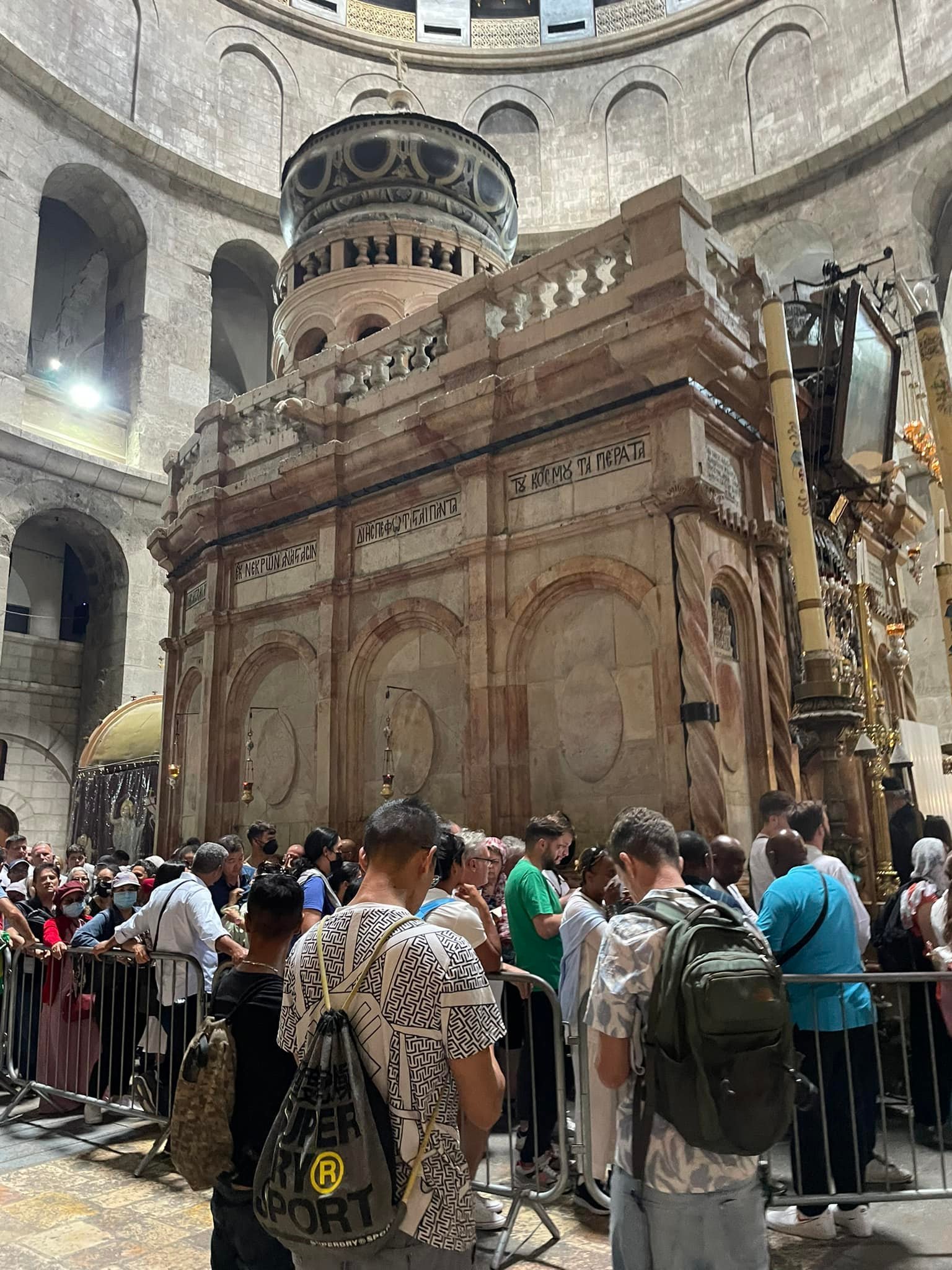
This shrine within the church is over one spot where tradition holds Jesus’ tomb was. Many of those traditions where established when Helena, mother of emperor Constantine, worked tirelessly to identify and honor those spots. However, sometimes archaeology affirms those spots and sometimes it illuminates them. So we just don’t know for many of them, but we do also know that pilgrims have been coming here and walking these steps for centuries. There’s an awful lot to it.
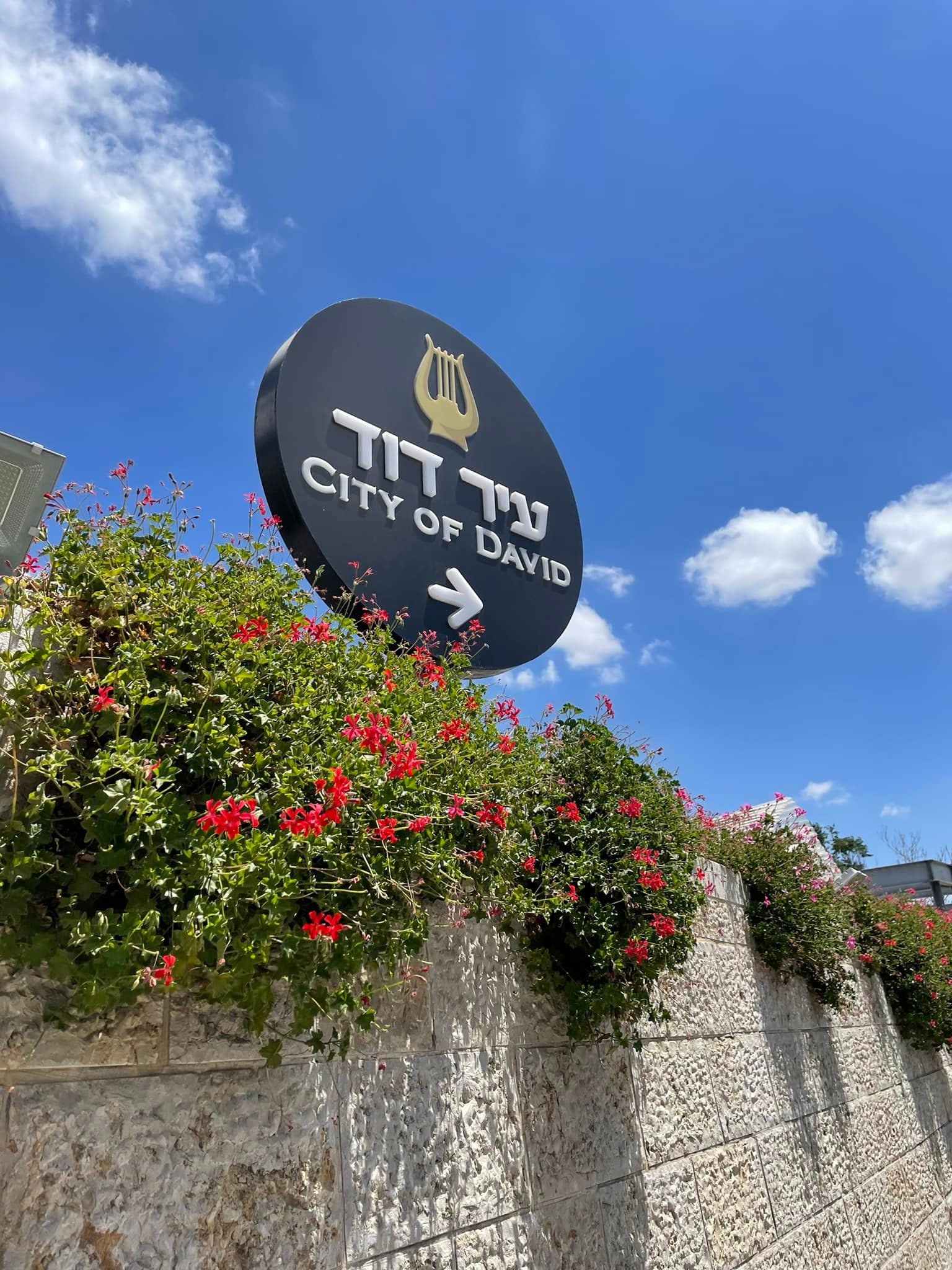
Onto the archaeology underway in the City of David. Although Jerusalem was always well within the promised land entered by Joshua, it was not conquered for Israel until David did it 400 years later.
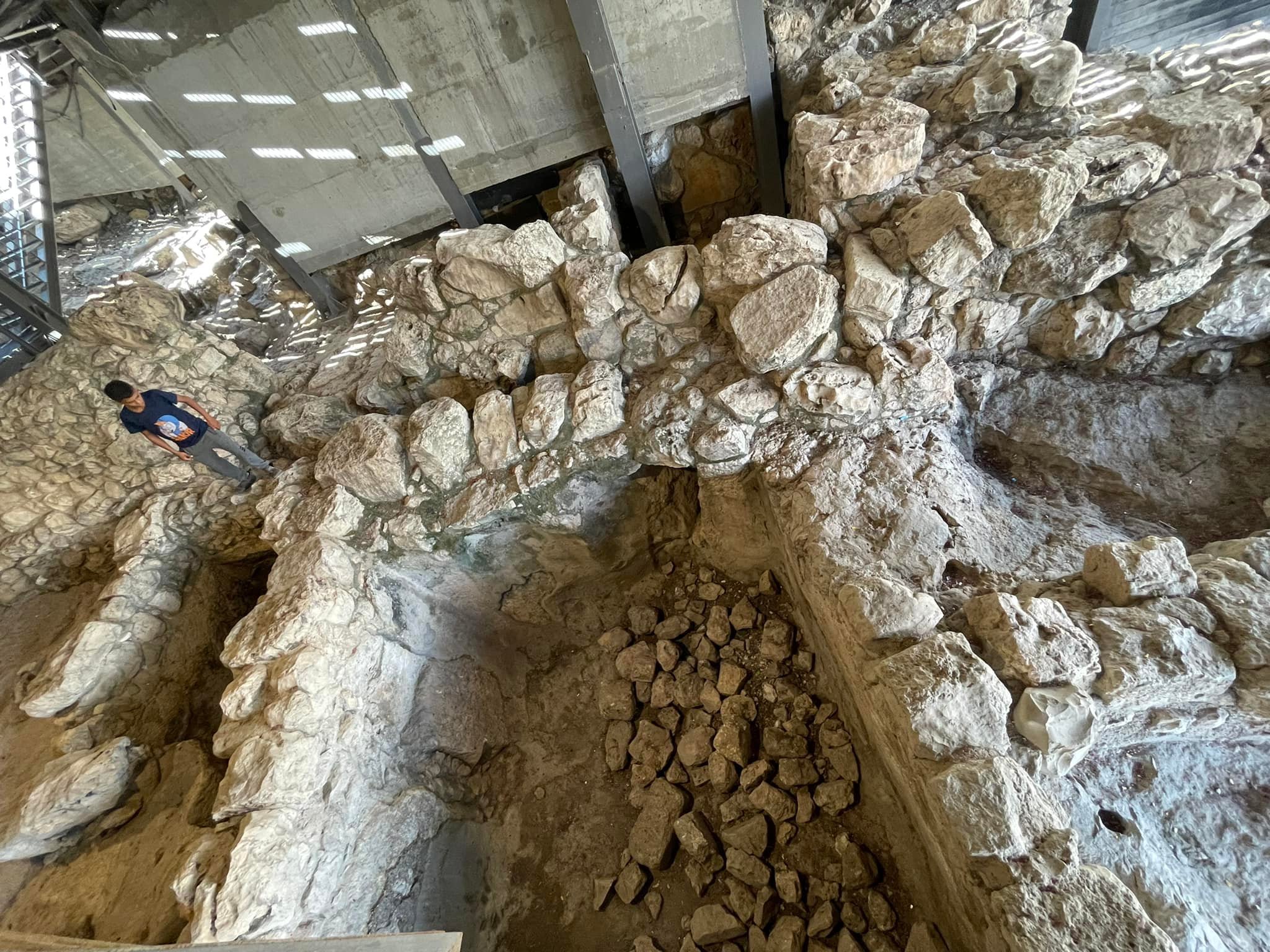
These digs indicate a very large and opulent palace. They have not as yet found specific artifacts to completely affirm that it was David’s palace, however everything points in that direction. It is below the peak of Mount Moriah, where Solomon will later build the temple. But it is high above the rest of the city of David, which means that David could stand on his parapet and look out and see Bathsheba bathing on her roof!

More of that same dig.
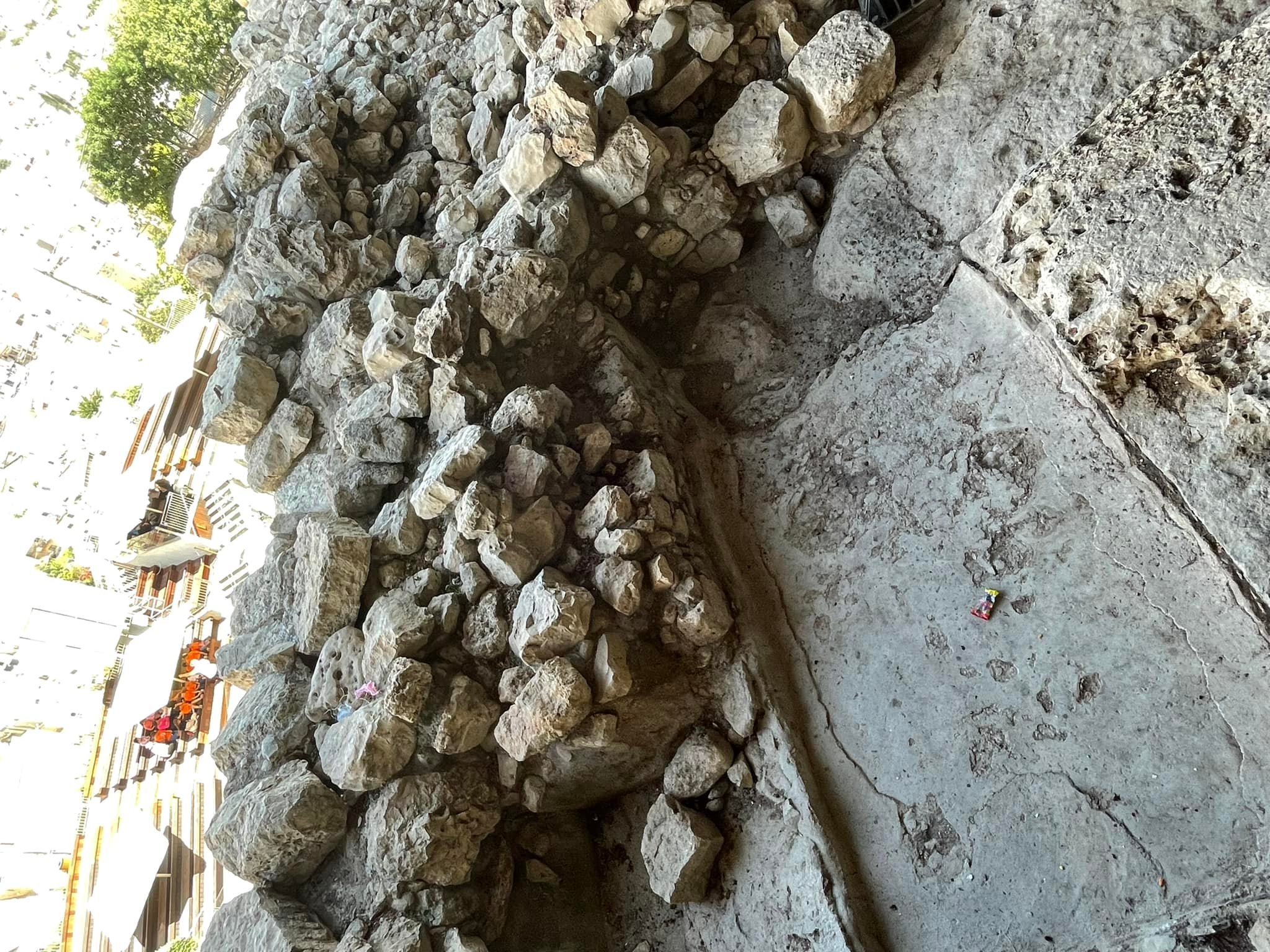
And yet more of that dig.
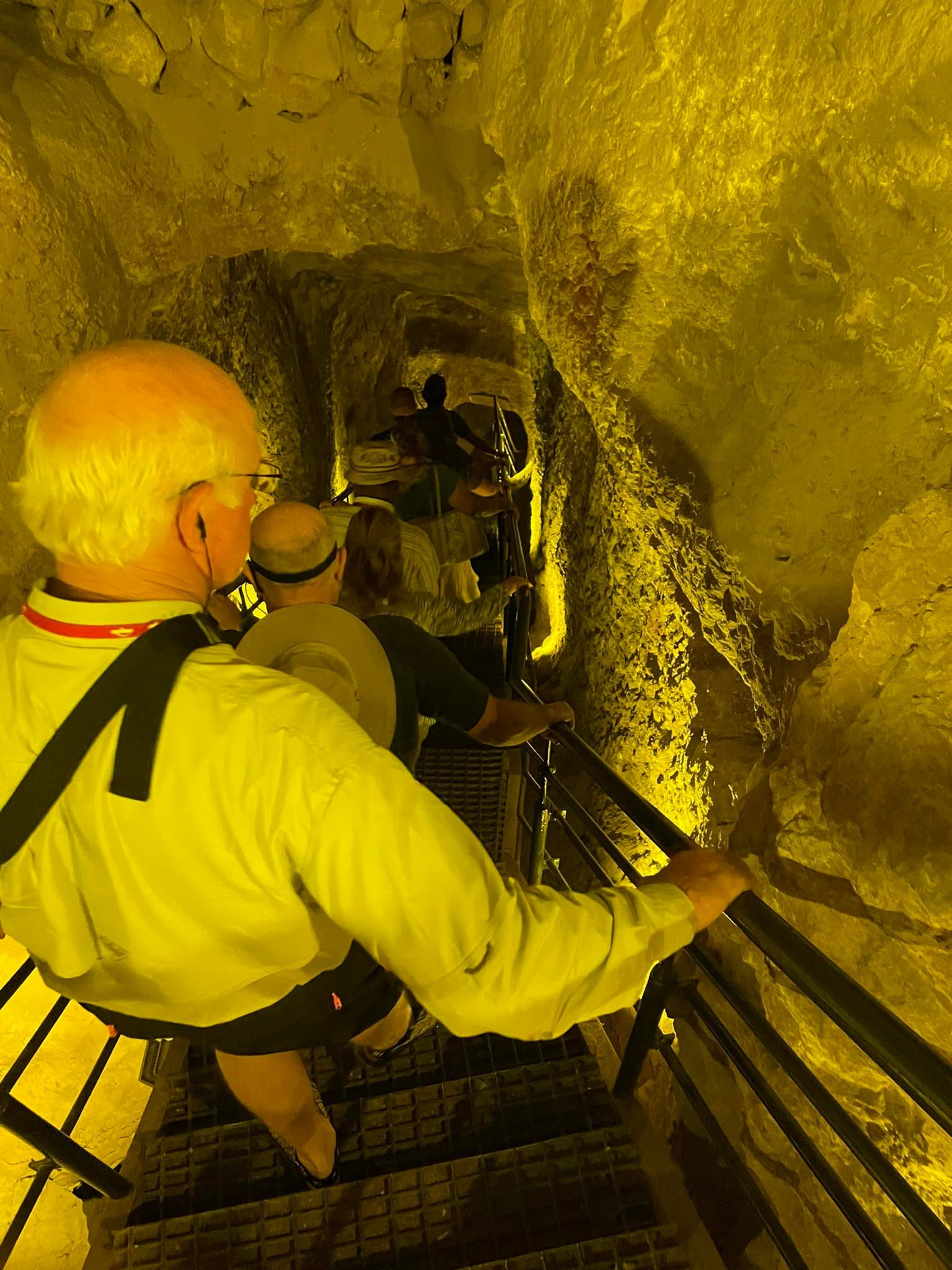
Here we are descending down to Hezekiah’s water tunnel.
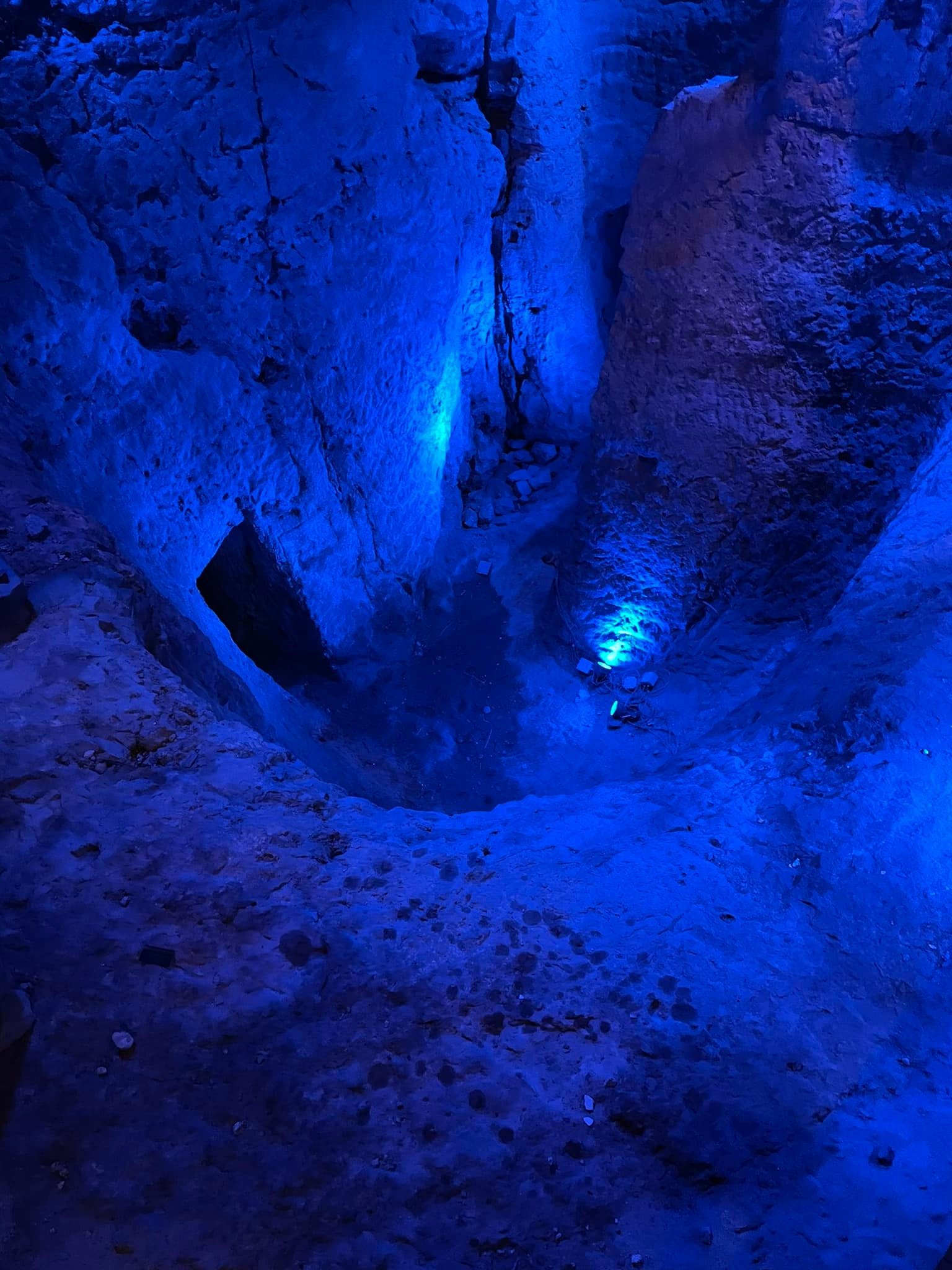
This is where the water previously went during David’s time. It was within the walls as they existed then, and the city was maybe 16 acres or so. It’s supplied a reliable water source that was safe from invaders, but wow was it a long hike down and I can’t imagine the long hike up with a full load of water that the women of the town would do every day.
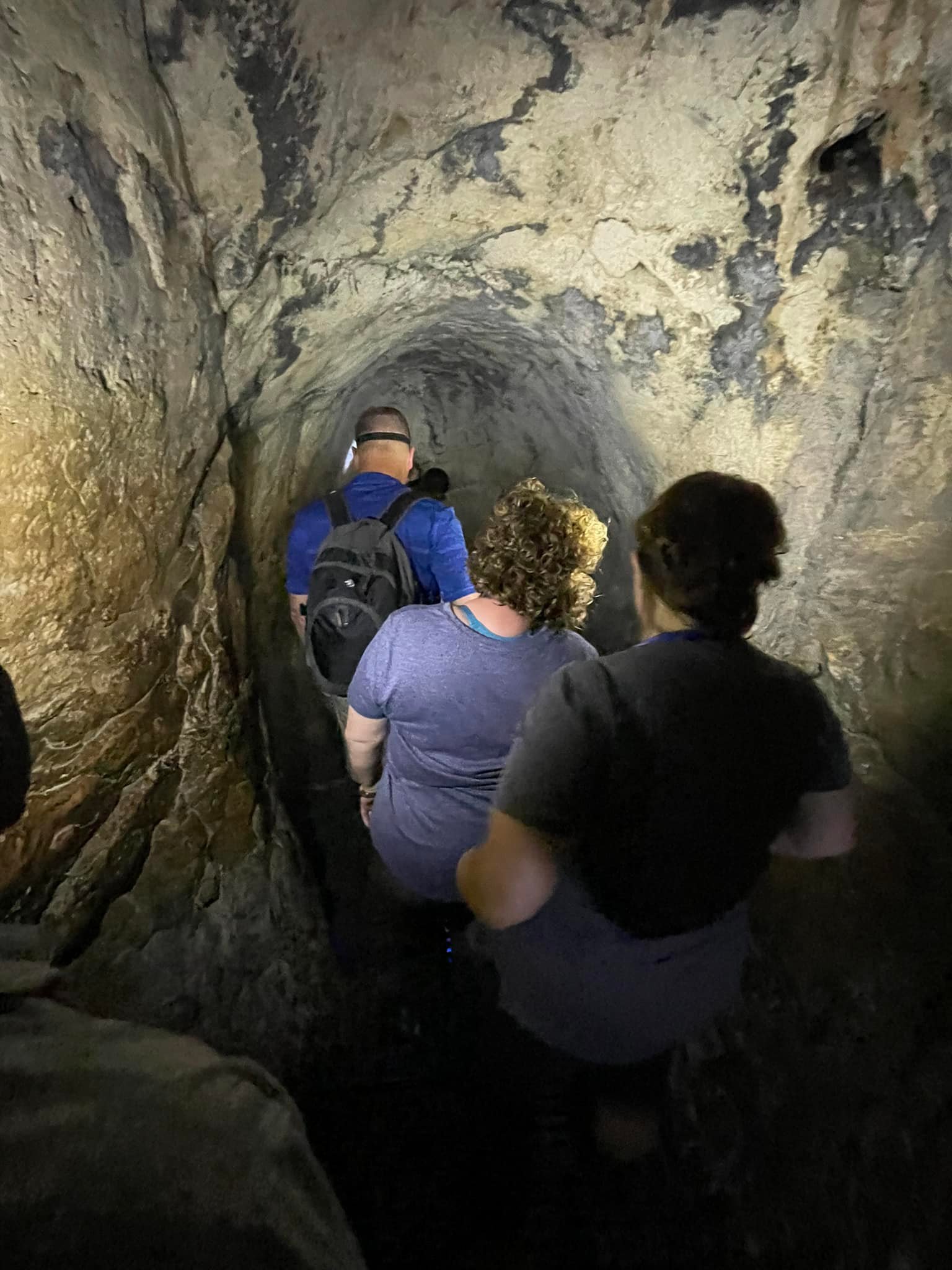
Down down down we go!
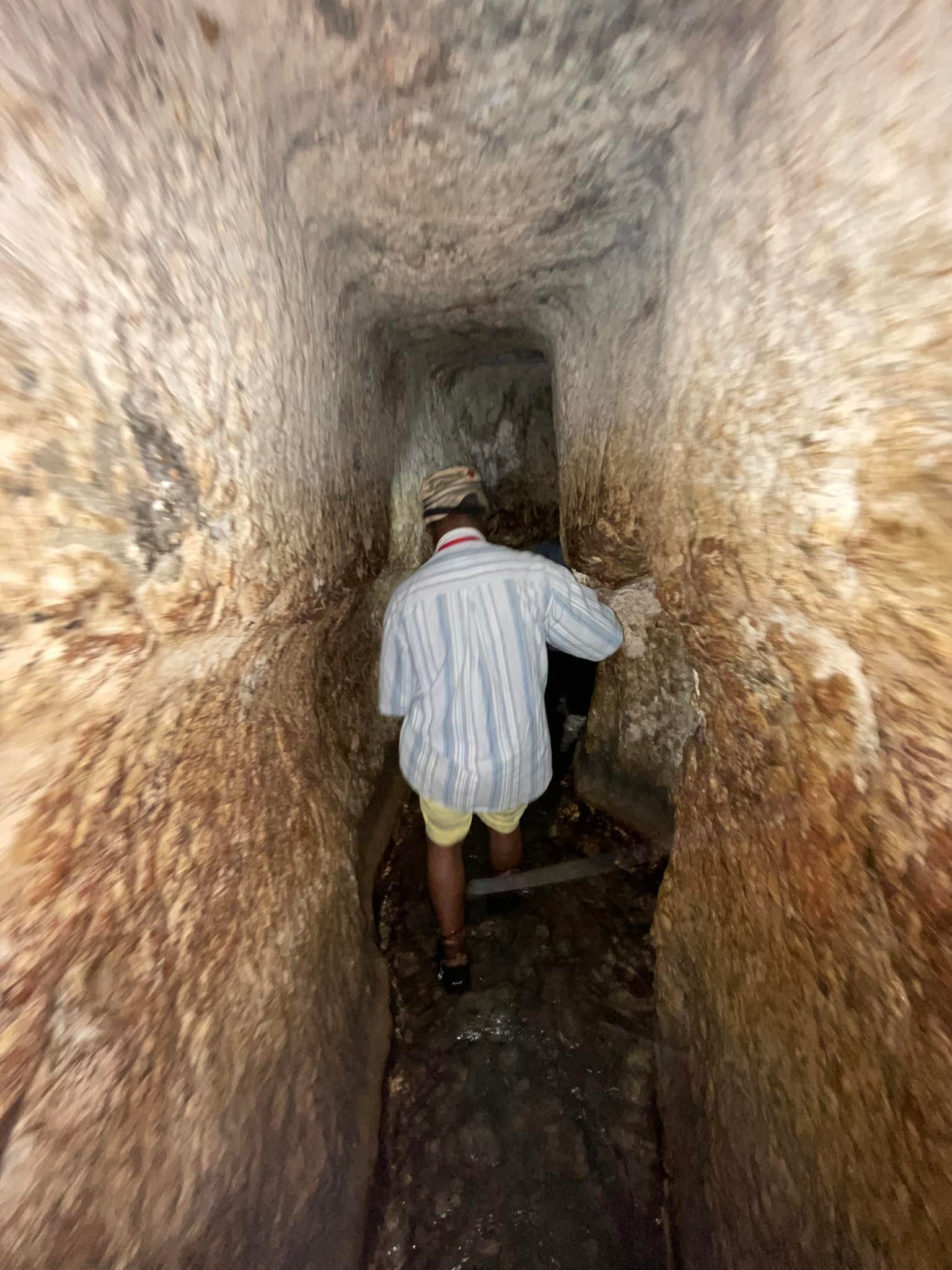
Now we are in it! The water was initially up to about my mid thigh, but quickly settled down to just ankle deep. However the tunnel is 500 yards long. It gets pretty low in some places and pretty narrow and others. Adding to the adventure, we had dozens of teenage girls from local schools in front of us and behind us. And they were so loud. Lol!
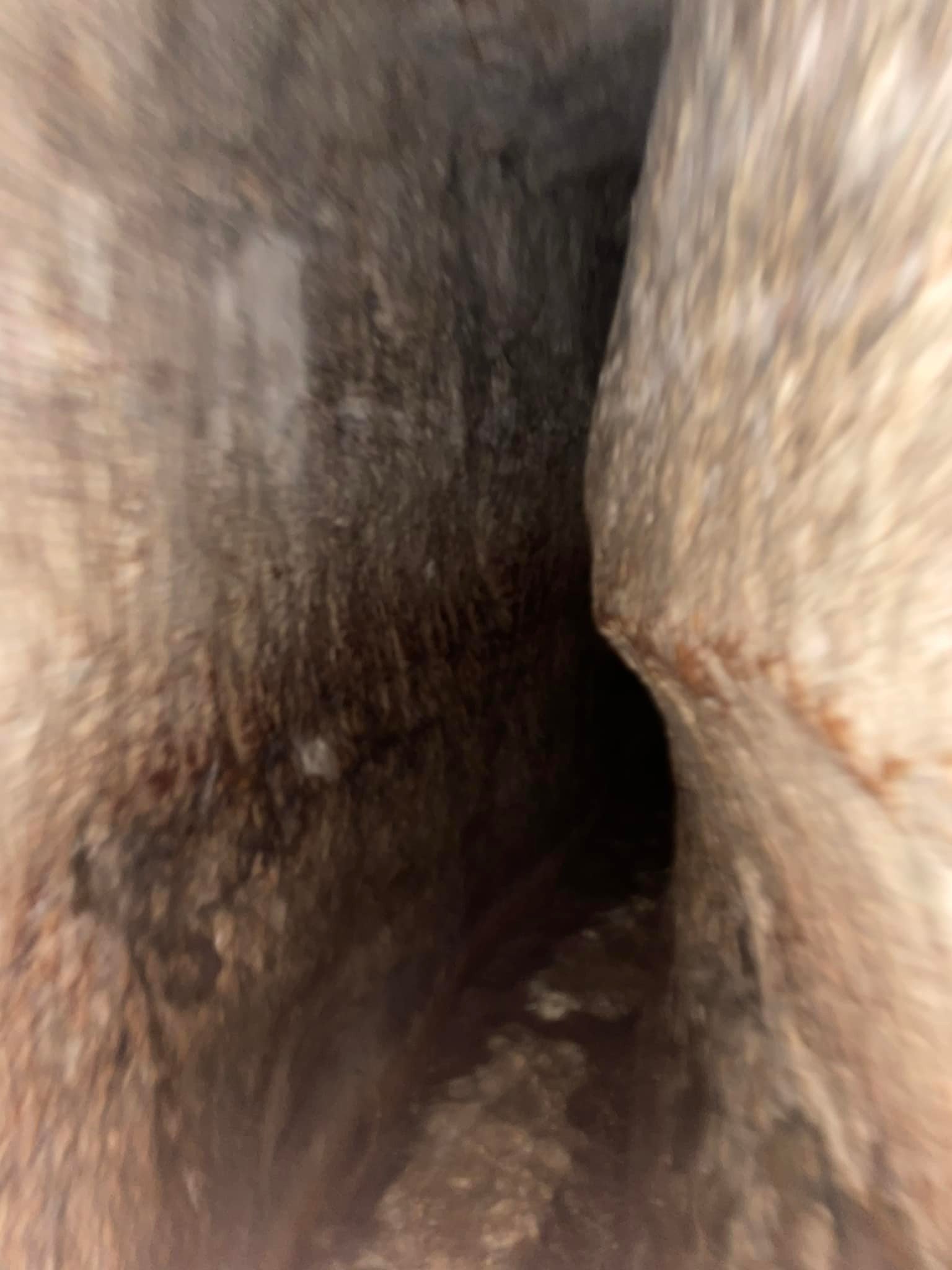
Looks like fun?
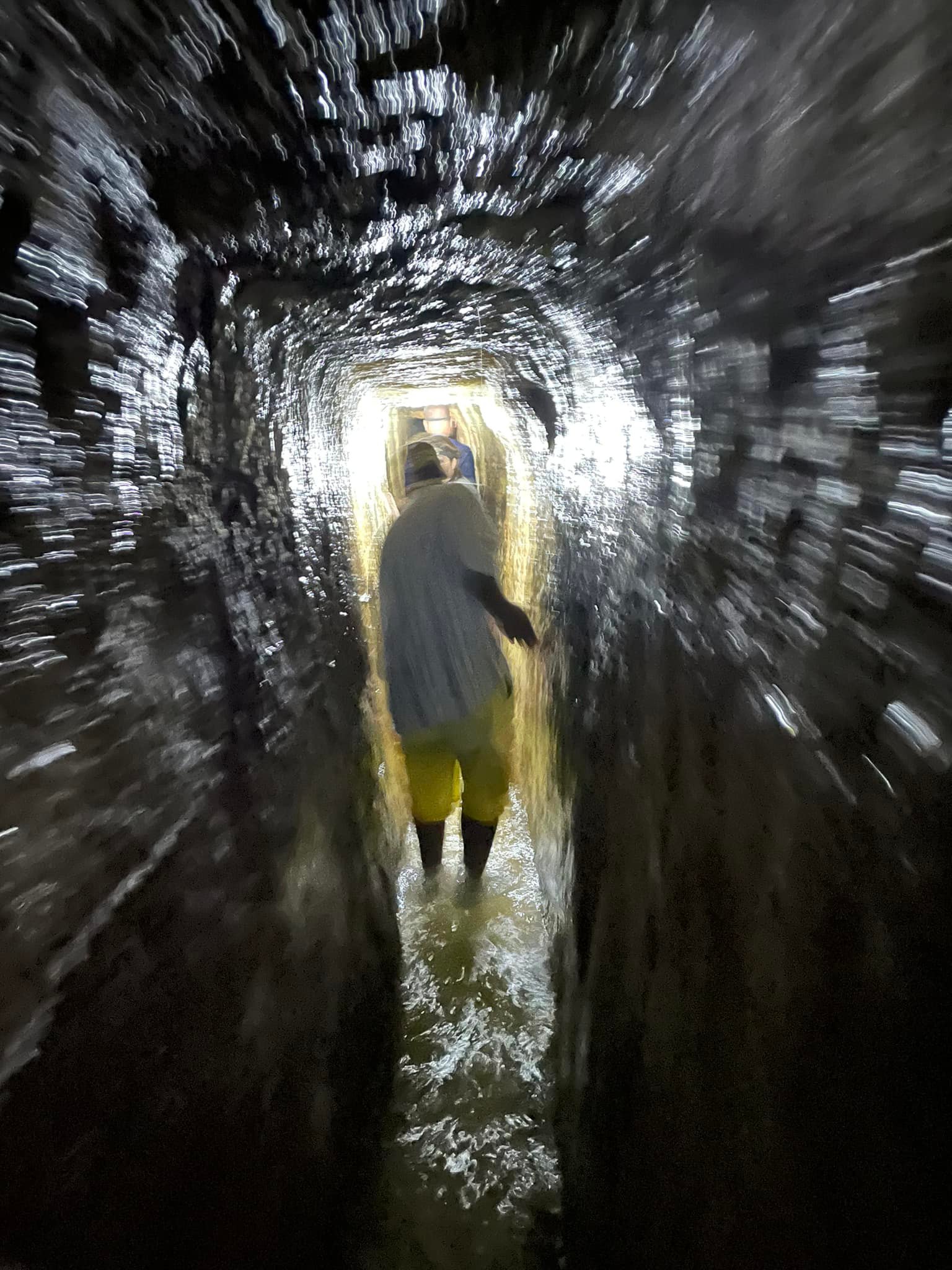
The light effects are from my camera and the headlamps that many of our team had on their heads. Guess who left his on the bus?
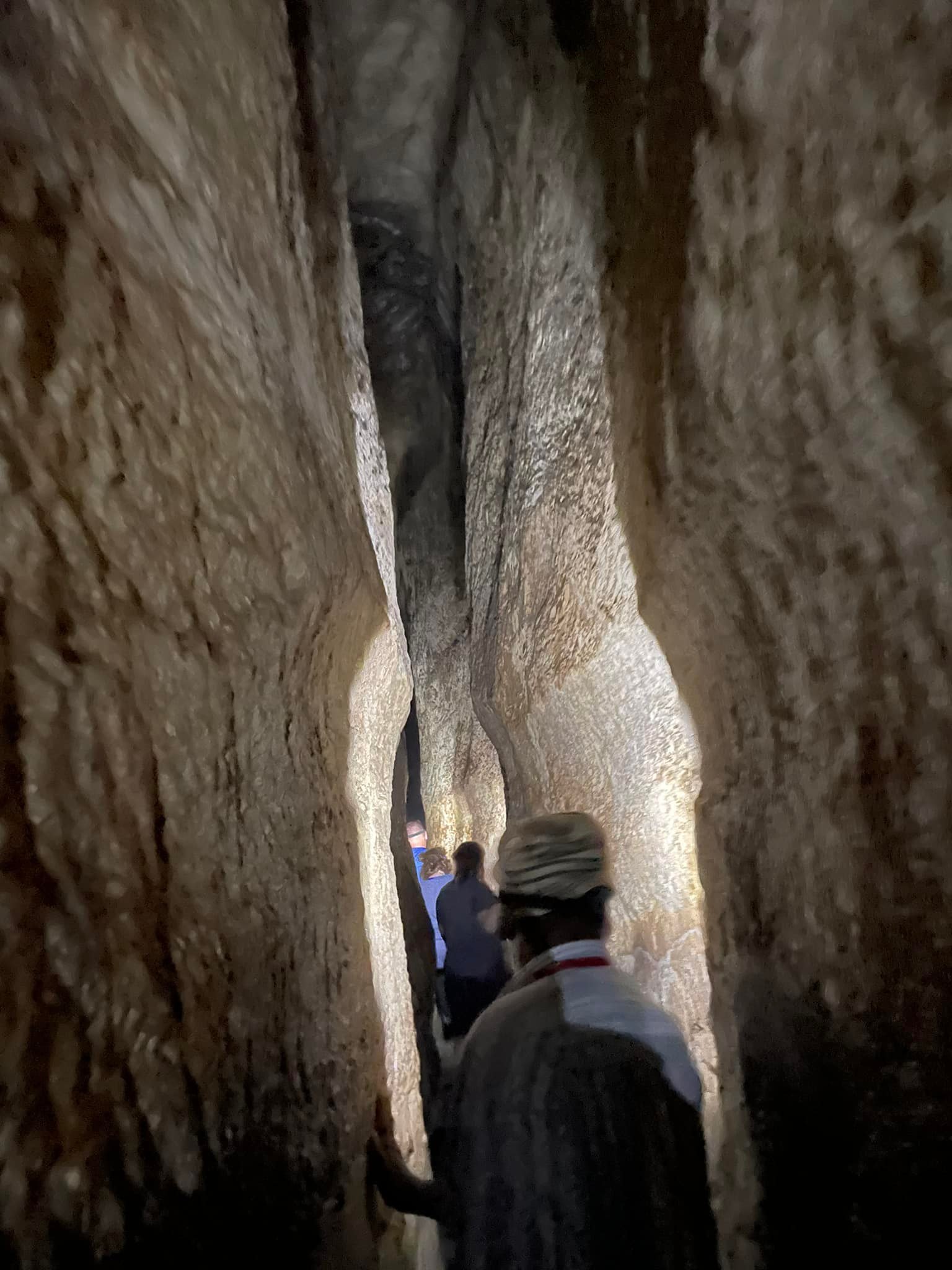
Look how high it got in places.
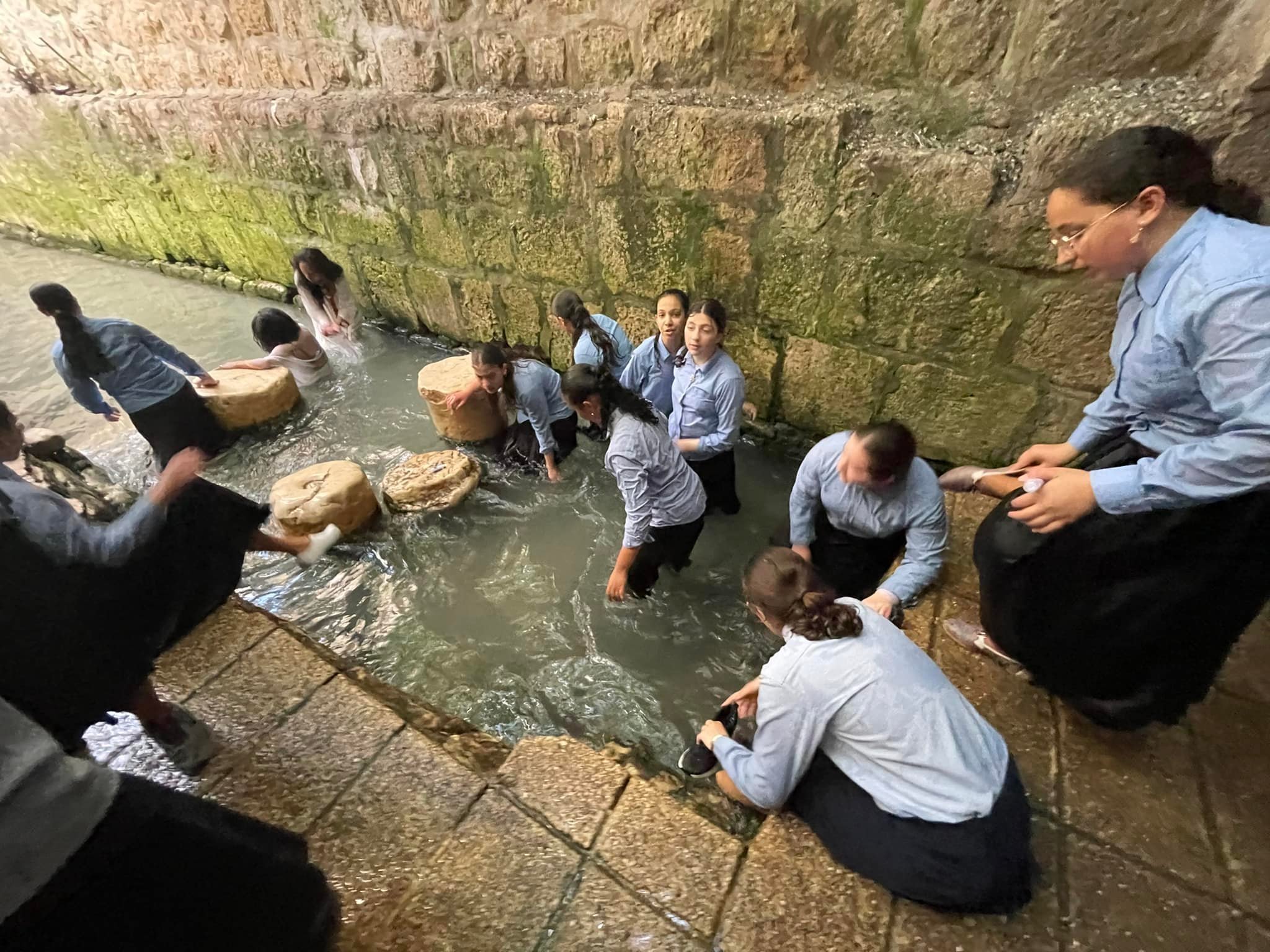
And there are some of the teenage girls I mentioned earlier. They are in what tradition held for a long time was the Pool of Siloam. However…
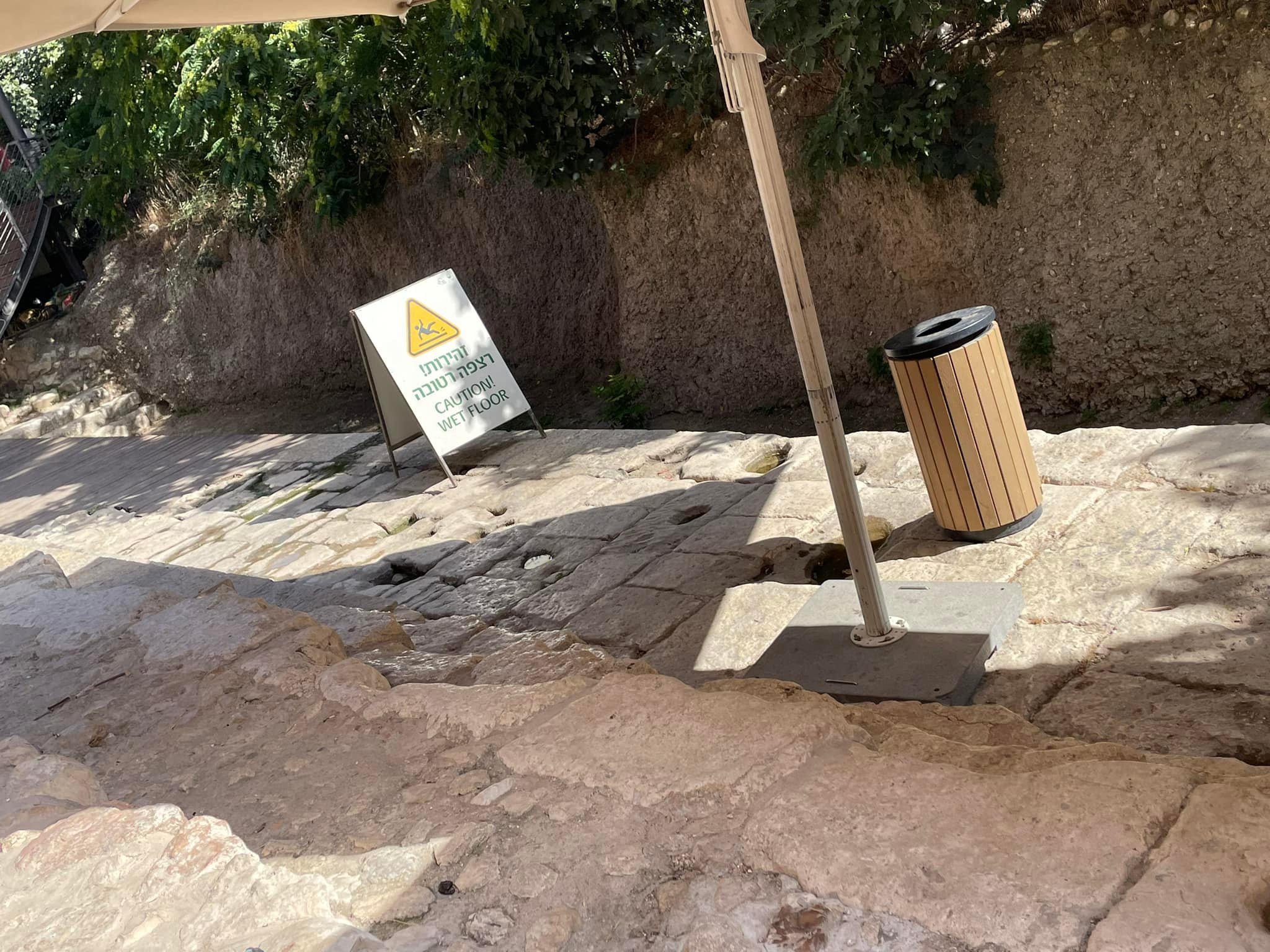
When a sewer line in the Arab quarter of the city backed up they had to dig down to try to fix it. They discovered these steps and realize that this is the actual Pool of Siloam. Deacon John Motis read us John chapter 9, where Jesus heals a blind man at the Pool of Siloam.
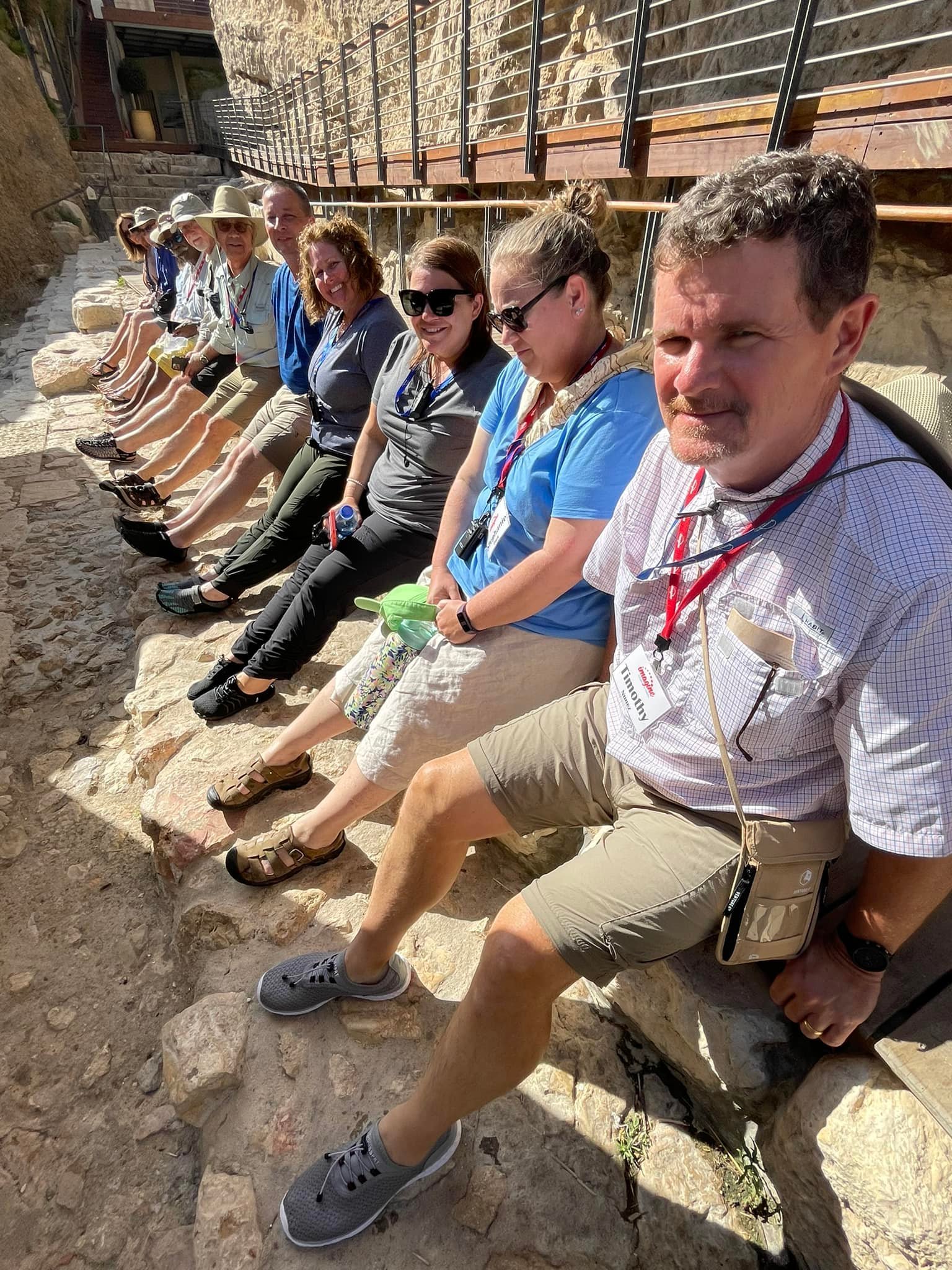
Our feet are on the very steps where the blind man and Jesus would have walked!
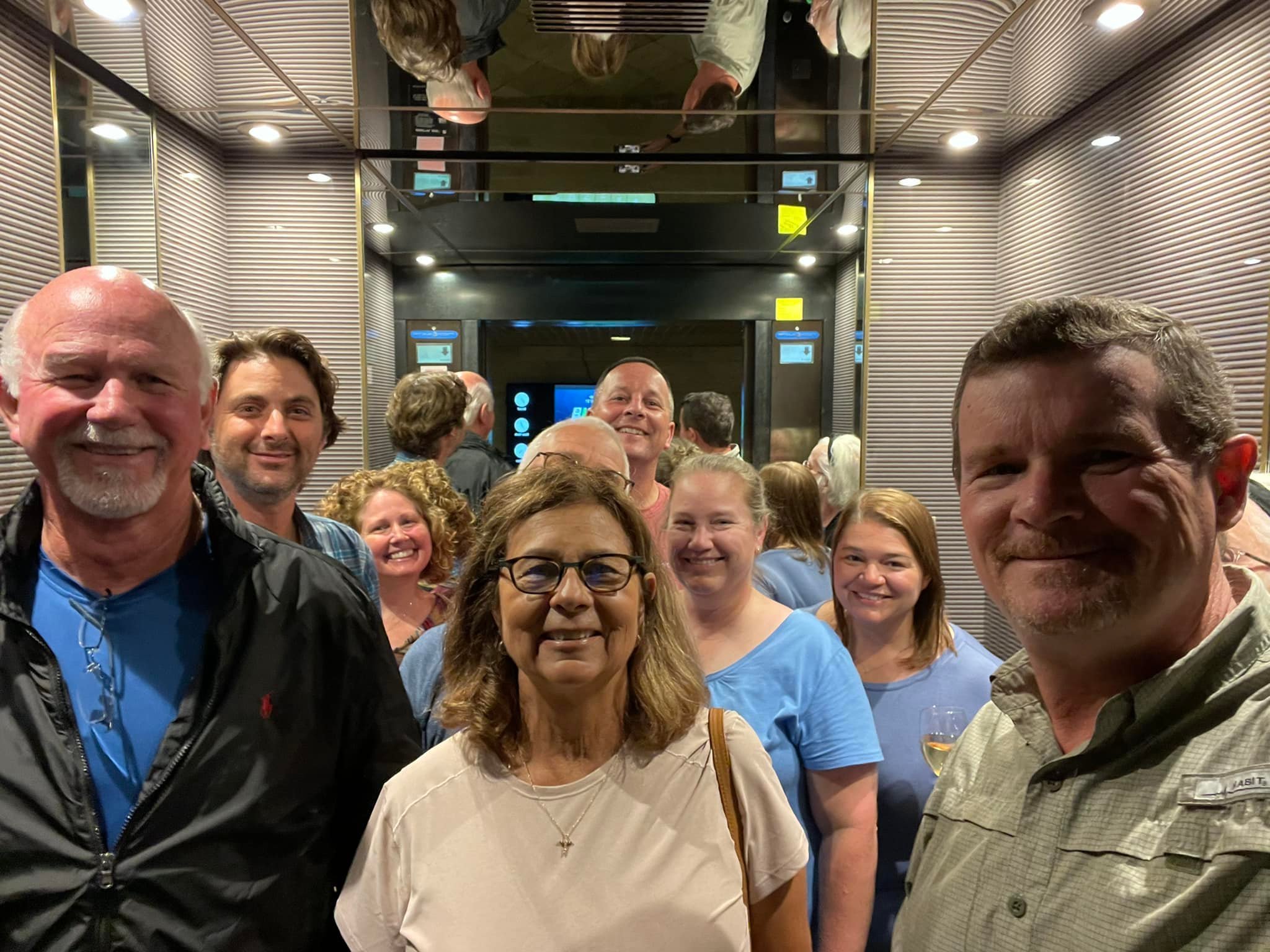
Our intrepid crew happily in the elevator after a long, busy day!
Day 6: We began our day with a trip up to the Temple Mount. We saw the vastness of Herod’s temple complex, although its structures have been replaced by the Dome of the Rock and the al Aqsa mosque. One could still envision how it might have been in Jesus’s time. Then we drove to Bethlehem, where we saw the shepherds’ fields and the Church of the Incarnation. We also visited an amazing olive wood workshop in a store. Then we returned to Jerusalem to visit the Israeli Museum, one of the top national museums in the world. There we saw the dead sea scrolls, a scale model of Jerusalem in the first century, and a number of amazing artifacts.
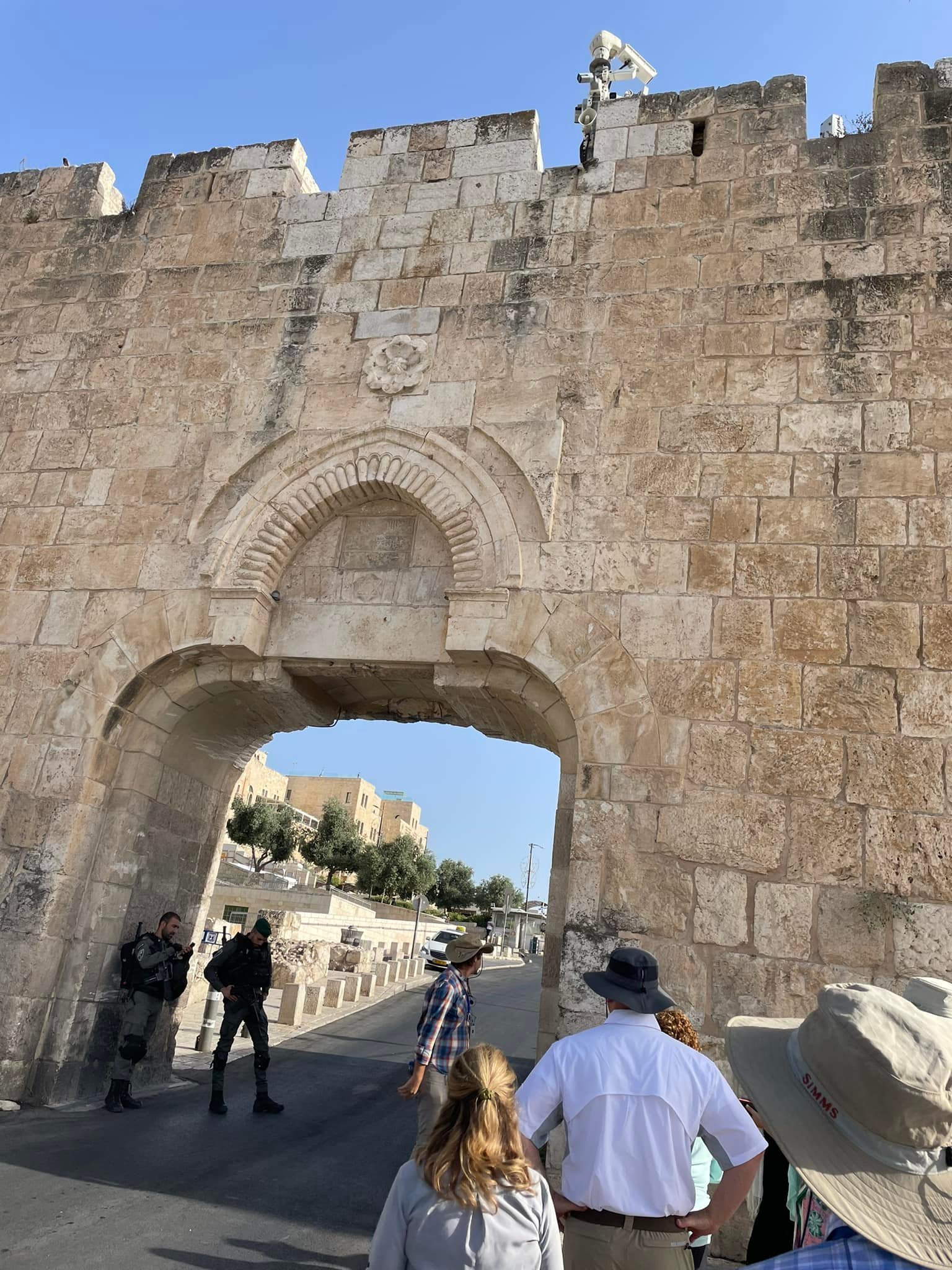
The west entrance into the Temple Mount
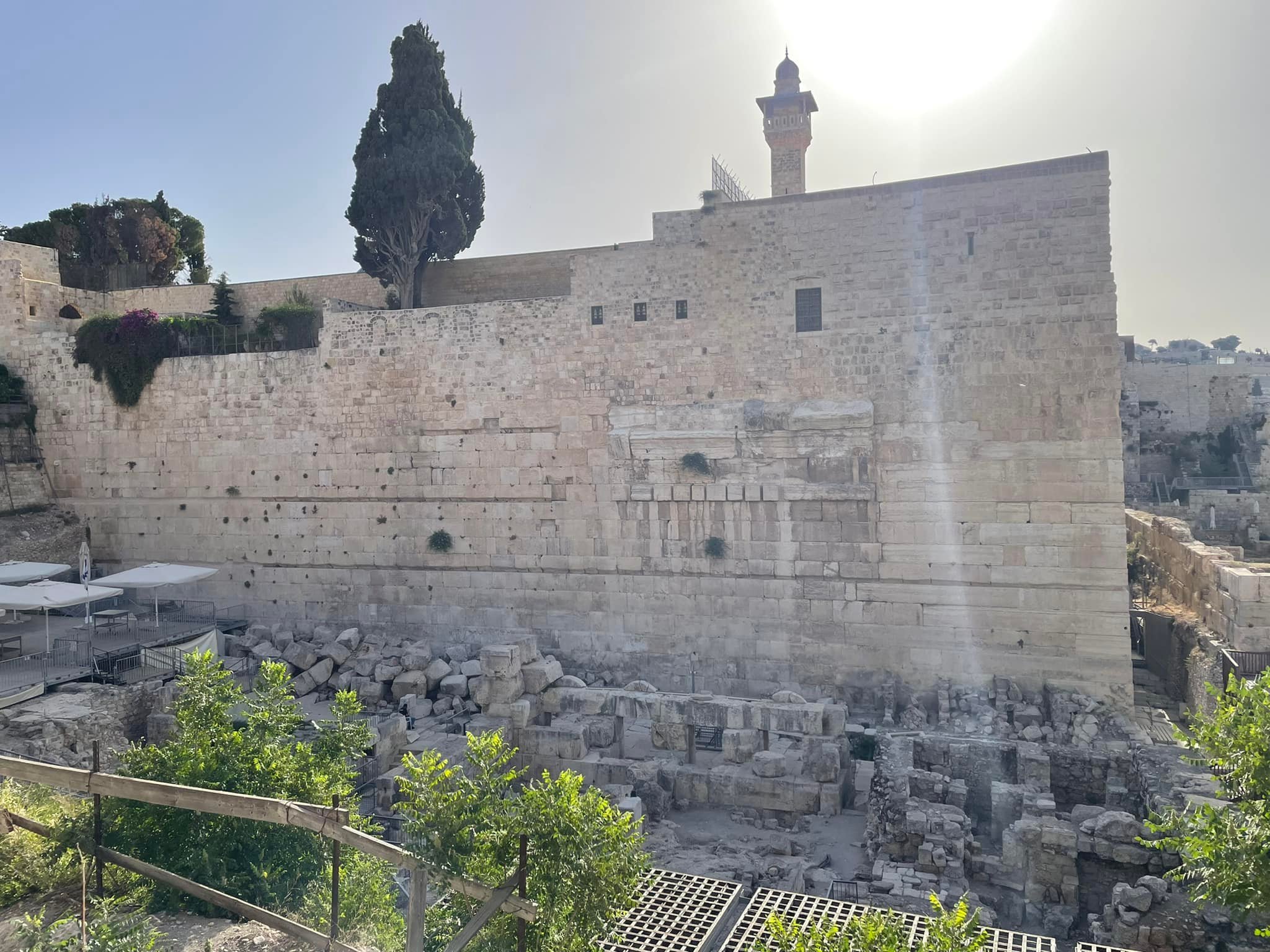
This is actually part of the western wall although not the Wailing Wall.

There are active archaeological projects going on right now on site, although not at the Temple Mount itself.
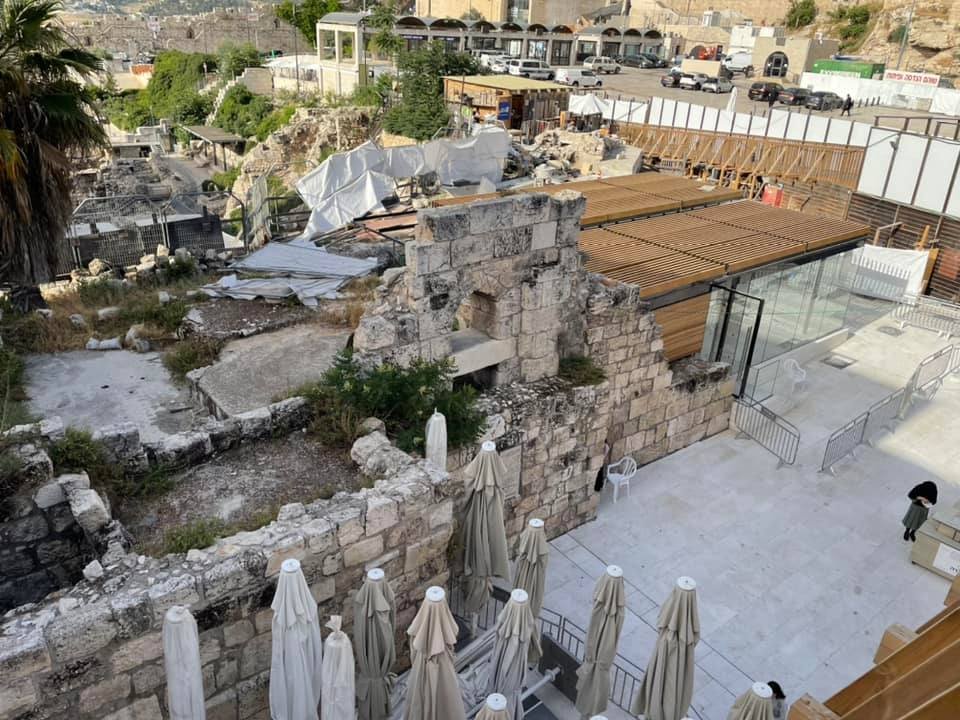
The archaeological digs. These have to be done every time anything is built in Jerusalem.
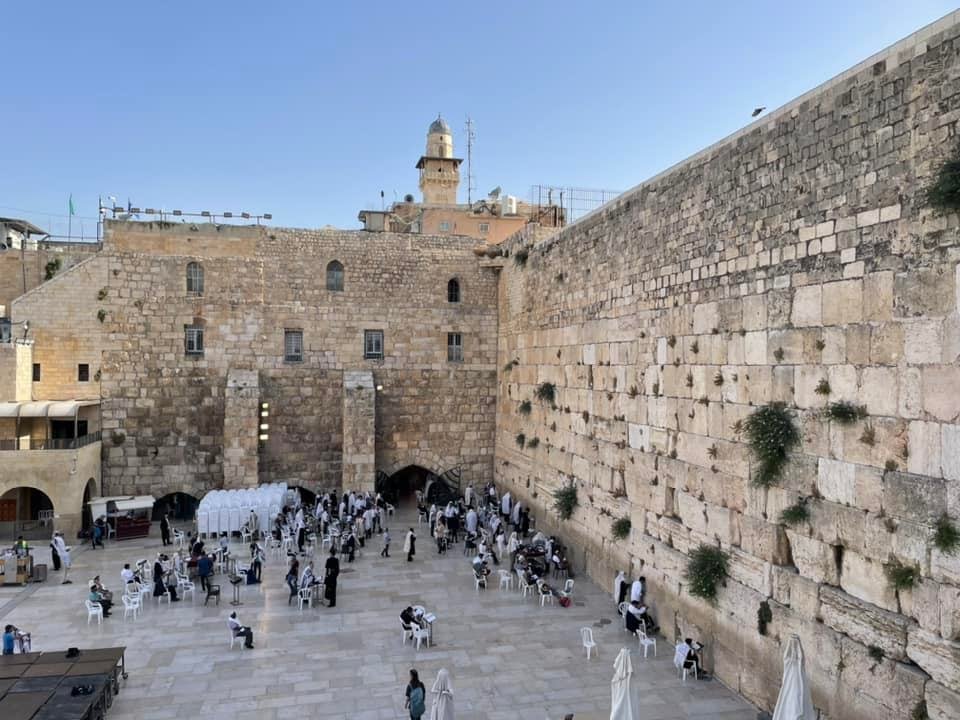
The wailing wall. We will visit it tomorrow.
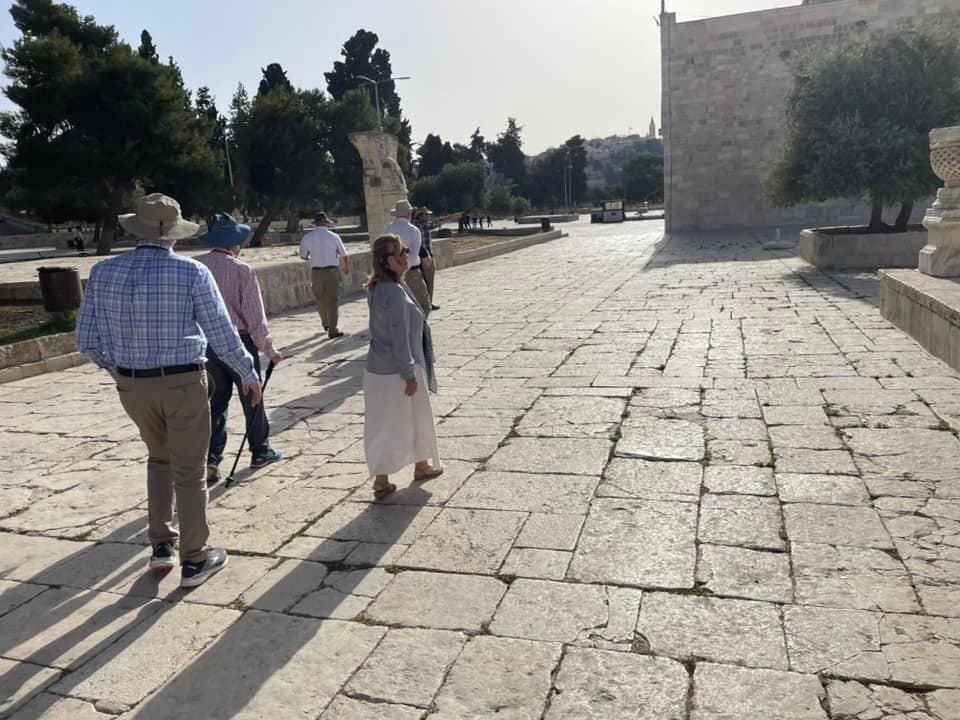
The vast Temple Mount.

Some column capitals that have been recovered from various arrows of the Temple Mount’s history.
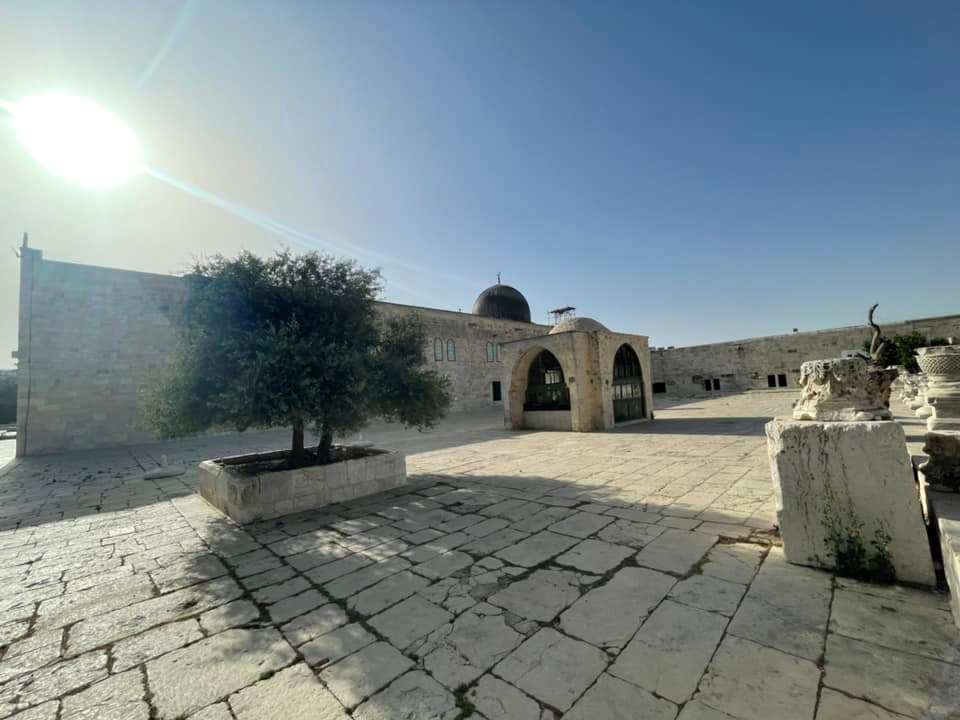
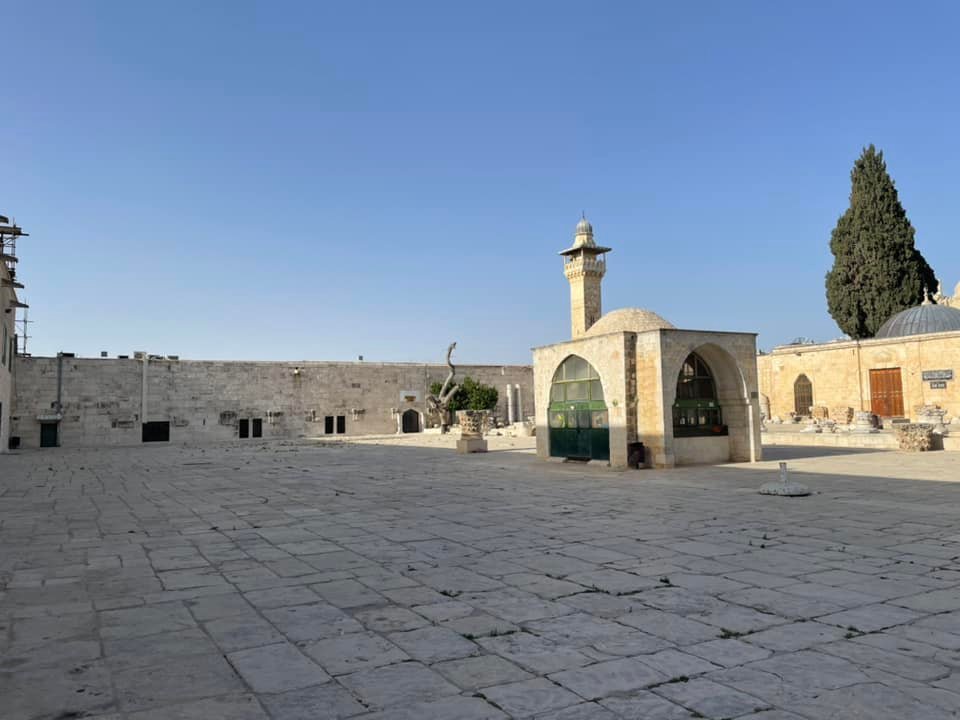
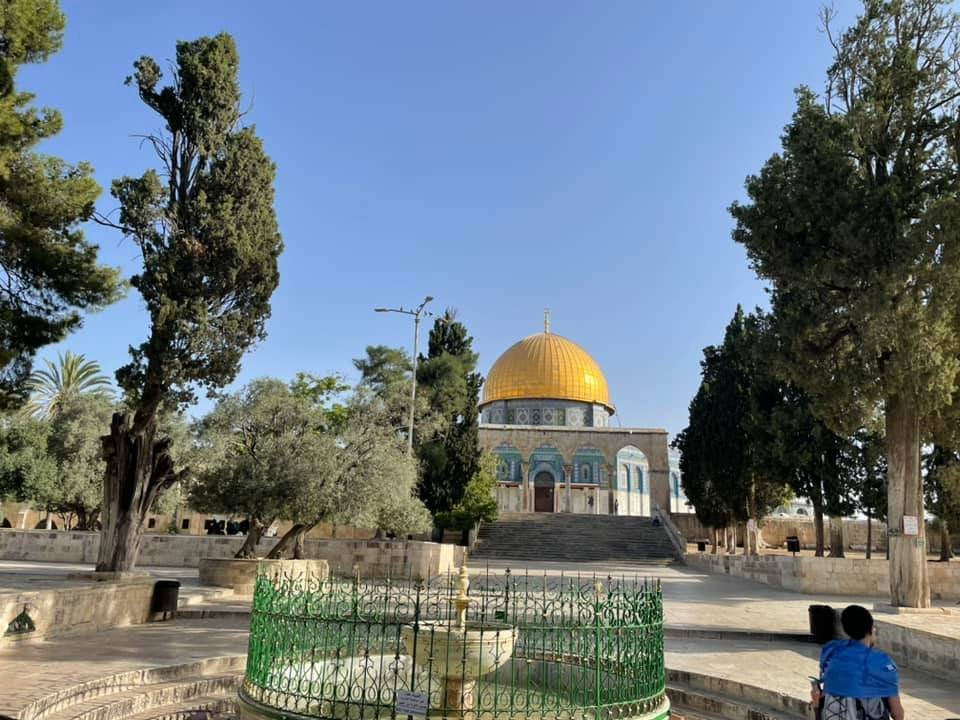
Approaching the Dome of the Rock.

This is the front of the al Aqsa mosque.
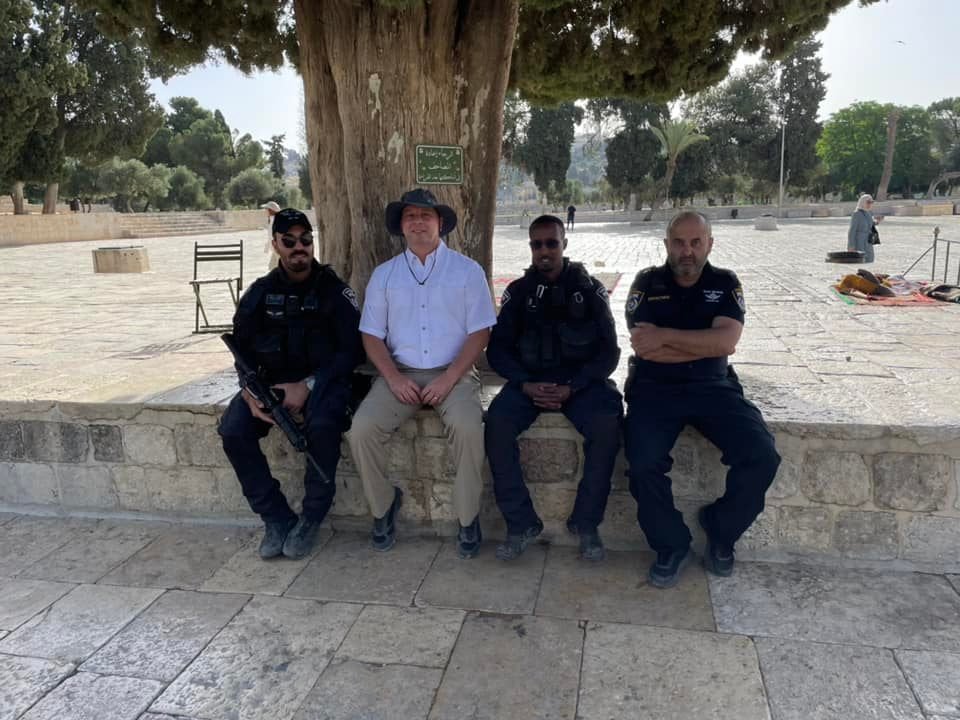
Troy found some brothers!
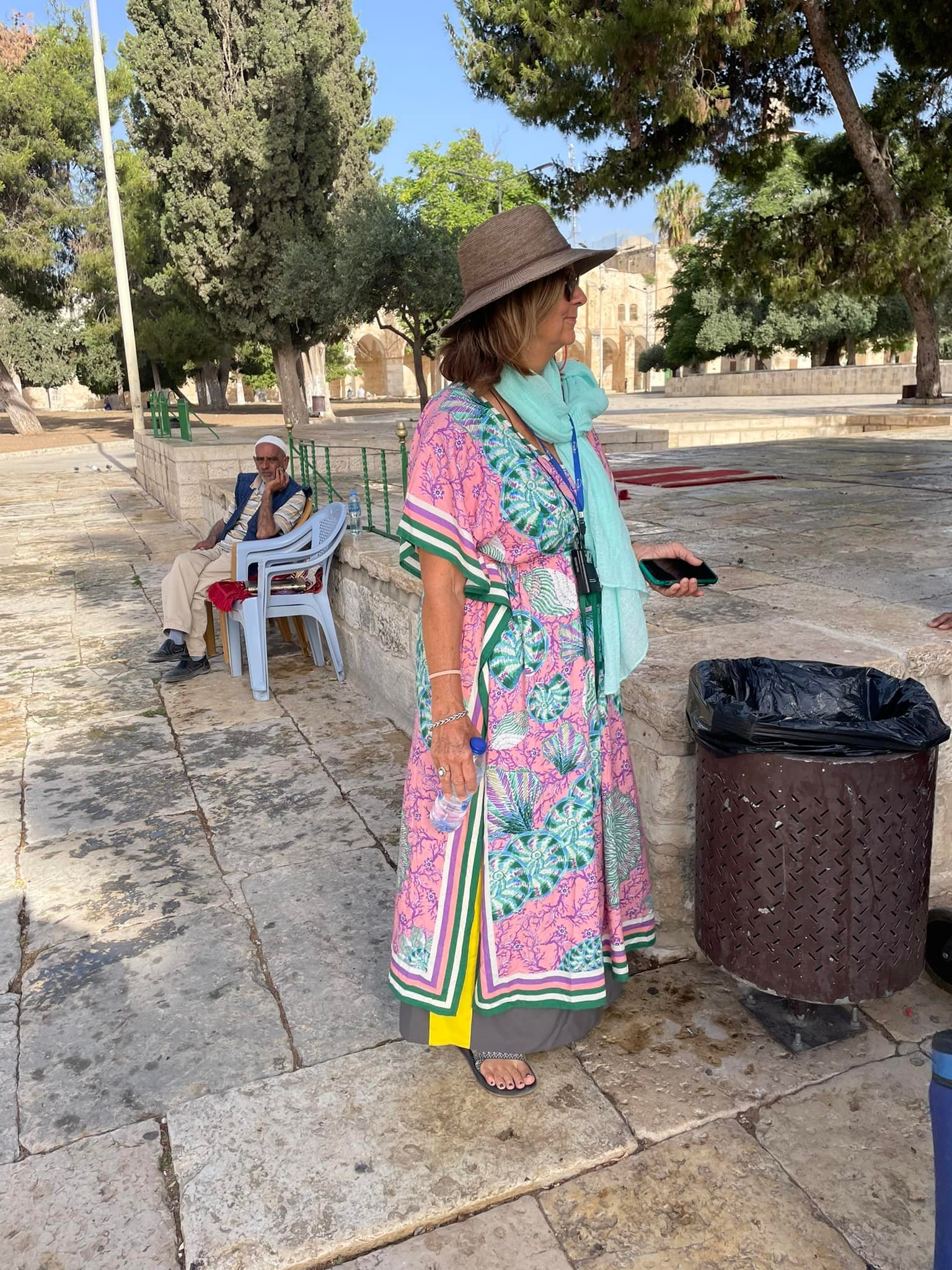
Women have to cover their shoulders and their legs all the way down to their ankles.
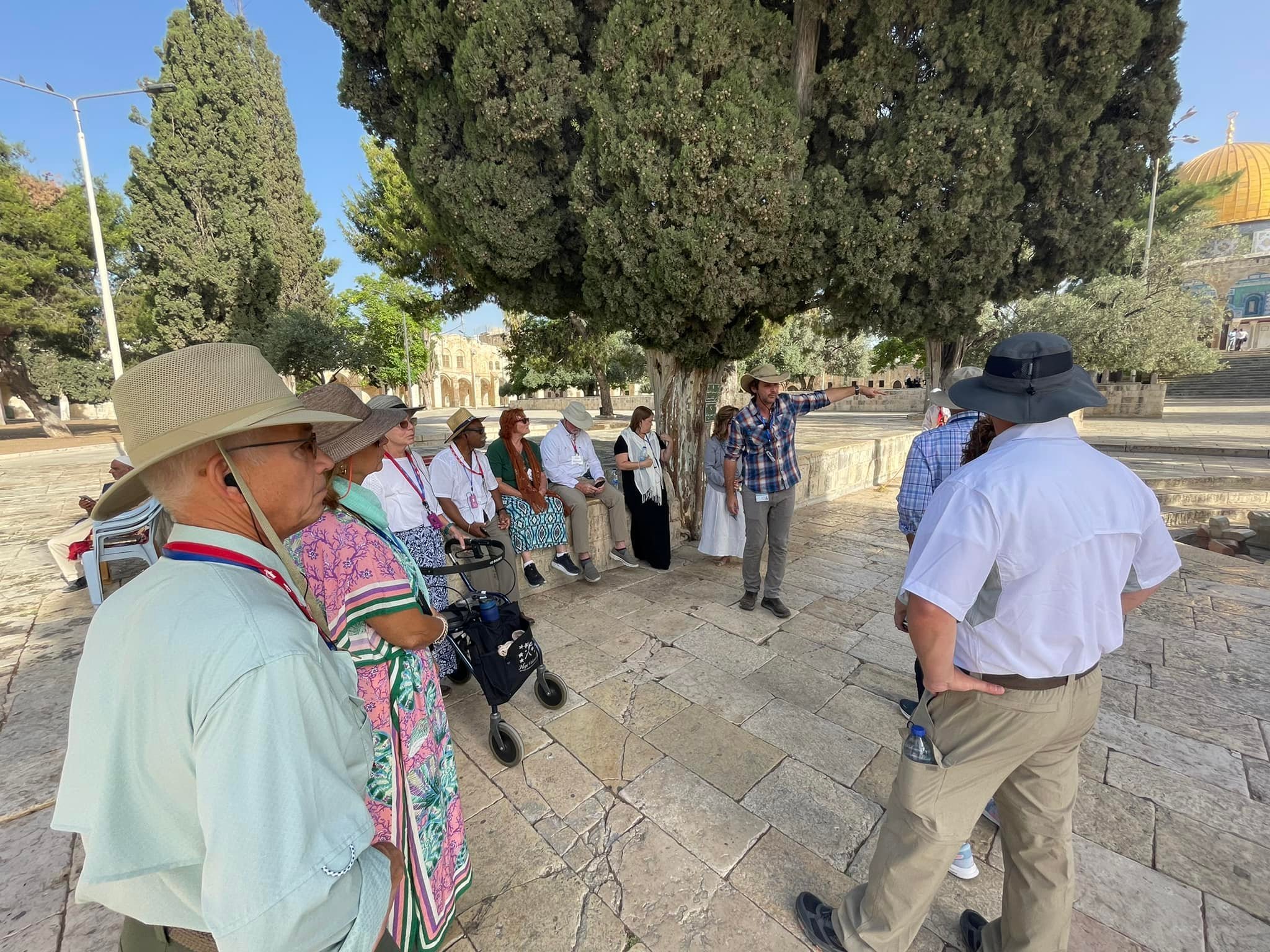

This is a fountain where Muslim pilgrims will wash their feet before entering the Dome of the Rock.
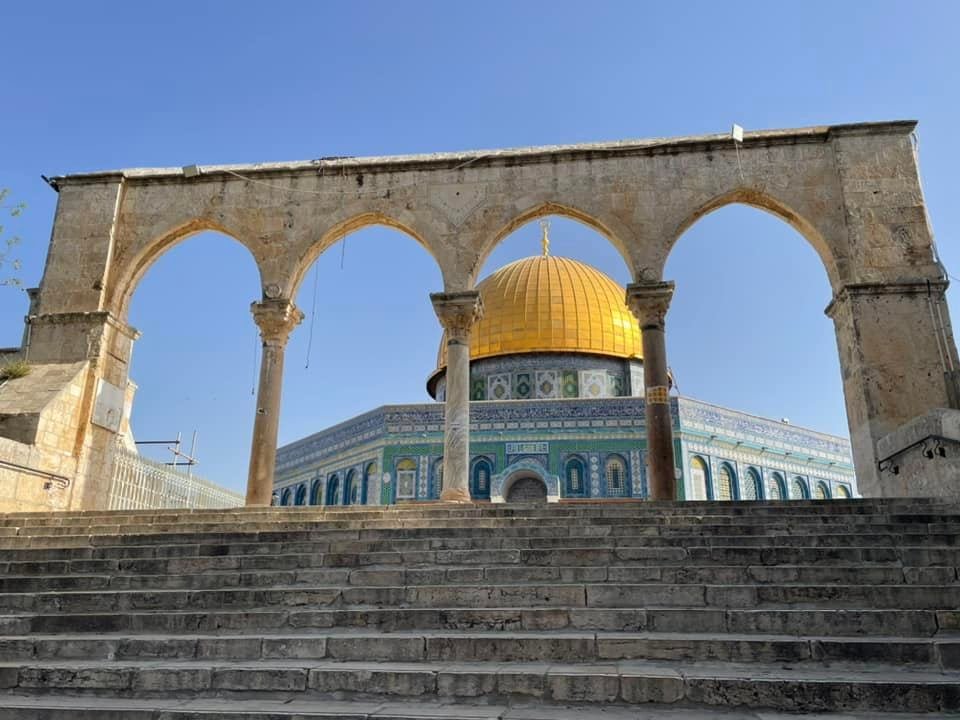
Getting closer!
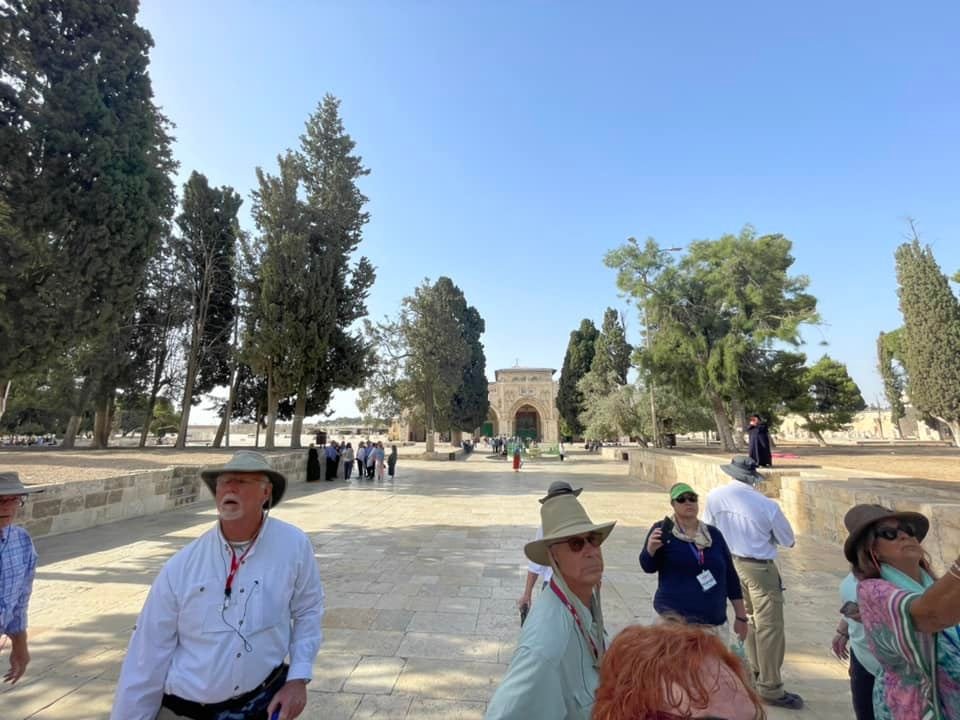
Let’s give some perspective as to the size of the Temple Mount looking back towards our al Aqsa mosque.
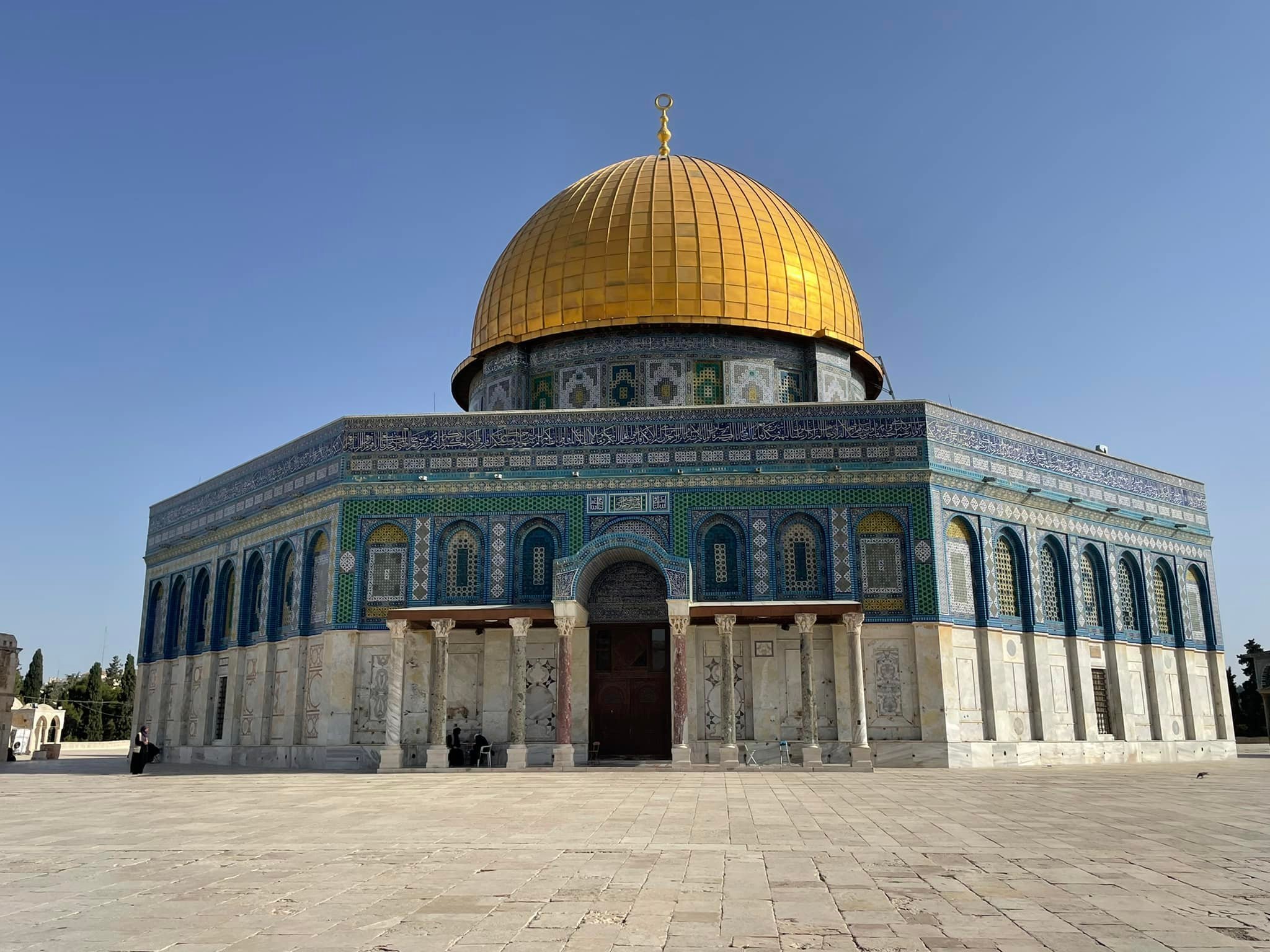
The stone was originally built with actual gold. The gold was harvested during some lean times. It is not a mosque. It is a memorial to the spot where Abraham almost sacrificed Isaac, and where the altar over the holy of holies stood in Solomons Temple. Muslims believe it is where Mohamed had his night Journey, were he encountered many of the patriarchs and Mary even. Jewish tradition also holds that it’s where the creation began.
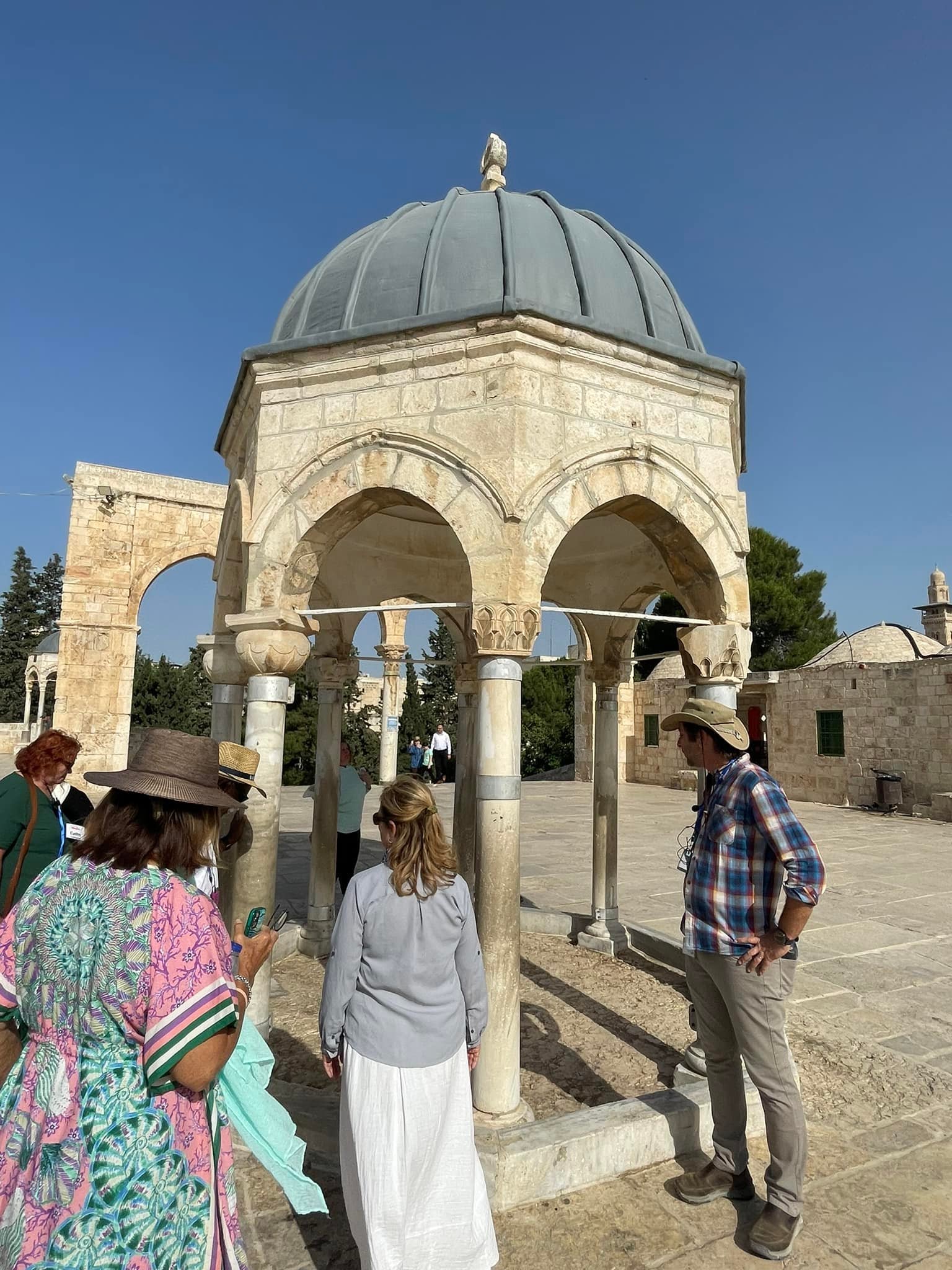
This little side chapel covers a section of the actual bedrock upon which patriarchs back to Abraham and Melchizedek would have walked.
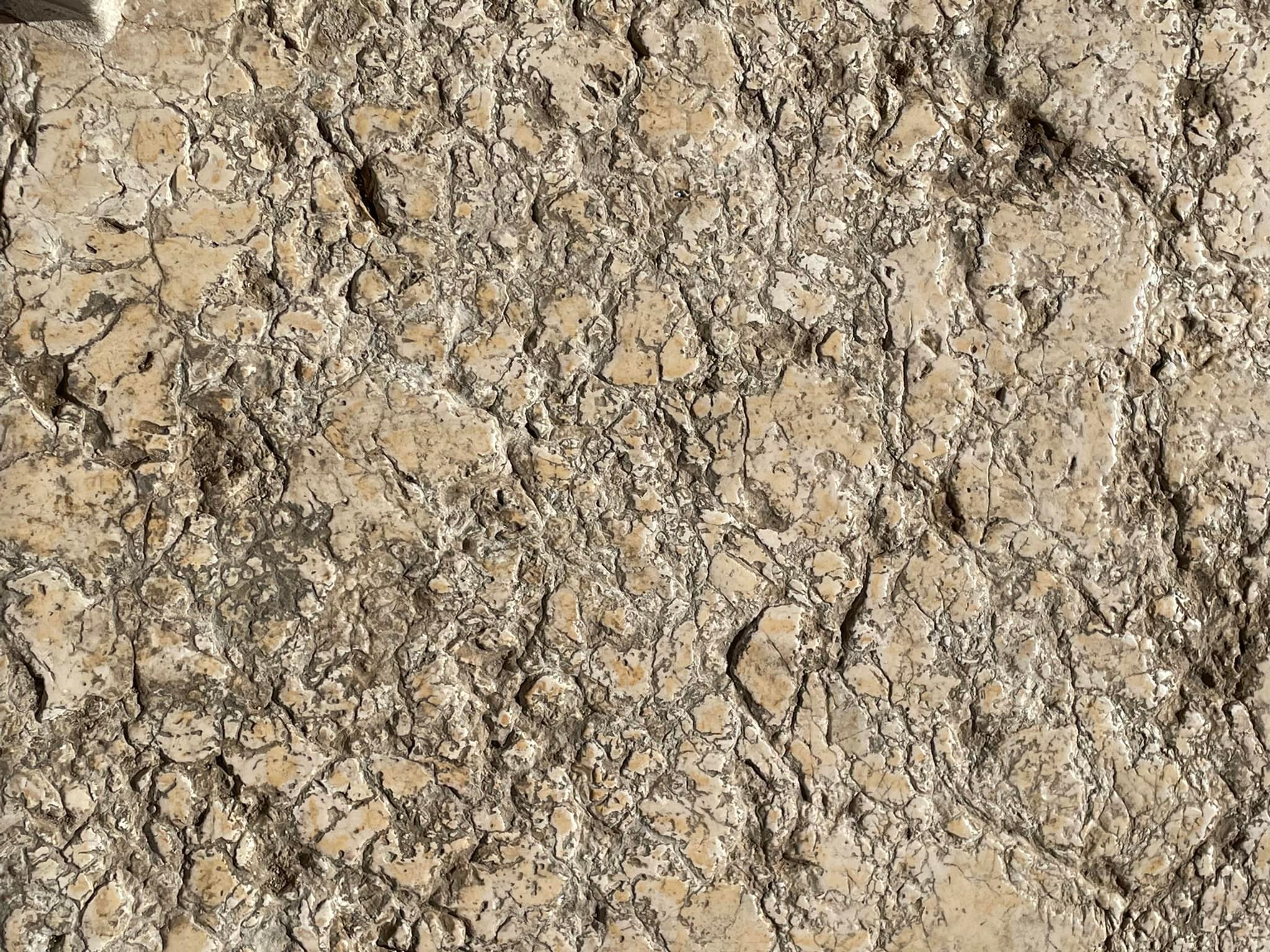
This is that bedrock. And yes you can walk on it or touch it today.
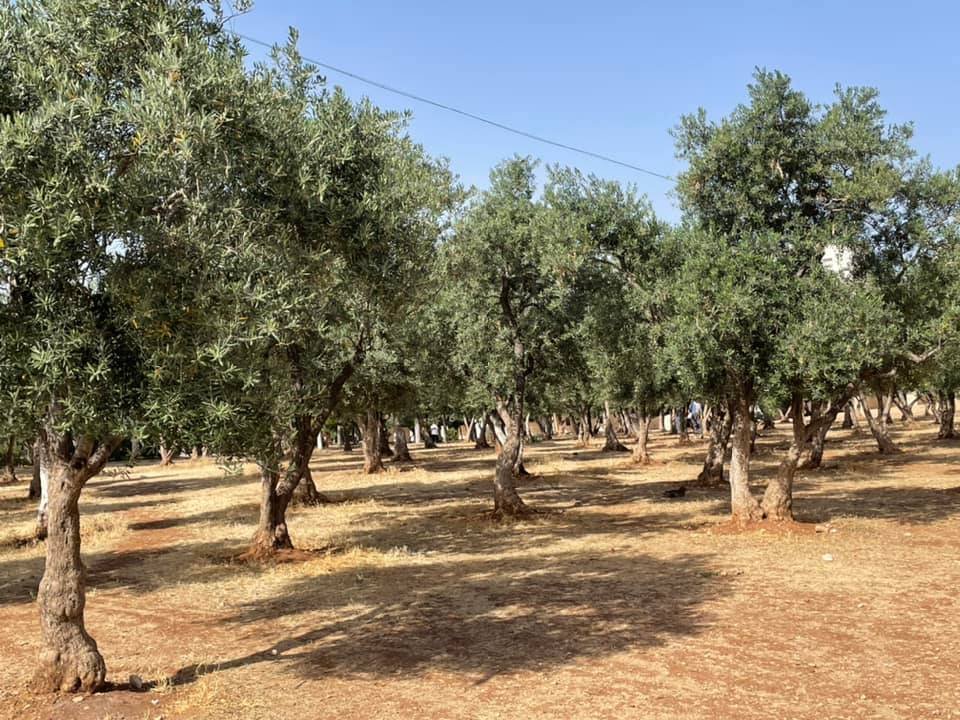
This is an olive grove growing next to the Temple Mount.
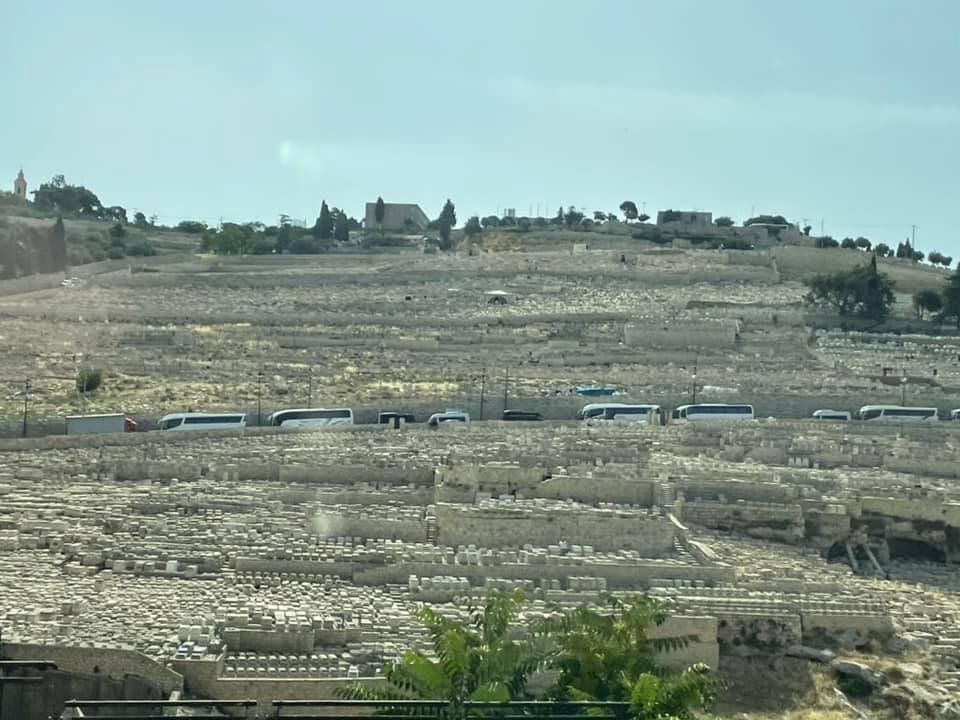
This is a cemetery on the Mount of Olives. Over 70,000 Jewish graves are on the mount and they are packed in very tightly.
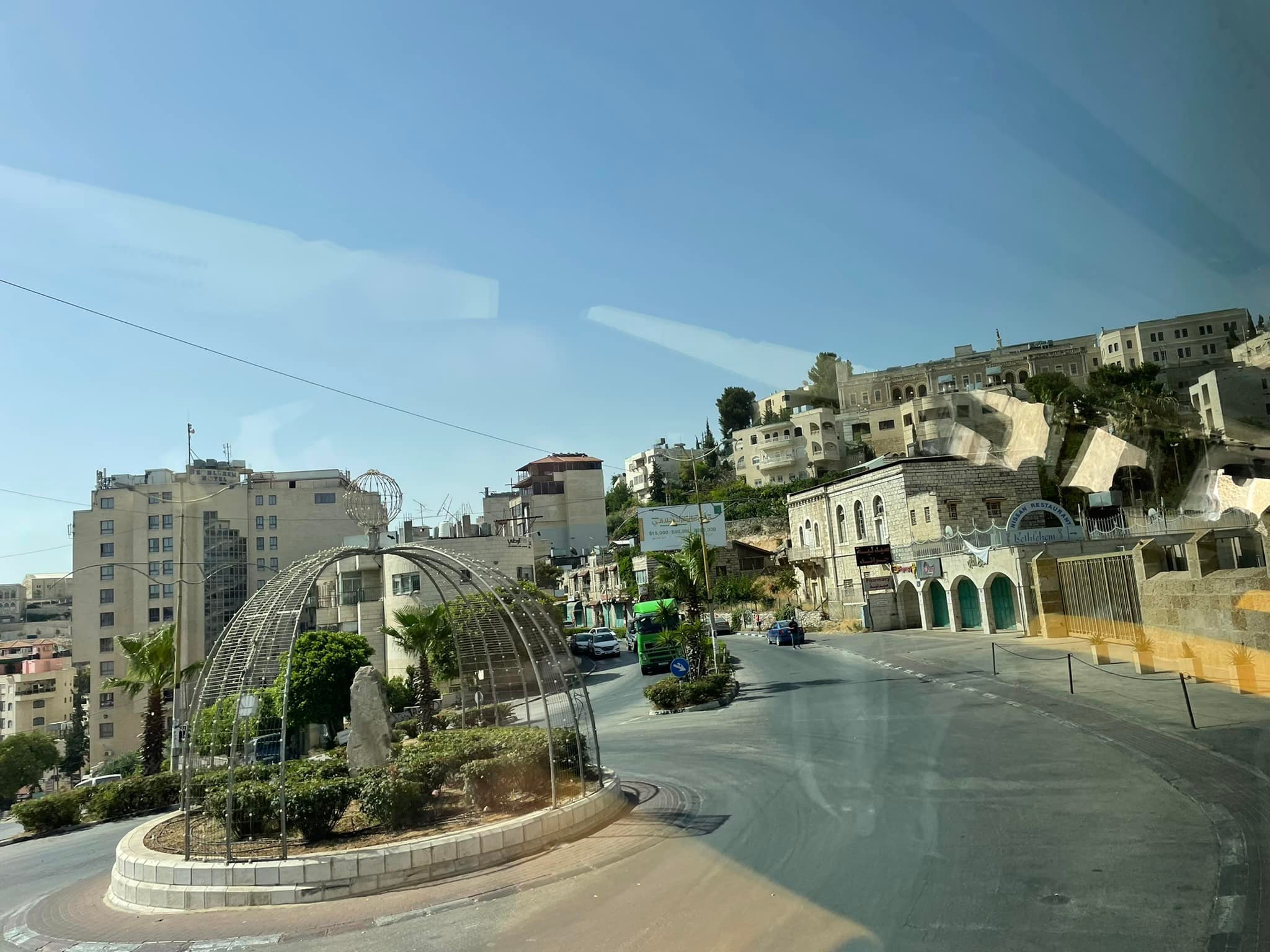
“O Little town of Bethlehem…” Is now a very busy big city!
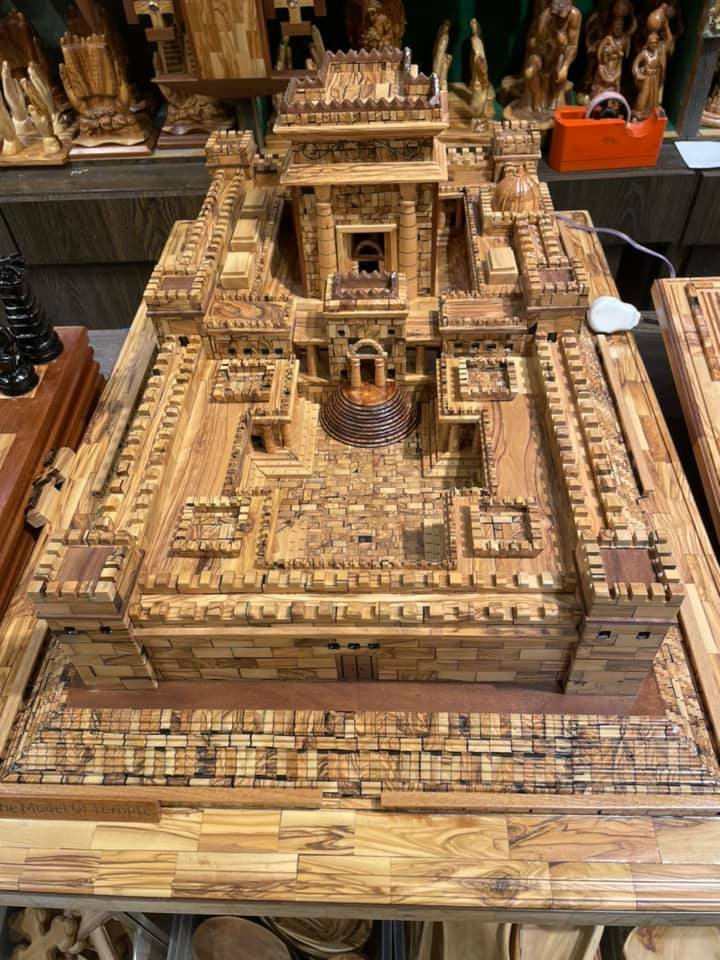
Here is a sample of their excellent olive woodwork. This is a scale carving of the Temple Mount.

And hey, they have the Ark of the Covenant too!
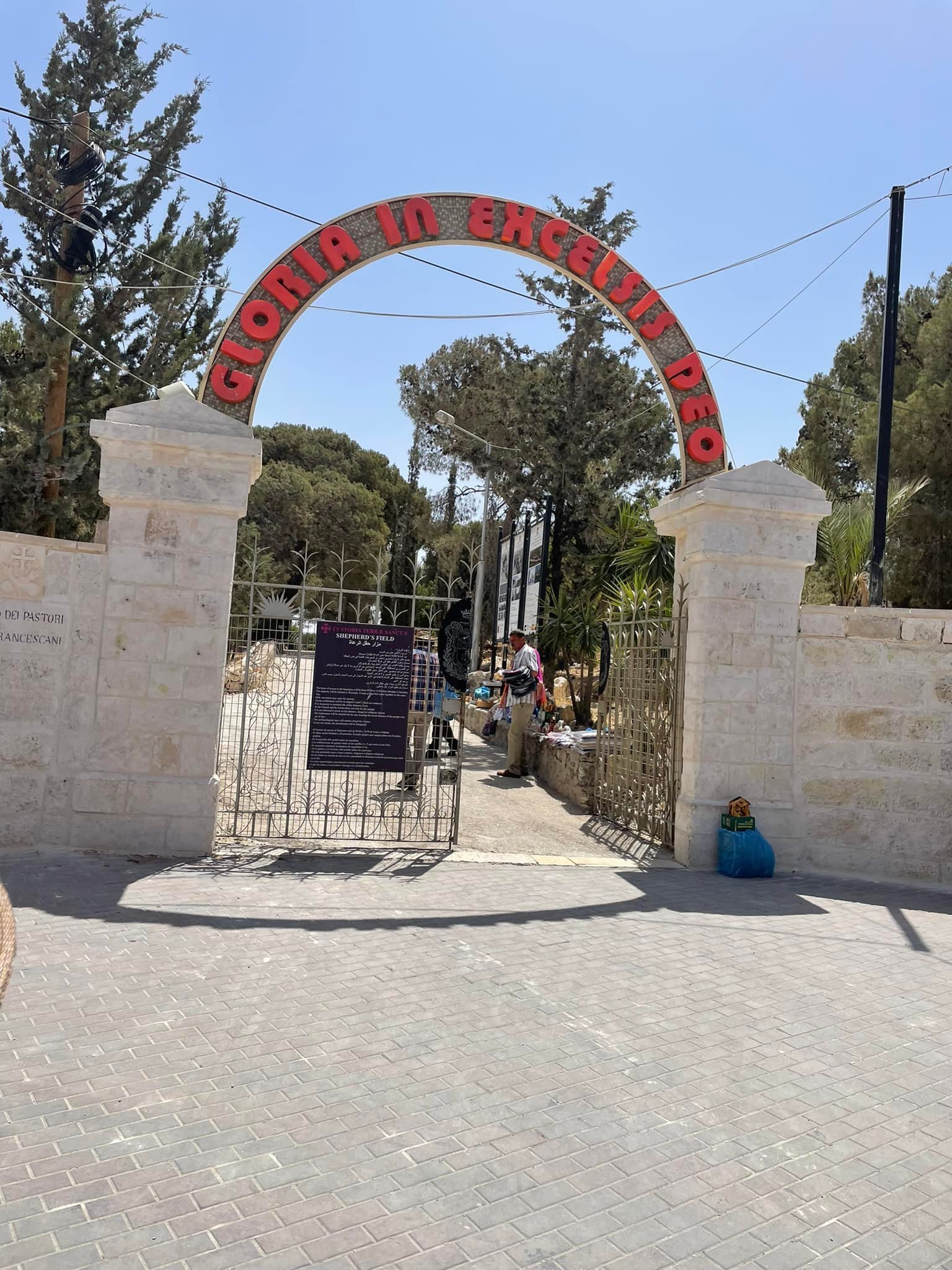
The entrance to the shepherds’ fields.

The entrance is a long and very beautiful path.
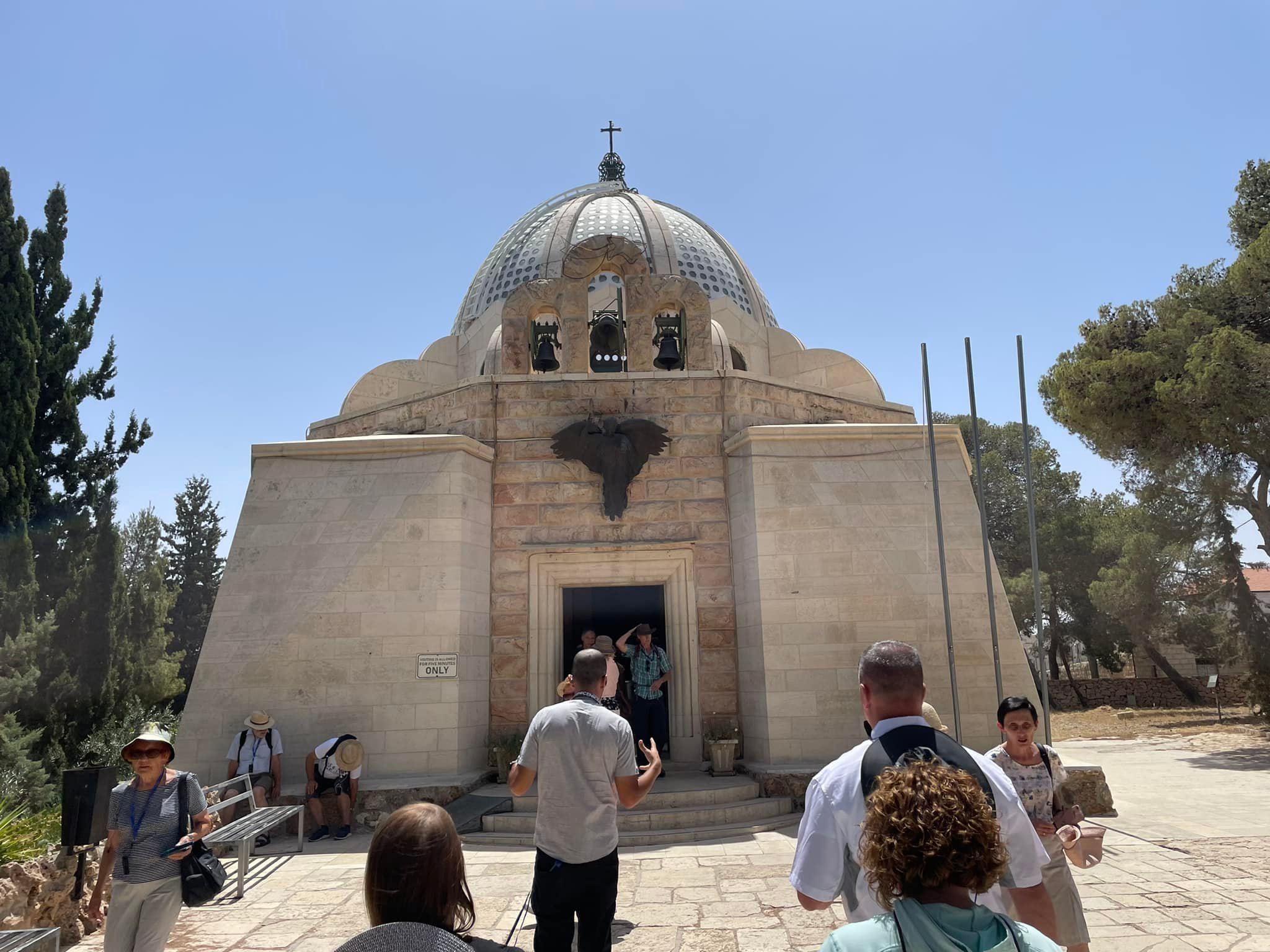
This shrine to the Shepherds being the first to receive the good news of Christ being born was built by the Roman Catholic Church, designed by an Italian architect.
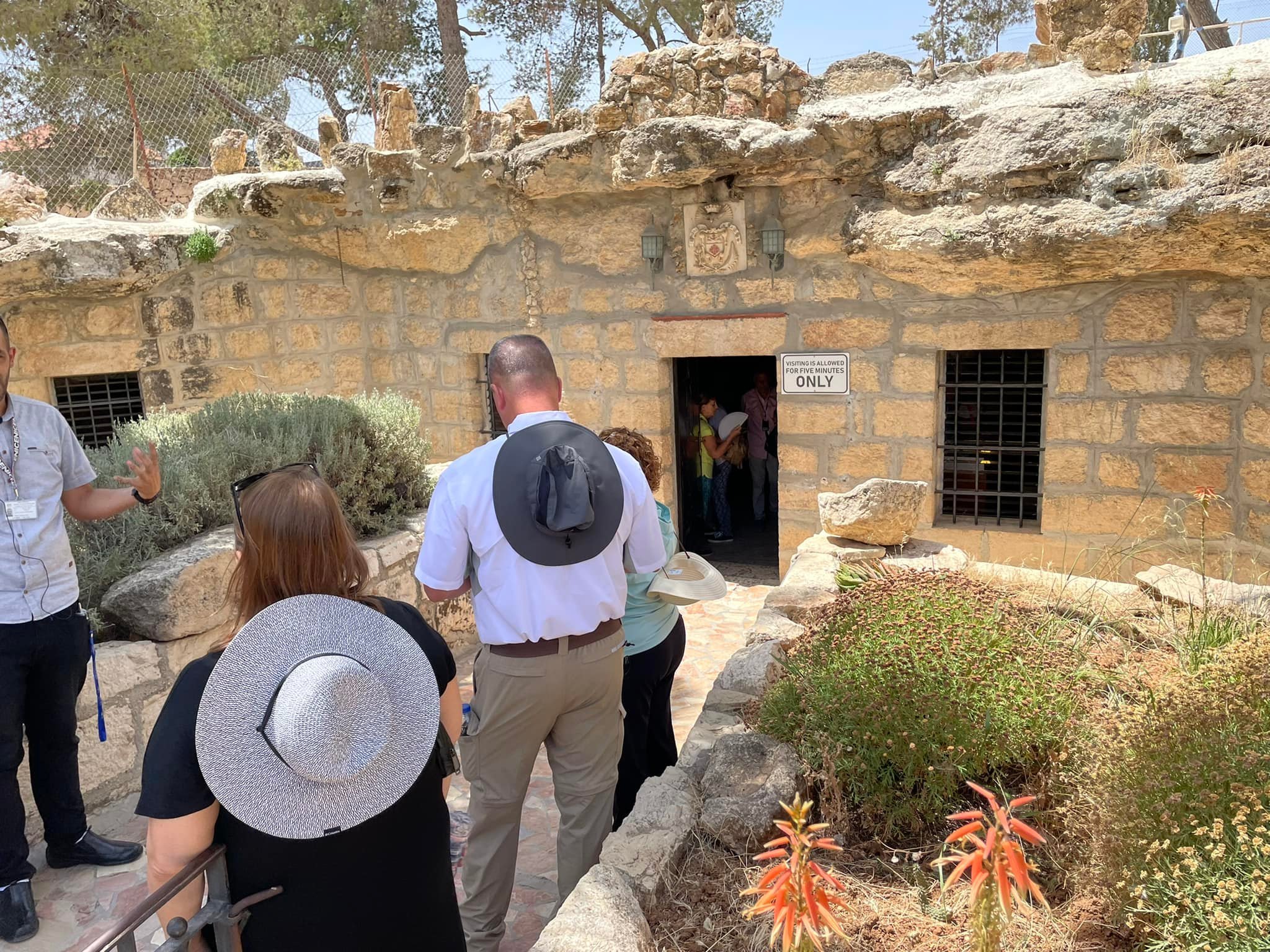
The shepherds in that region typically lived in caves which are plentiful in the area. This example is just one, but it’s one that has been used as a holy place for centuries.
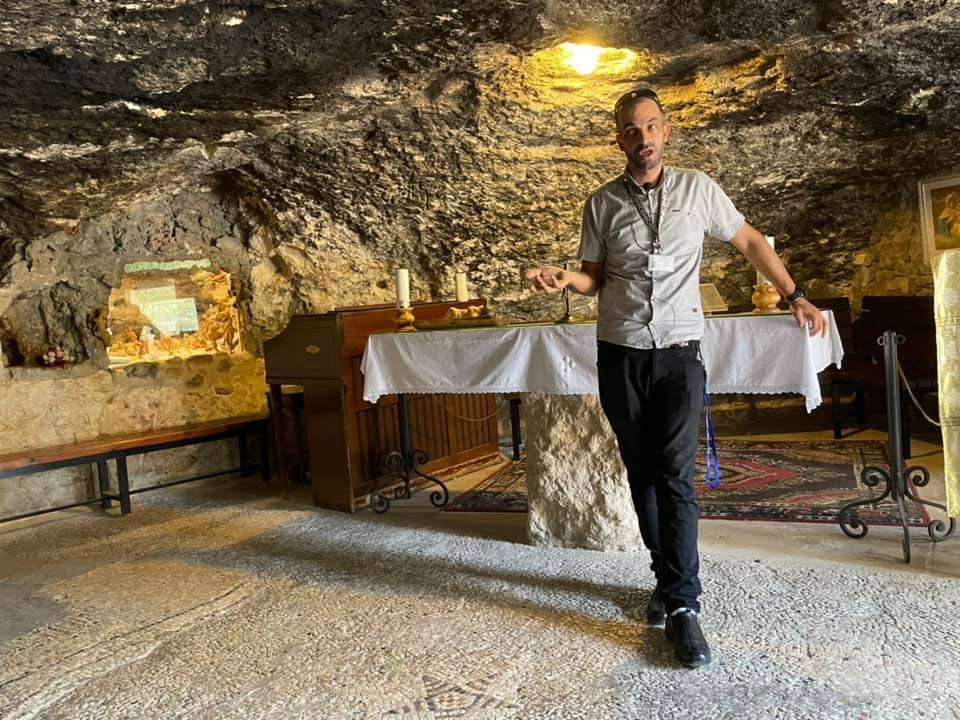
Bethlehem is in Palestinian territory, the West Bank, so we had to have a Palestinian guide lead us through the area. Ramzi is also part of the Nissan family, and a Greek Orthodox Christian.
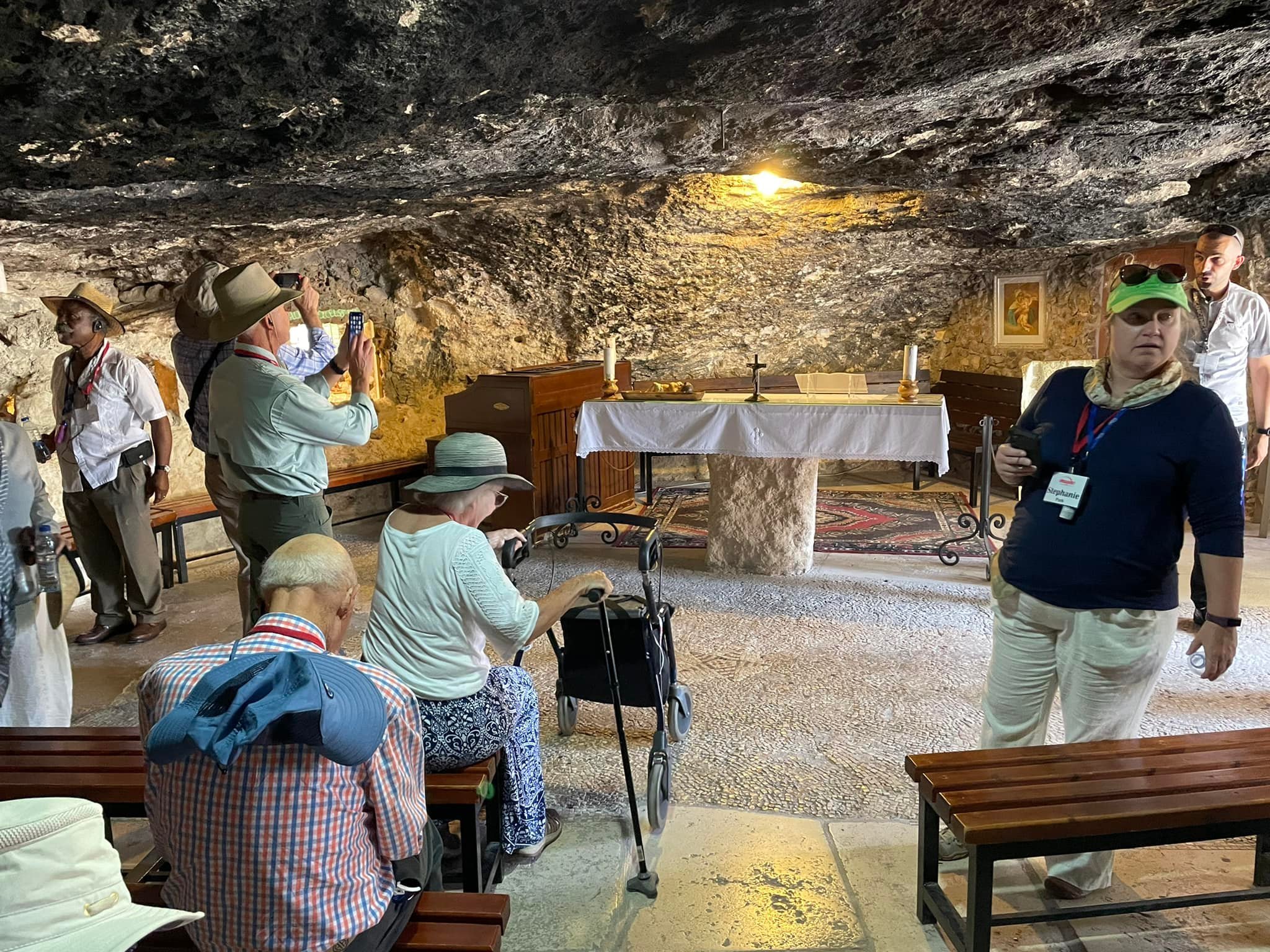
Note the altar, this cave is used regularly for worship.
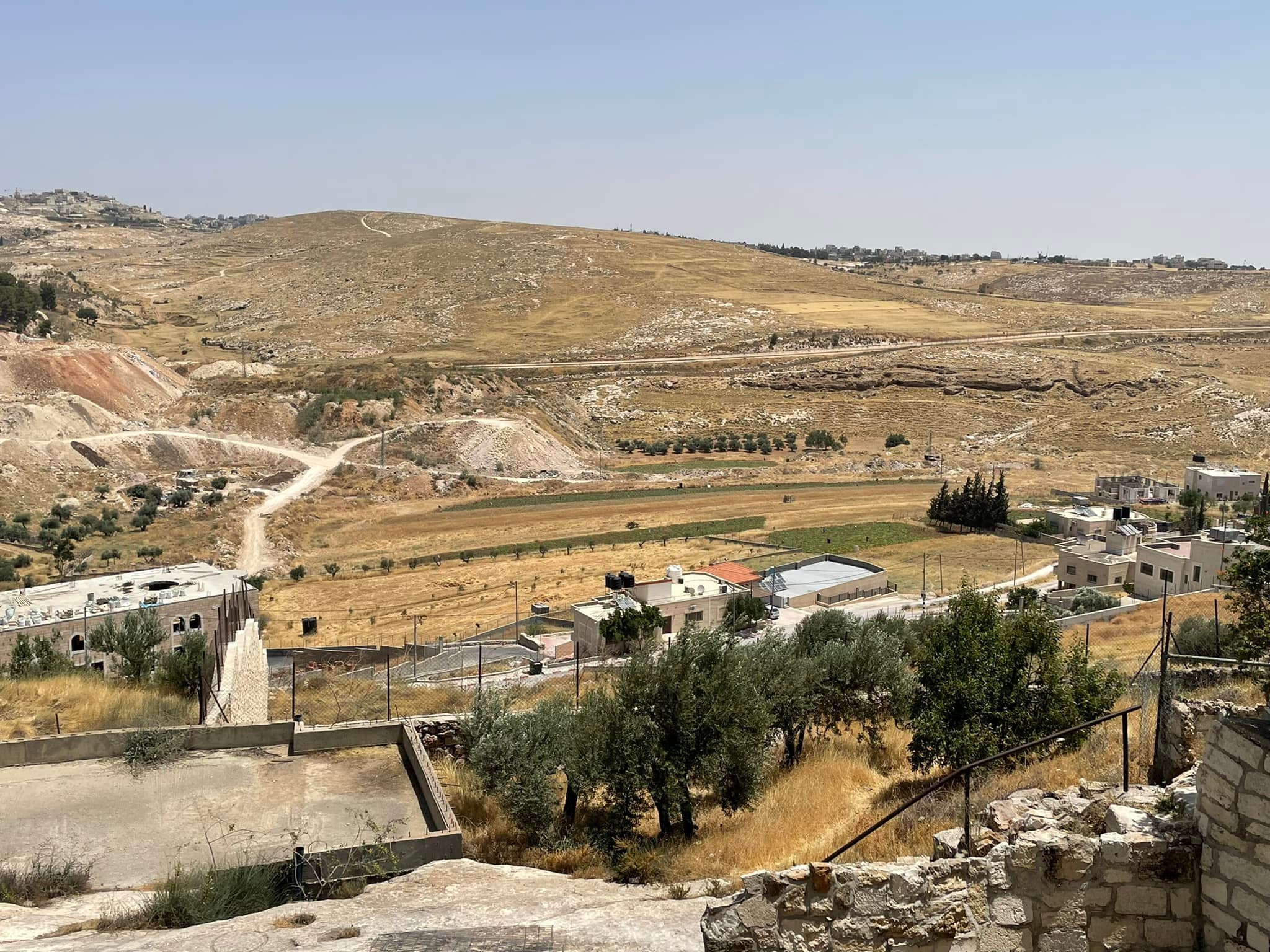
The shepherds fields, part one.

The shepherds fields, part two. These fields once belonged to Boaz, the Husband of Ruth and the great grandfather of King David, and therefore an ancestor of Jesus.
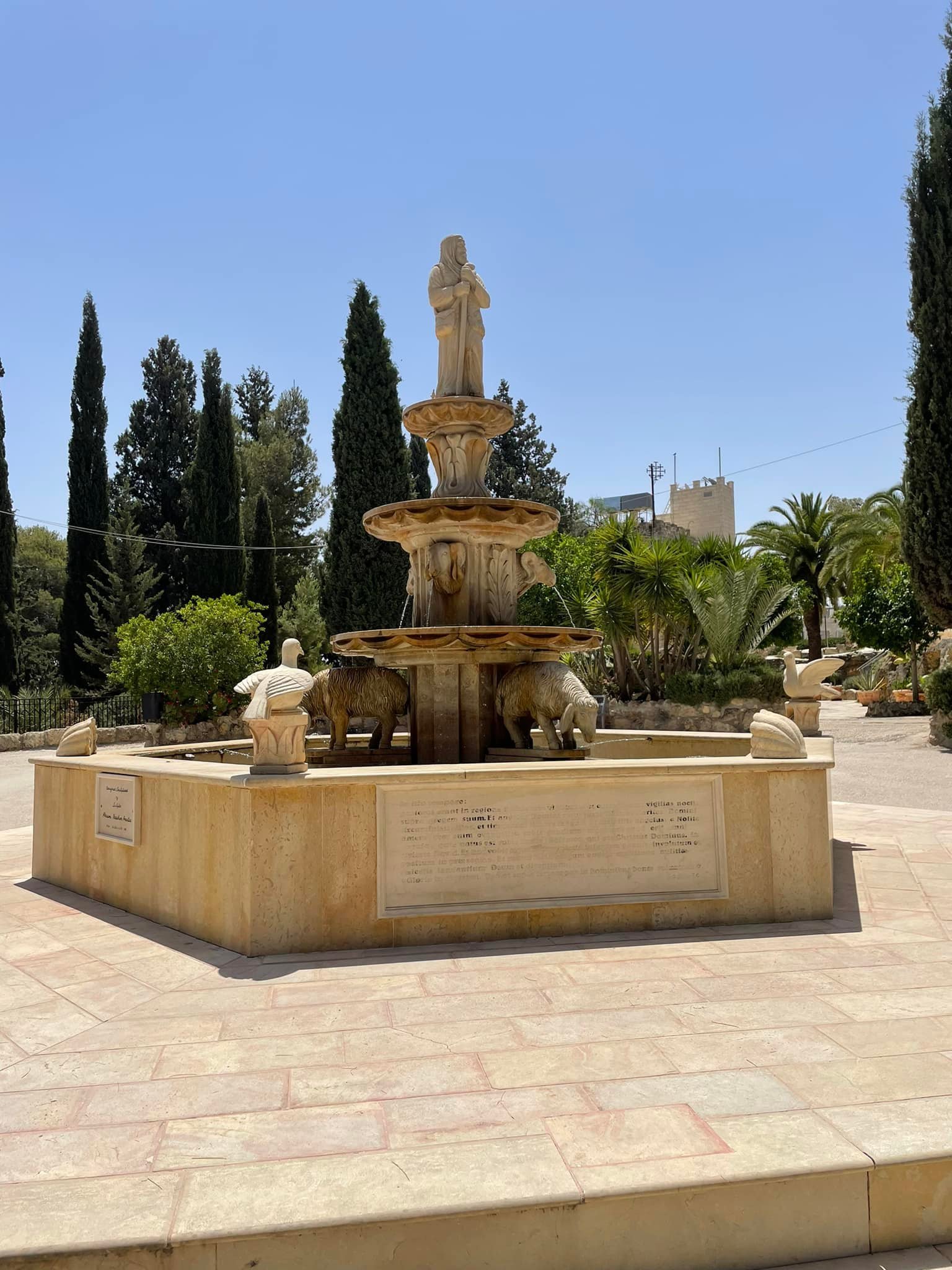
A fountain dedicated to the shepherds.
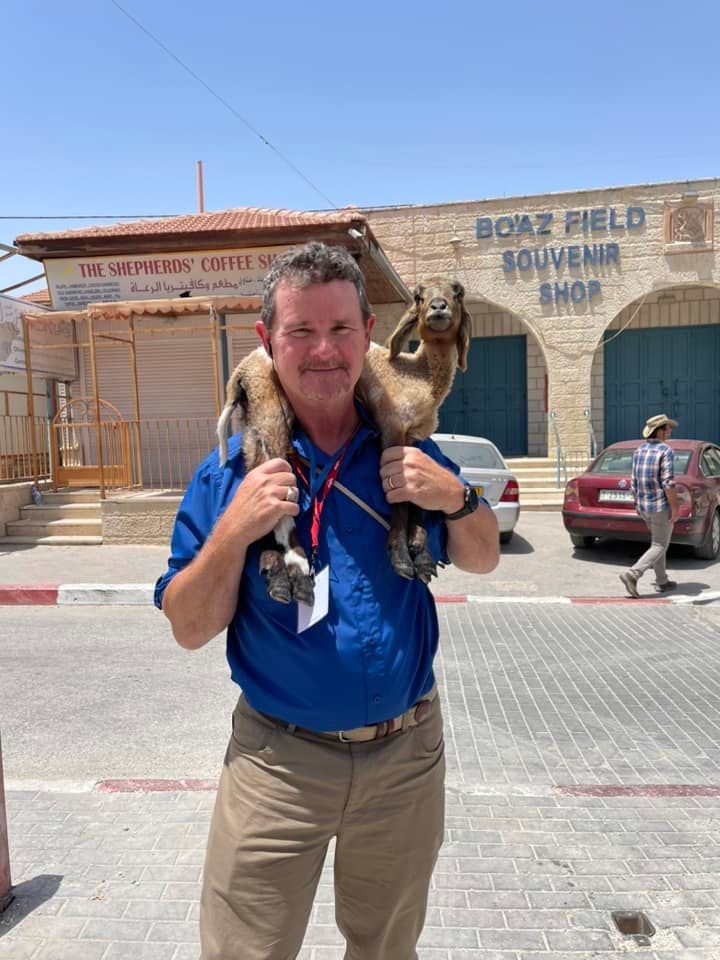
Demonstrating my assistant Shepherd skills!
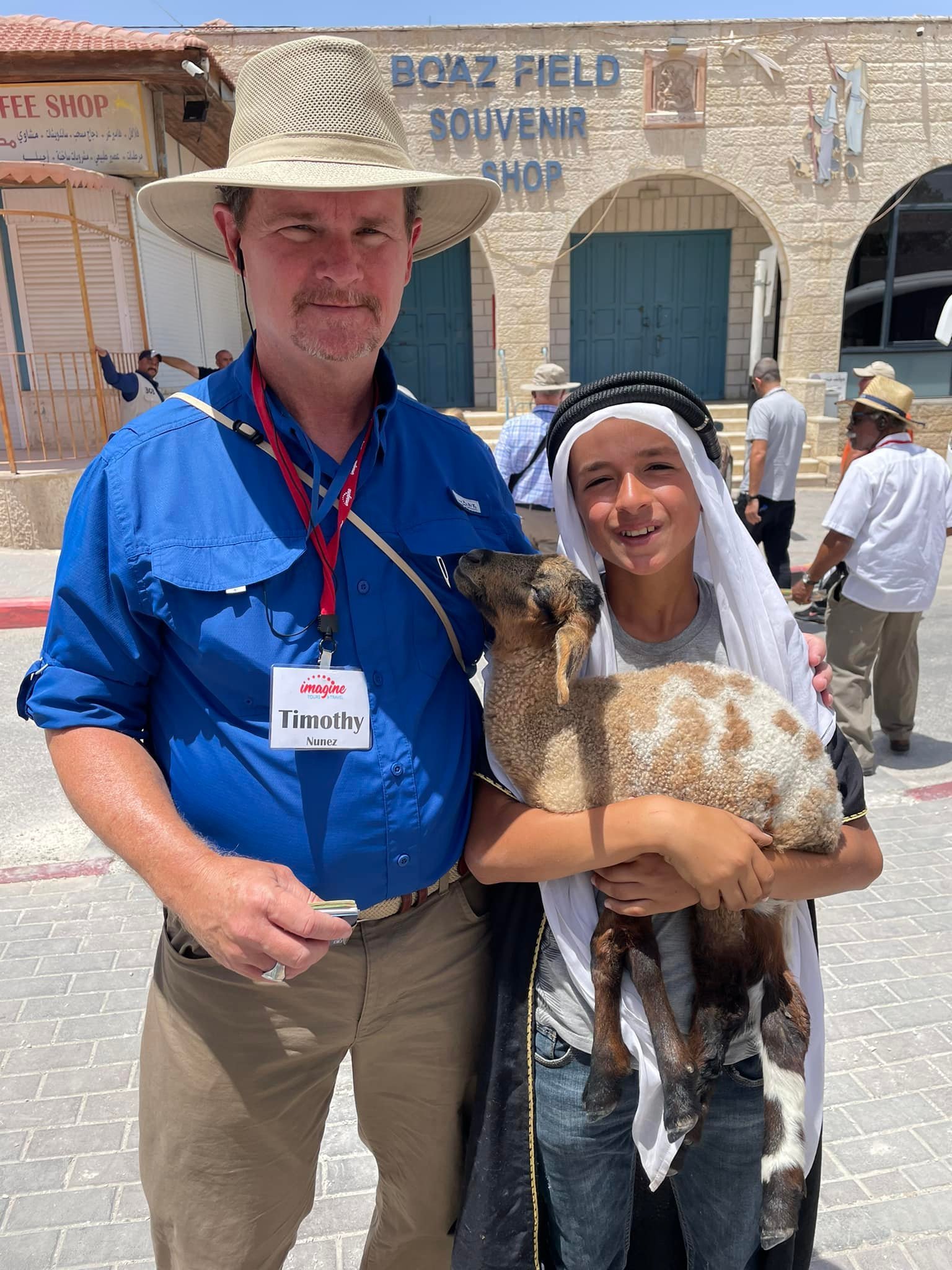
This boy is an actual Bedouin.
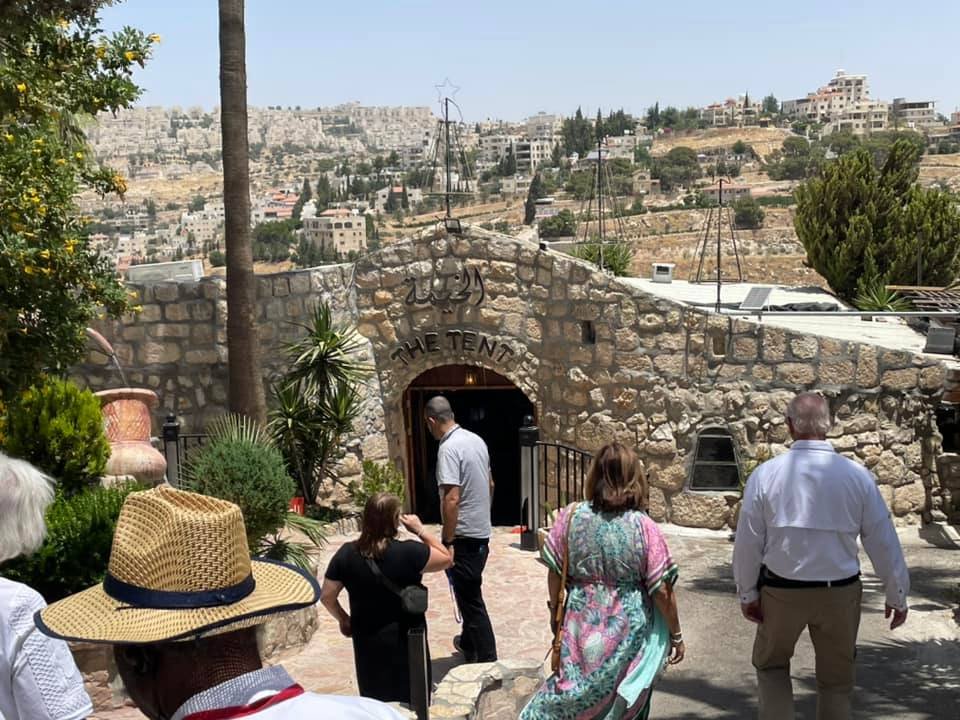
And we had lunch at the Shepherd‘s Tent restaurant. The entry looks kind of like a cave, doesn’t it?
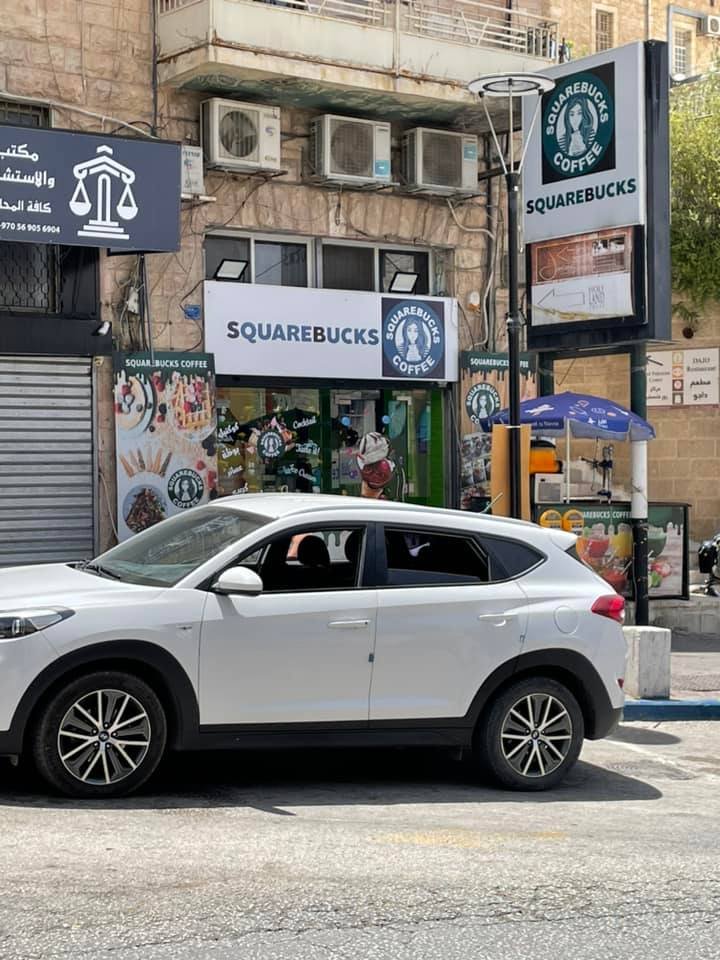
Not quite Starbucks, part one.
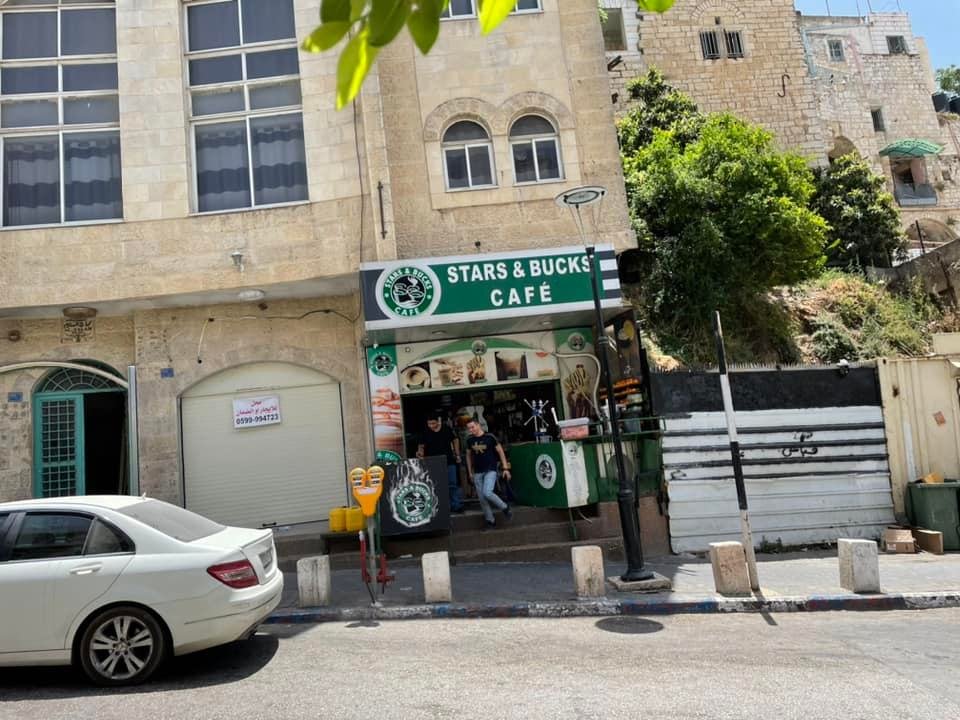
Not quite Starbucks, part two.
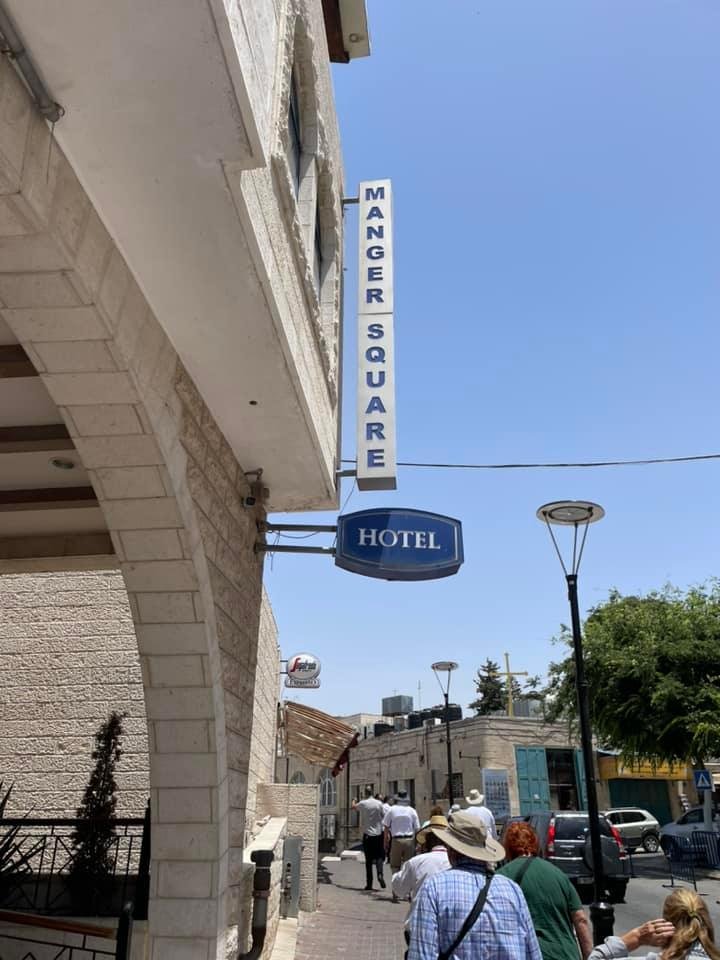
This is apparently not the inn where Mary and Joseph could not get a reservation.
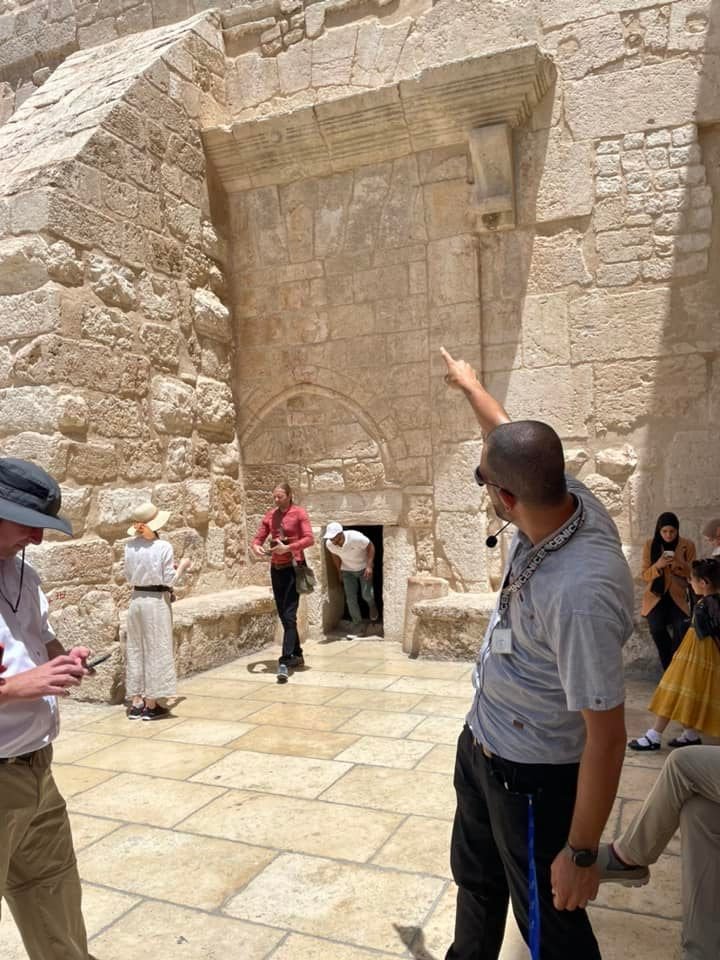
The entry to the Church of the Incarnation used to be quite high and has been lowered several times across the centuries. Now it’s only about 4 feet high! The church was originally built in 325 A.D. by emperor Constantine and his mother Helena. It was destroyed by the Samaritans and then rebuilt by the emperor Justinian in the sixth century. It has stood ever since.
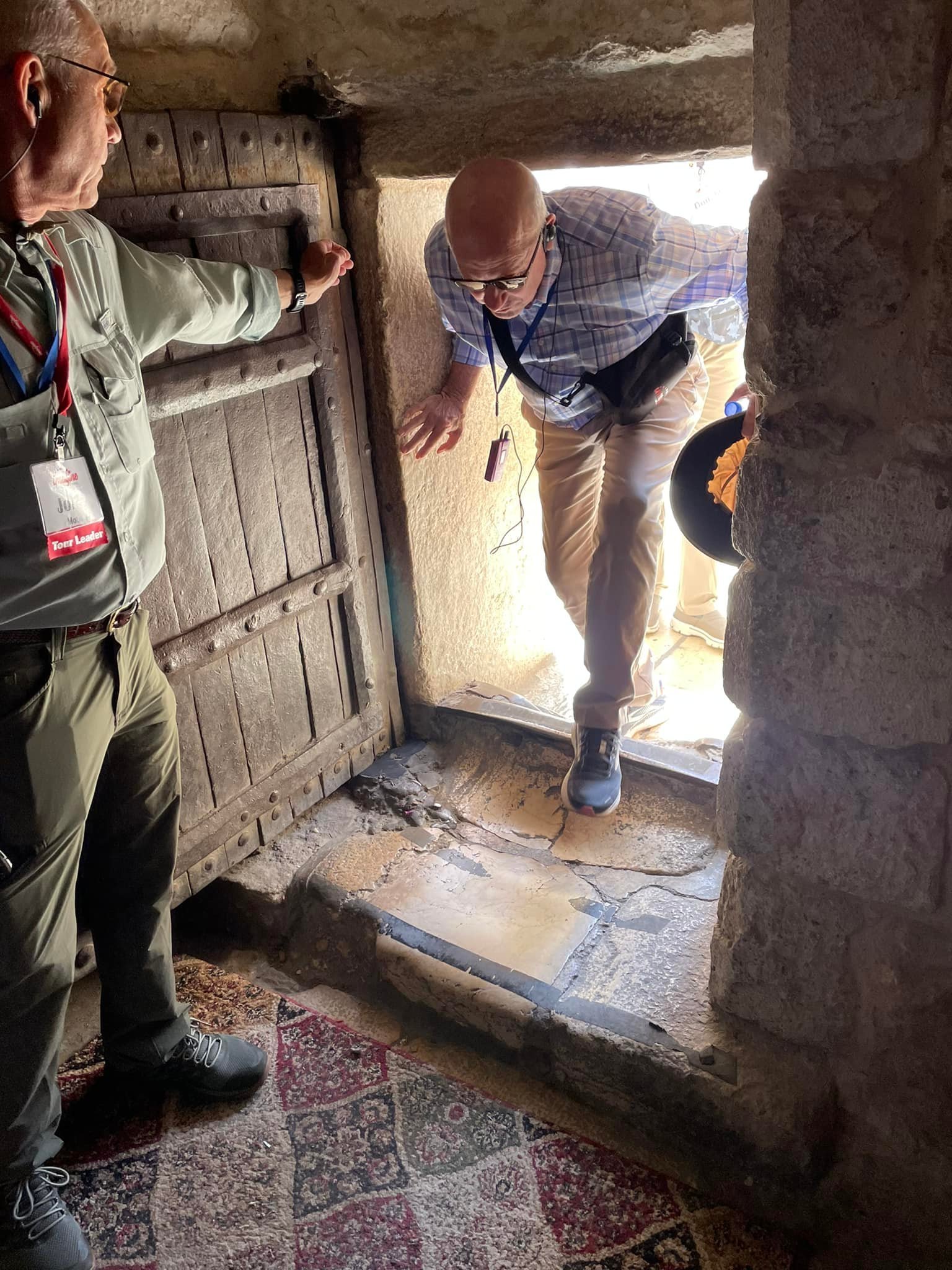
Watch your head!

The Church of the Incarnation is actually shared by three churches, The Greek Orthodox Church, the Roman Catholic Church and the Armenian church. This is the Greek church’s sanctuary.
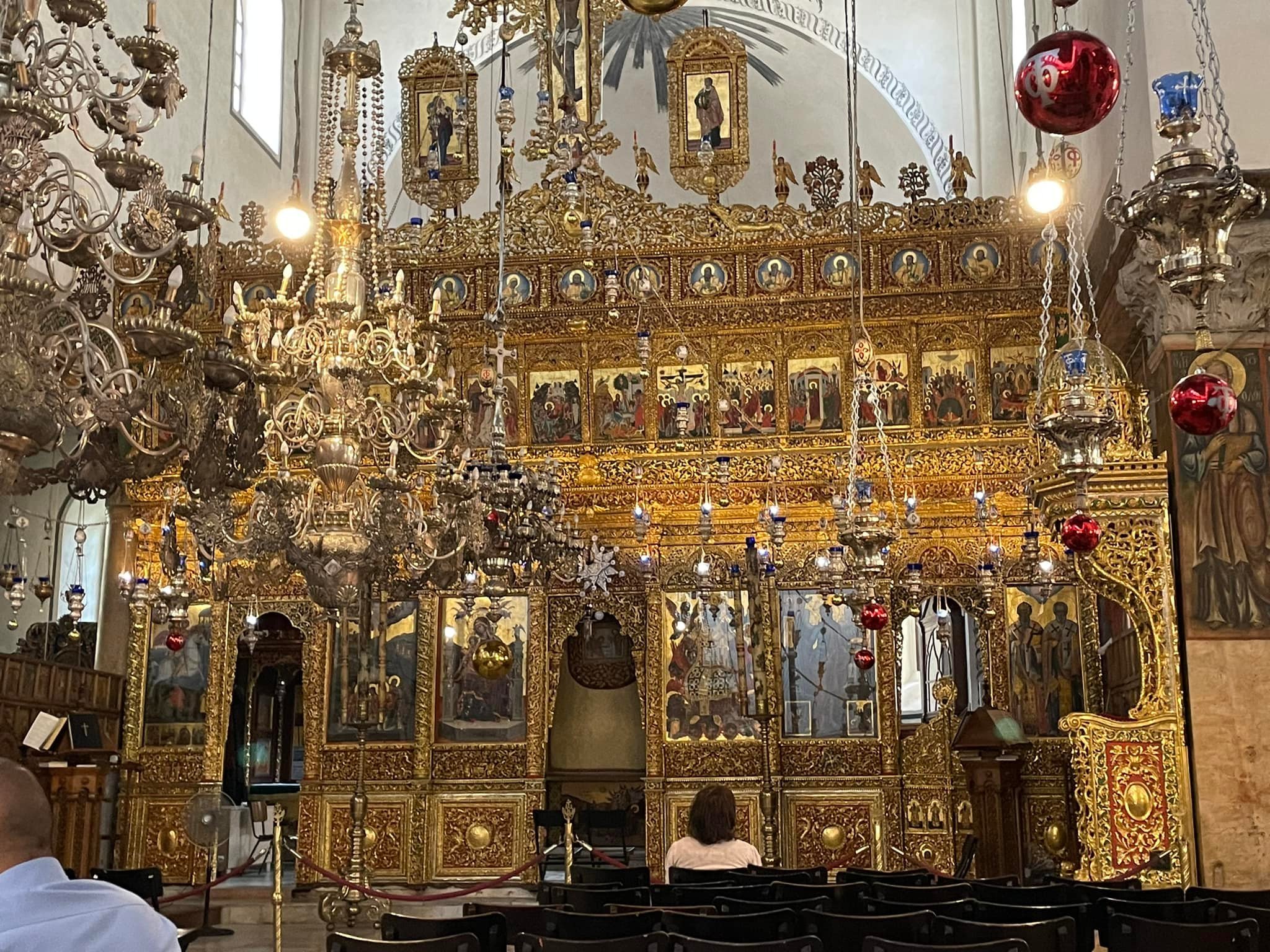
The Greek alter is extremely ornate.
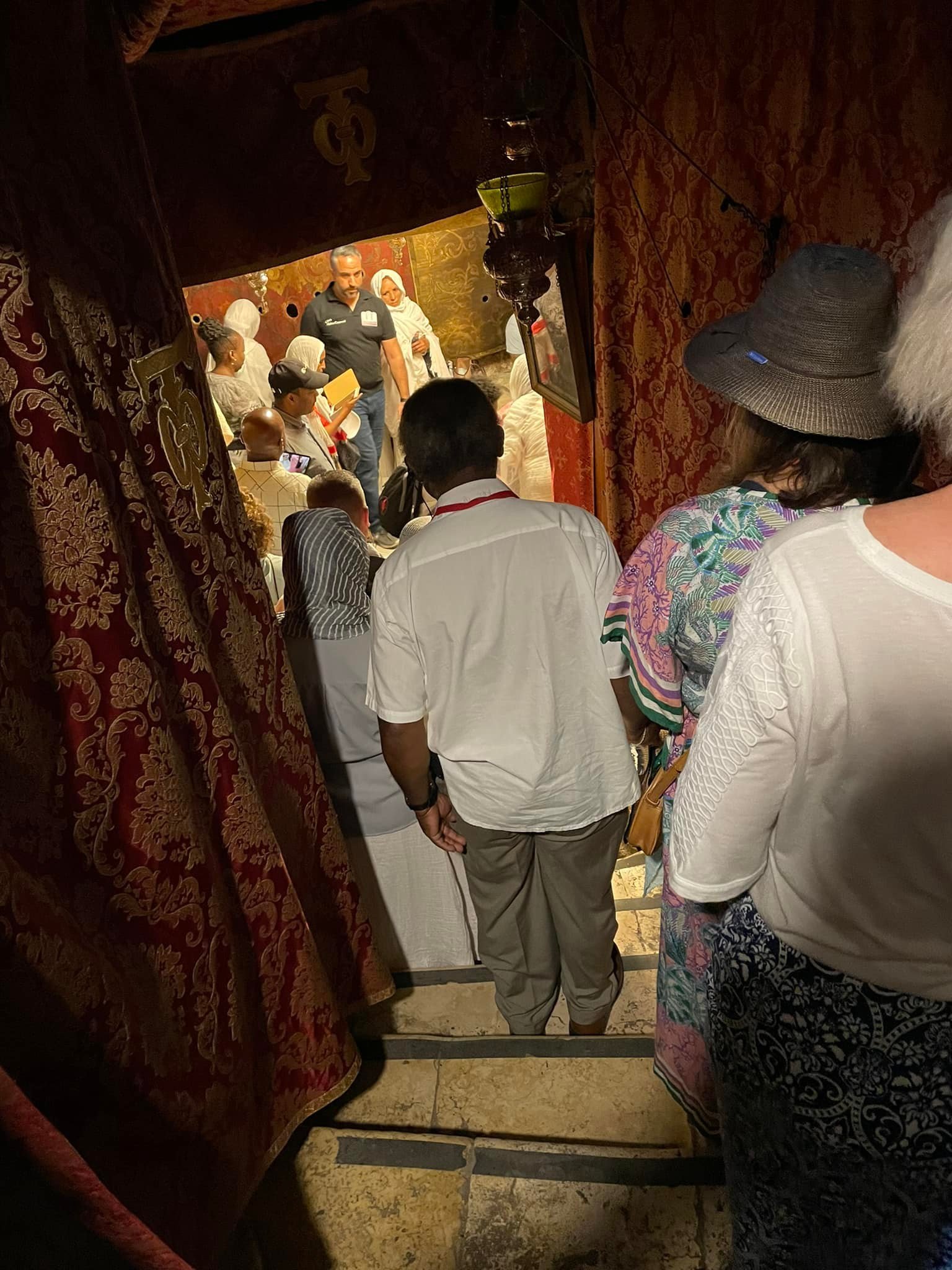
This is the best way down to the spot where they believe Jesus was actually born.
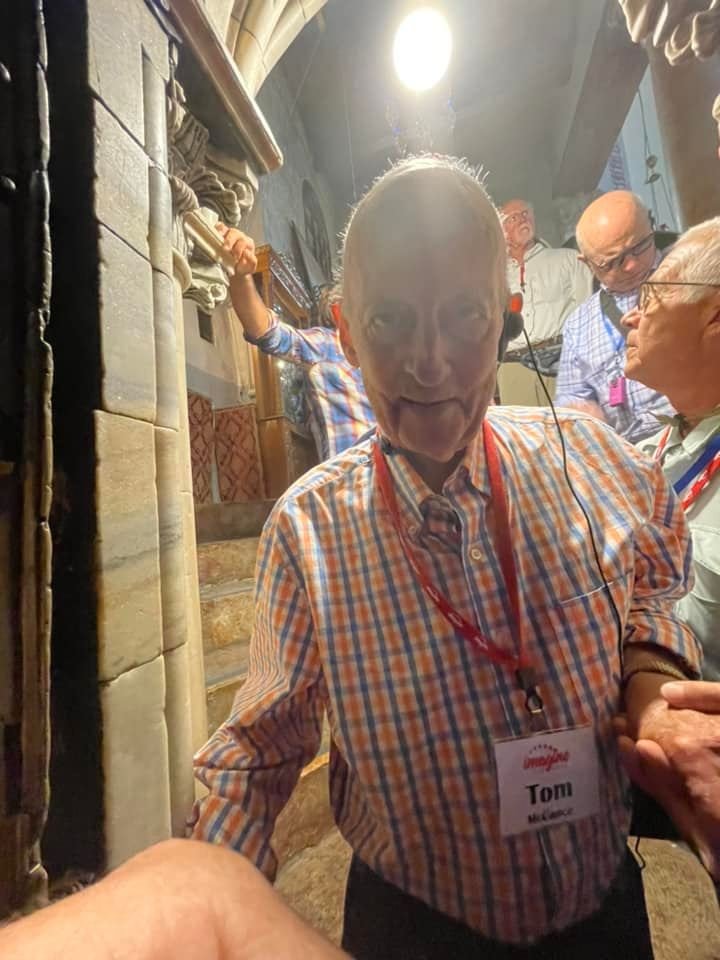
Tom McCance enters with joy.
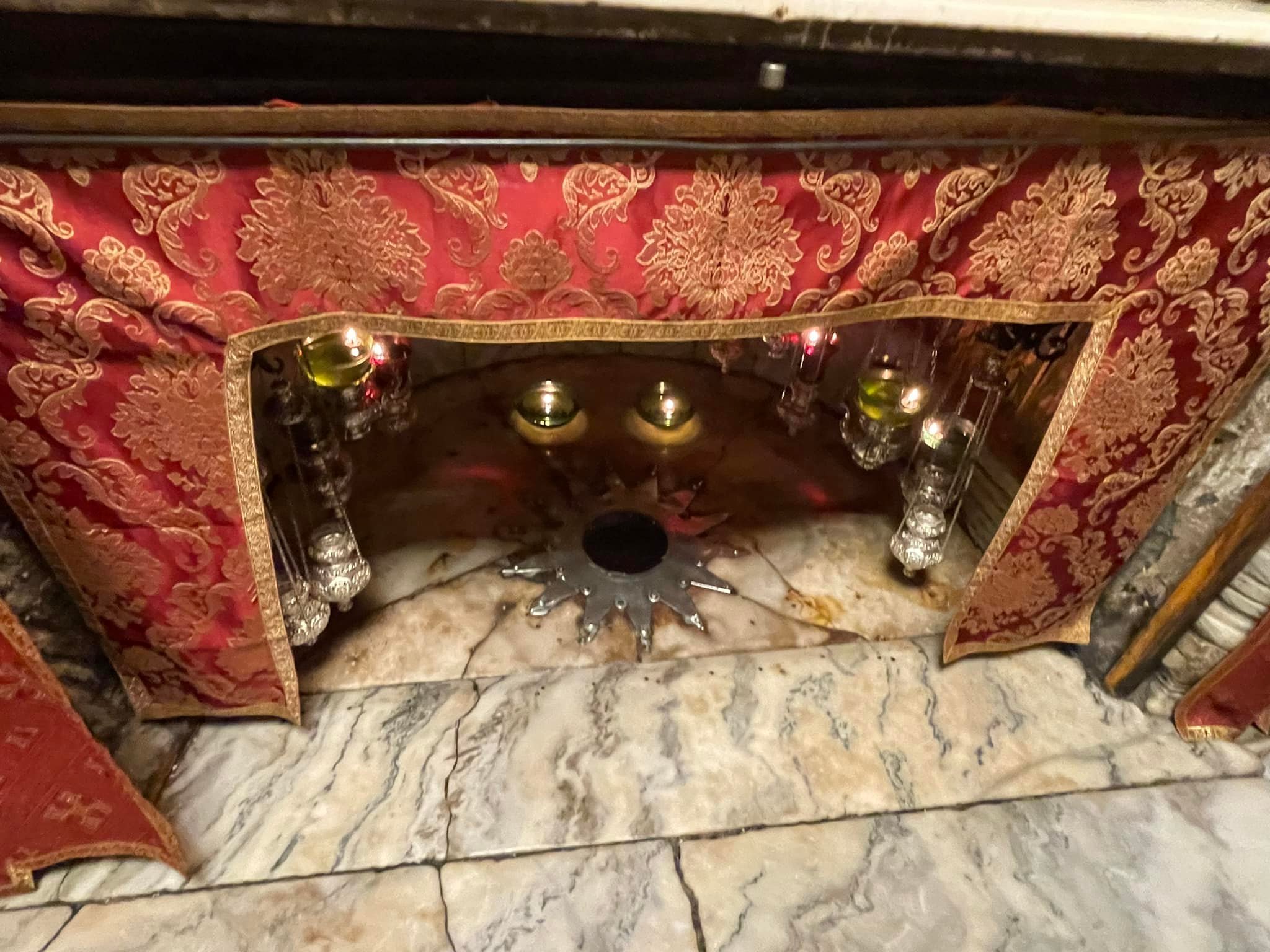
This is the altar over the spot where Christians have thought Jesus was born since at least 325AD.
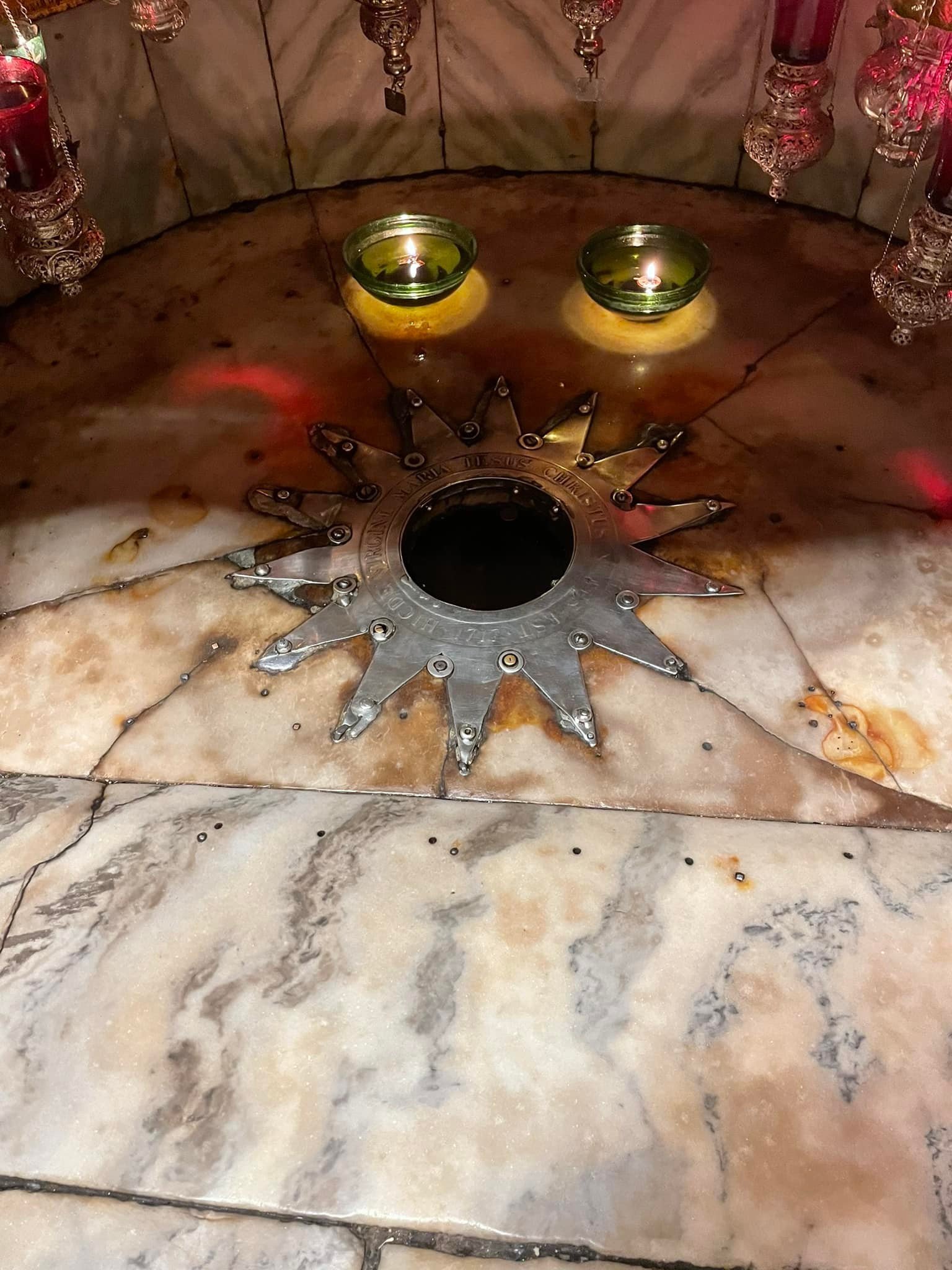
This is a close-up of the very spot. No one can say for certain, but I will say that it was an extremely spiritually and emotionally moving experience to touch it.
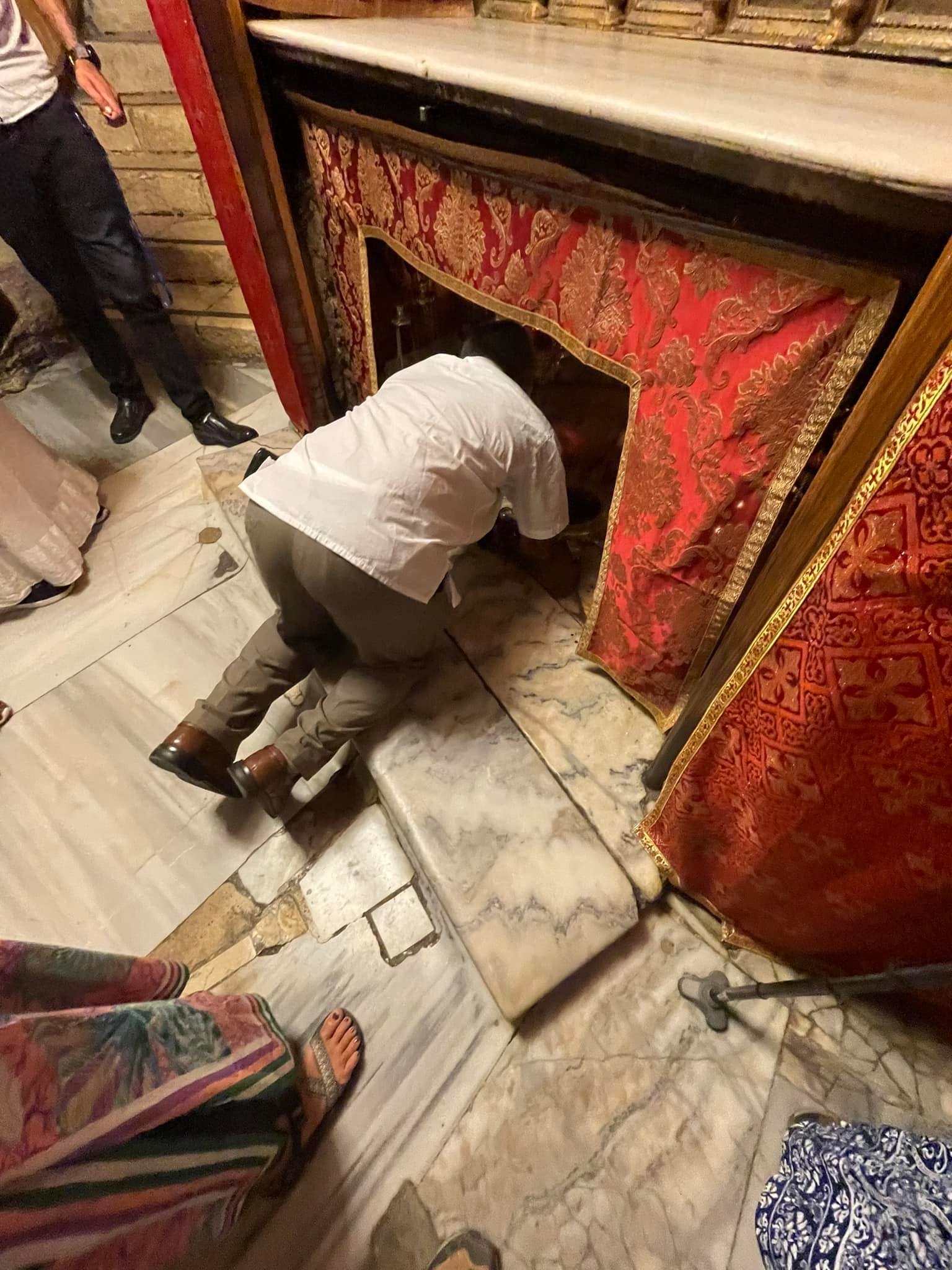
Albert Carrington touches the spot.
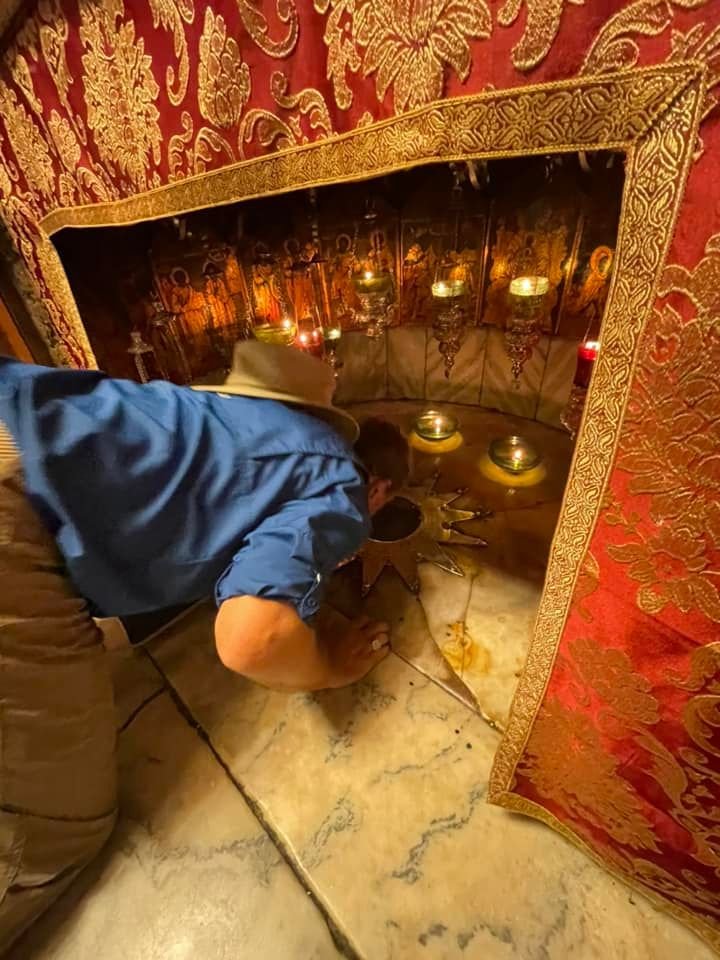
I decided I needed to kiss it.

Ken Wiles takes his turn.
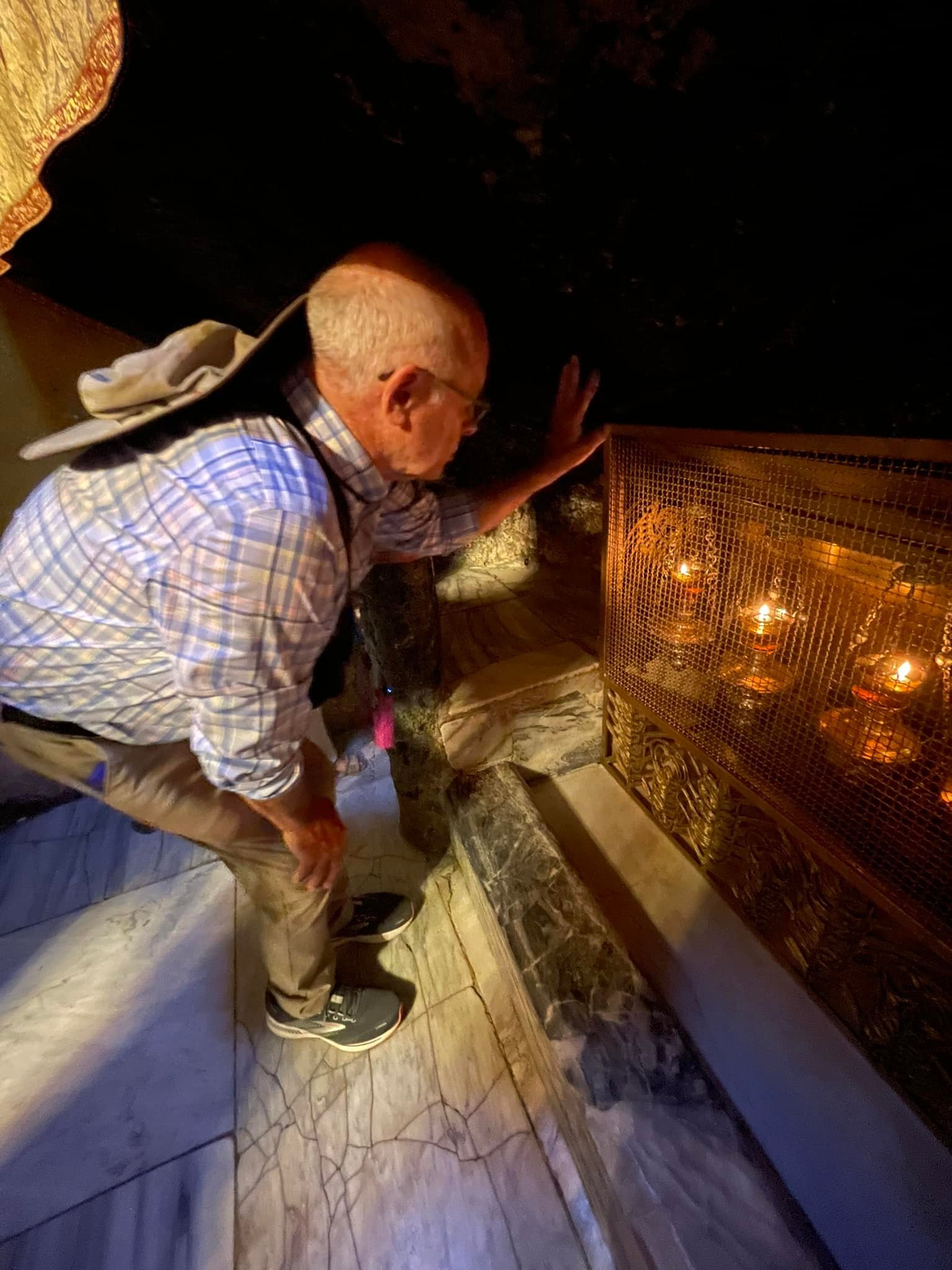
Just a few feet away, is the Manger.
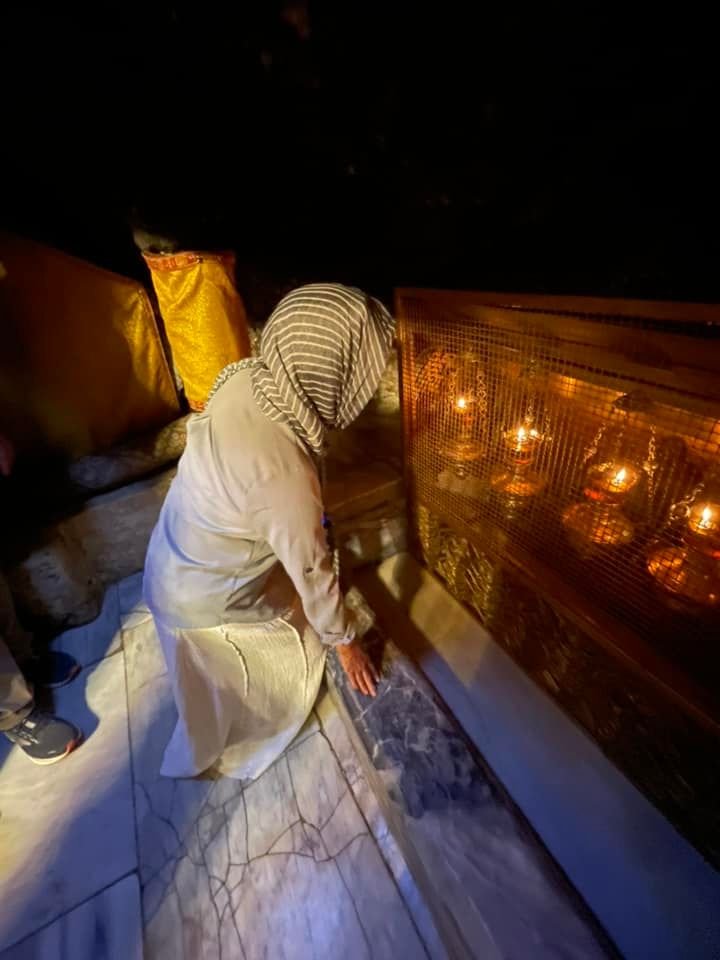
Susan Wiles kneels for a moment.
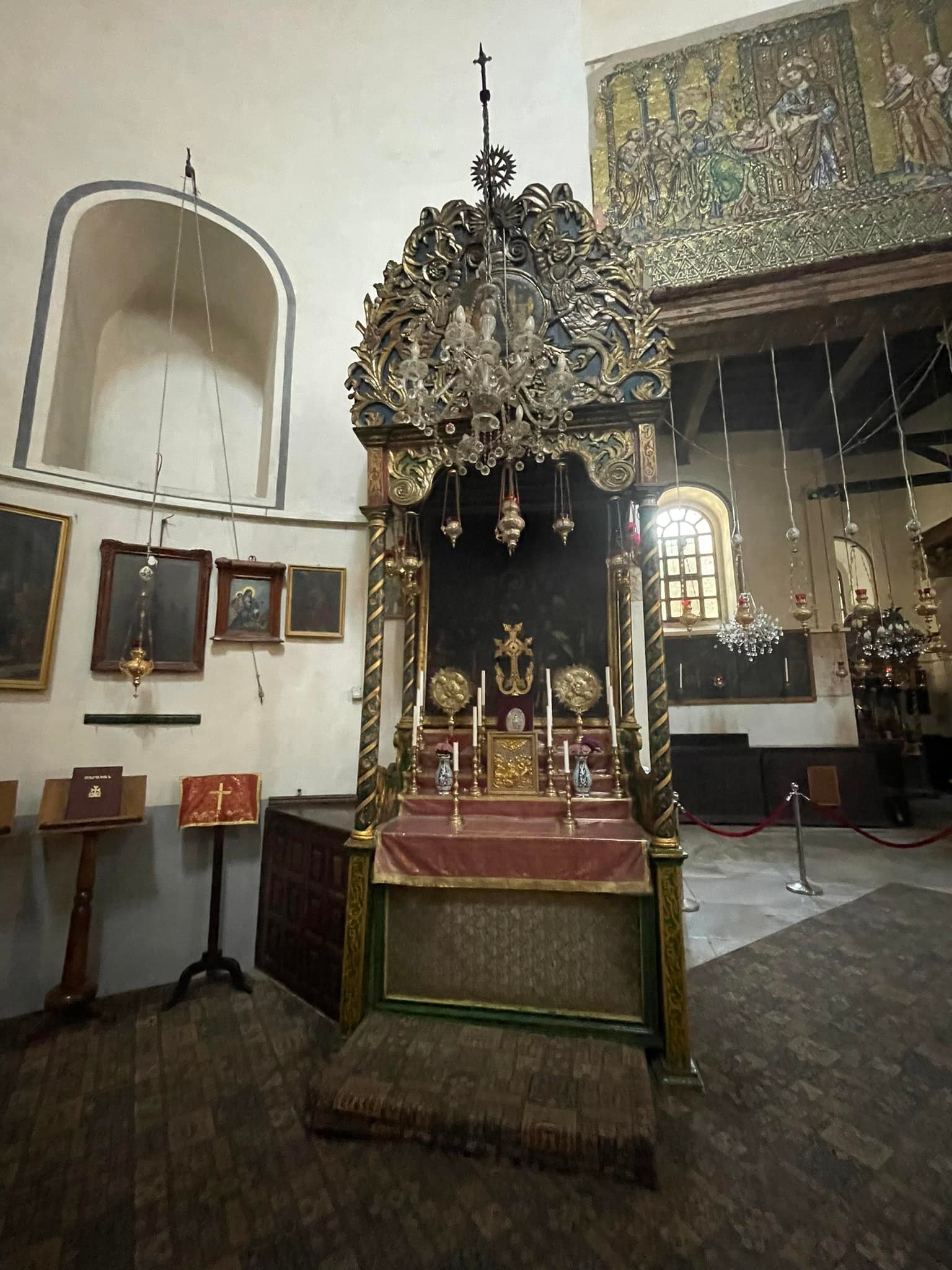
This is the Armenian churches sanctuary. They only actually have one family in Bethlehem.
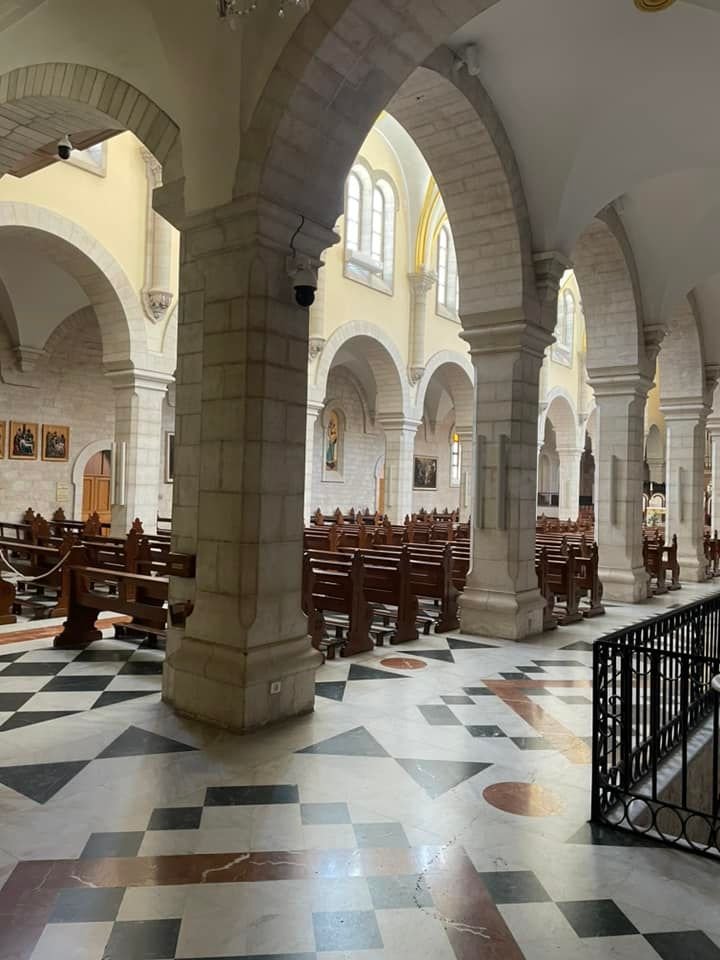
The Roman Catholic sanctuary wasn’t open, but I was able to sneak a side picture through the grate.
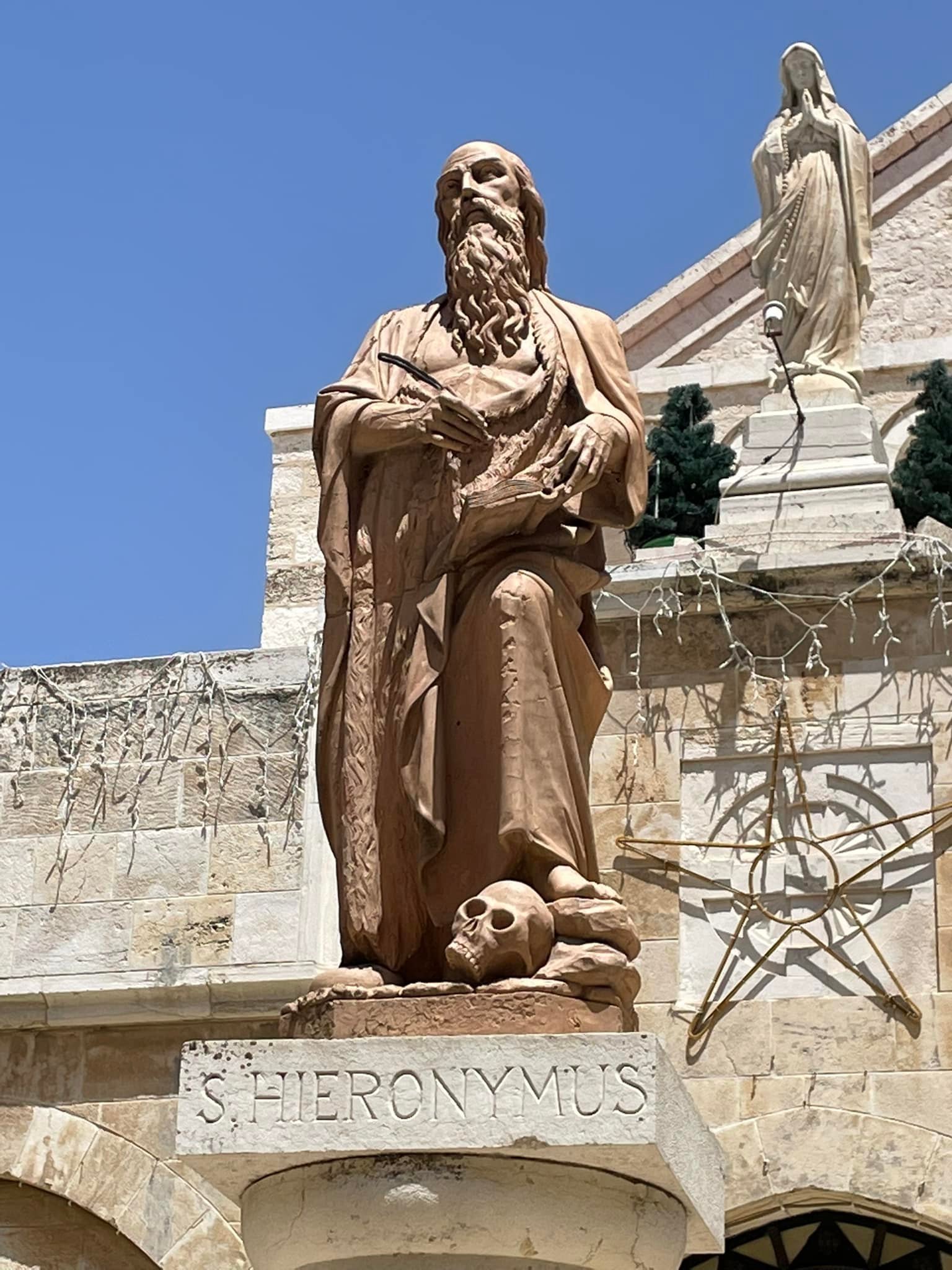
Saint Jerome spent almost 40 years at this church working on his translation of the Bible into Latin. The Jerome Bible was the official Bible used by the western church for over 1000 years.
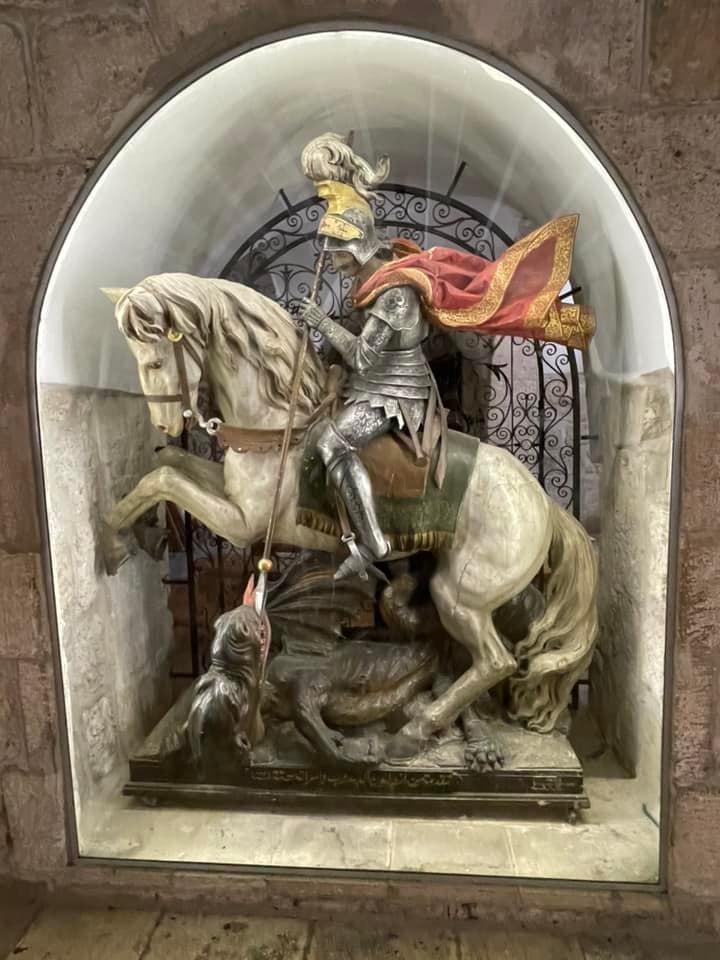
I’m not sure why they had the statue of Saint George killing the dragon, but it’s pretty cool!
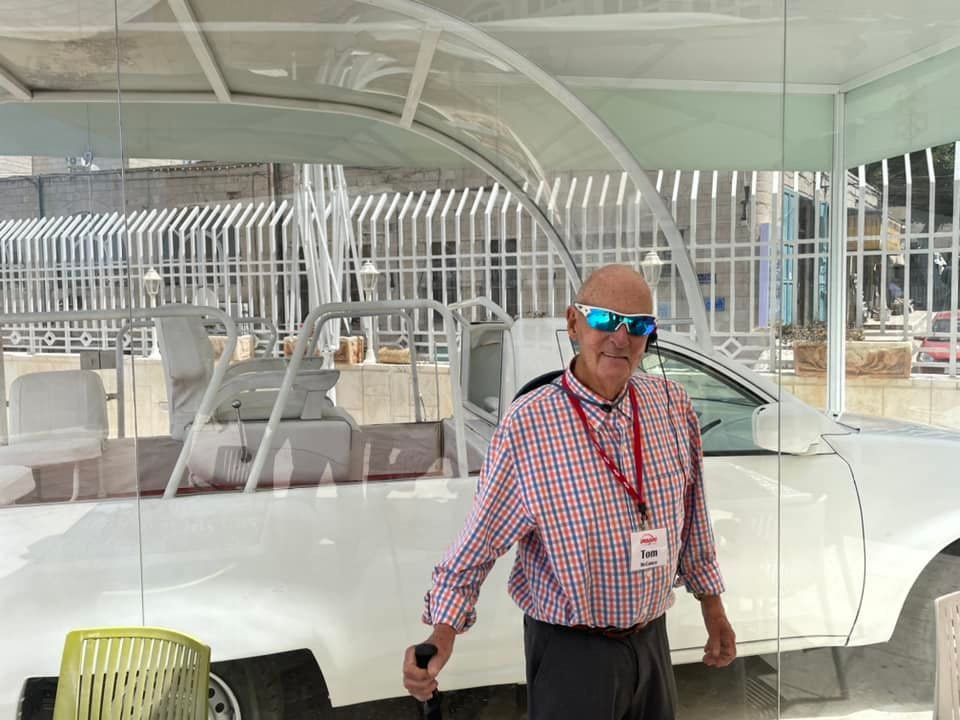
Tom McCance stood next to the Pope mobile used by John Paul the second during his visit to Bethlehem at the Millennium.
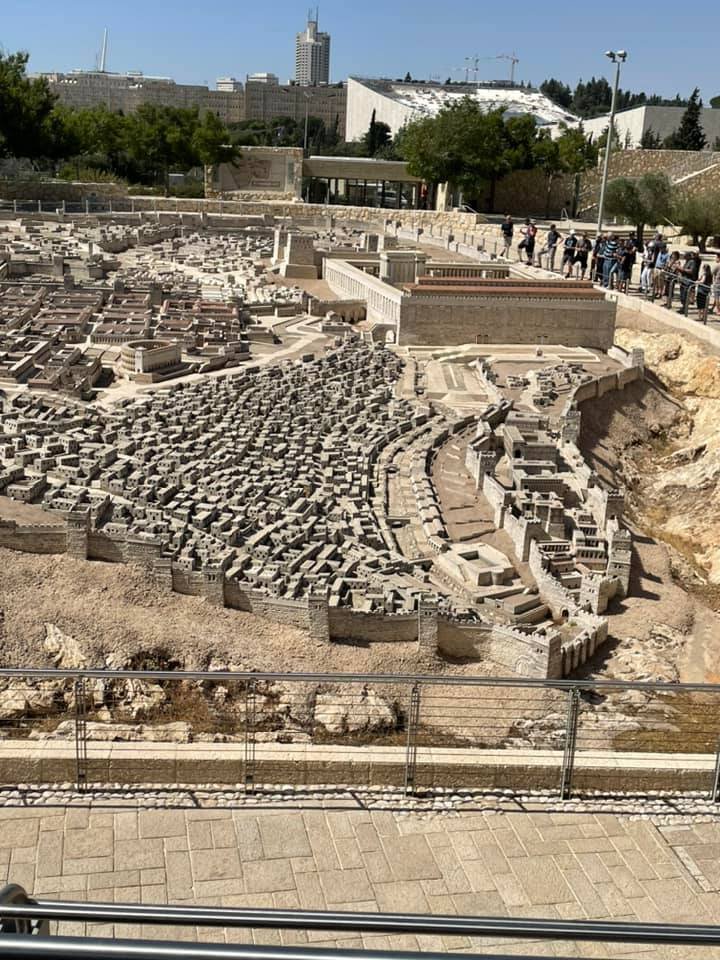
This is a scale model of first century Jerusalem at the Israeli Museum.
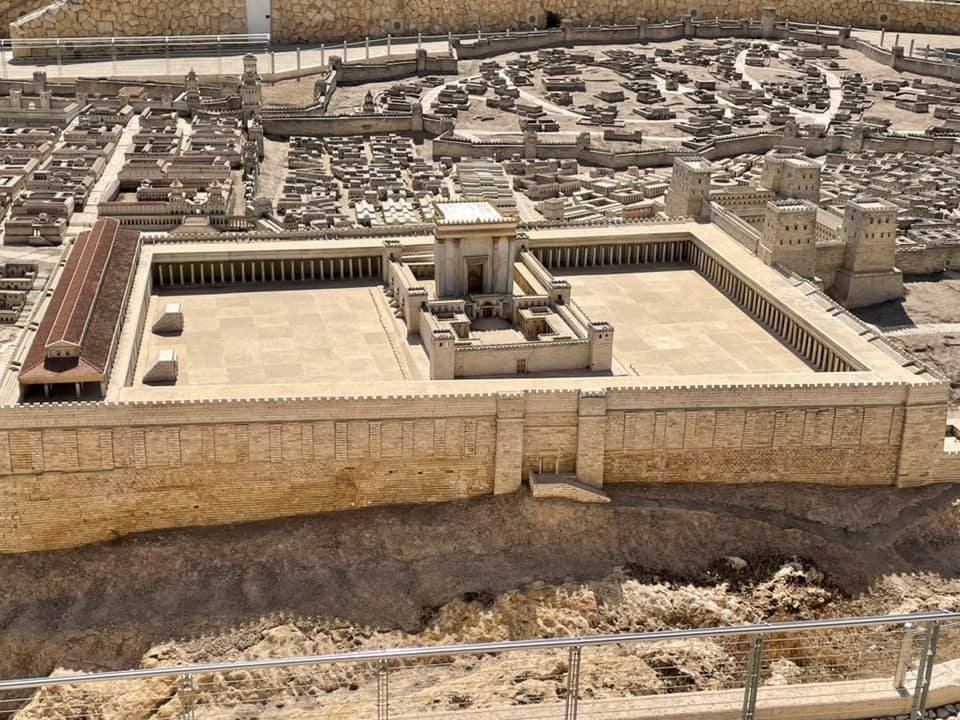
Model of the Temple Mount complete with the temple of Solomon and the courts built by Herod the Great.
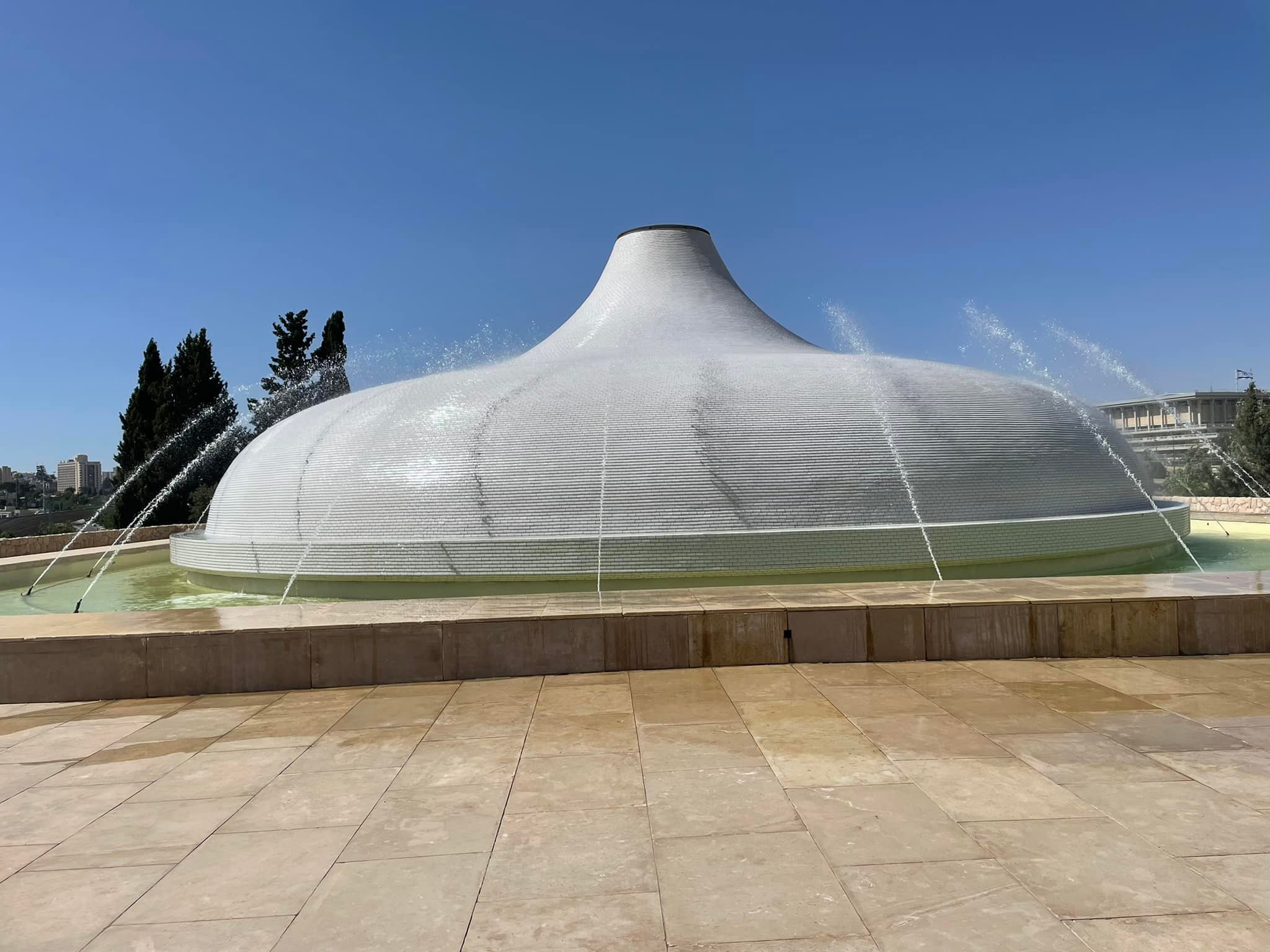
This fountain is meant to commemorate perhaps the greatest treasures in this museum. It is meant to be the shape of one of the top of the clay jars which held the scrolls found at Qumran.
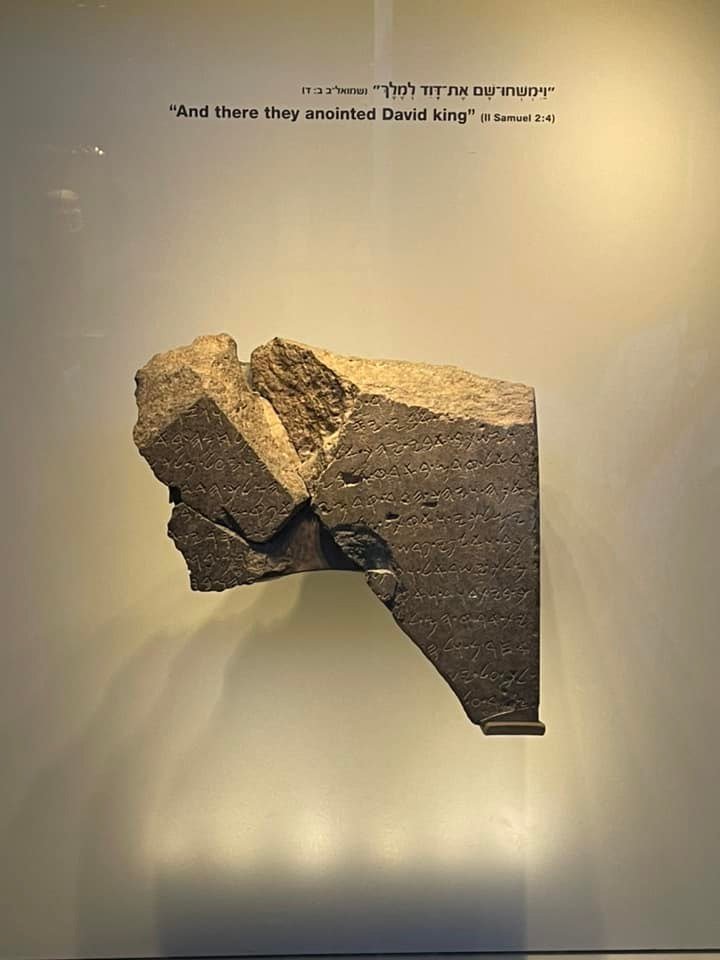
This is the inscription that was found under the basalt rock which we viewed up at the entrance to the city of Dan on our second day.
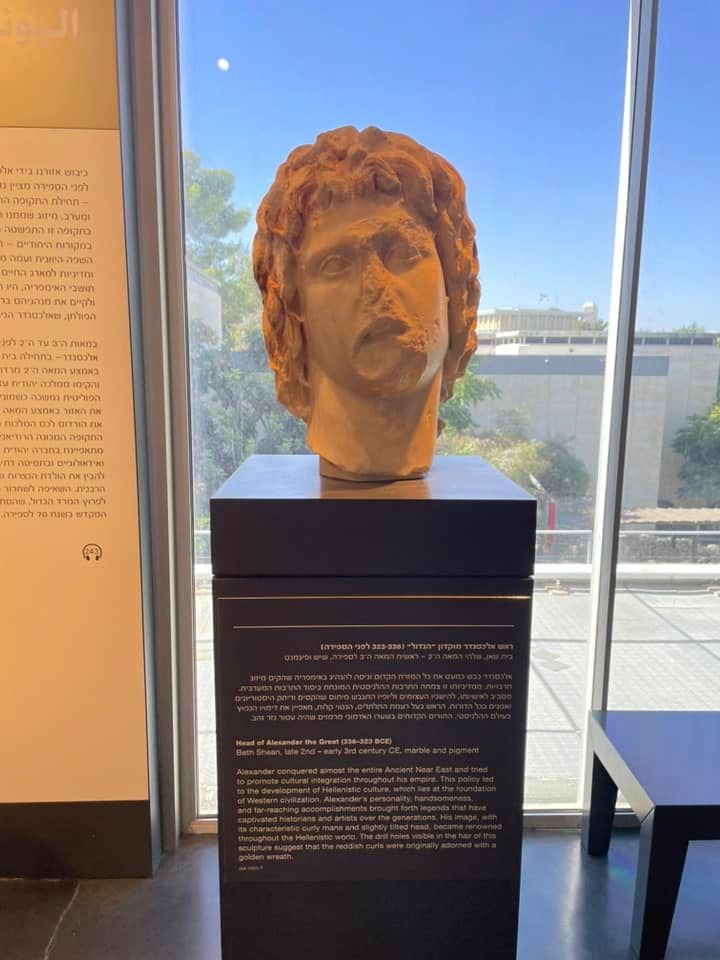
A bust of Alexander the Great.

This is the inscription referring to Pontius pilot that was found at Caesarea Maritima, which we saw on our second day.

Here’s the root of the problem!
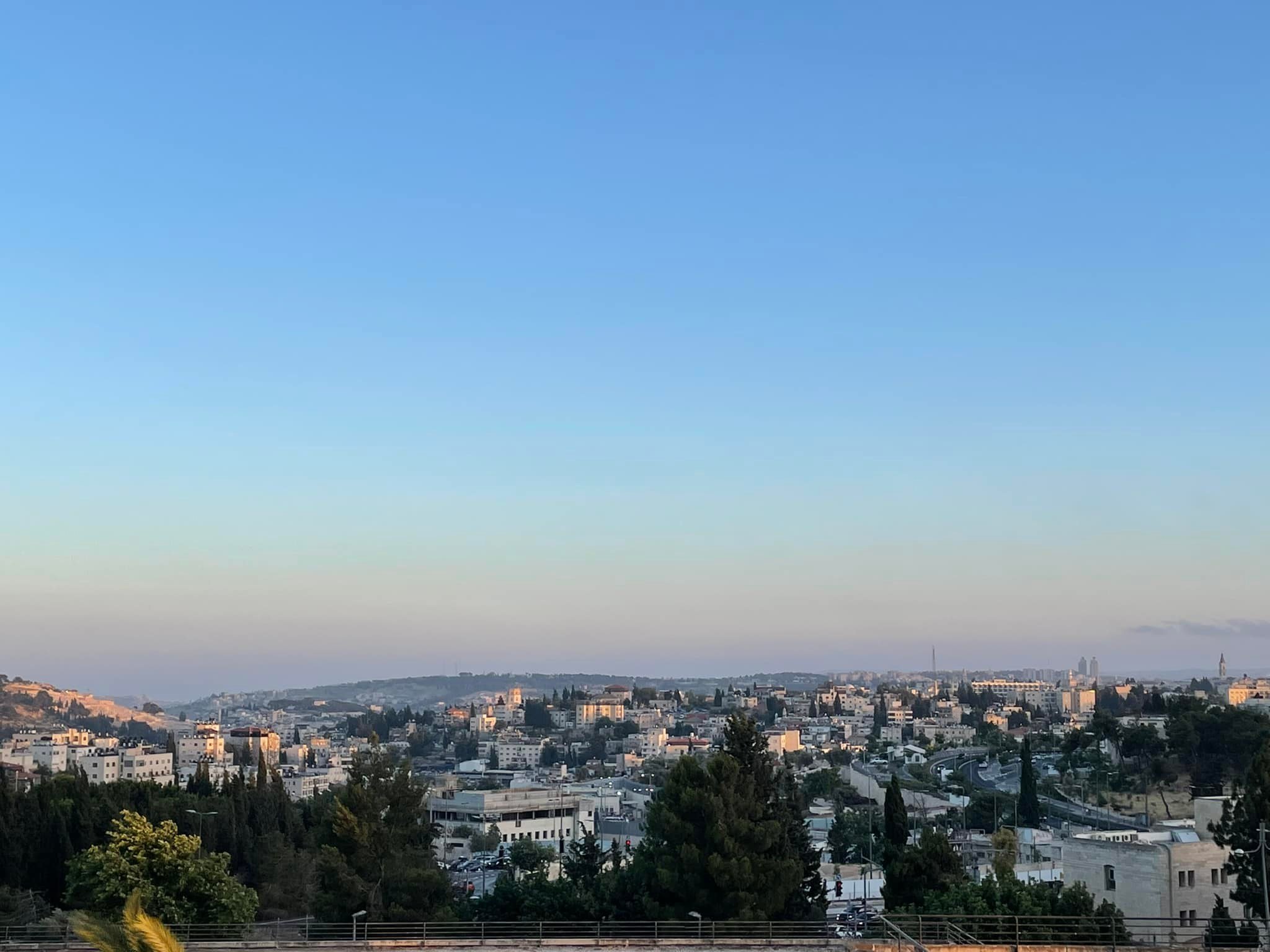
A beautiful evening capped our wonderful day!
Pilgrimage to the Holy Land - Day 5
We spent the morning and early afternoon exploring key sites along the Dead Sea - Masada, En Gedi, Qumran and then Jericho. The day was packed with layers of history. Some gave great insights to Judaism in Jesus’ time, others connected us with the history leading into his ministry. Then we made the ascent to Jerusalem…

This is Masada. Note the three levels that step up the upper right hand side of that mesa.
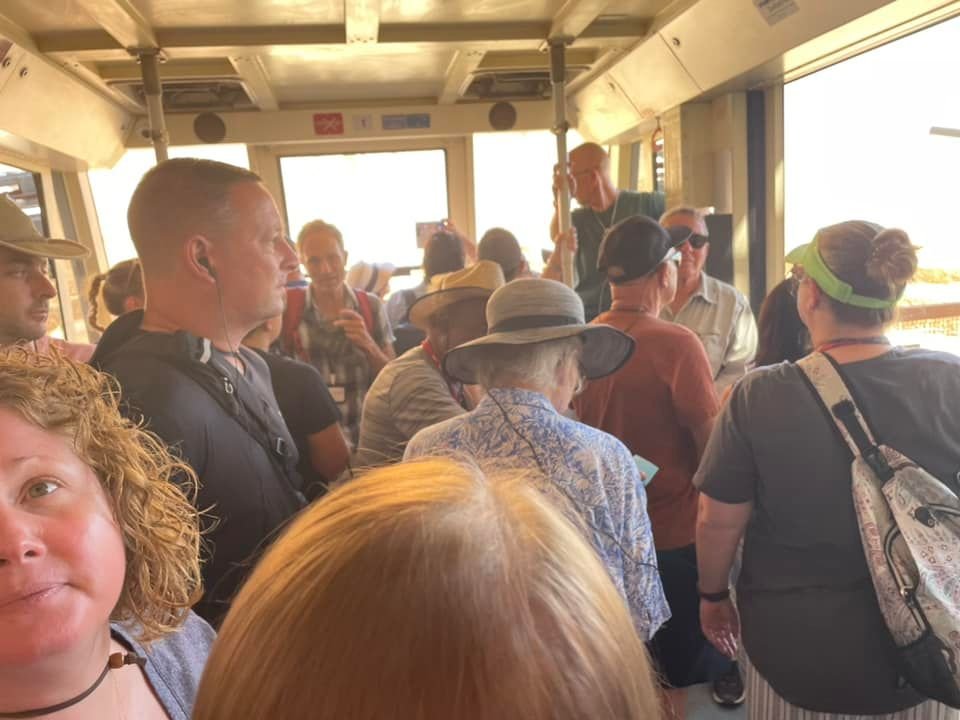
Riding up in the cable car.

Those three steps are really levels of one of Herod’s 5 palaces - yes, 5 - on Masada.
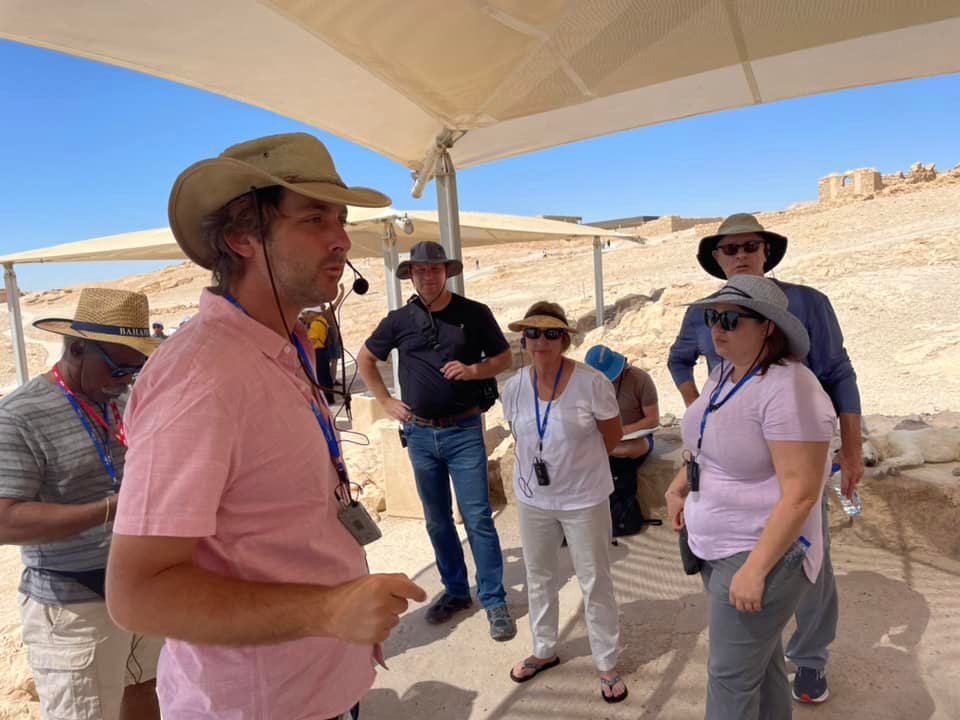

The black line is where Herod would’ve found the walls from the previous palace that was built by the Hasmoneans (the Jewish leaders that preceded him.) everything above the black line was built by Herod. Note the colors on the plaster that remains. The reds in particular were very expensive and only used by nobility.
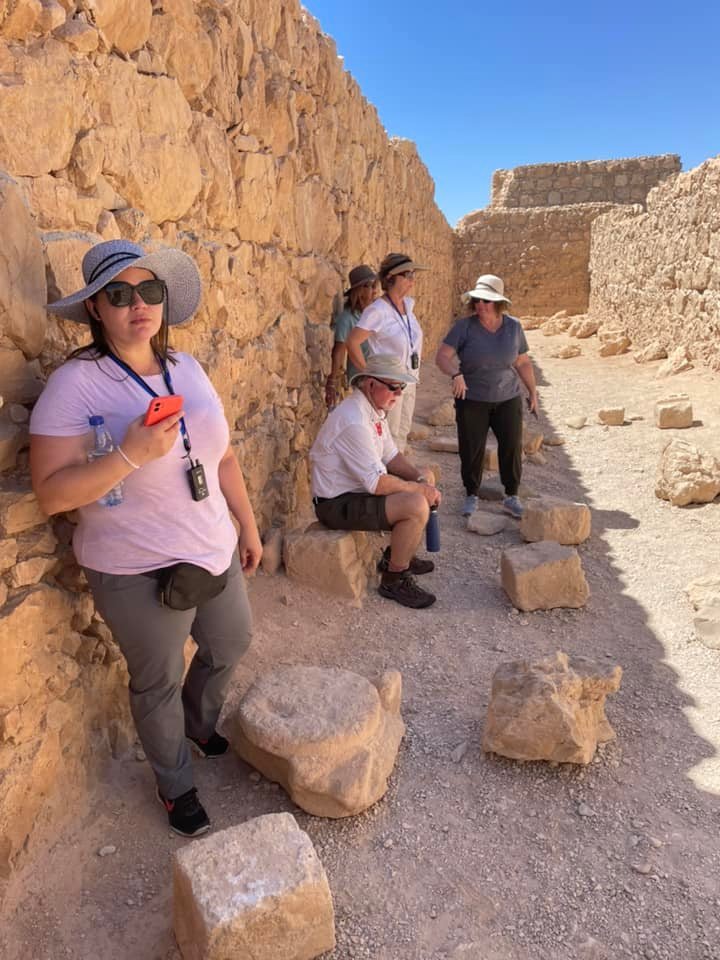
This is one of 10 store rooms in the palace. Each one is enormous. Here it was able to lay up enough food and supplies to hold out for months against any siege.
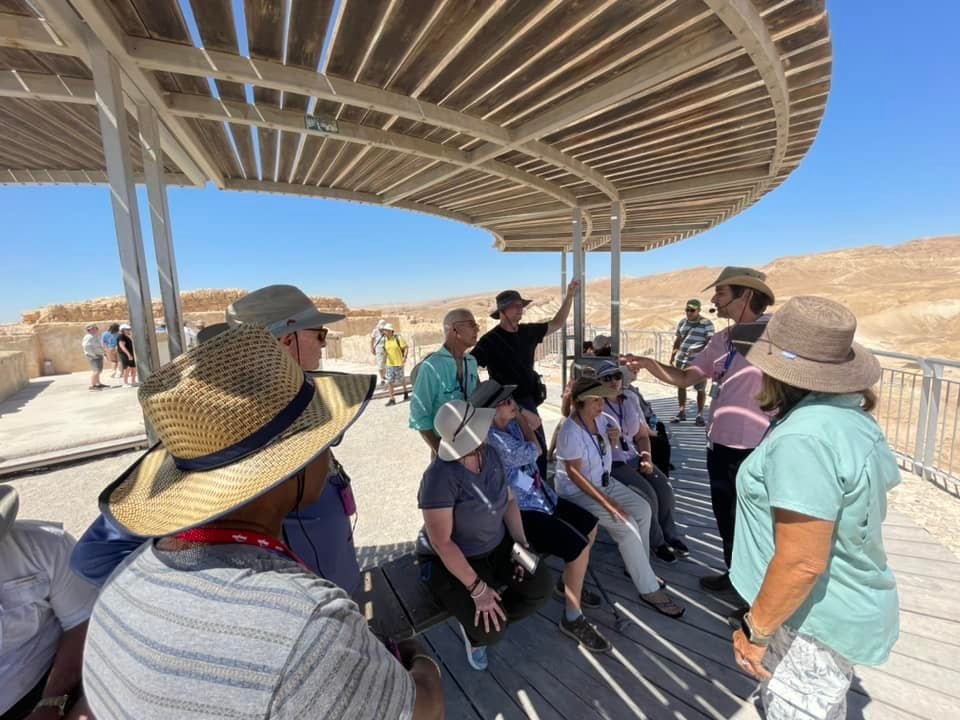
Here we are on a curved terrace at the north end of the largest palace. The curve is an indication of Roman influence, which Herod would have put in place to demonstrate his loyalty to the empire.
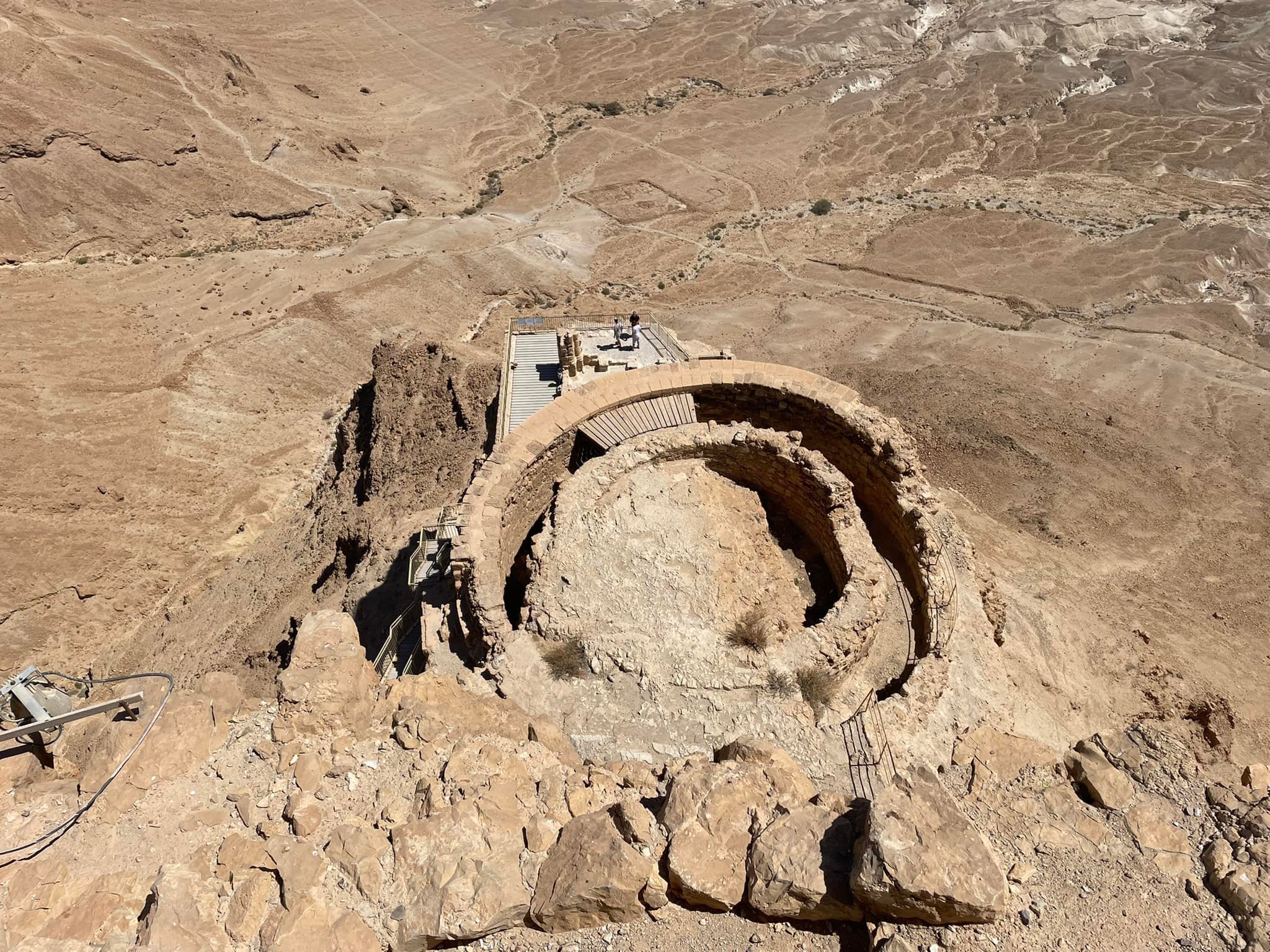
Below that northern Terrace, are the two other levels. Note the round one which is indicative of the Greek influence of the region at the time.

The steps go down into a ritual cleansing area that was built by the Jewish rebels who occupied Masada during the Jewish-Roman war that began in 66 A.D. and continued until the Romans rooted out the rebels in Masada.

By contrast, this is Herod’s bathtub.
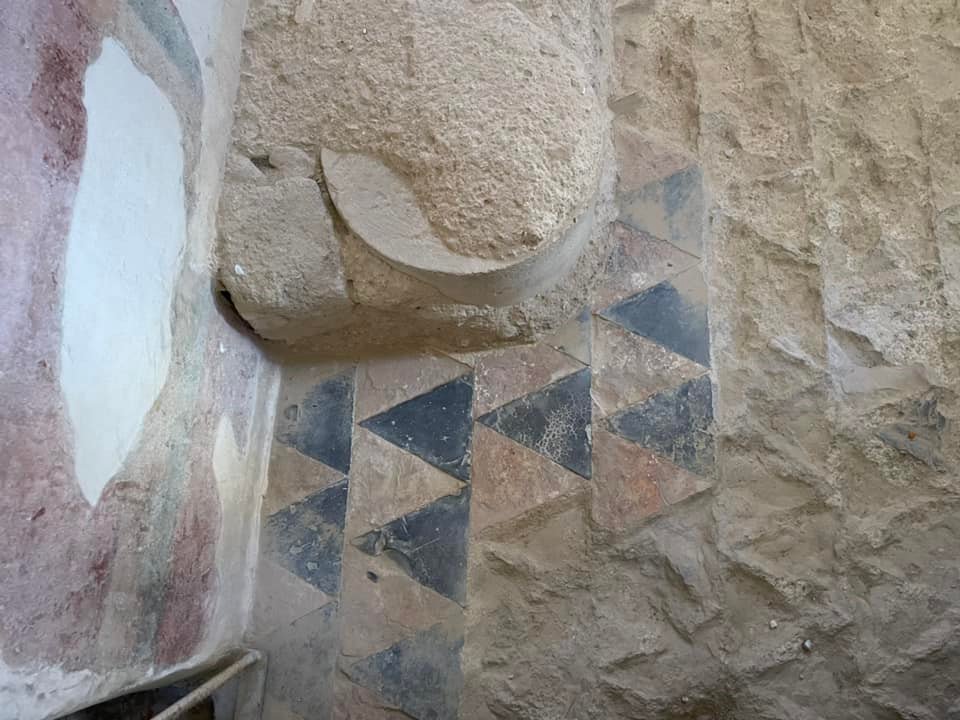
Note the beautiful tile work that Herod had in his bathroom
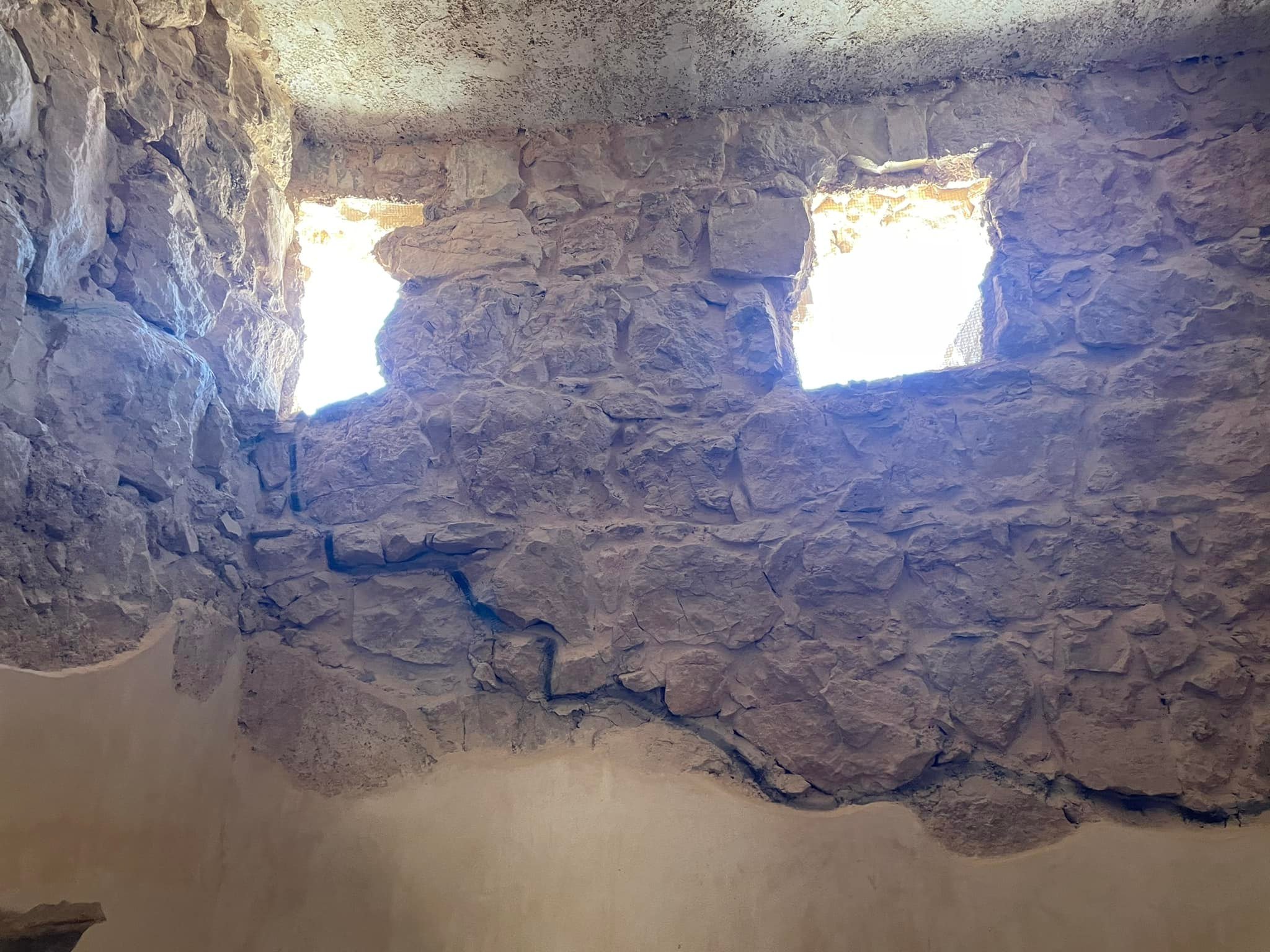
The windows were cut up high to let in light and let the heat out. It was 99° as we toured this site.
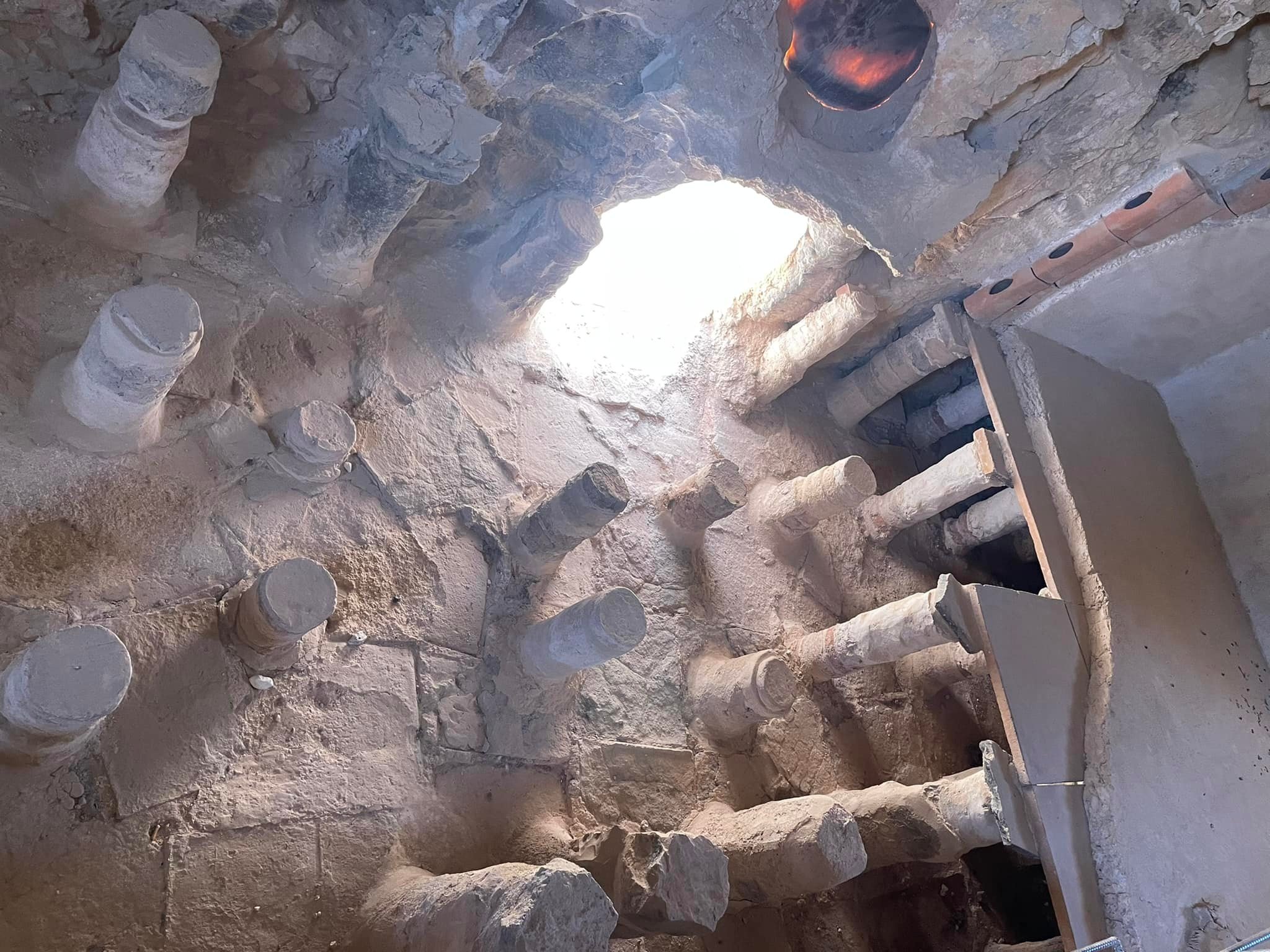
This is Herod’s sauna. The posts hold up the plaster floor, underneath which they would pour boiling water to create the steam for the sauna.
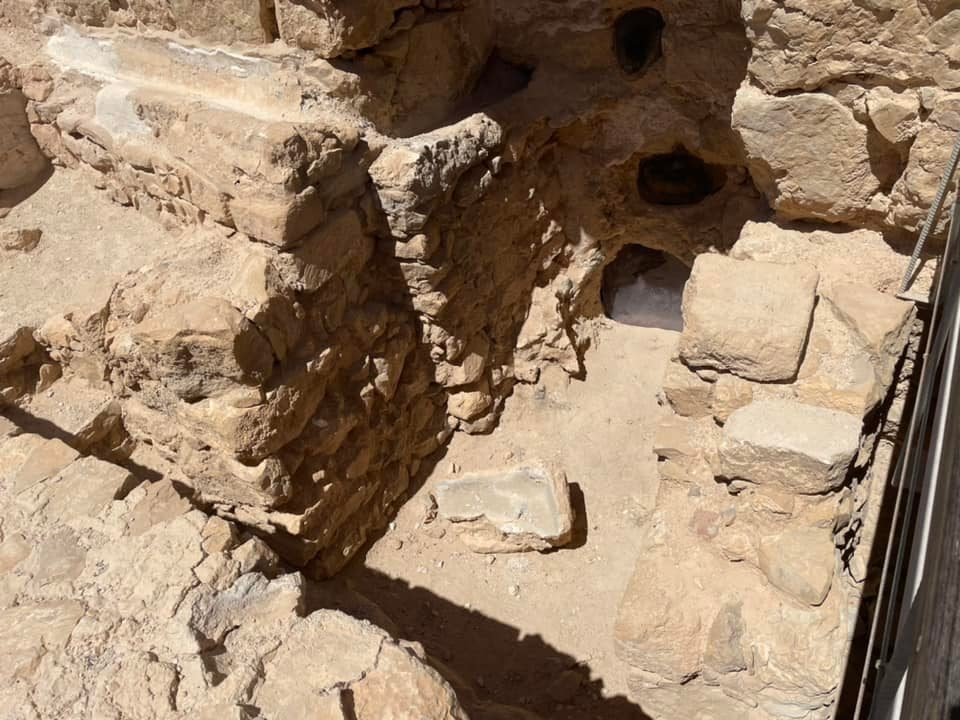
This is where they would boil the water.

The Jewish zealots built a synagogue on the site.
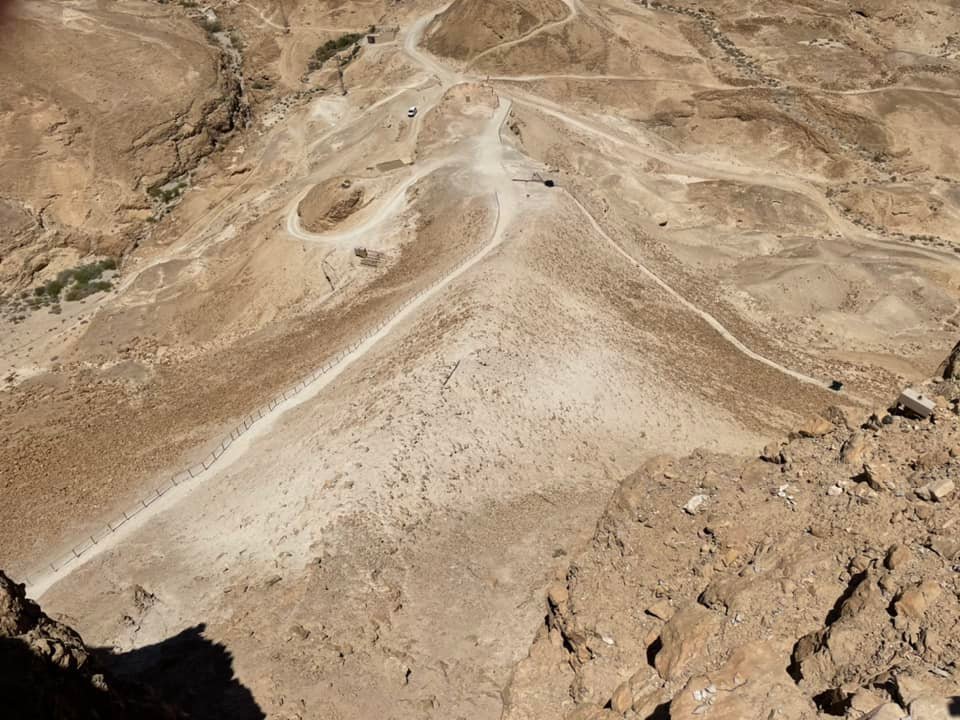
Masada rises 1300 feet above the land around it. This is the ramp the Romans built to lay siege against its wall.

Masada would receive in store massive amounts of water that would cascade down the valley above it during rainy seasons in the regions to the west.
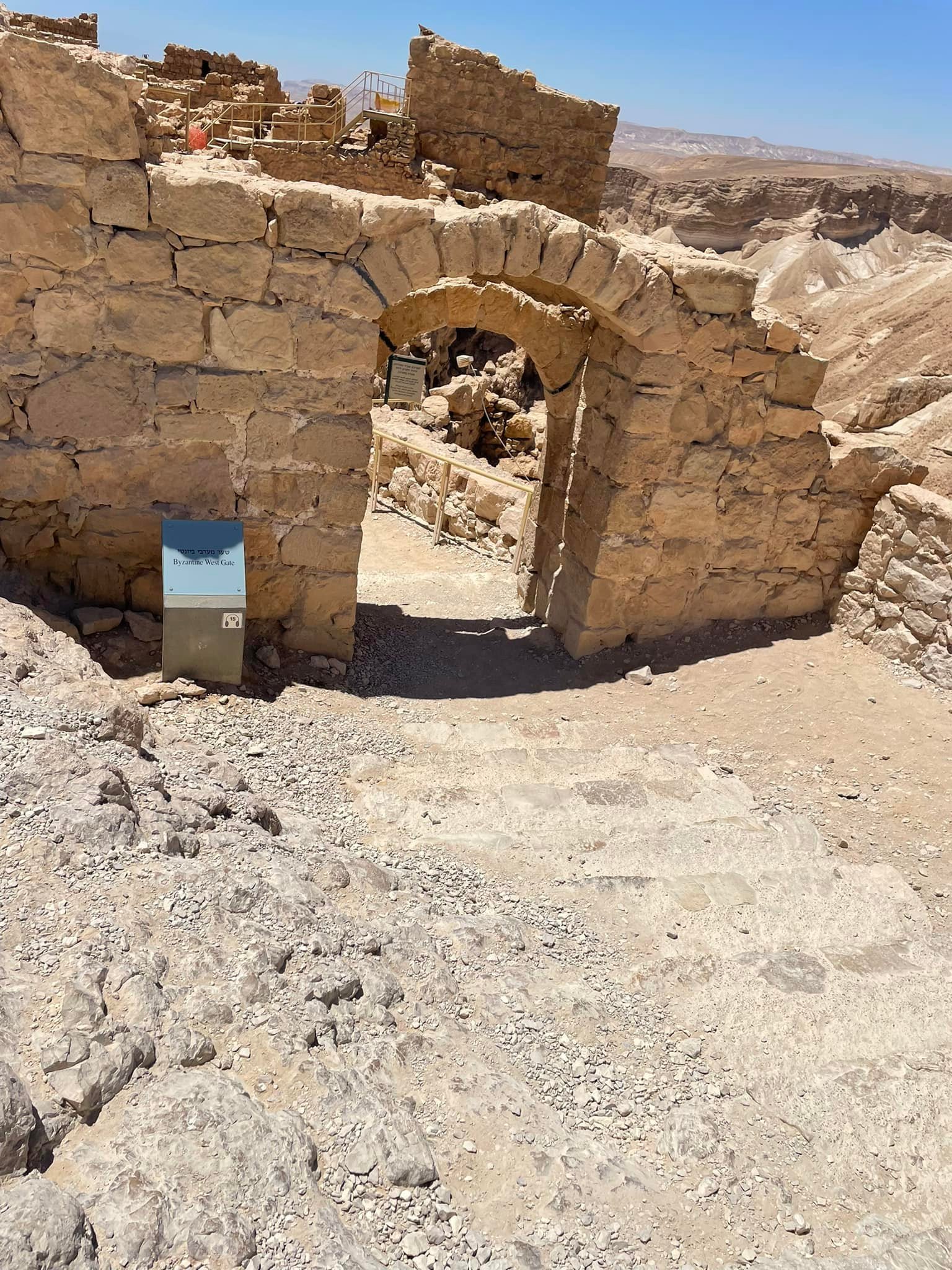
Masada was defeated in 73 a D. A few hundred years later, Byzantine monks built a monastery on top of Masada. This is the main entrance to that monastery compound.

These are the remains of the monastery building.
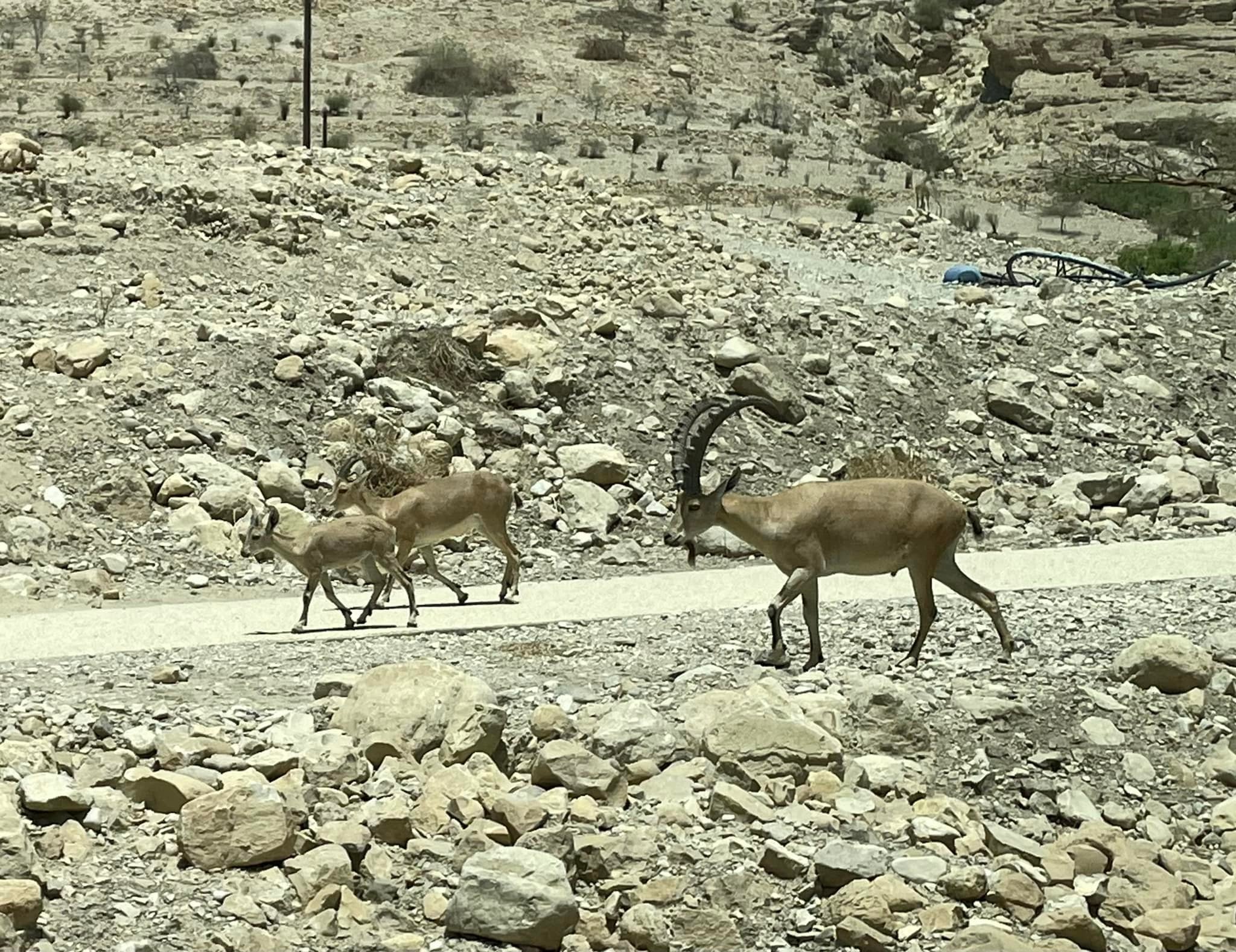
We next went to En Gedi. It’s name means goat Spring. It got its name from the ibex that are native to this region. We were greeted by a few as we drove in.
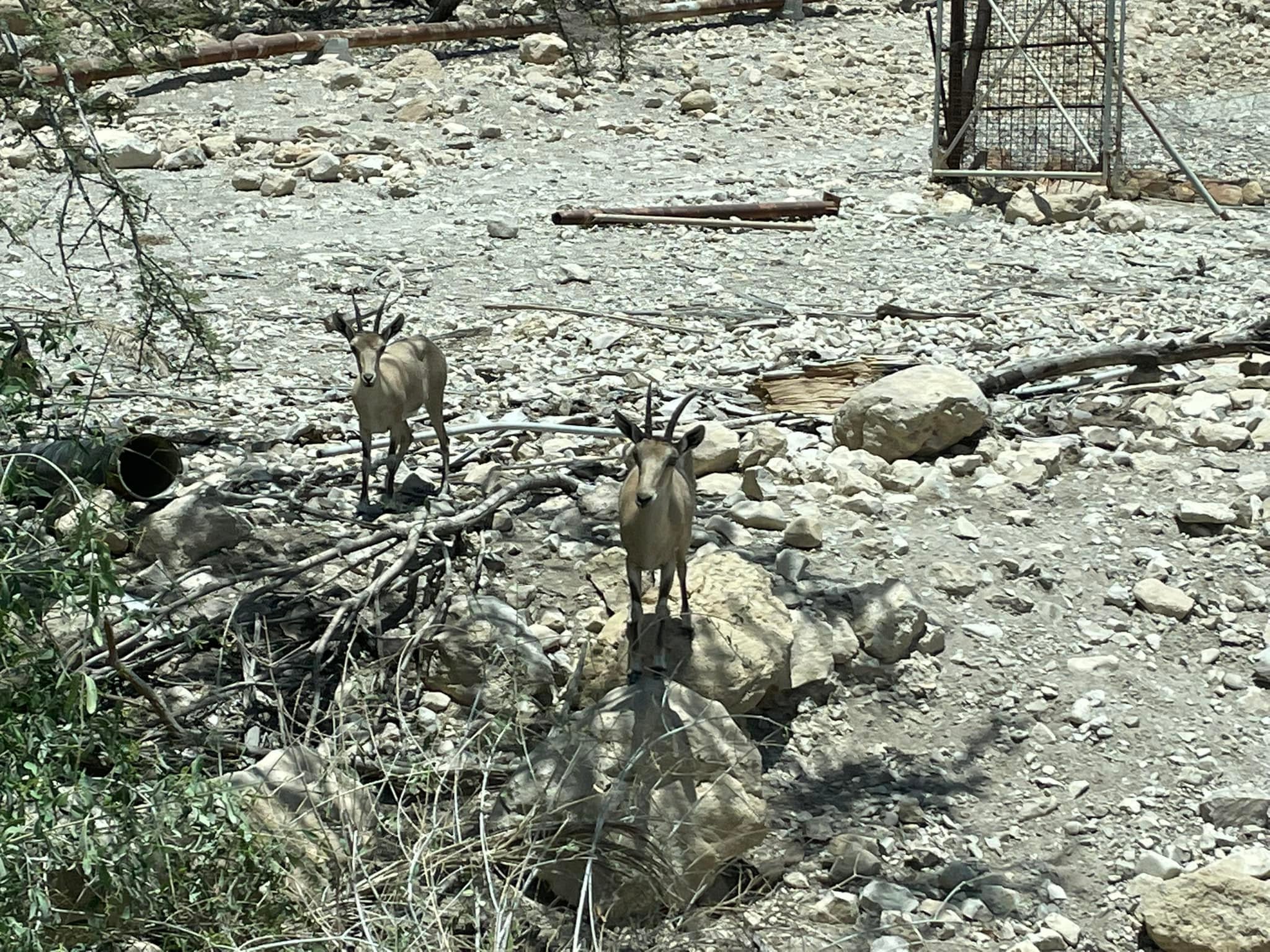
The ibex are not very large, but apparently very curious.
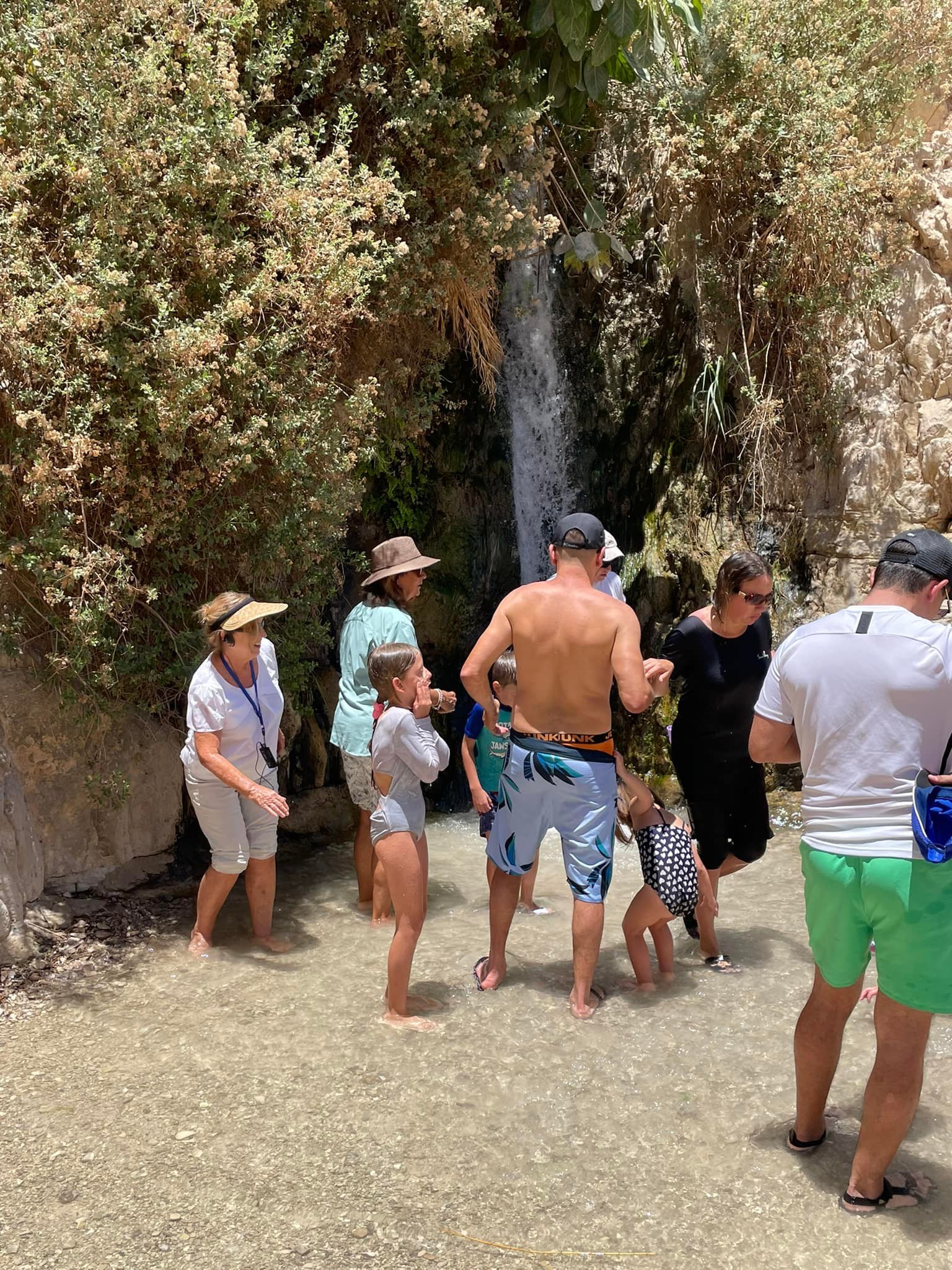
This is the lower waterfall of the springs. The water is very shallow, but there were a lot of people that wanted to just get in and splash around a bit. Again, it was at least 99°!
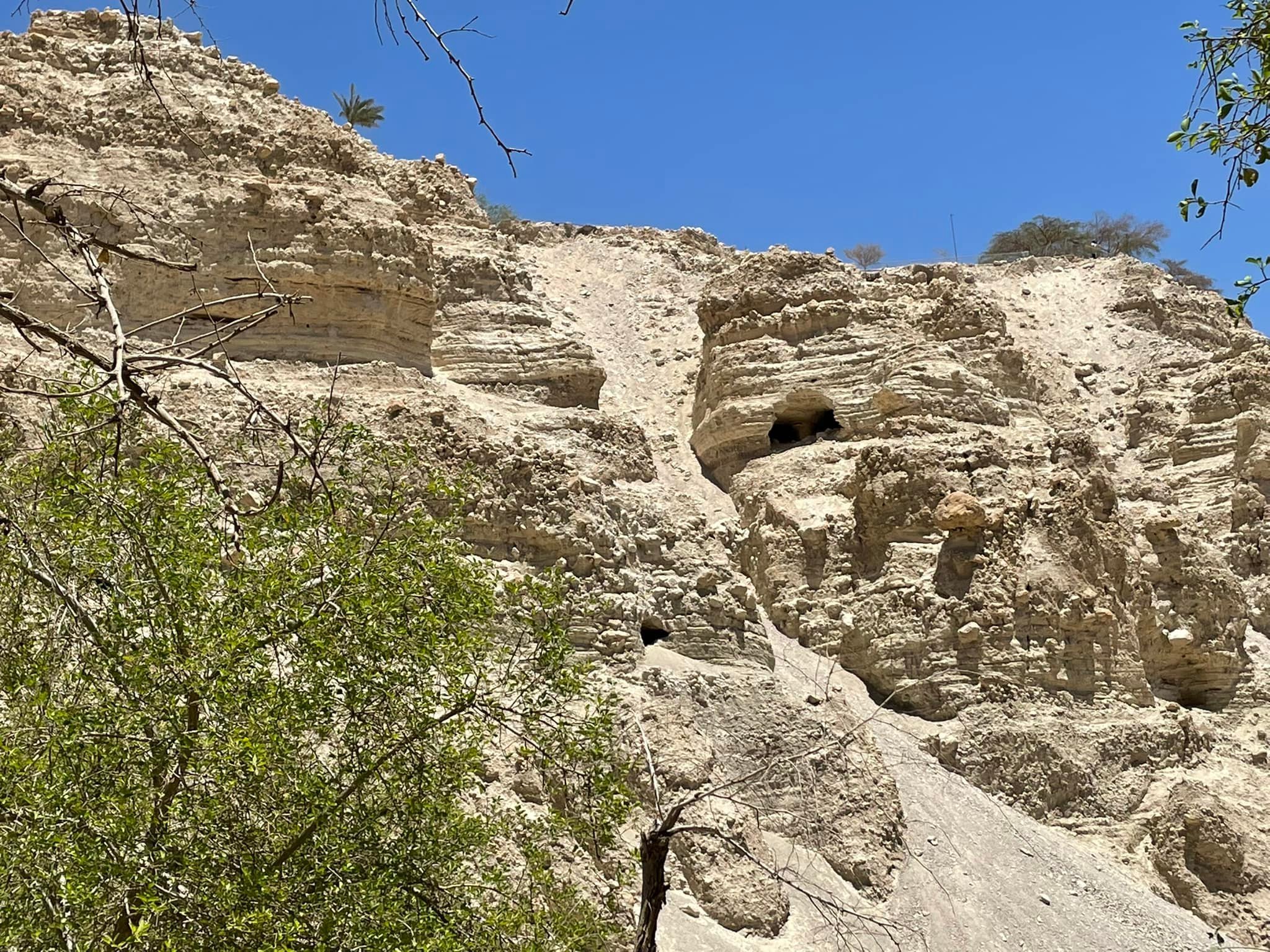
Above the springs are caves in which David hid from King Saul. However, at one point Saul went to rest in one of the caves not knowing that David and his companions were in the very back of it. Despite the urging of his comrades, David refused to harm Saul in any way because as he understood it, “he is God’s anointed.“
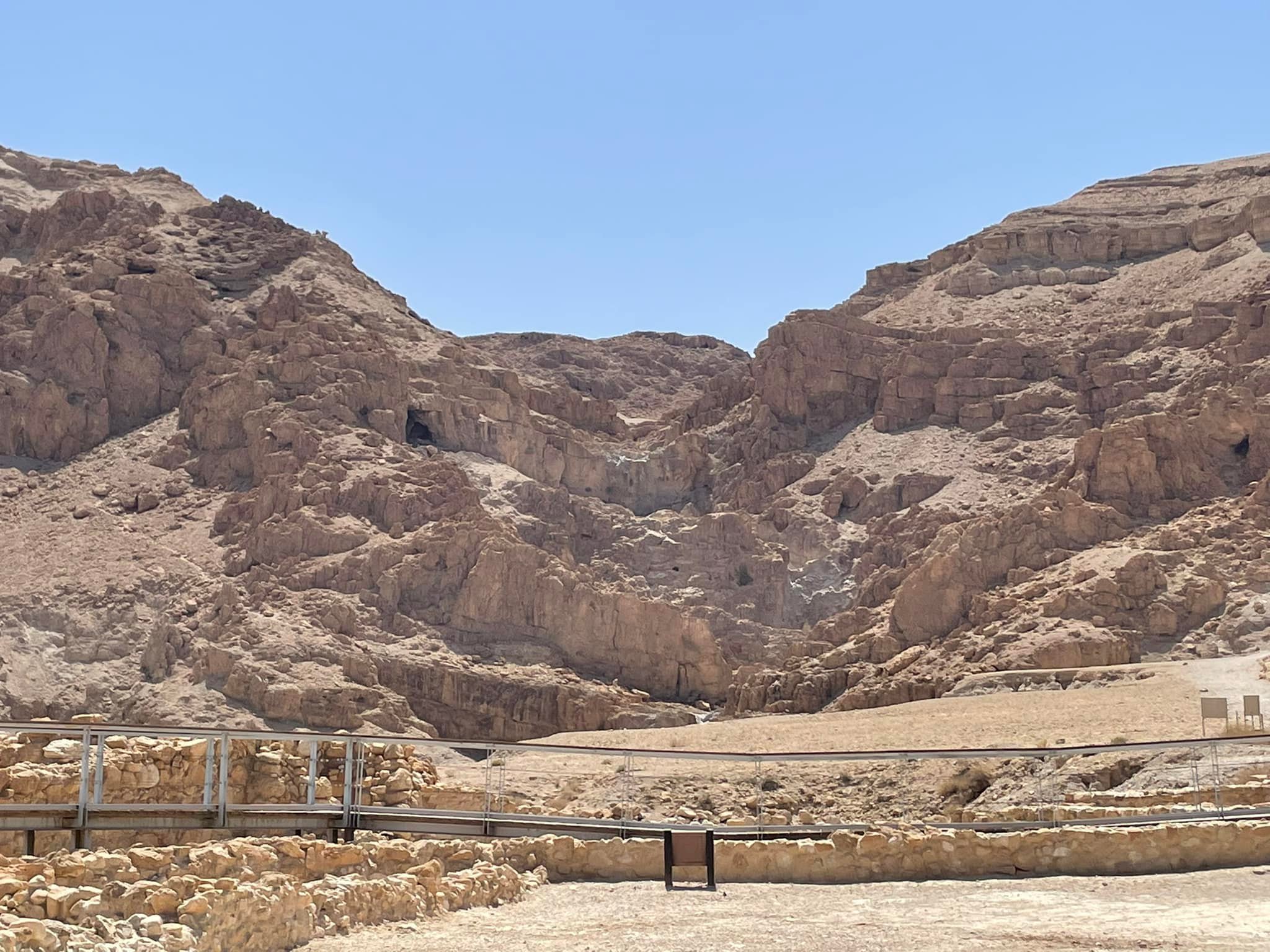
Here are a different set of caves. These are the caves above Qumran. In them, some Bedouin shepherds found jars containing hundreds of scrolls of the Old Testament. This became one of the most important archaeological finds ever.

Although there is no known connection between them, like John the Baptist this community practiced ritual washing with one set of steps into the cleansing pool, and another set to exit.
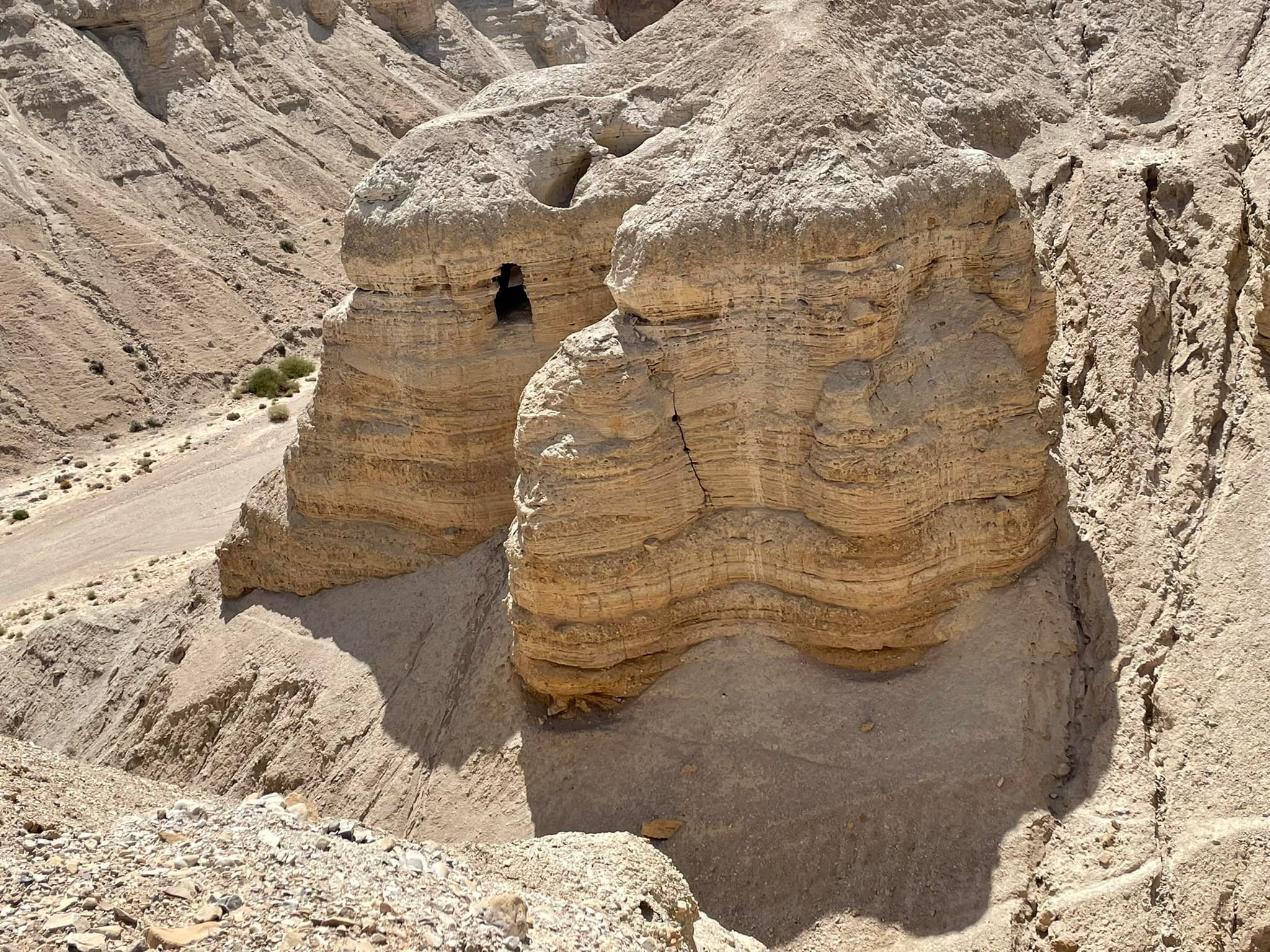
This is cave number four, where 2/3 of the scrolls were found.
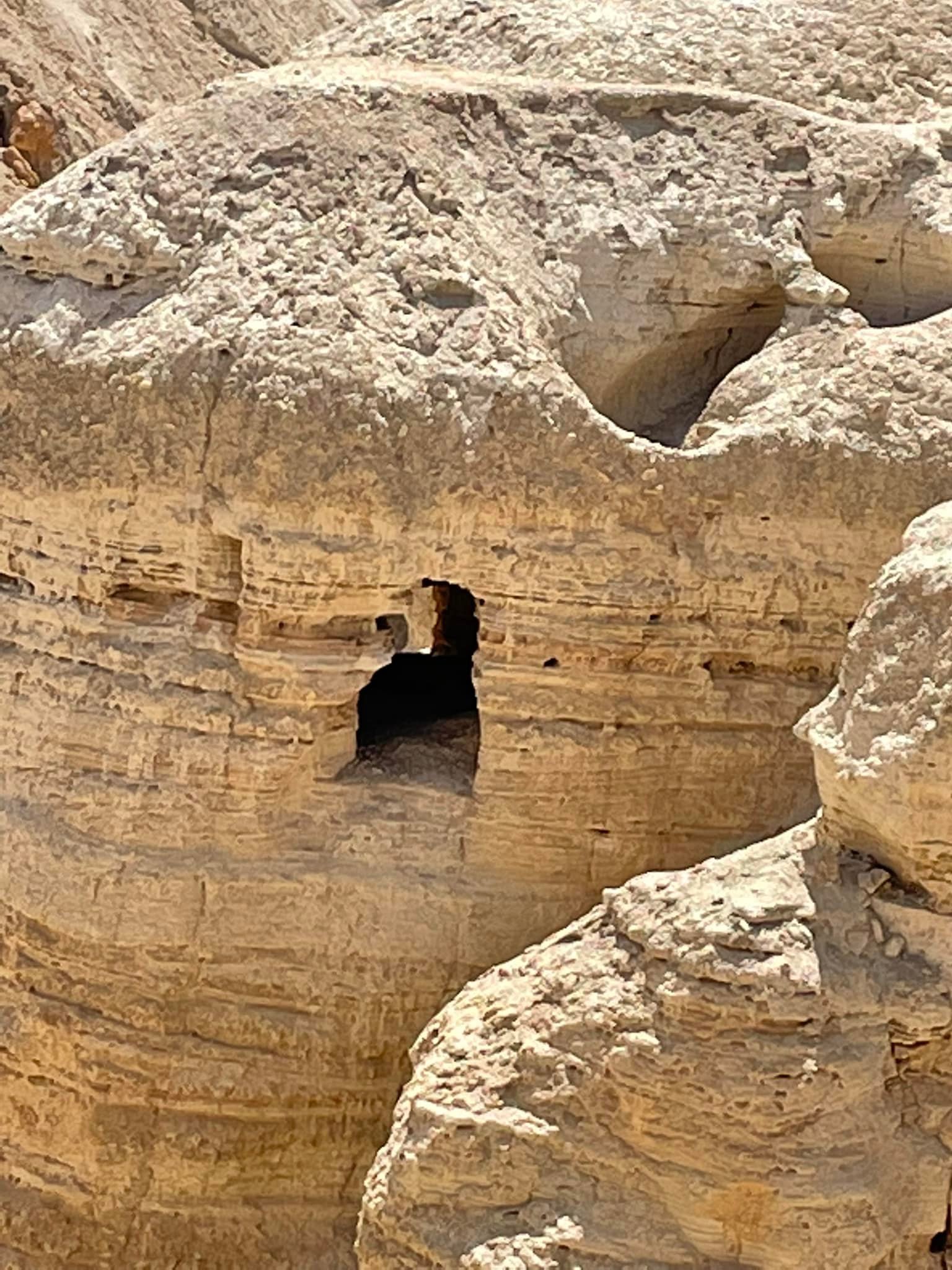
A closer view of cave number four. I do wonder how they got in and out of it. They must’ve been very nimble rock climbers.
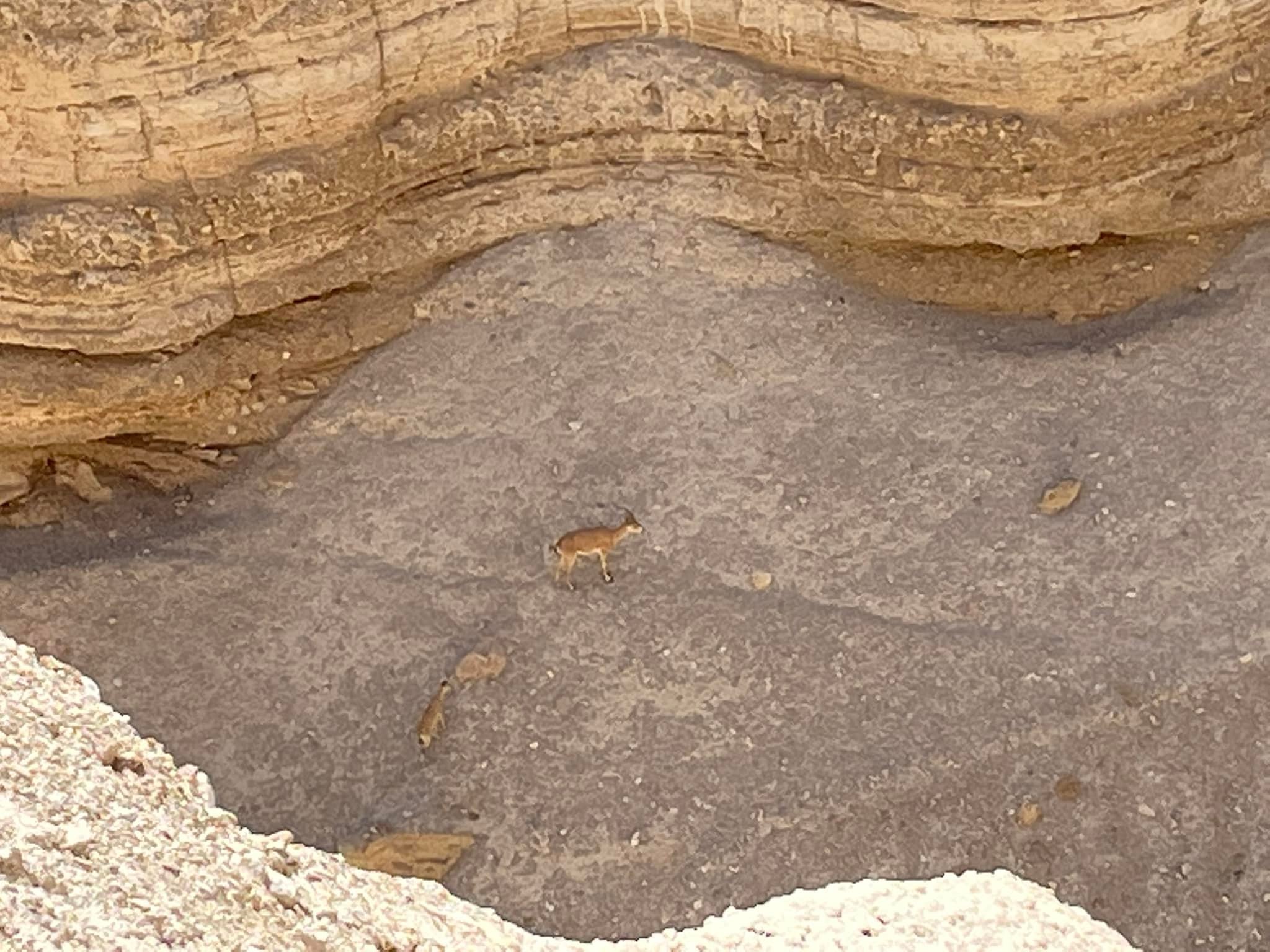
And we happened to see two more ibex at the base of that cave.
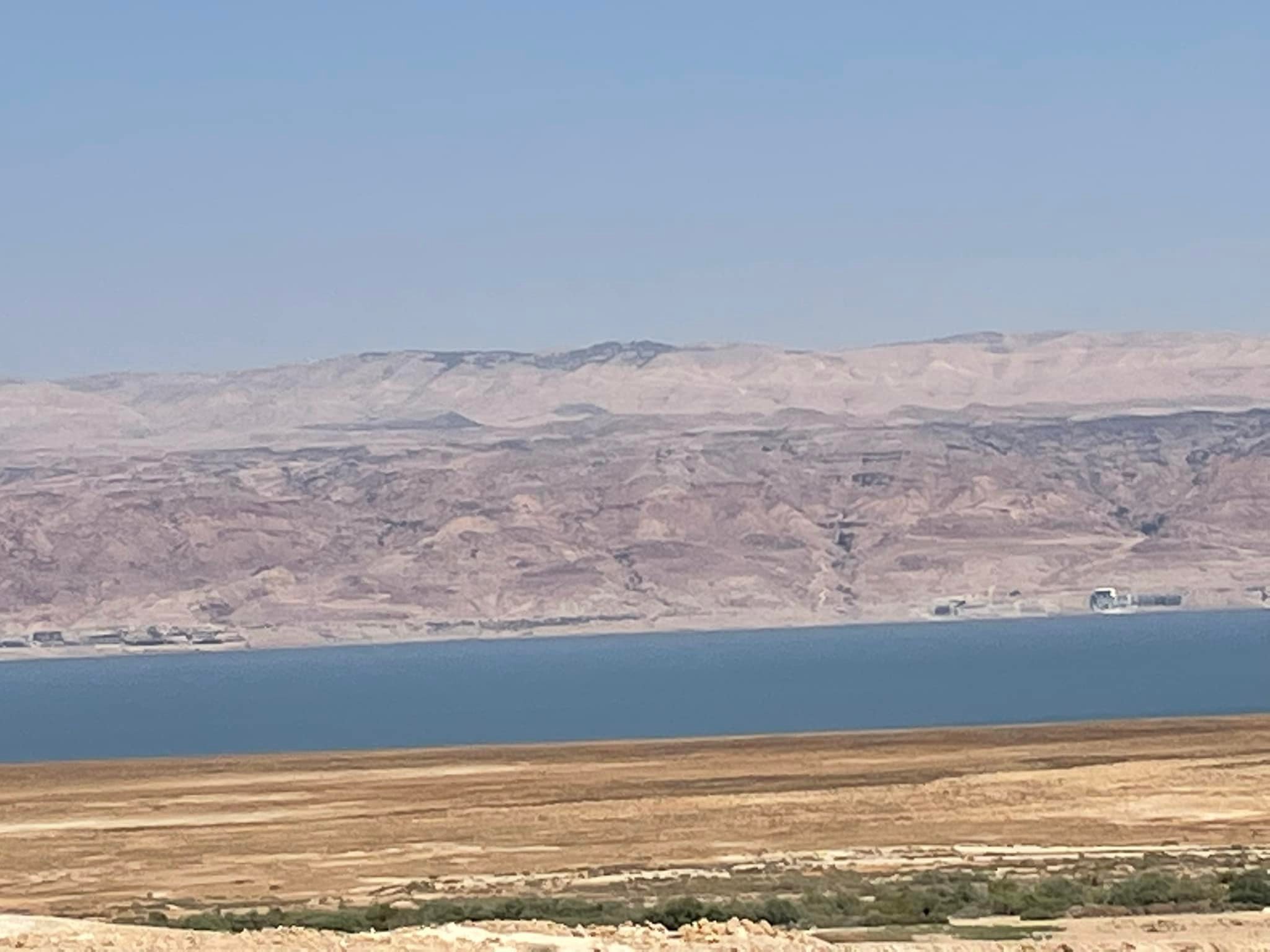
This is a view of the Dead Sea and Mount Nebo straight across from Qumran. It is frankly overwhelming to consider that this community that labored so hard to copy all of those scrolls of the Law and the Prophets of Israel did so directly across from the very spot where Moses, who first delivered the law to Israel, was able to look into the Promised Land before he died.
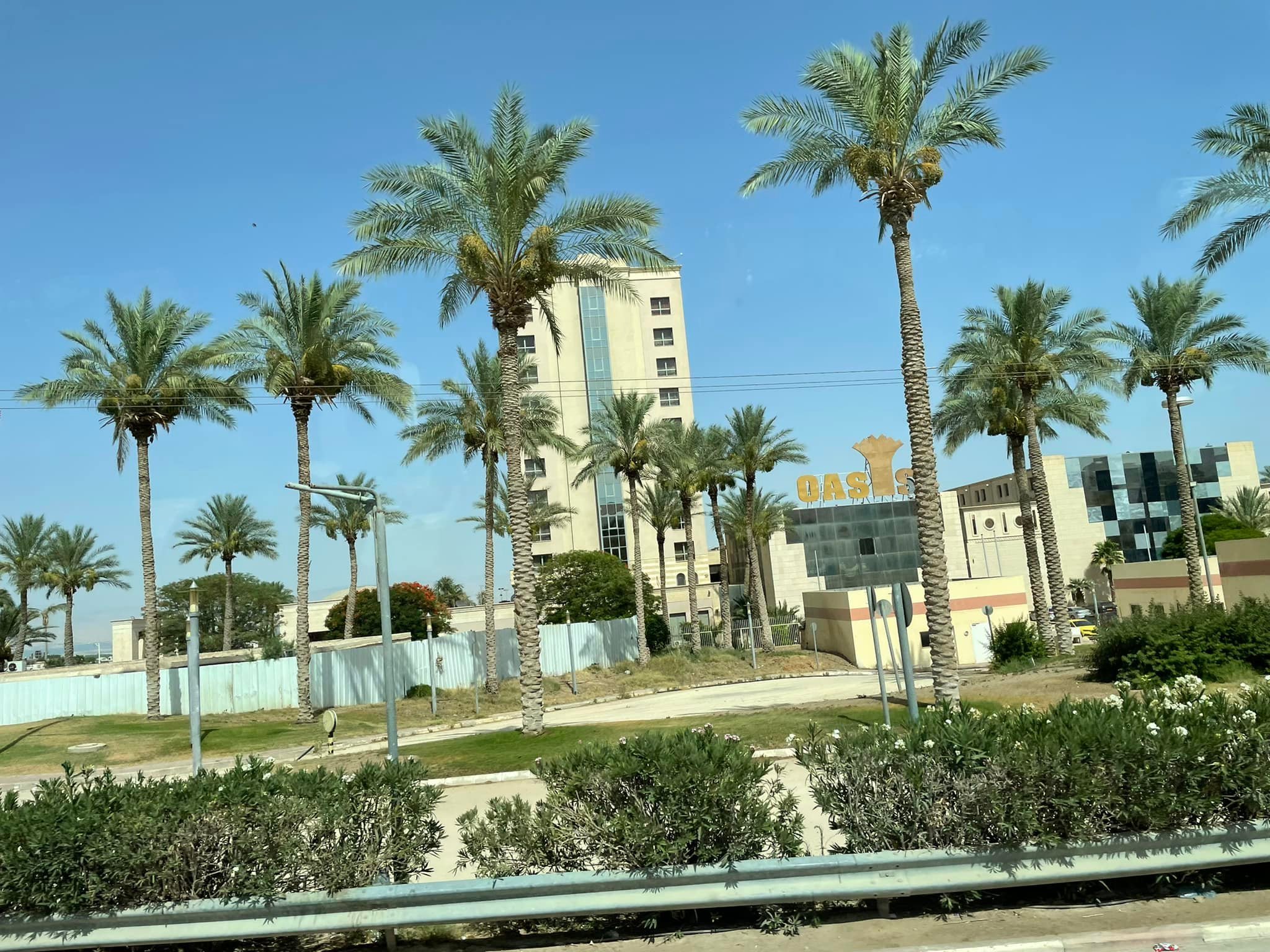
Next we went into Jericho, the lowest city in the world and one of the oldest.
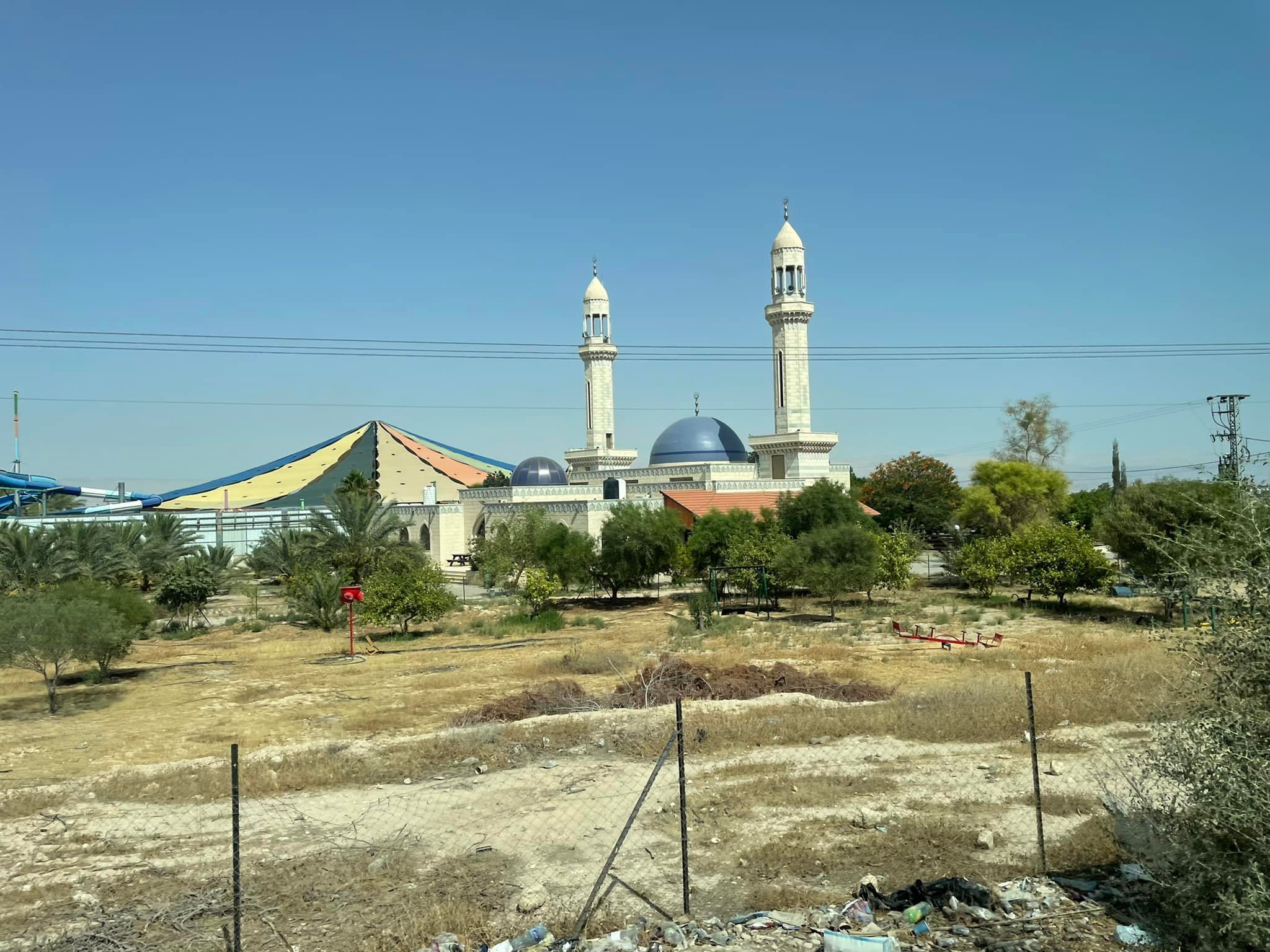
Jericho was in Jordan until the 1967 Arab-Israeli war, and is now under Palestinian rule yet also under Israeli authority.
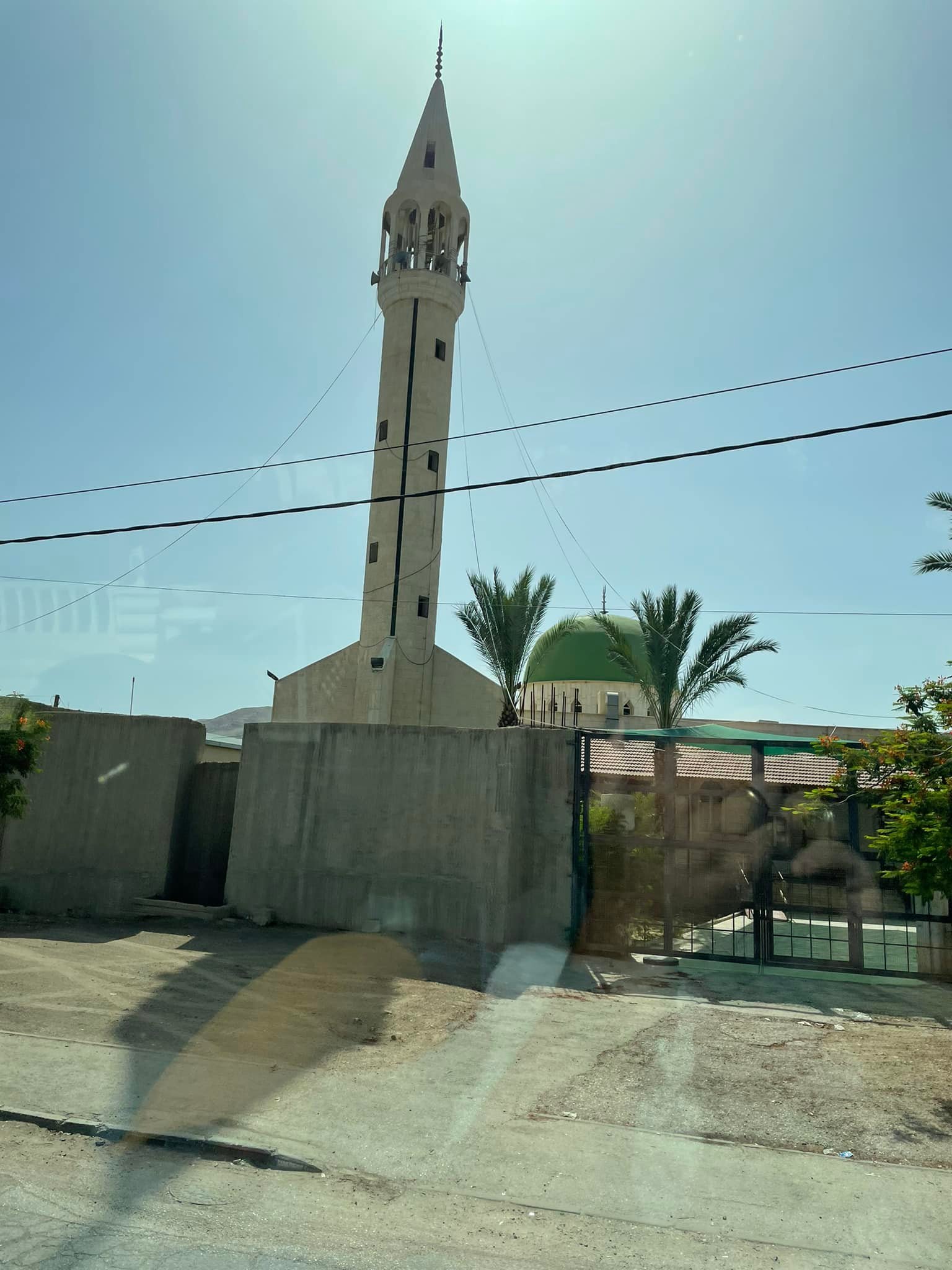
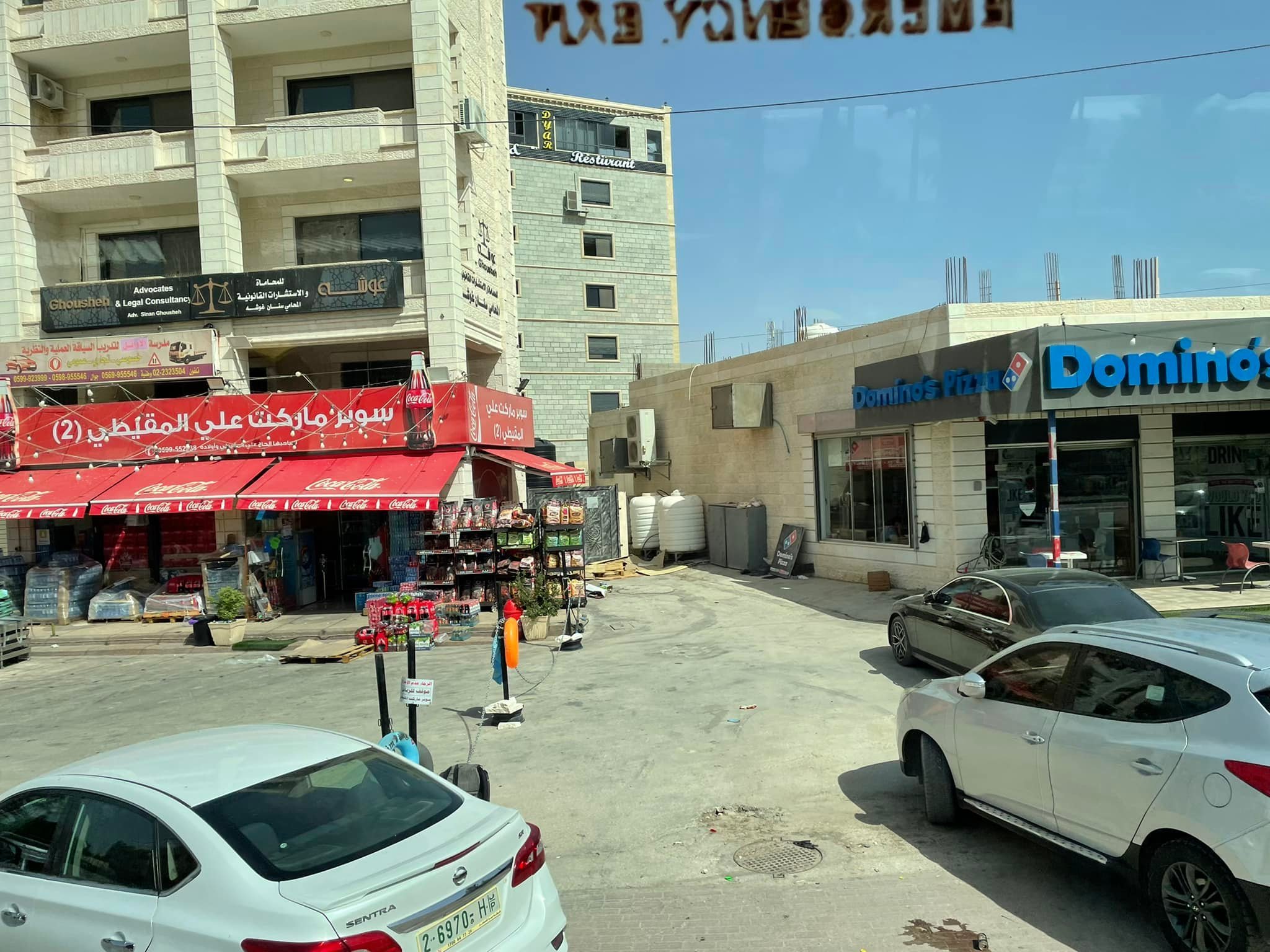
A clash of cultures, yes that is a Domino’s Pizza.
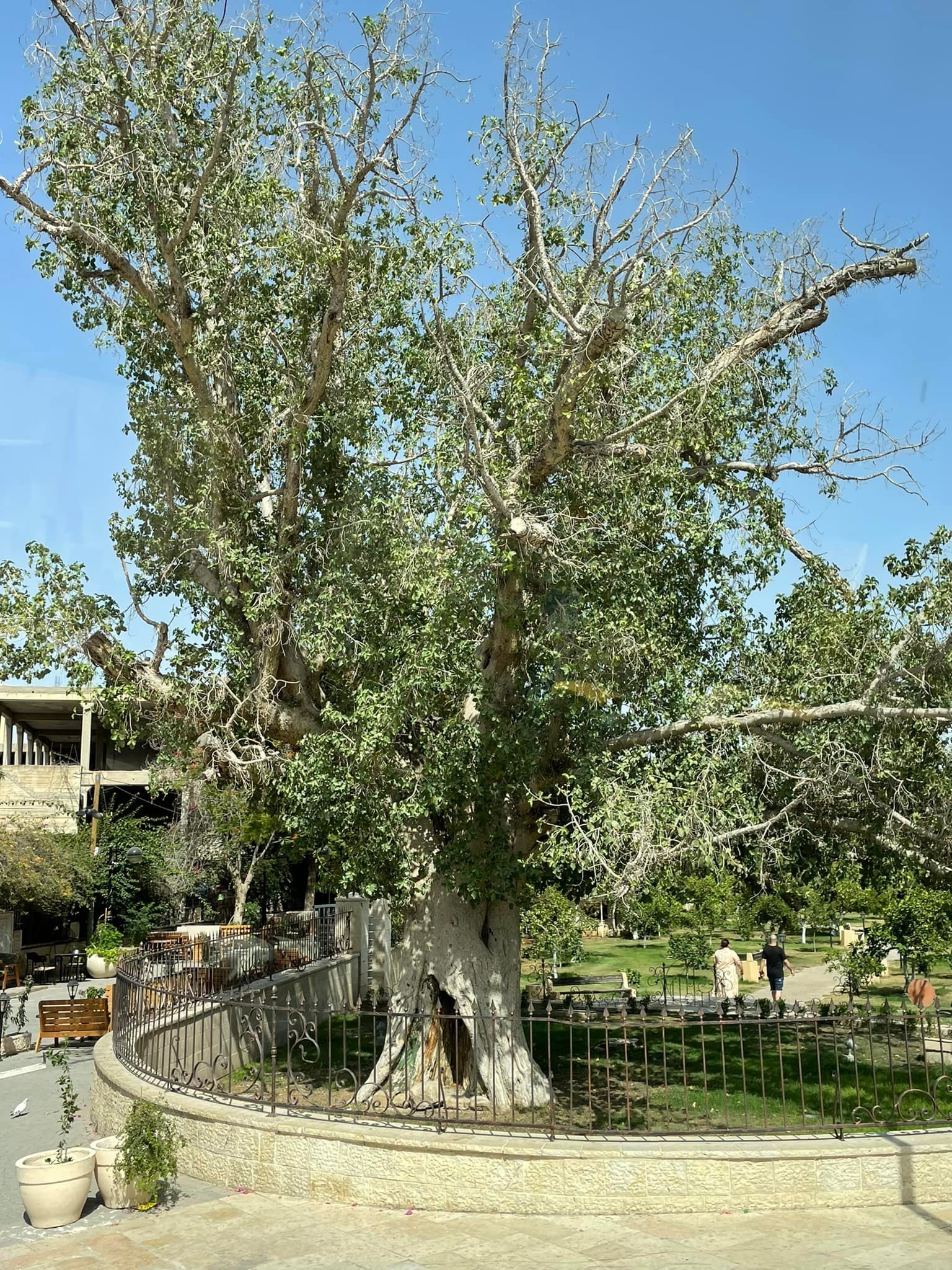
This is a sycamore fig tree, the type of tree that Zacchaeus was in when Jesus called out to him in Luke’s Gospel.
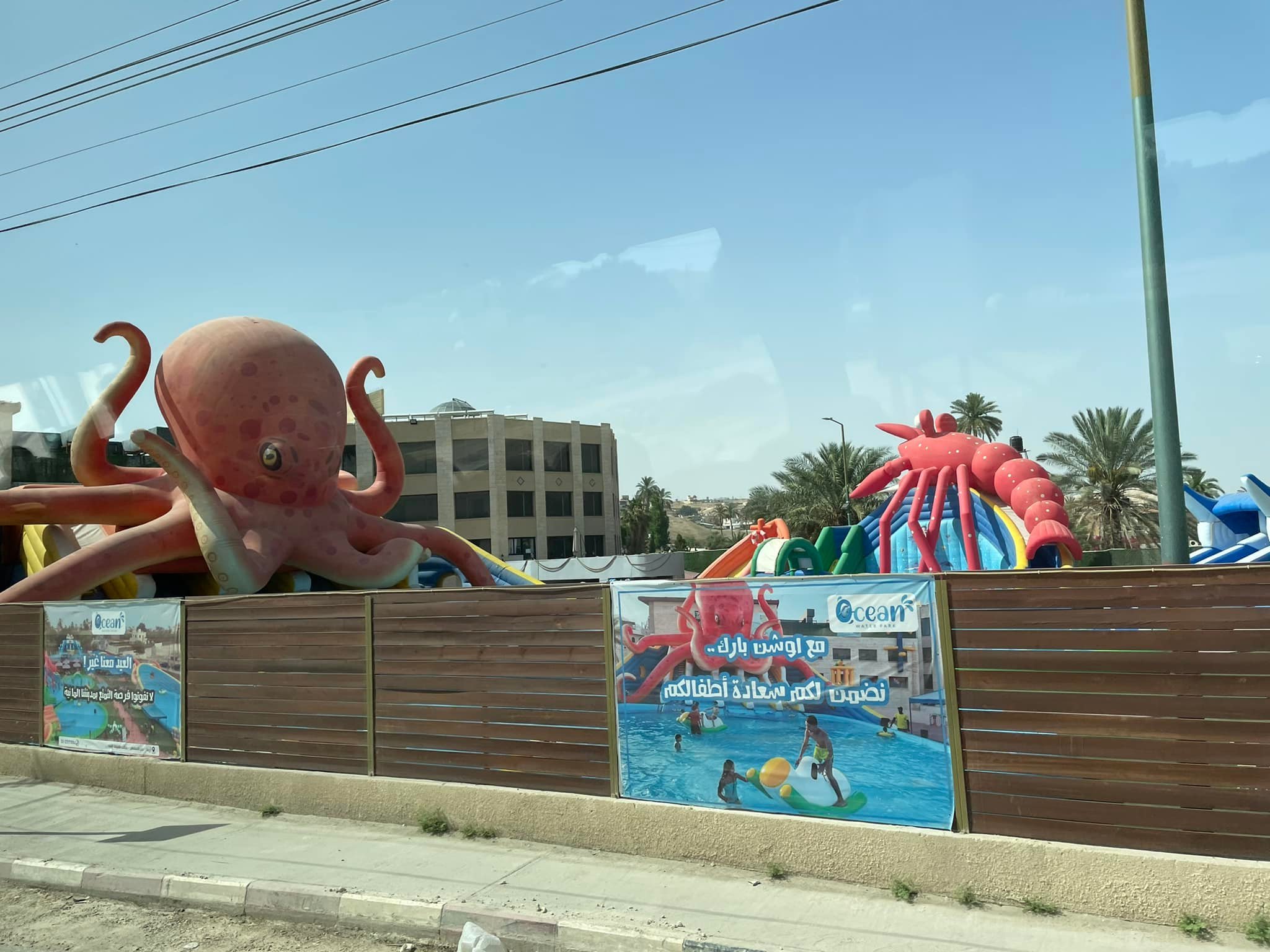
This water park is adjacent to the springs that gave rise to Jericho.
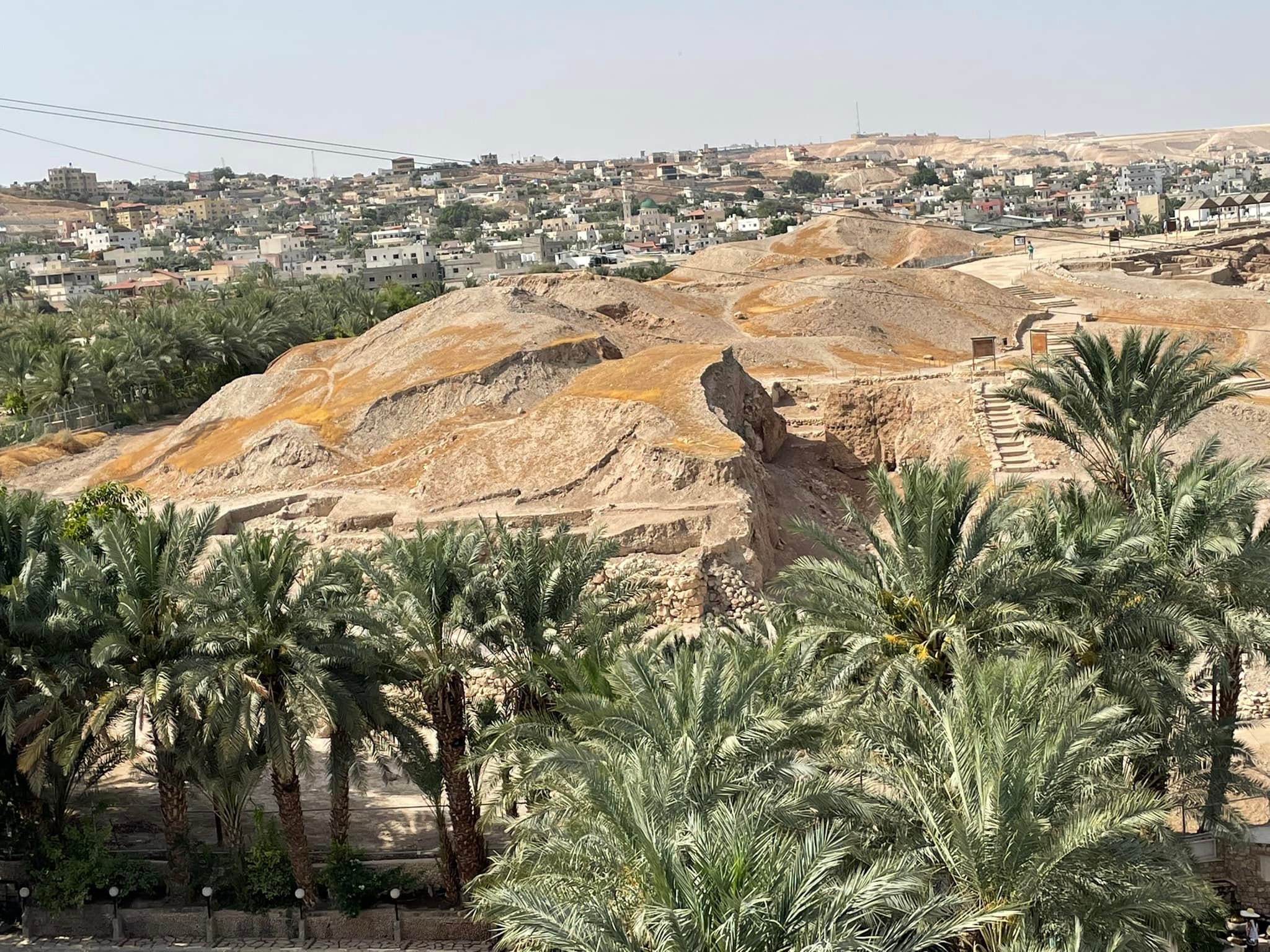
This is the “tel” of ancient Jericho. Among the fines that have been made there is a wall that fell to the outside, which would allow invaders to easily enter.

The ancient springs are under those red roofs. The waterpark is just to the right.
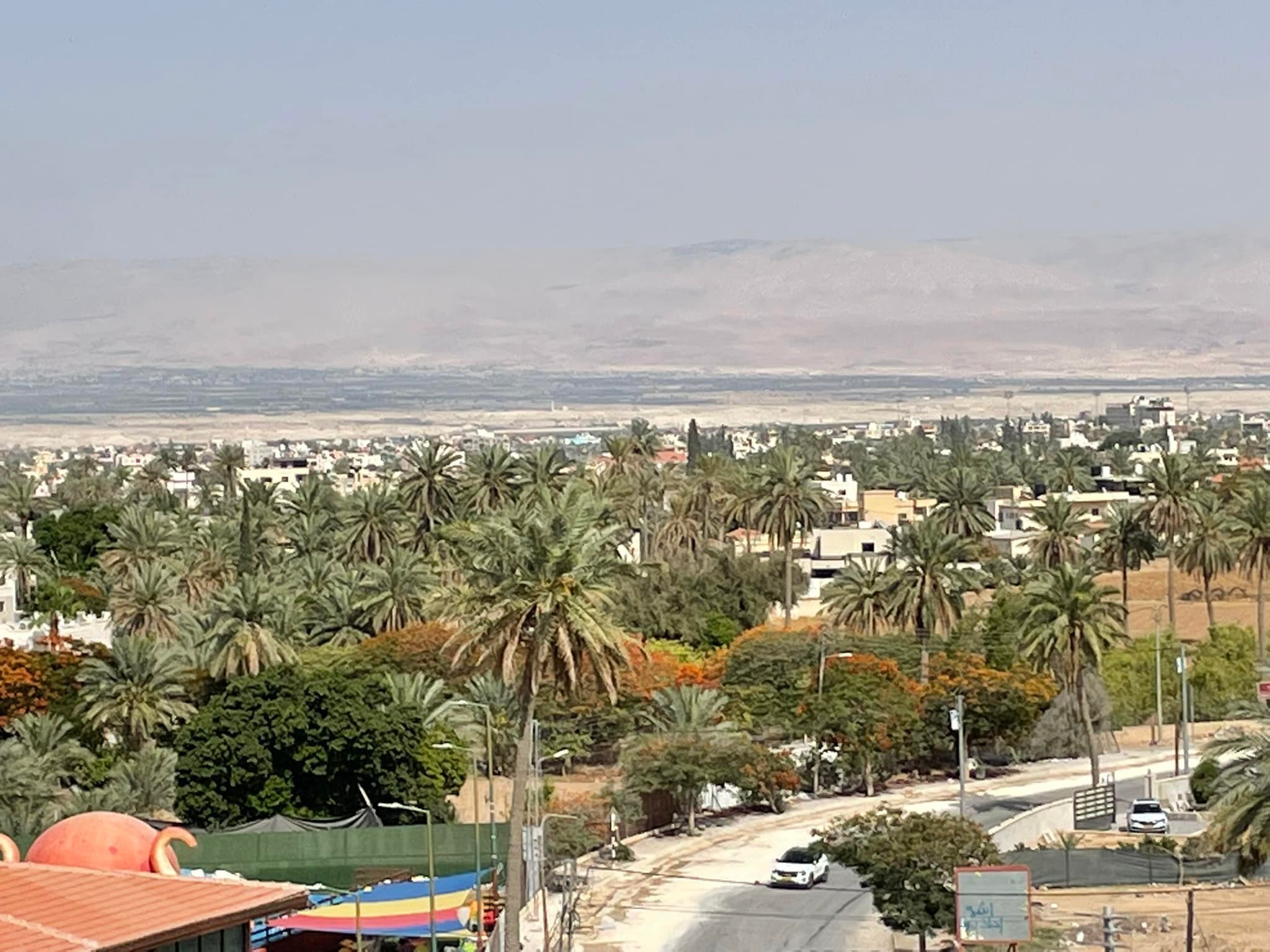
This is looking across to the hills of Edom.
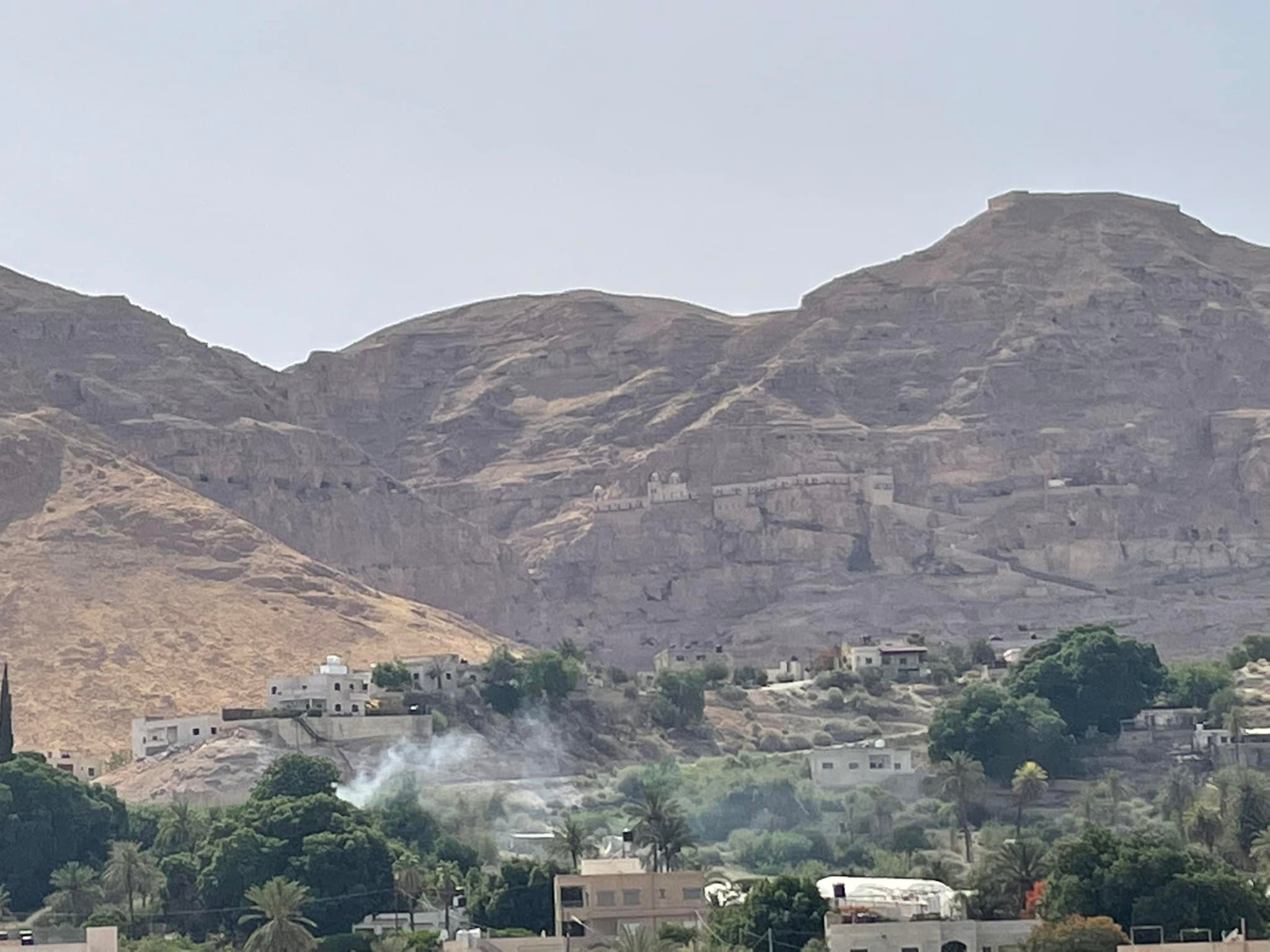
This is looking west toward the ancient trail up to Jerusalem. If you zoom in closely, you’ll see an orthodox monastery that was built along the road. It dates back to the byzantine era, in the 300s A.D.
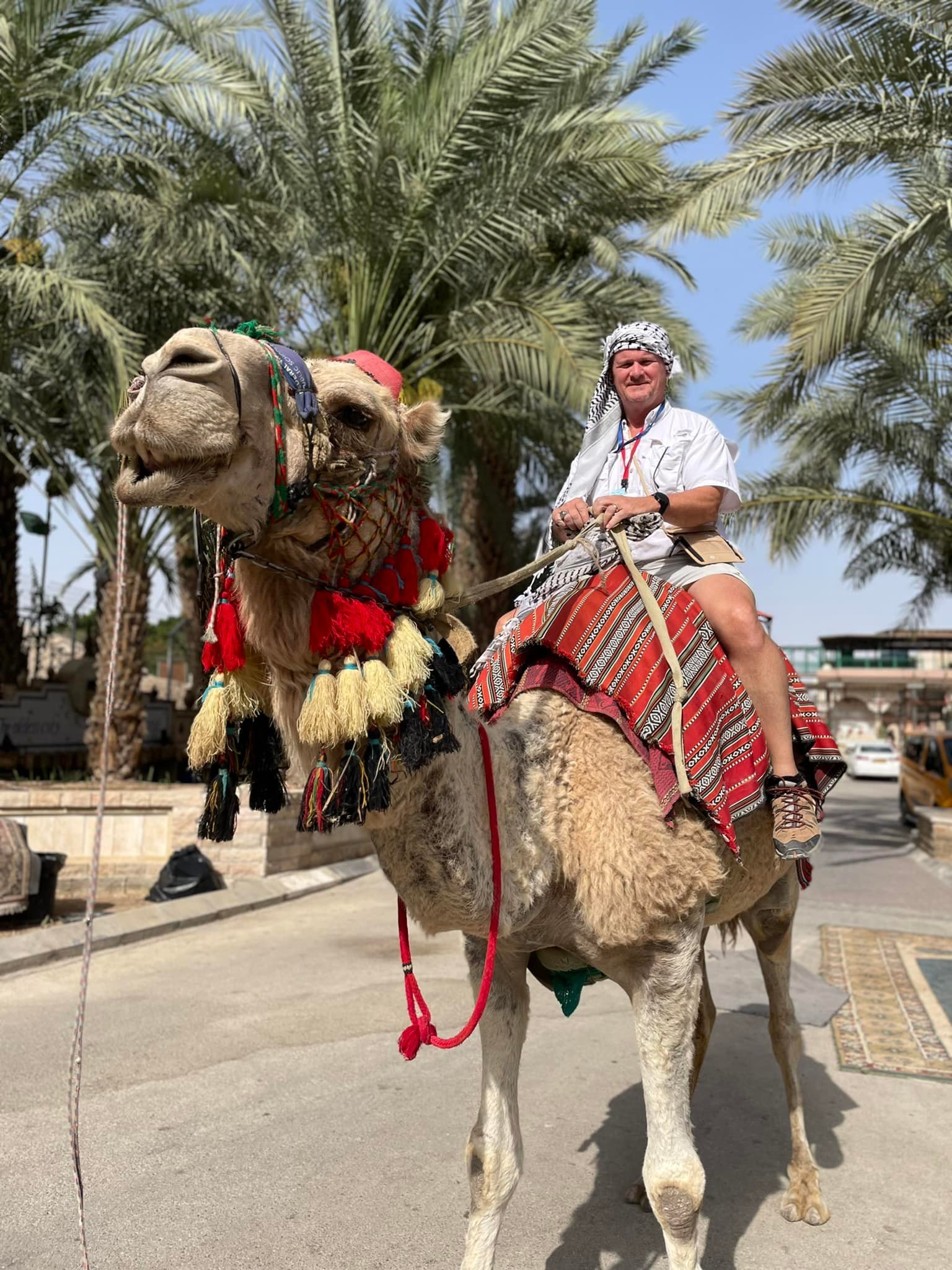
Well, how often do you run into a camel in a parking lot?
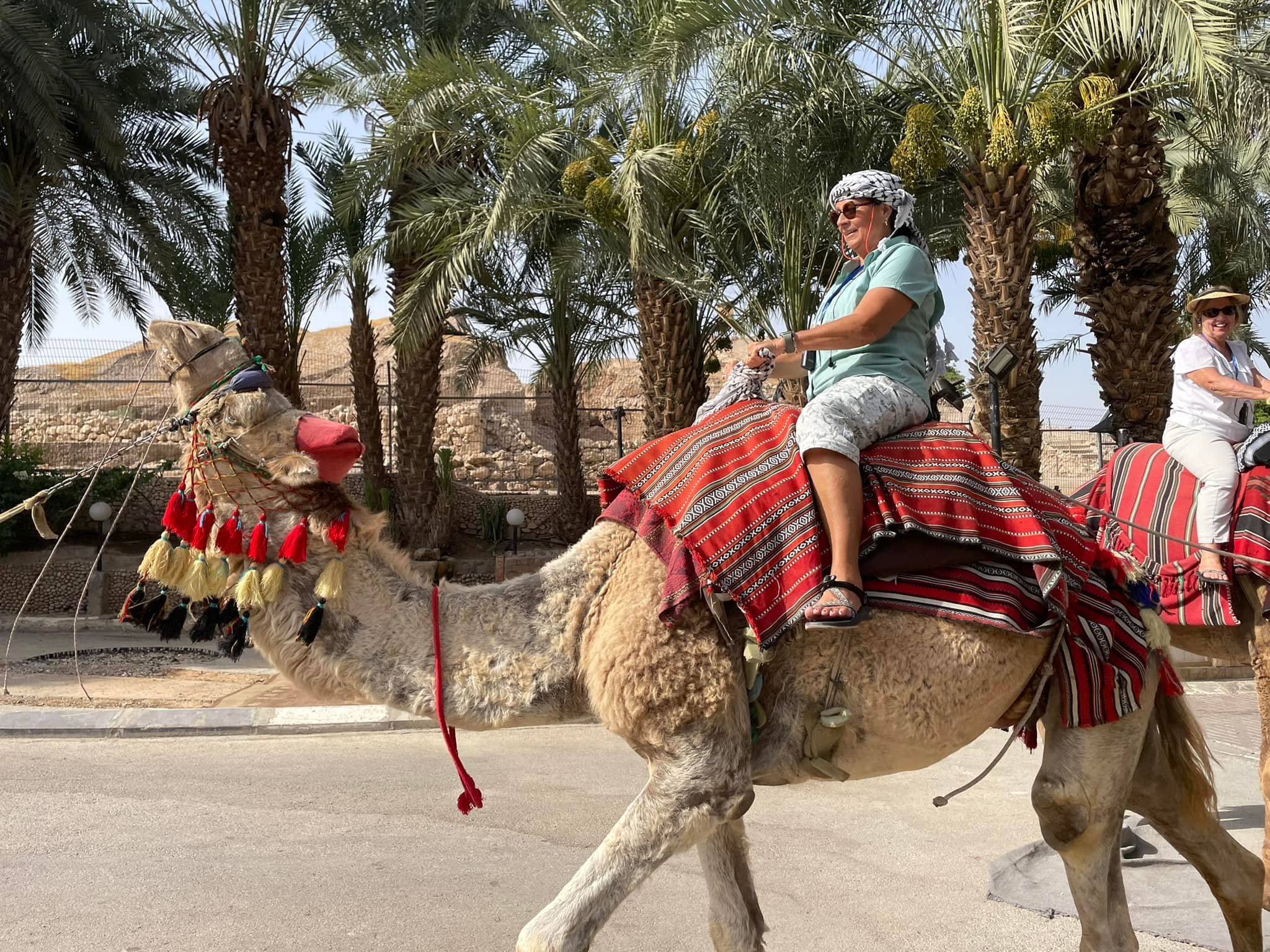
I wasn’t the only one!
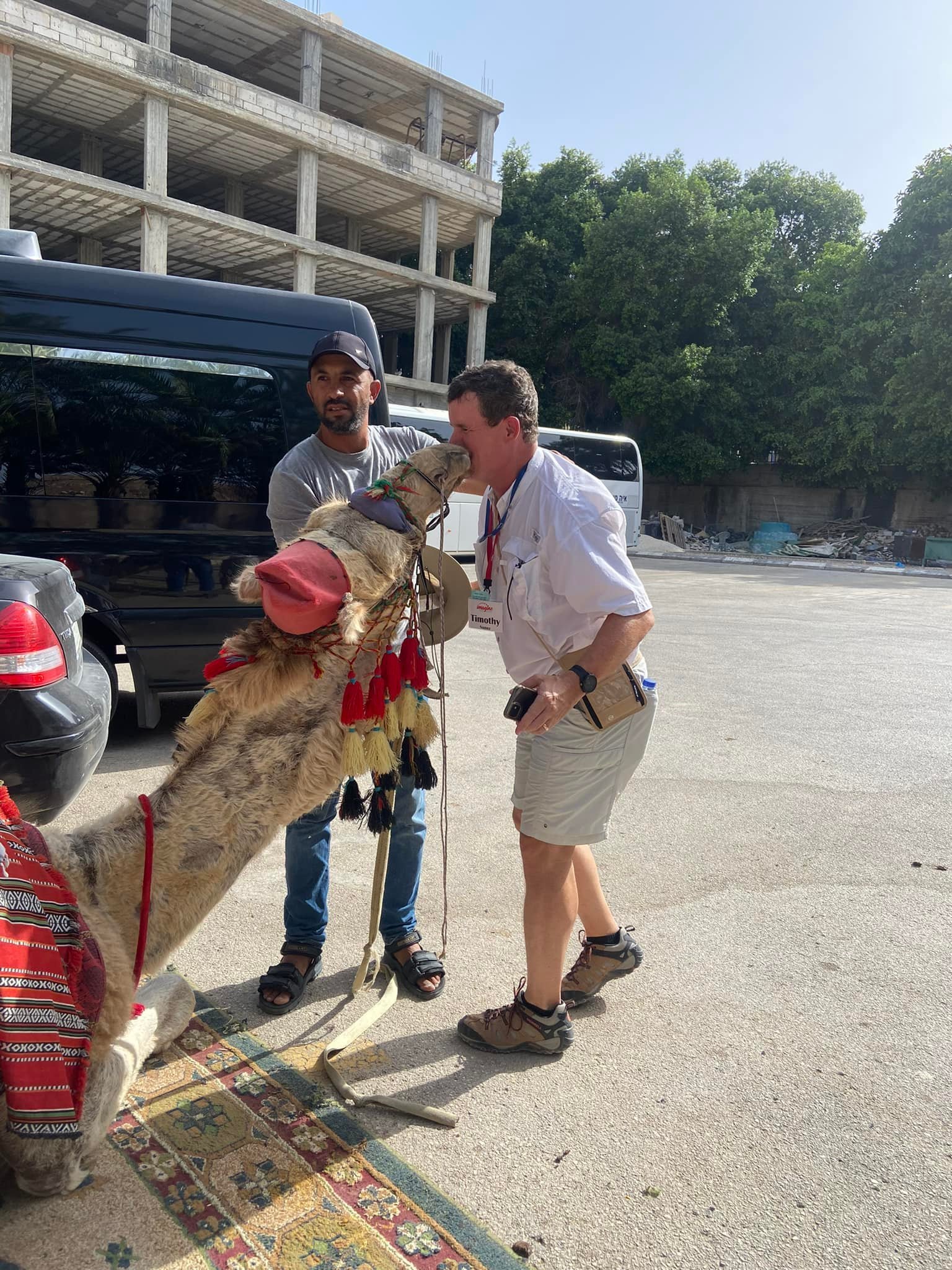
Who knew camels were so sweet??
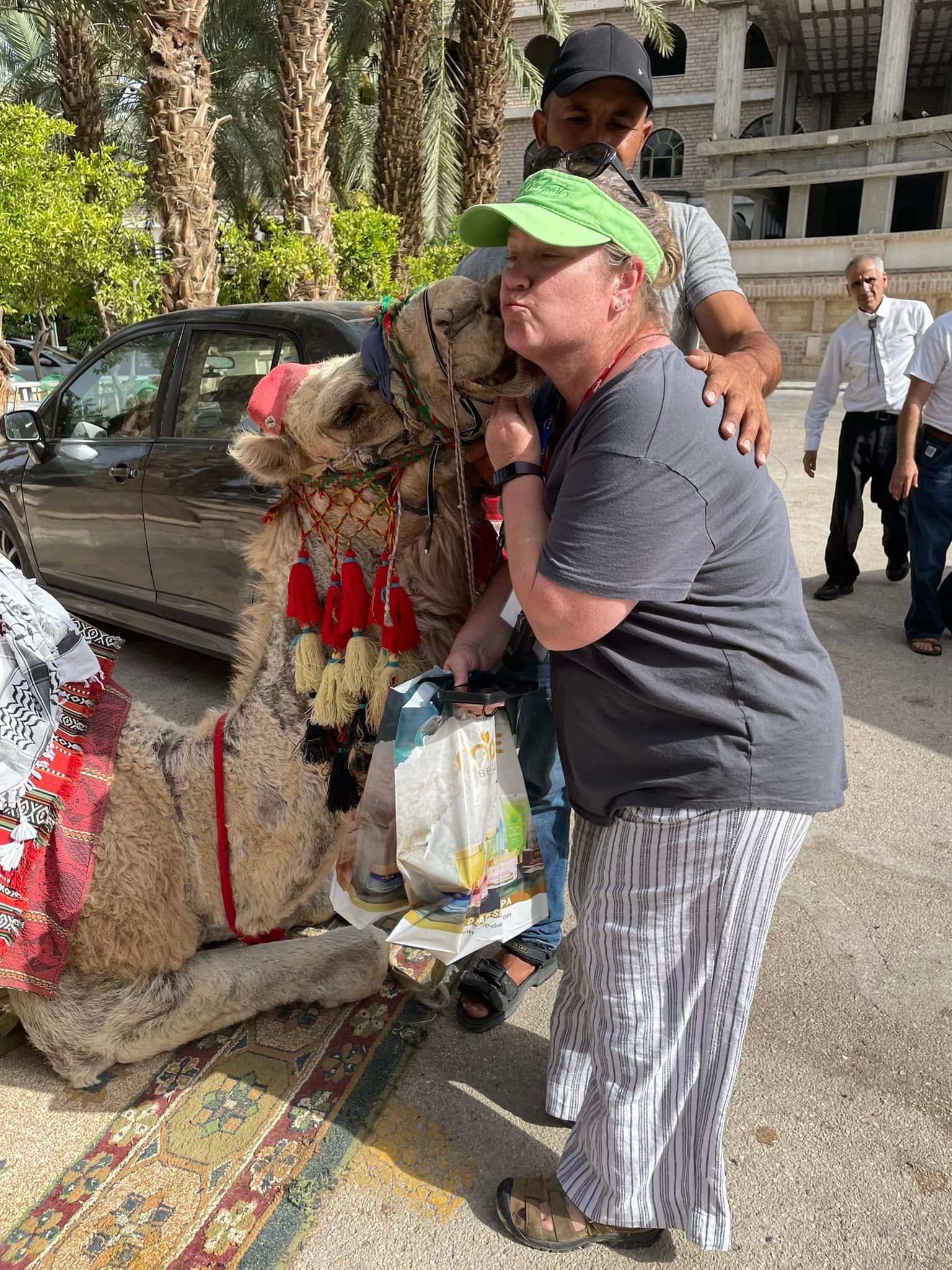
Stephanie got a kiss too!
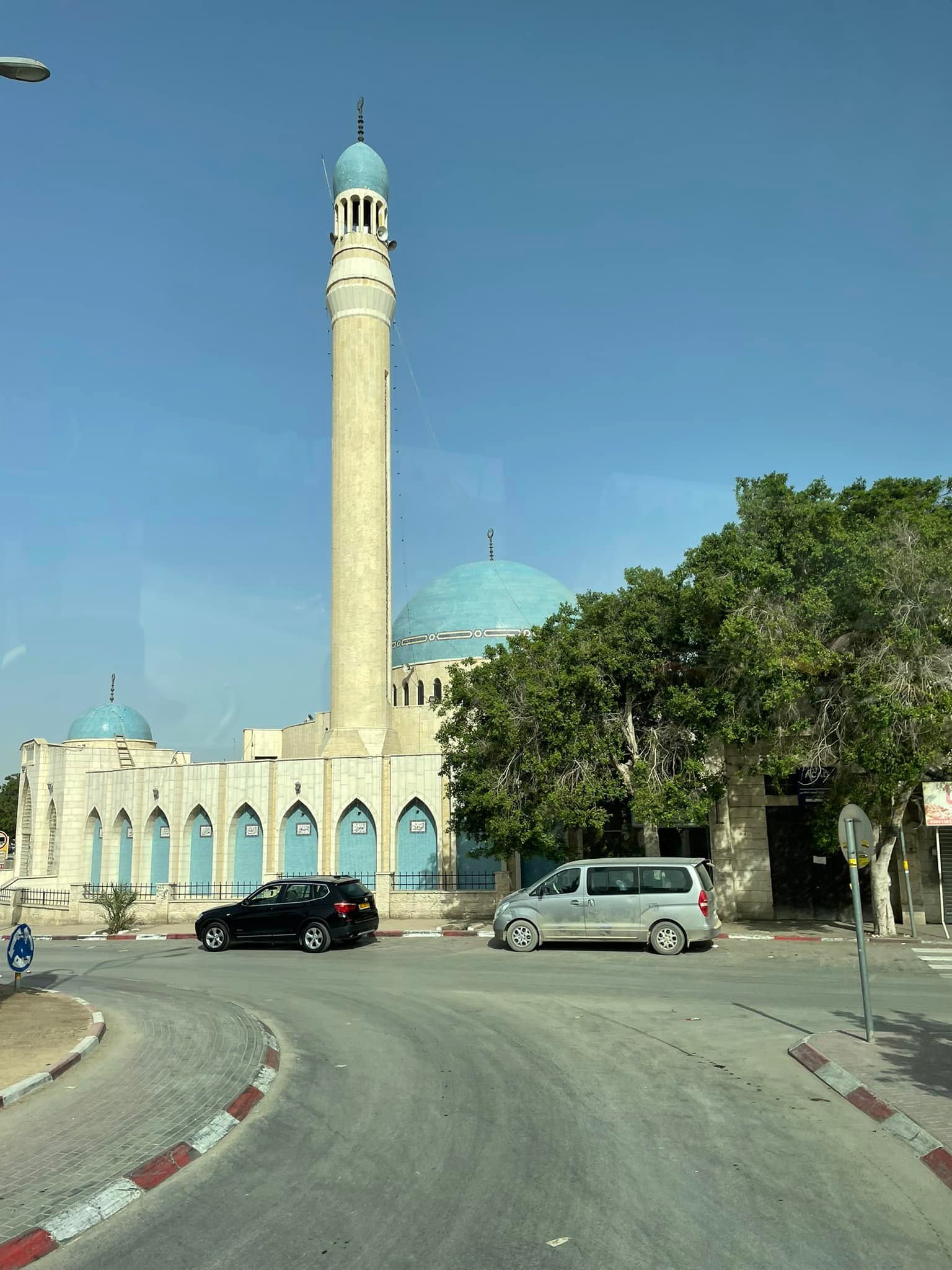
Heading out of Jericho.
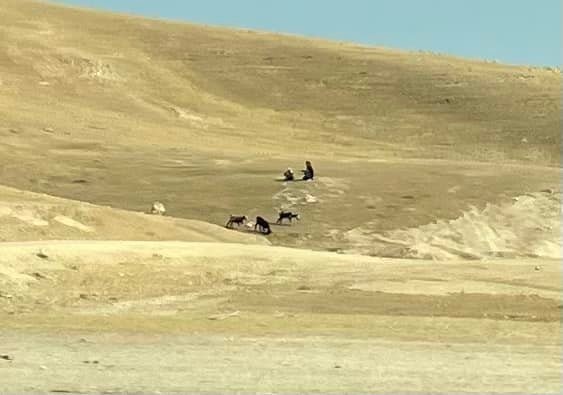
These are actual Bedouin shepherd boys tending to a flock of goats

This is the type of village that Bedouins live in.
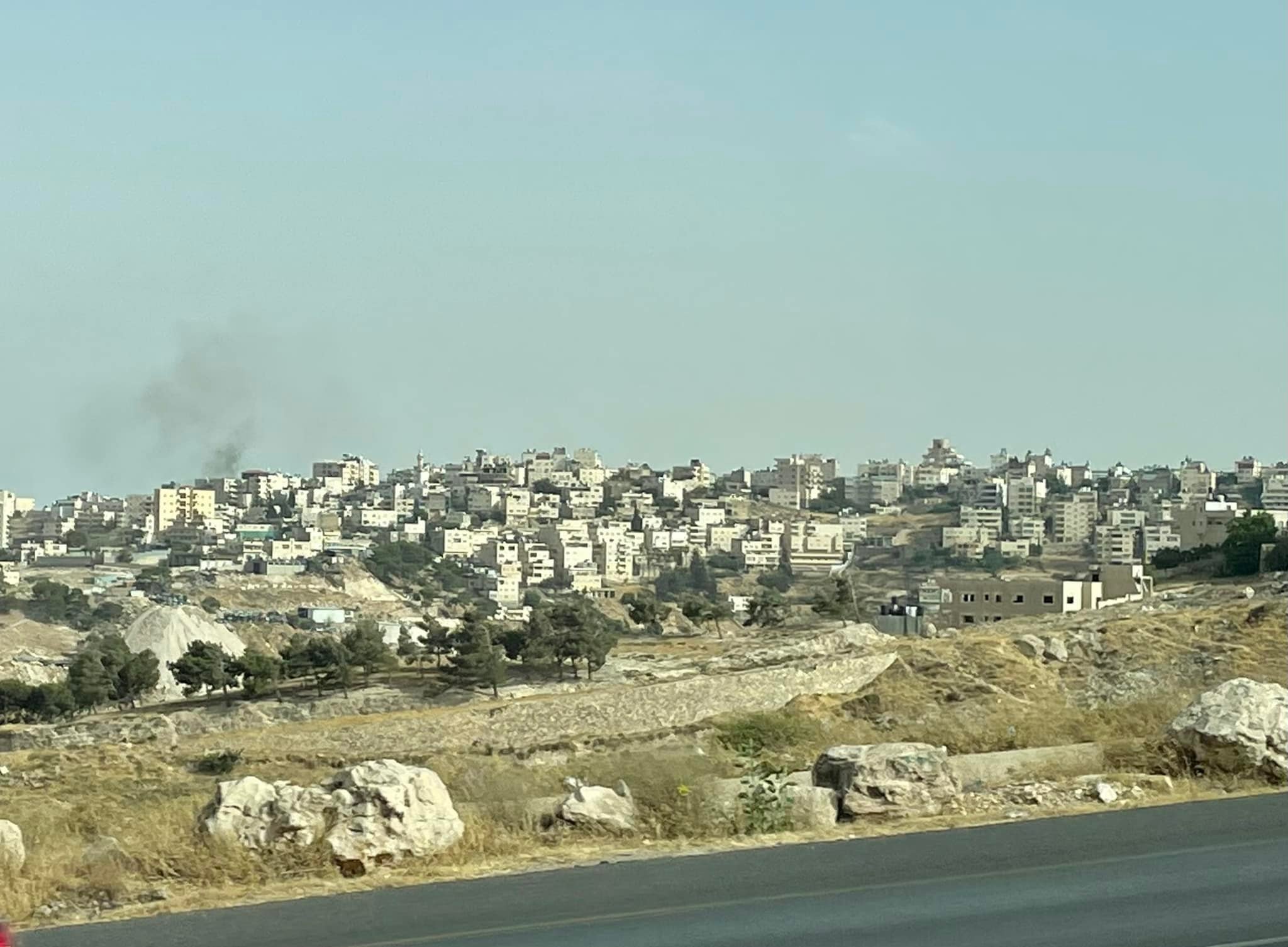
This is the type of community that the Israelis are building in the West Bank.
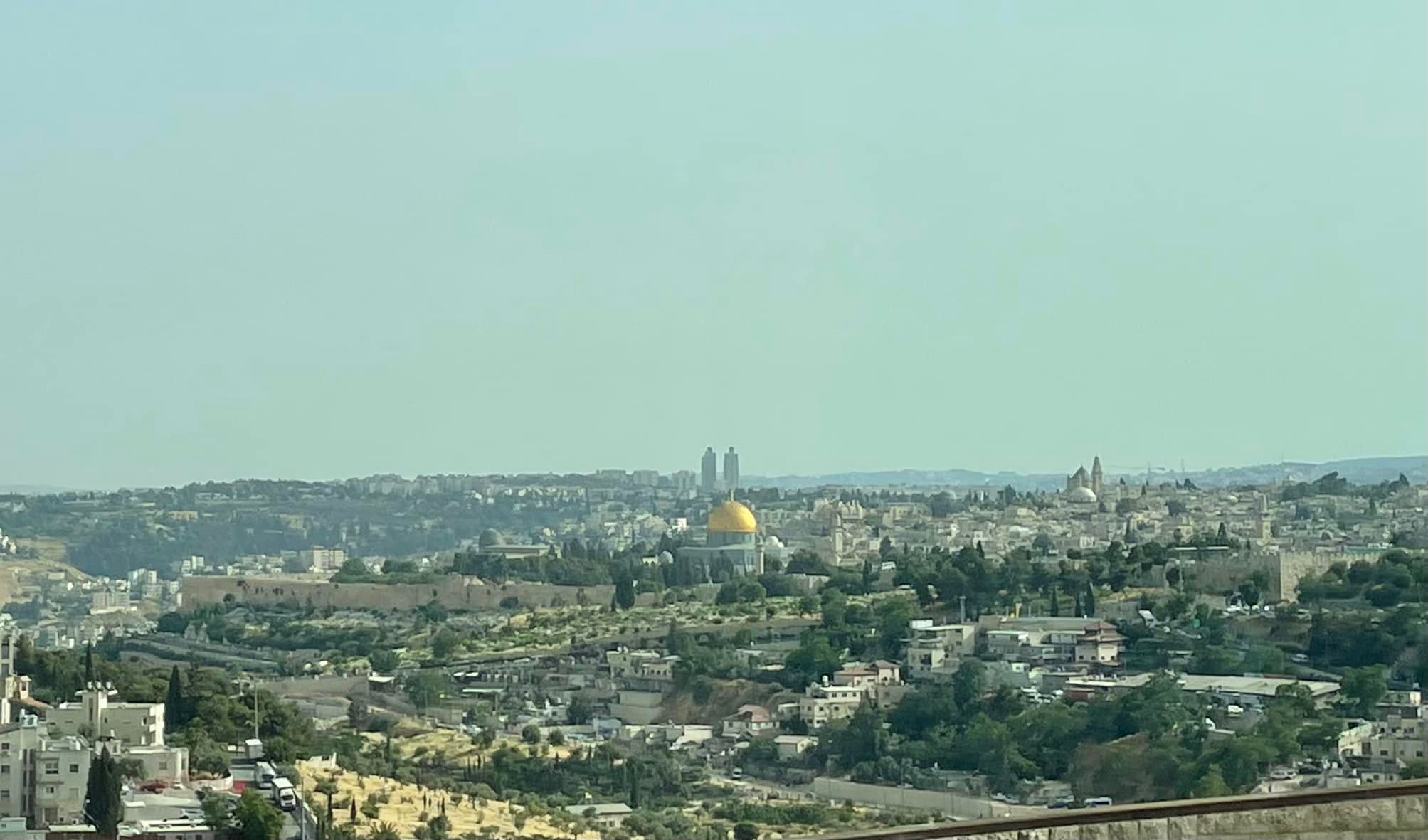
This is looking south to the heart of Jerusalem. That center is the Dome of the Rock, a Muslim temple which stands where the Temple of Solomon stood.
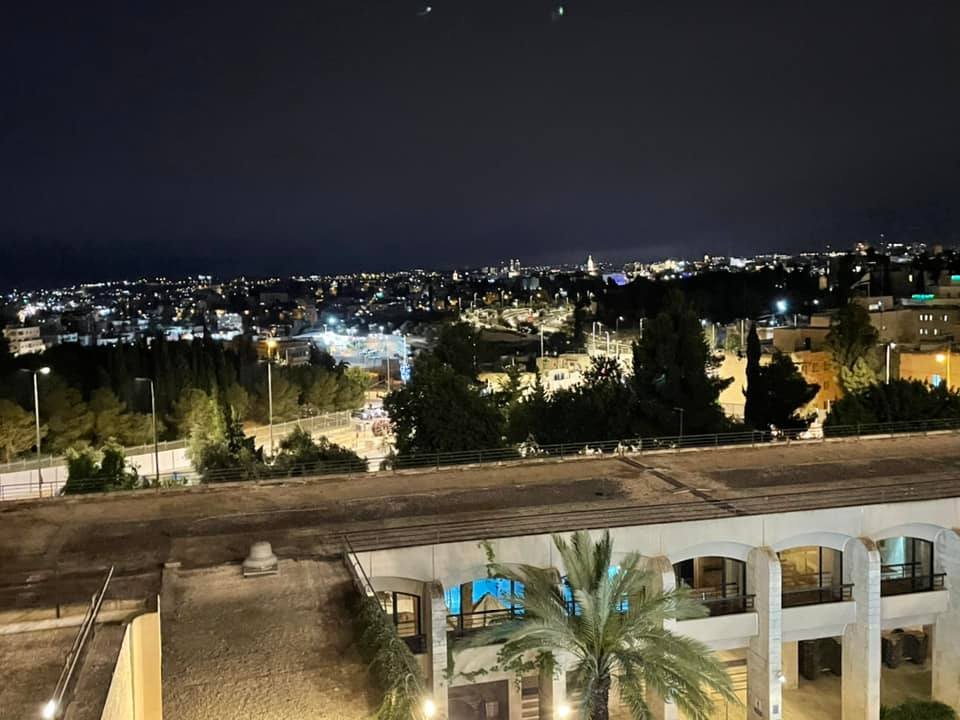
This is the view from a terrace at our hotel. It is looking south, and just over the hill is the Temple Mount and the Dome of the Rock etc.
Pilgrimage to the Holy Land - Day 4
We began with an hour boat ride on the Sea of Galilee then visited key places where Jesus and his disciples went. We then went south along the River Jordan all the way to the Dead Sea - a 2.5 hour drive. There we checked into our hotel and went for a float. The water is so salty it holds you up - like you’re in an easy chair.
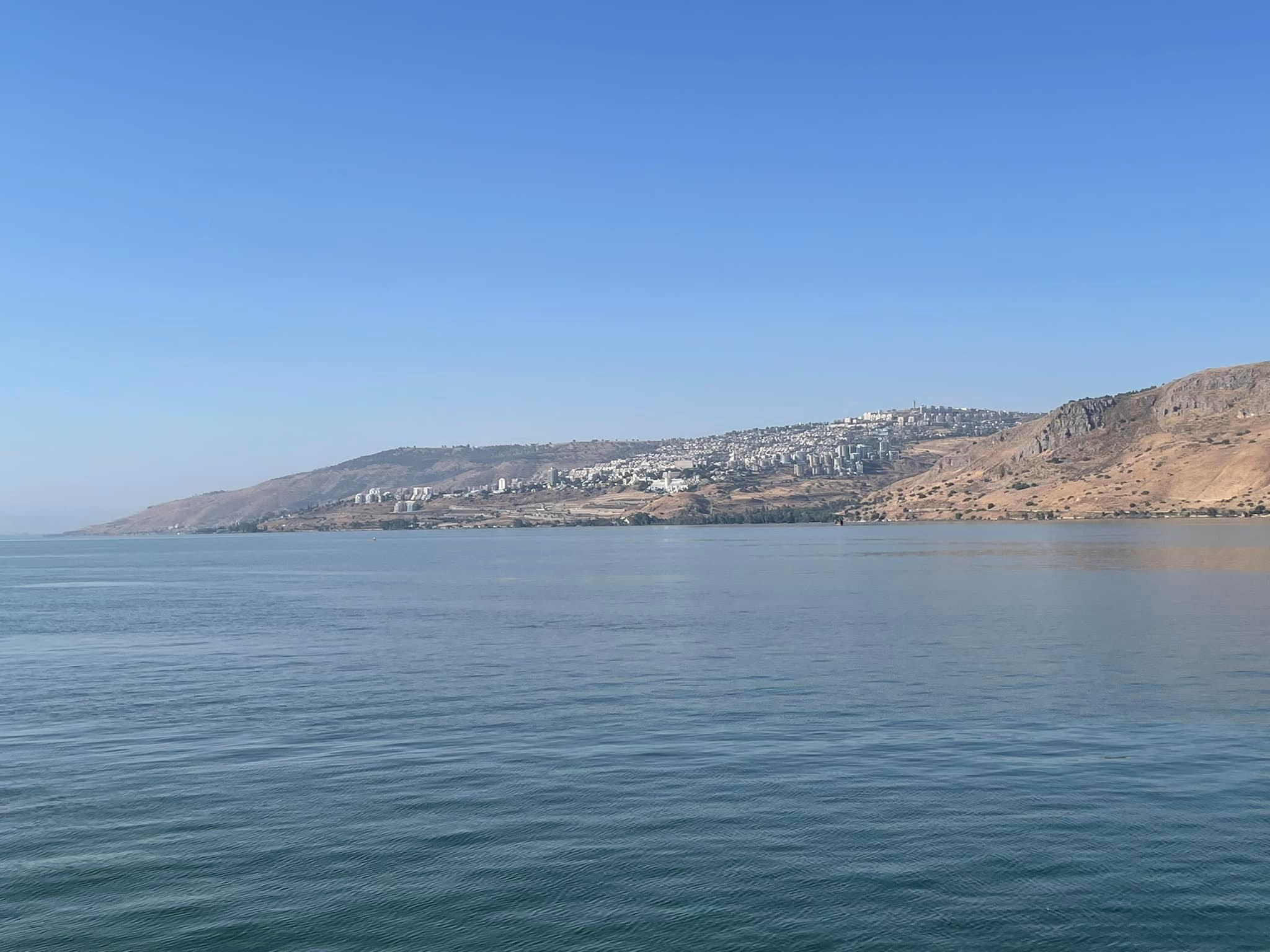
Tiberias from the Sea of Galilee.
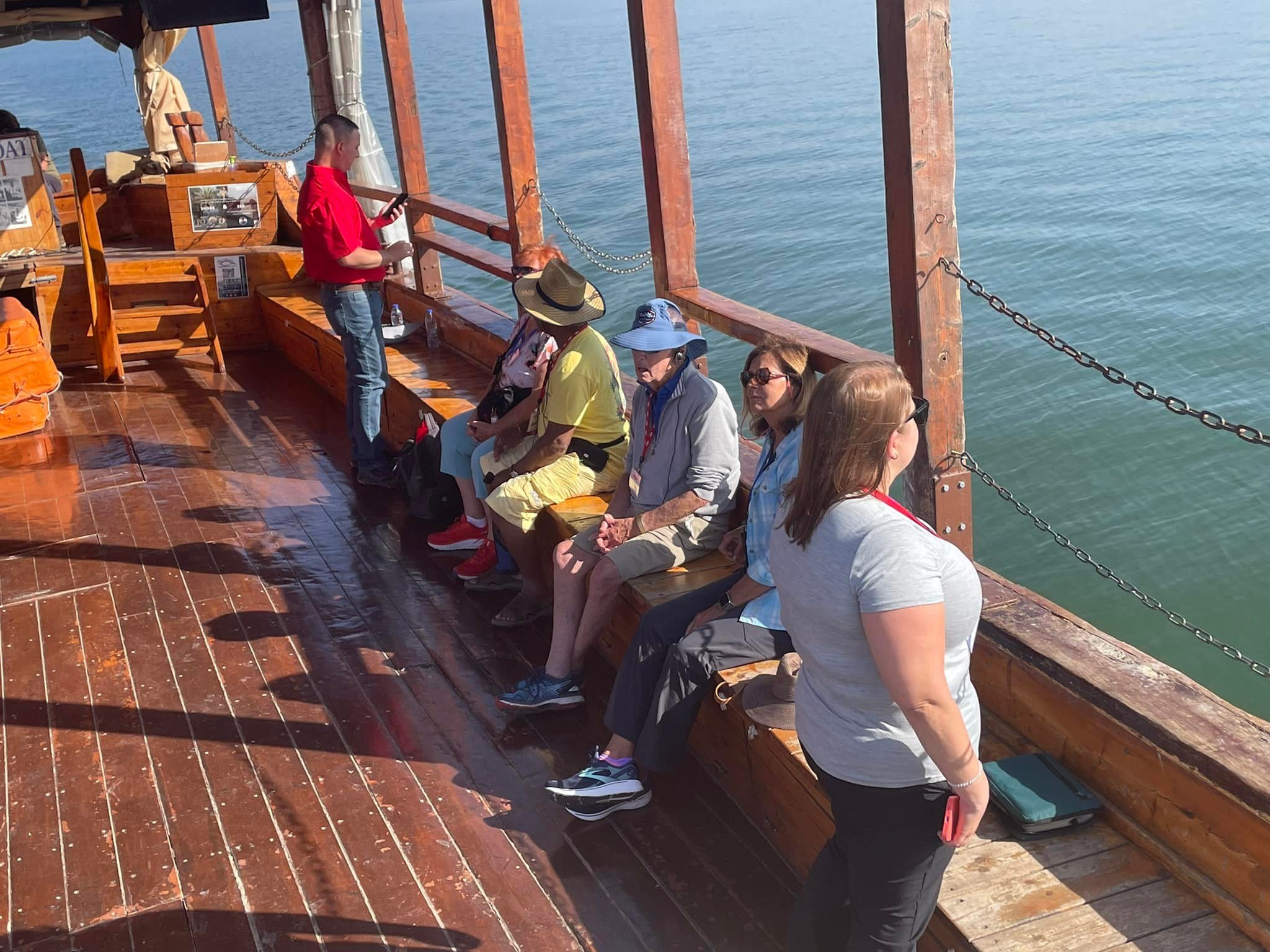
Our boat…
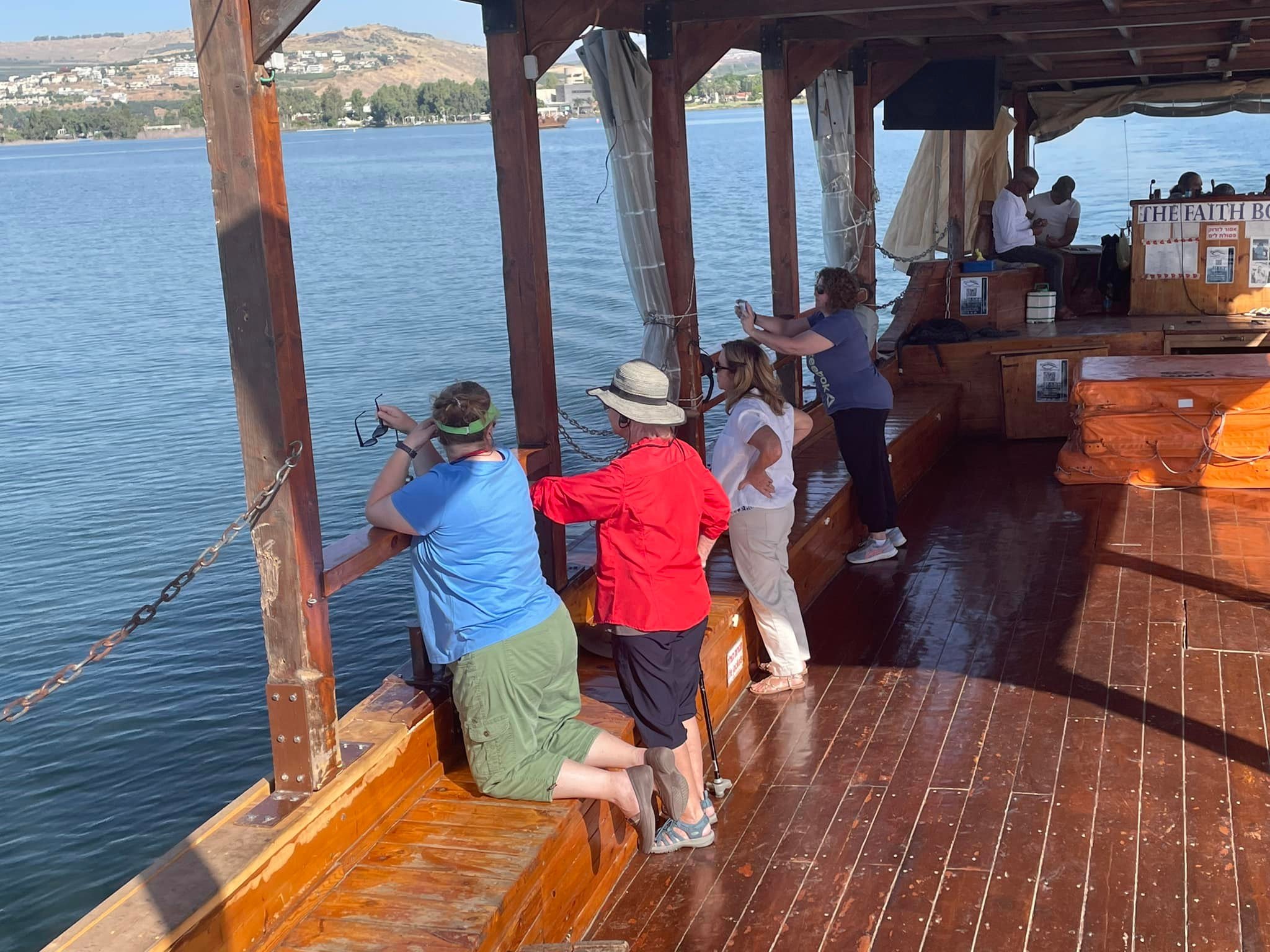
More boat…
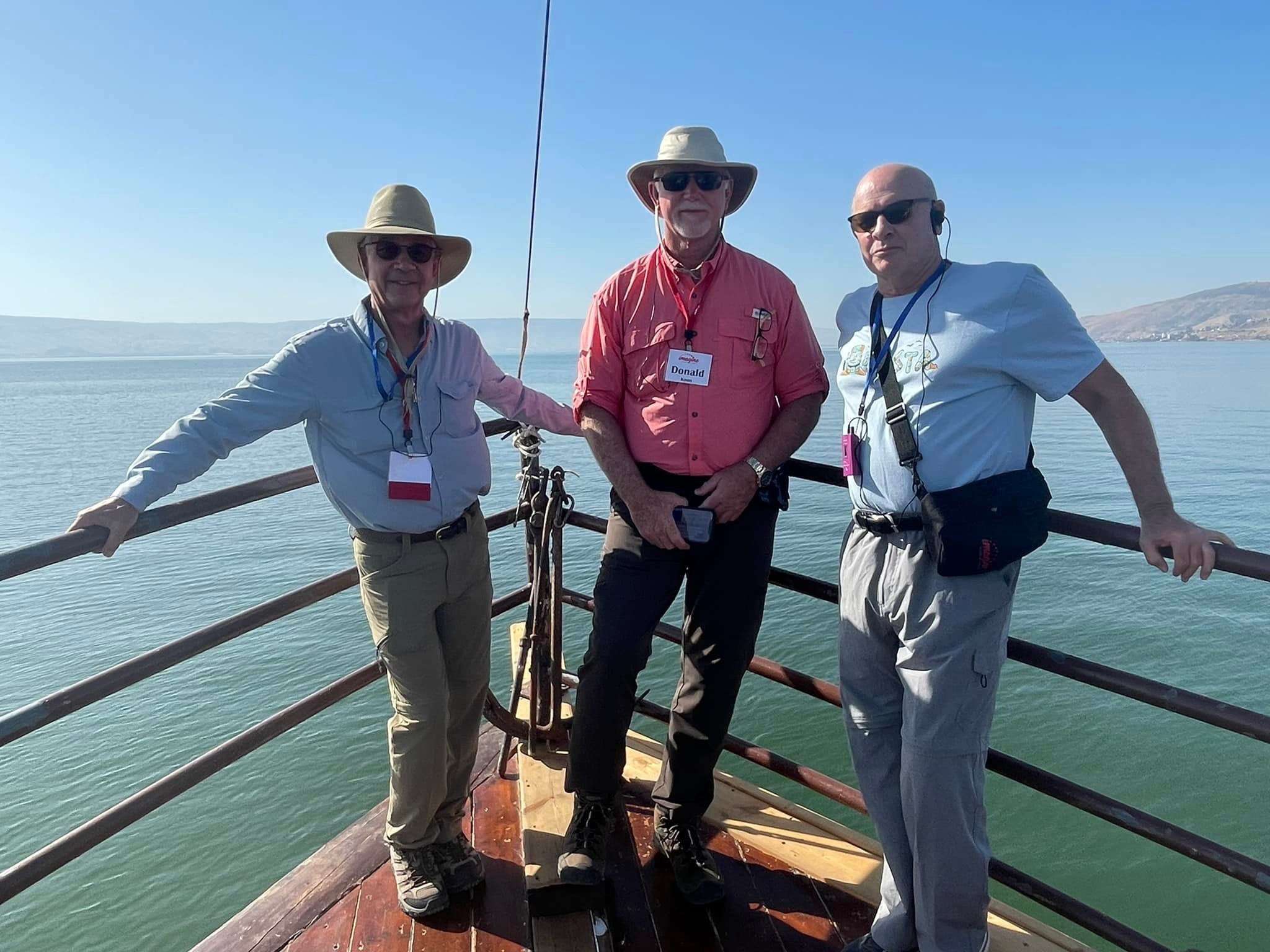
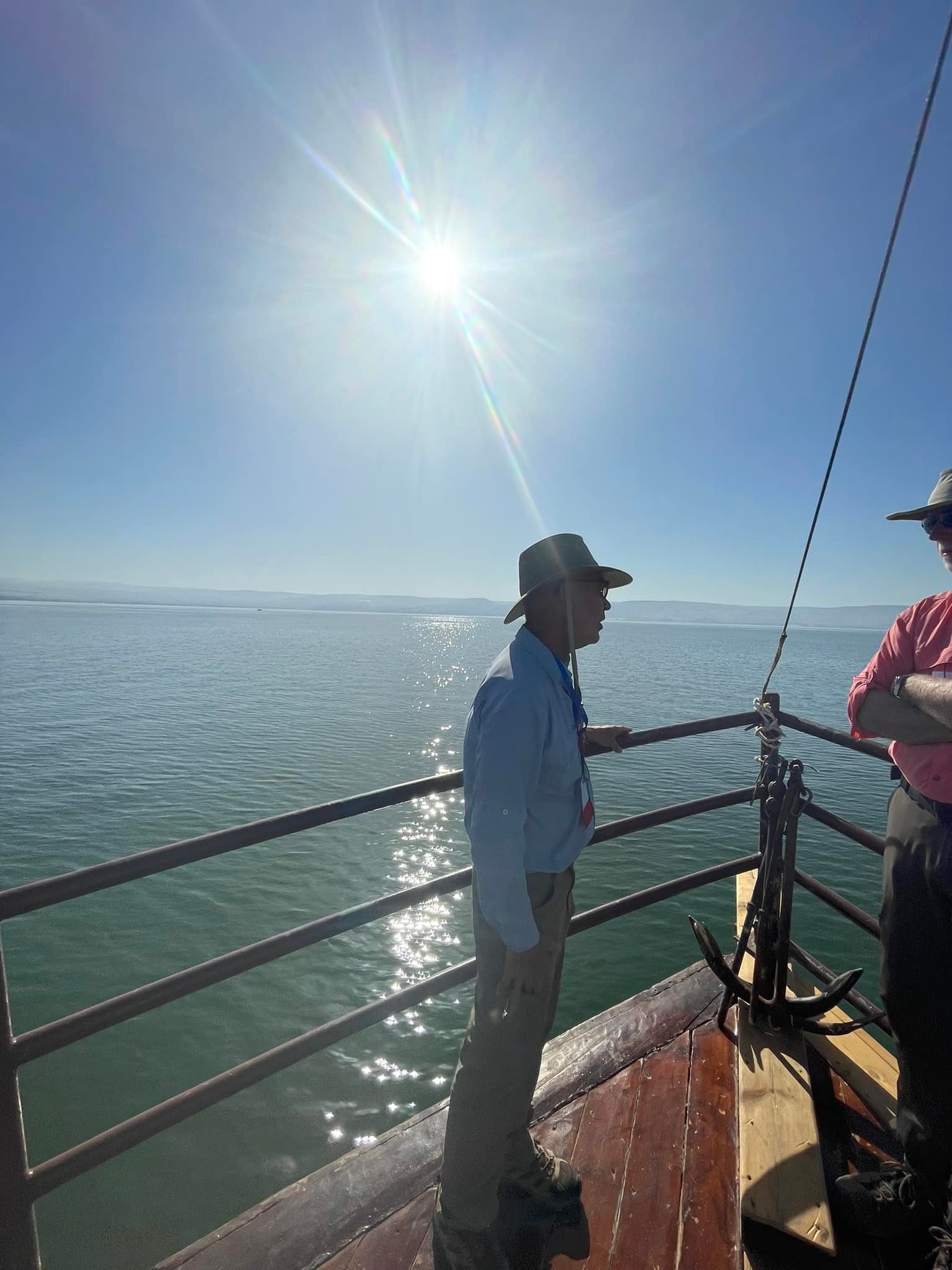
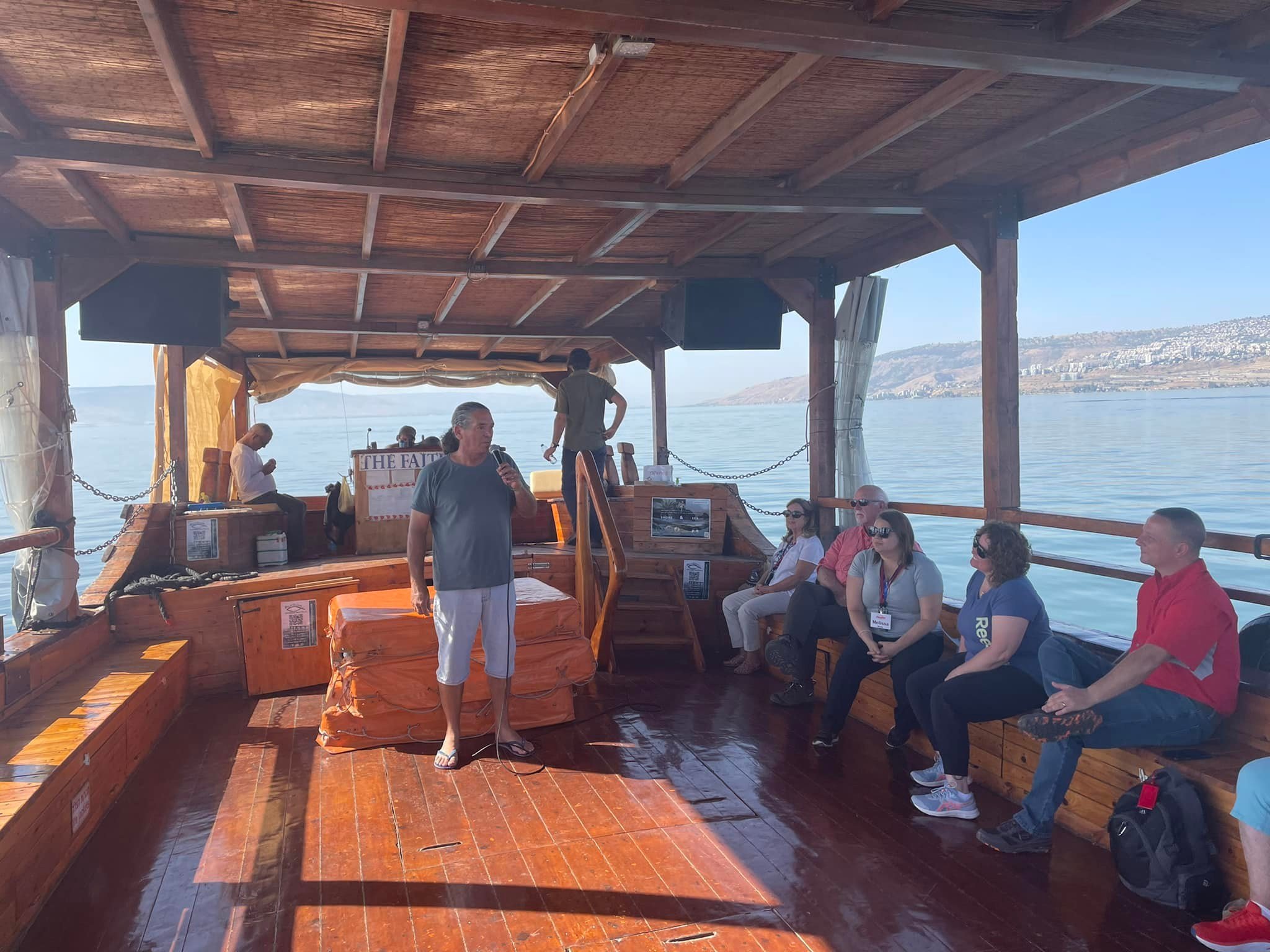
Our captain is a Jewish Christian and sang to us in Hebrew.
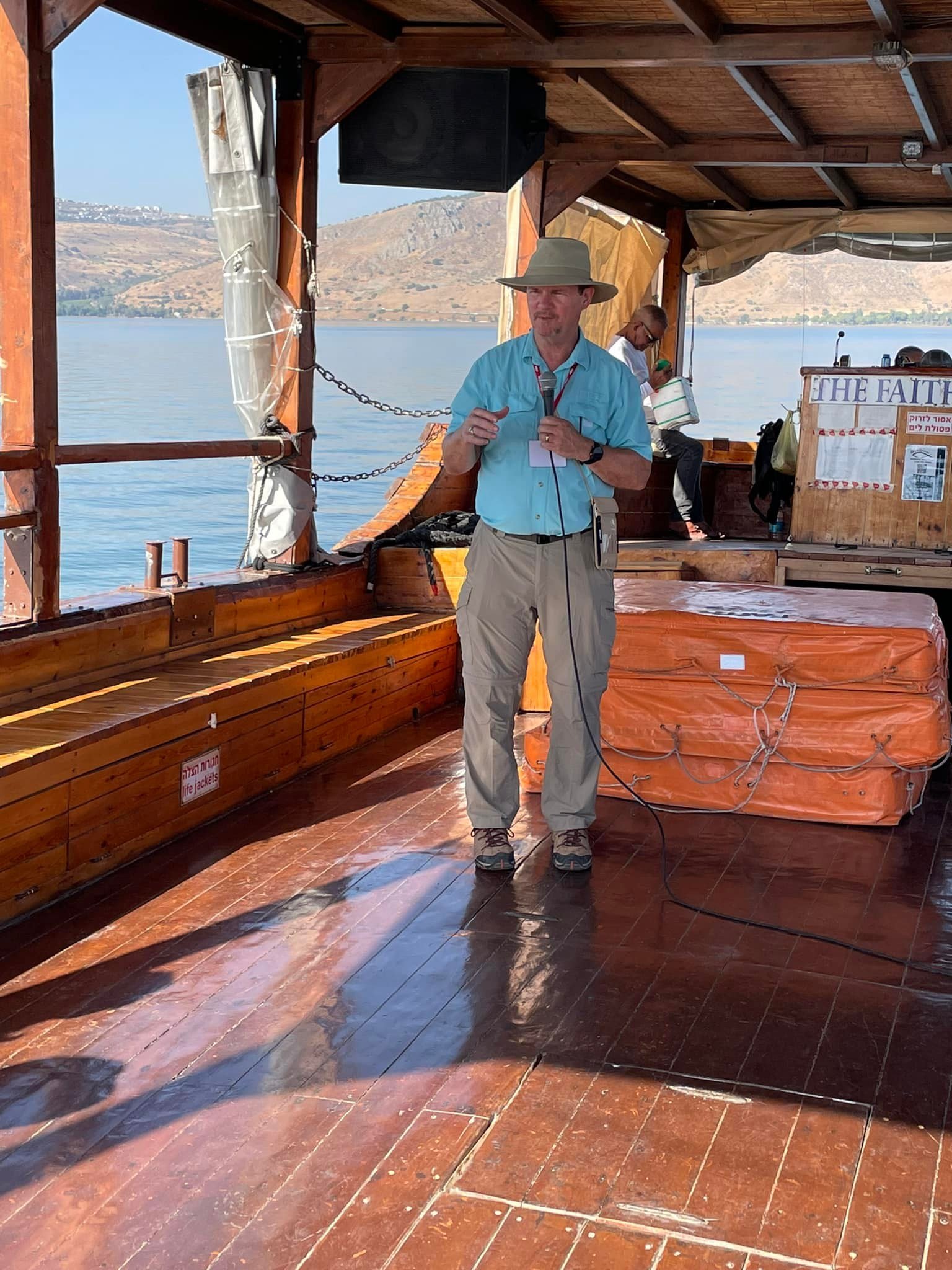
Teaching about casting our nets in the deep water.
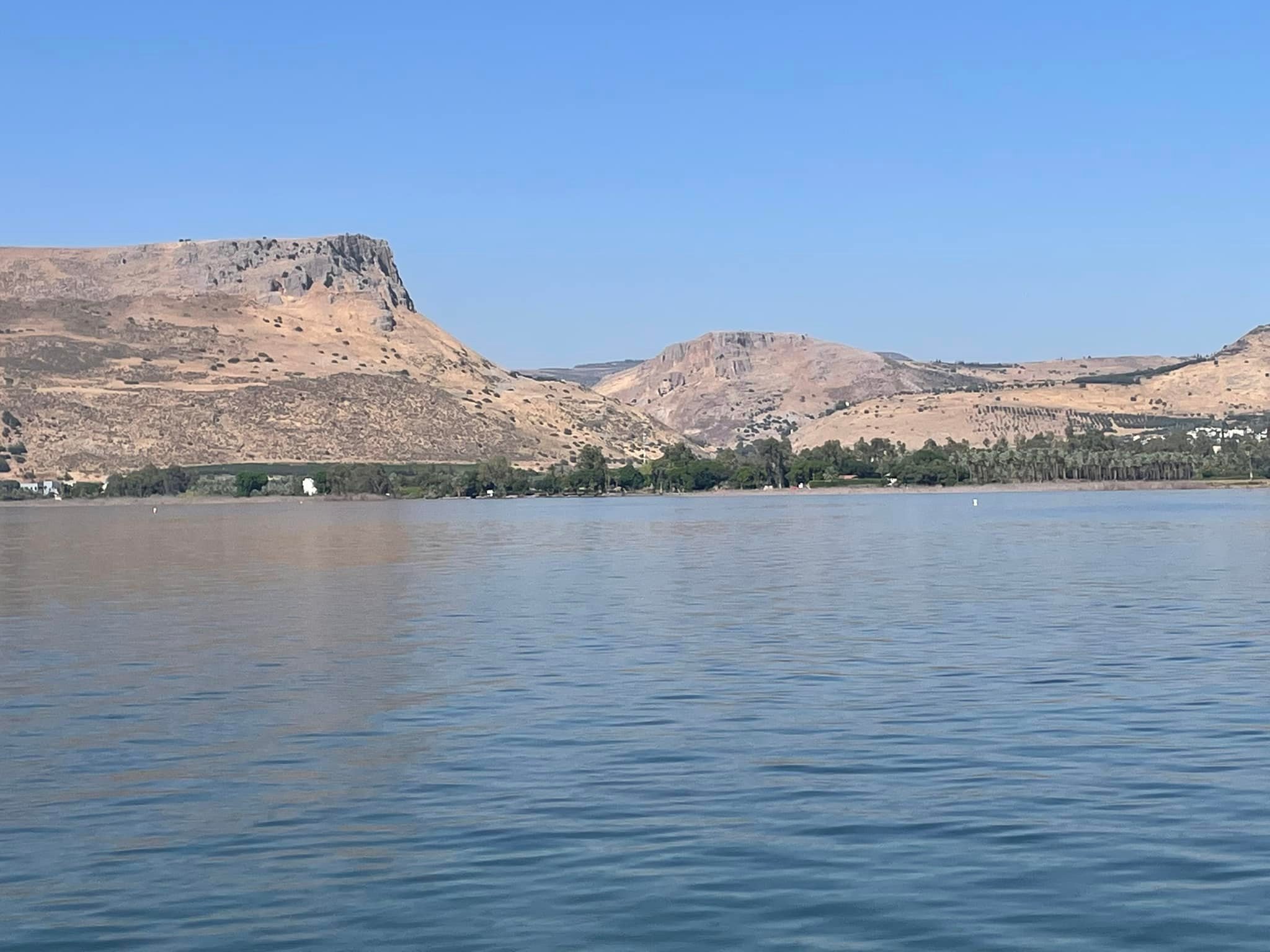
Just to the right of the cliffs is the valley Jesus would have used to travel from Nazareth to the Sea of Galilee and its cities.
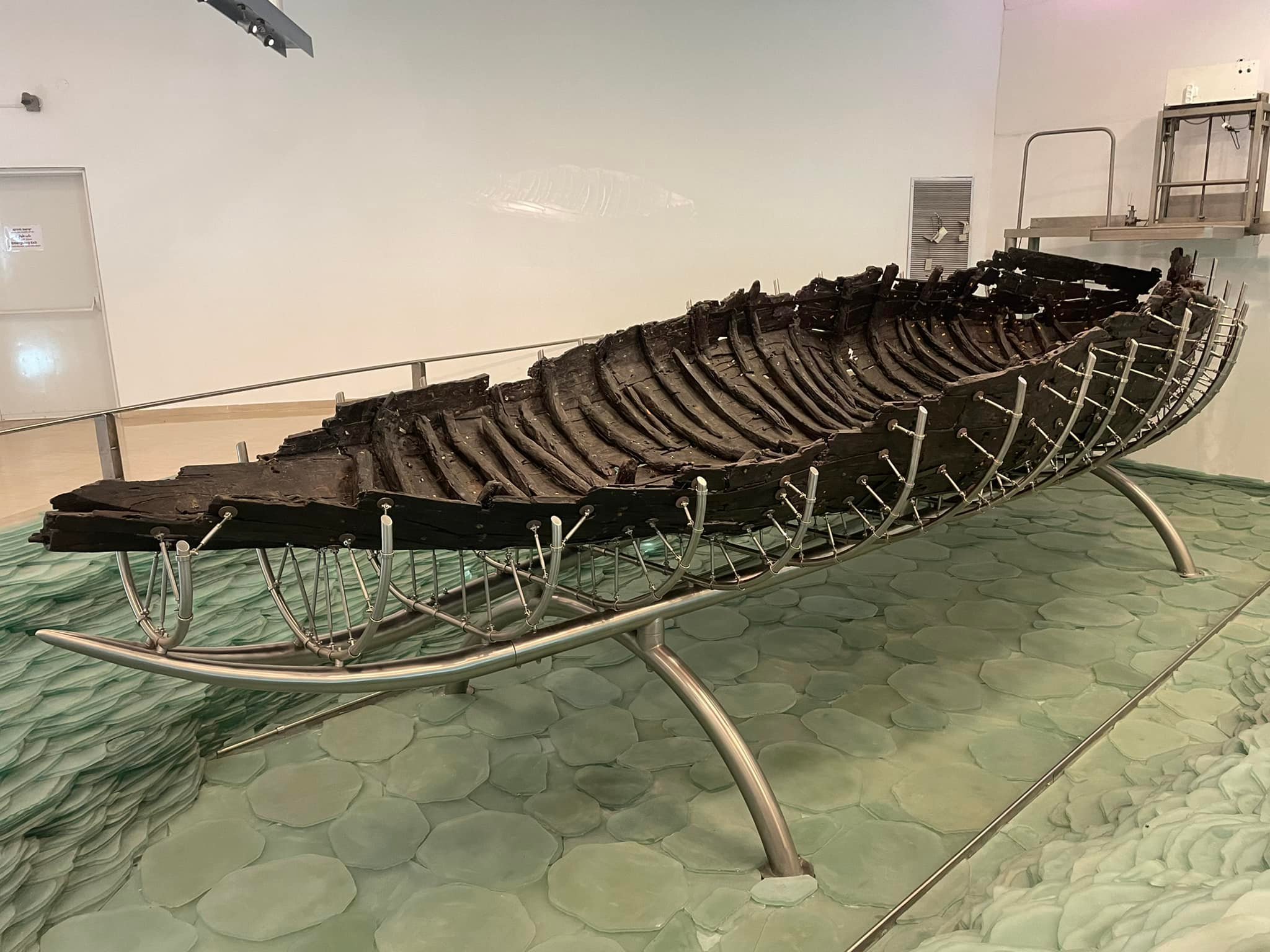
A 1st century fishing boat exactly like what Peter et al would have used.
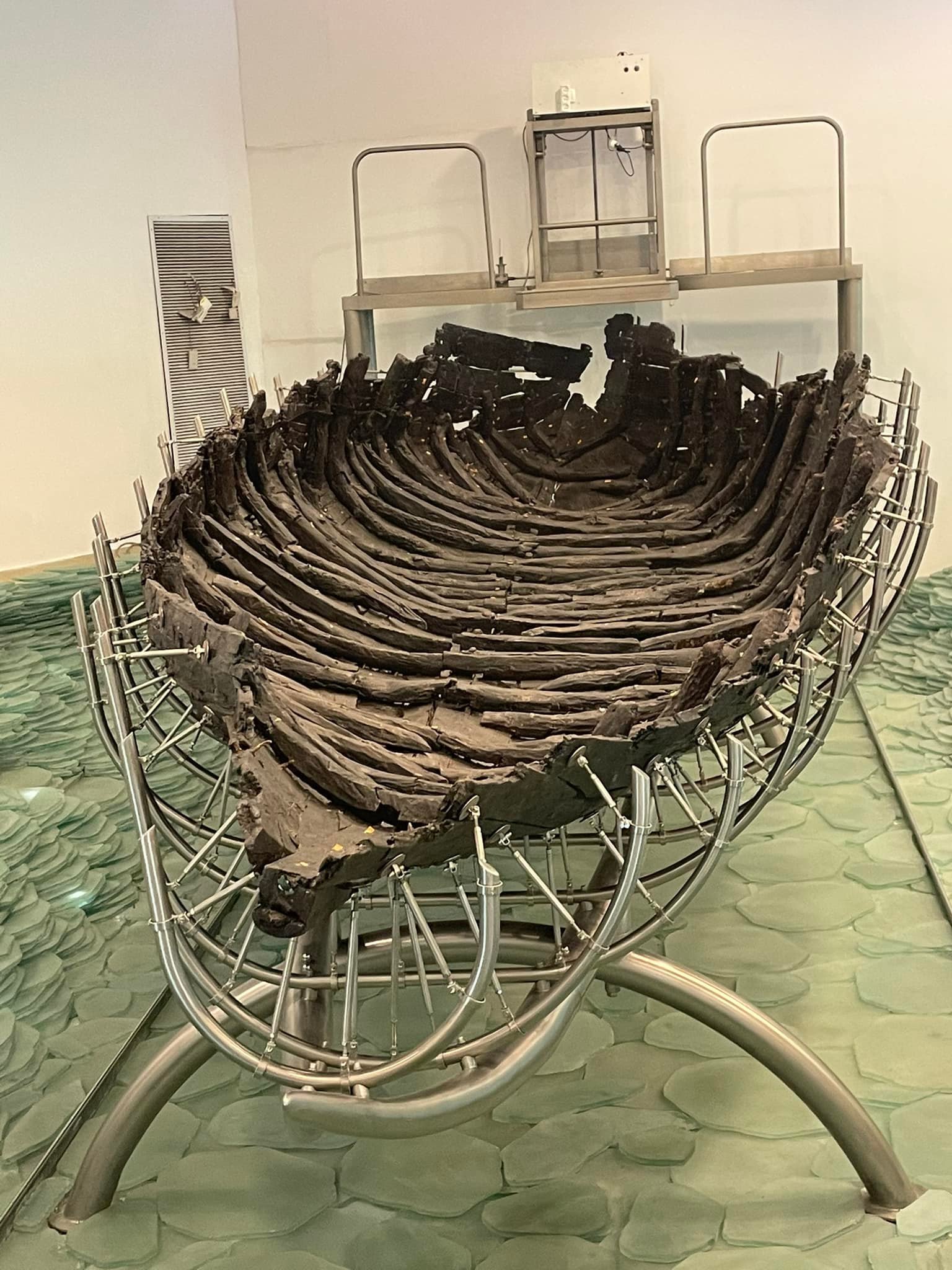
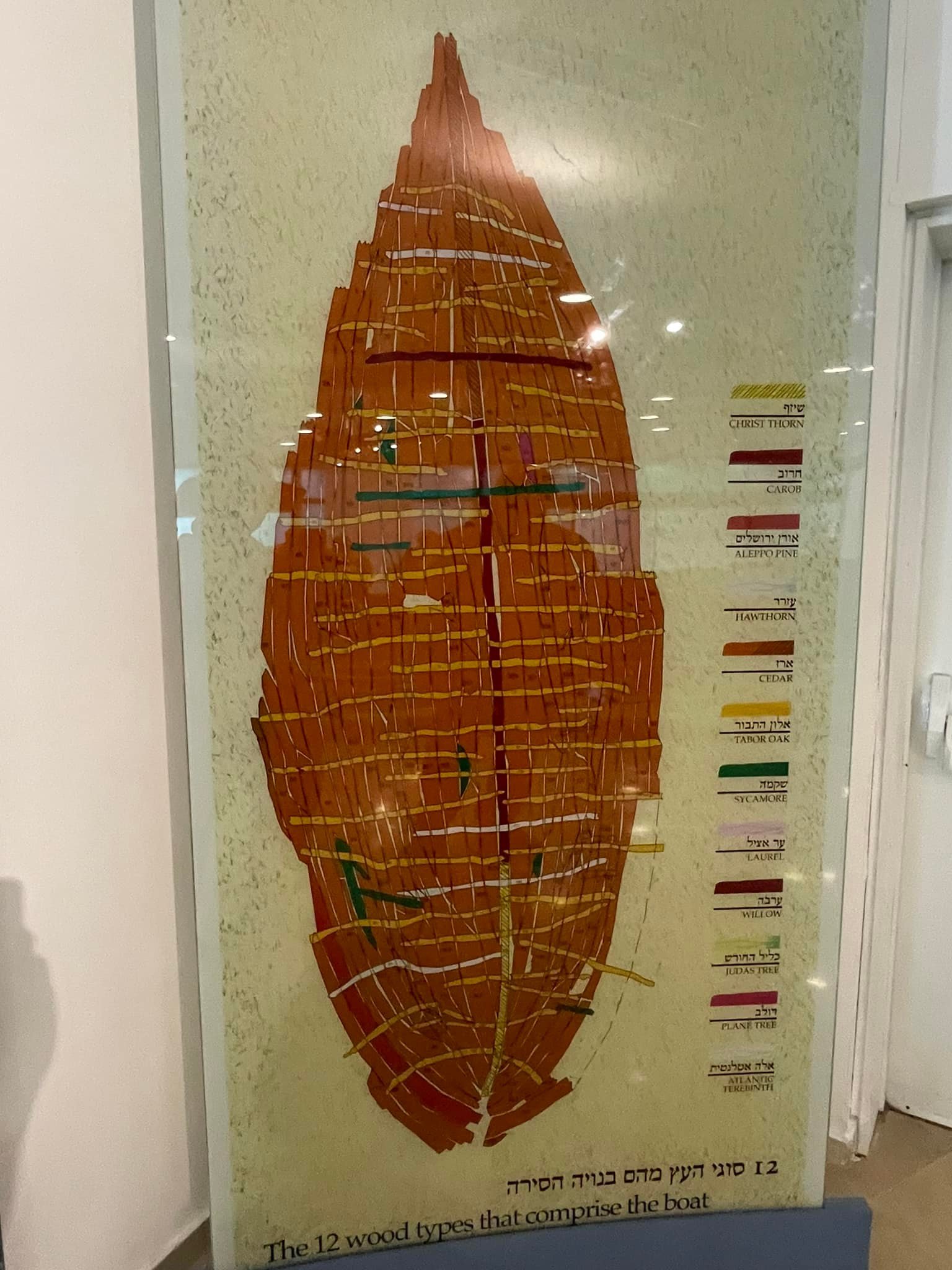
Note that it has 12 species of wood - like the 12 tribes of Israel?
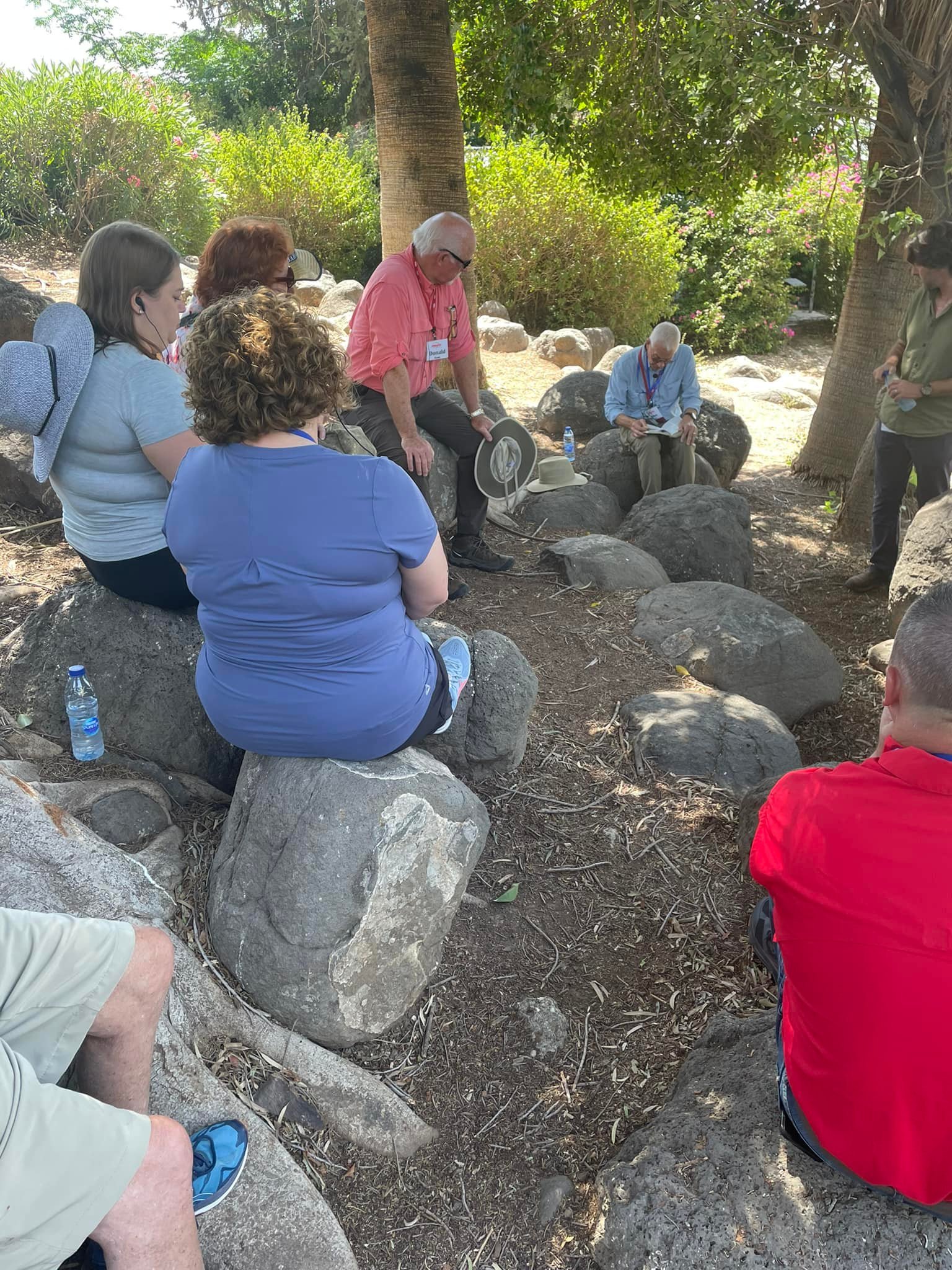
Deacon John reading from the Sermon on the Mount from the spot tradition holds Jesus used.
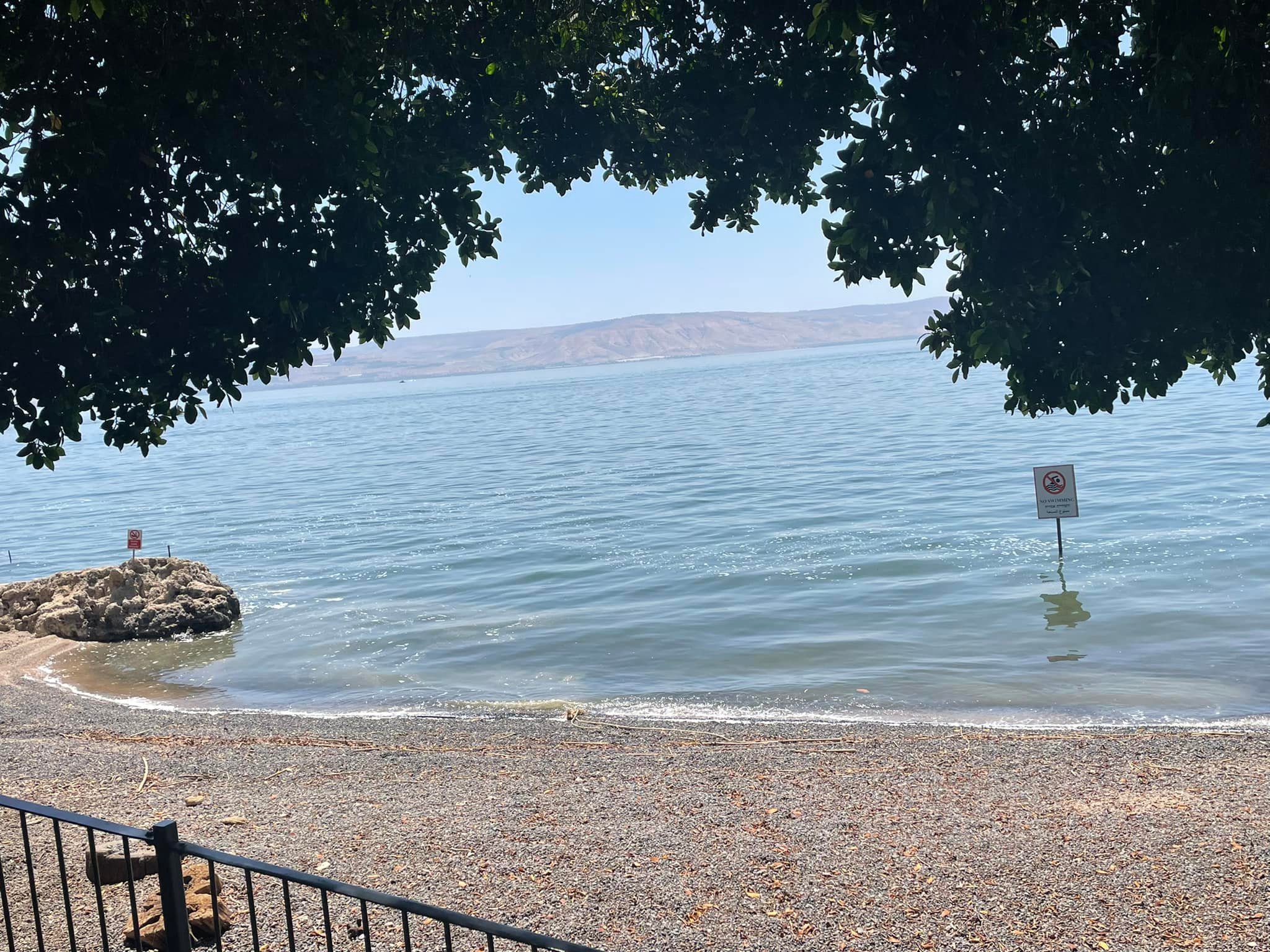
The beach where Jesus met the disciples after the Resurrection? (John 21)
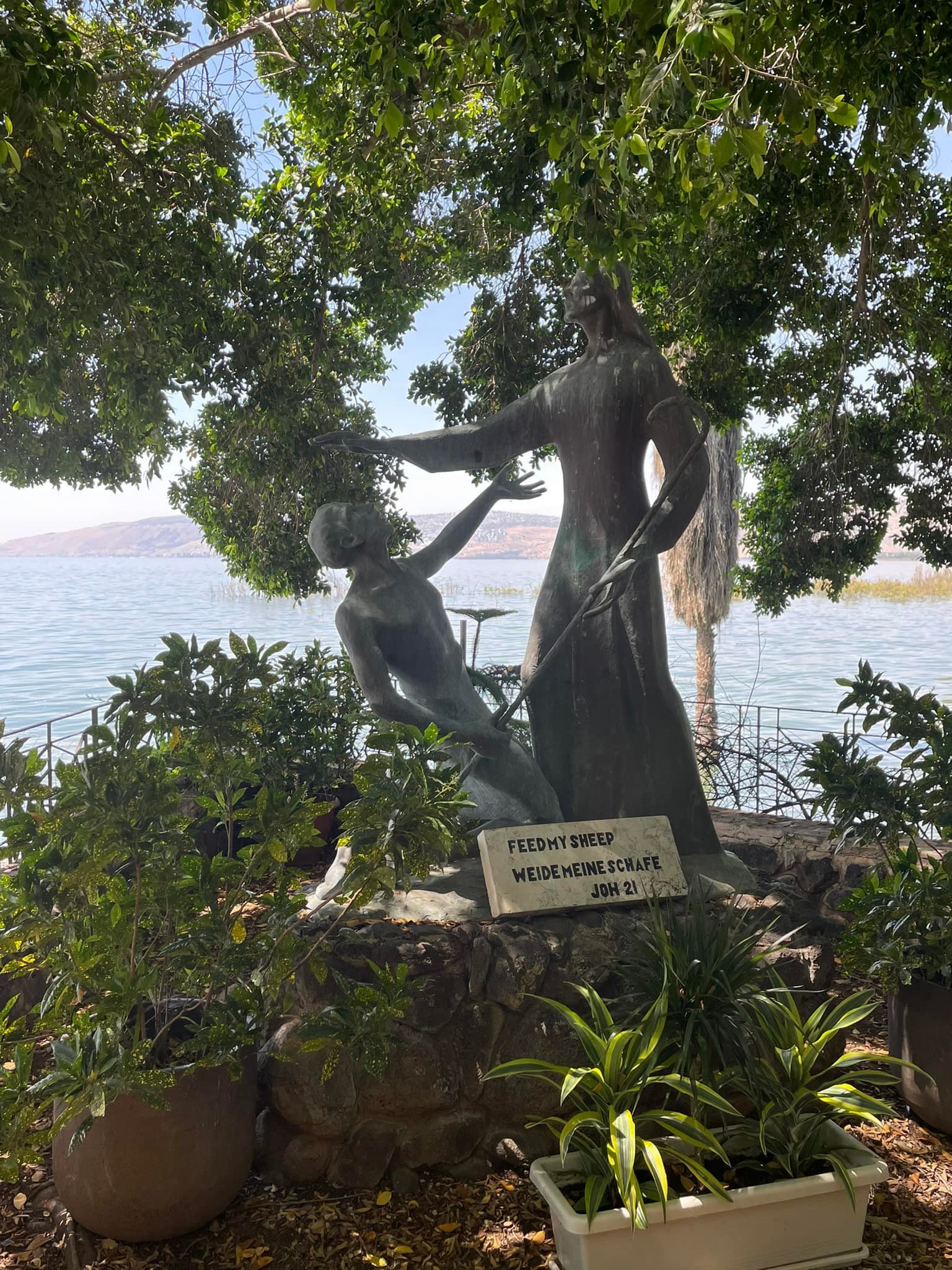
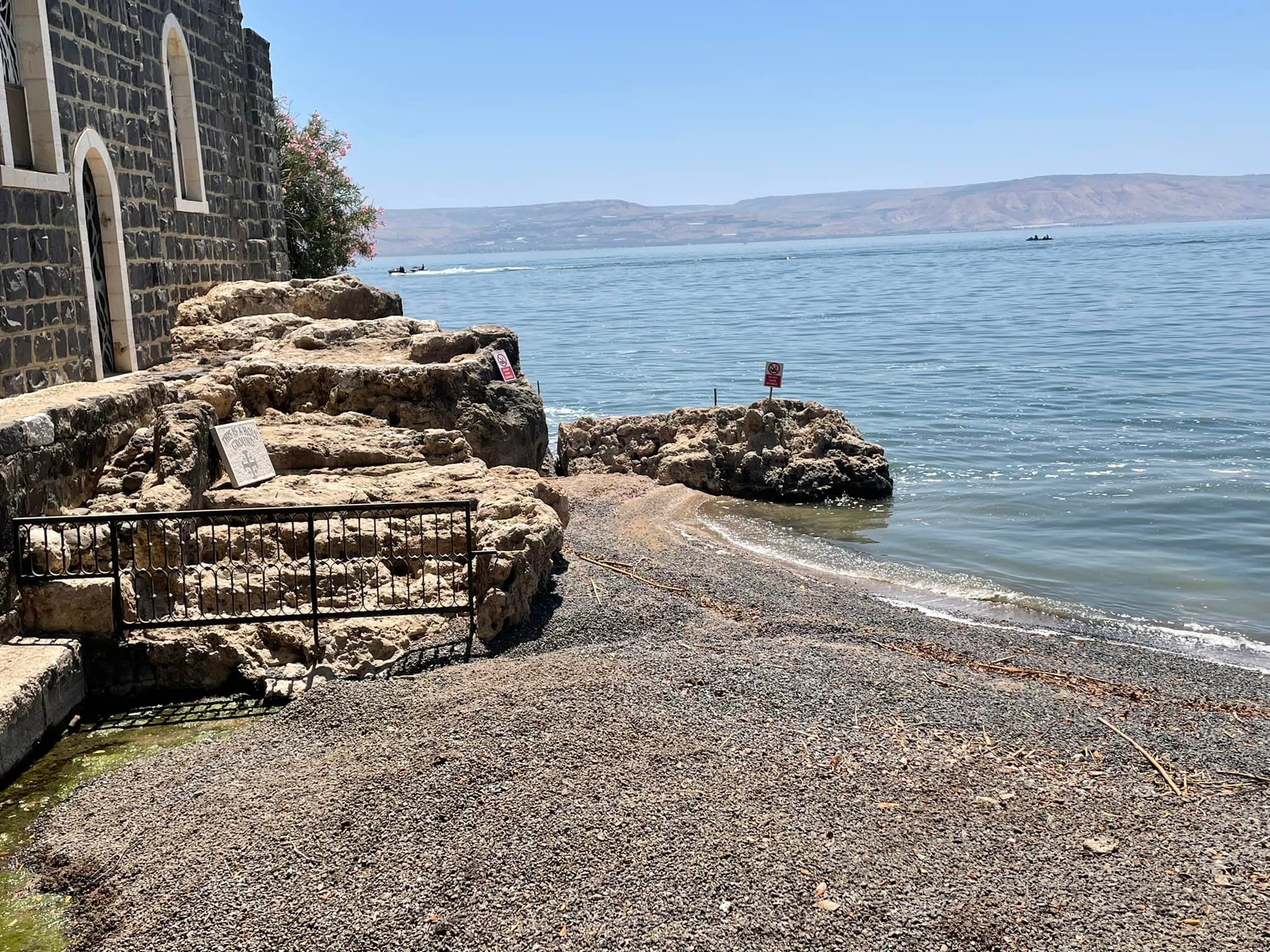
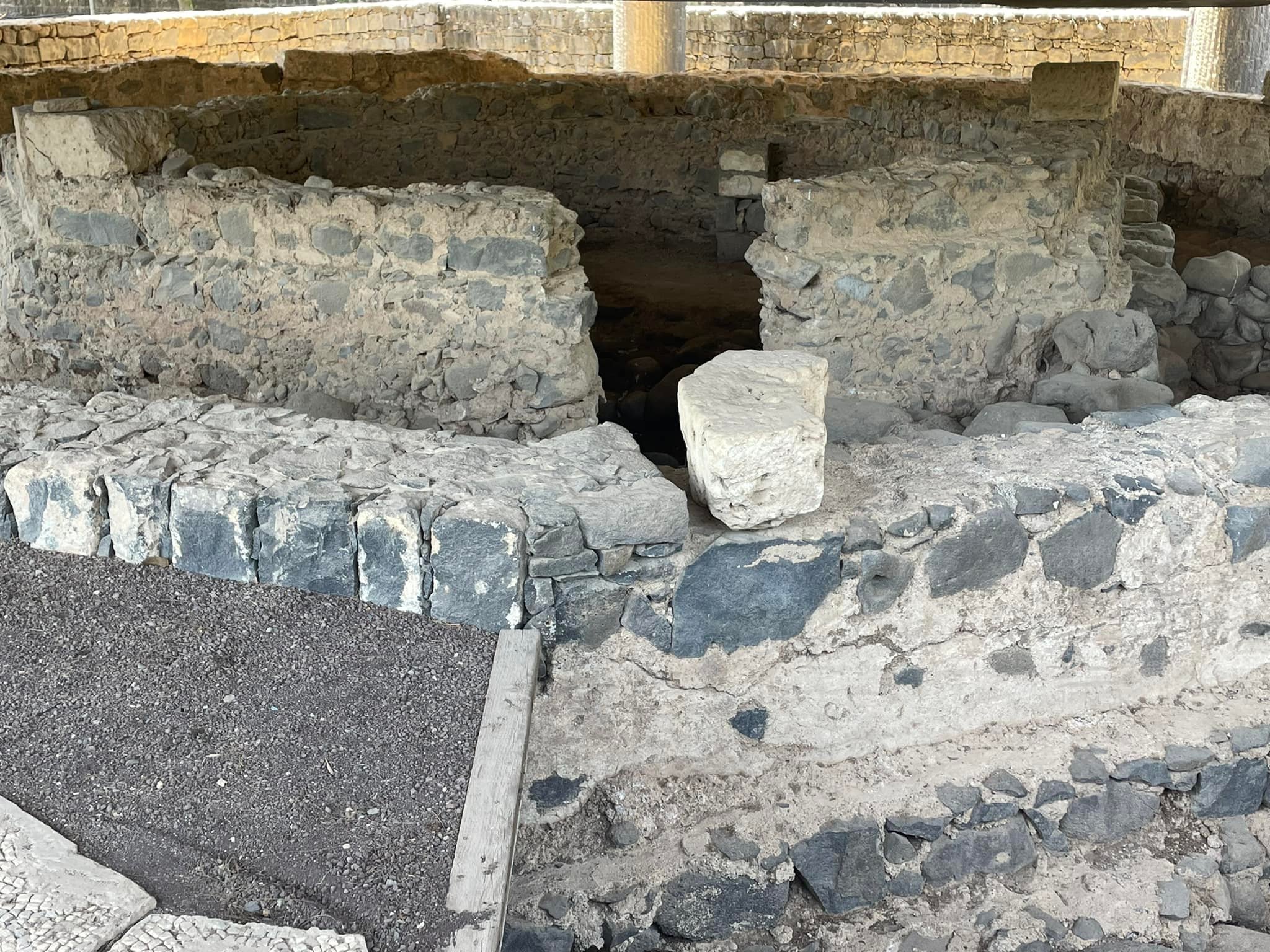
A Byzantine church built on top of what is very likely Peter’s home in Capernaum.
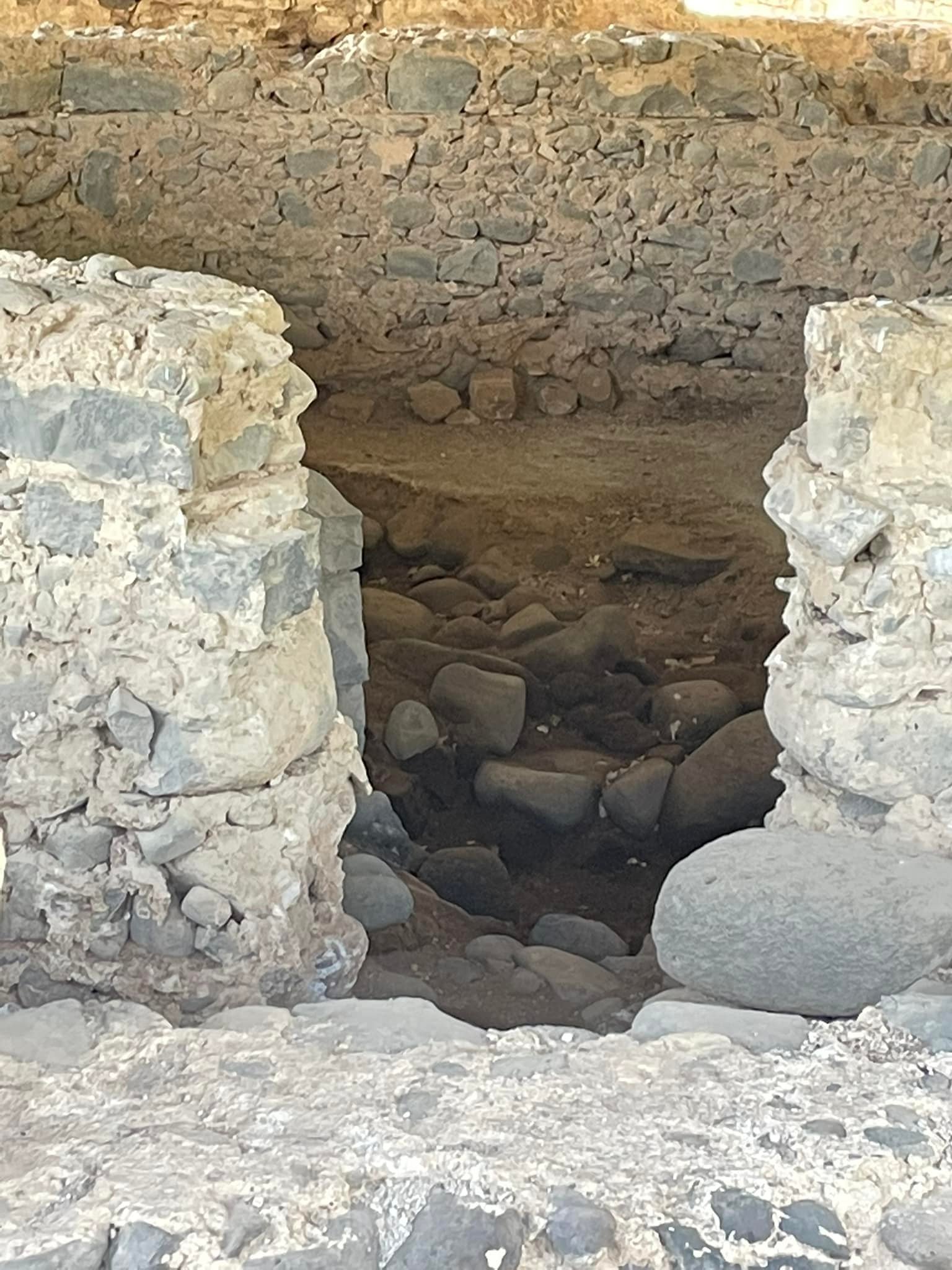
A Peek into Peter’s home.
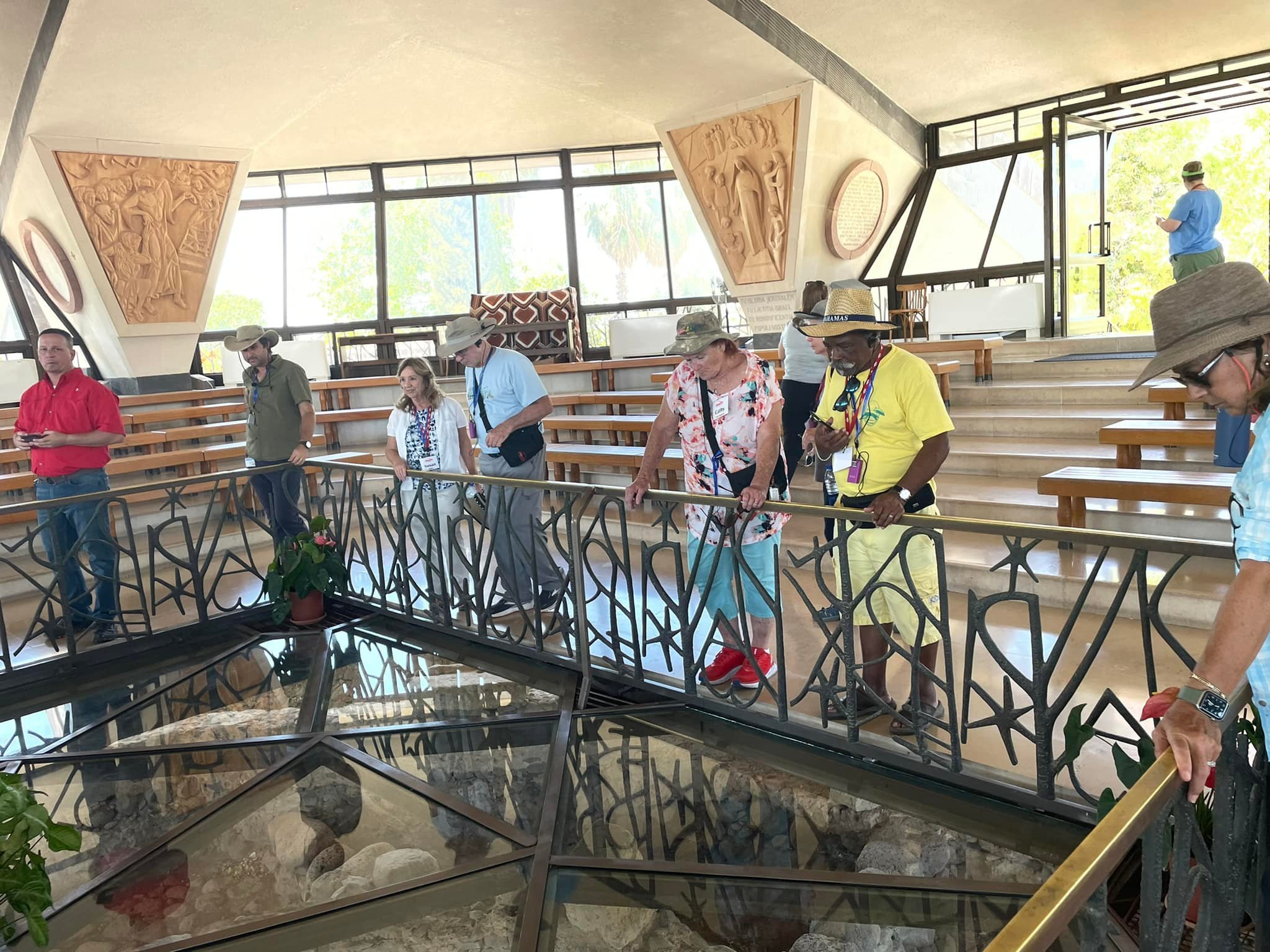
They built an observation deck/church above the site.
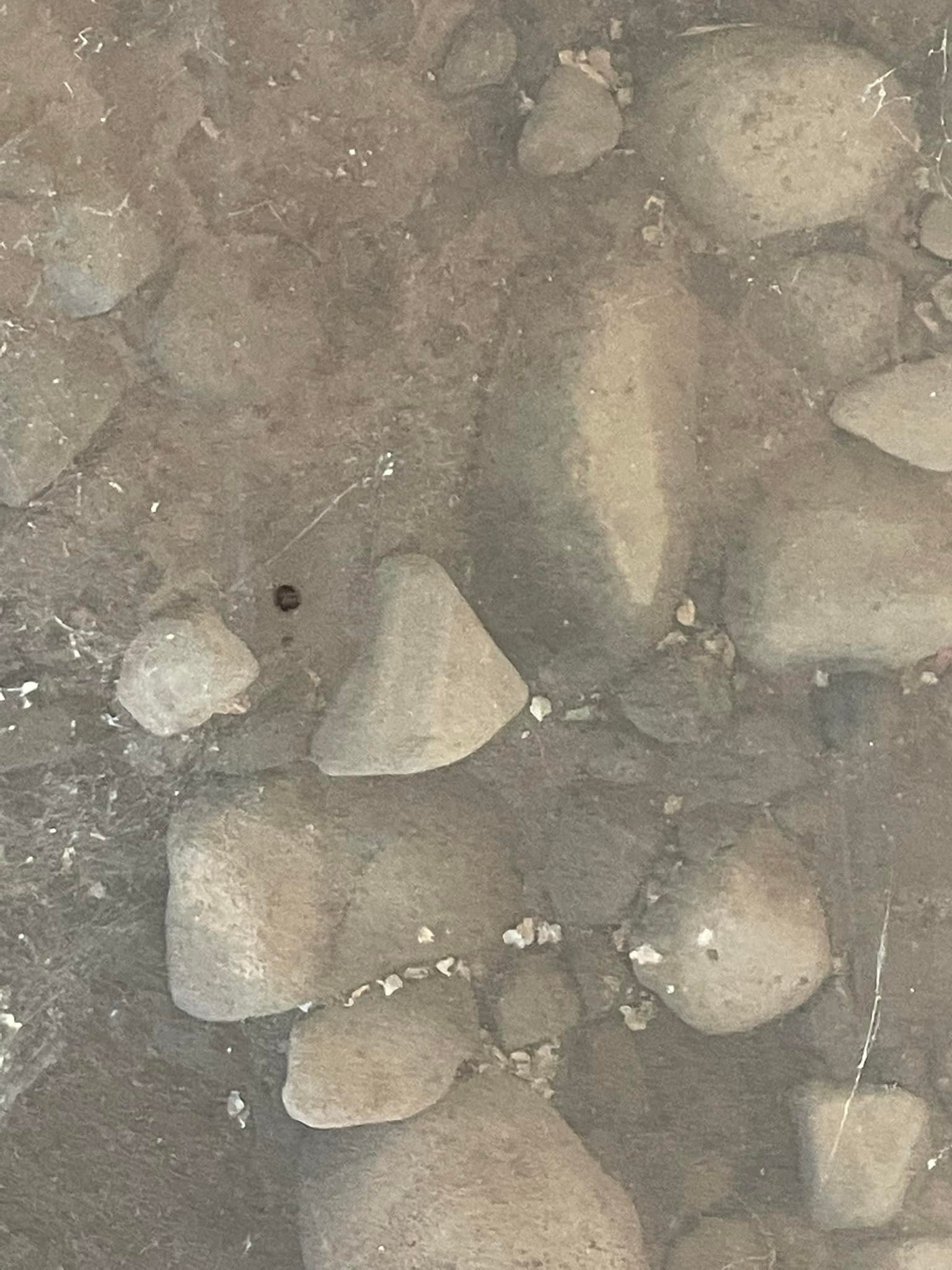
This is what you see.
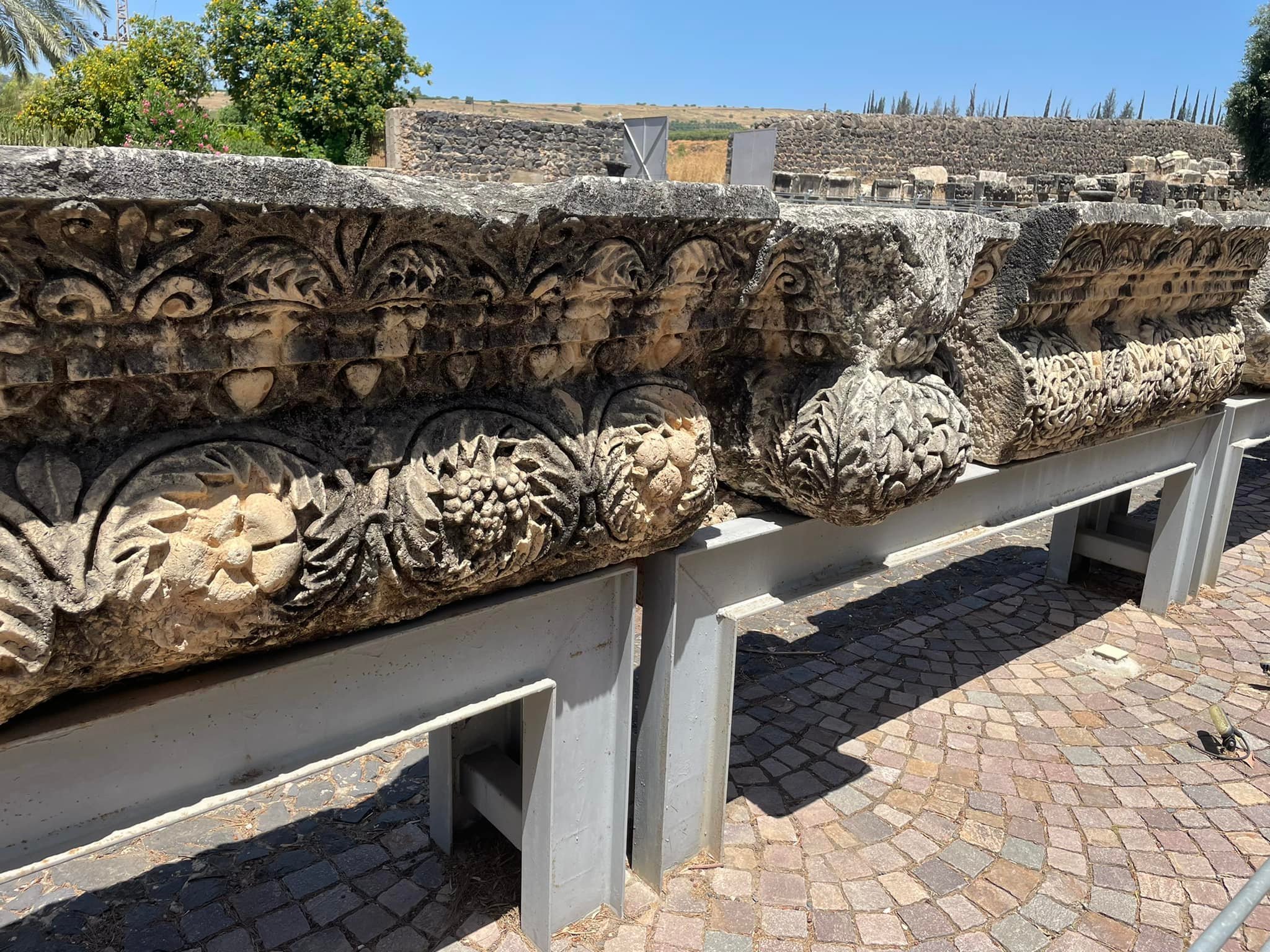
Pieces of a Byzantine synagogue
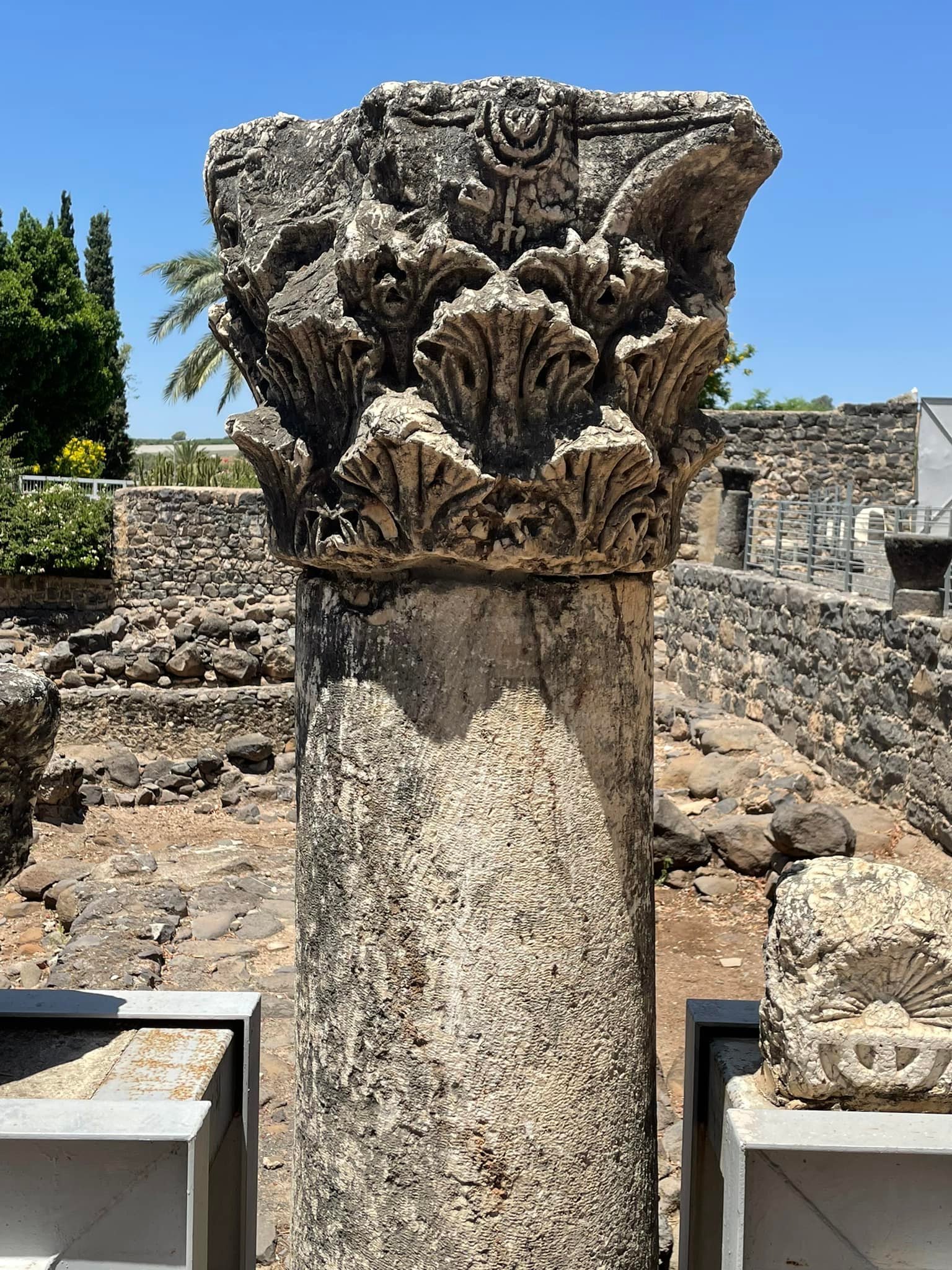
Note the minora at the top of the column.
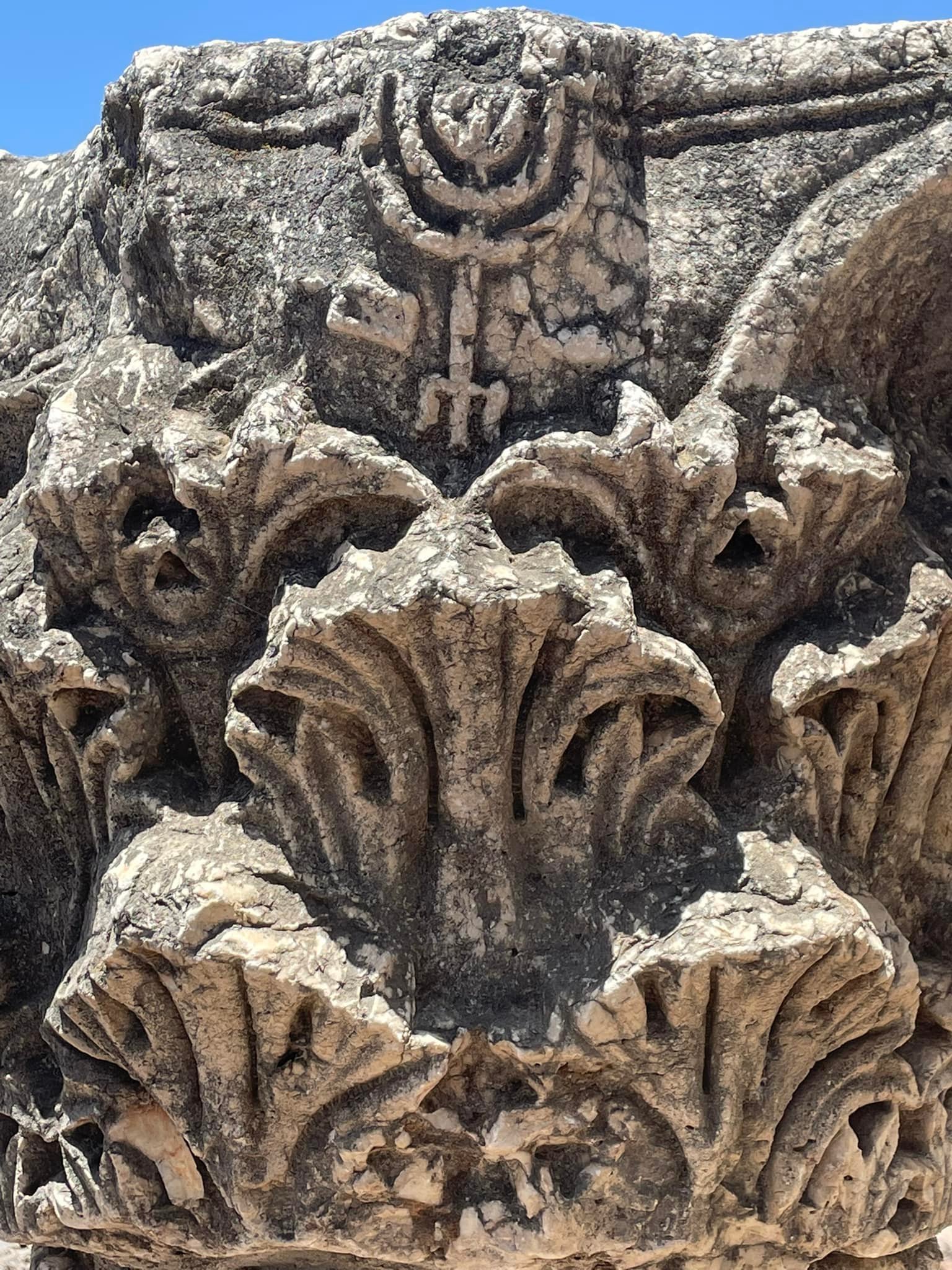
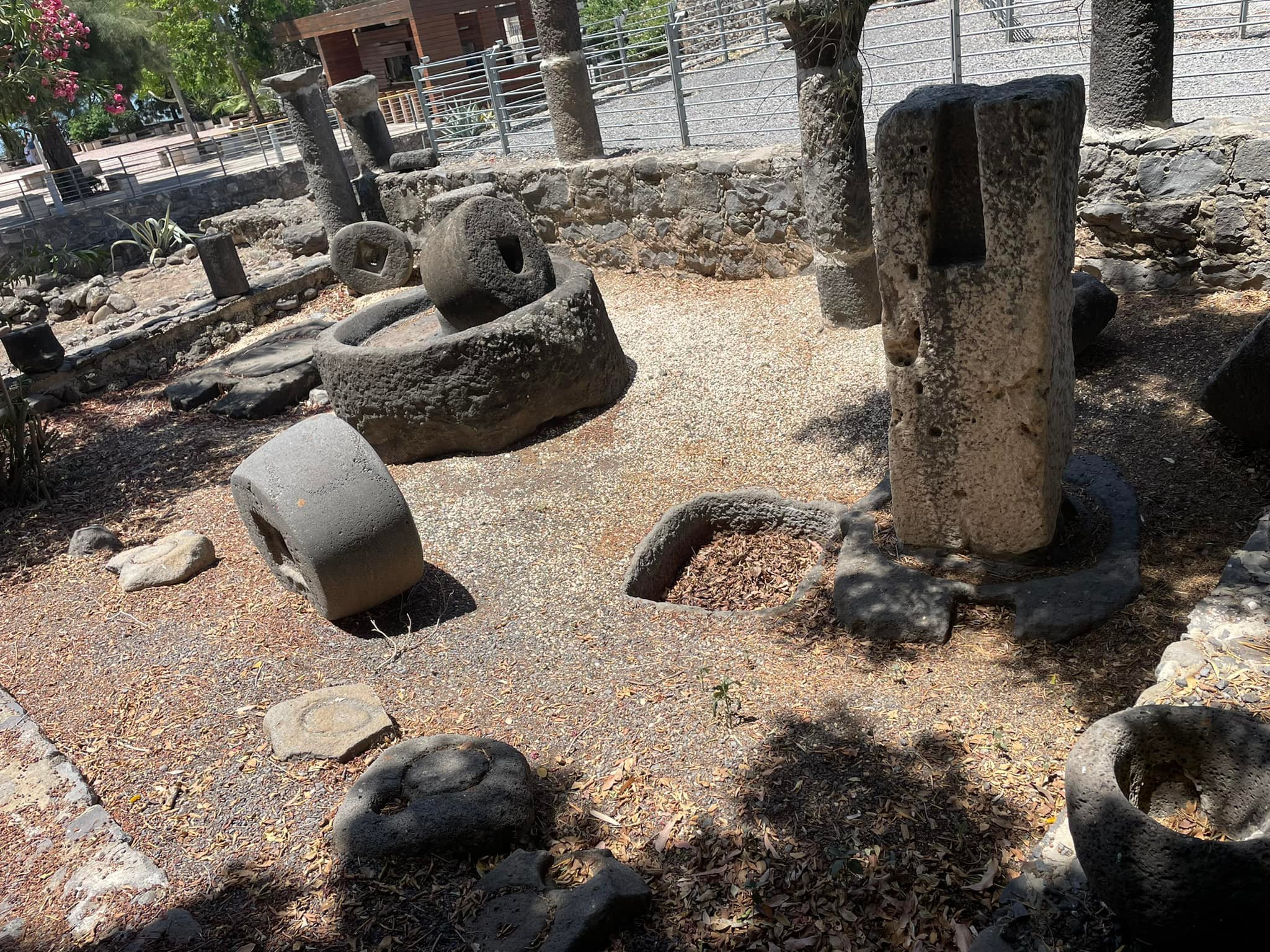
An olive press
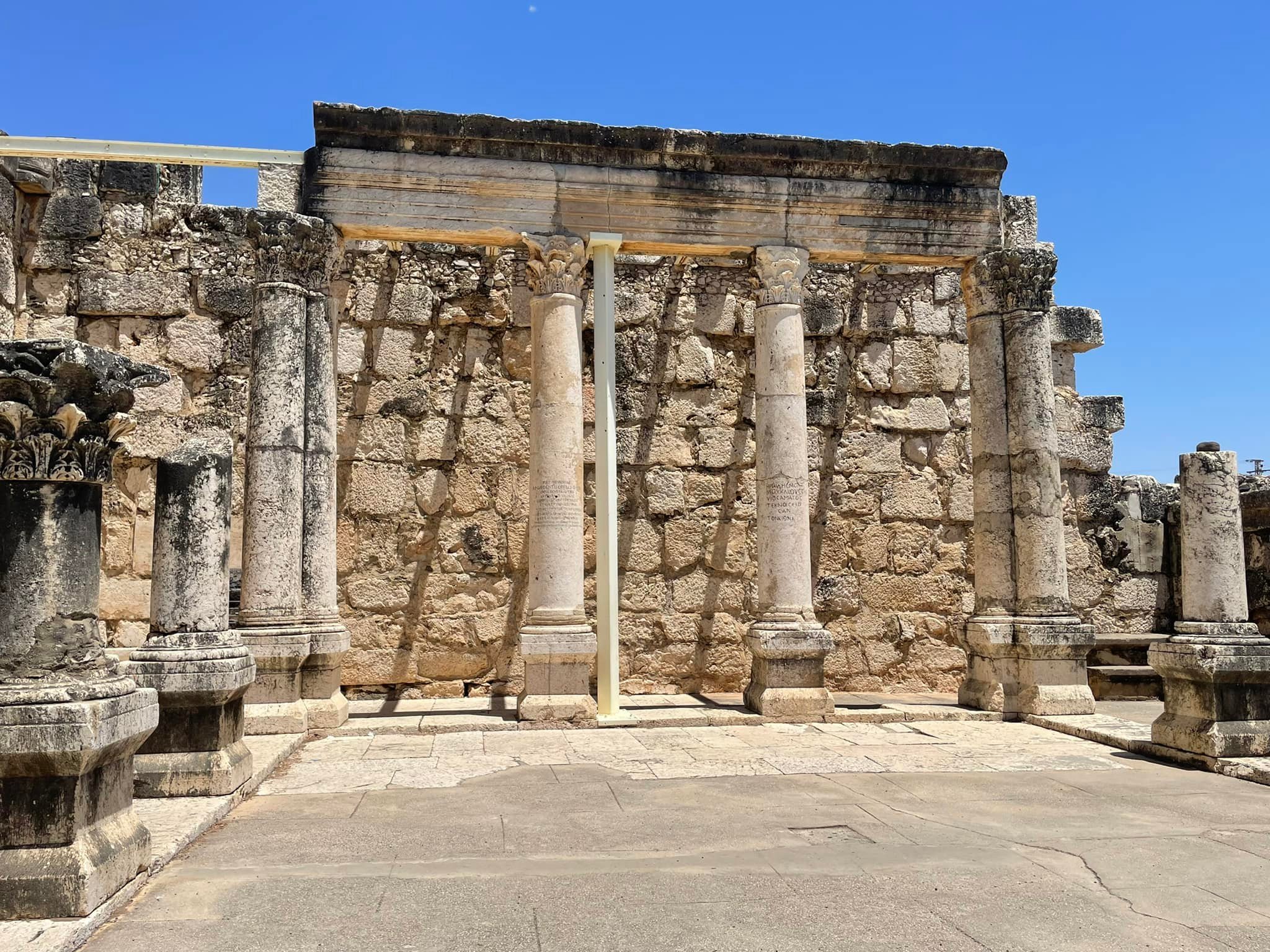
The Byzantine synagogue (300s AD.)

The 1st century synagogue it was built over.
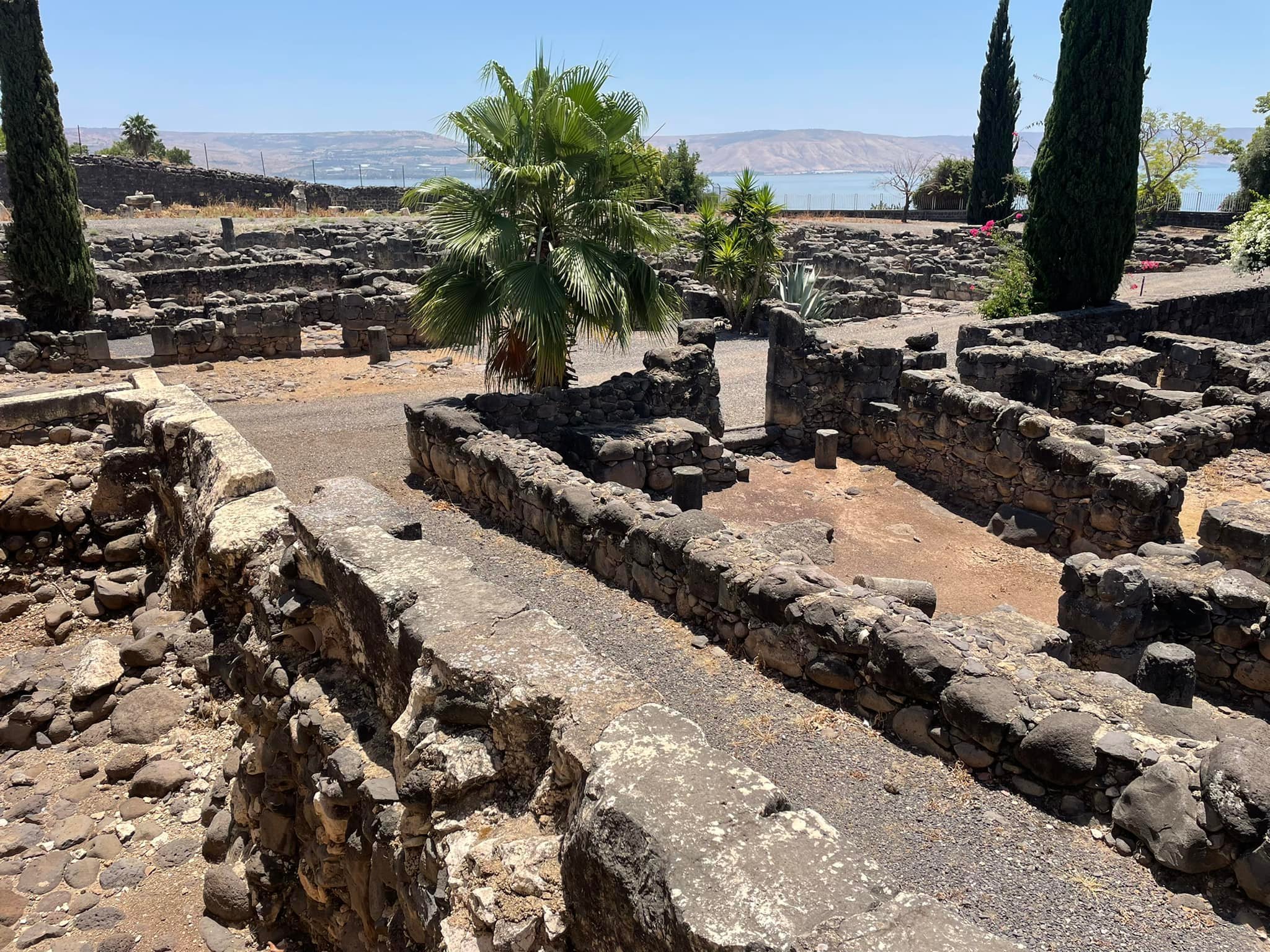
Other homes in Capernaum.
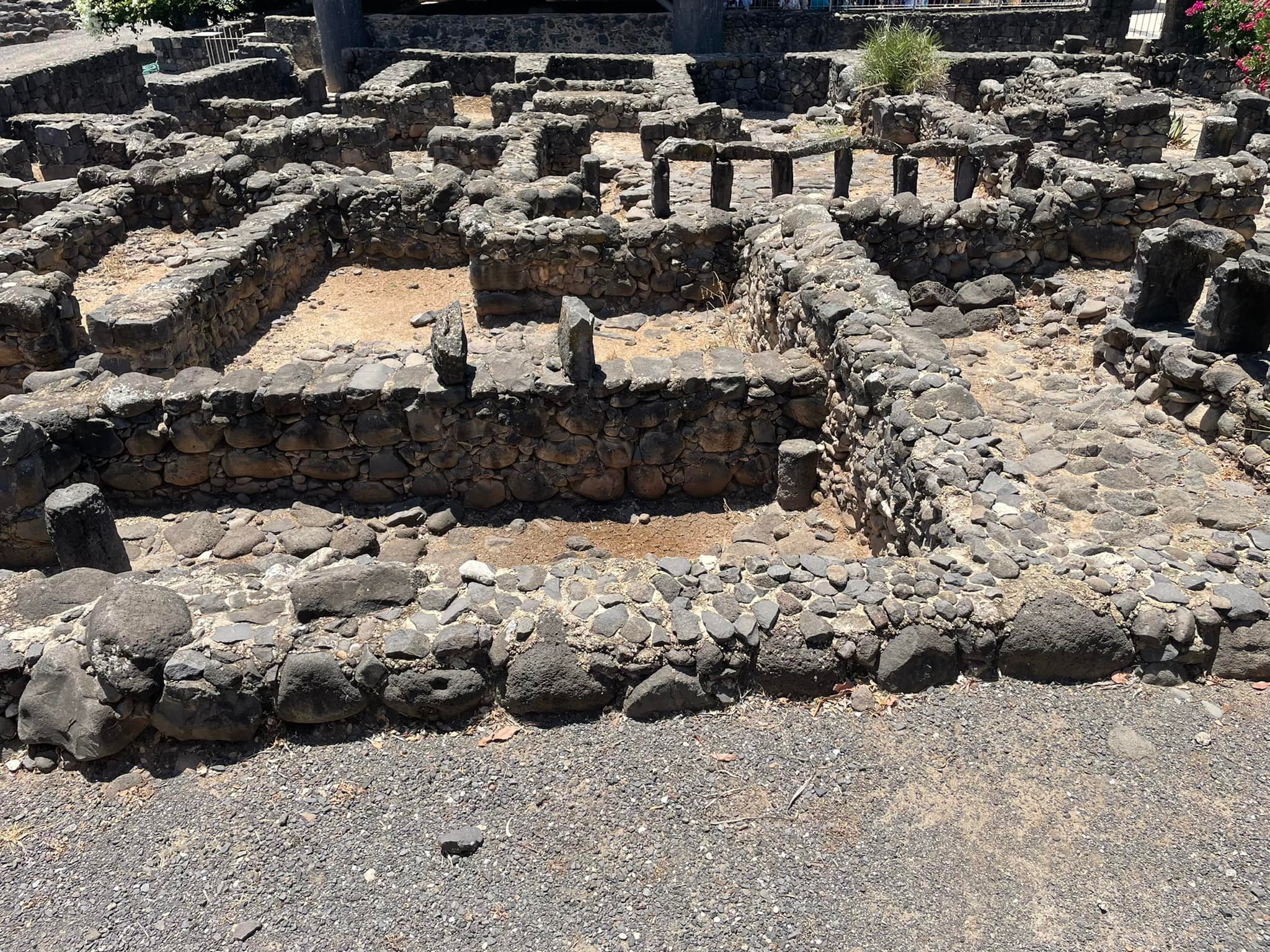

Lunch!

St. Peter’s fish (tilapia) with a local brew.
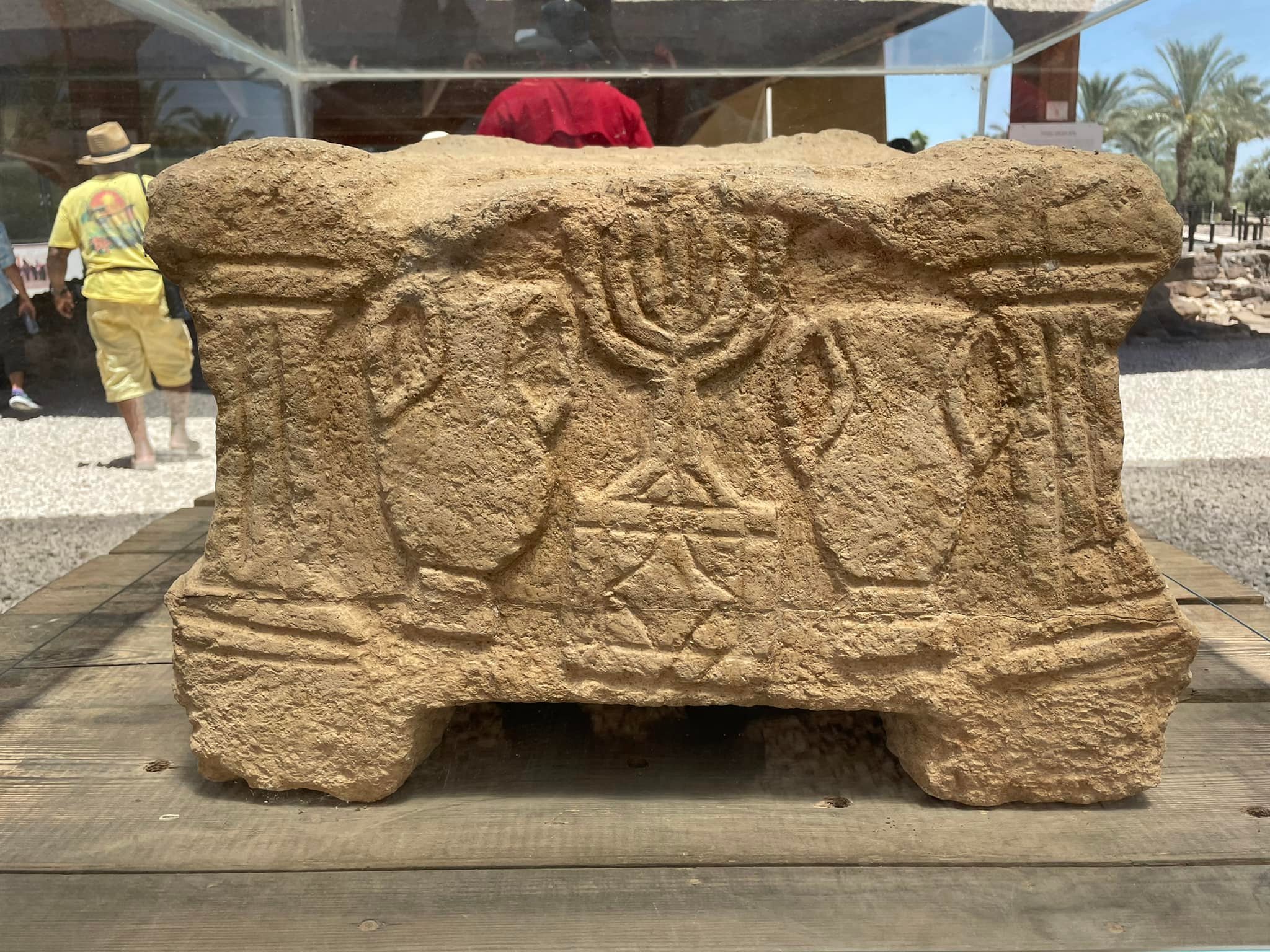
A unique stone table found in Magdala - Mary Magdalene’s hometown - in the synagogue.
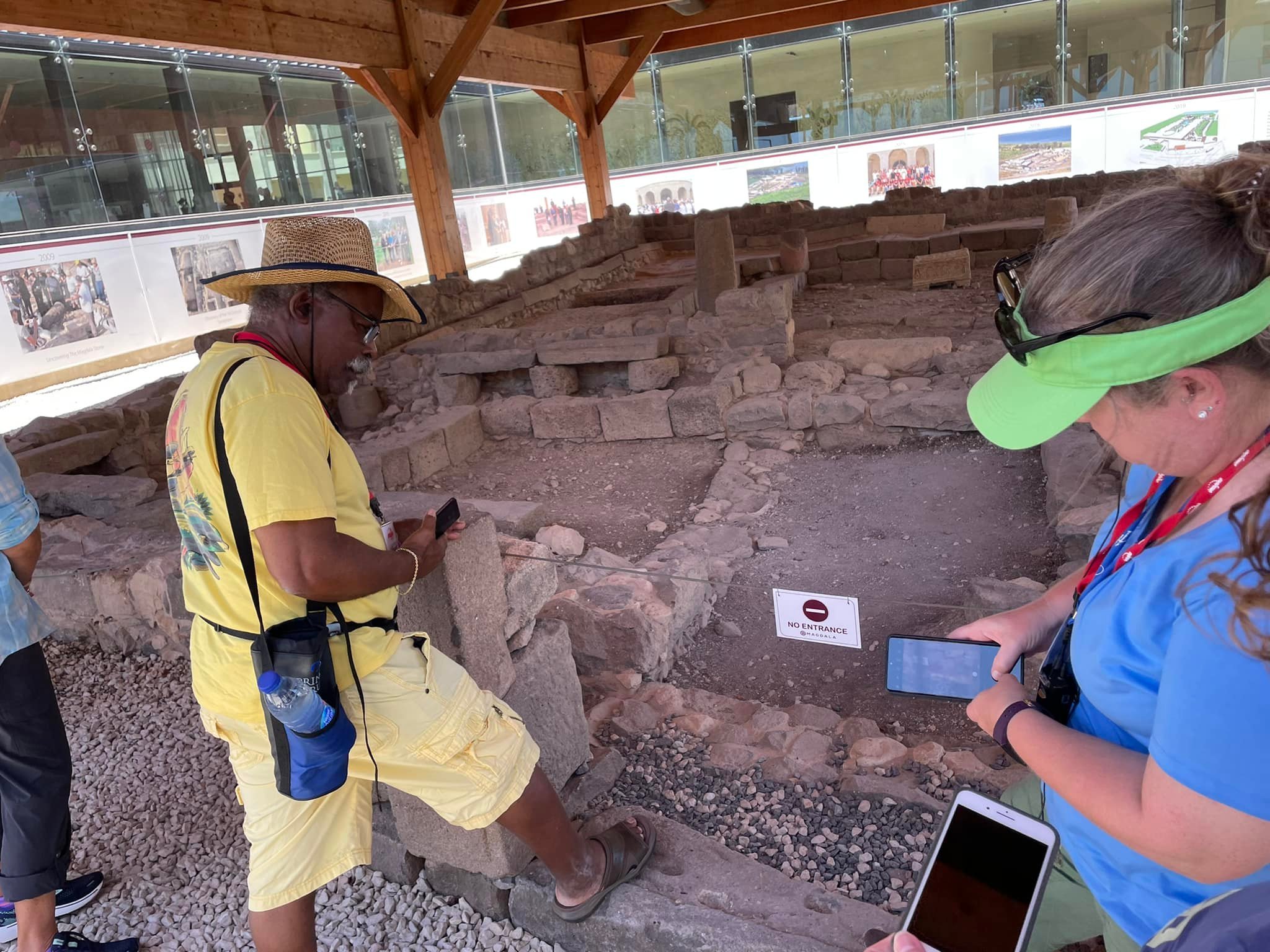
The entry to the Magdala synagogue. Albert Carrington is placing his foot in a doorway where Jesus surely walked.
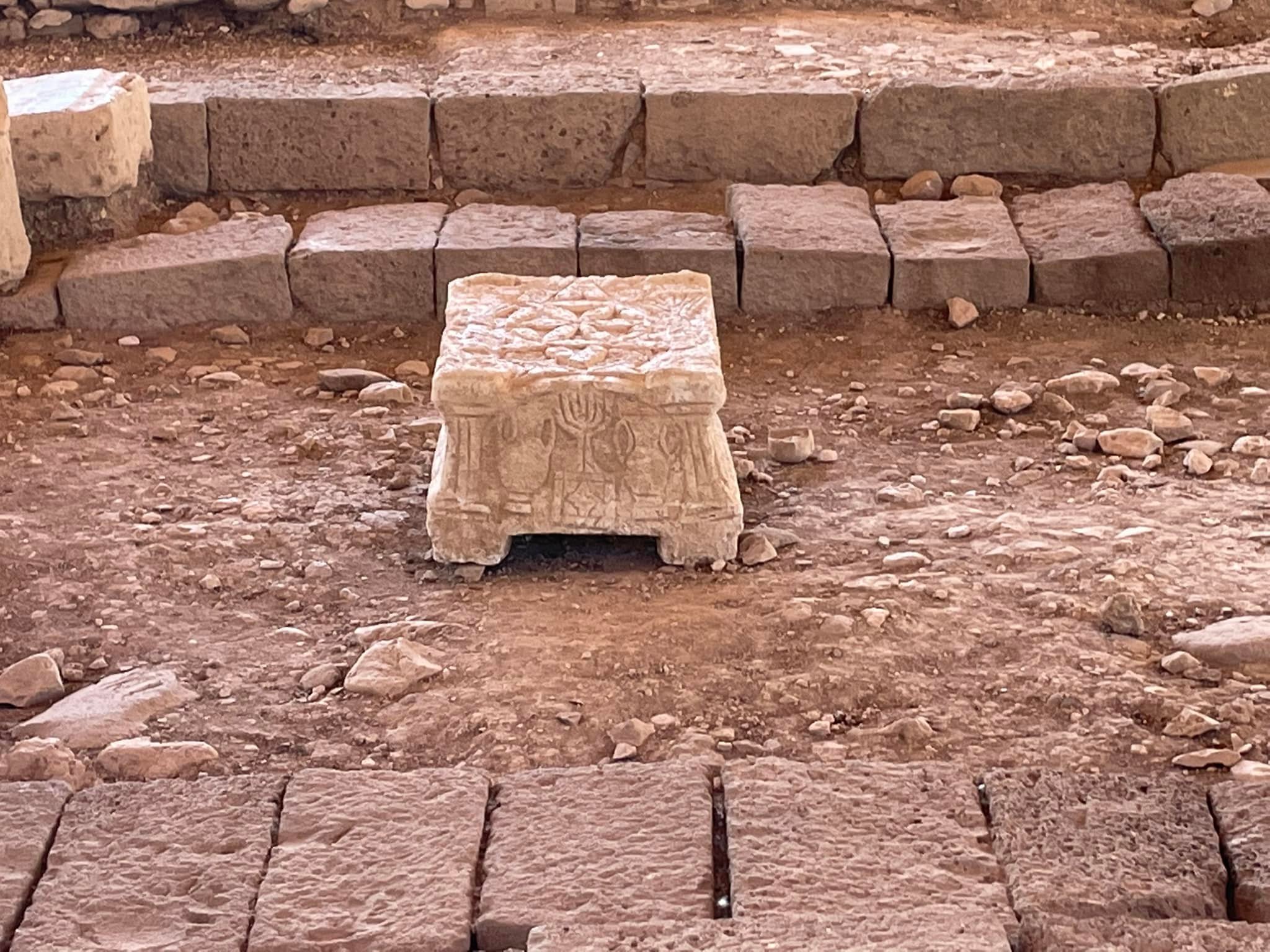
The stone table in its place.
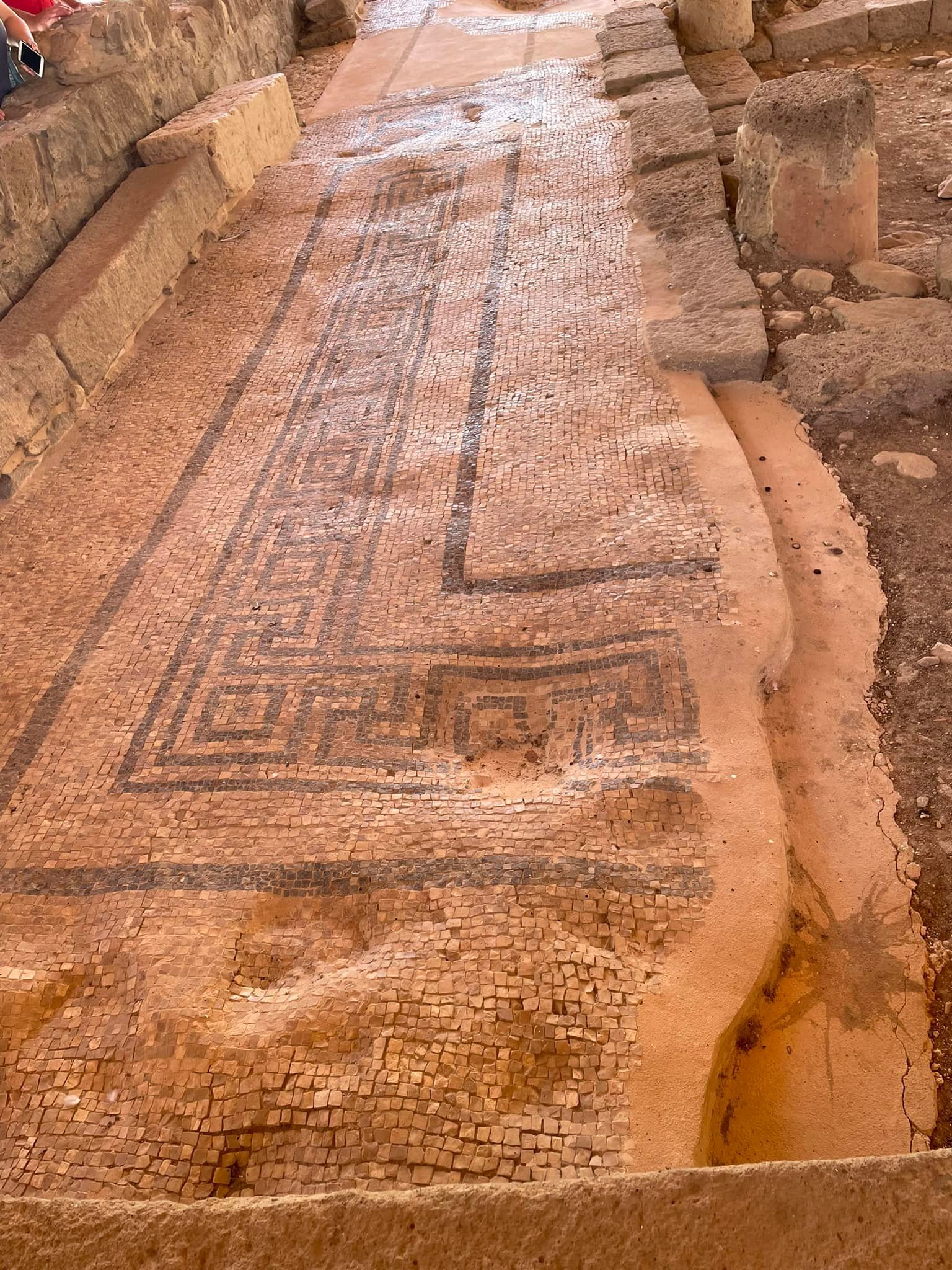
Magdala was the most prosperous town in the region. Its mosaic floor is unique.
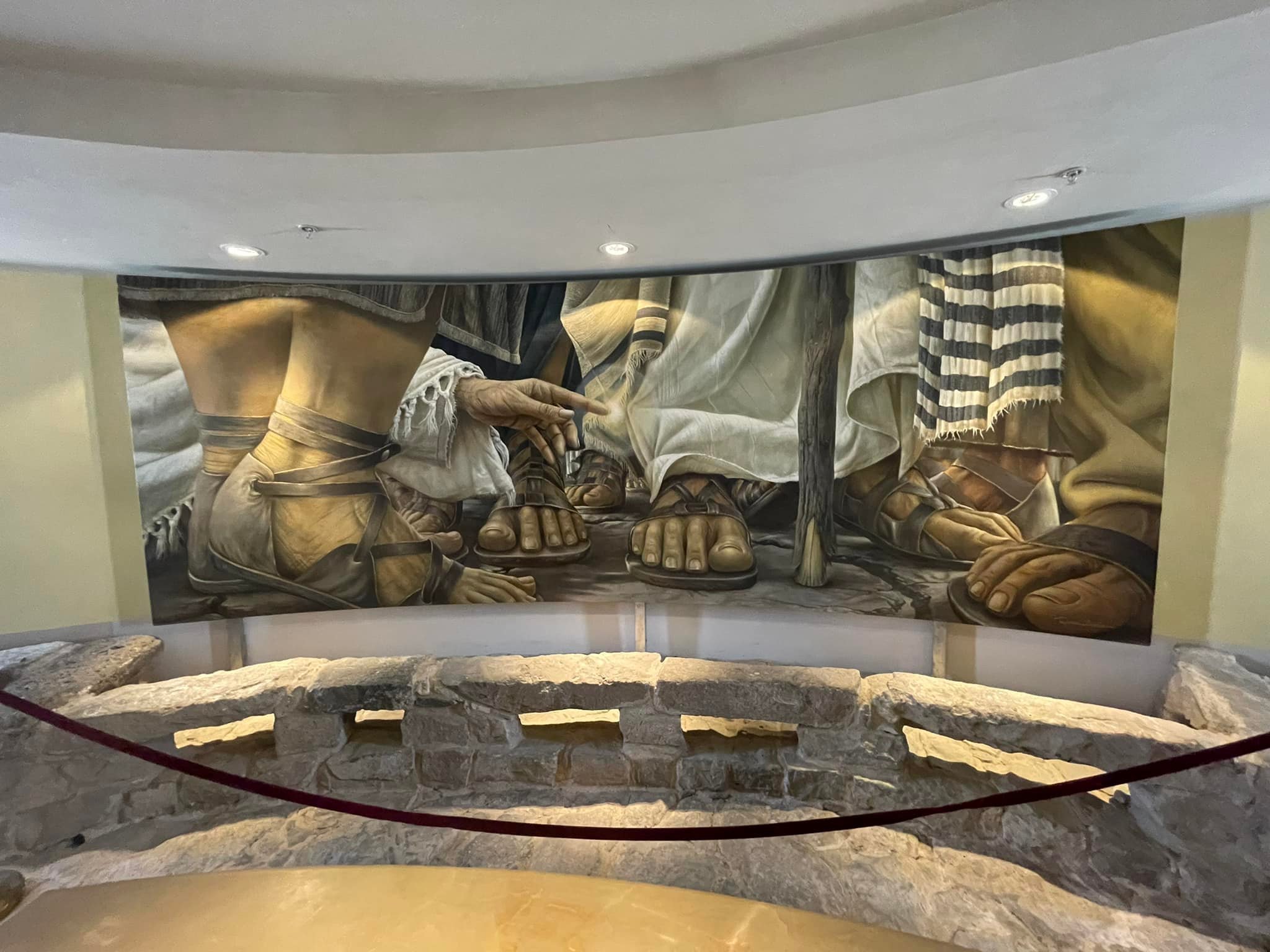
A painting showing Jesus healing. Note the woman’s hand touching his garment.
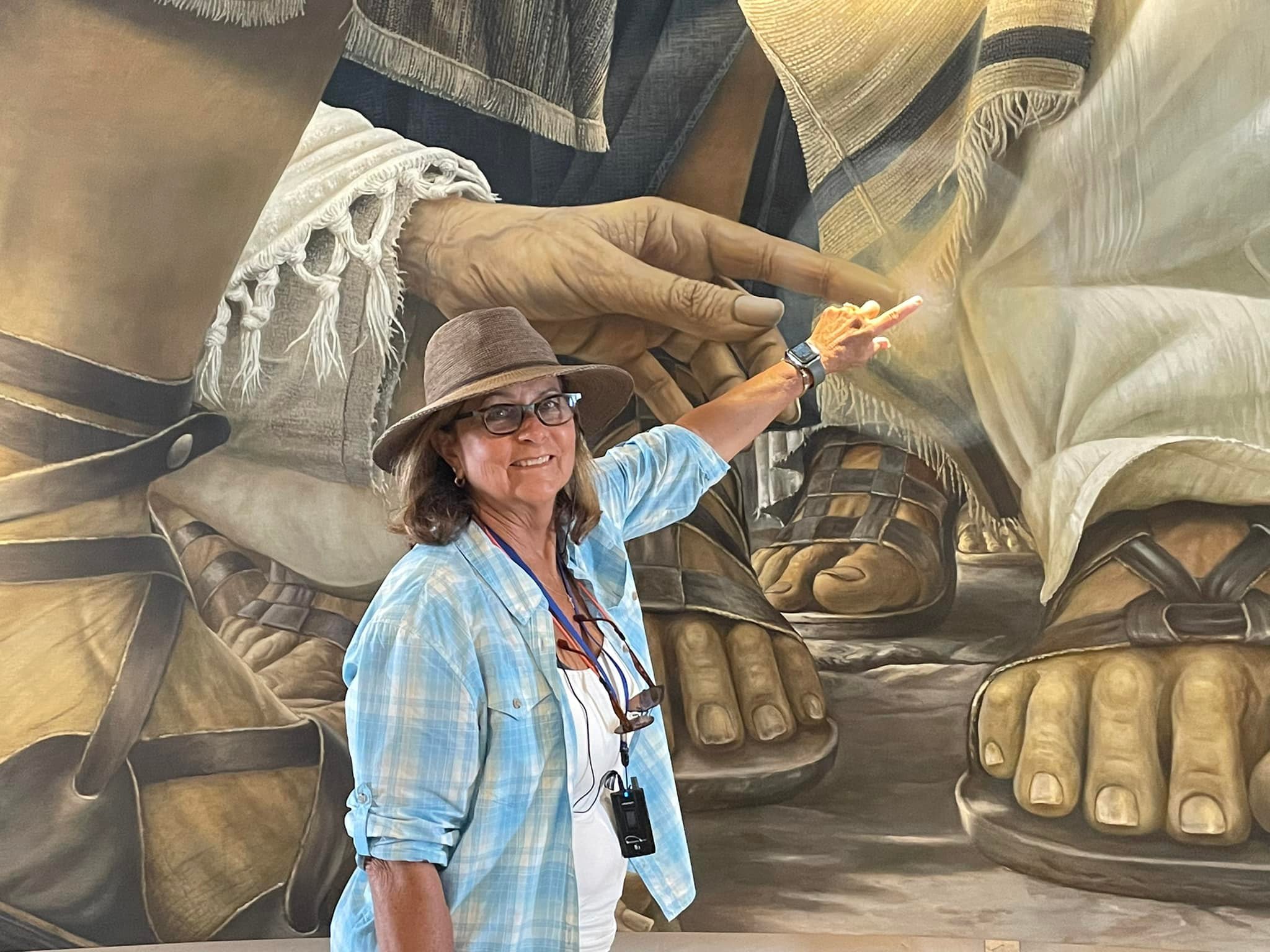
Laura isn’t actually touching it.
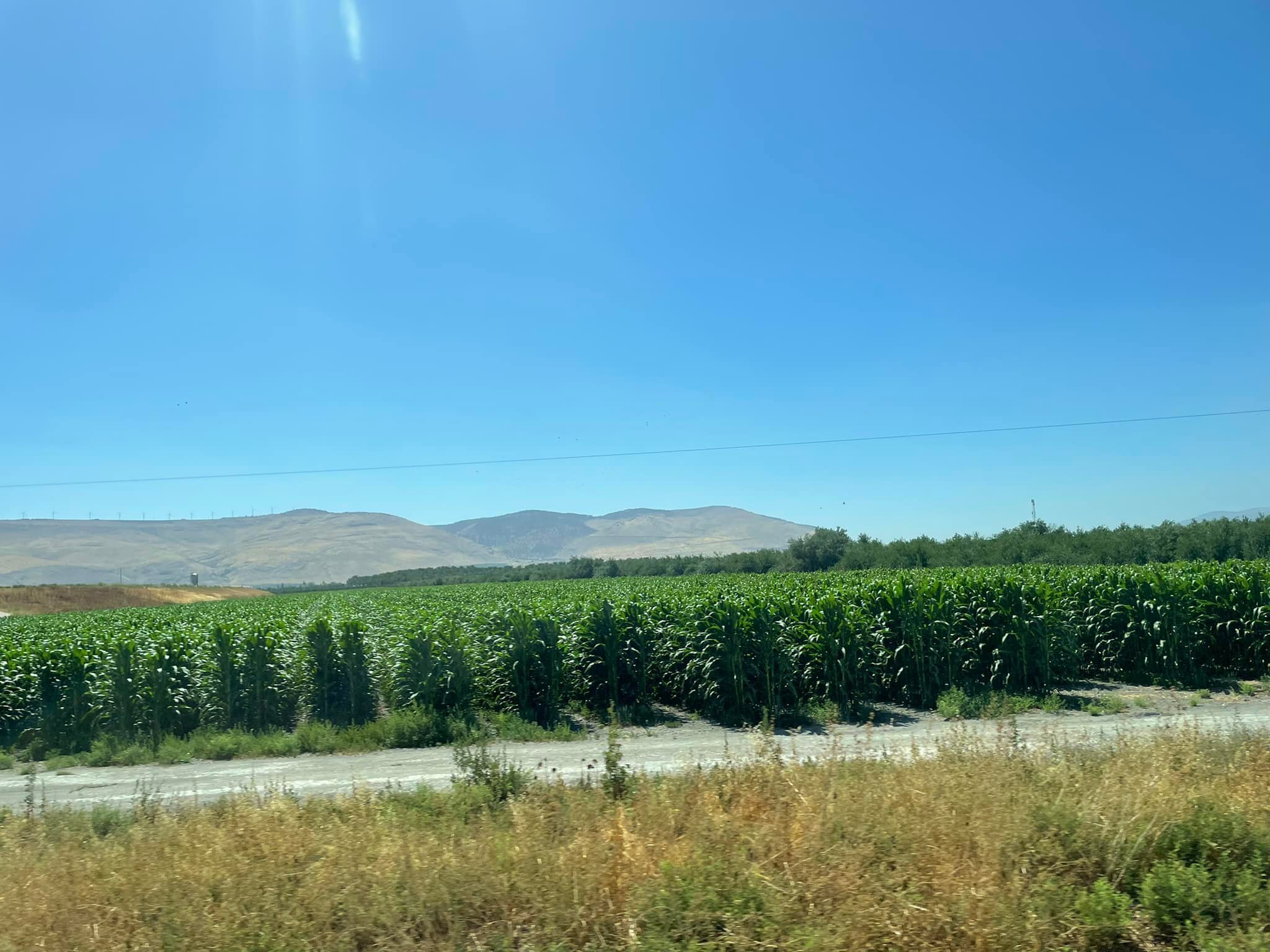
Driving south along the Jordan. The mountains in the distance are in the country of Jordan. The Valley is lush now because of Israeli cultivation. Israel also works with Jordan to develop the Jordanian side of the river.
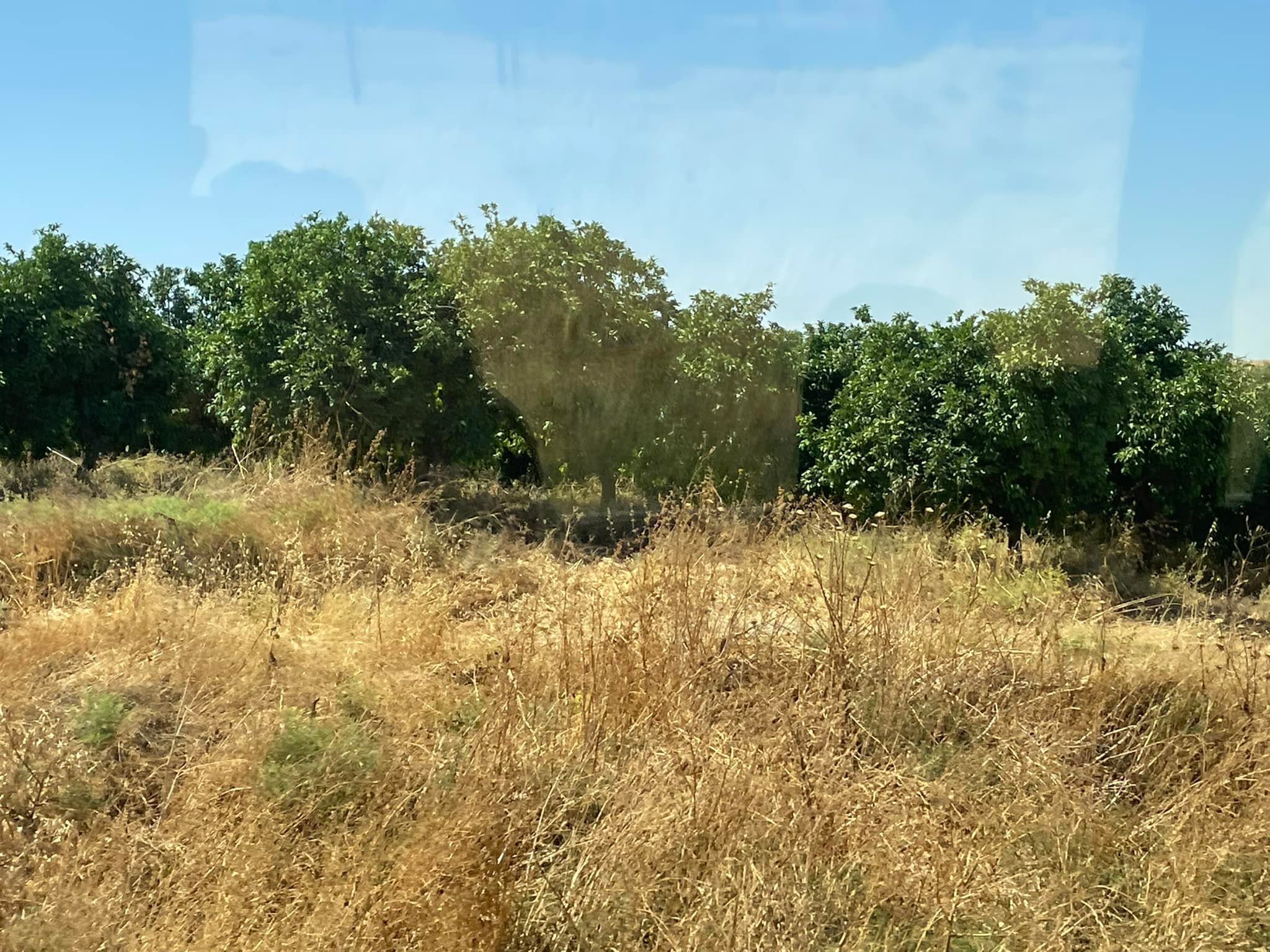
Orange trees!
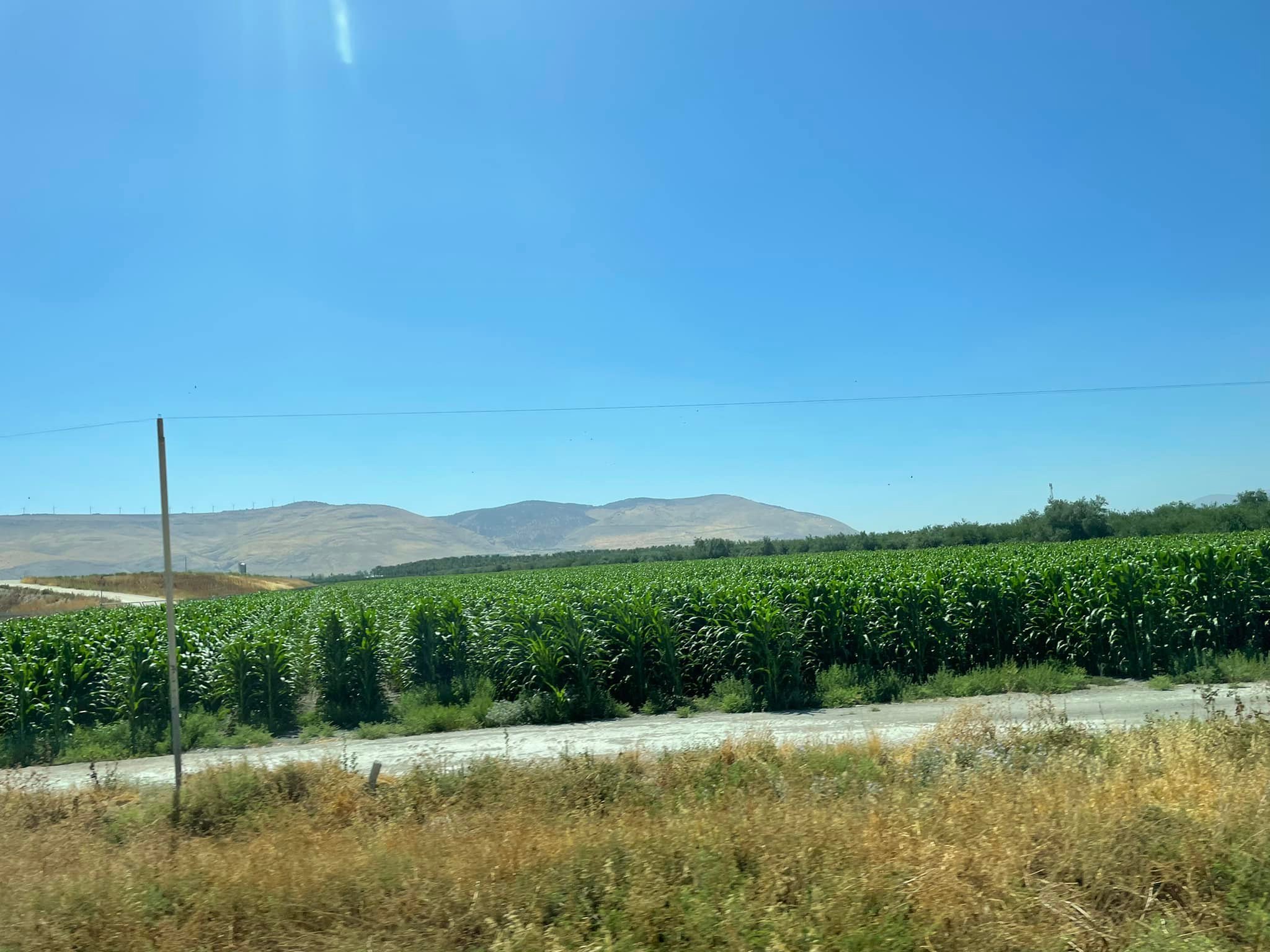
Lush…
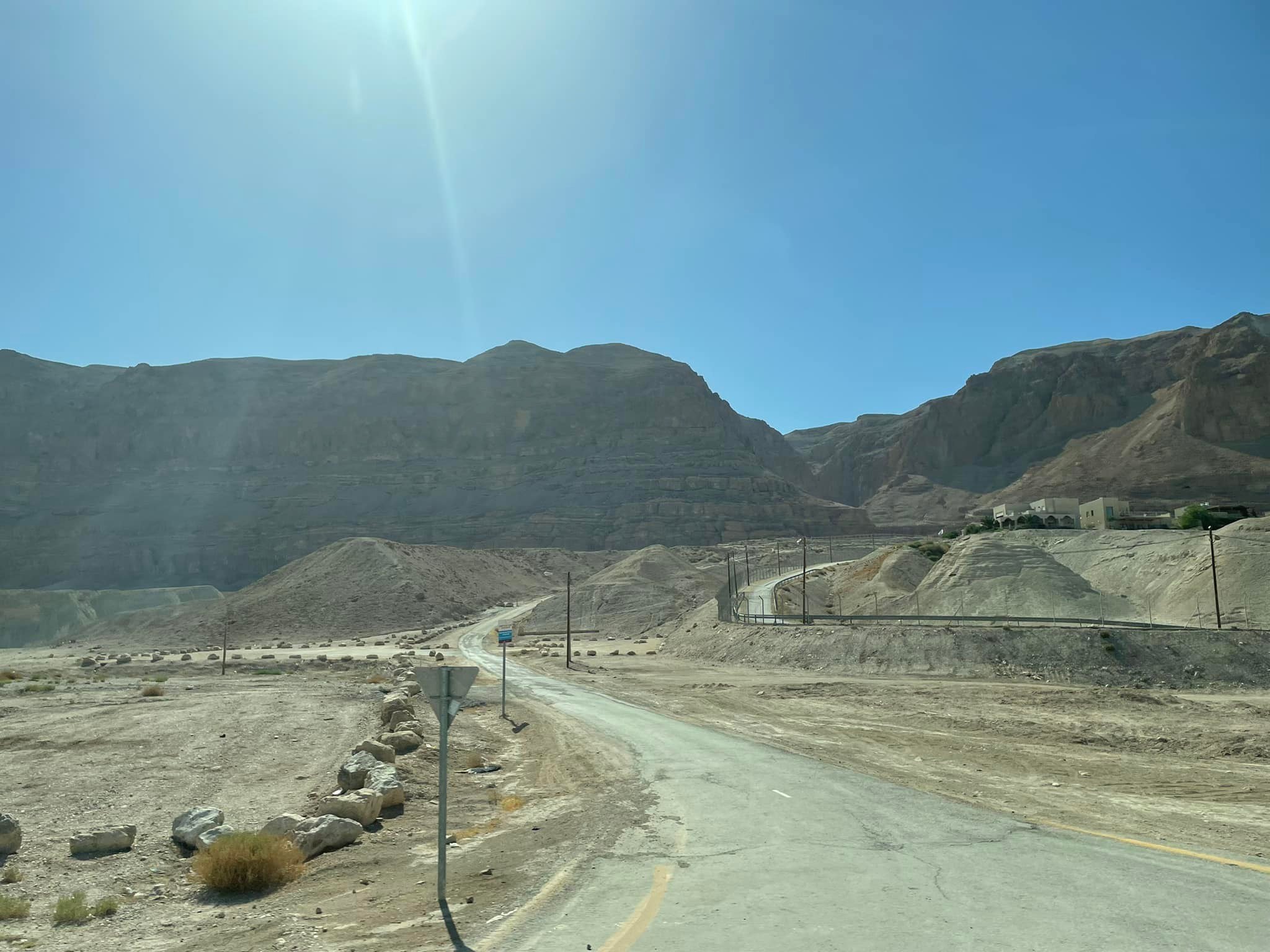
This is where the Kidron valley, which is also between the Temple and Mount of Olives in Jerusalem, opens into the Jordan valley. Read Ezekiel 47:1-12
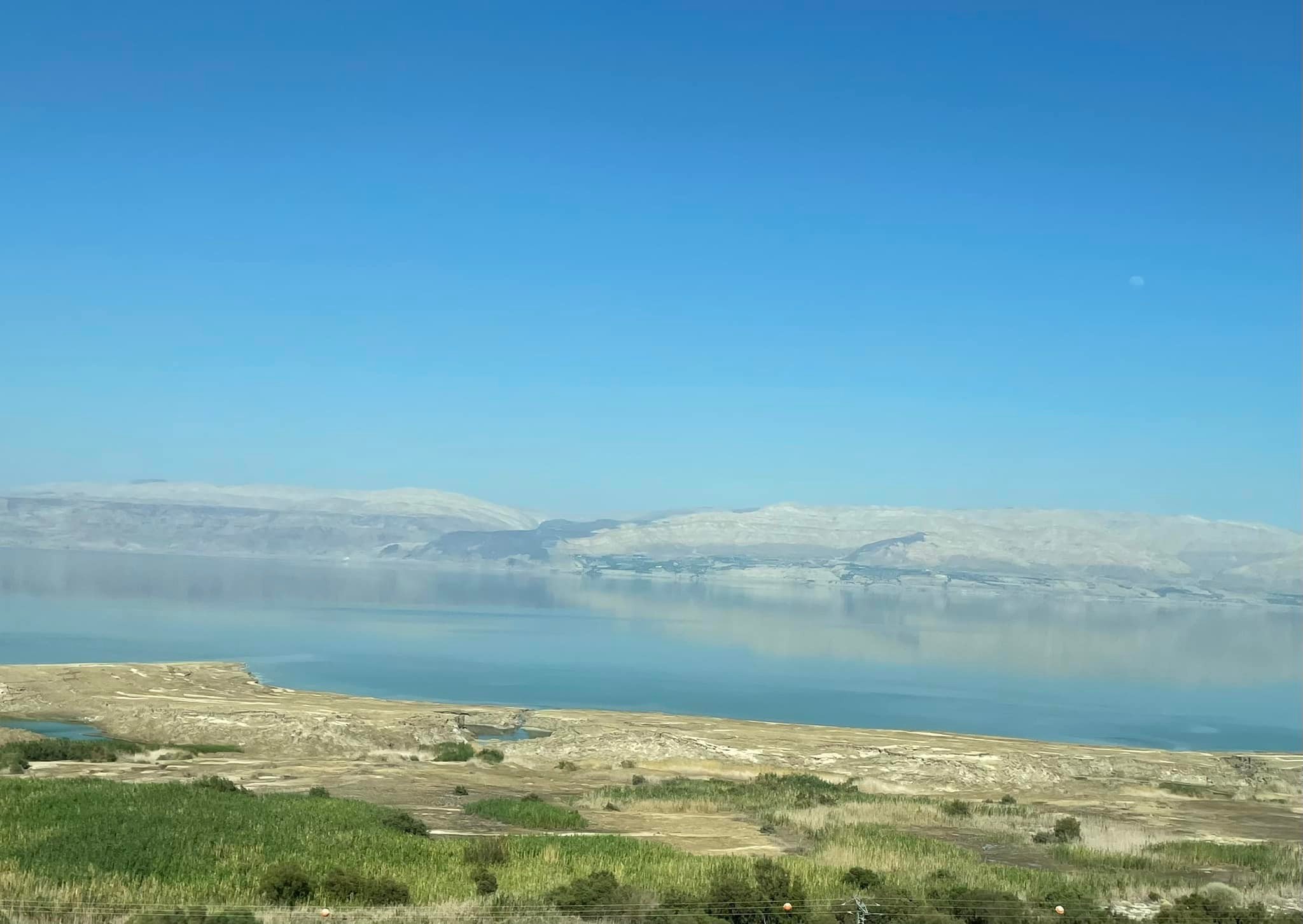
The Dead Sea. I took dozens of pictures. So surreally beautiful.
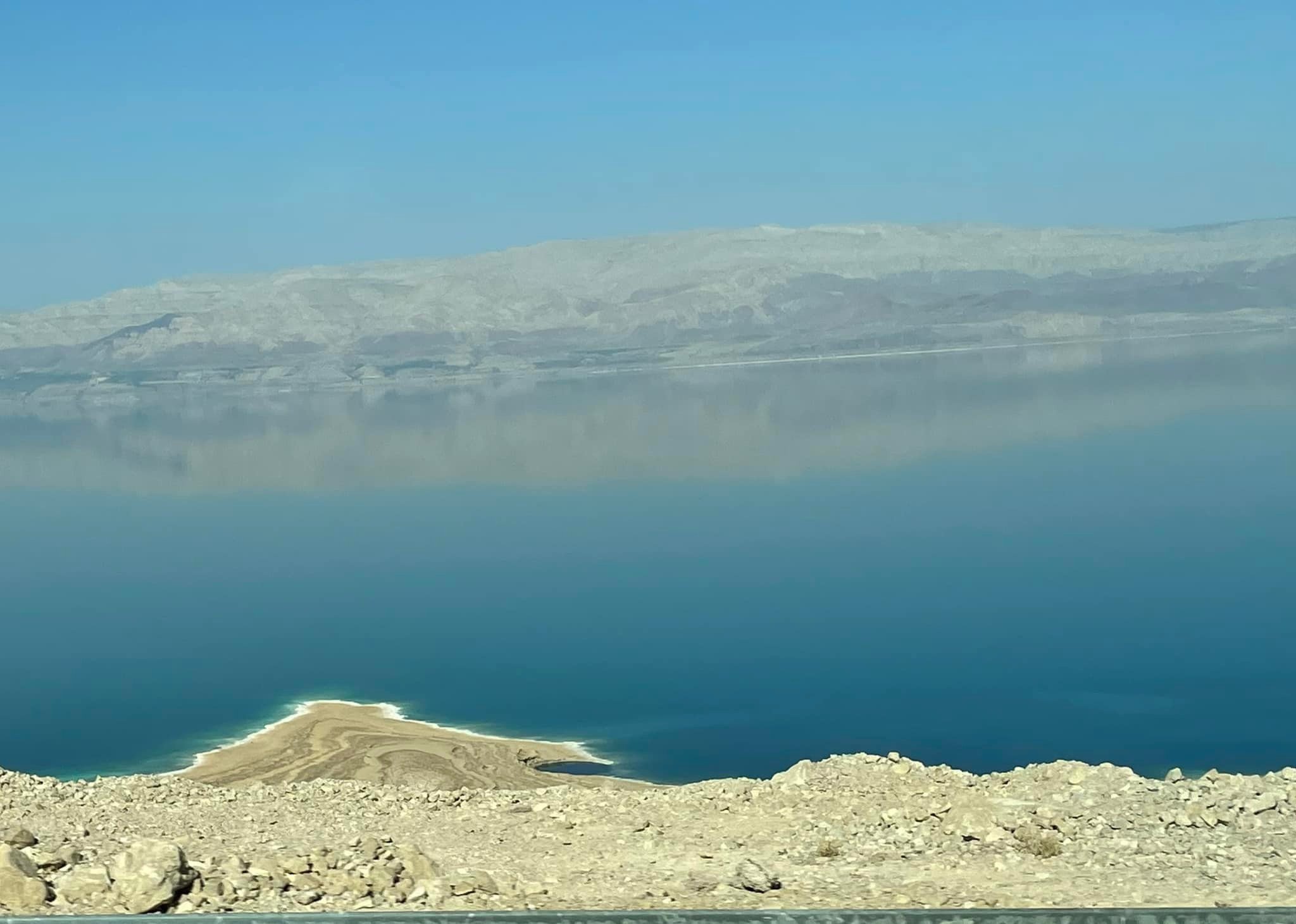
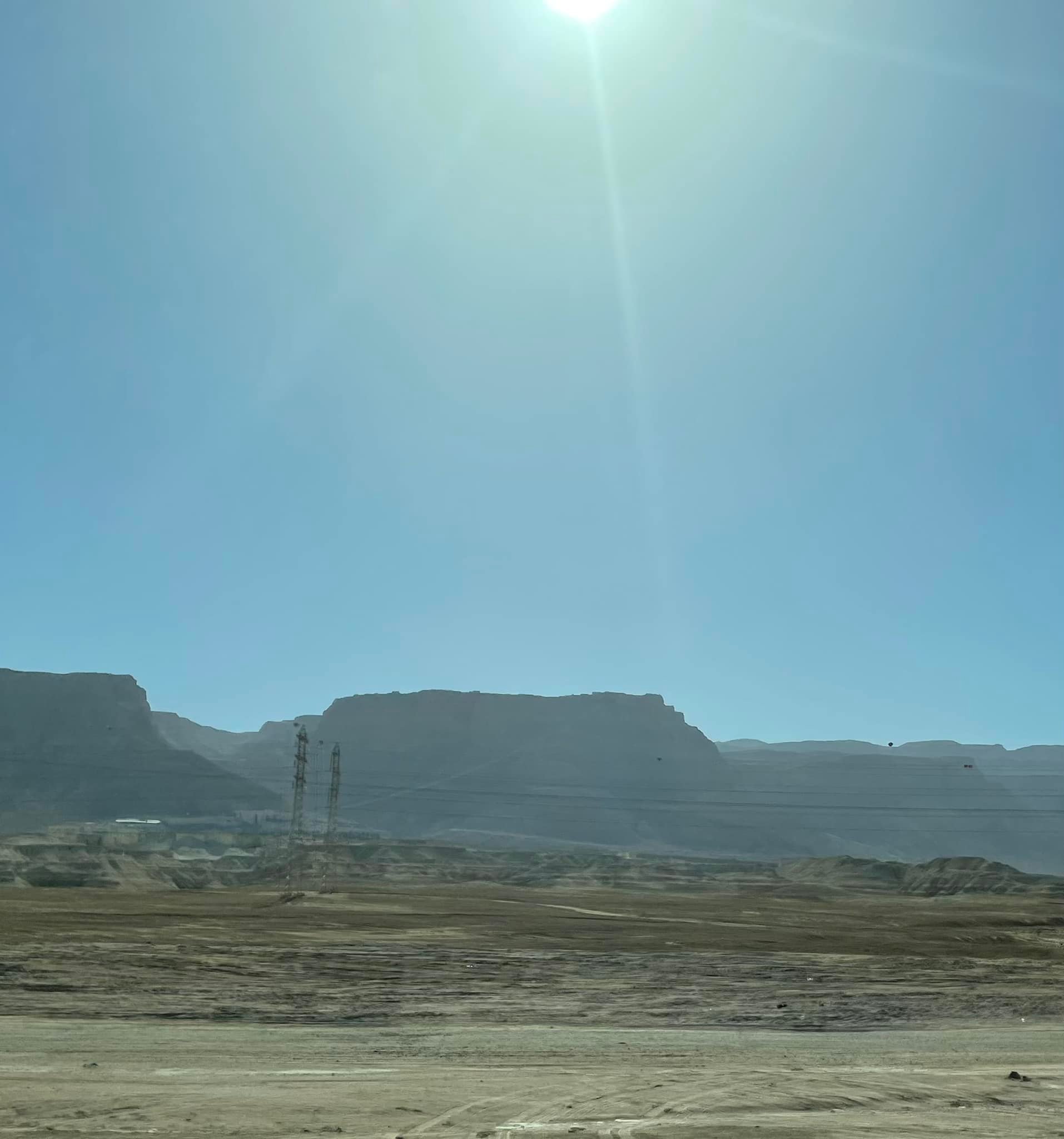
Masada (which we visit tomorrow.)

Dead Sea from my hotel room.

Mountains to the West.

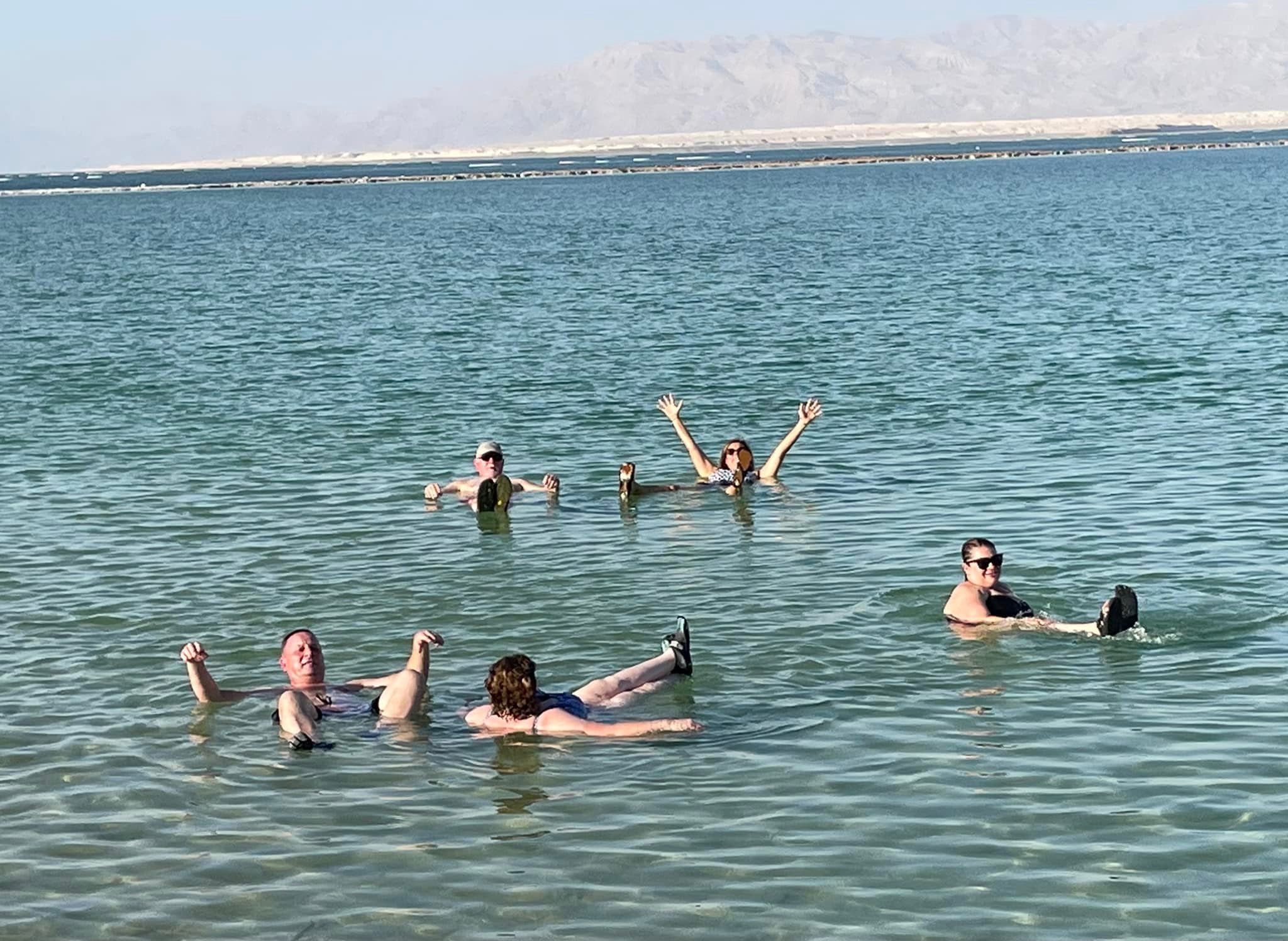
Floating!
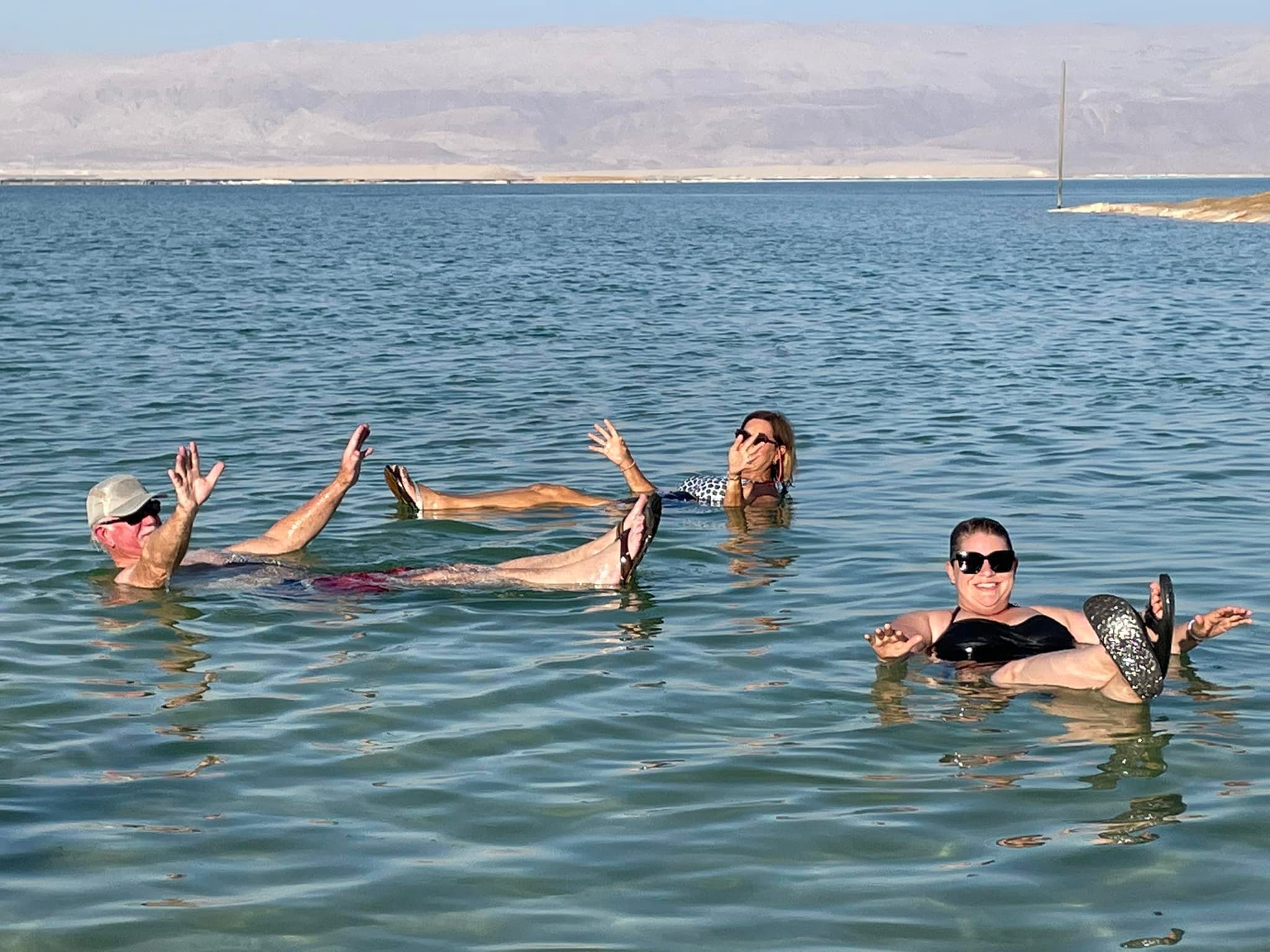
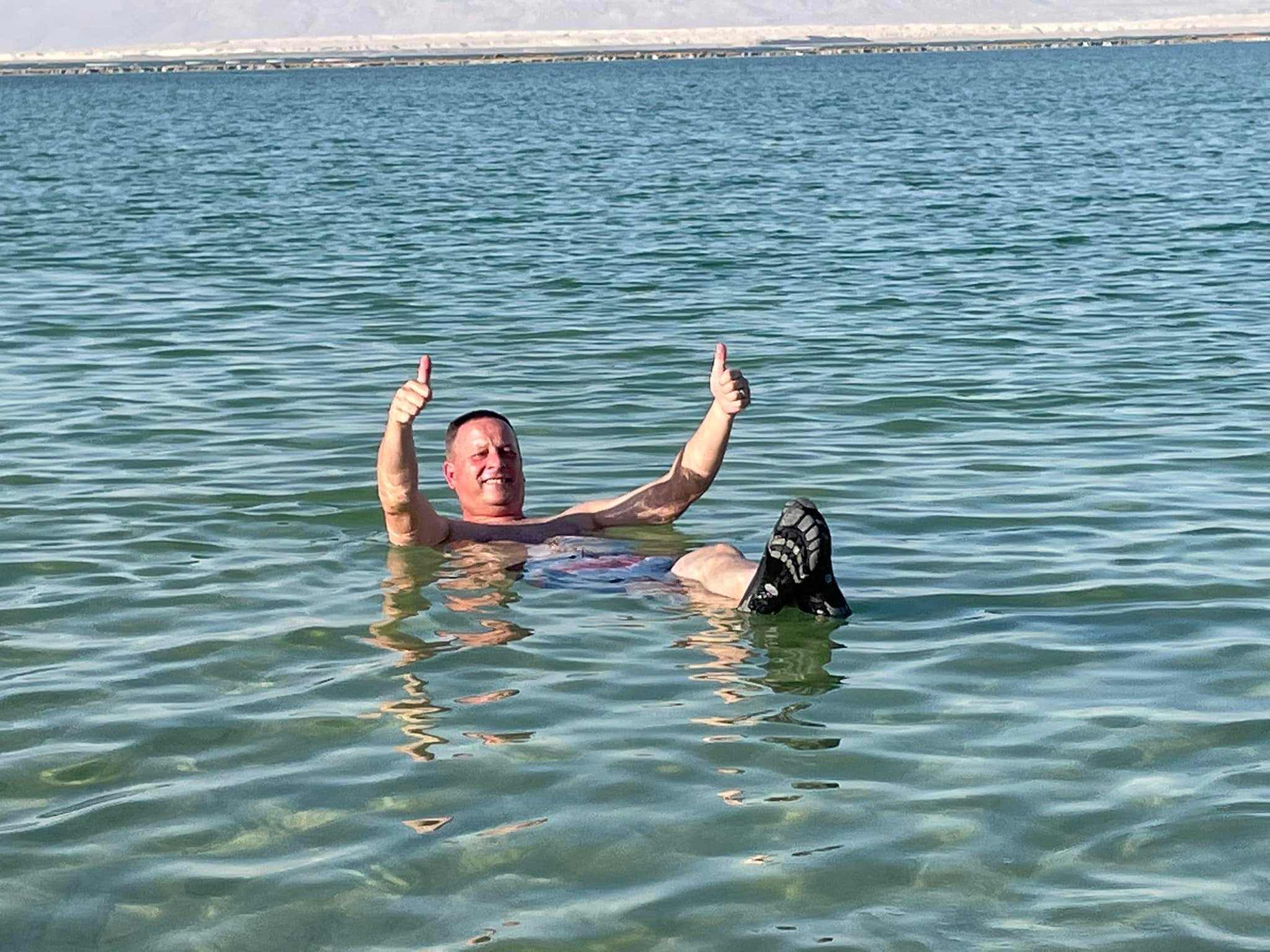
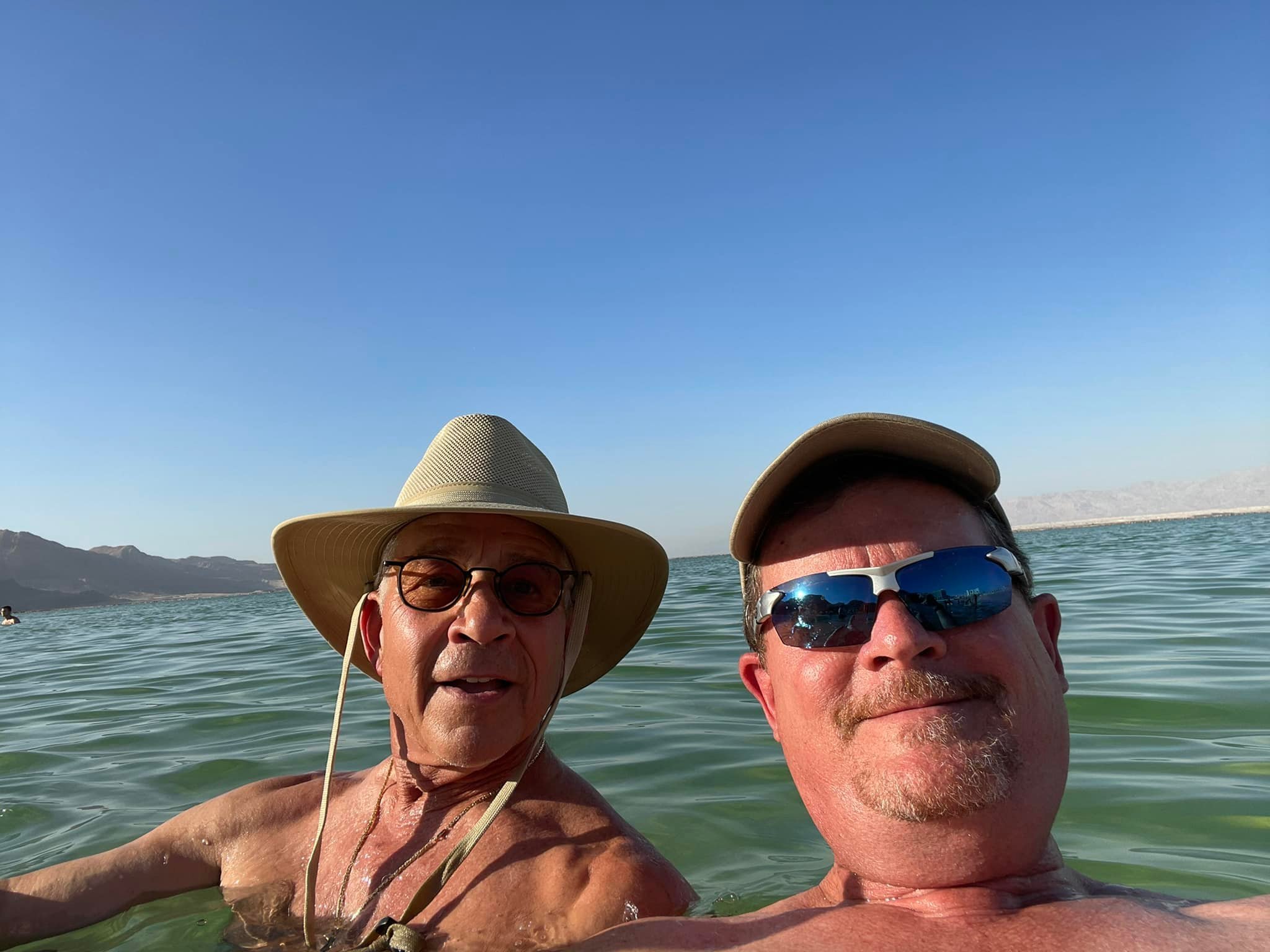
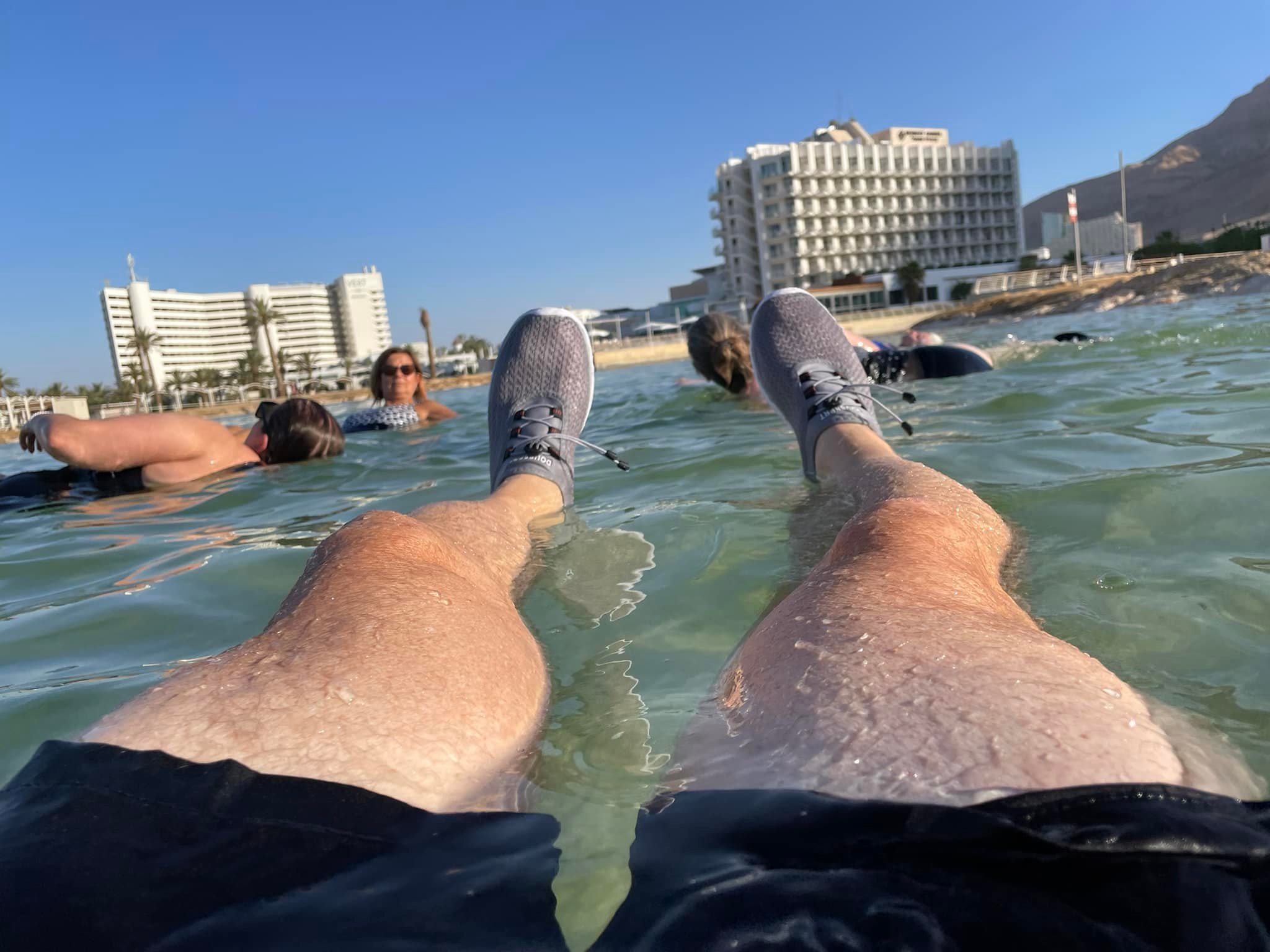
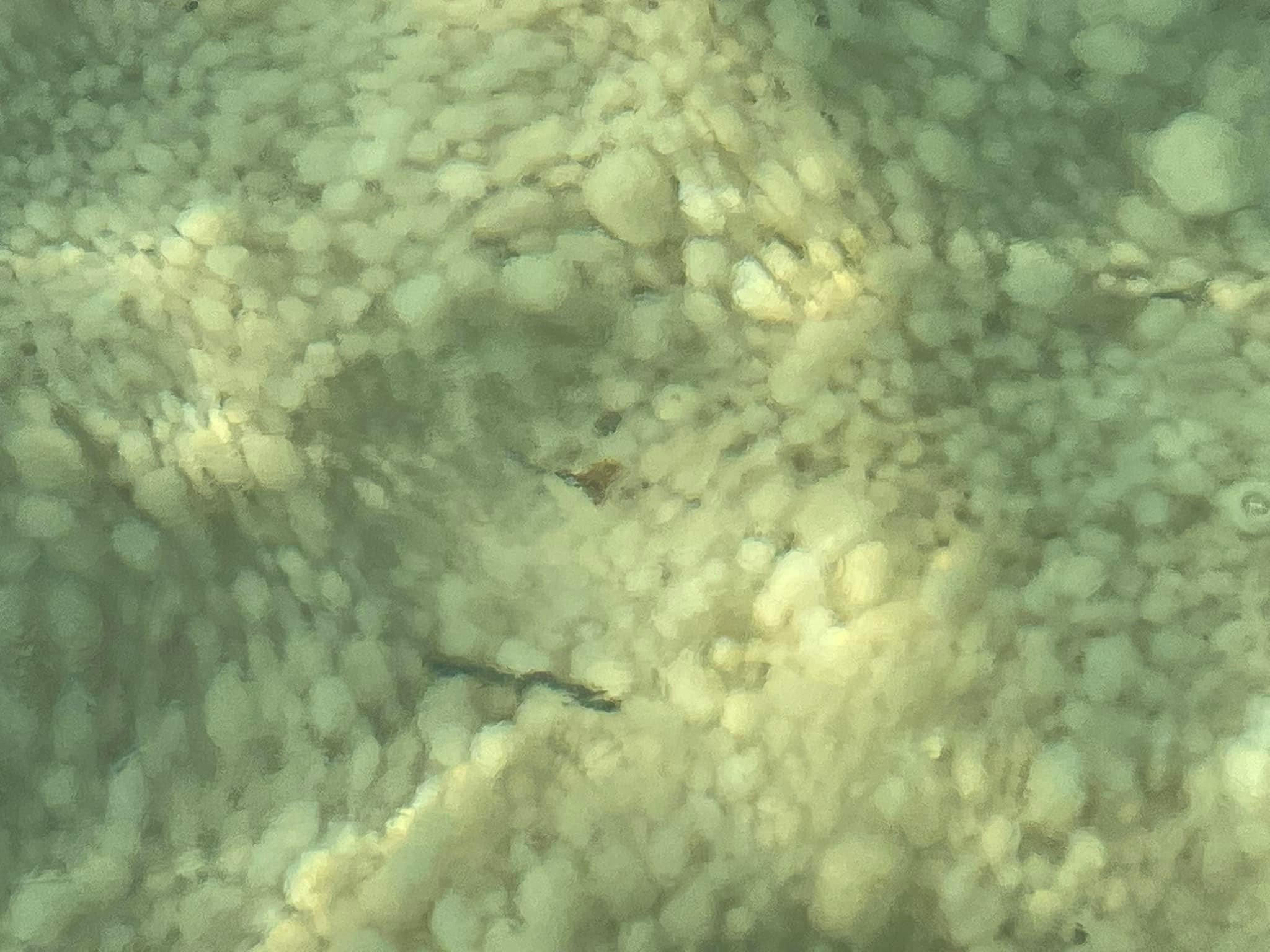
The bottom is all salt crystals.
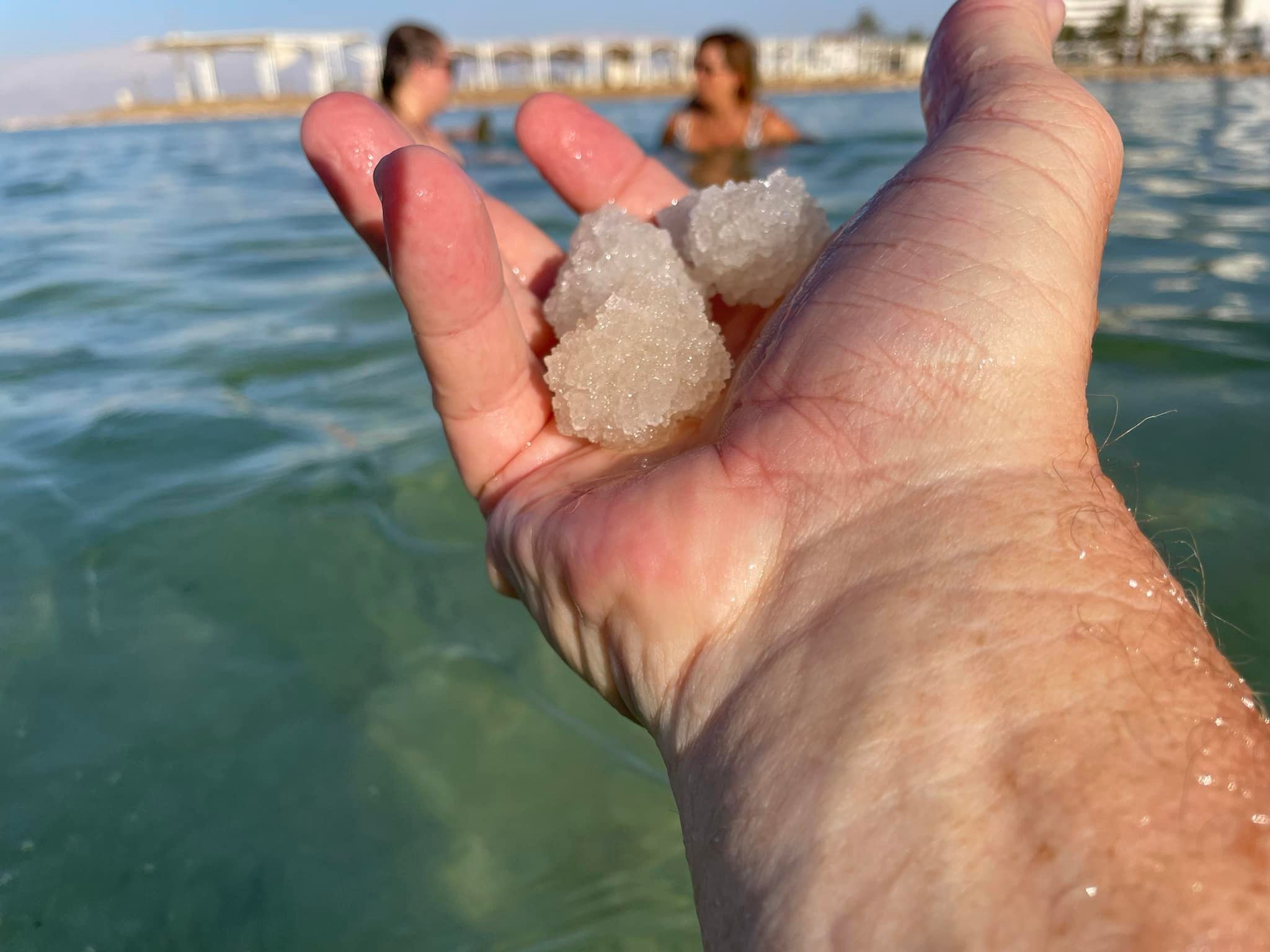
These are the salt crystals covering the bottom.
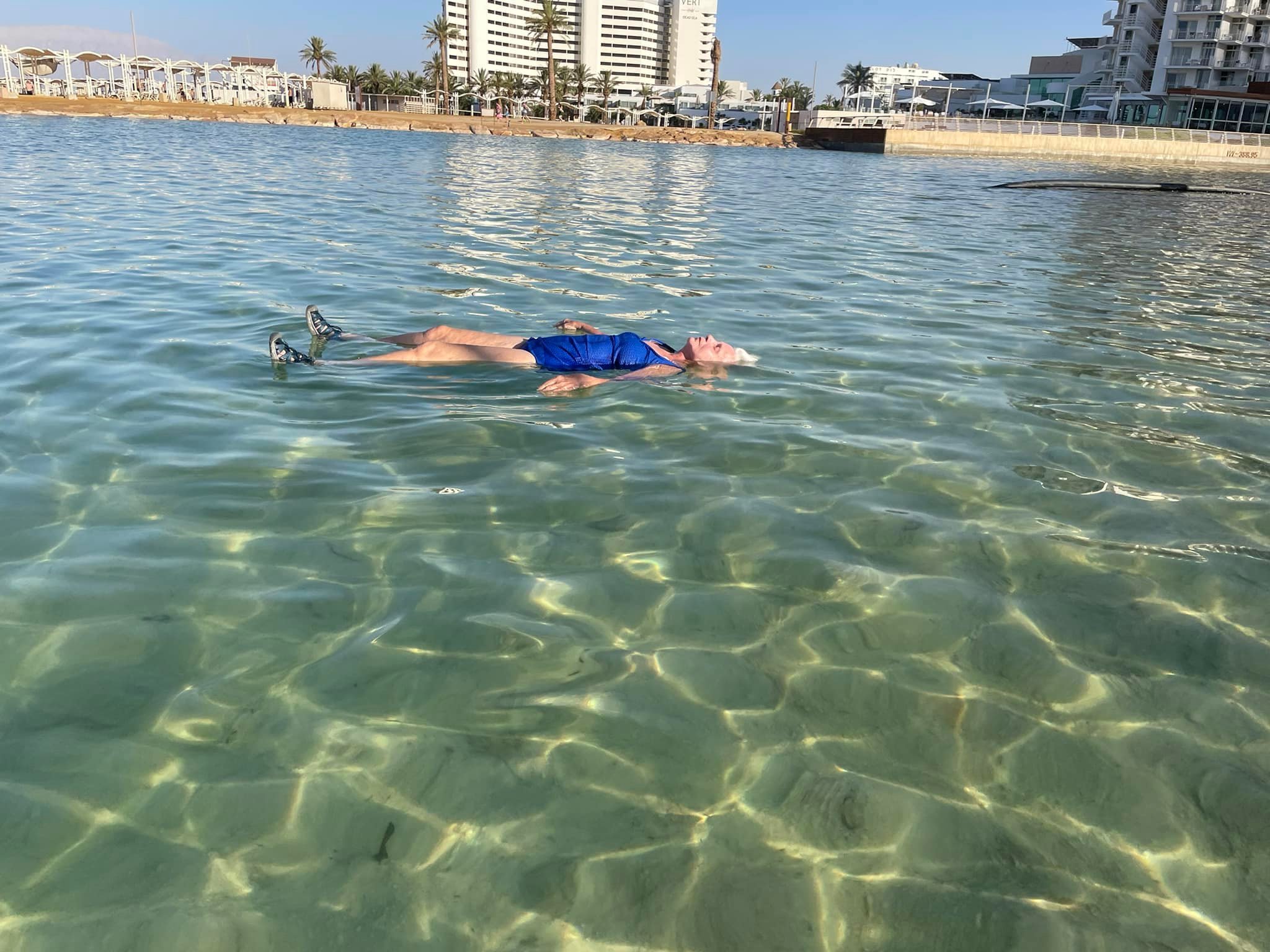
Suzanne is in her own isolation tank.
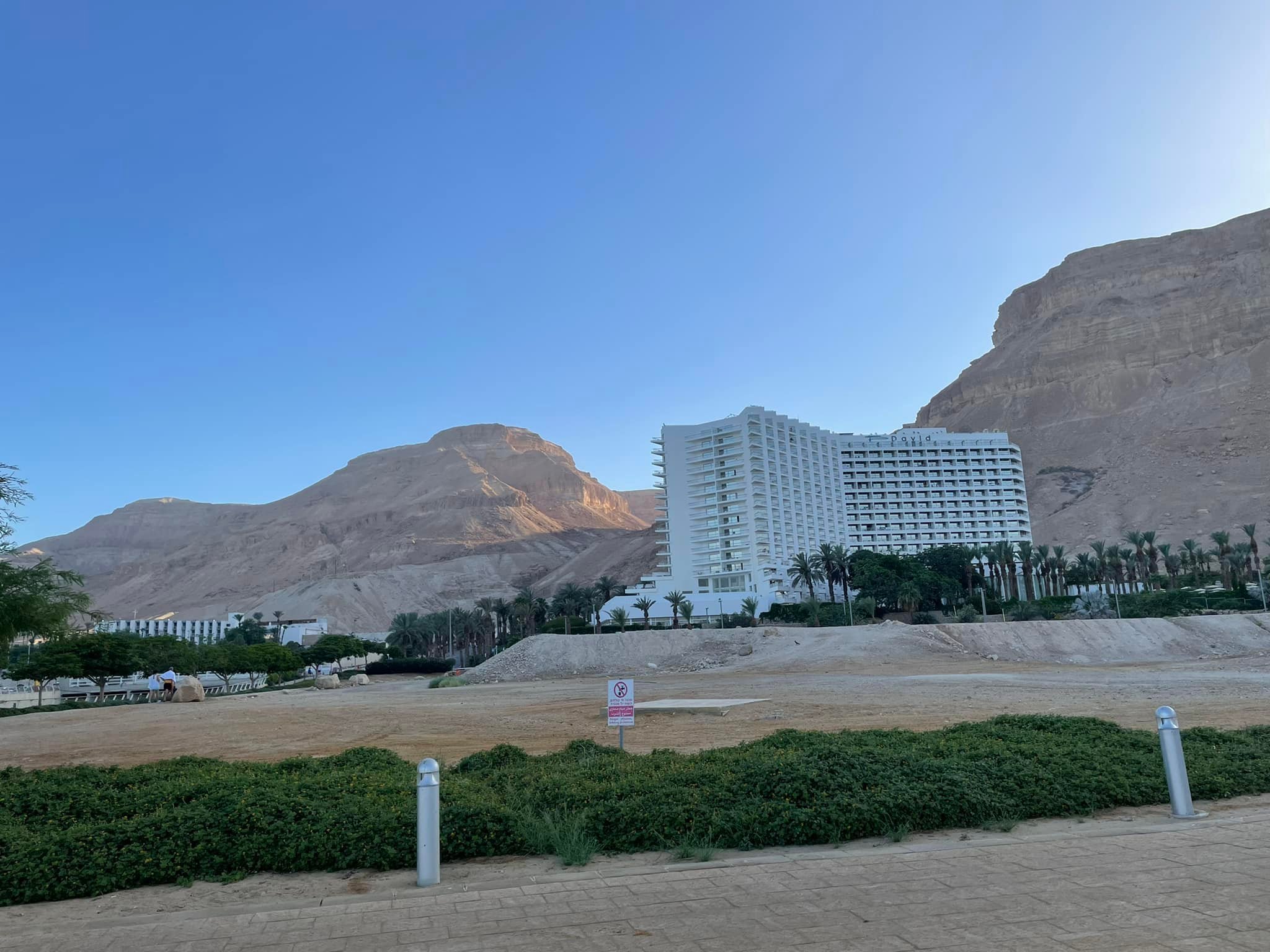
Our hotel.

Sunset on a great day
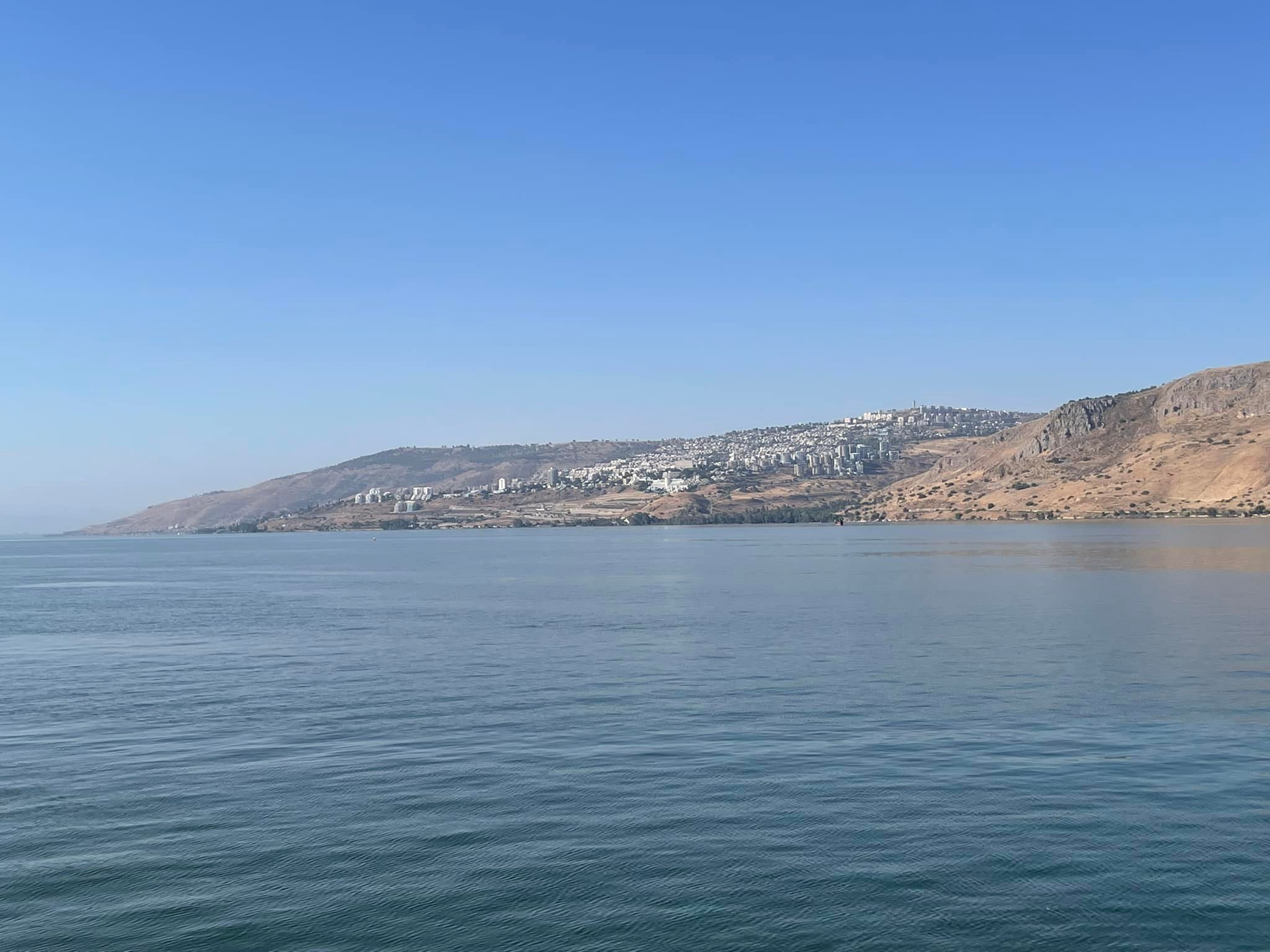
Tiberias from the Sea of Galilee.
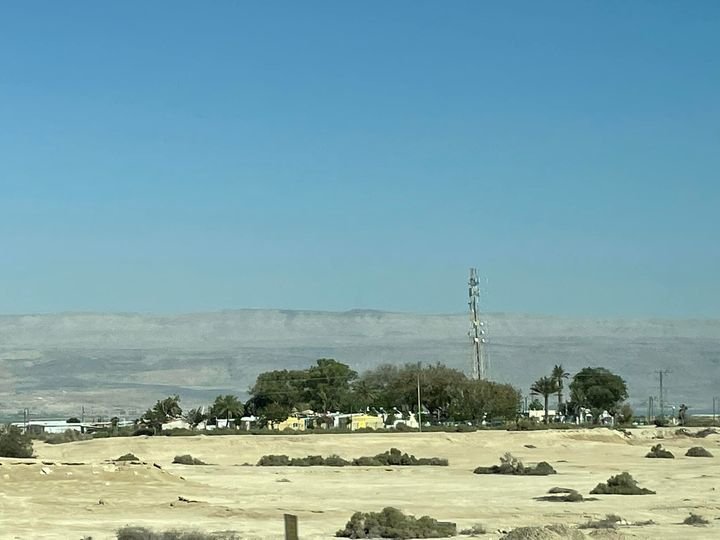
The dark capped mountain in the distance is Mount Nebo, where Moses was able to see the Promised Land but wasn’t able to enter it. Touched my heart to see it.
Pilgrimage to the Holy Land - Day 3
We began with a trip up to Tel Dan, one of the 3 major headwaters of the River Jordan, which has a very ancient and momentous history. We saw a gate through which Abraham and Lot passed over 3700 years ago! Then to Caesaria Philippi/Banias where Peter first confessed Jesus as the Christ, the Messiah and Son of God. We were extremely close to the borders of Lebanon and Syria. After lunch in a Druze village on the Golan Heights, we descended back down to Galilee and renewed our baptisms near where the Jordan flows out of Galilee. After dinner we did Compline live from the Sea of Galilee at The Episcopal Church of the Good Shepherd, Lake Wales, FL (check it out!)
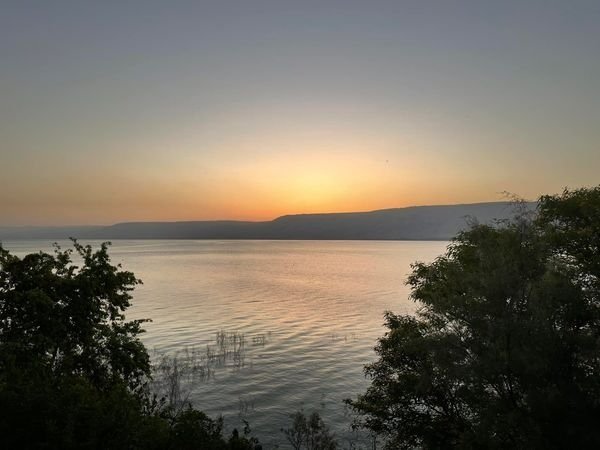
Sunrise on the Sea of Galilee.
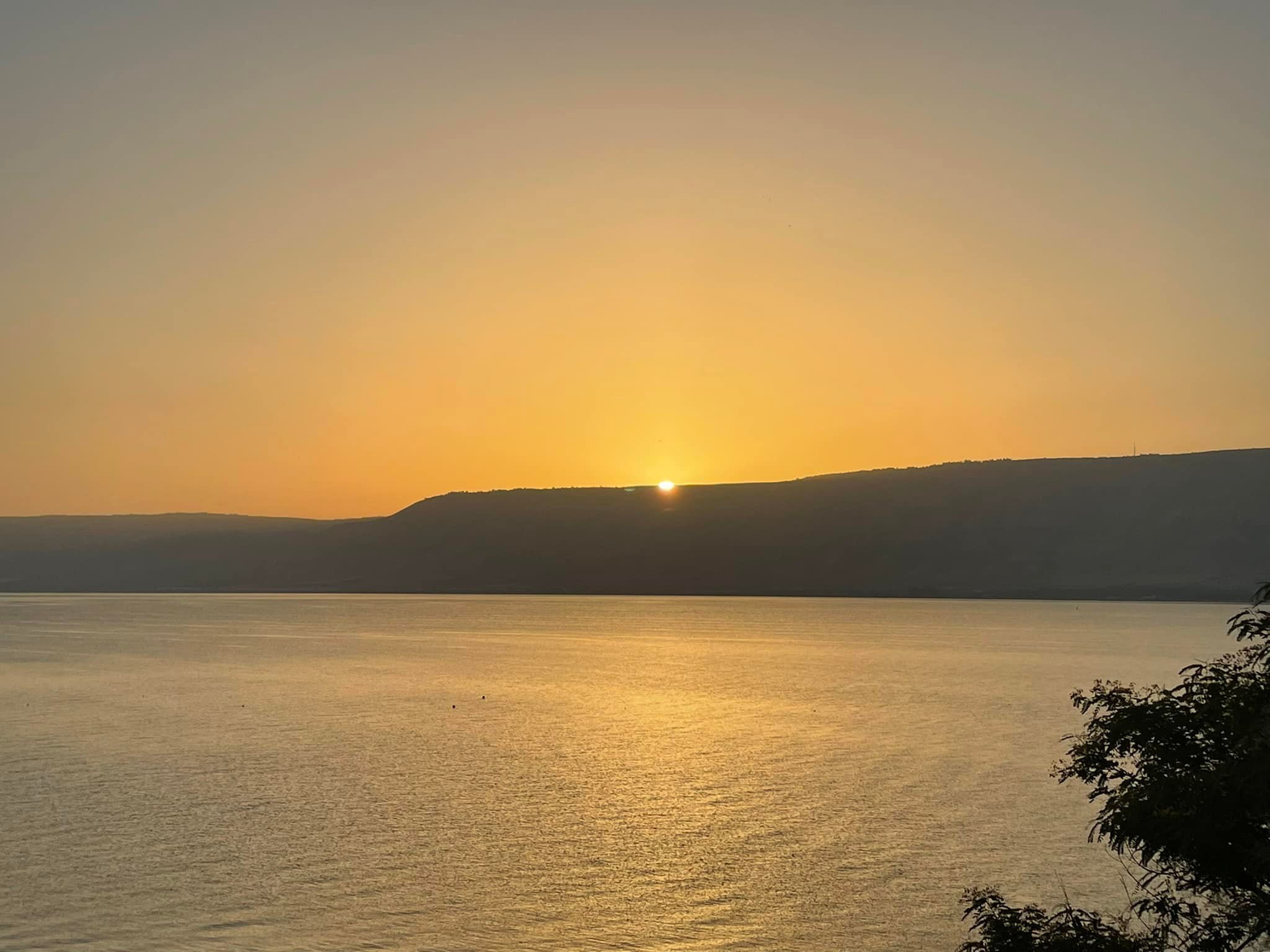
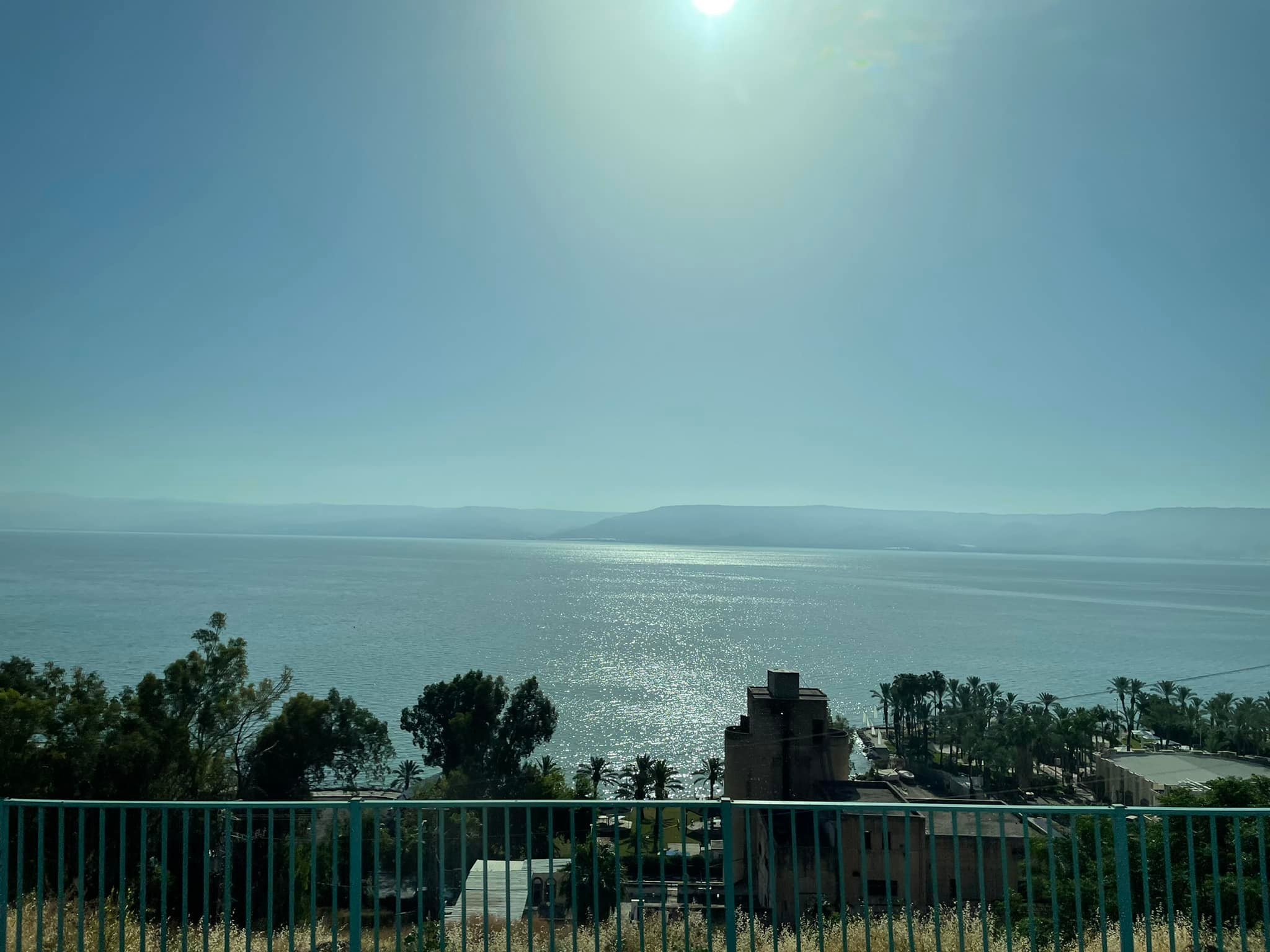
We began with a drive up the west coast of the Sea of Galilee, here coming into Tiberias. Beautiful morning!
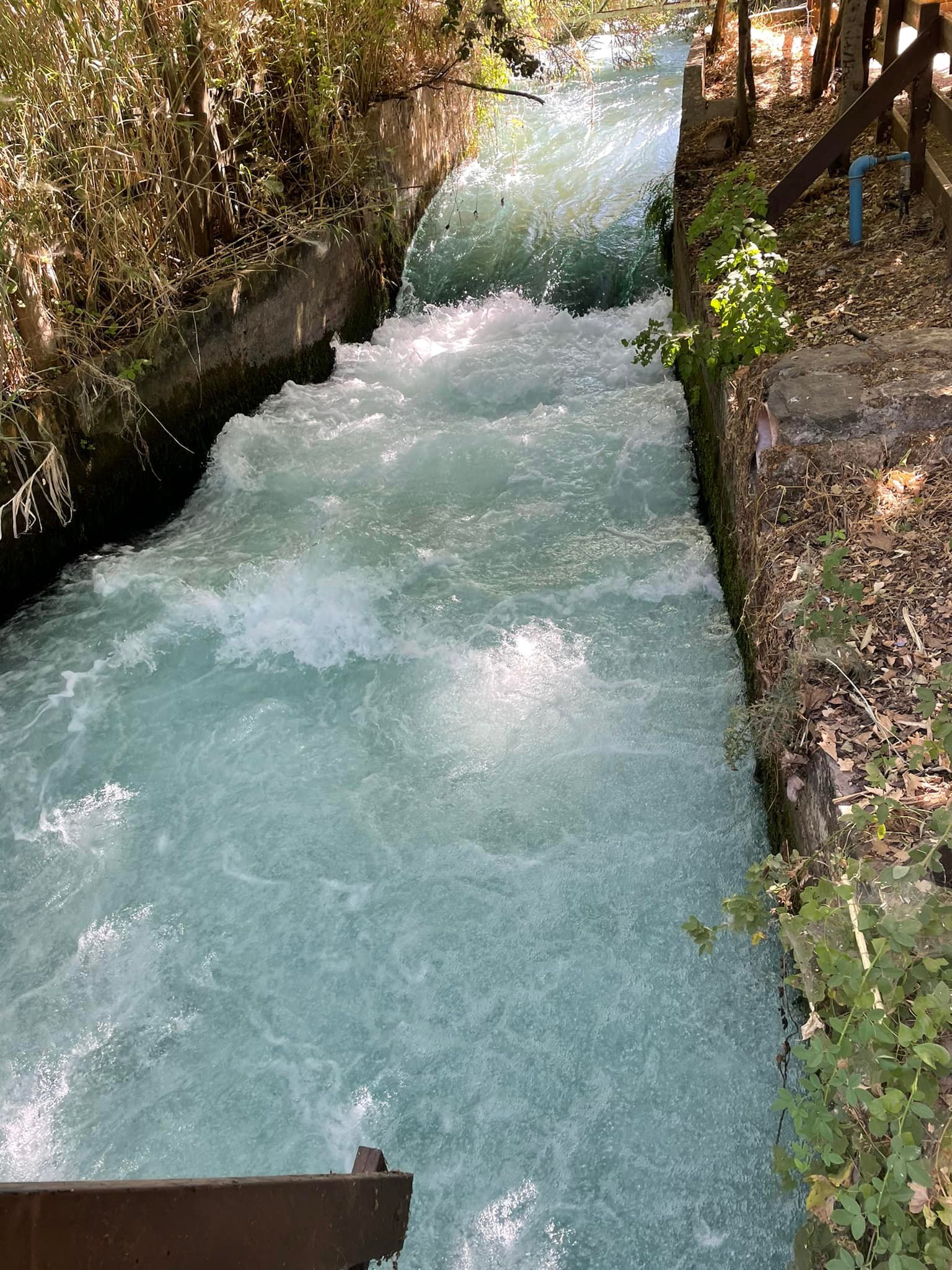
This is the stream that flows out of Tel Dan. Rushing hard!
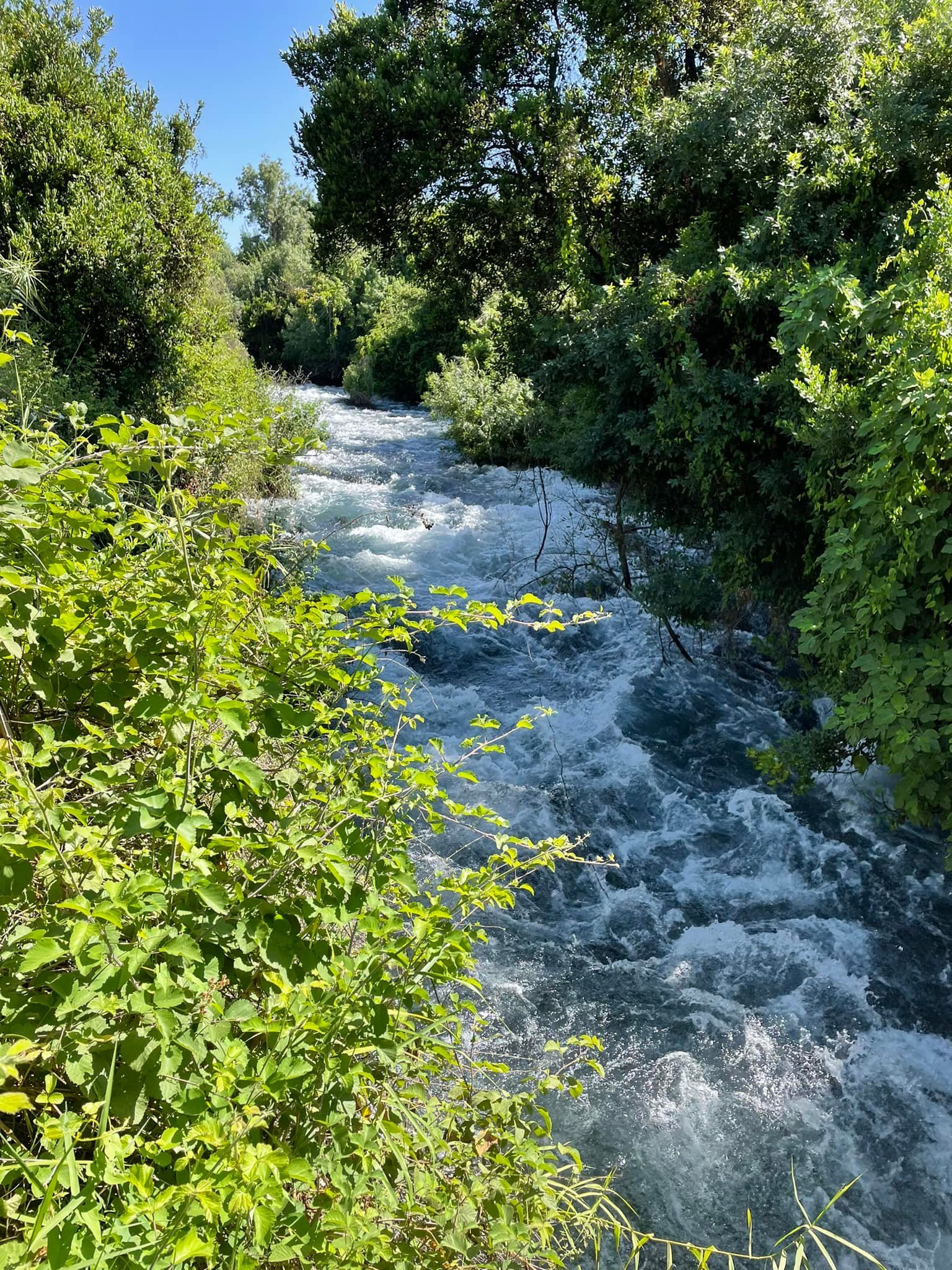



This is the actual spot where the main spring flows. The water will flow into the Sea of Galilee then the Jordan continues south. What doesn’t get used will end up in the Dead Sea, where it evaporates.
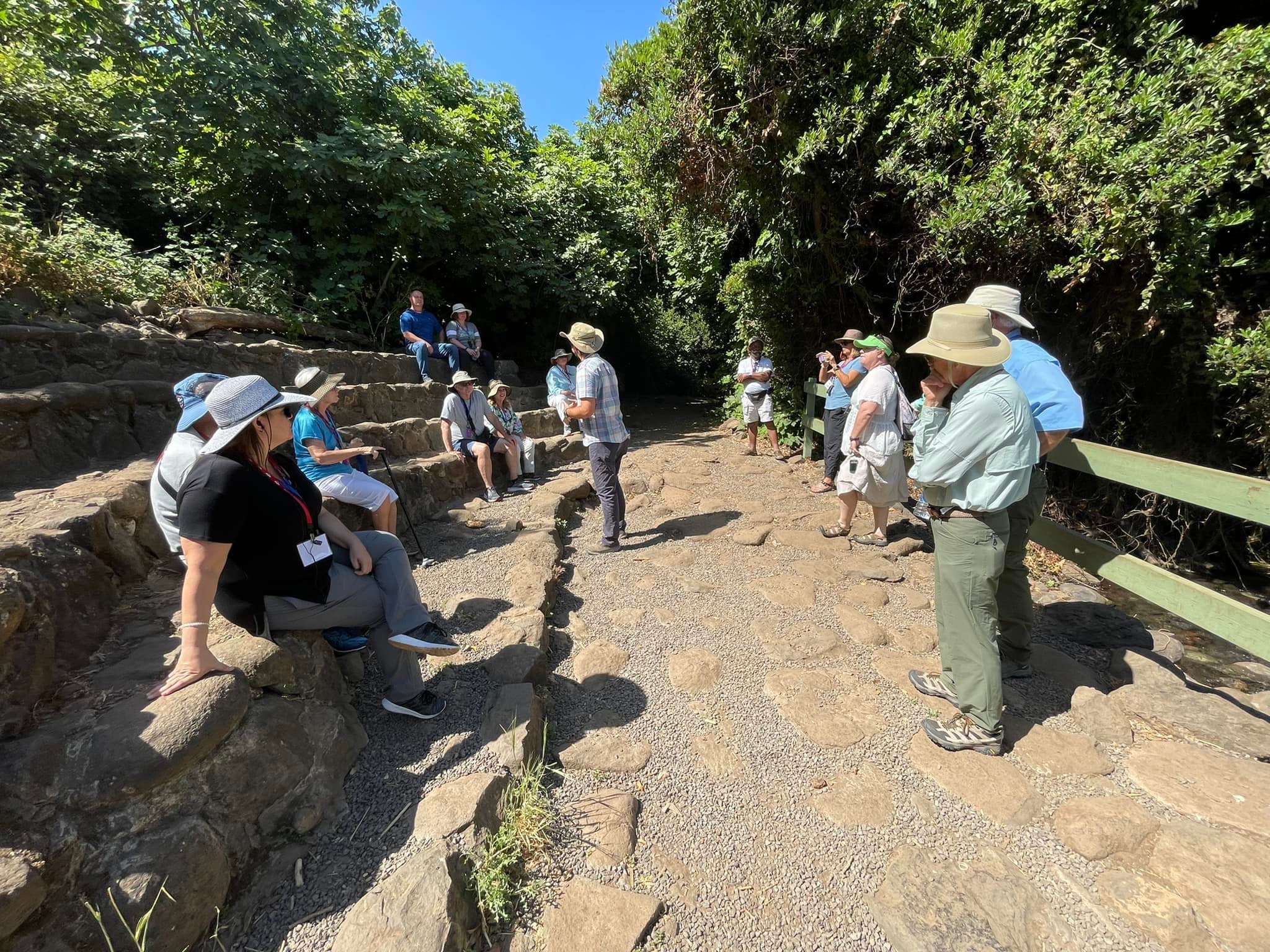
Our guide Erez explains everything.
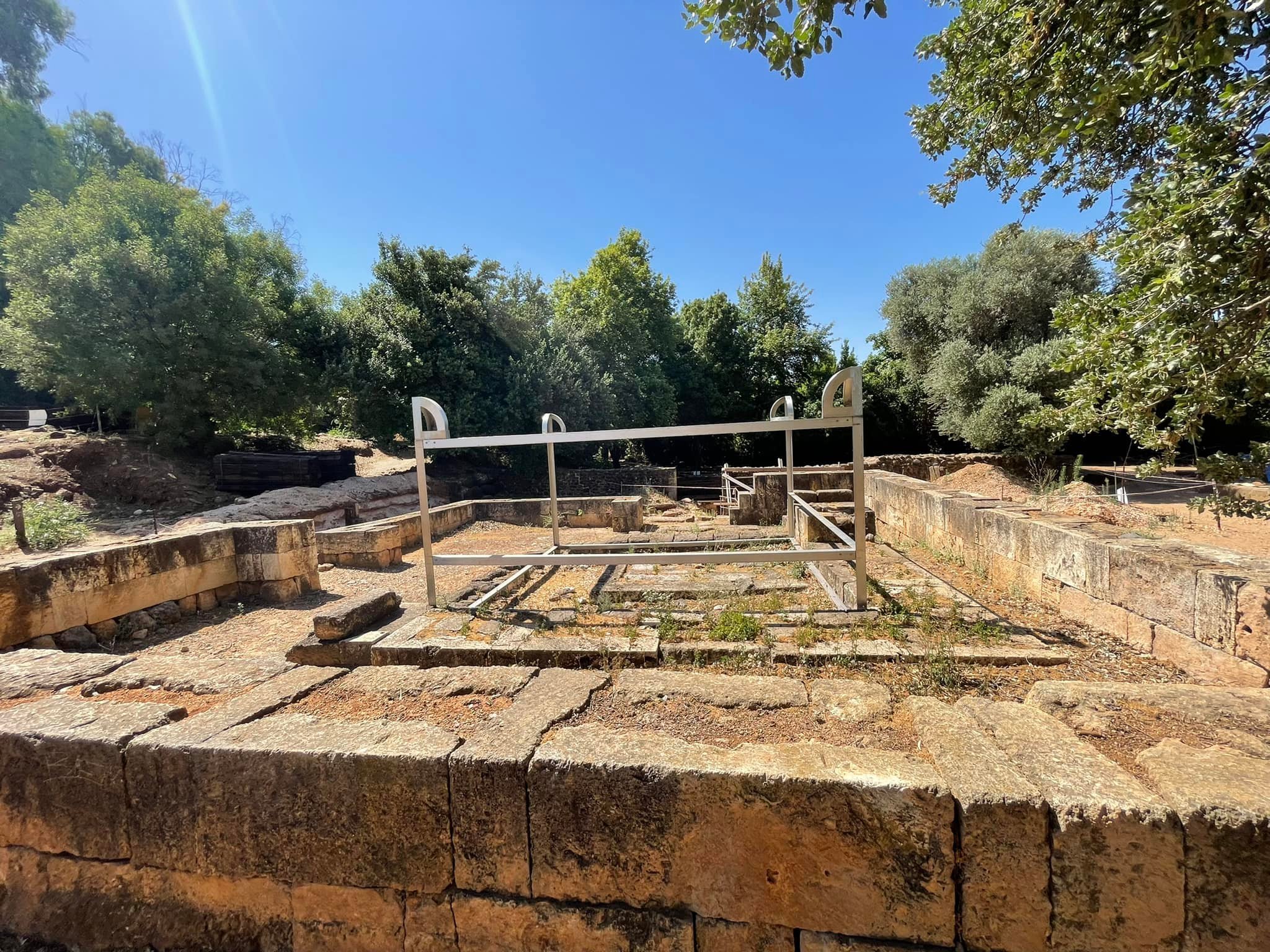
This is a temple built by Solomon’s rebel son Jereboam as a rival to the Temple in Jerusalem. The 10 northern tribes split and included Baal and other pagan gods in their worship.
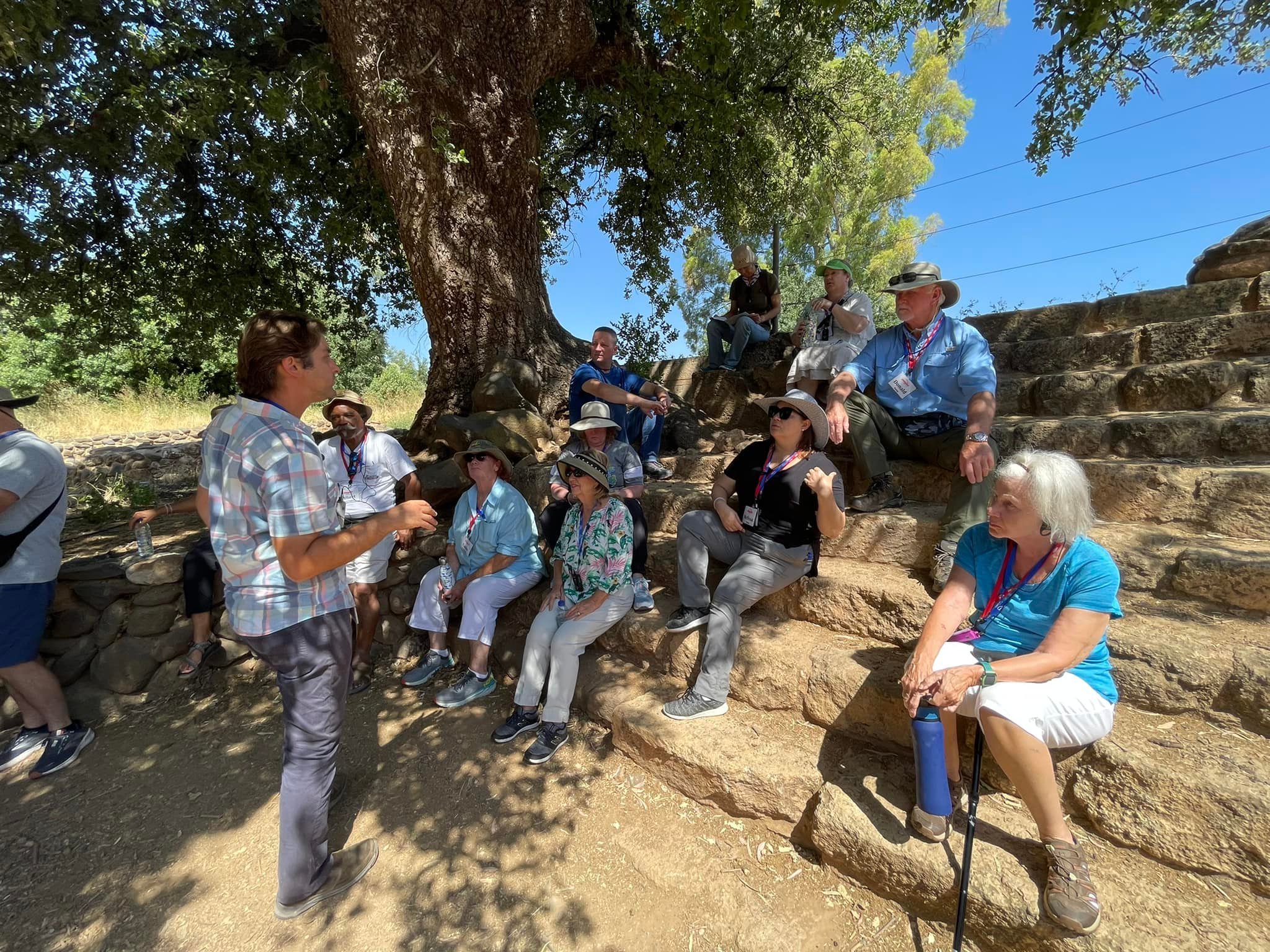
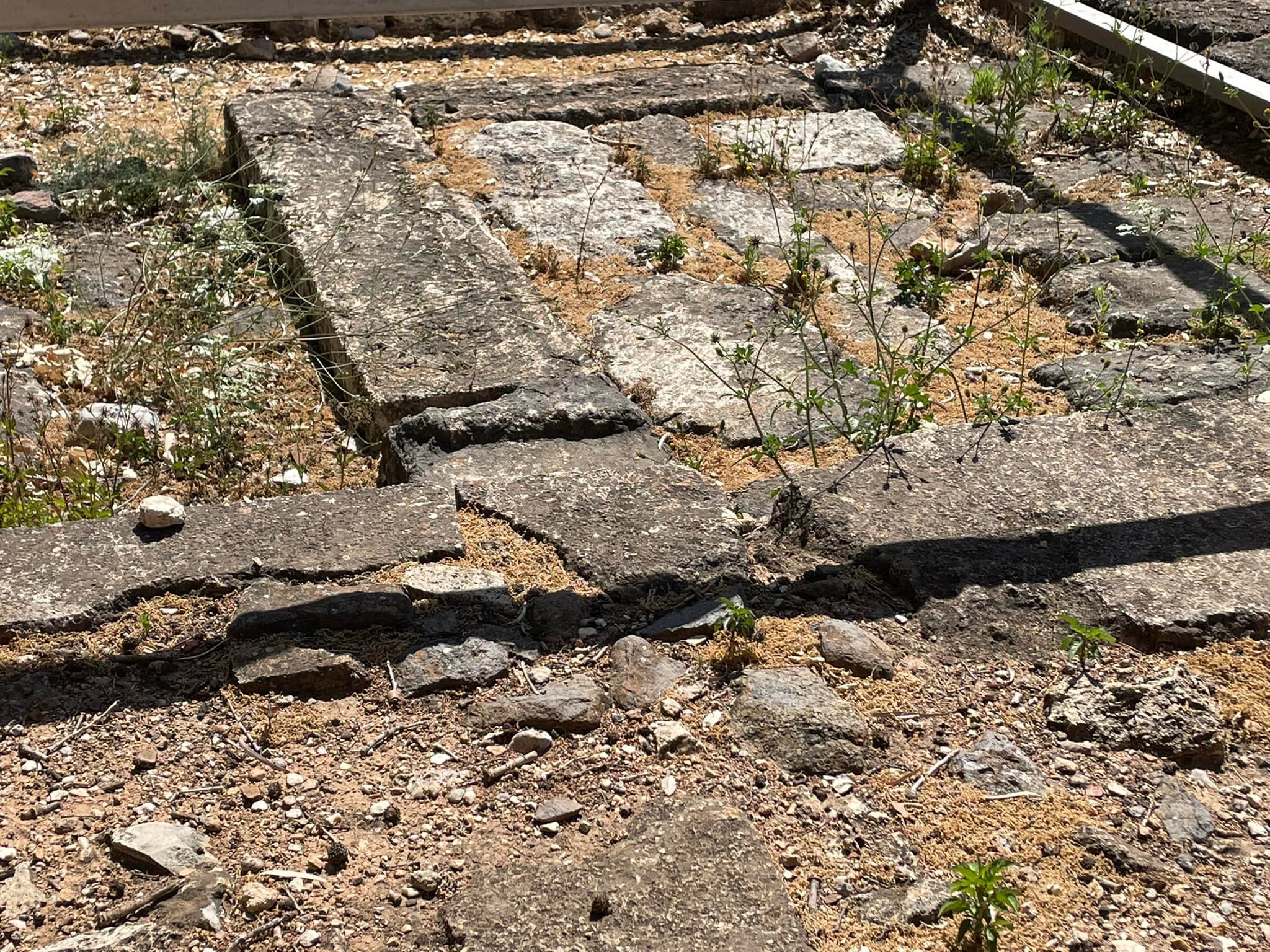
Close up of the temple altar.
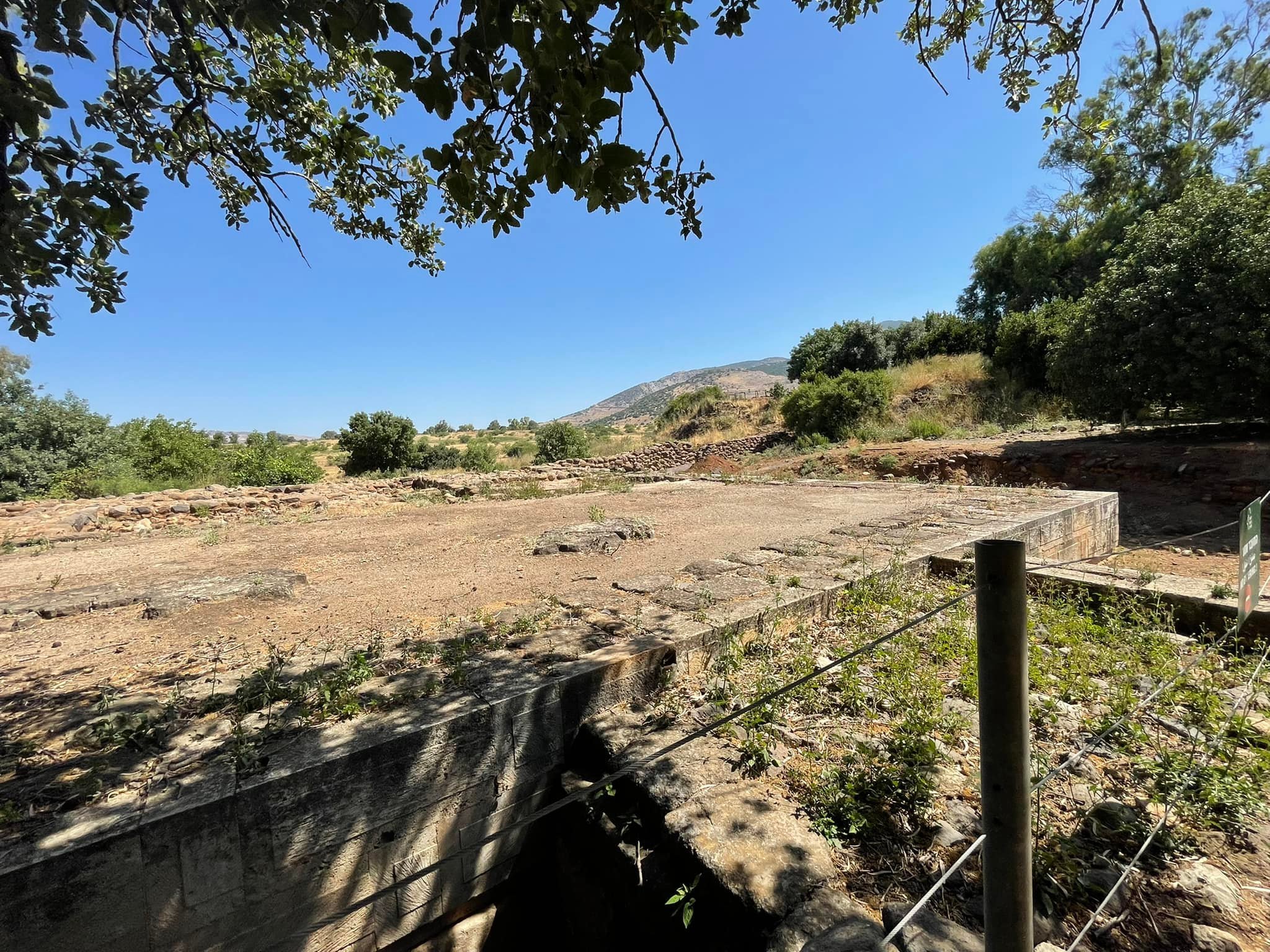
Just above Jereboam’s temple is one built centuries later by the Macedonians.
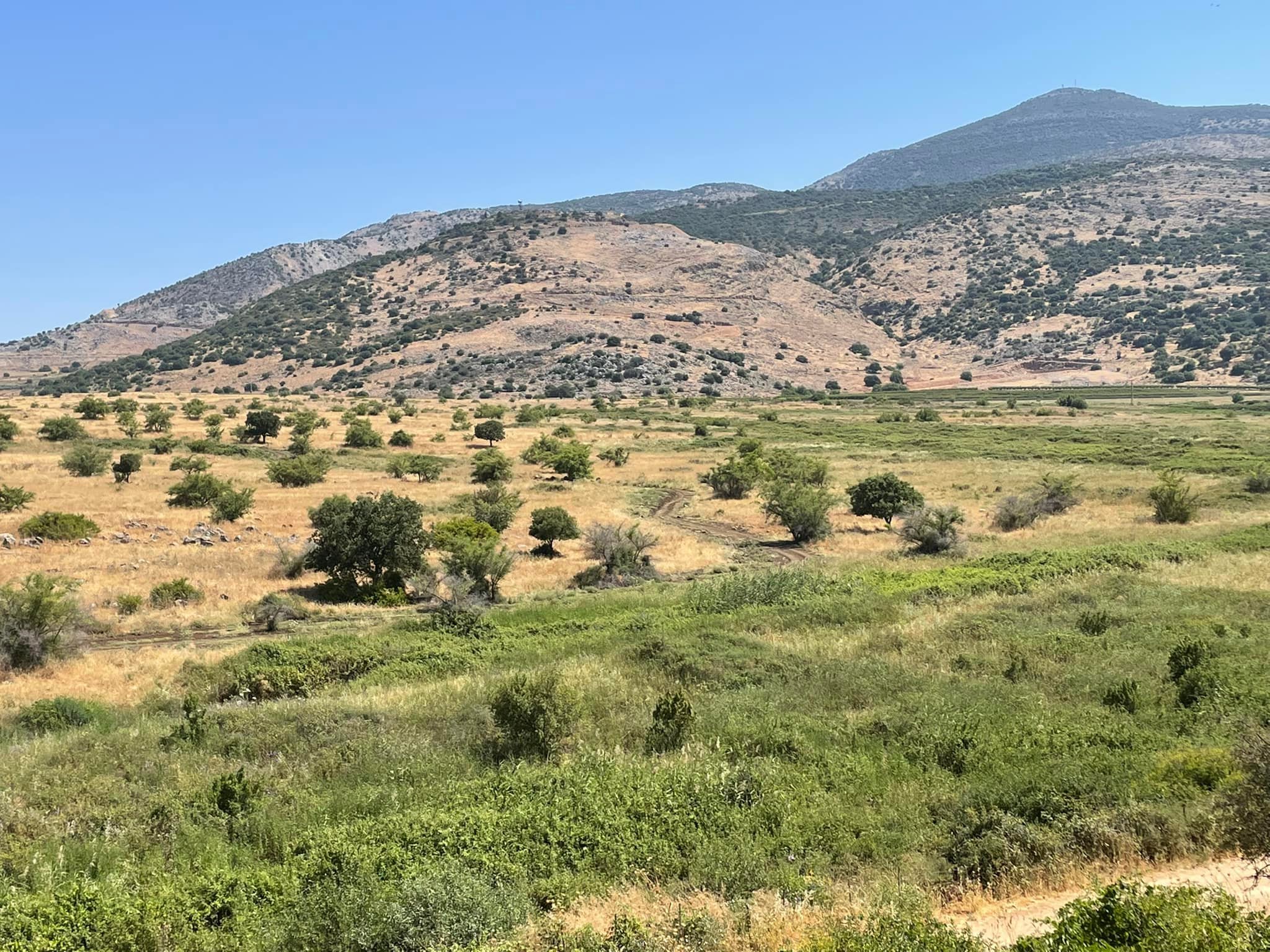
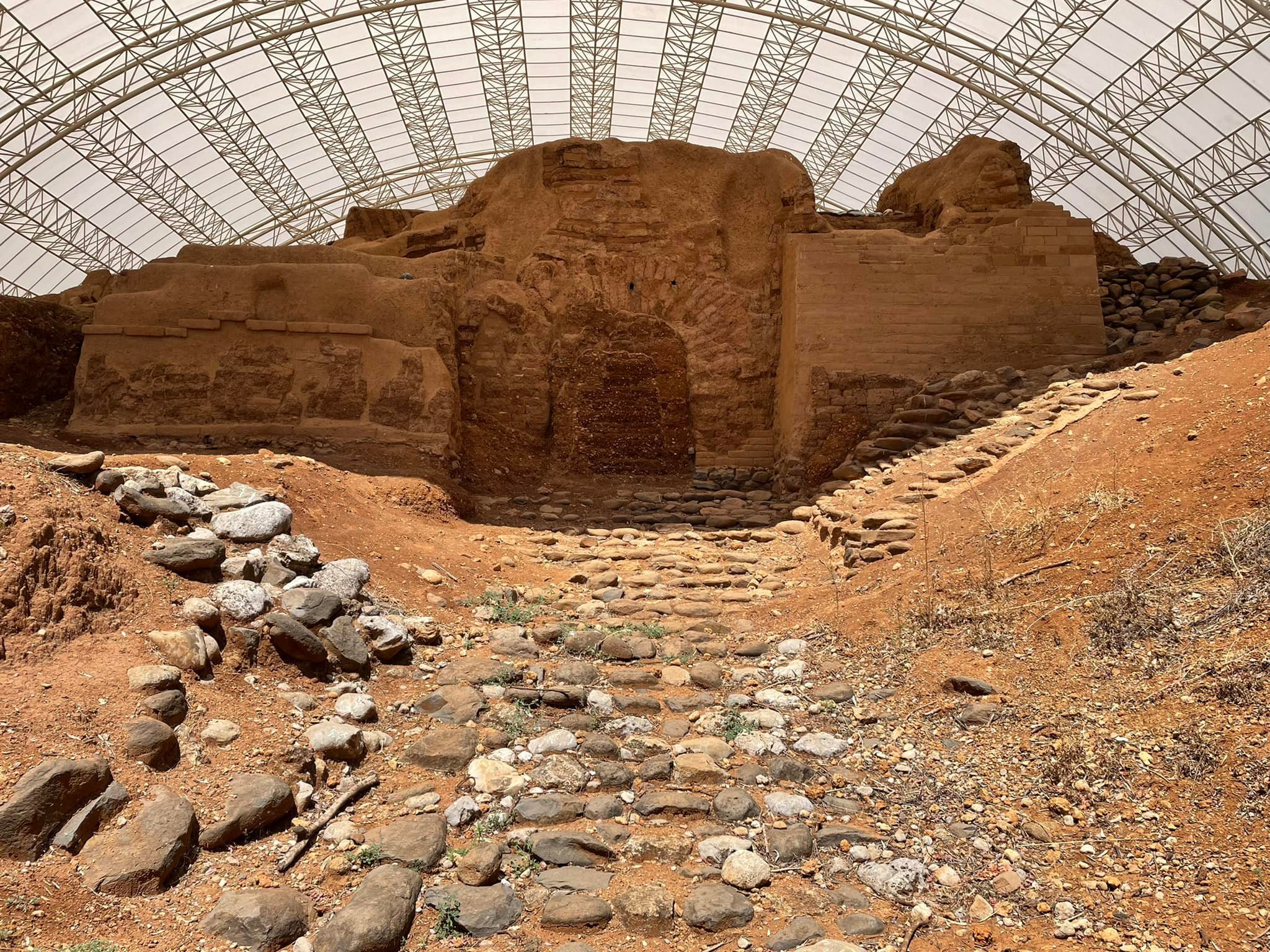
This gate, now filled in, was built by Egyptians and is over 3700 years old. Genesis 14:13-16 relates Abraham going from Dan to “Hobah north of Damascus.” He had to go through this gate.
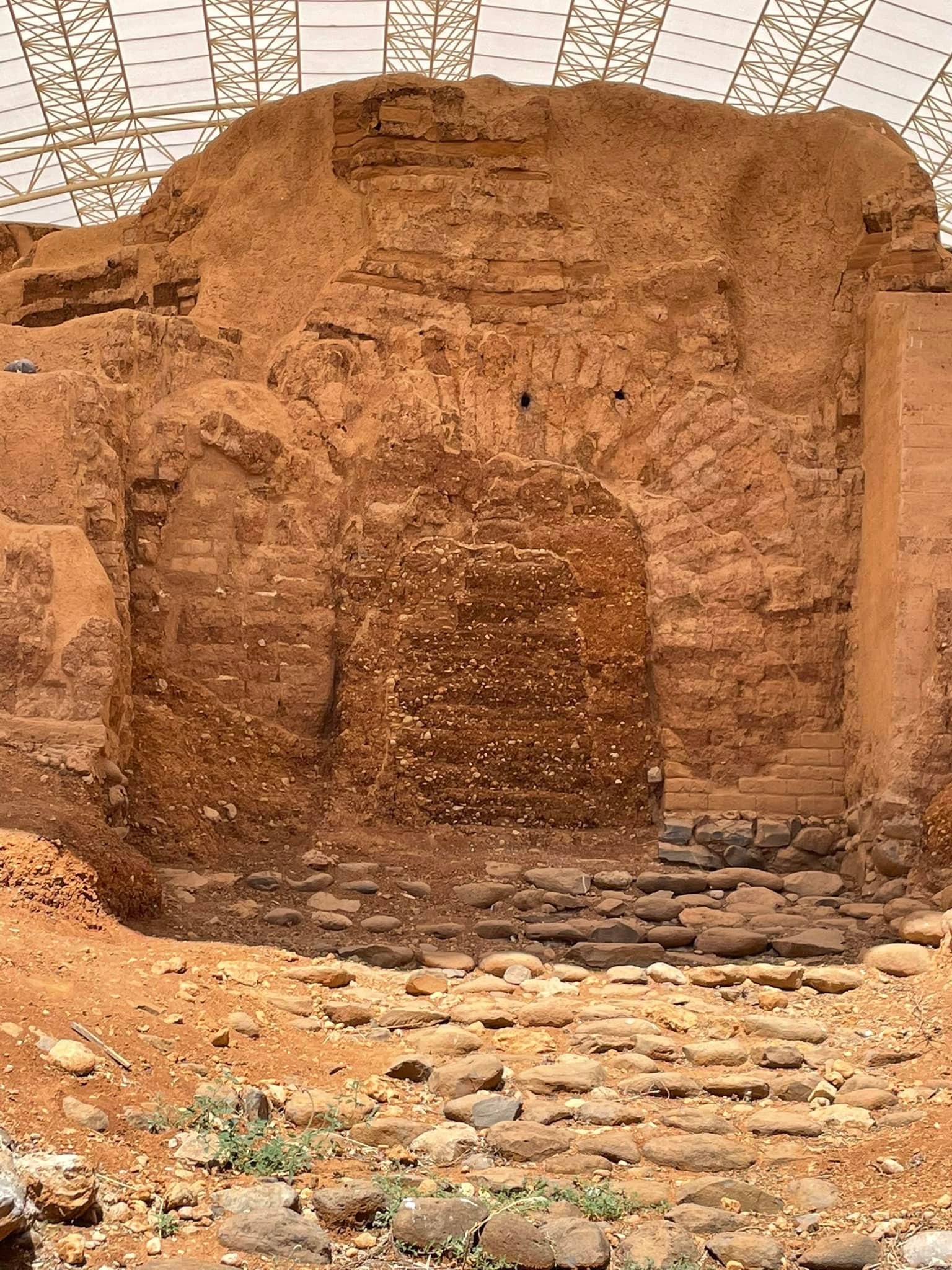
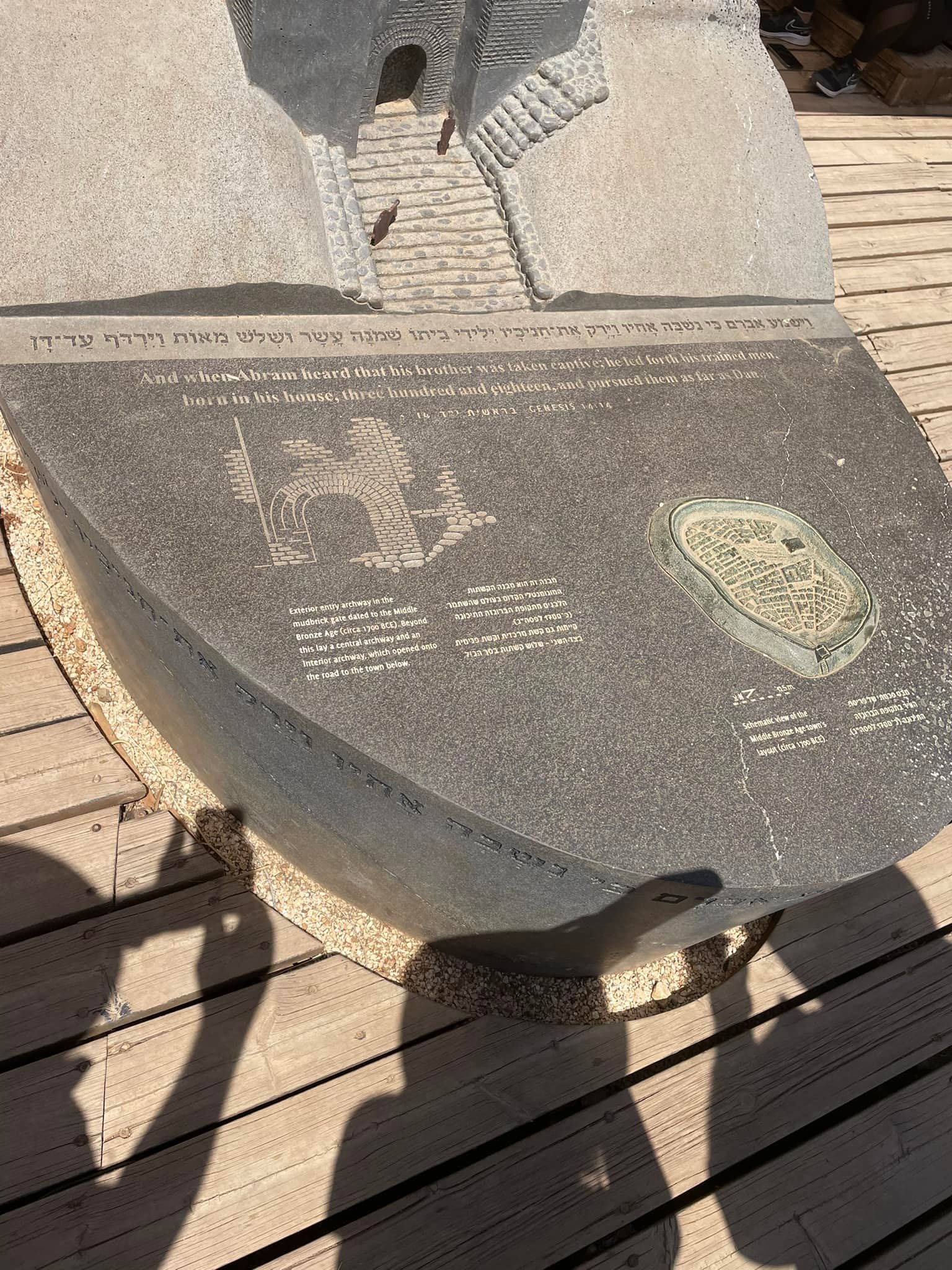
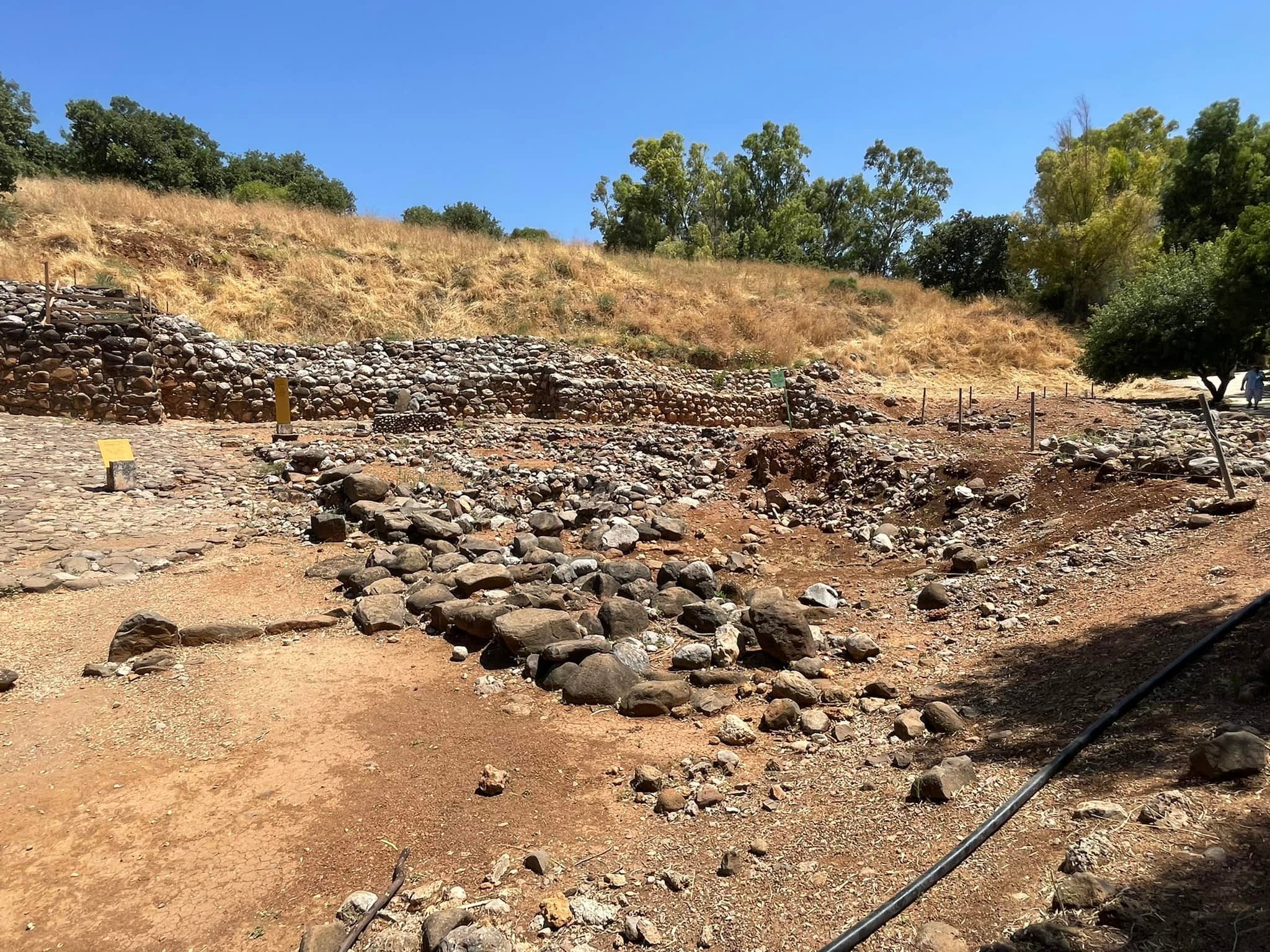
The courtyard in front of Jeroboam’s gate. Note the altar for pagan gods center left.
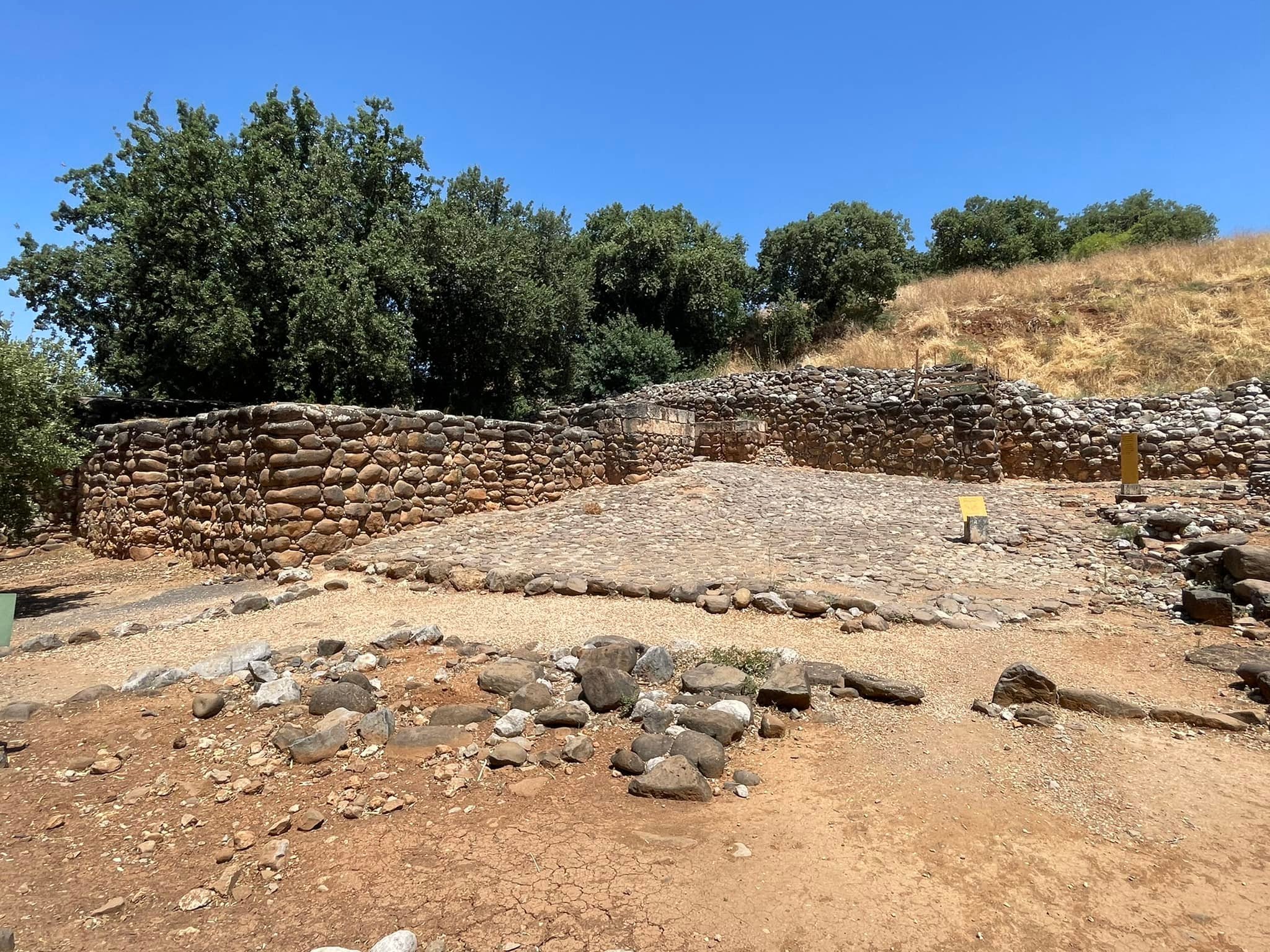
These are stone foundations remaining. Imagine 80’ of mud brick walls on top of them.
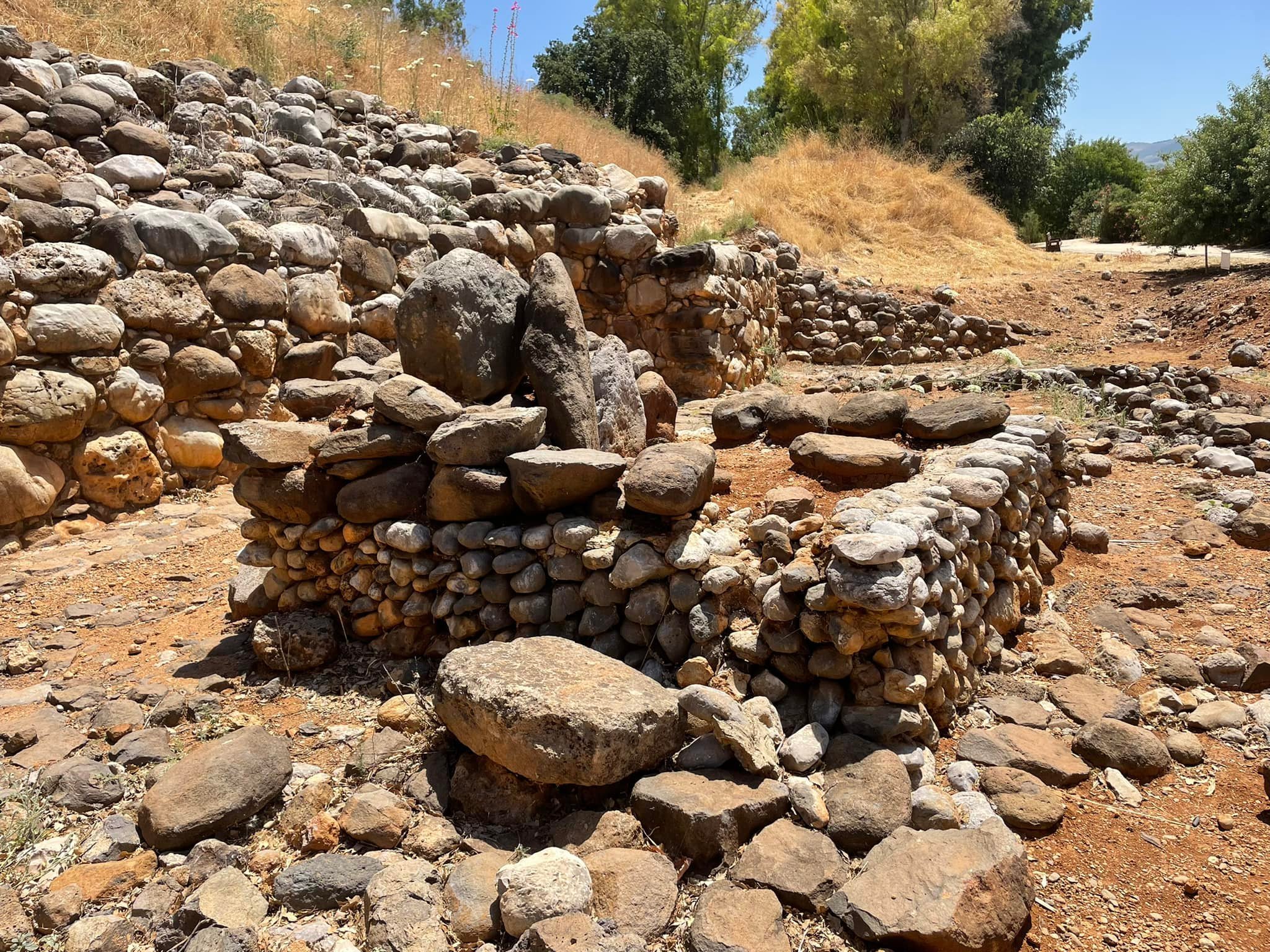
The pagan altar noted a couple of pictures ago.
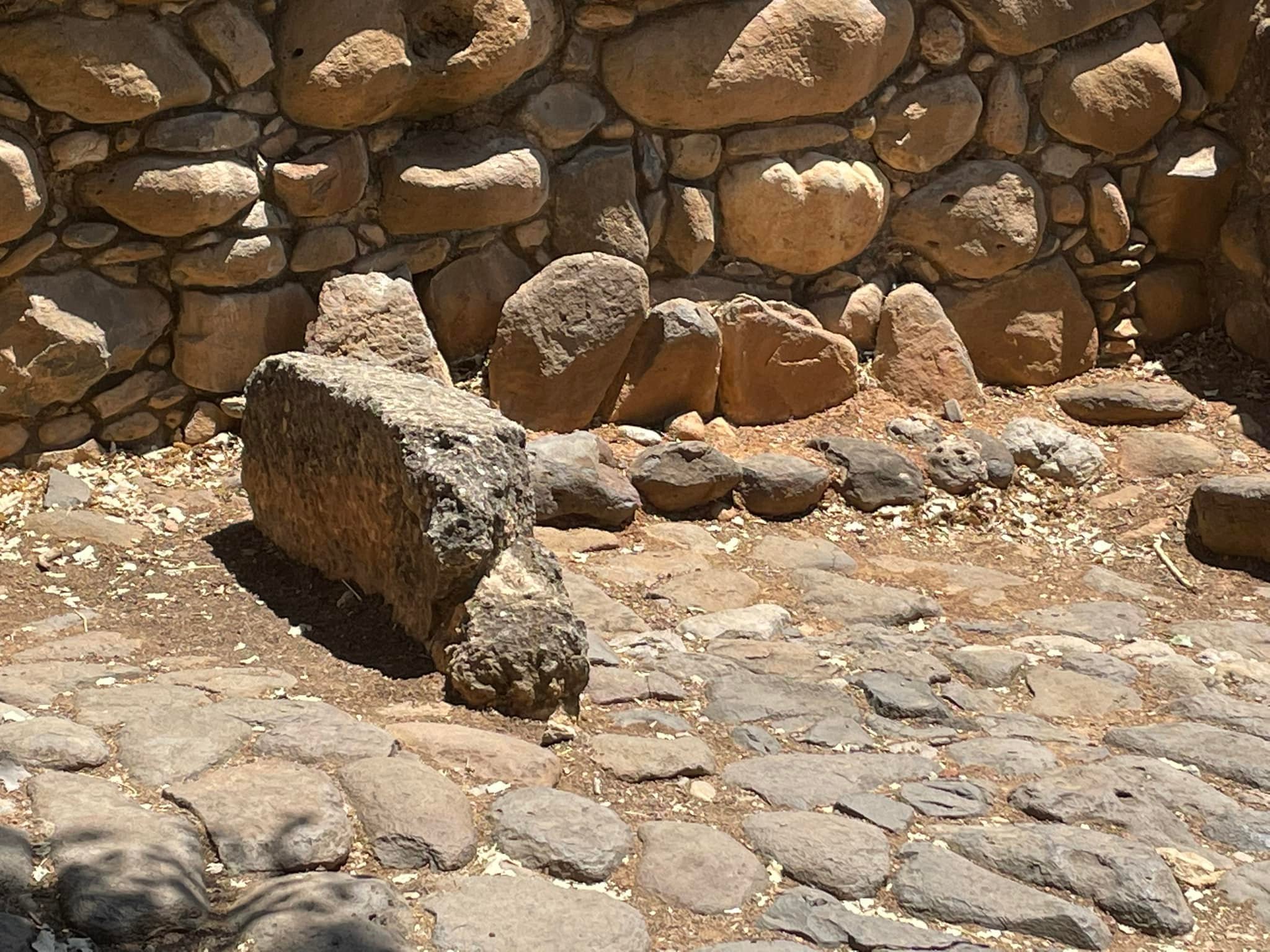
5 standing stones for 5 gods.
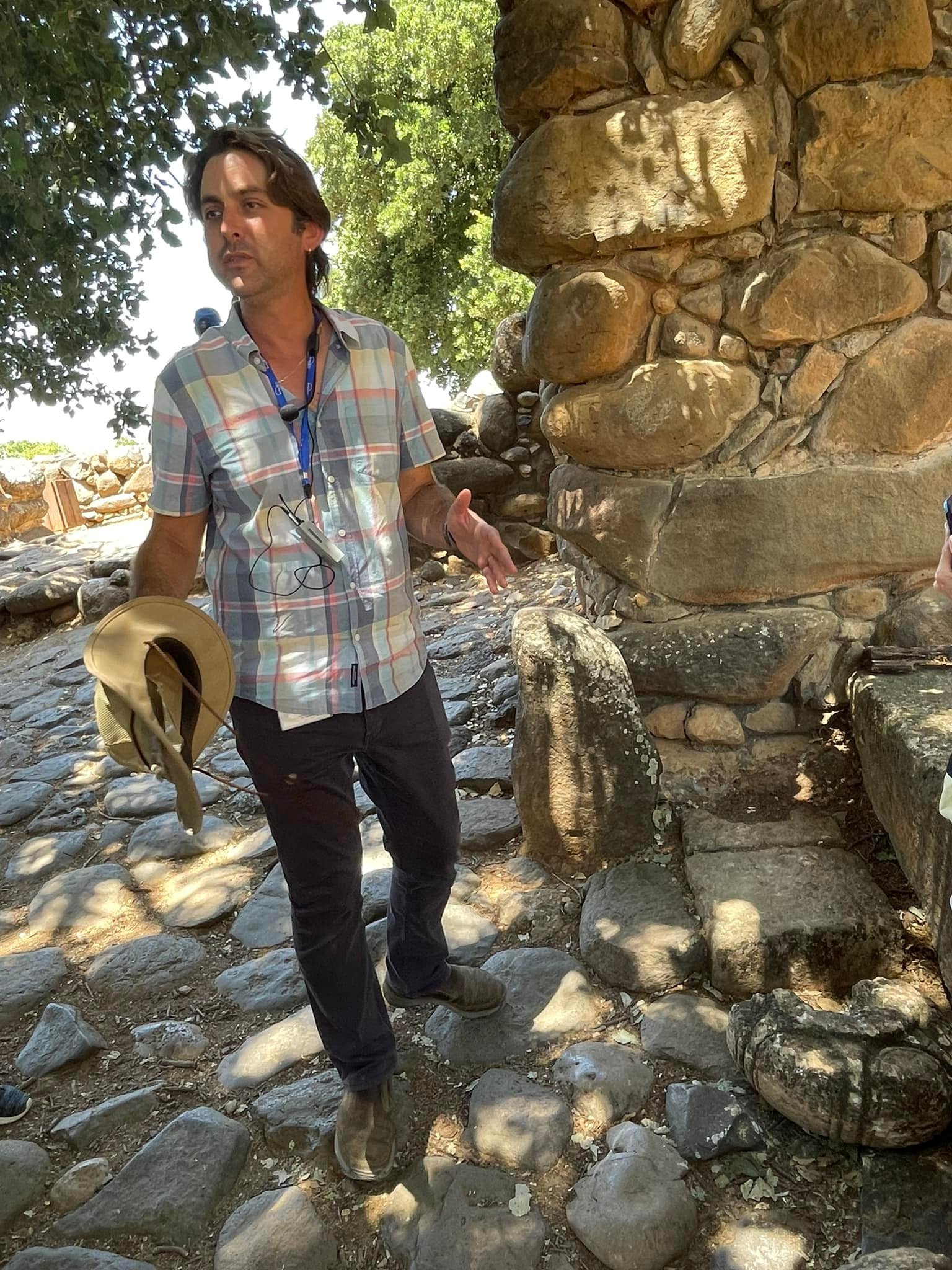
Another standing stone by the gate.
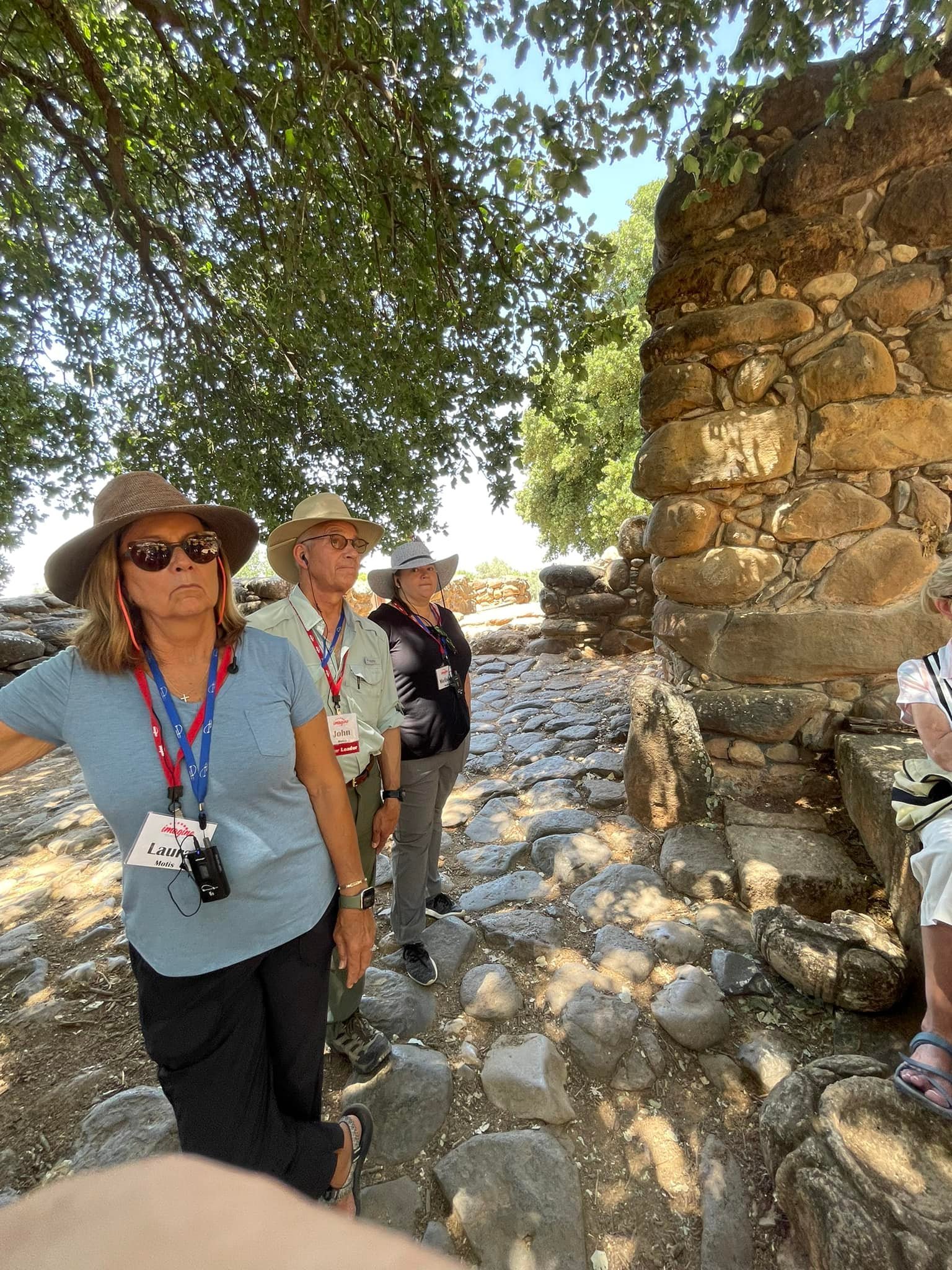
The gate, with serious gatekeepers!
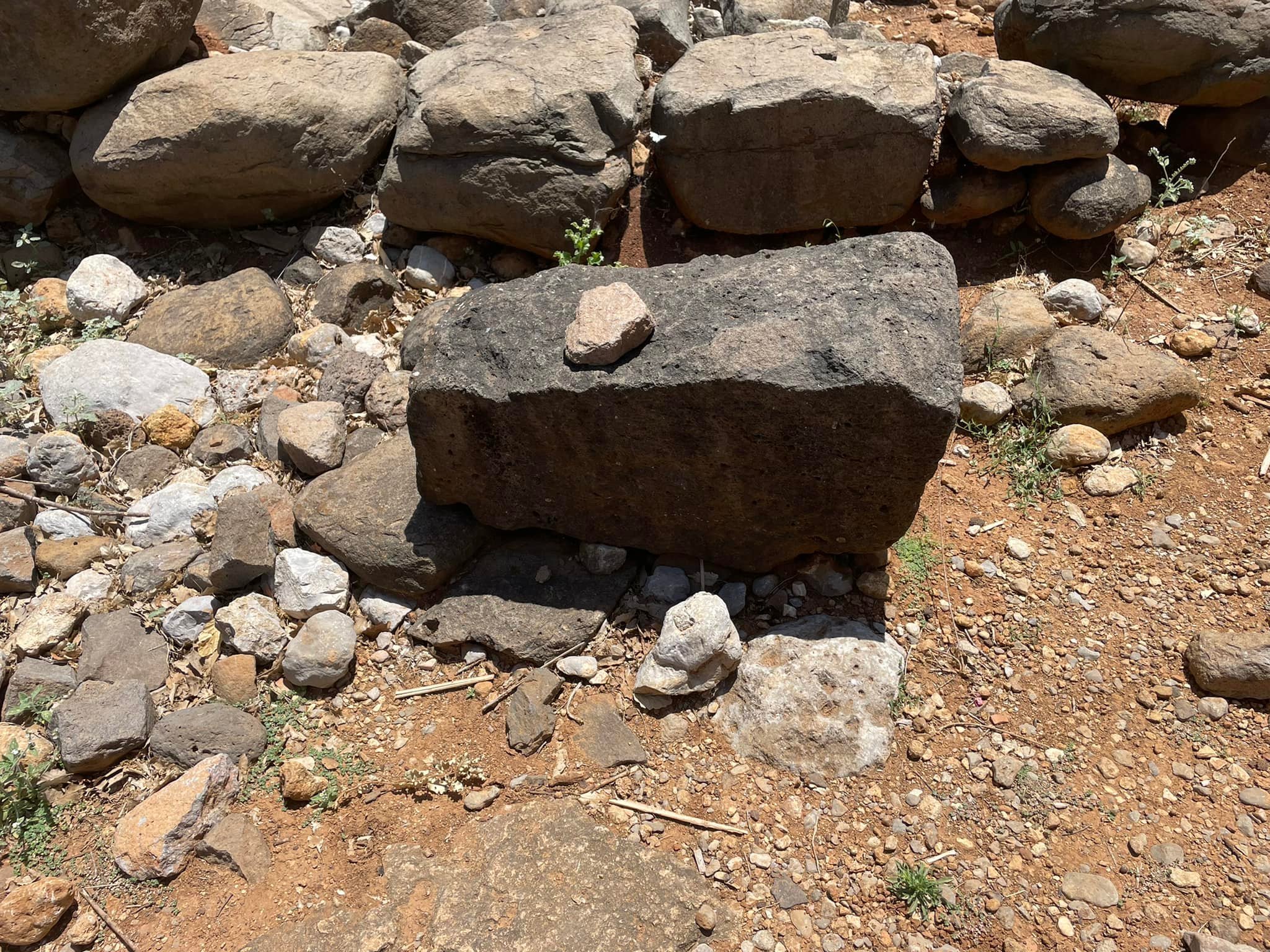
Under this basalt rock was found the only archaeological reference to King David.
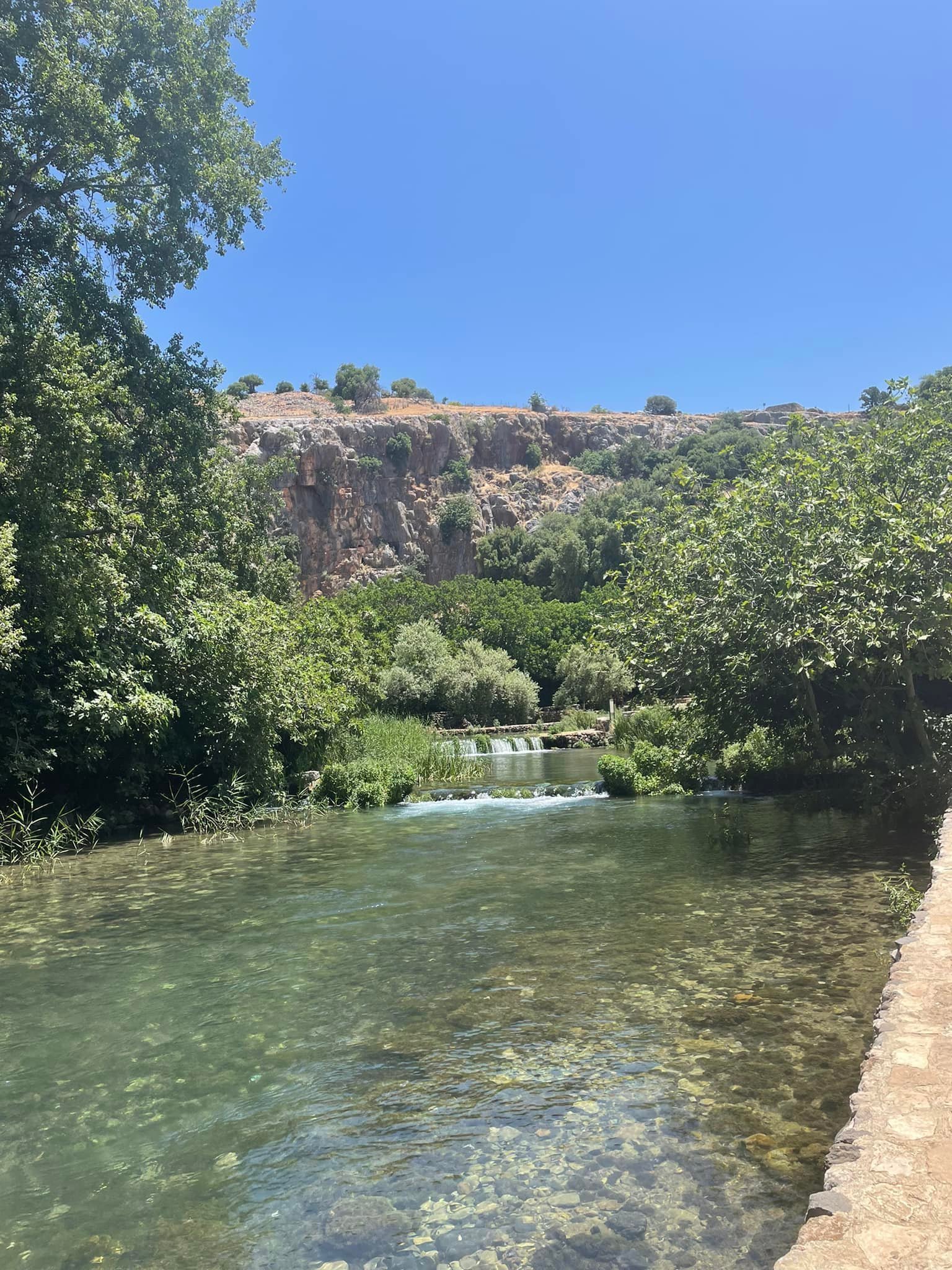
Caesarea Philippi was built around the springs of Banias, which used to be Panias named for the Greek god of the wild, shepherds and flocks. This stream is also a main source of the Jordan.
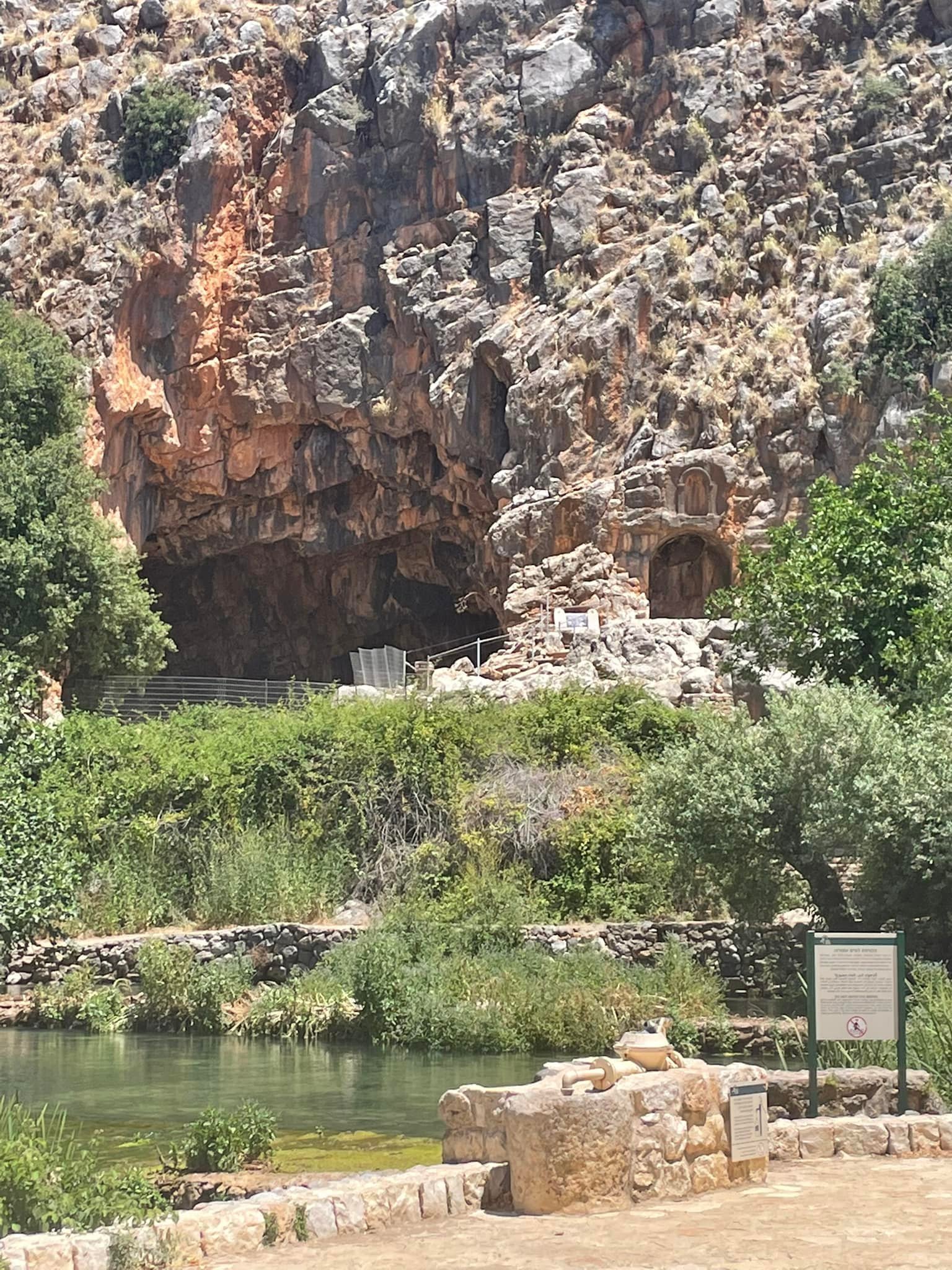
he cave evoked Hades (the gloomy underworld.) The temple door on the right is where tradition holds Peter confessed Jesus as the Messiah (Matthew 16:13-20.) “On this rock” and “the gates of hell”…yes, that rock and that gate. And from this point the Word will flow. Goosebumps? I got some.
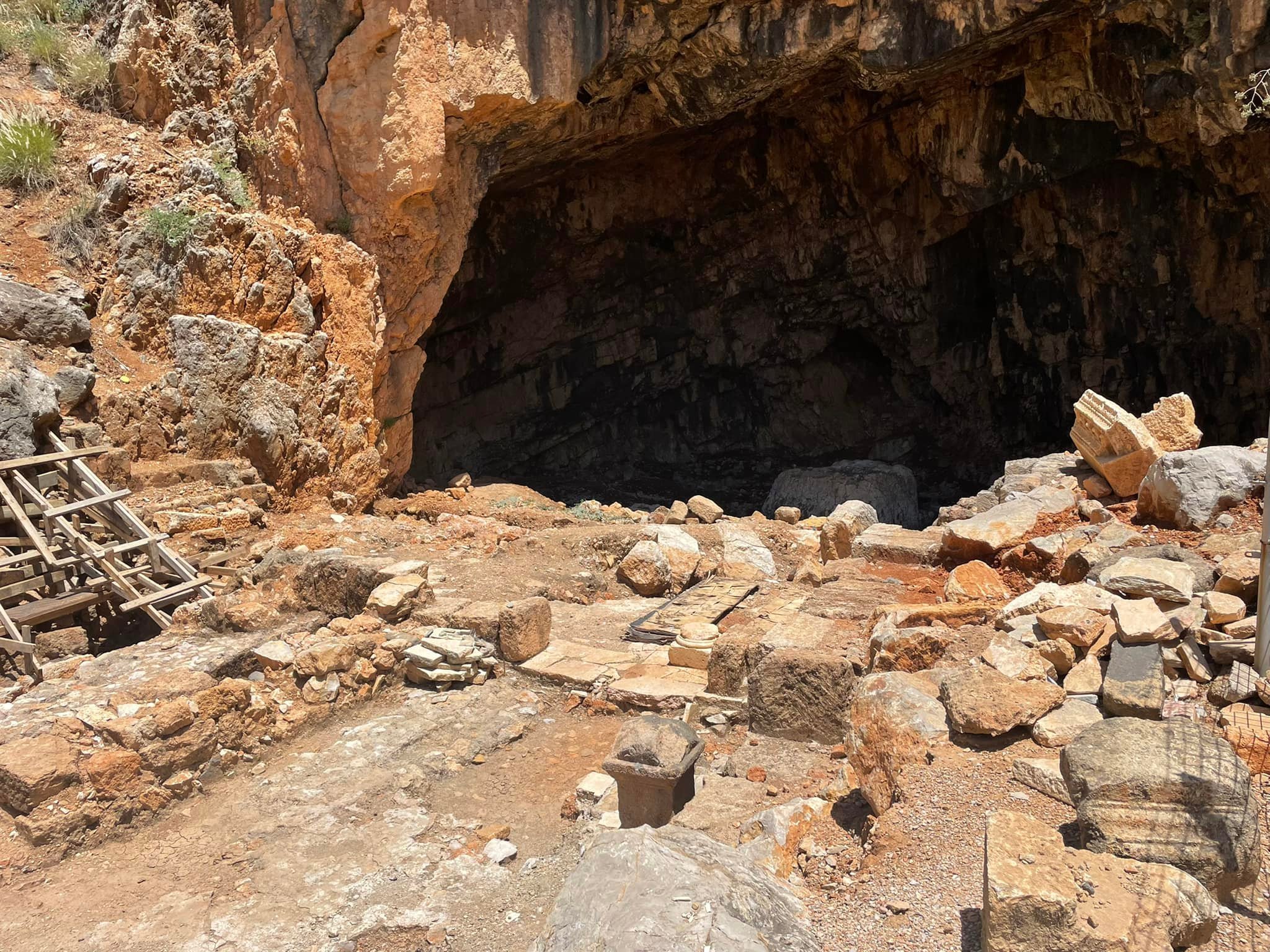
The cave
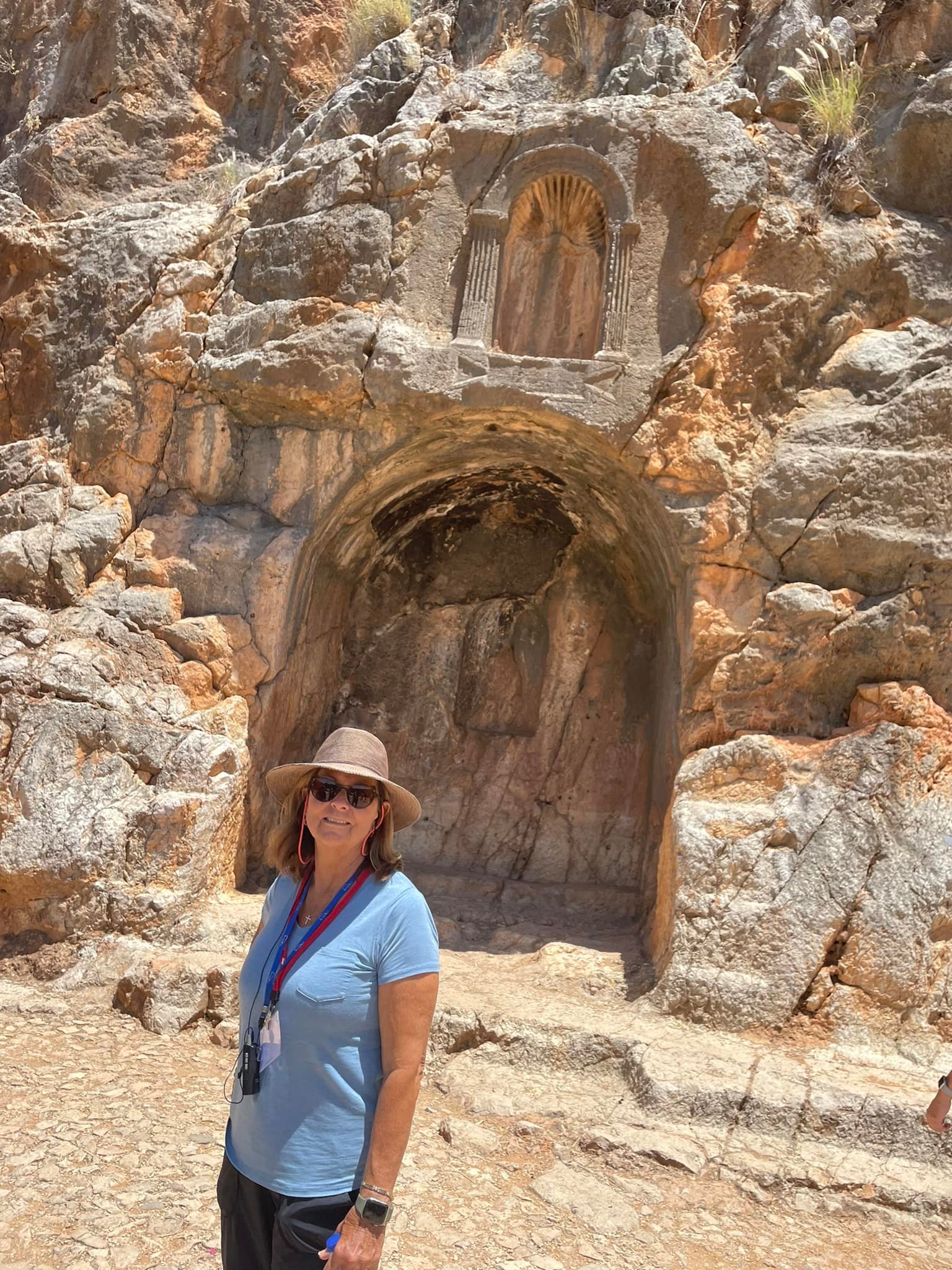
Laura at the door!
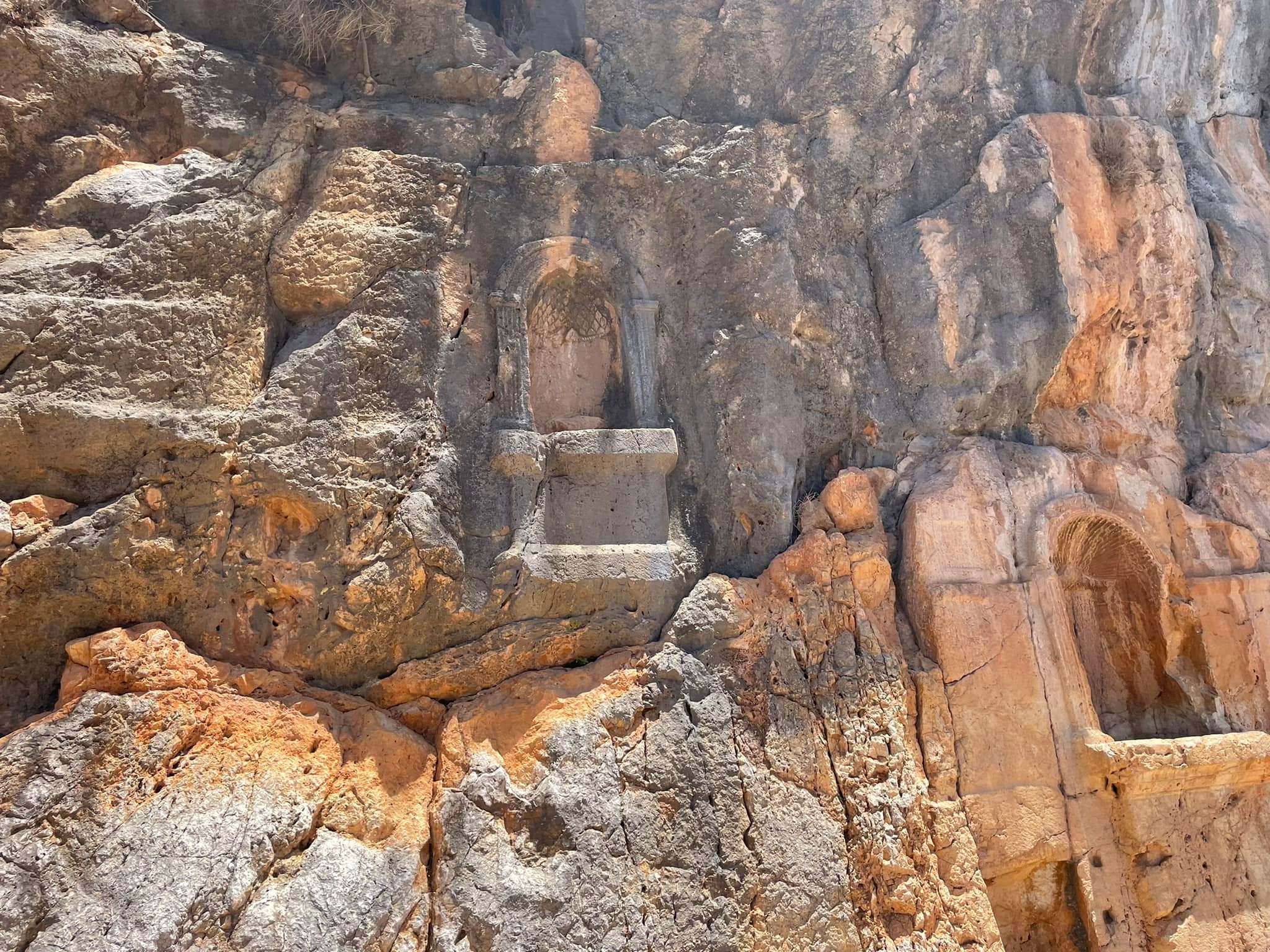
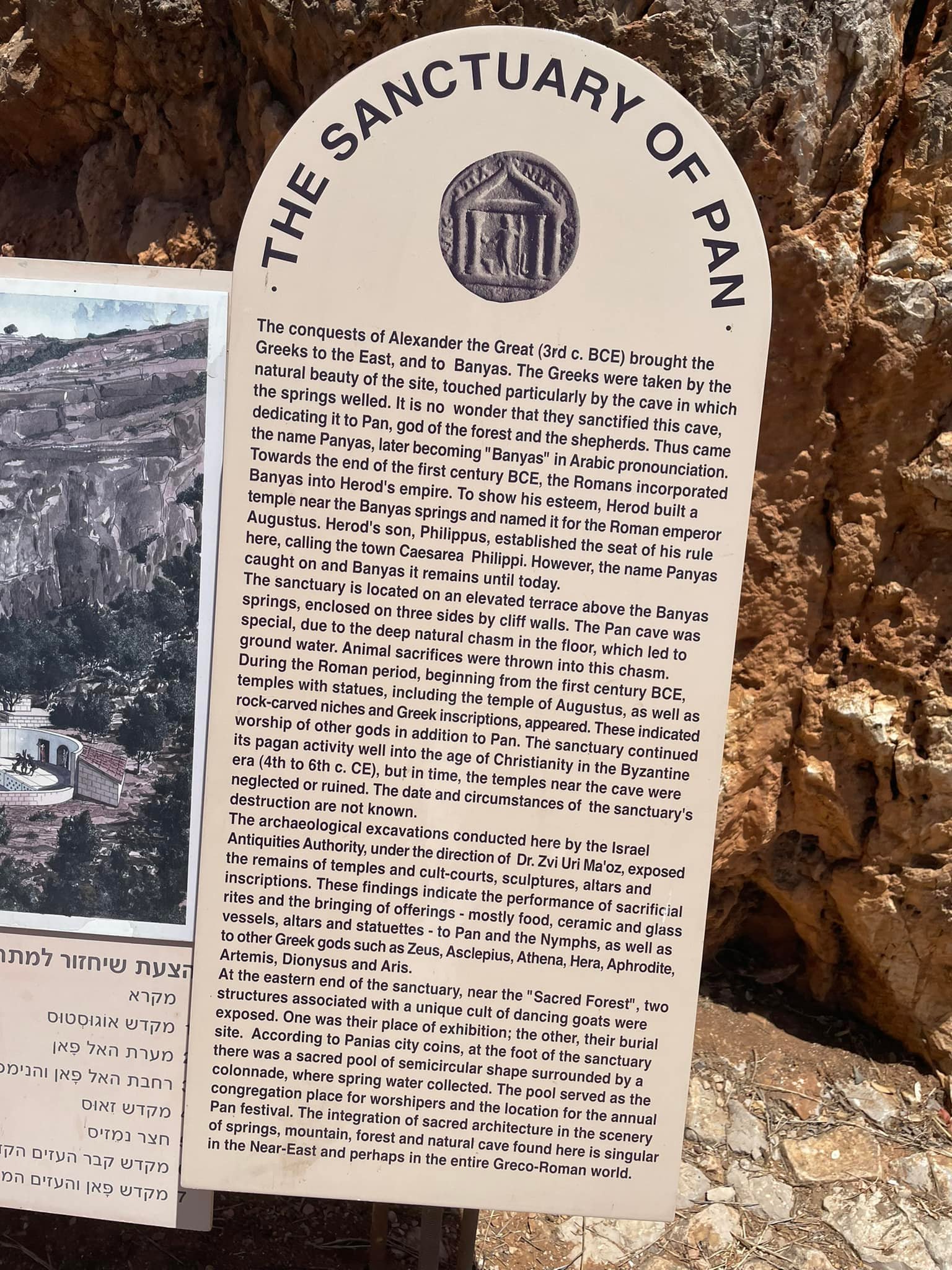
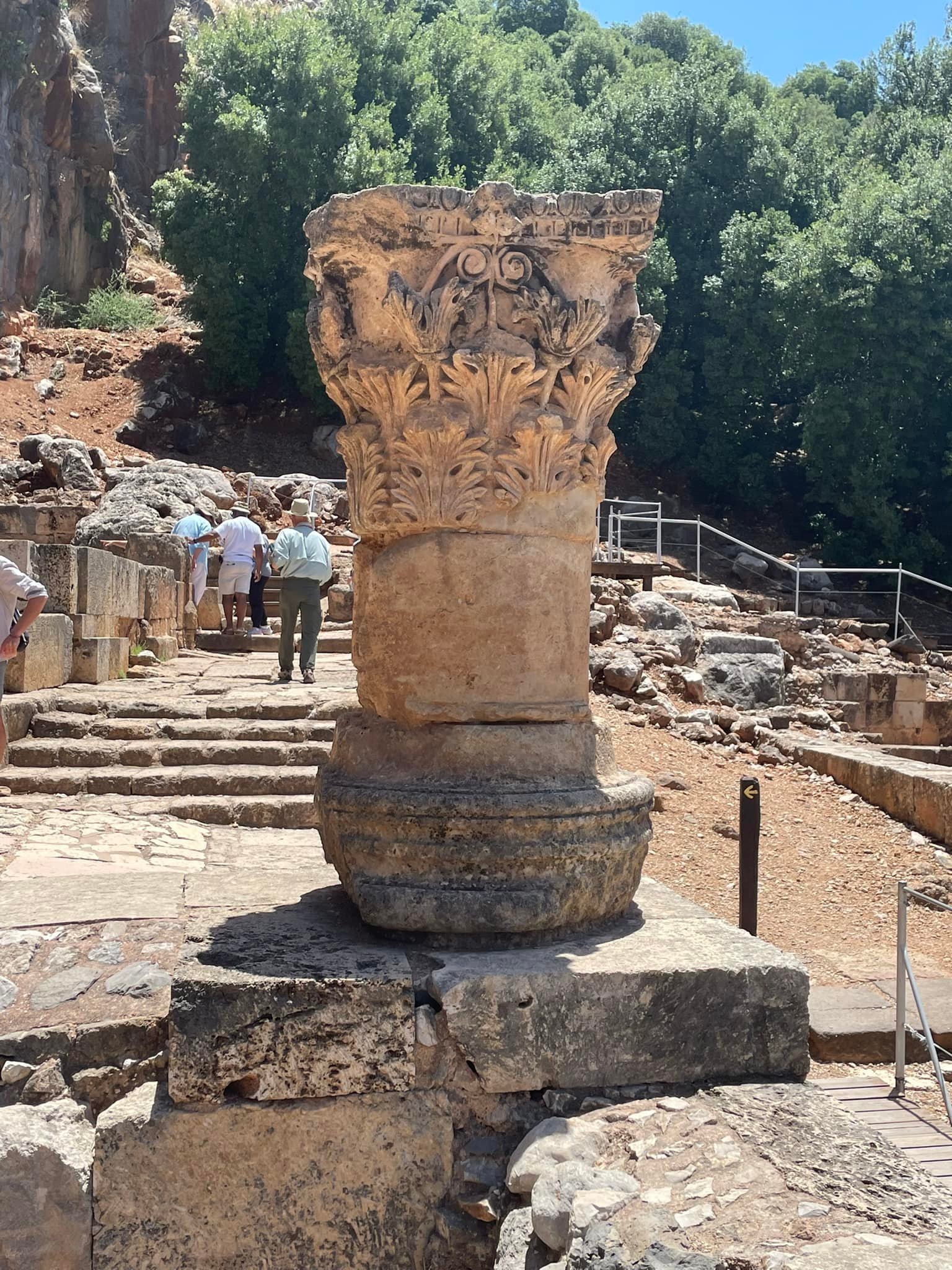
Ancient Greek column.
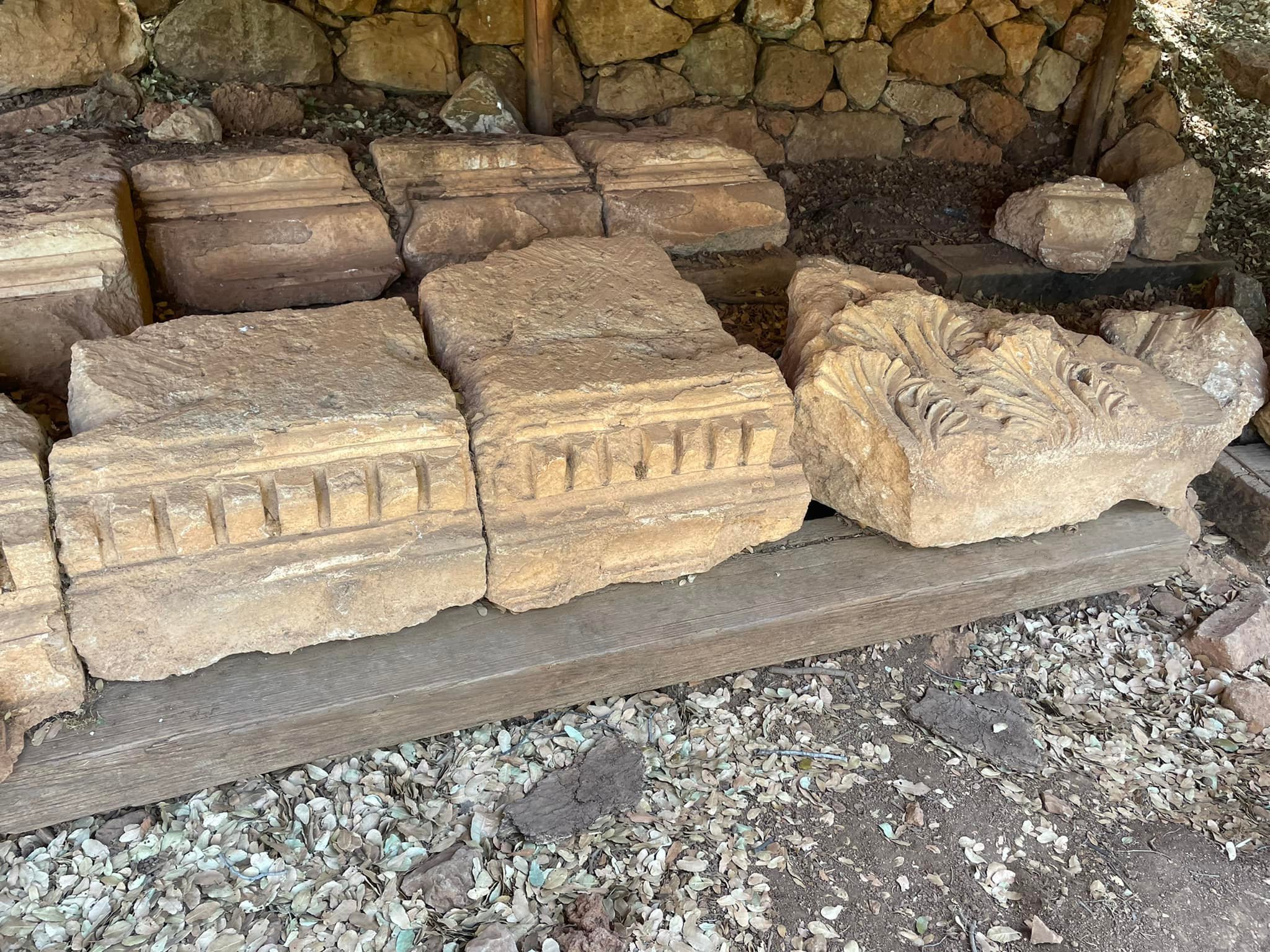
Stucco from the temple.
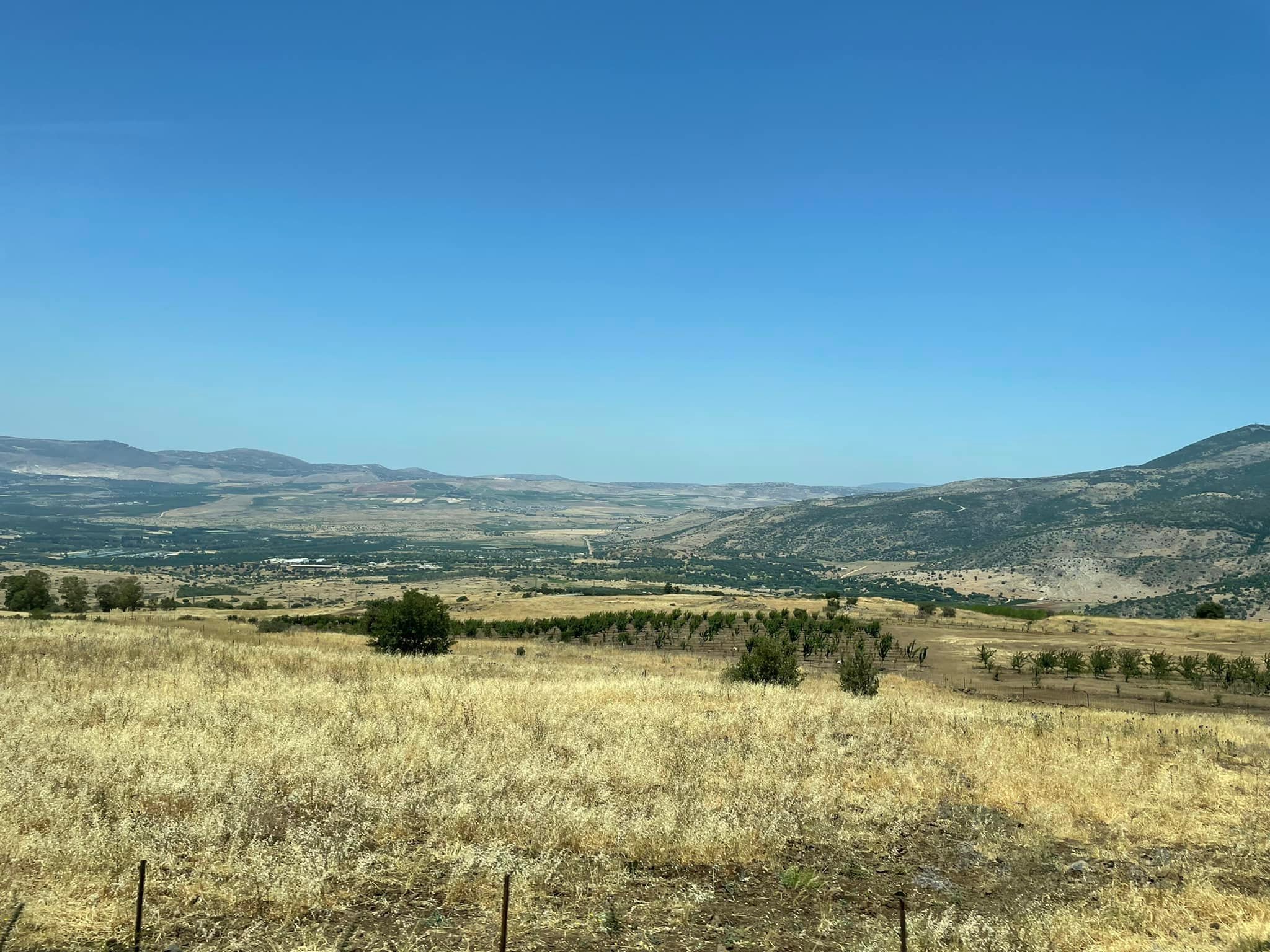
Where the cultivation ends is the border with Syria, monitored by the UN.
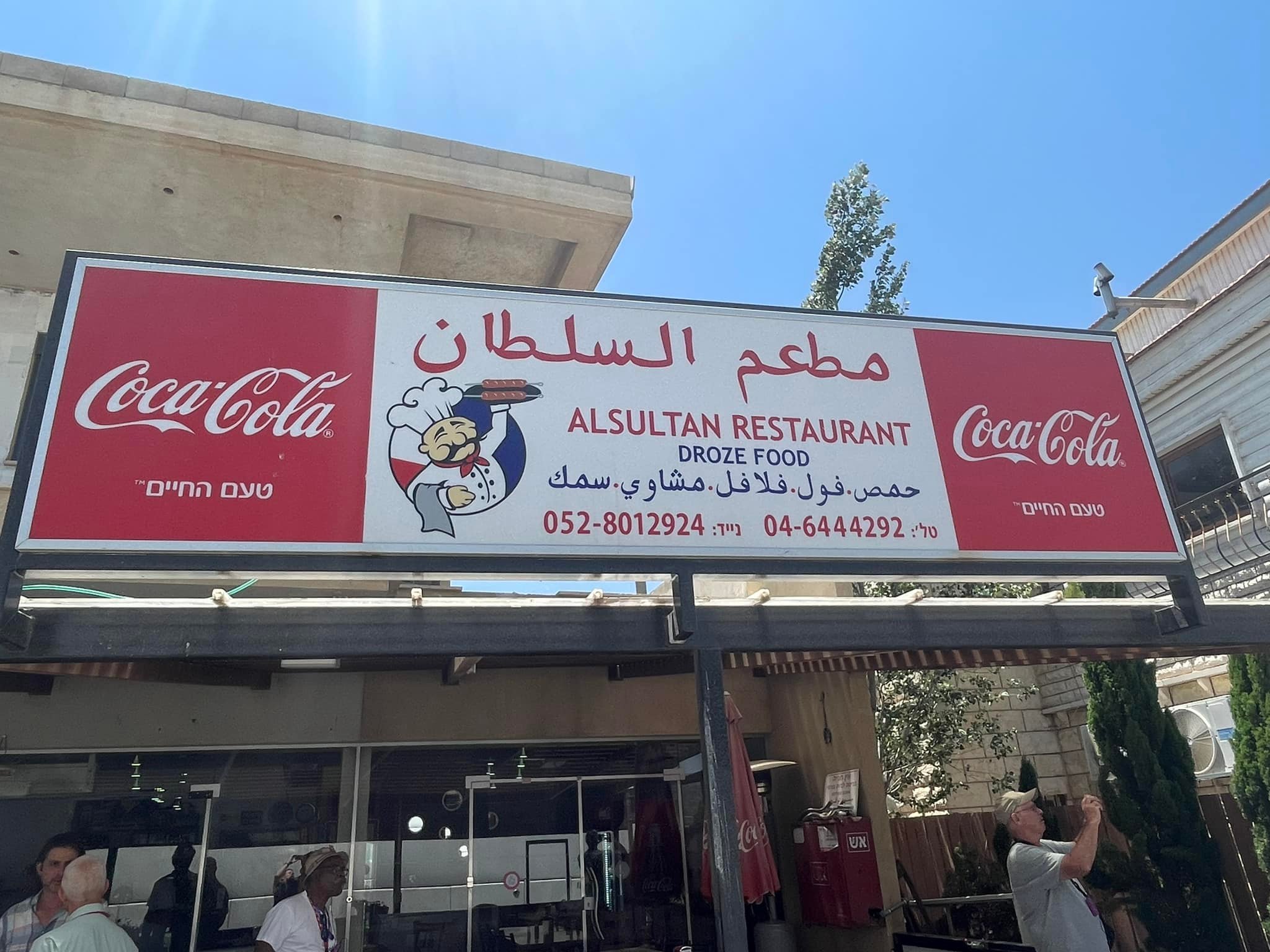
Our Druze lunch spot on the Golan Heights. The Druze have their own religion - neither Muslim or Jewish - and are loyal to their country - be they in Syria or Israel.
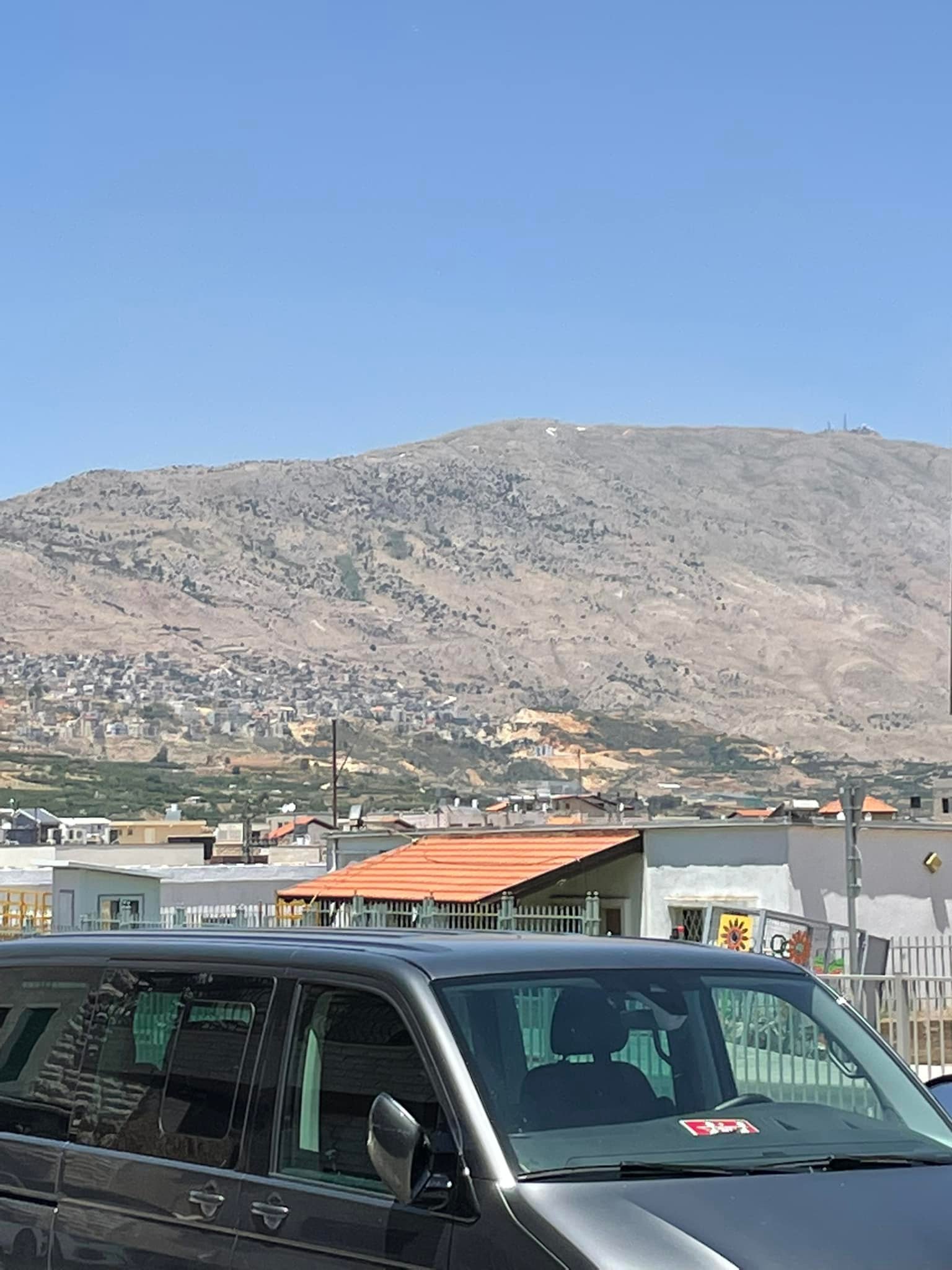
See the snow on Mt. Hermon!
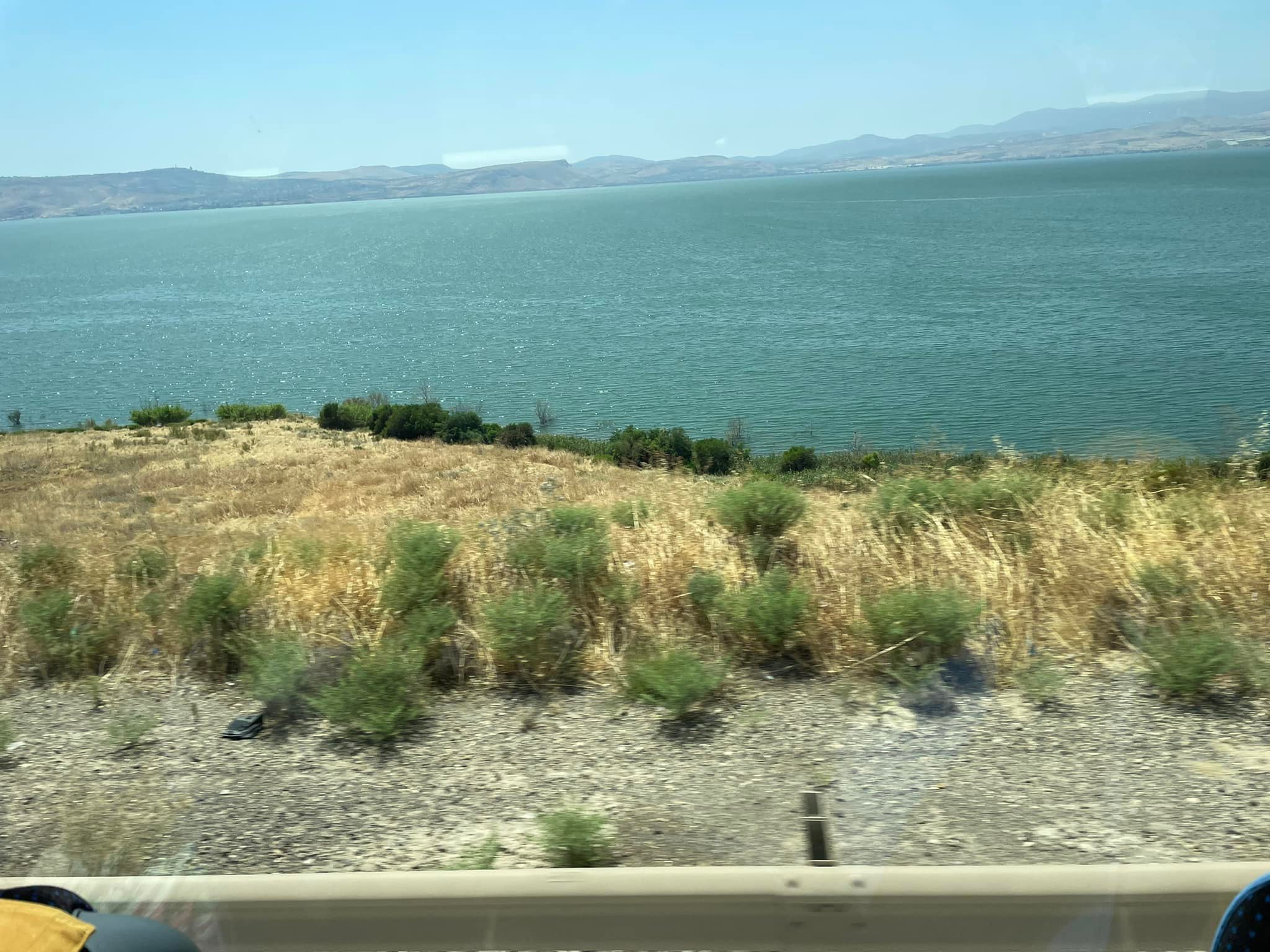
Back to Galilee.
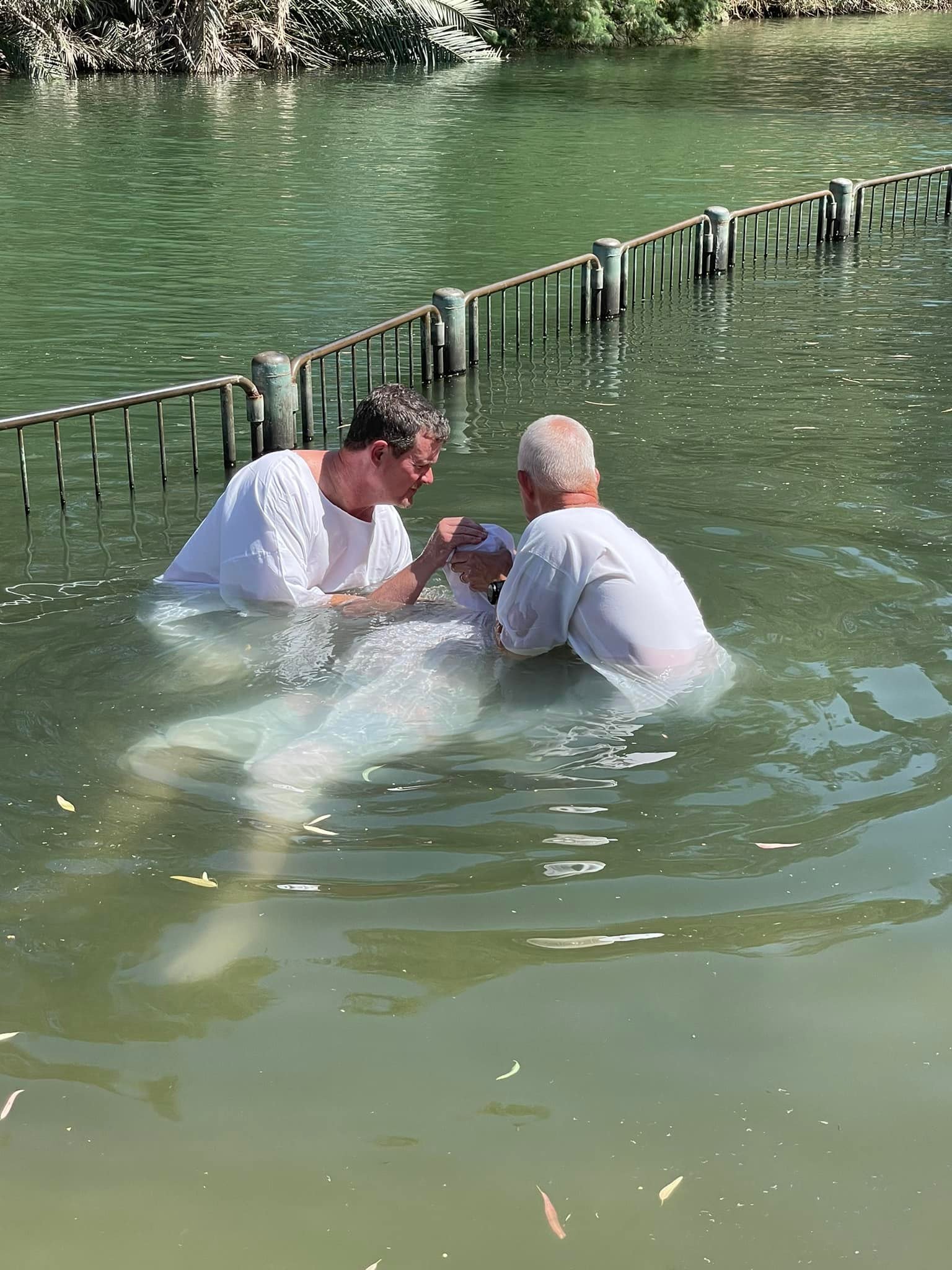
Renewal of baptisms in the Jordan!
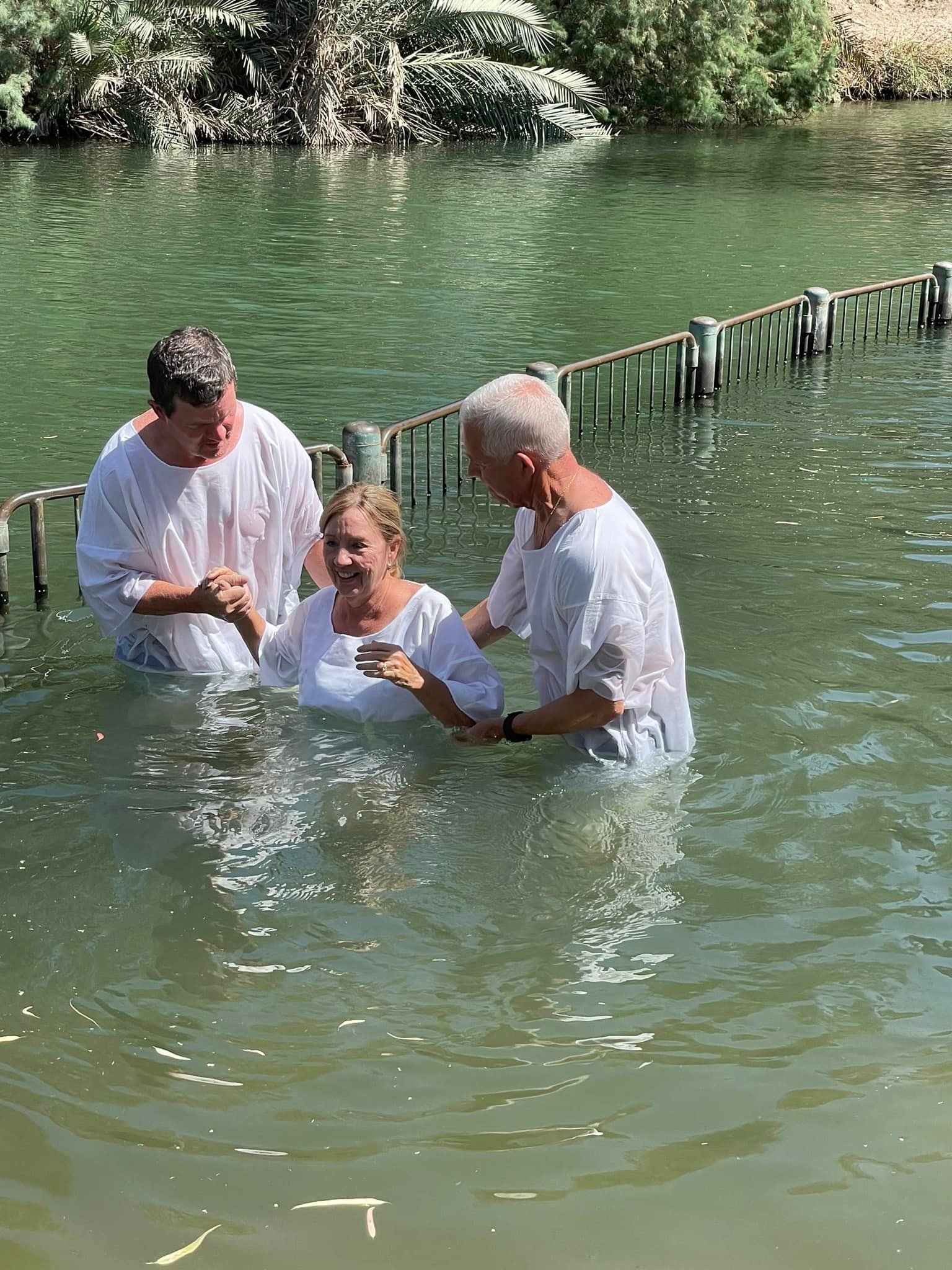
Susan Wiles
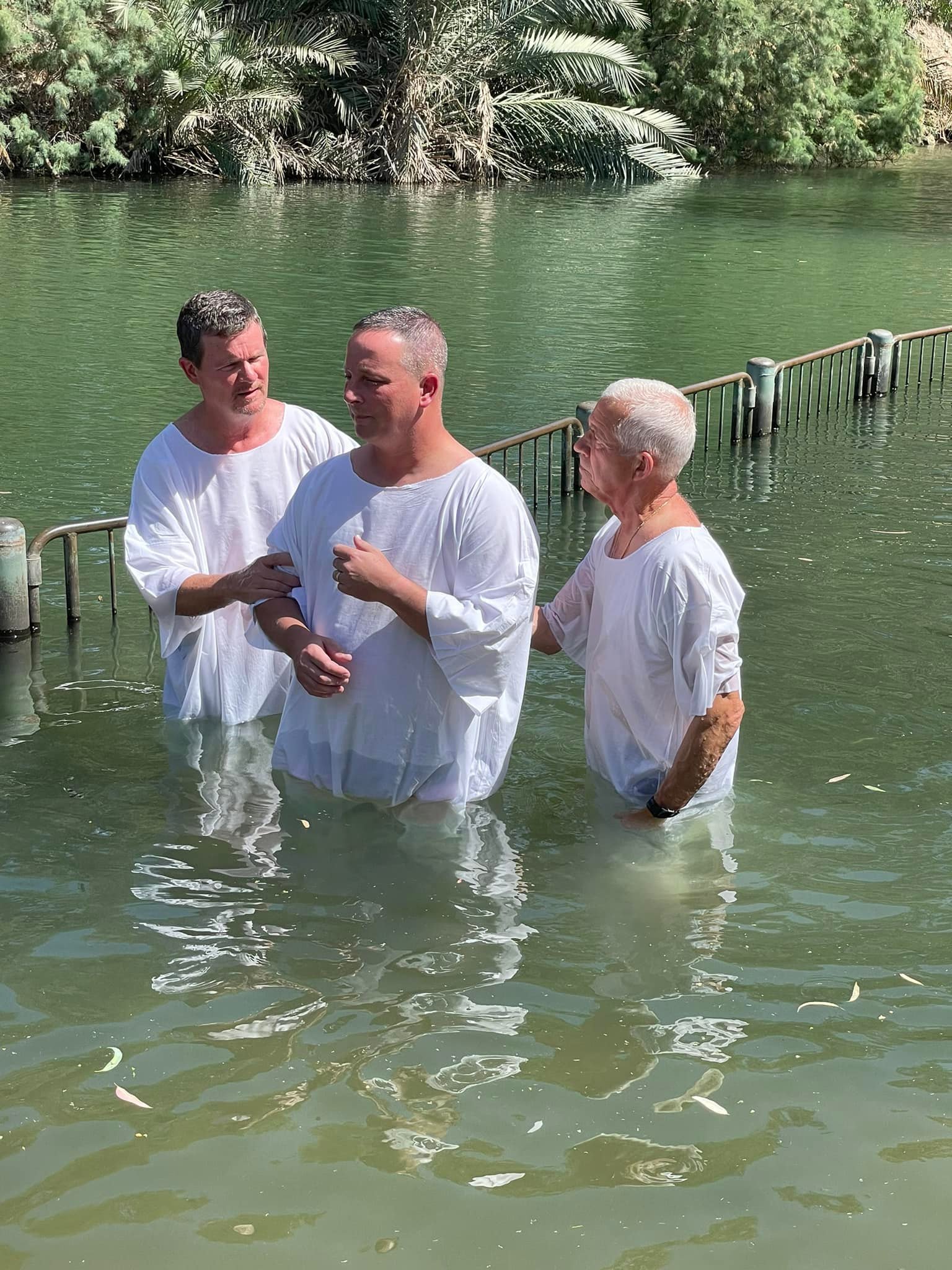
Troy Schulze
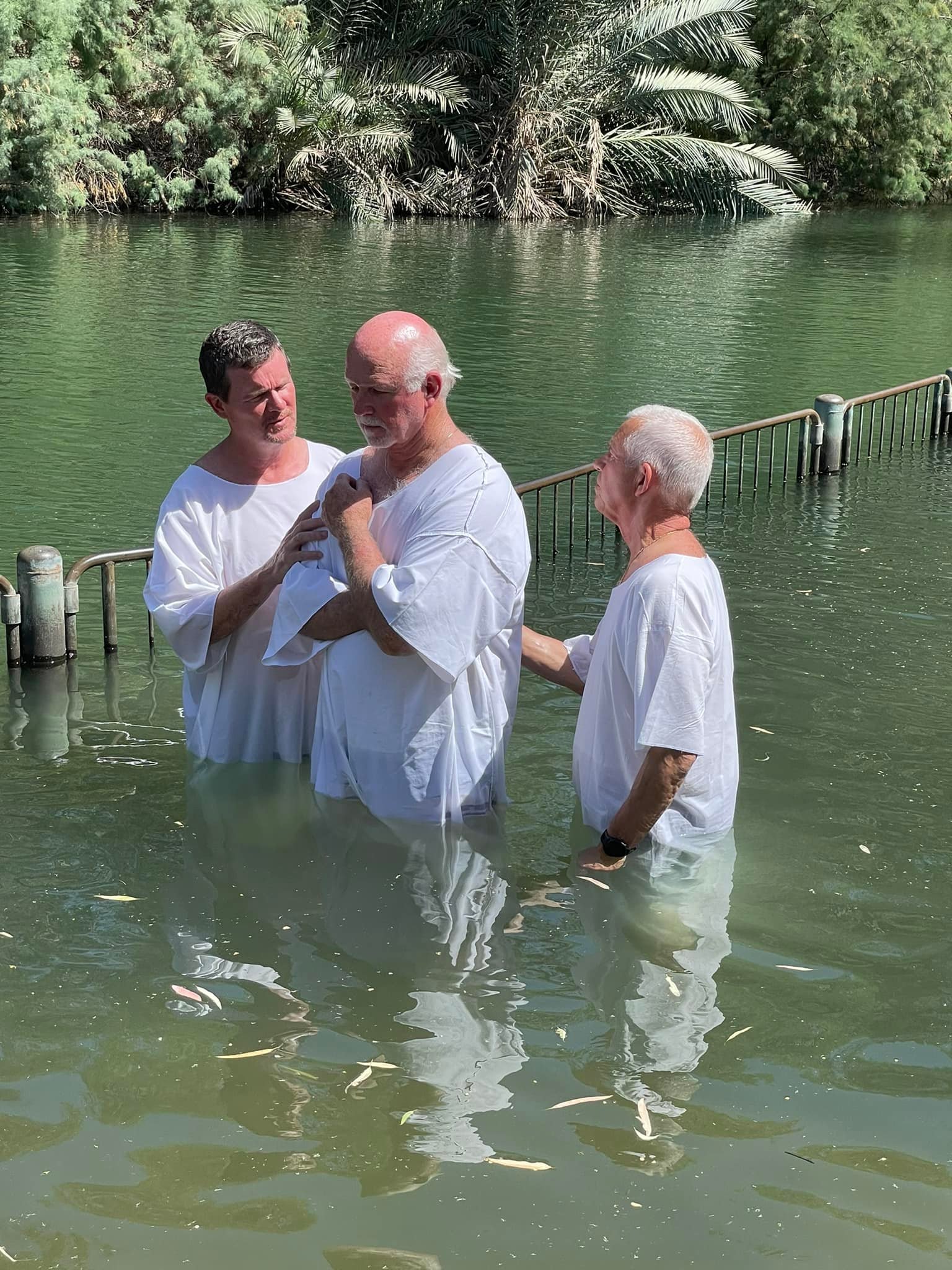
Don Koon
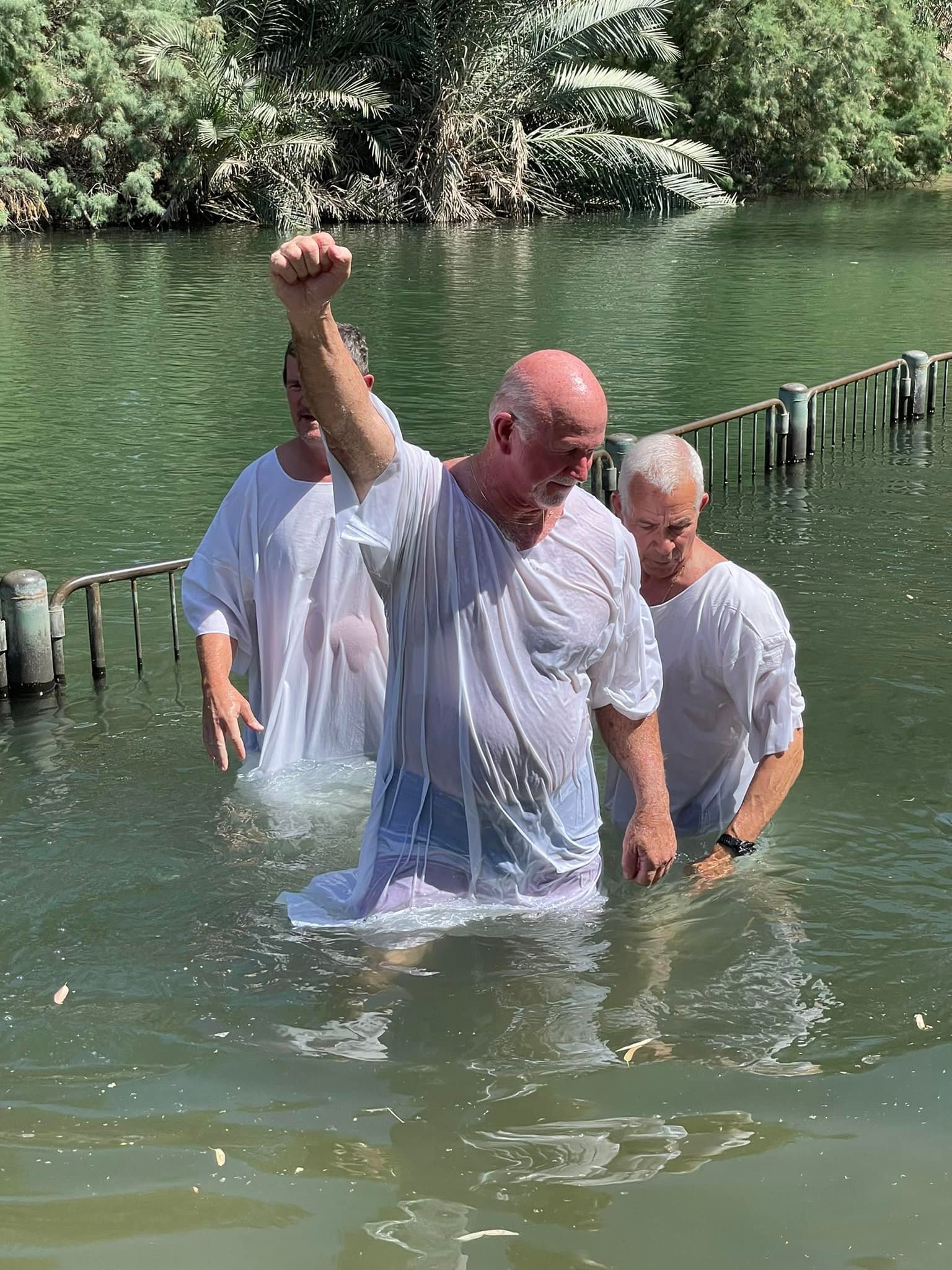
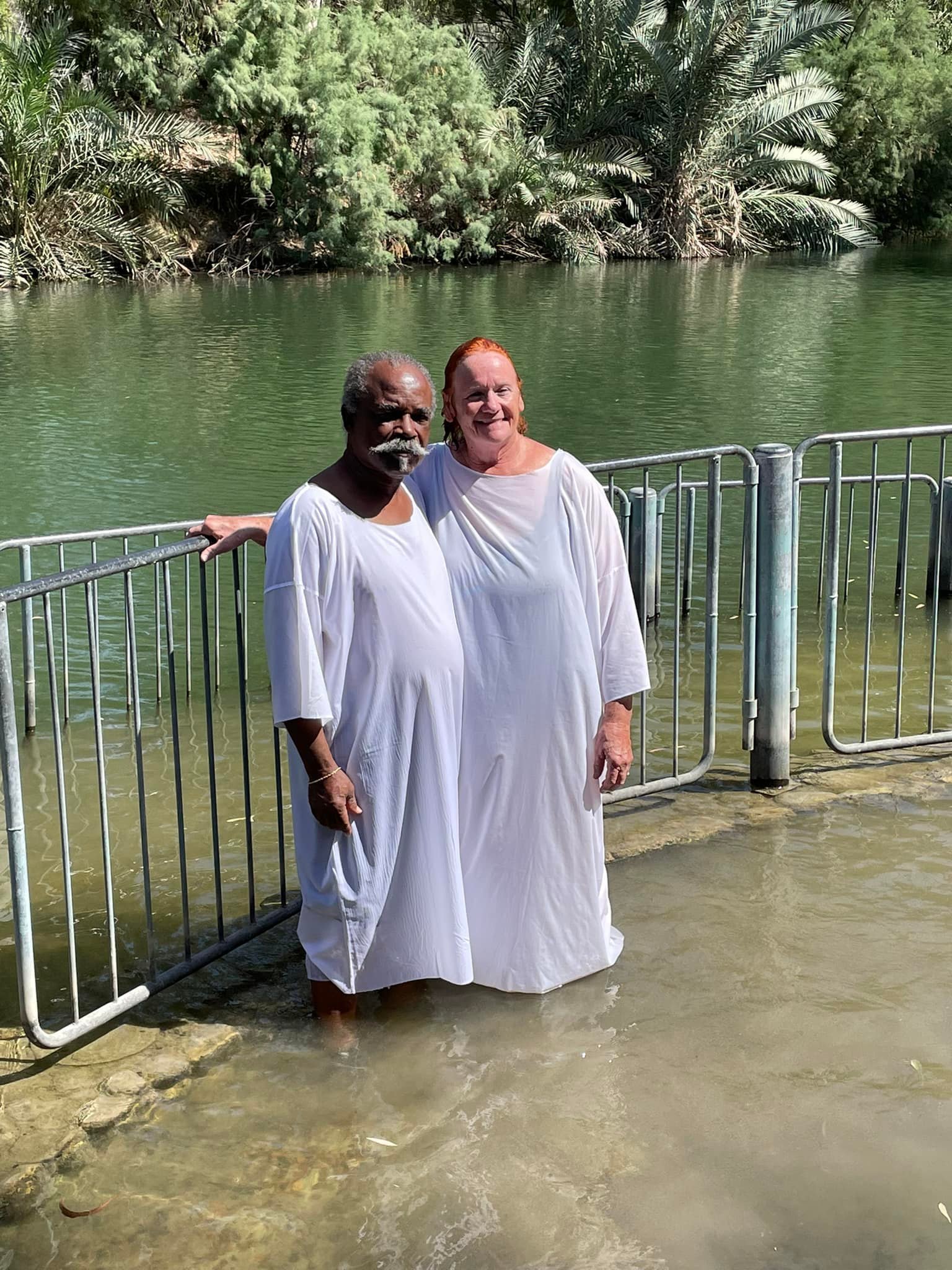
Albert & Cathy Carrington
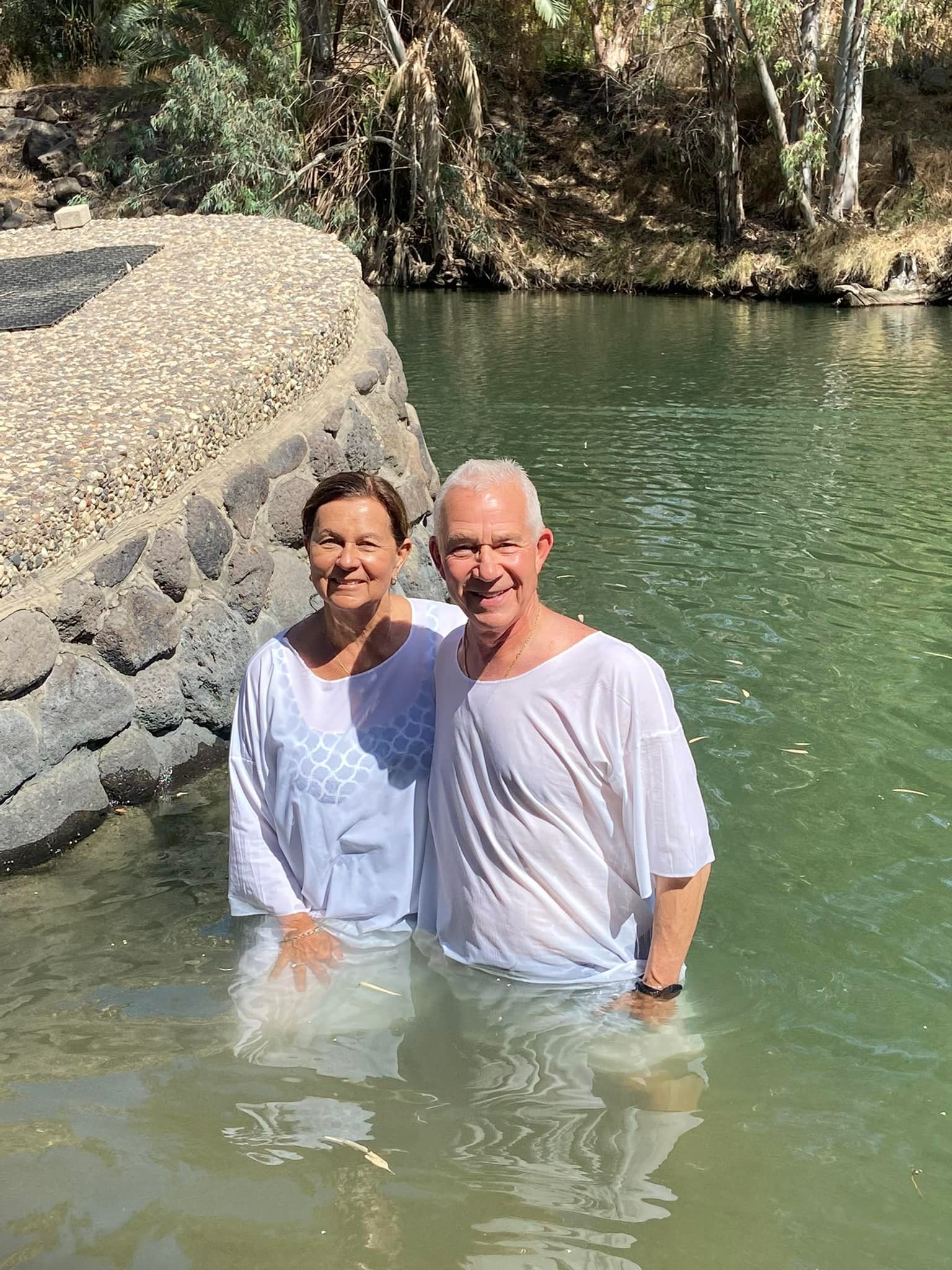
John & Laura Motis.
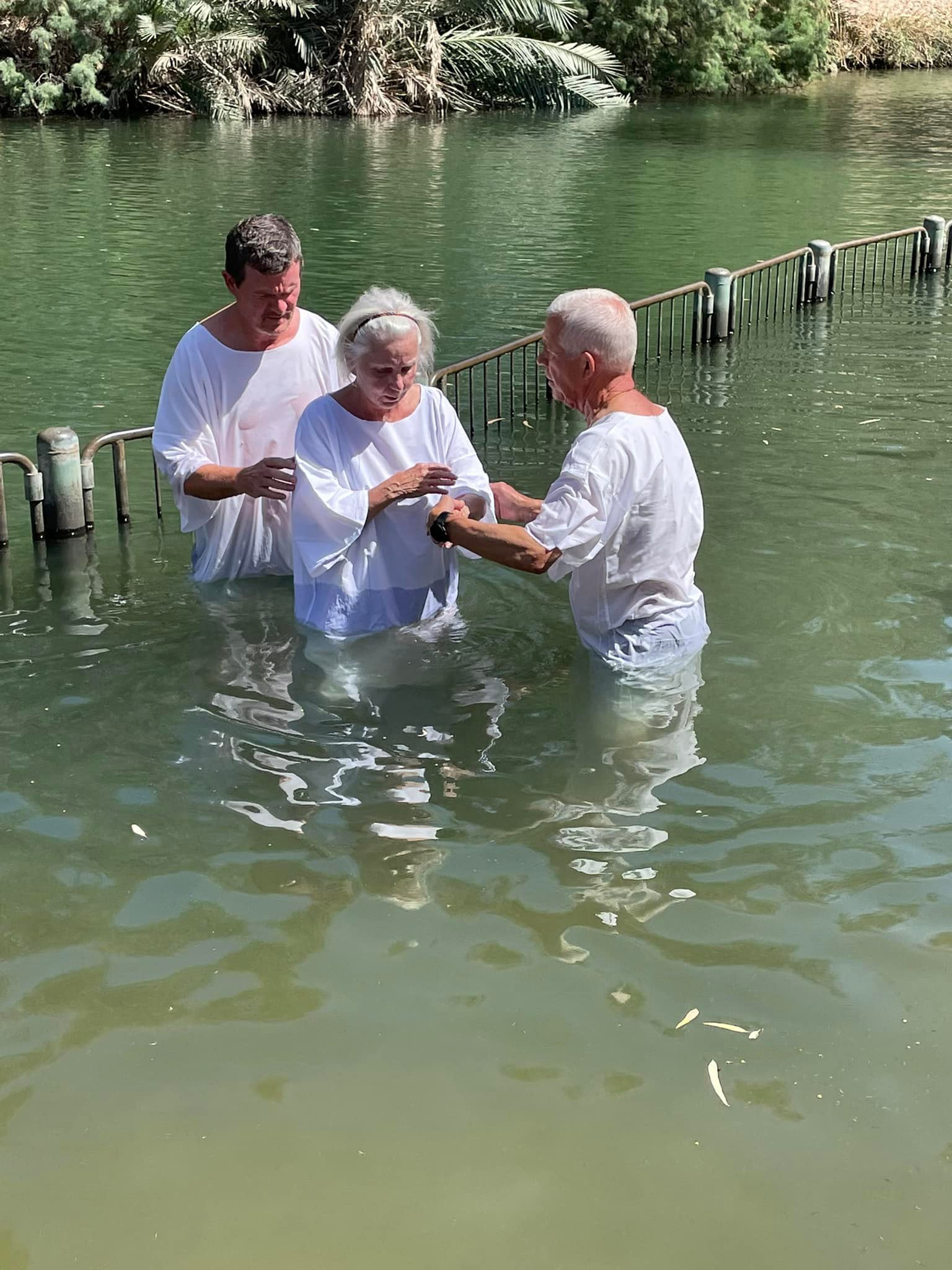
Suzanne Harris

How to fix your Deacon. Waiting for the bubbles…
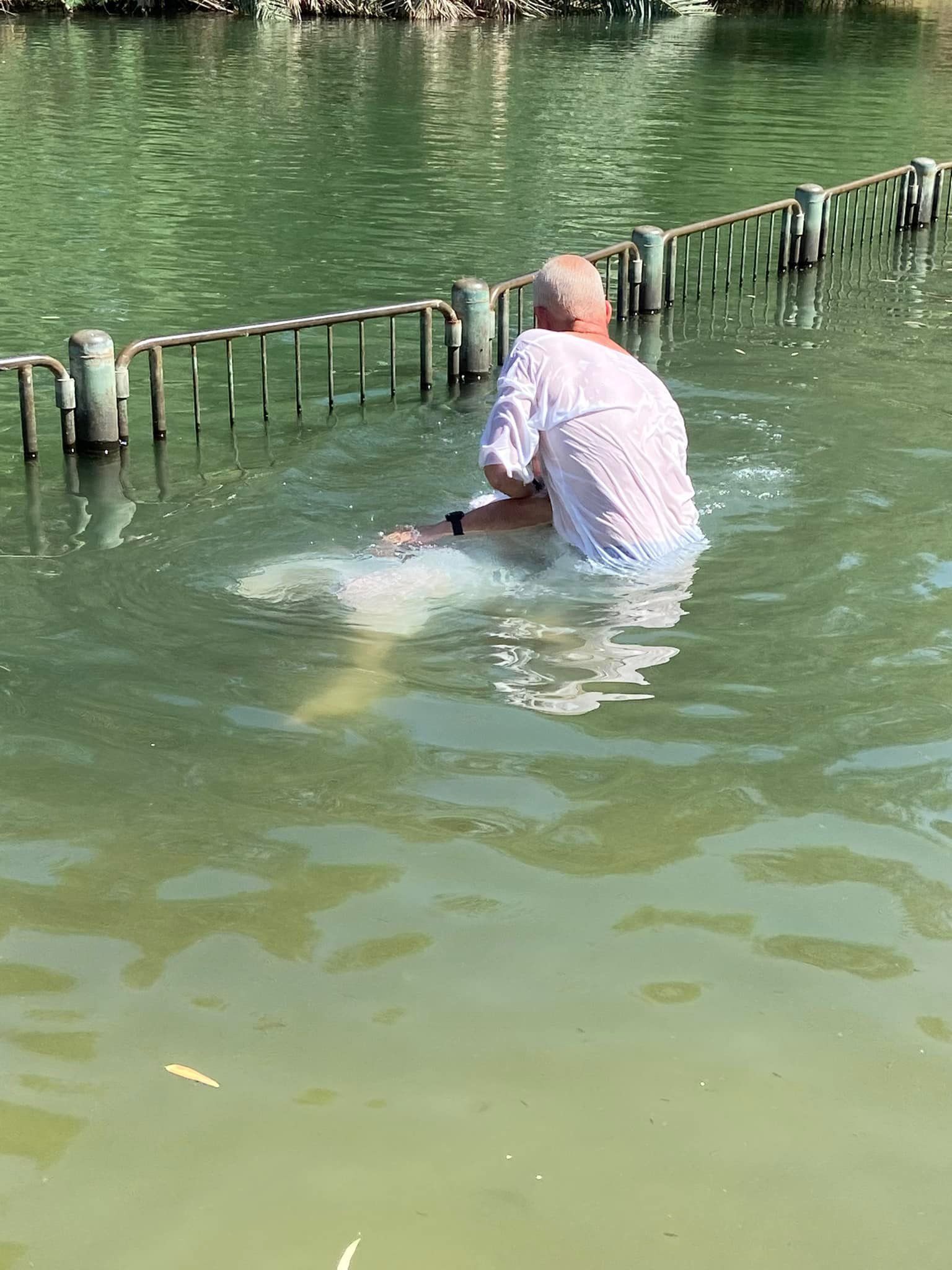
How to fix your rector…
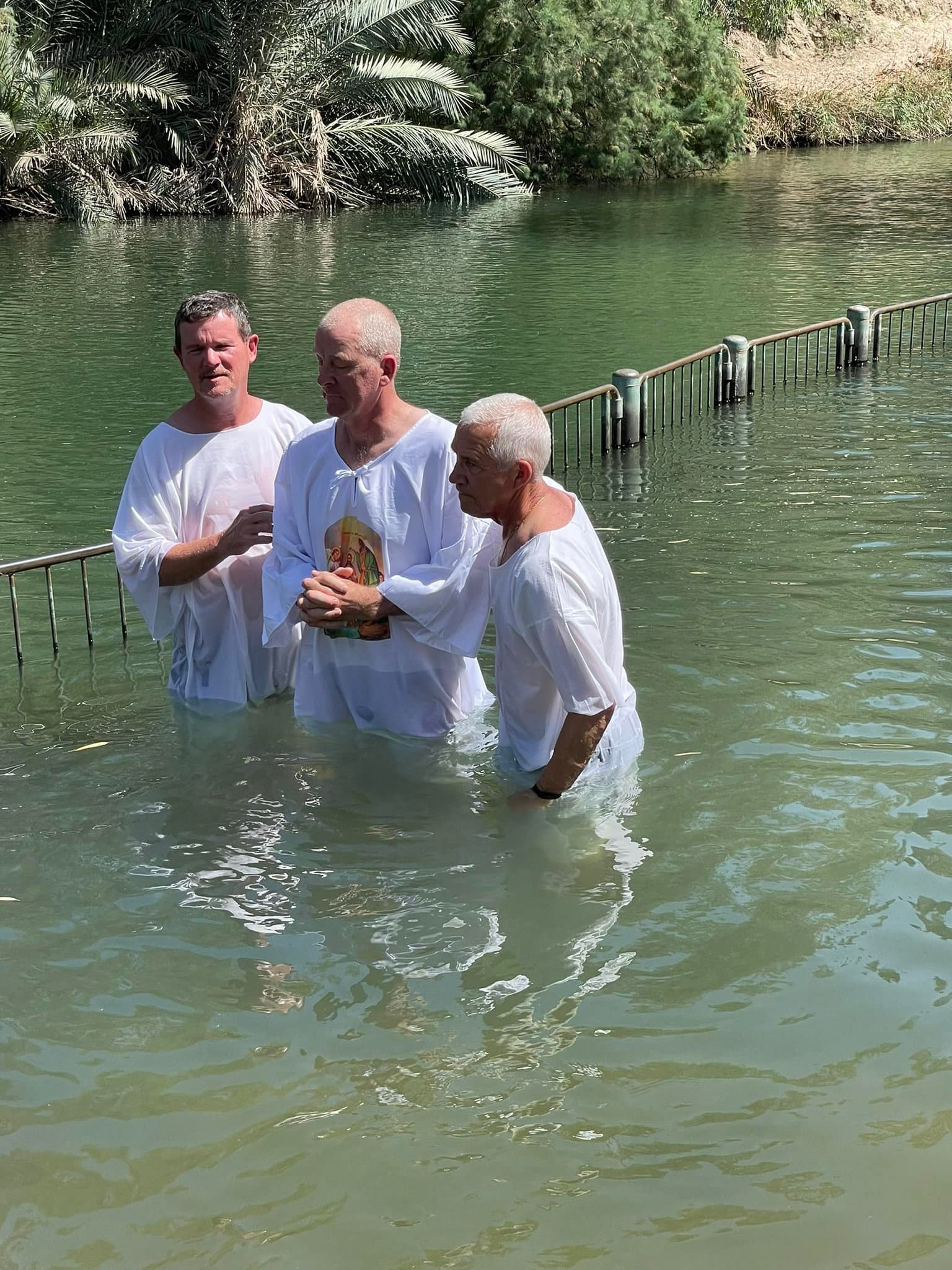
This man, Jerry, is from Belgium and doesn’t speak English. He asked me to renew his baptism.
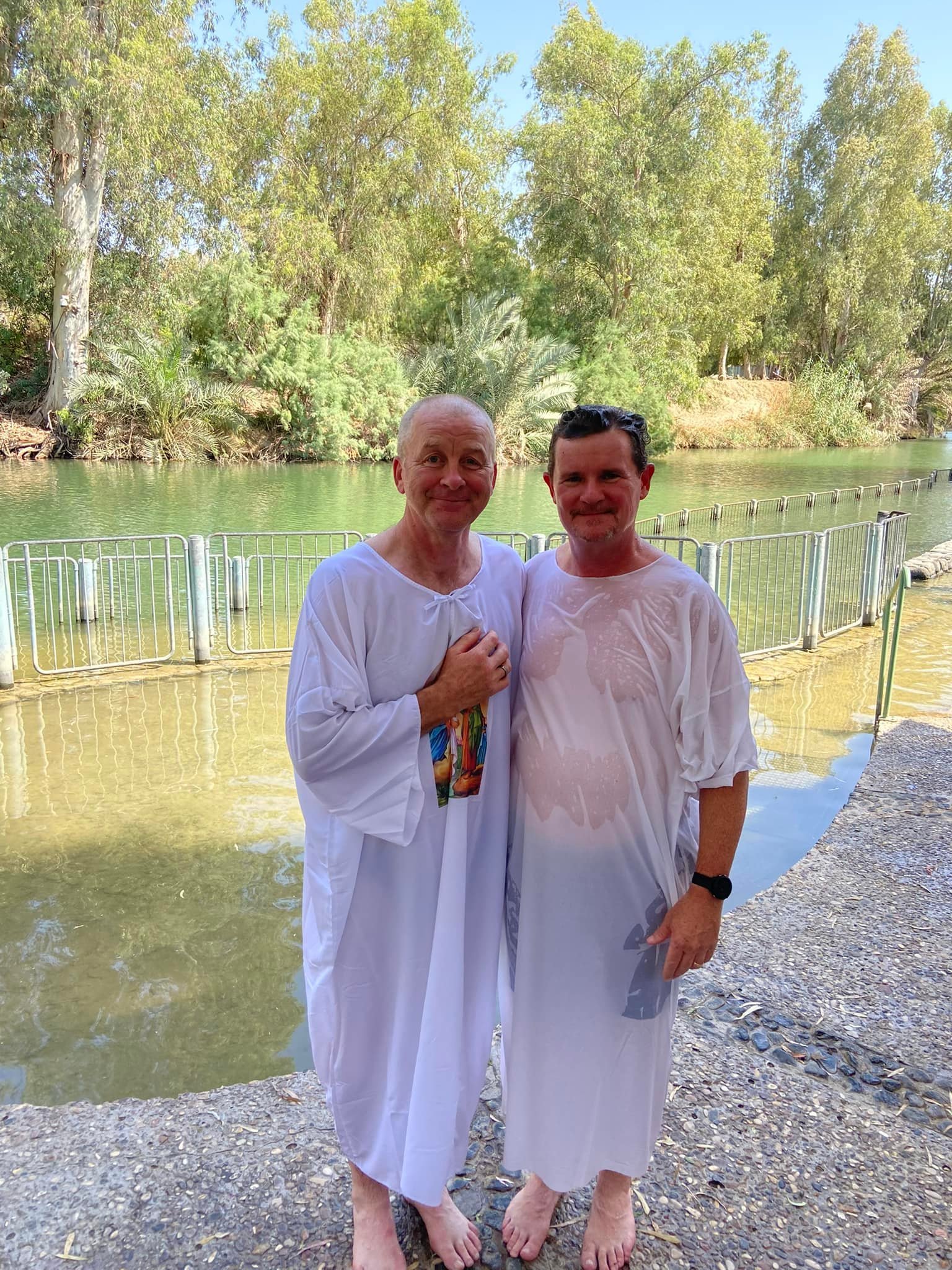
That was pretty cool.
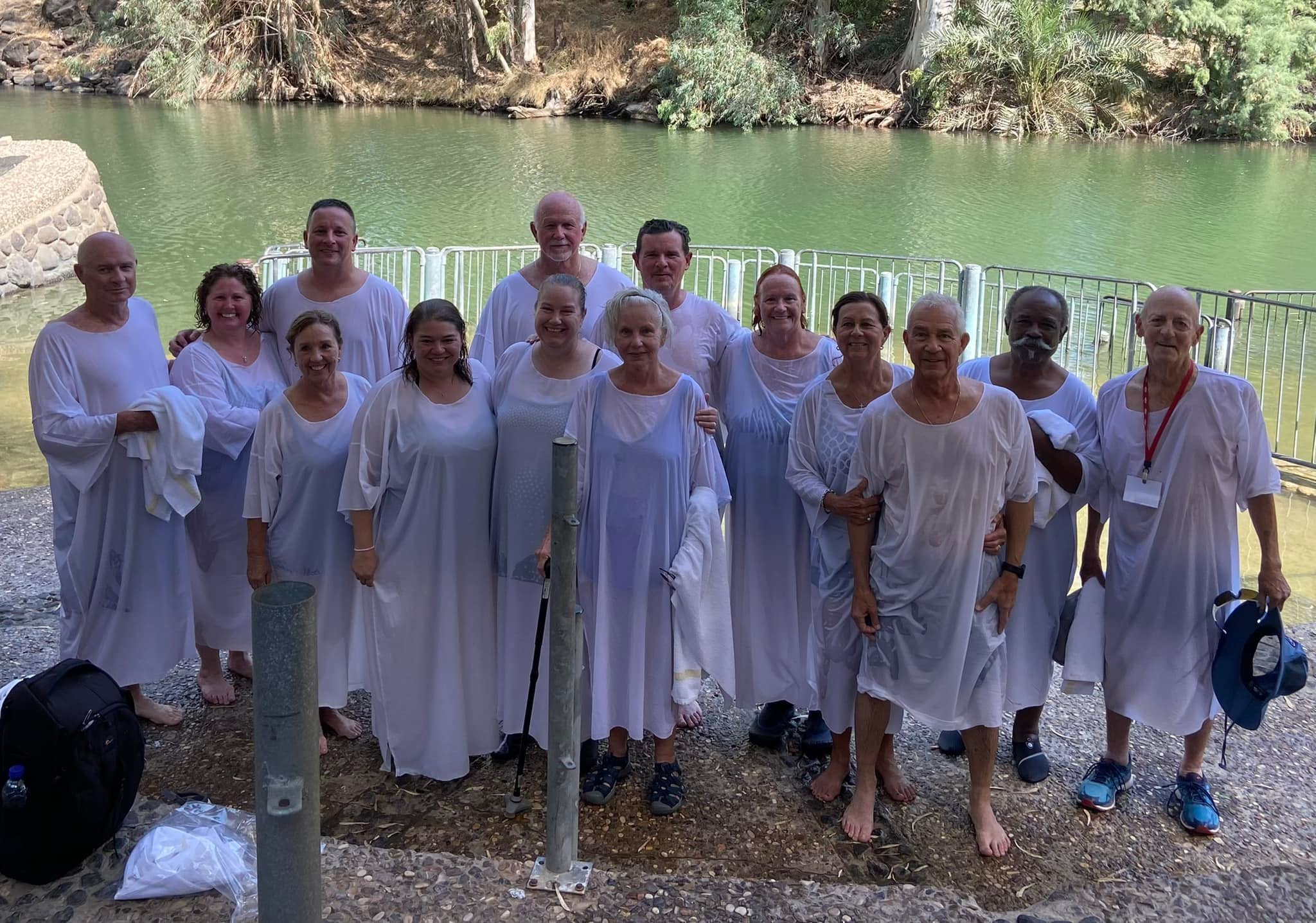
Our renewed pilgrims!

Back at out hotel for the night. On to the Dead Sea, Masada and Ein Gedi tomorrow!
Pilgrimage to the Holy Land - Day 2
We began at Caesarea Maritima, Herod the Great’s first-ever man made harbor, with a theater and hippodrome (for chariot races and gladiators.) It is where Pontius Pilate governed and Paul was imprisoned for 2 years. Then on to Megiddo. Megiddo is a “tel” where at least 30 layers of rebuilding have created a man-made hill whose roots go back to at least the Neolithic (Stone Age.) Then on to Mount Precipice outside Nazareth, where they threatened to throw Jesus off a cliff. After driving through Nazareth and Cana, we arrived at our lodging on the Sea of Galilee. Tomorrow we will tour the Galilee region and reaffirm our baptisms in the Jordan River.
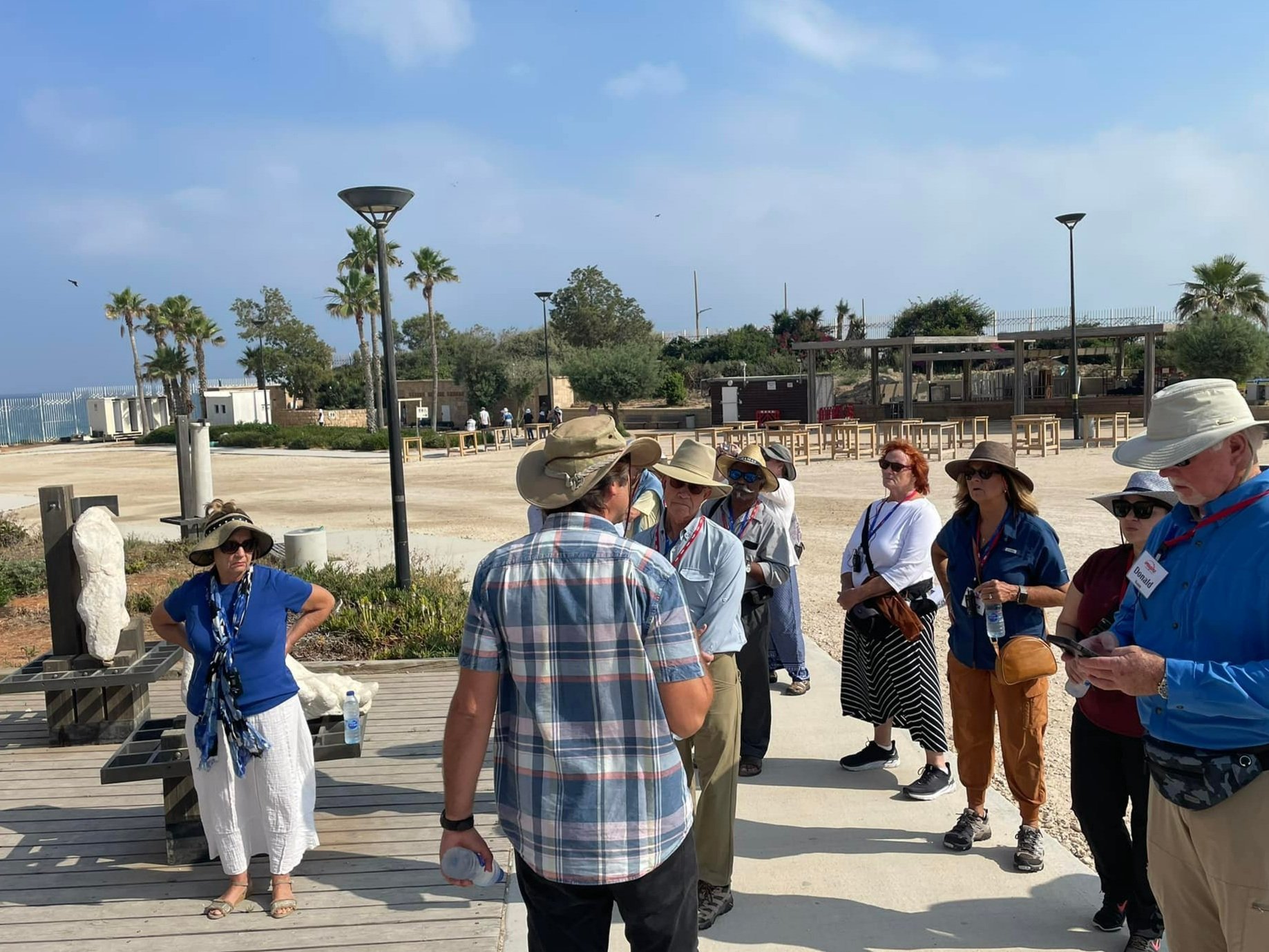
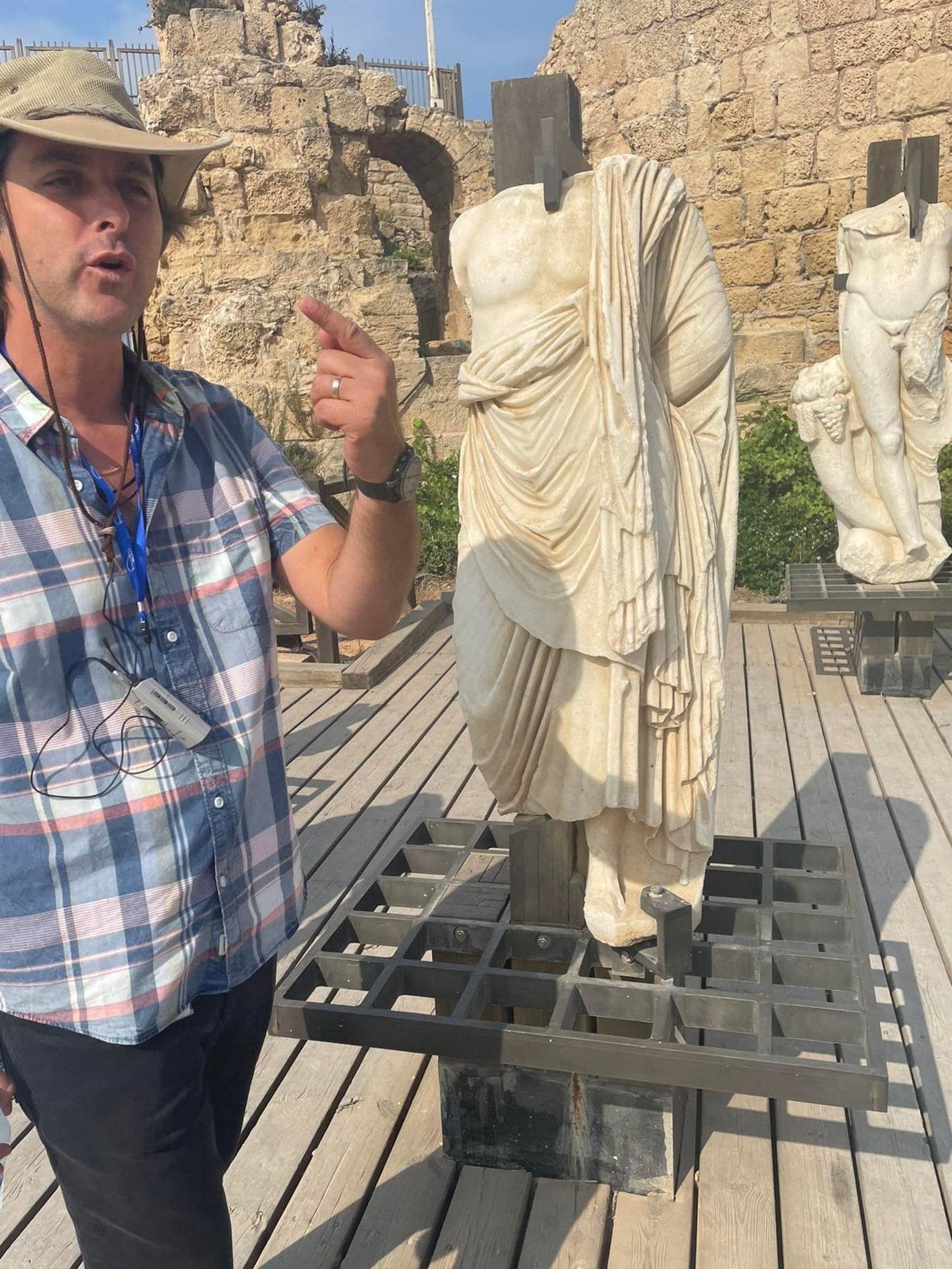
A Roman statue of a philosopher. Its head was removed when Muslim custom in the region at one point prohibited artistic renderings of human heads.
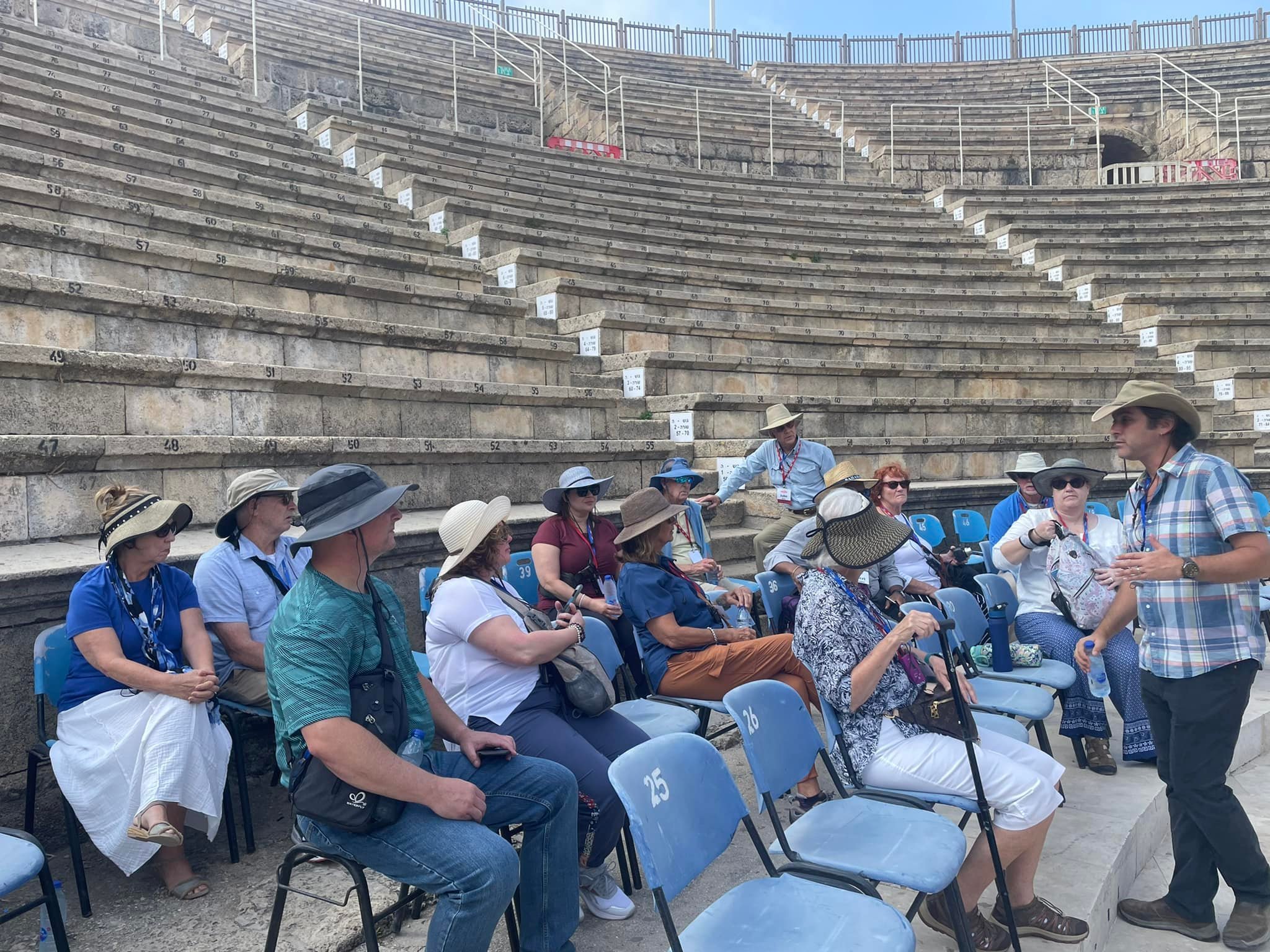
Herod the Great’s theatre. It sat about 4,000 for dramas.
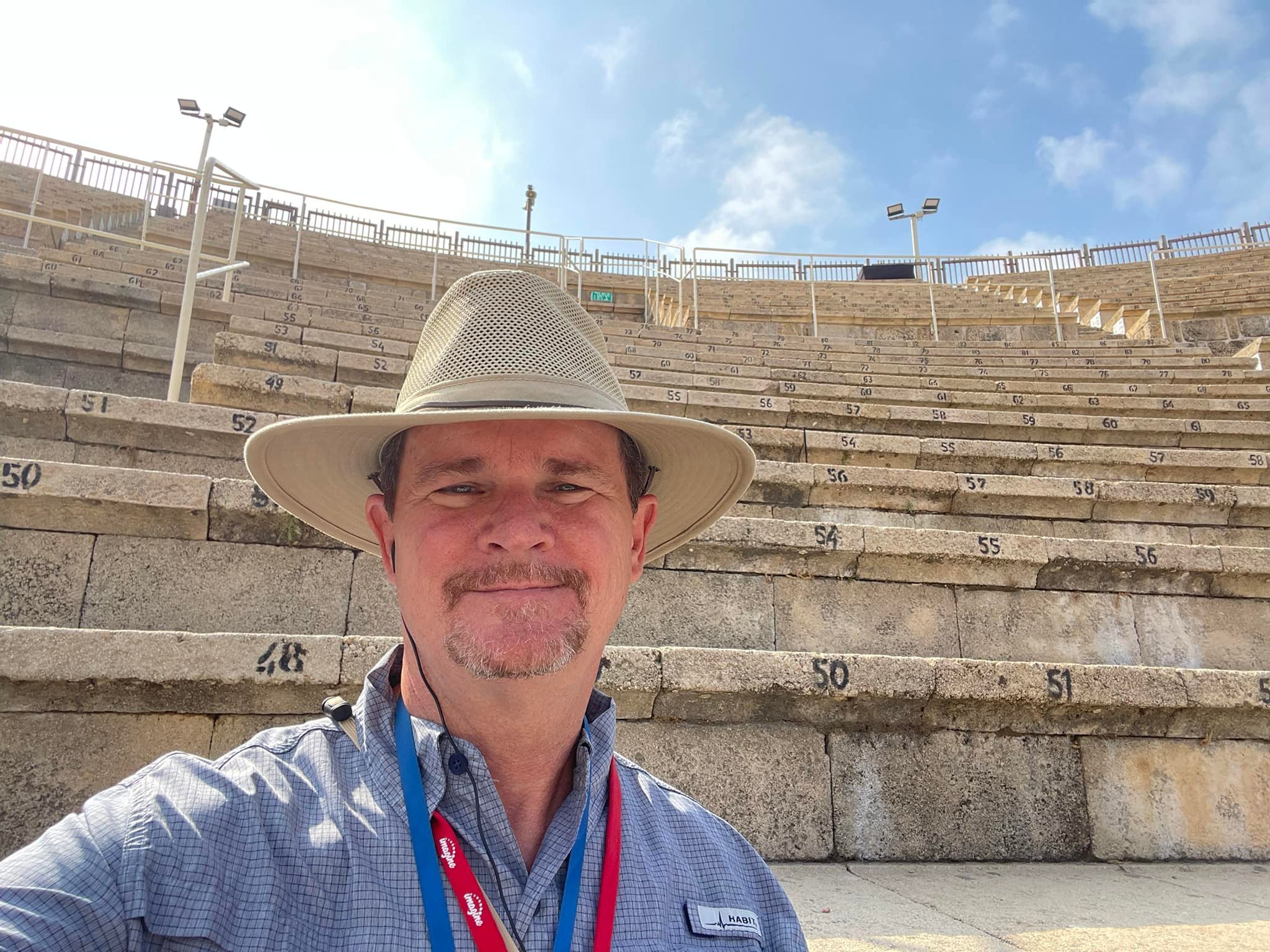

Adjacent to the theatre was a pagan temple.
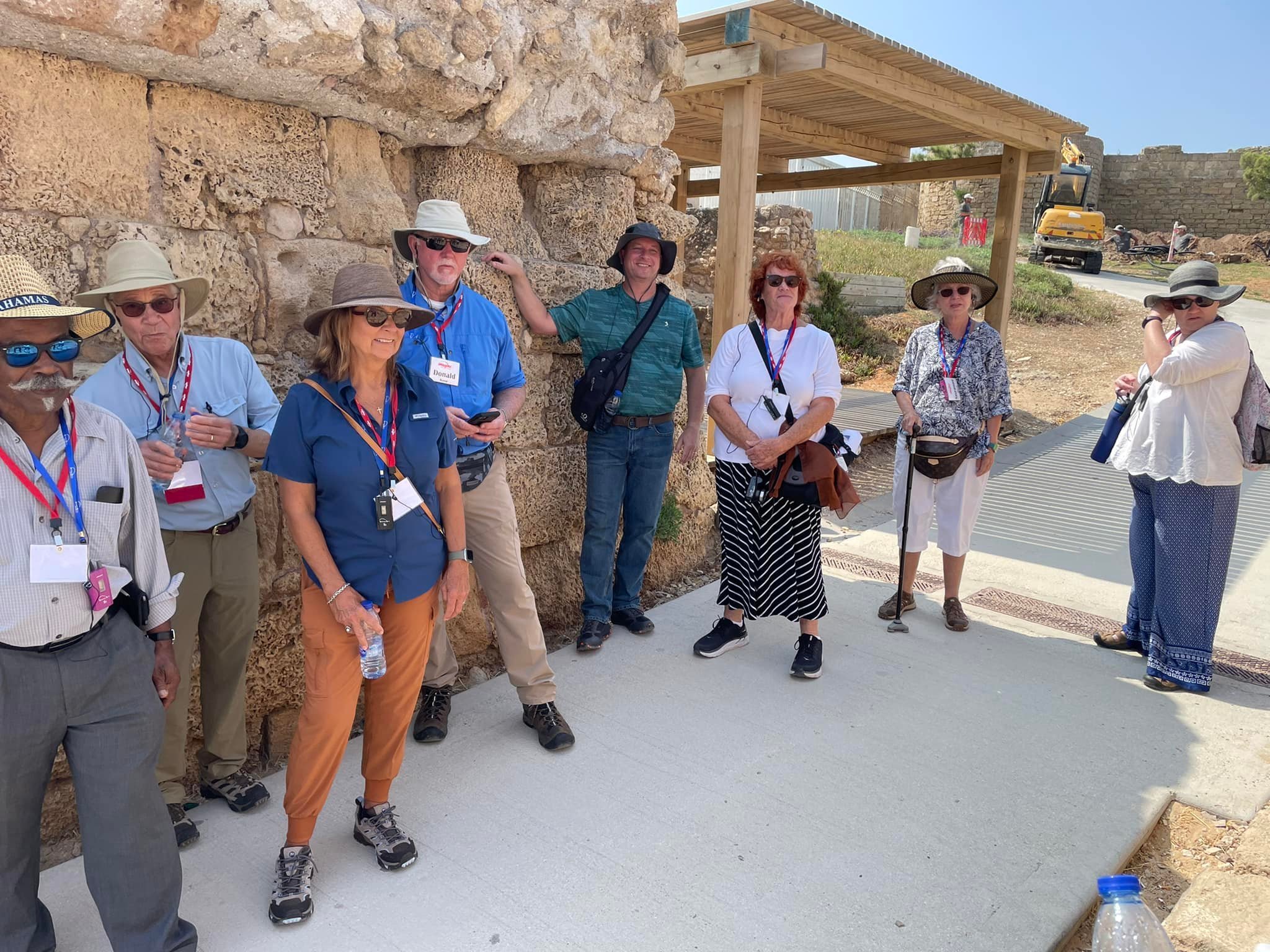
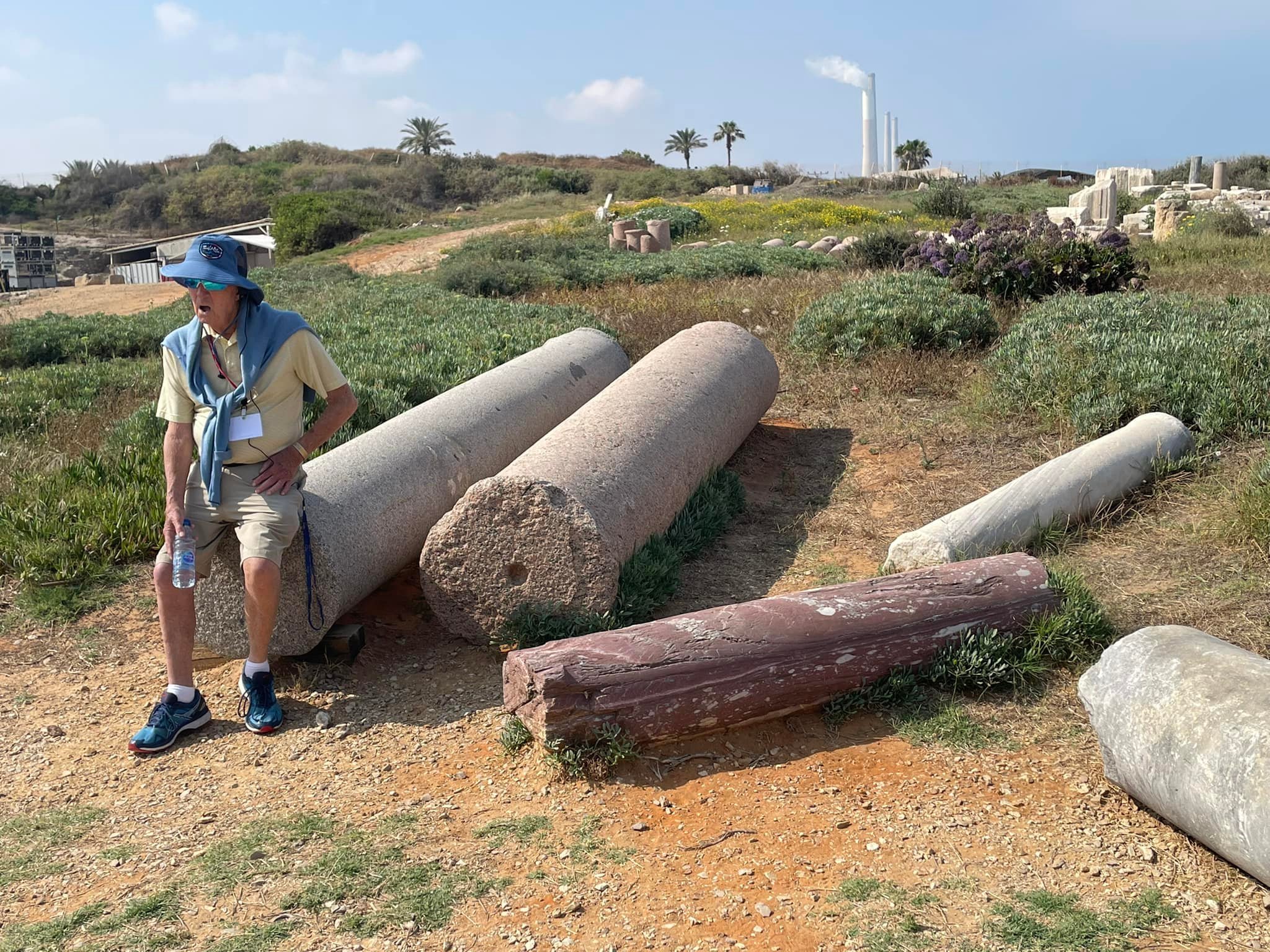

The remains of Herod’s palace, it included a huge freshwater pool for swimming and was stocked with fish.
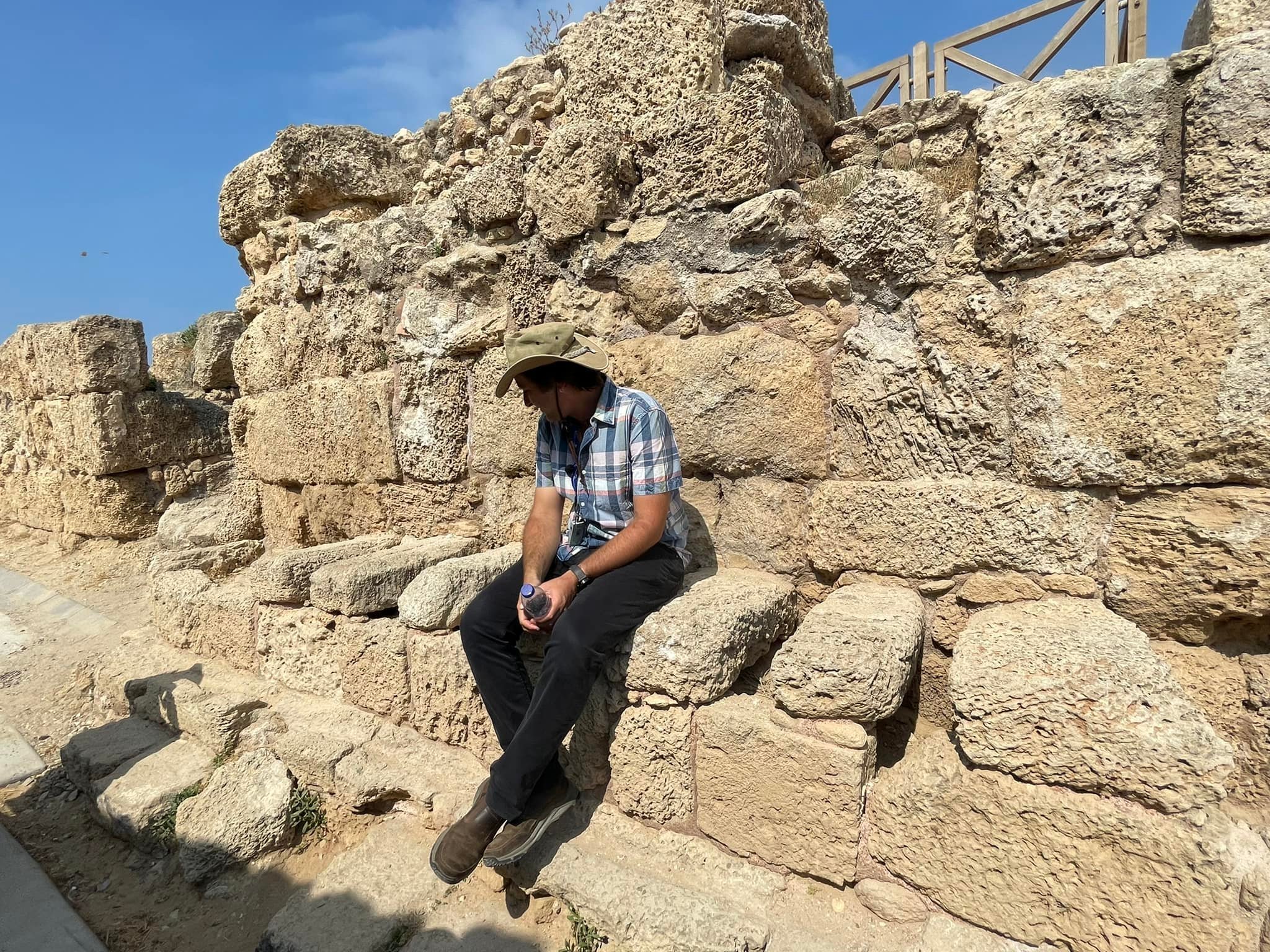
A Byzantine latrine… no kidding!

John Motis viewing the hippodrome, we were just talking about Ben Hur!
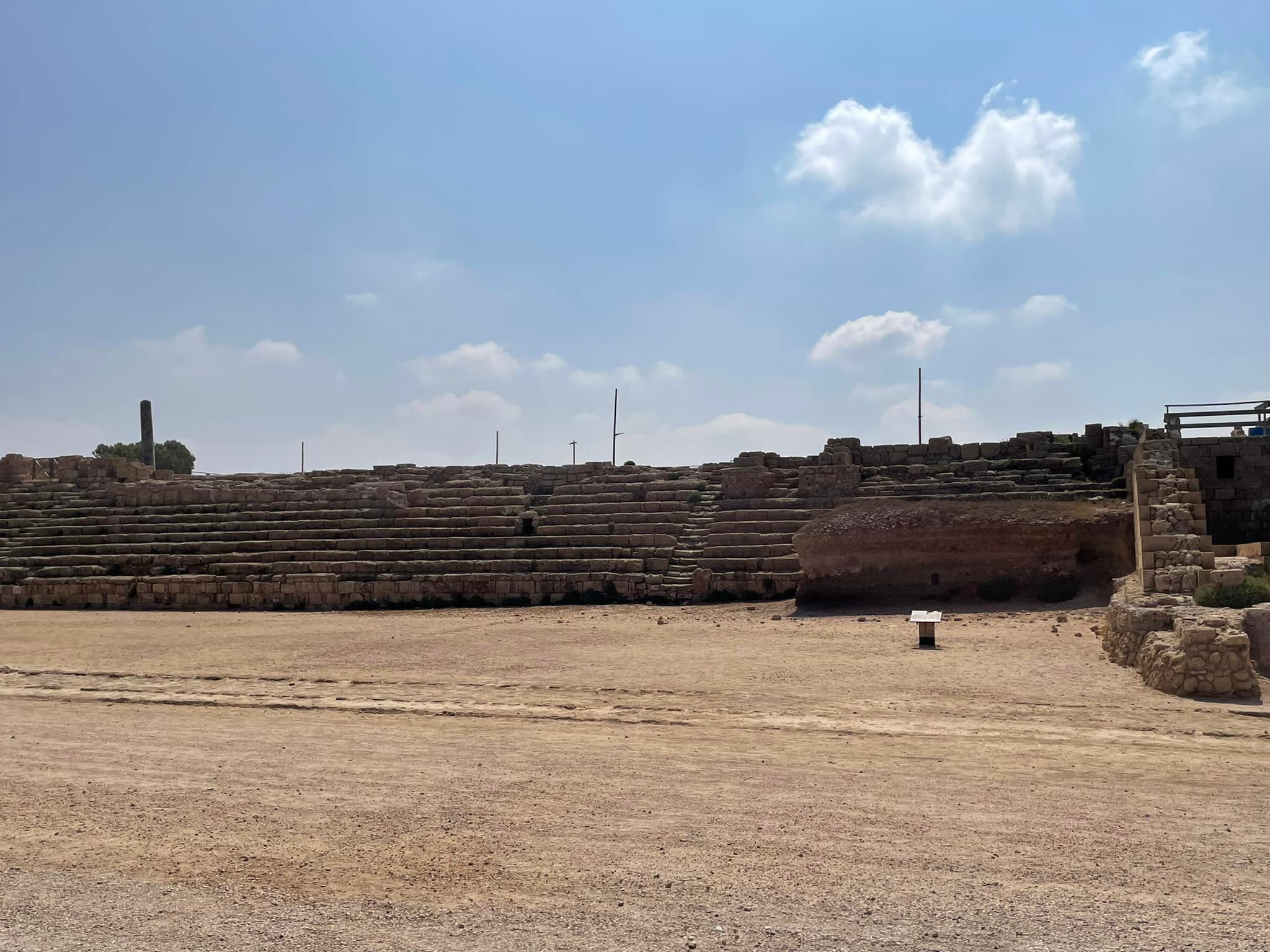
The hippodrome was for chariot races and gladiators. Sadly, at times they also did public torture and killing of Christians and Jews in it as well.

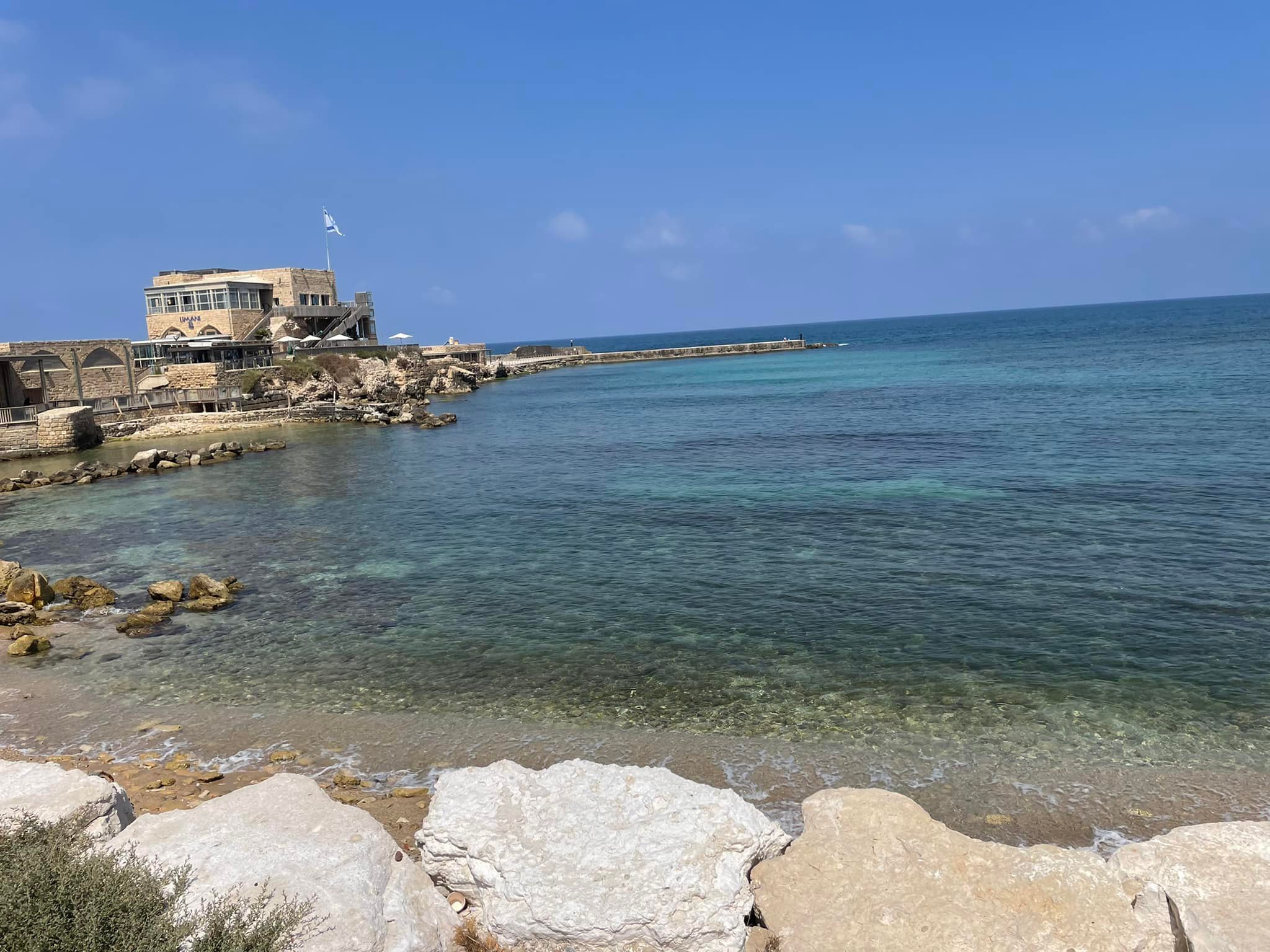
This is the actual port, with man made breakwaters that created the first ever port built where there wasn’t already a natural harbor.
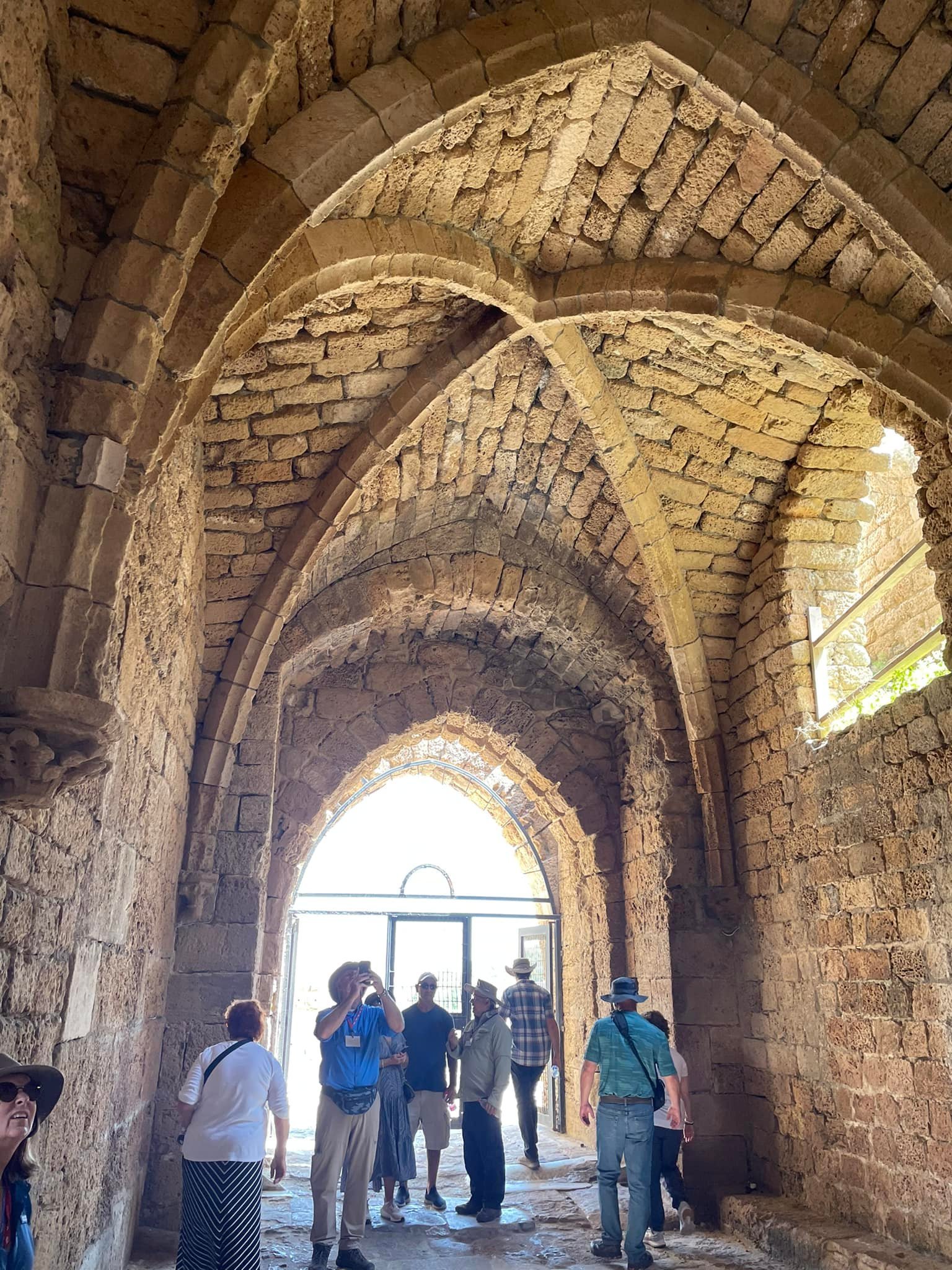
A Byzantine stronghold built during the crusades. Note the arch work.
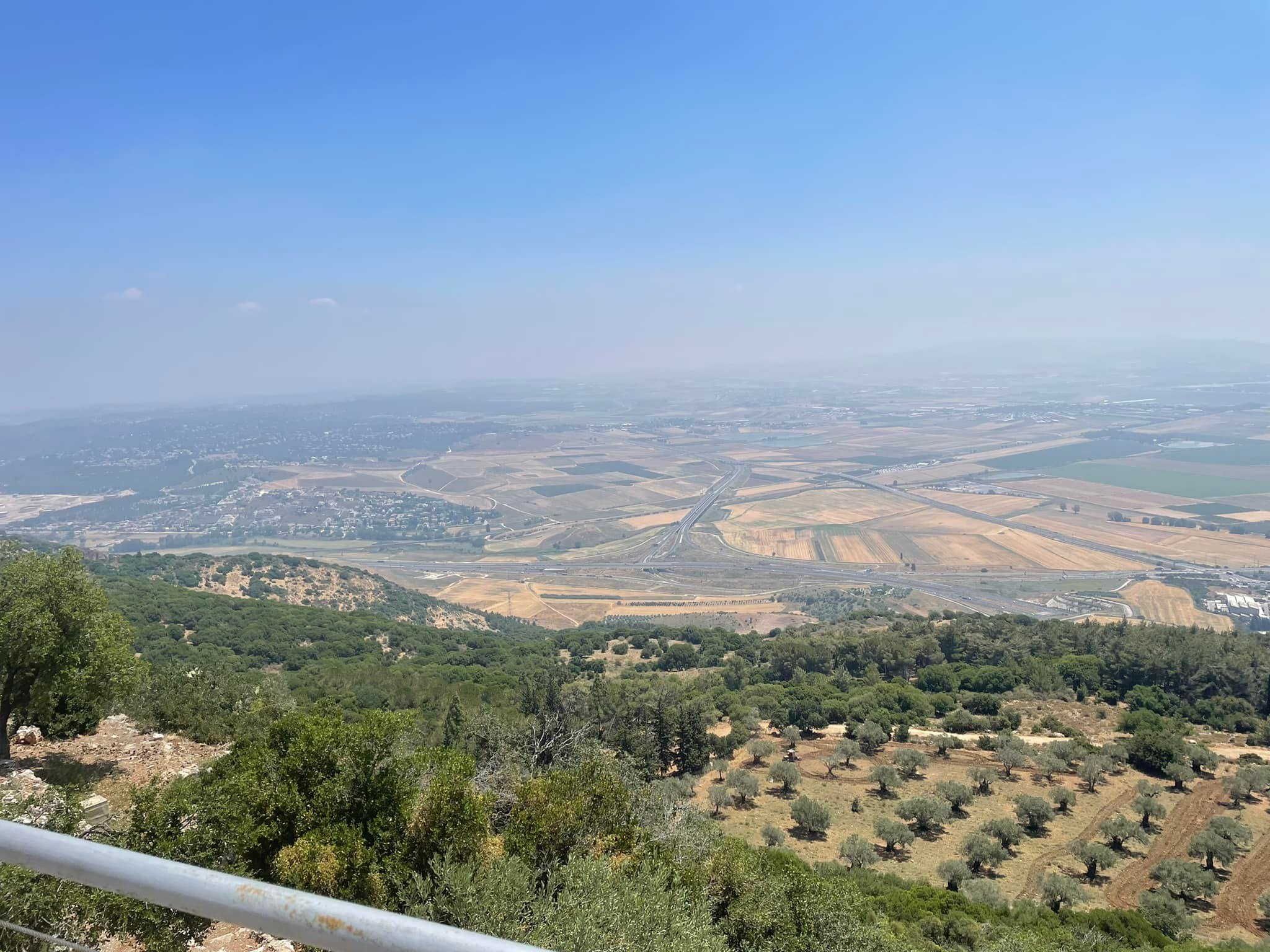
A view from Mount Carmel, where Elijah defeated mighty King Ahab and 450 prophets of Ba’al and 400 prophets of Ashera.
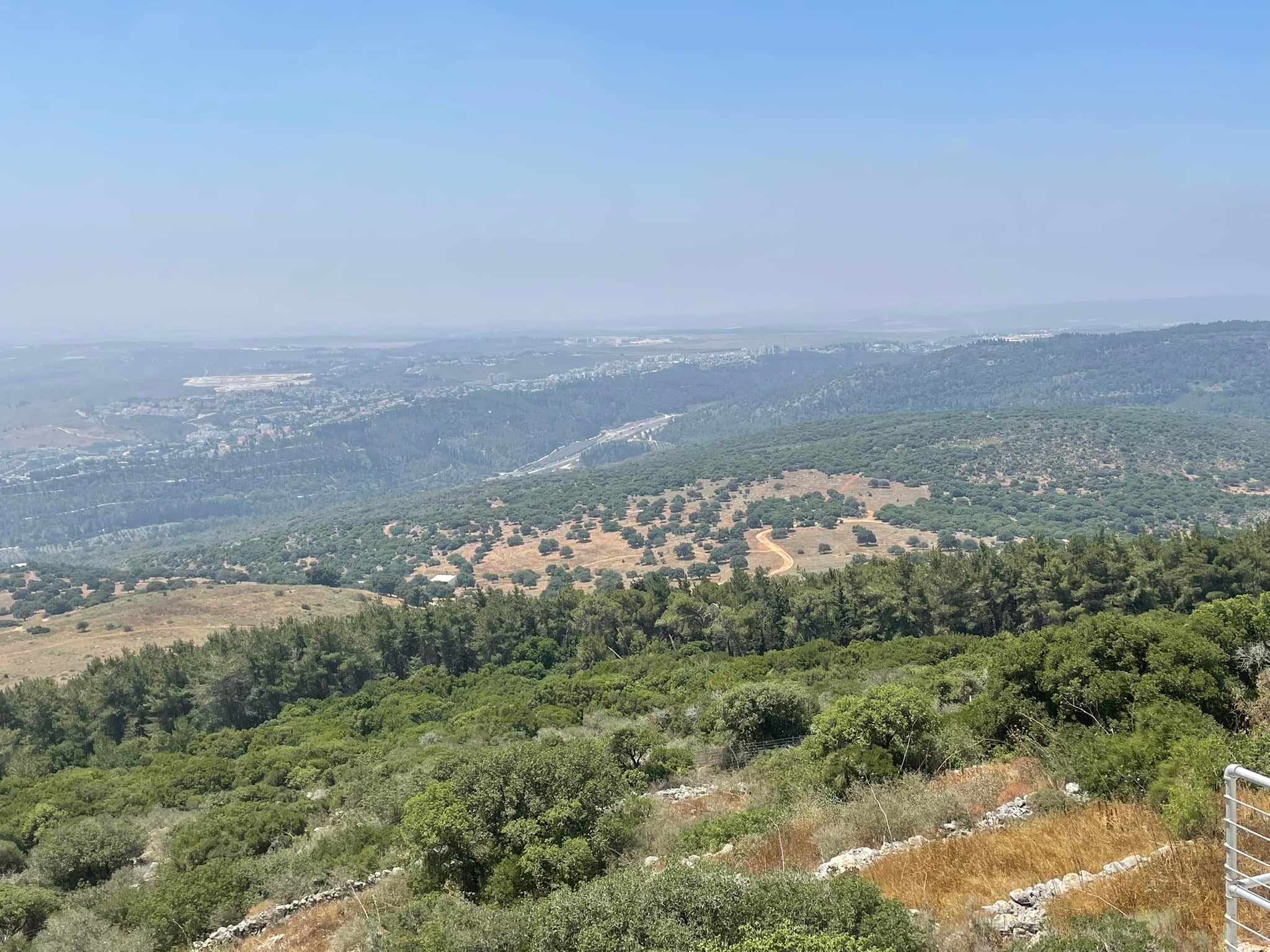
Another view from Mount Carmel.
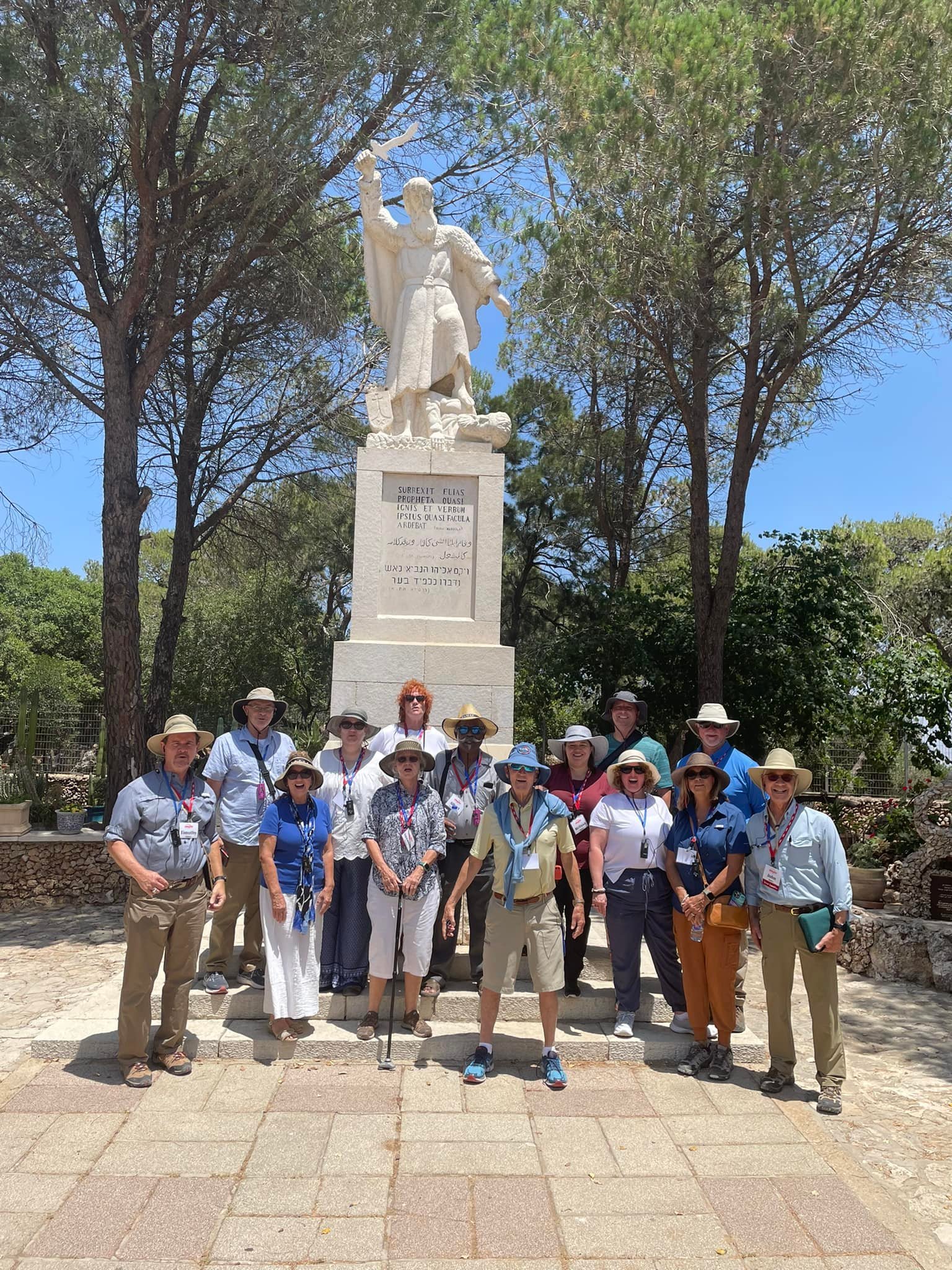
Statue of Elijah, whose name means "My God is I Am."
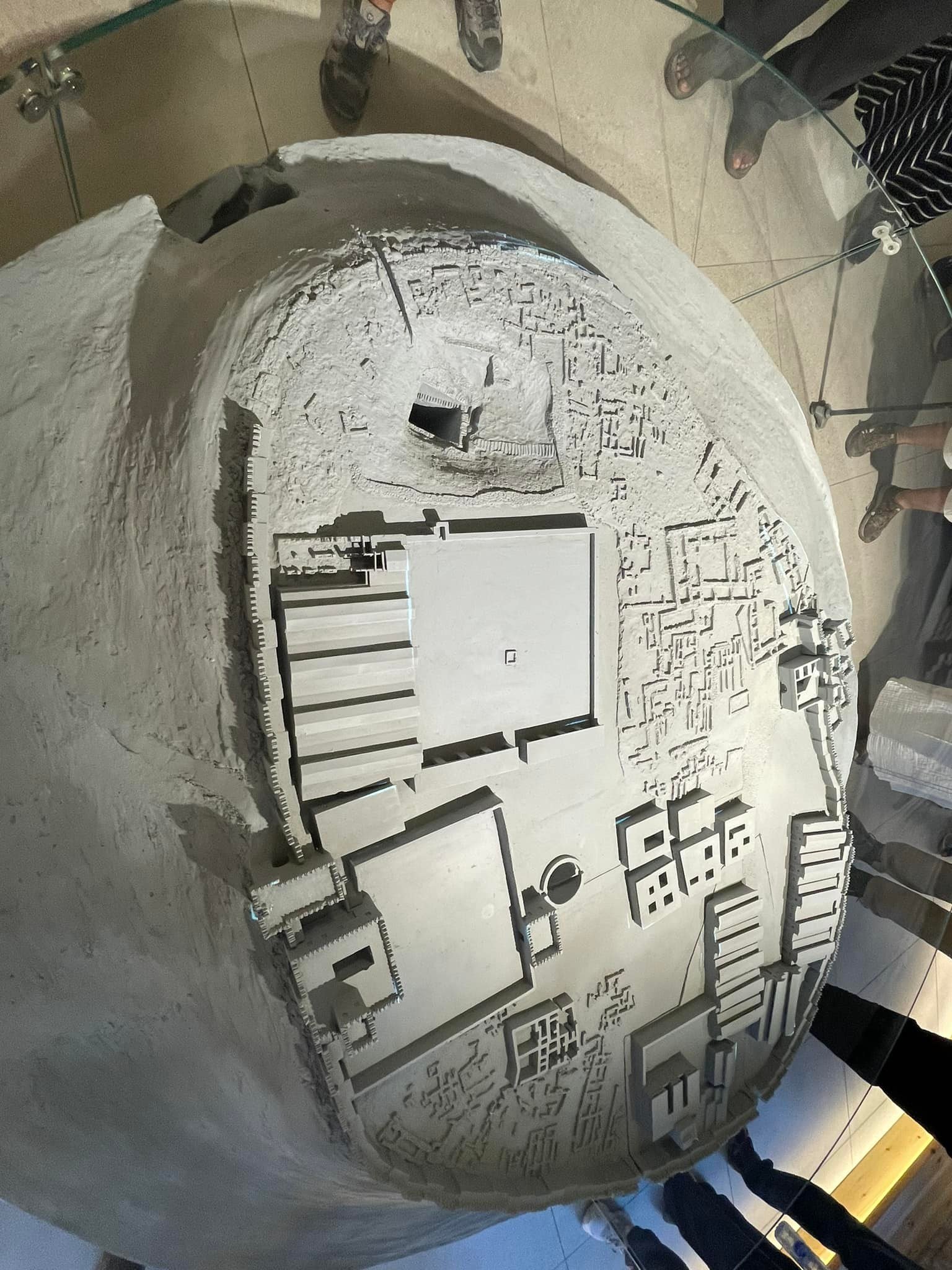
Model of Megiddo. This site is the birthplace of archaeology. It holds at least 30 layers of civilizations built over older ruins, dating back to the stone age.
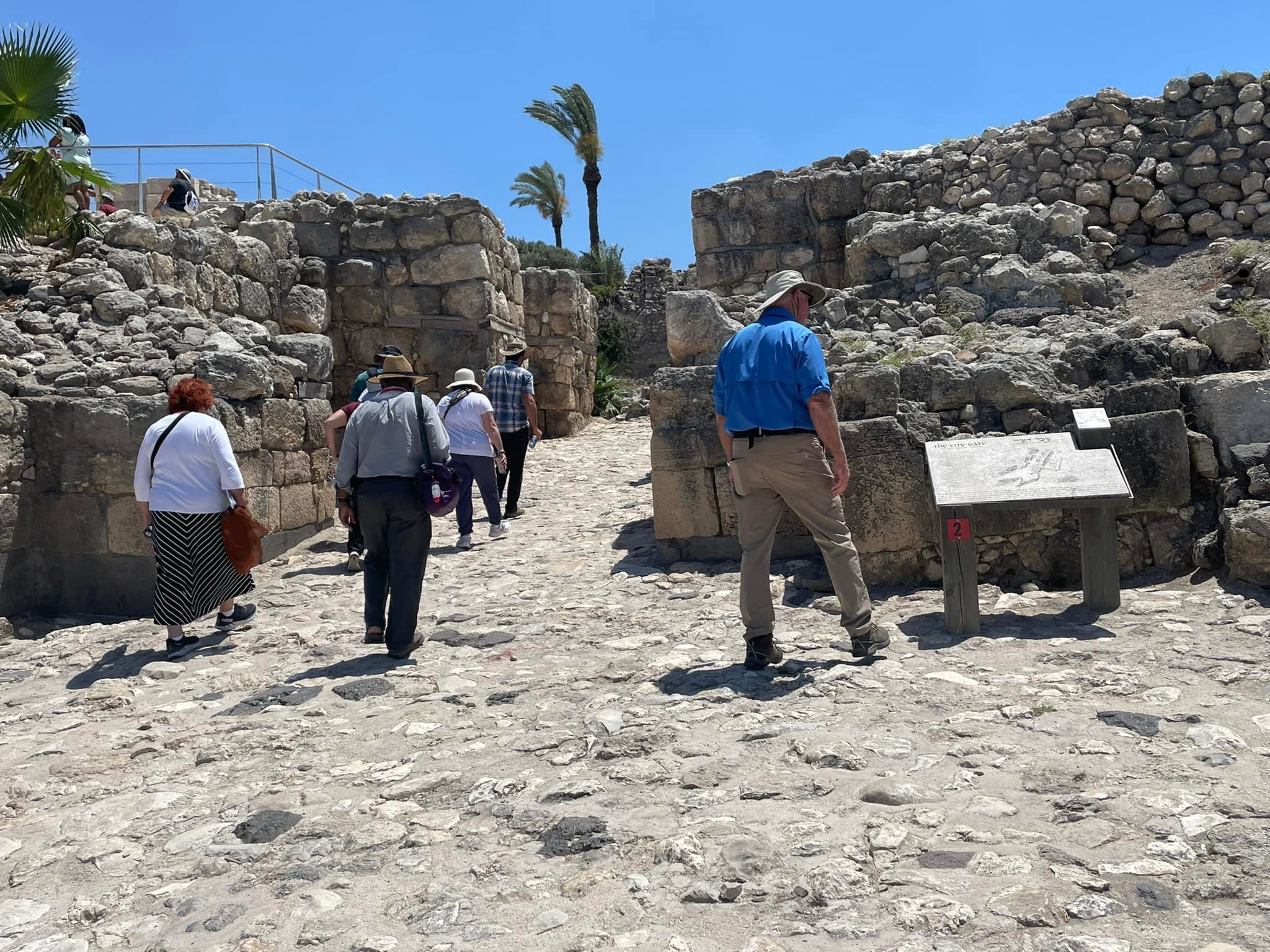
Its gate from about 3300 years ago.
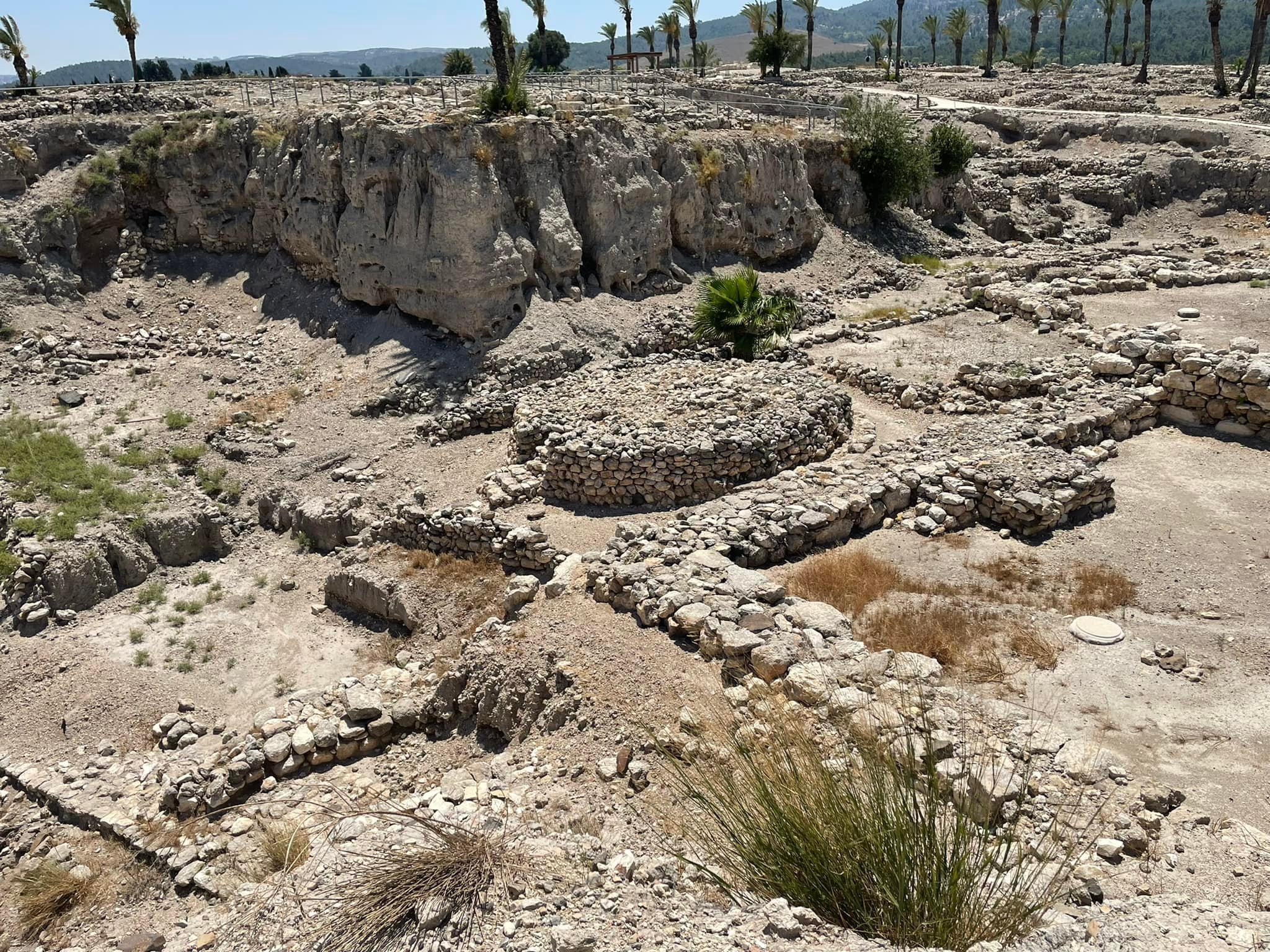
A pagan shrine was here. Bones of a lioness were discovered on the round altar.
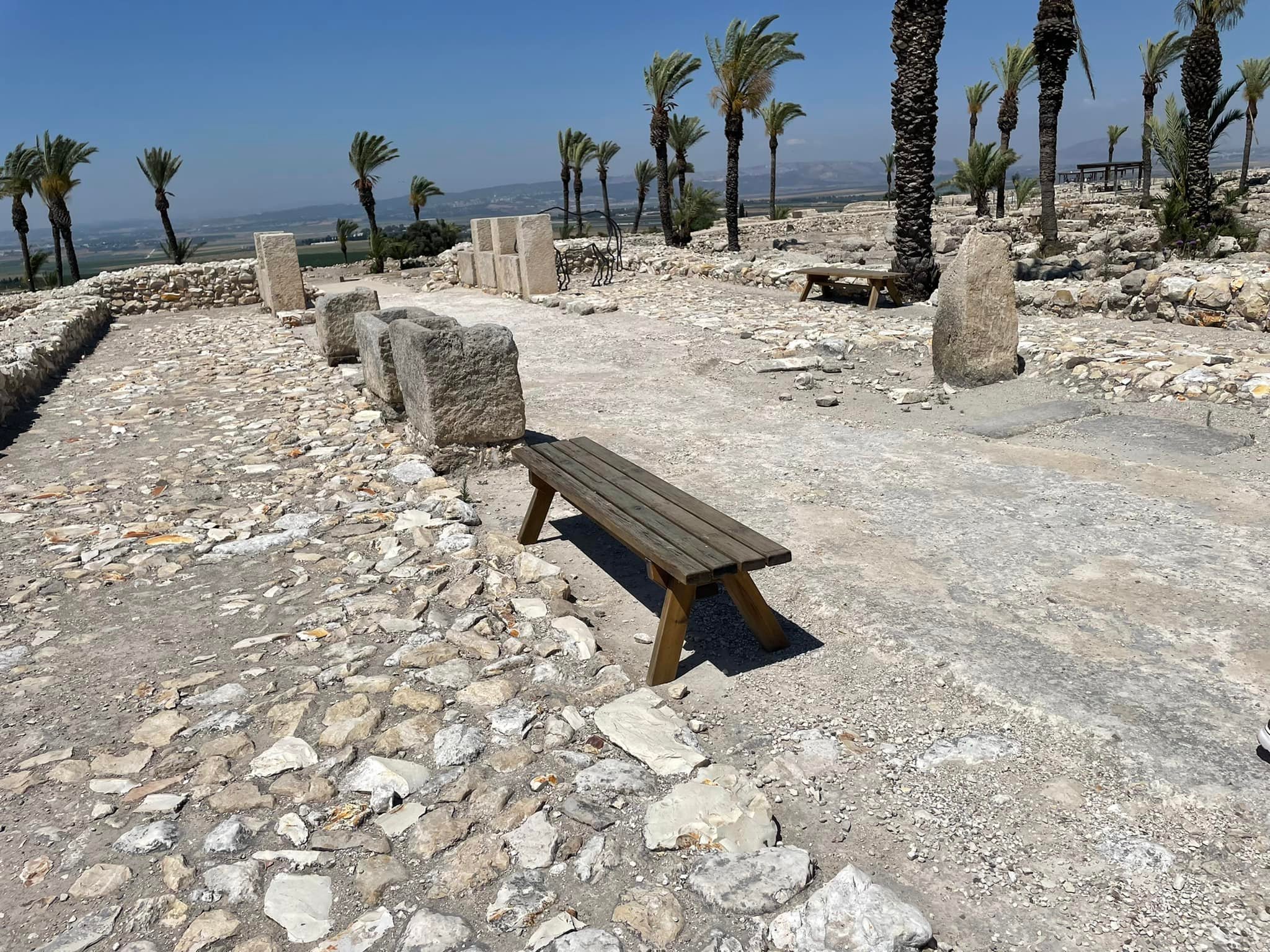
Remains of King Ahab’s stable.

Original steps going down to Ahab’s water shaft, built to ensure the fortress could withstand any siege.
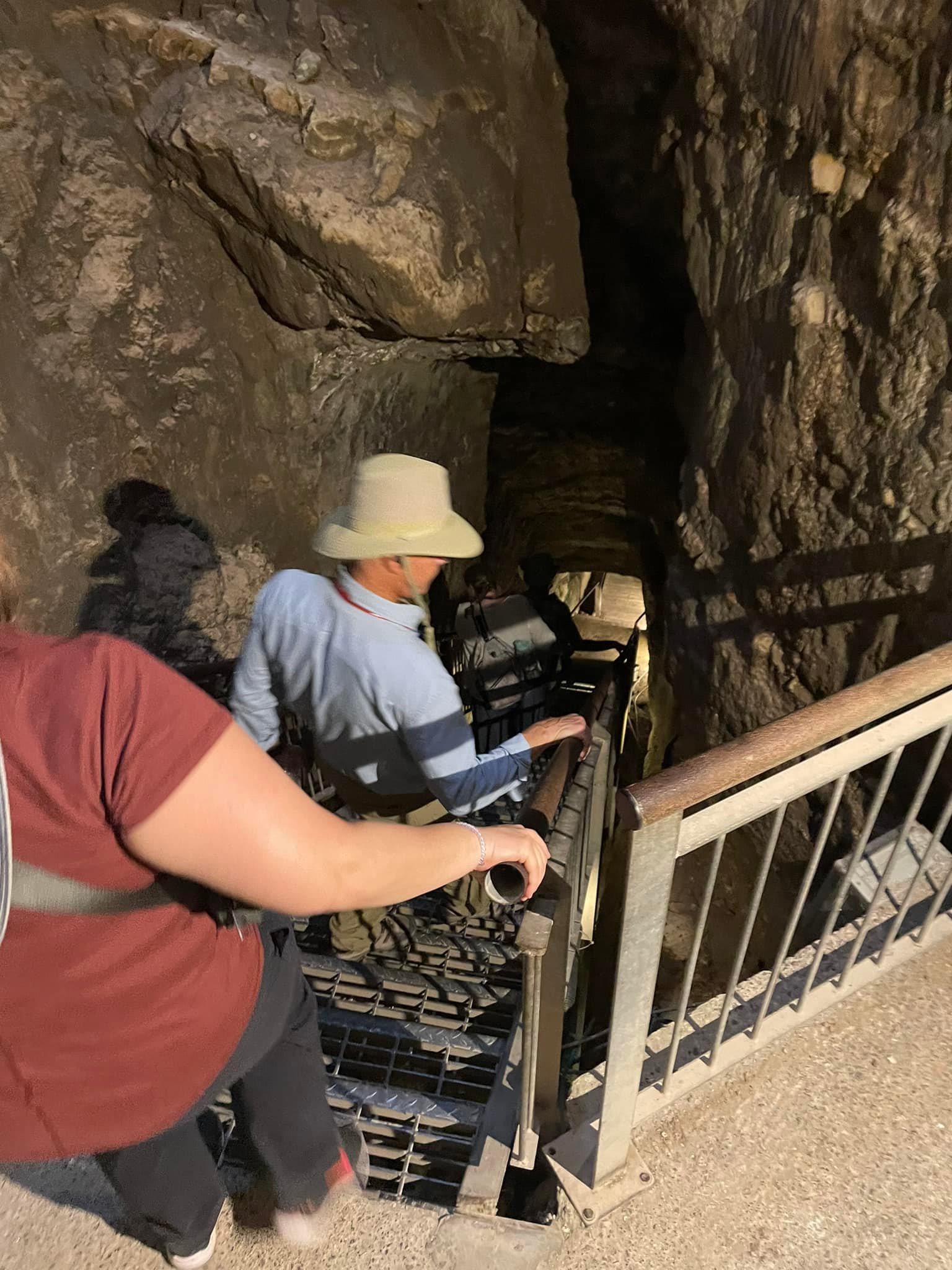
And down we go into Ahab’s water shaft.
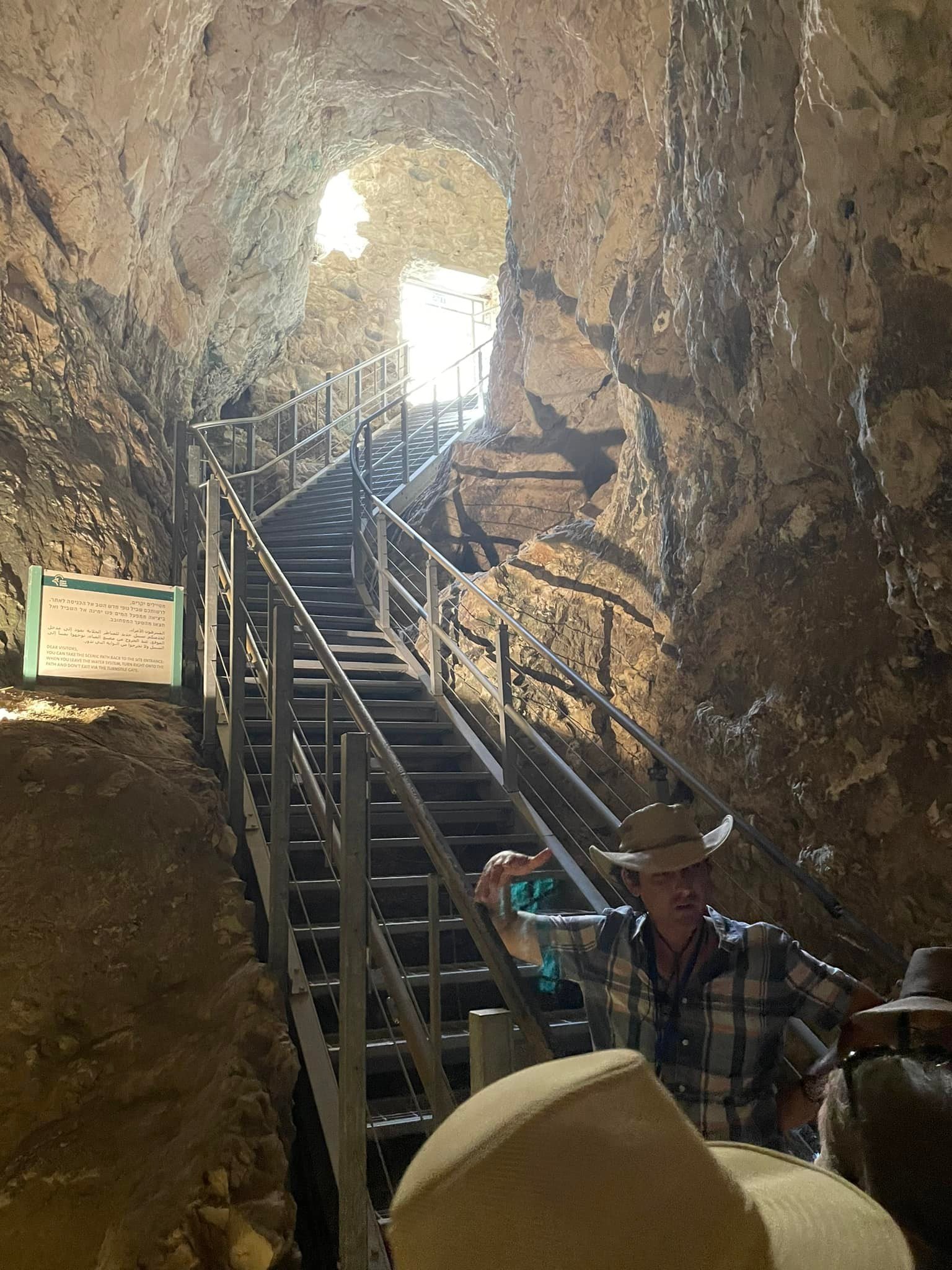
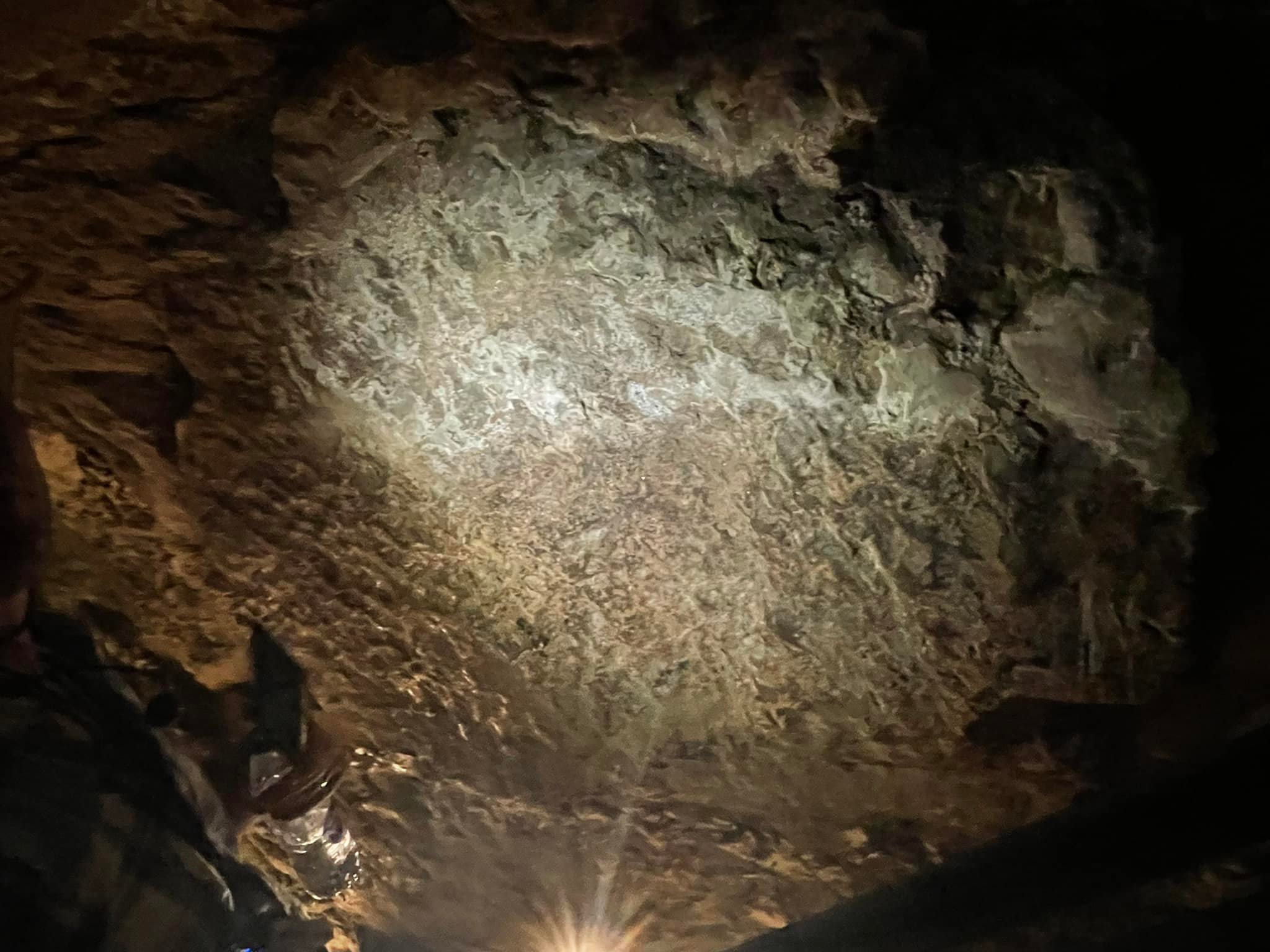
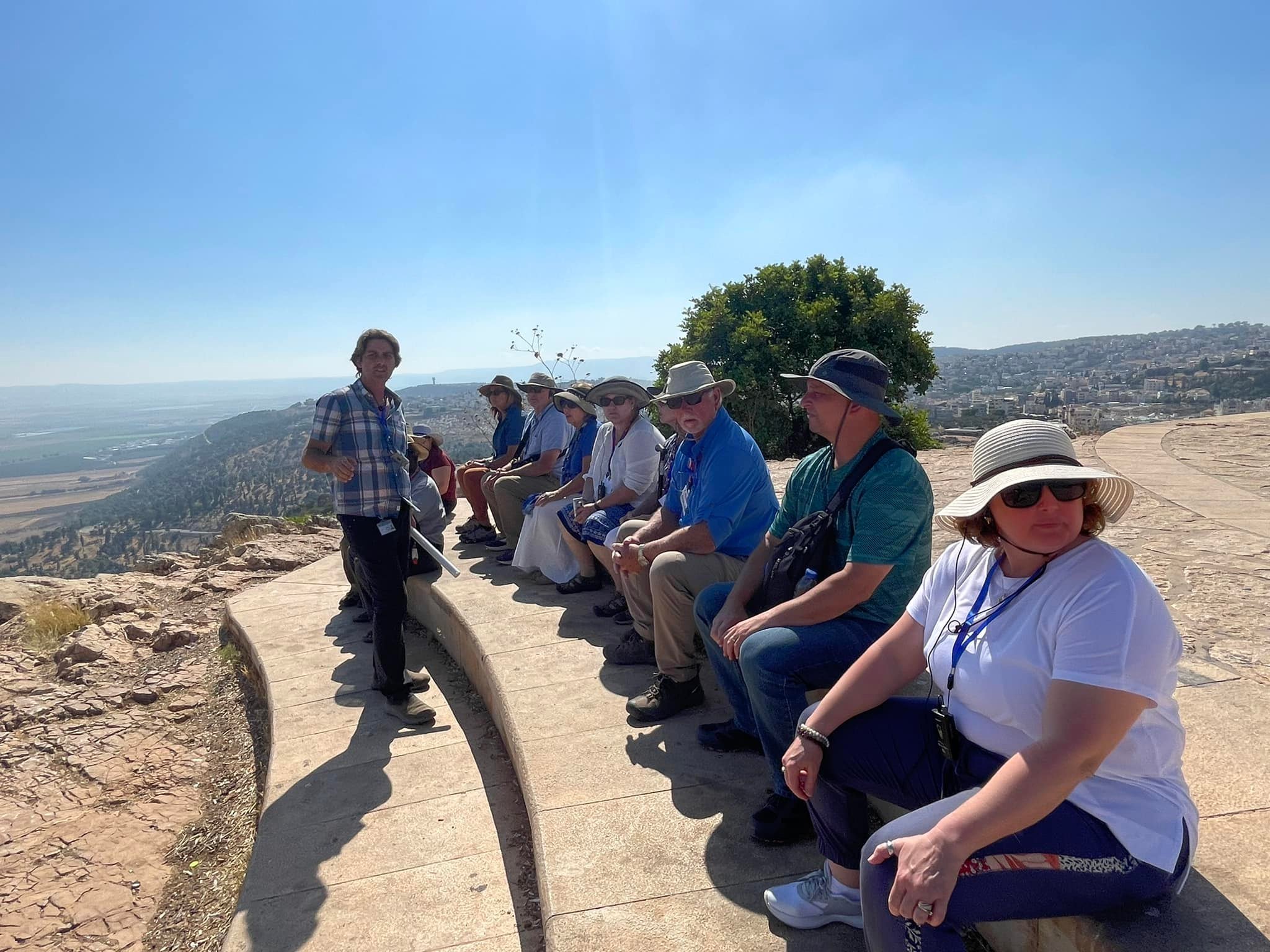

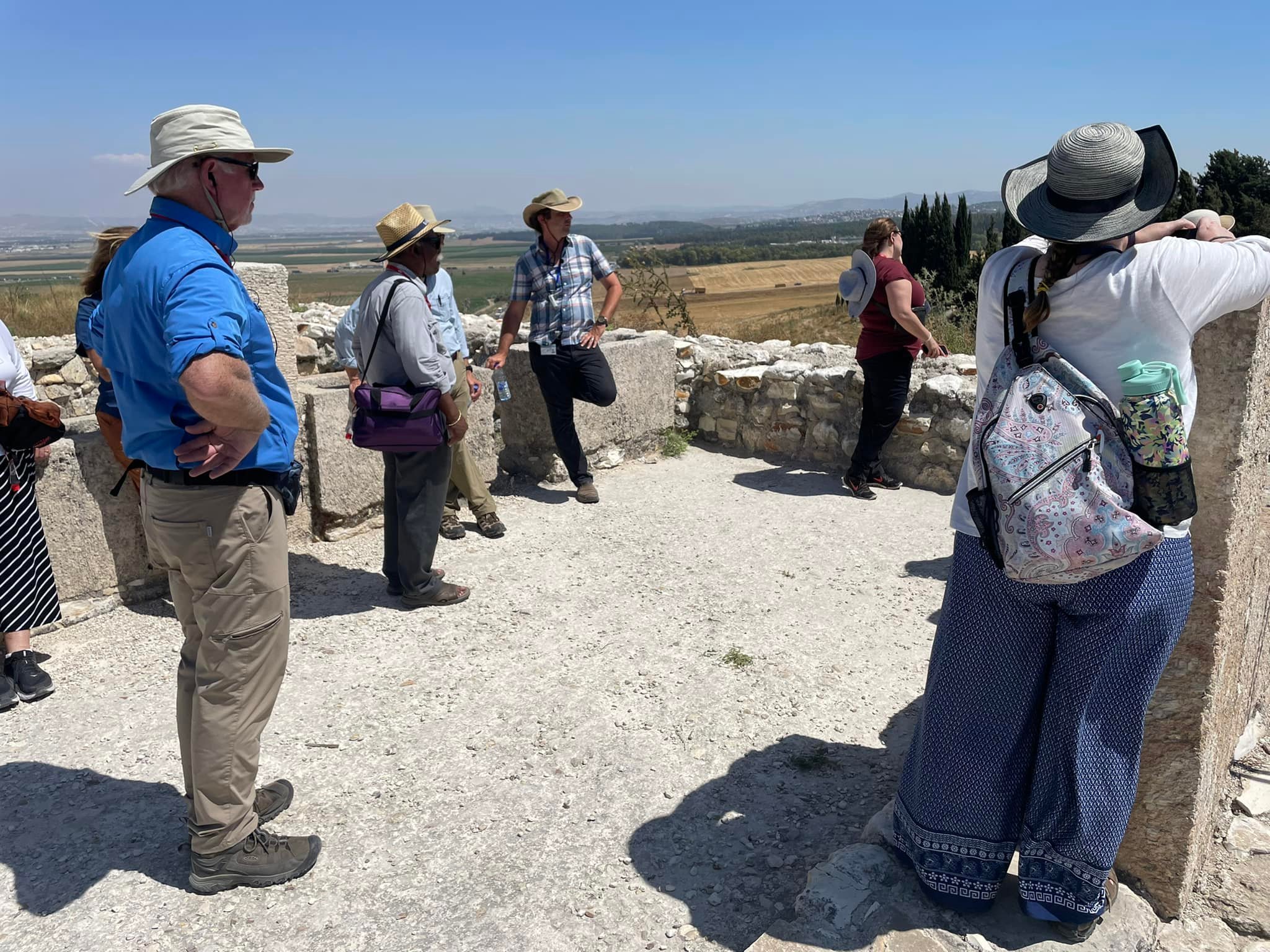
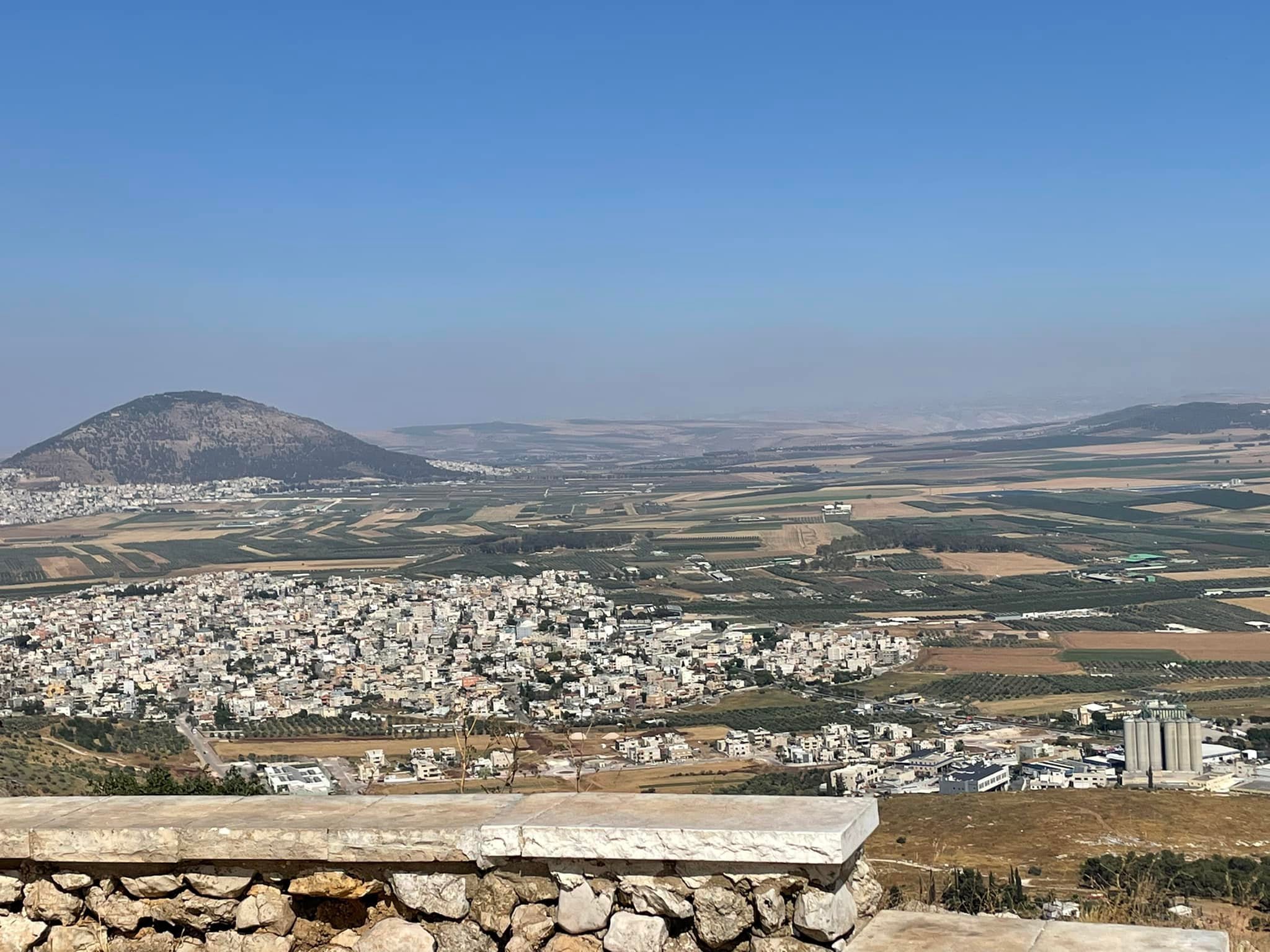
Mount Tabor, which traditions holds is where the Transfiguration occurred, is on the left. To its right is where a massive force of Midianites and Amelikites were encamped when Gideon defeated them with just 300 men. (Judges 7.)
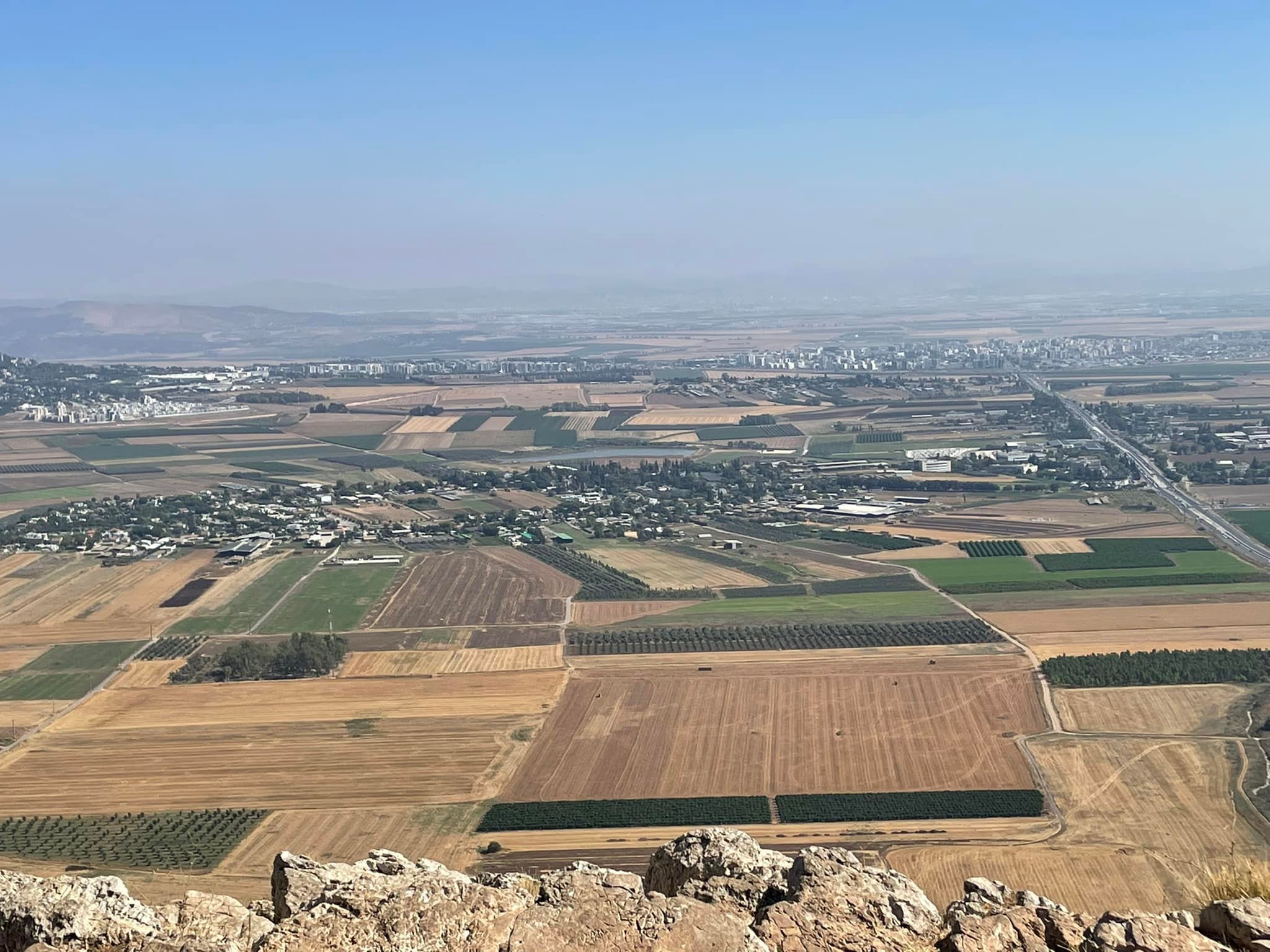
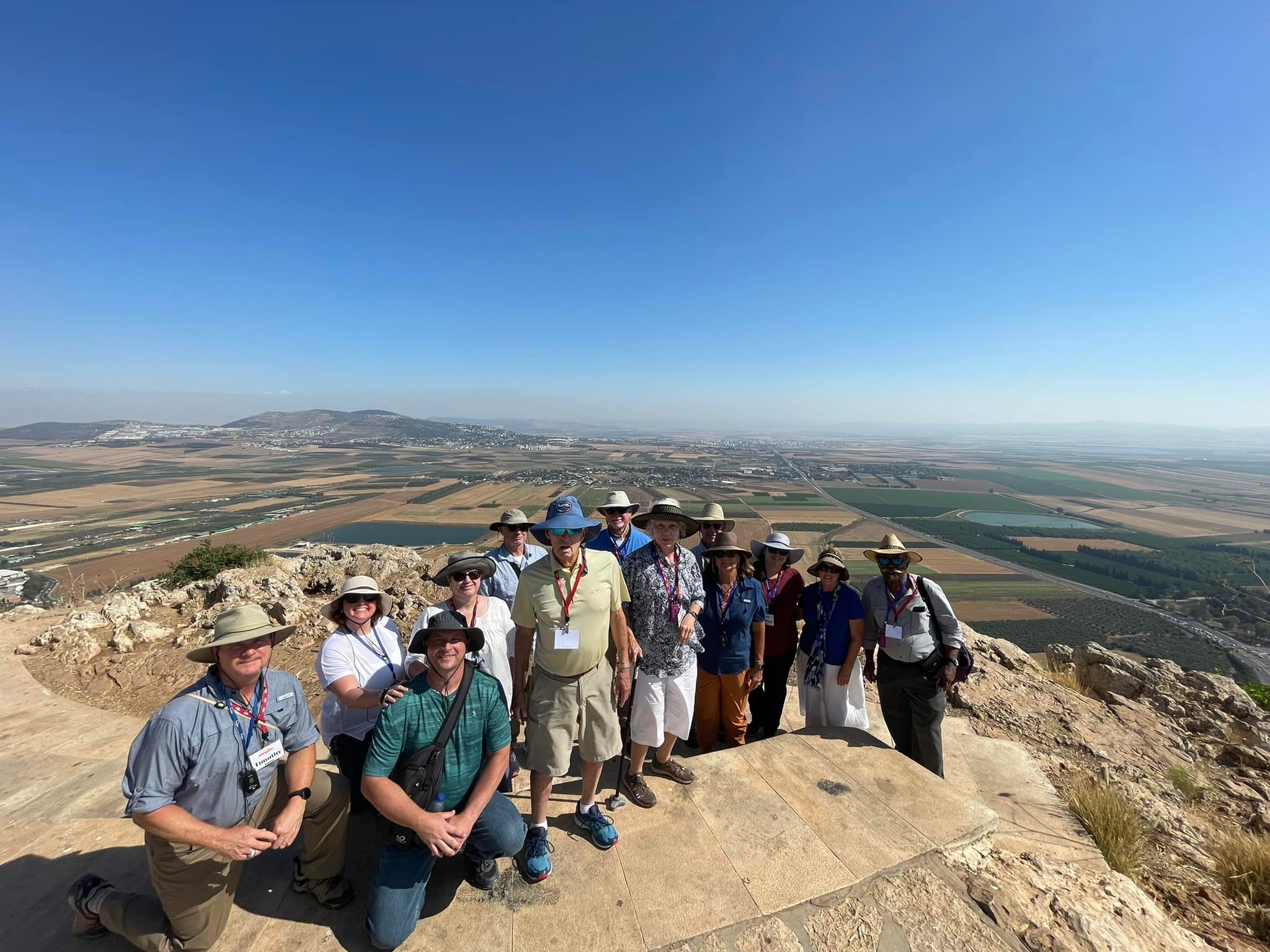
Our group in the edge of Mount Precipice. “Just two steps back” the photographer kept saying.
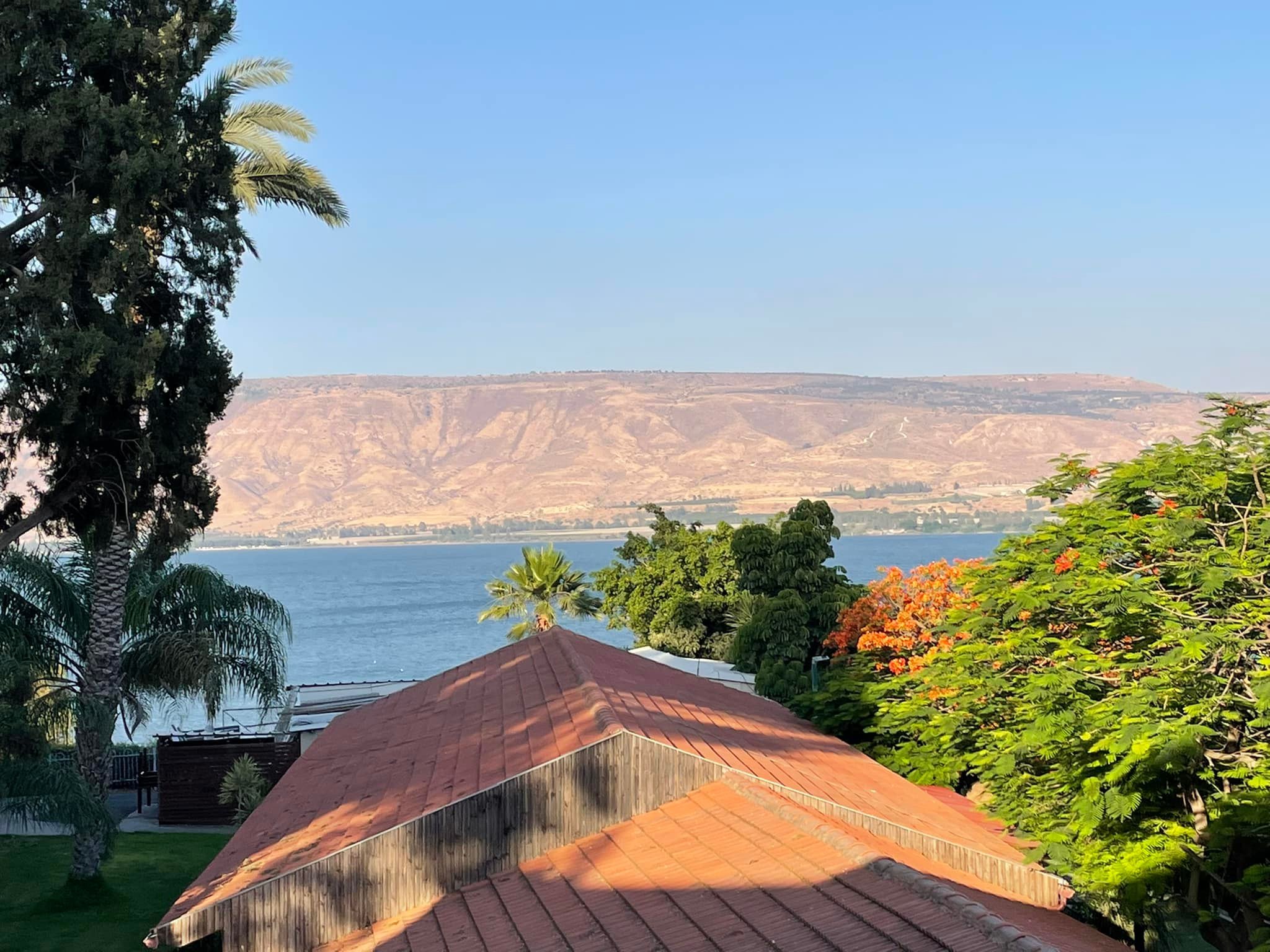
The southern end of the Sea of Galilee, looking east. Above it are the Golsn Heights.

Galilee


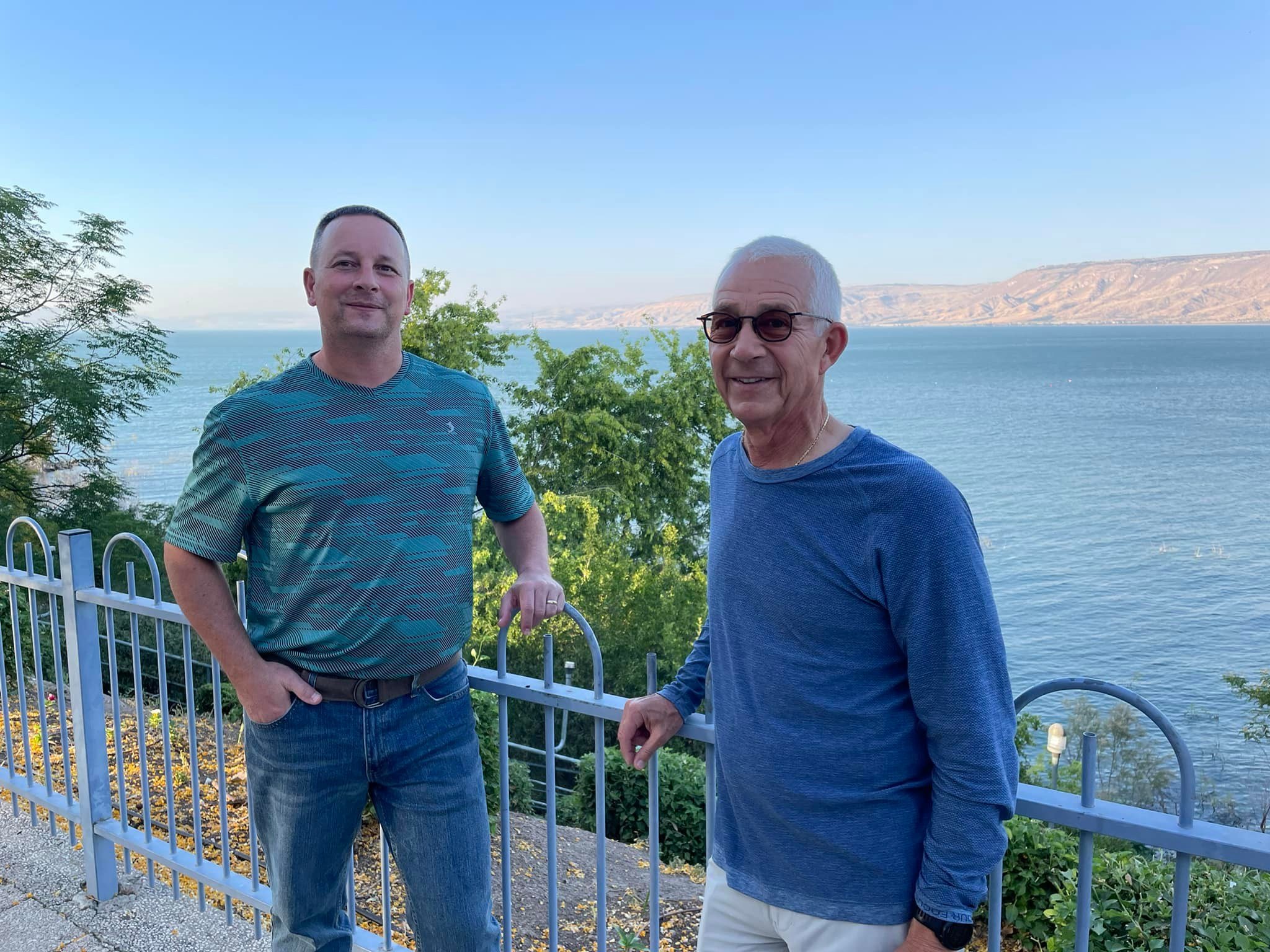
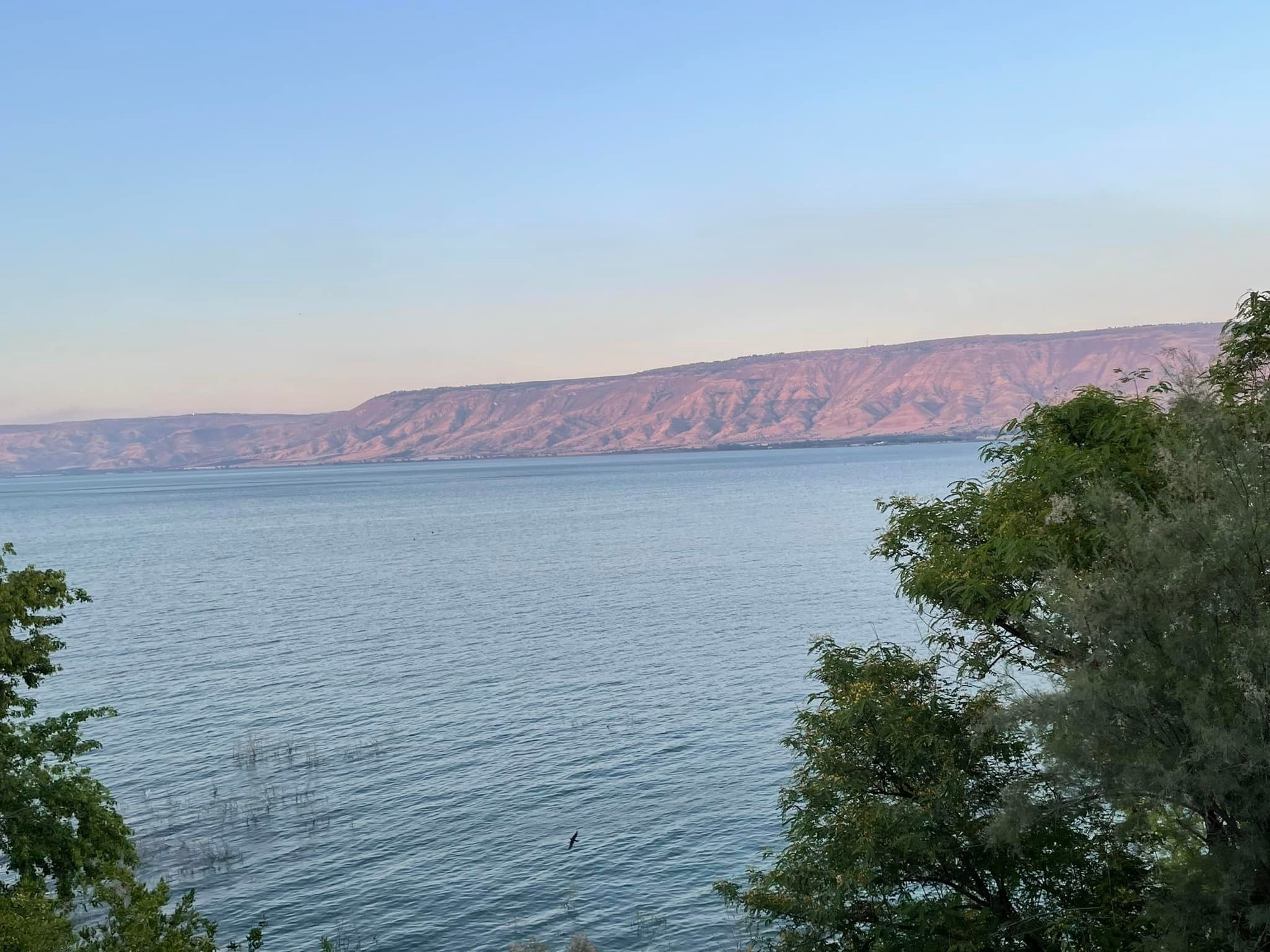
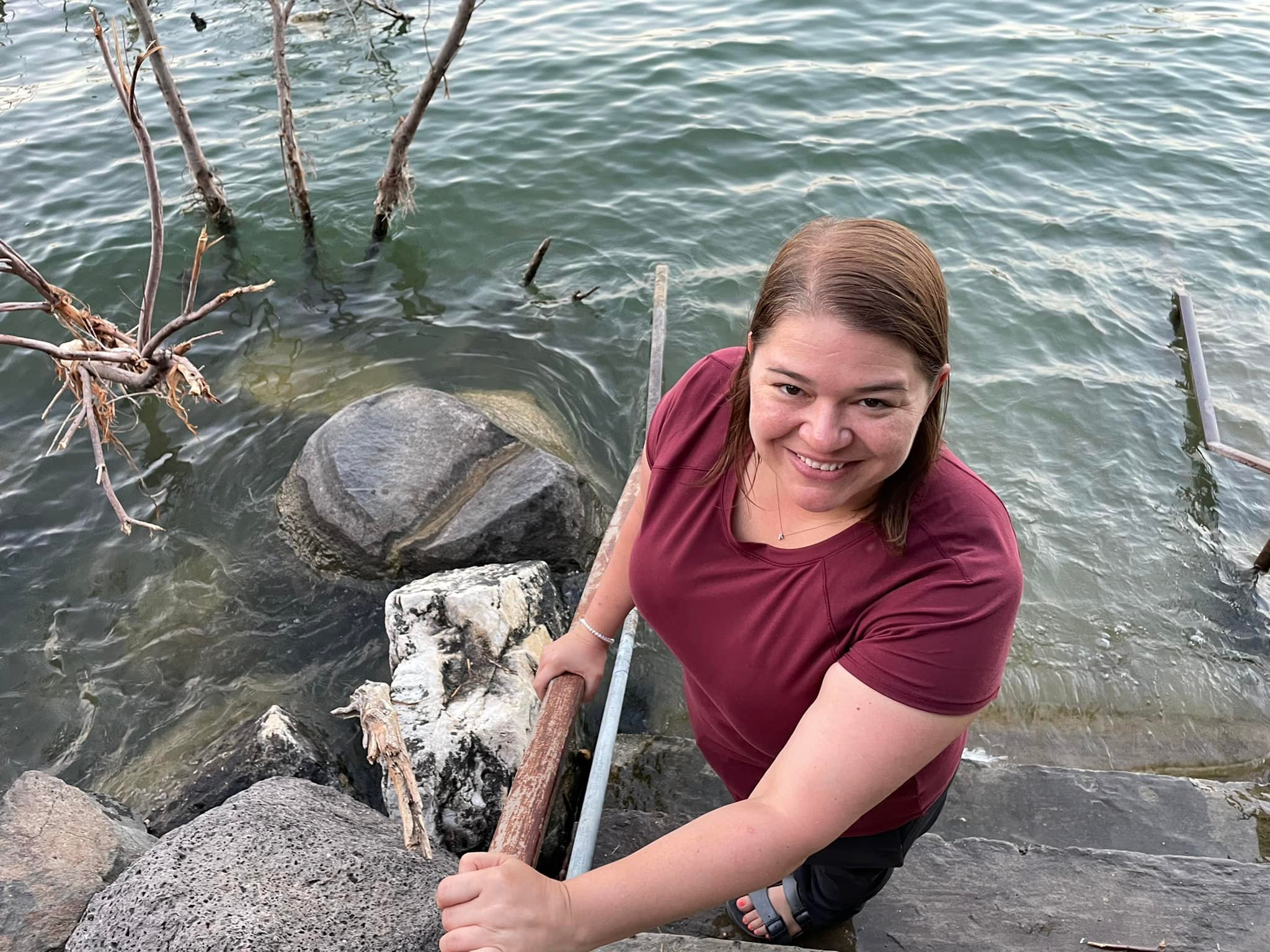
Just one toe in the water…
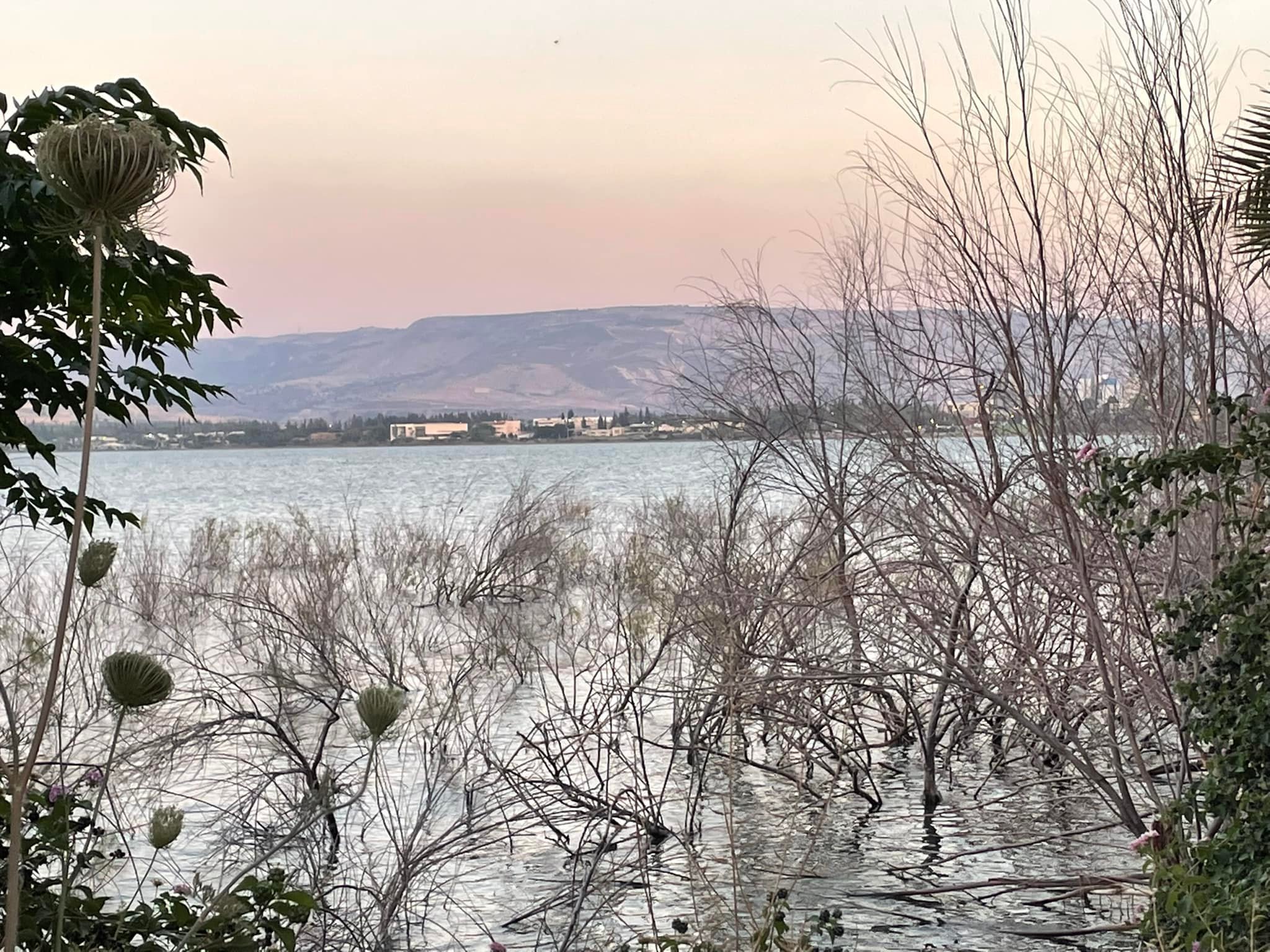
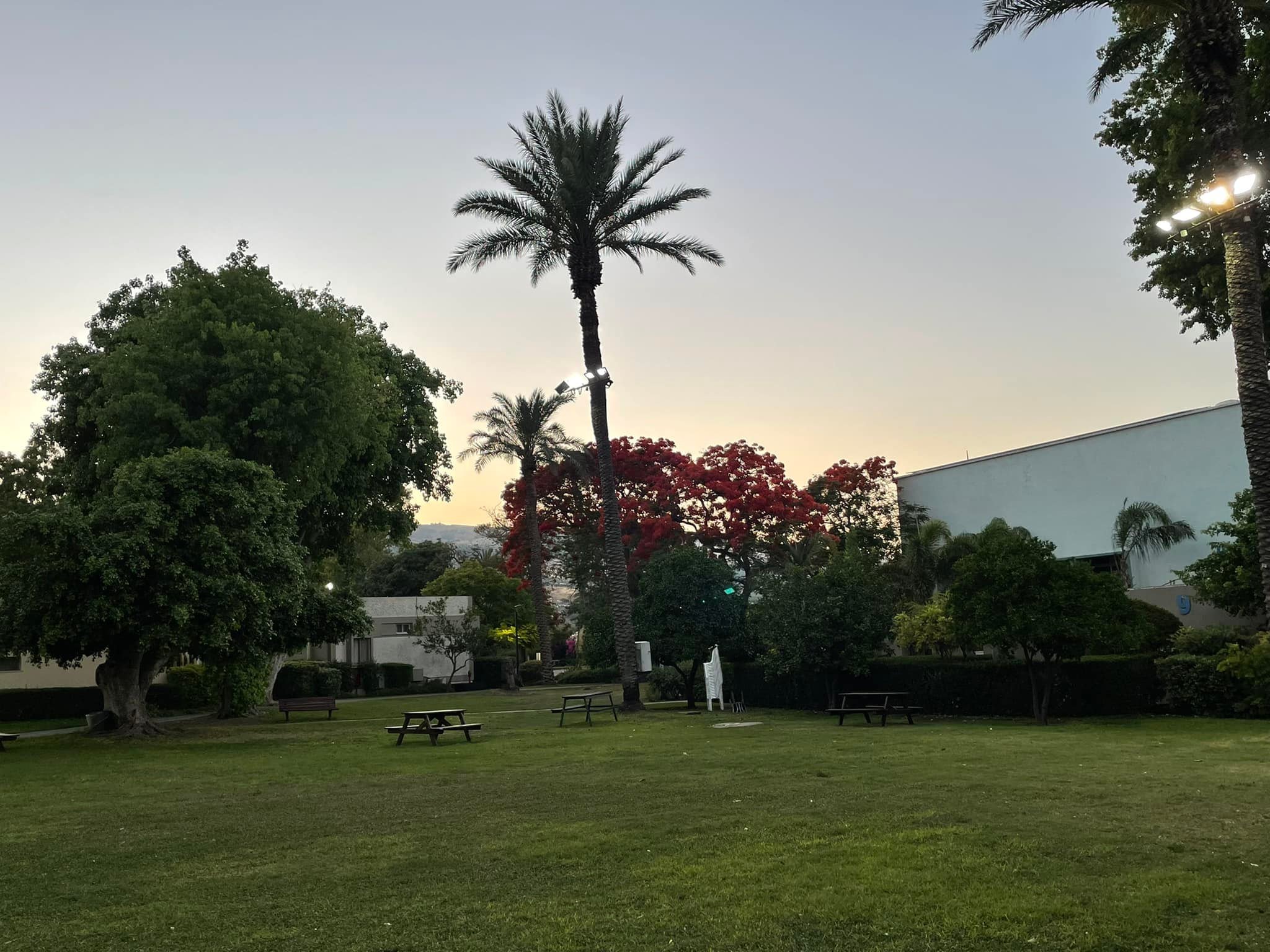
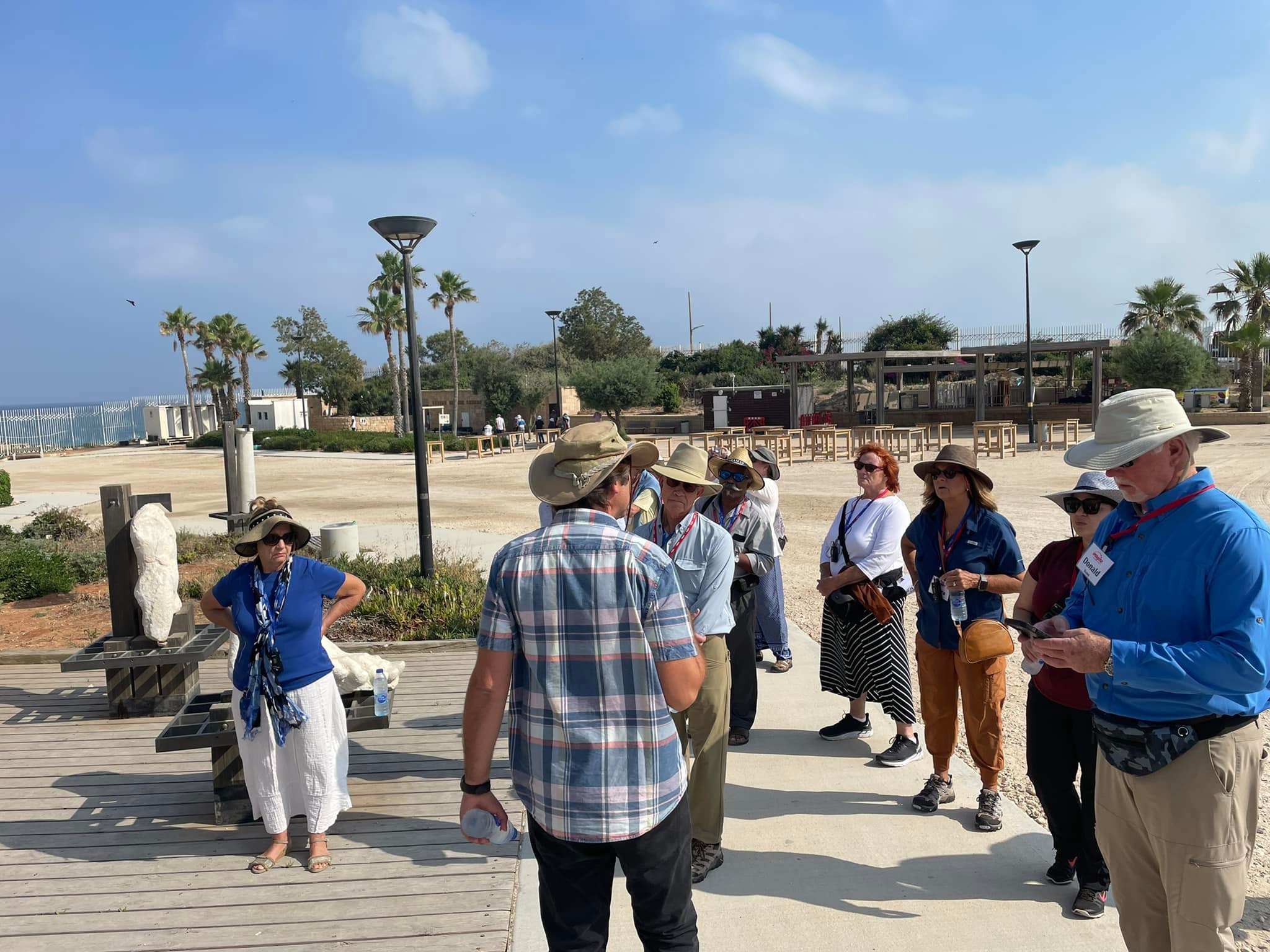

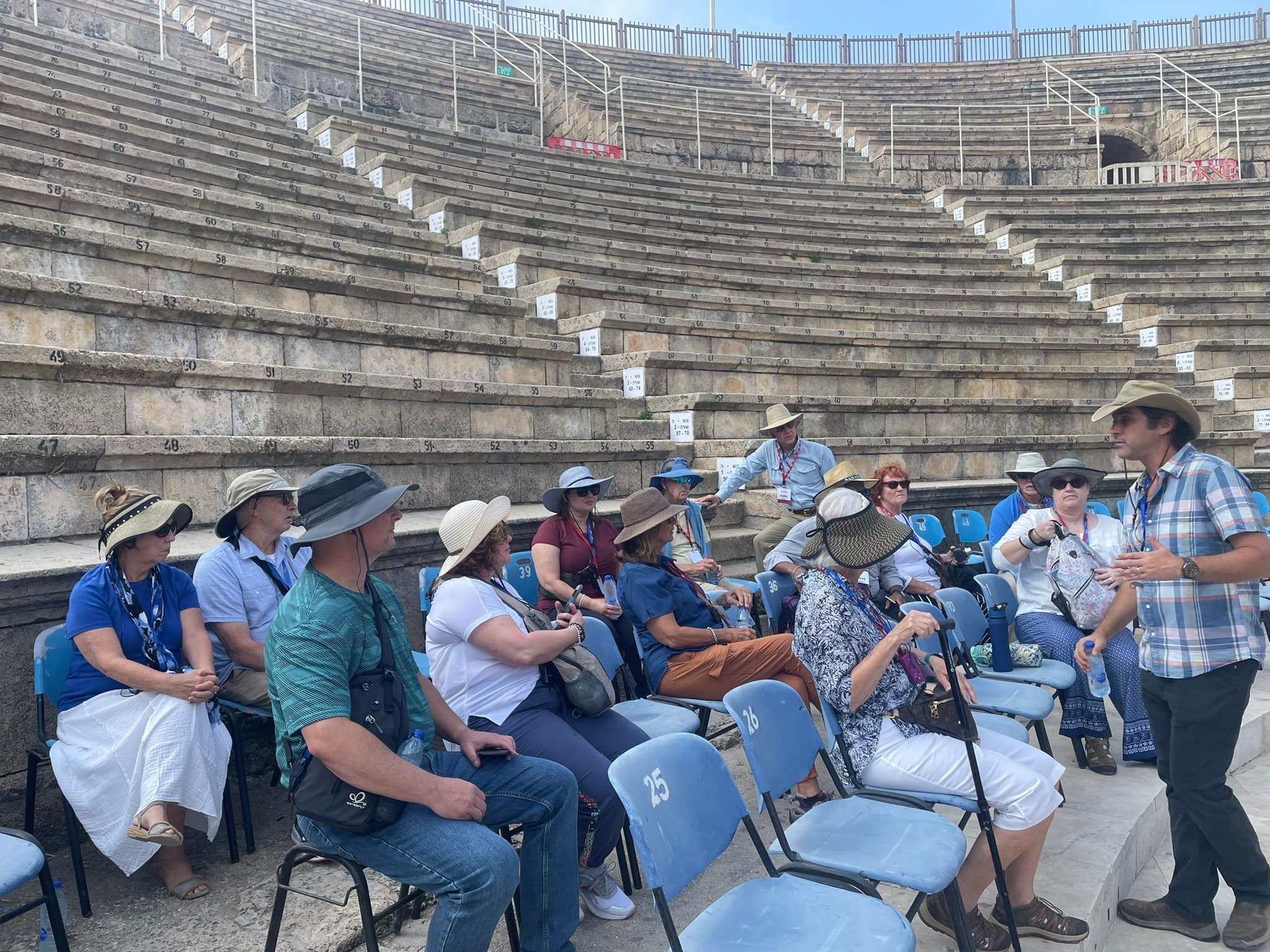
Day 1! June 6th, 2022. Here are highlights from the first day of our group’s tour to the Holy Land, June 2022.

Departing Orlando June 6, 2022.
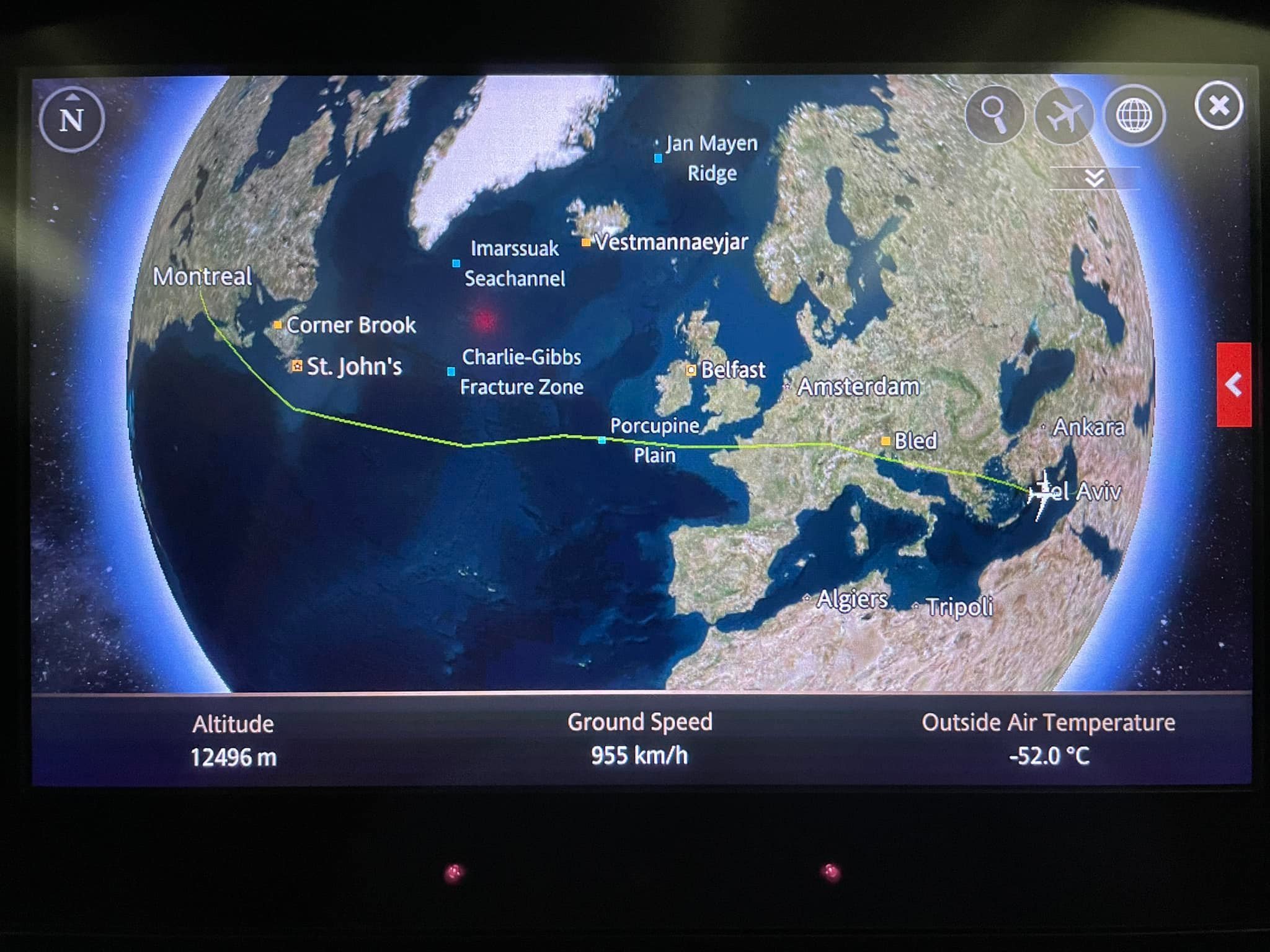

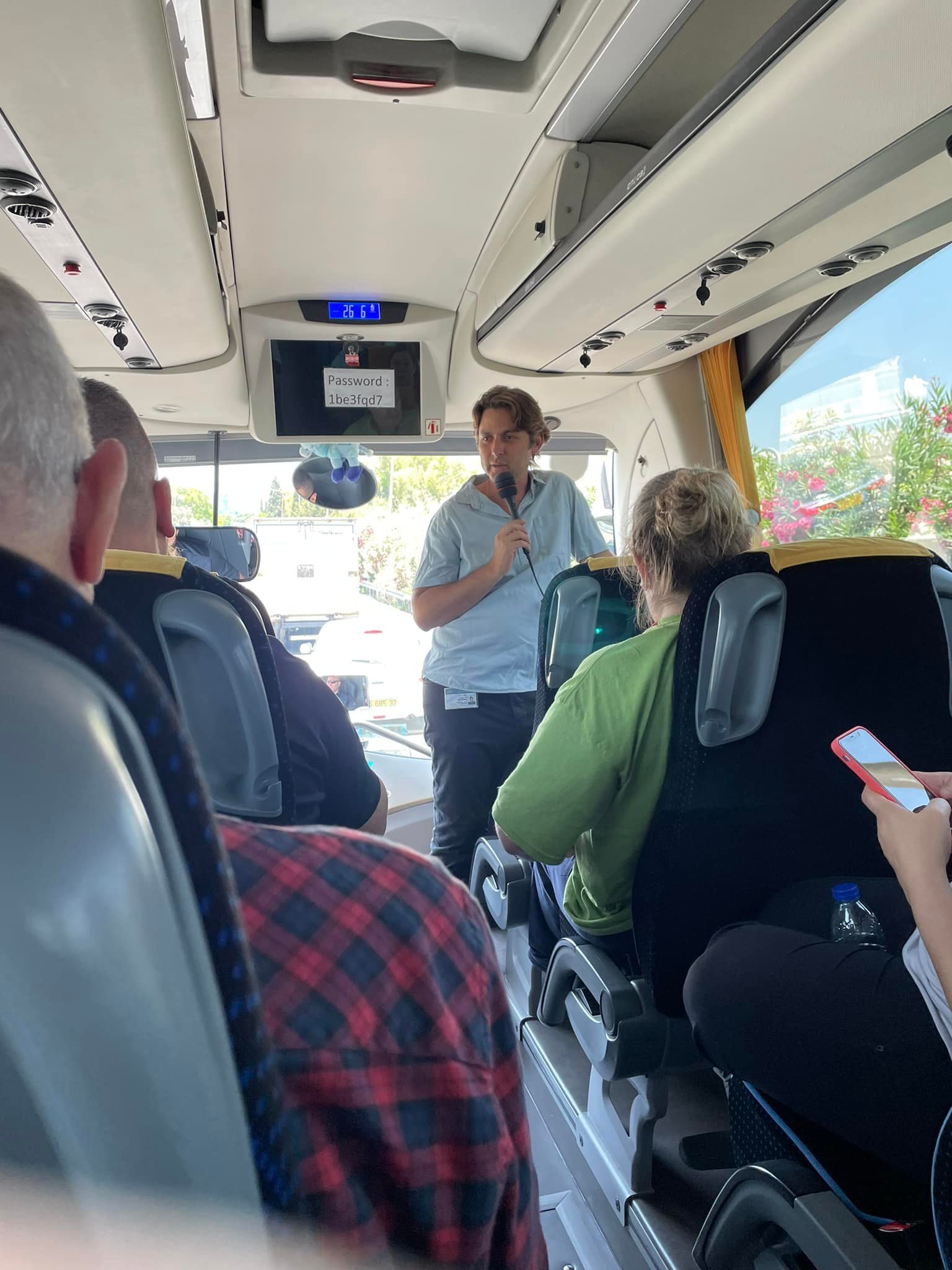

Jaffa (Joppa) with a Turkish tower in the background.

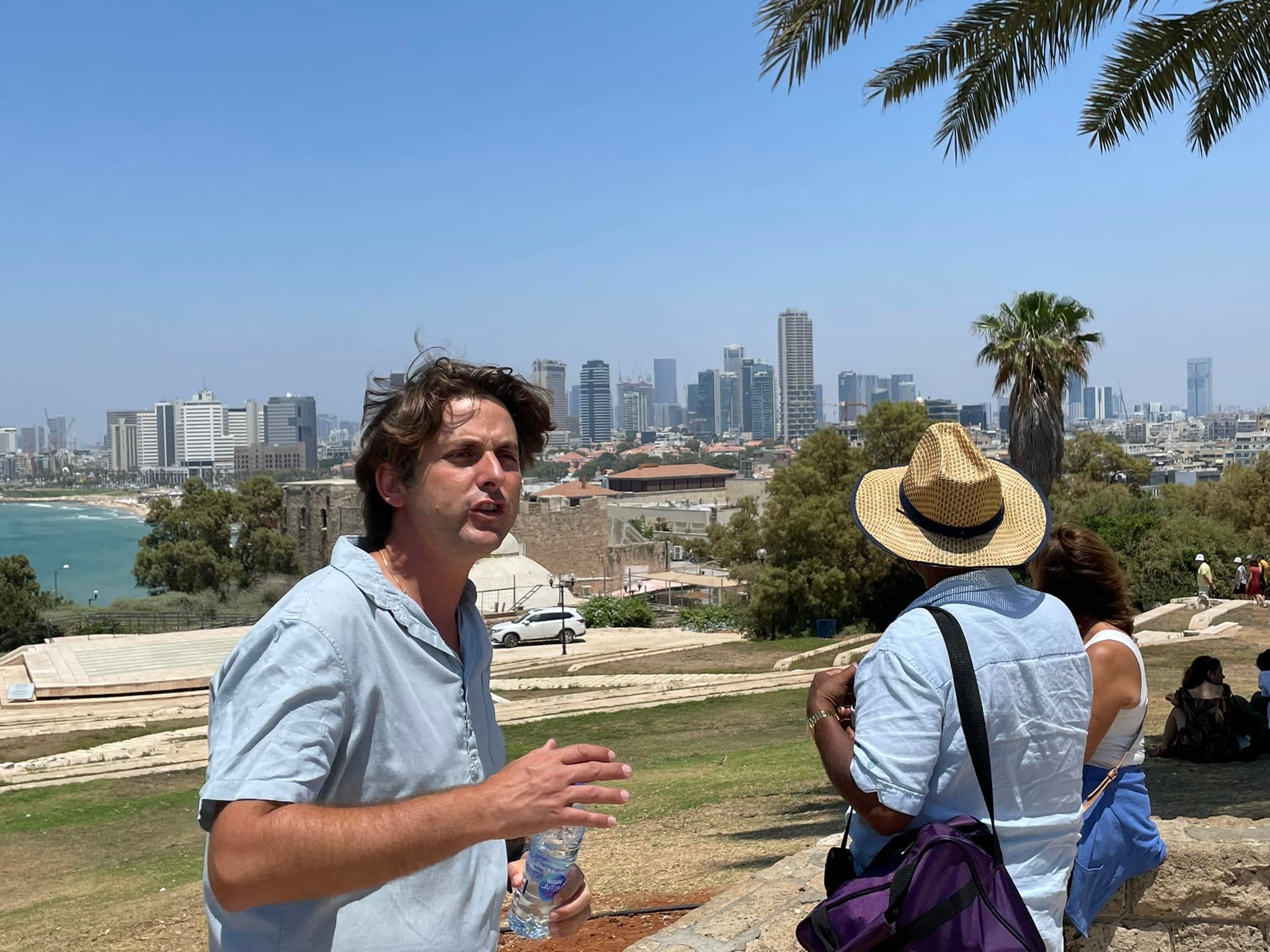
Looking at Tel Aviv.
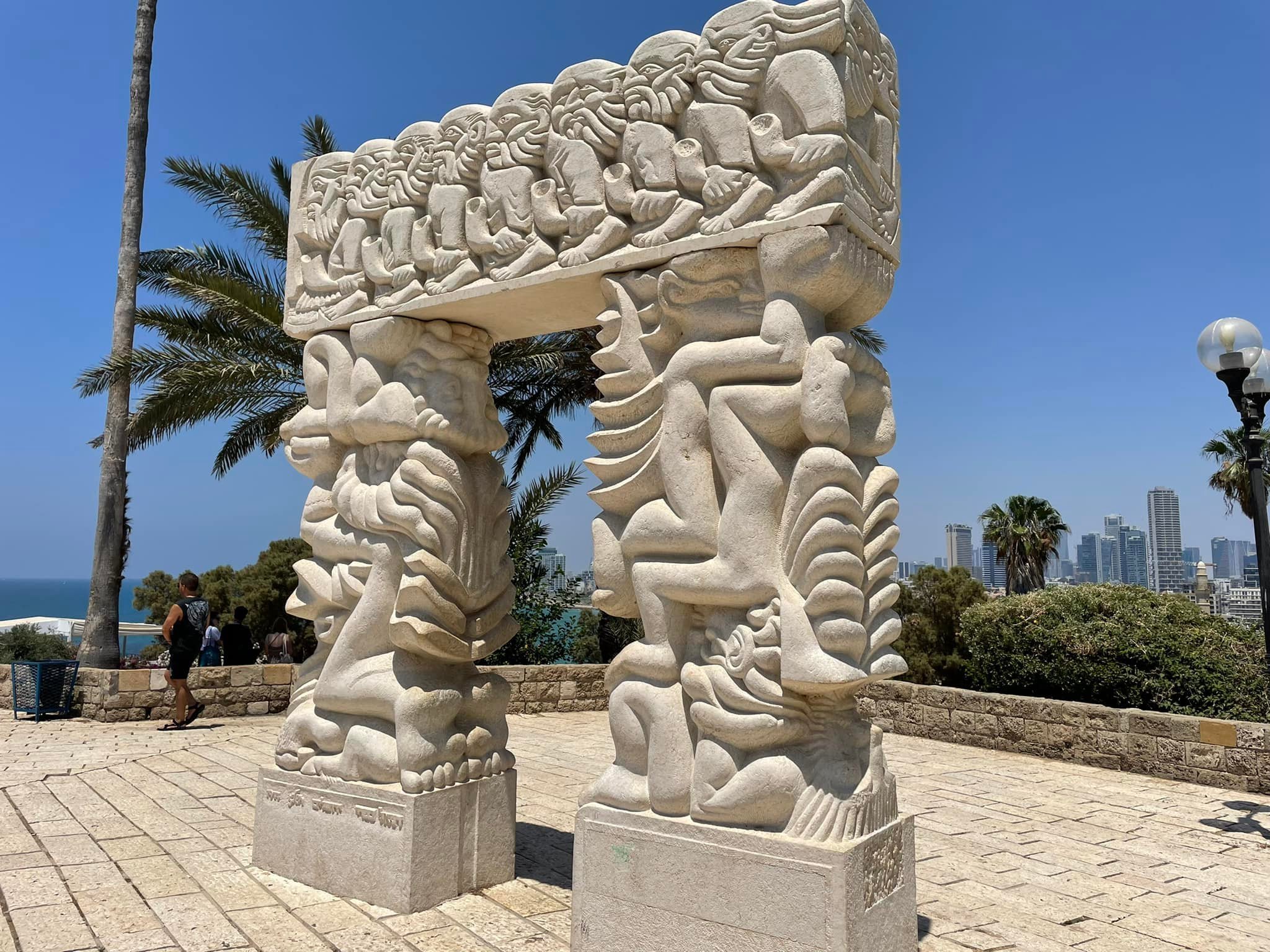


Old Jaffa

Egyptian columns built under Ramses II over 3600 years old.
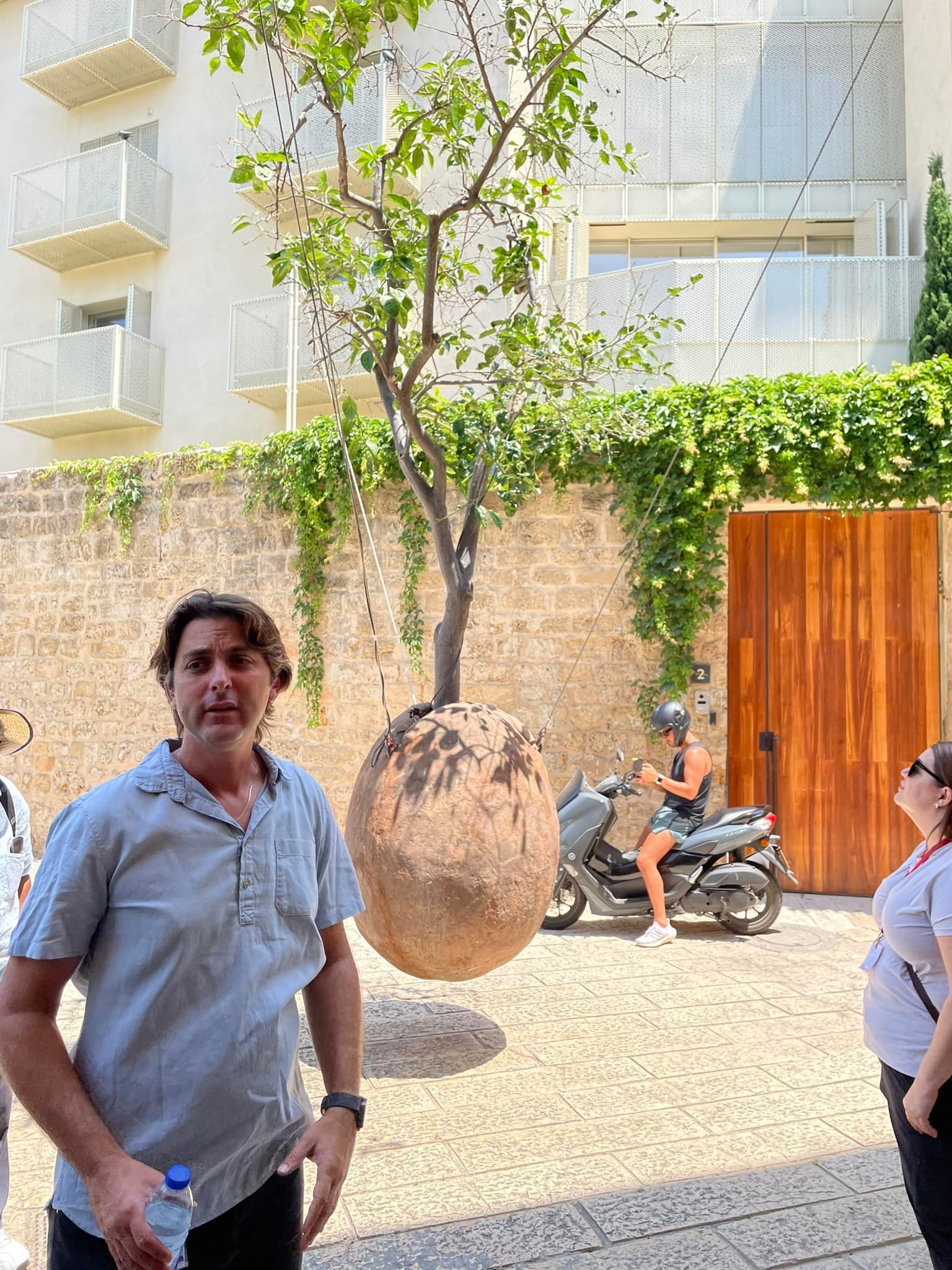
A sculpture honoring the Jaffa orange - with a live tree in it.

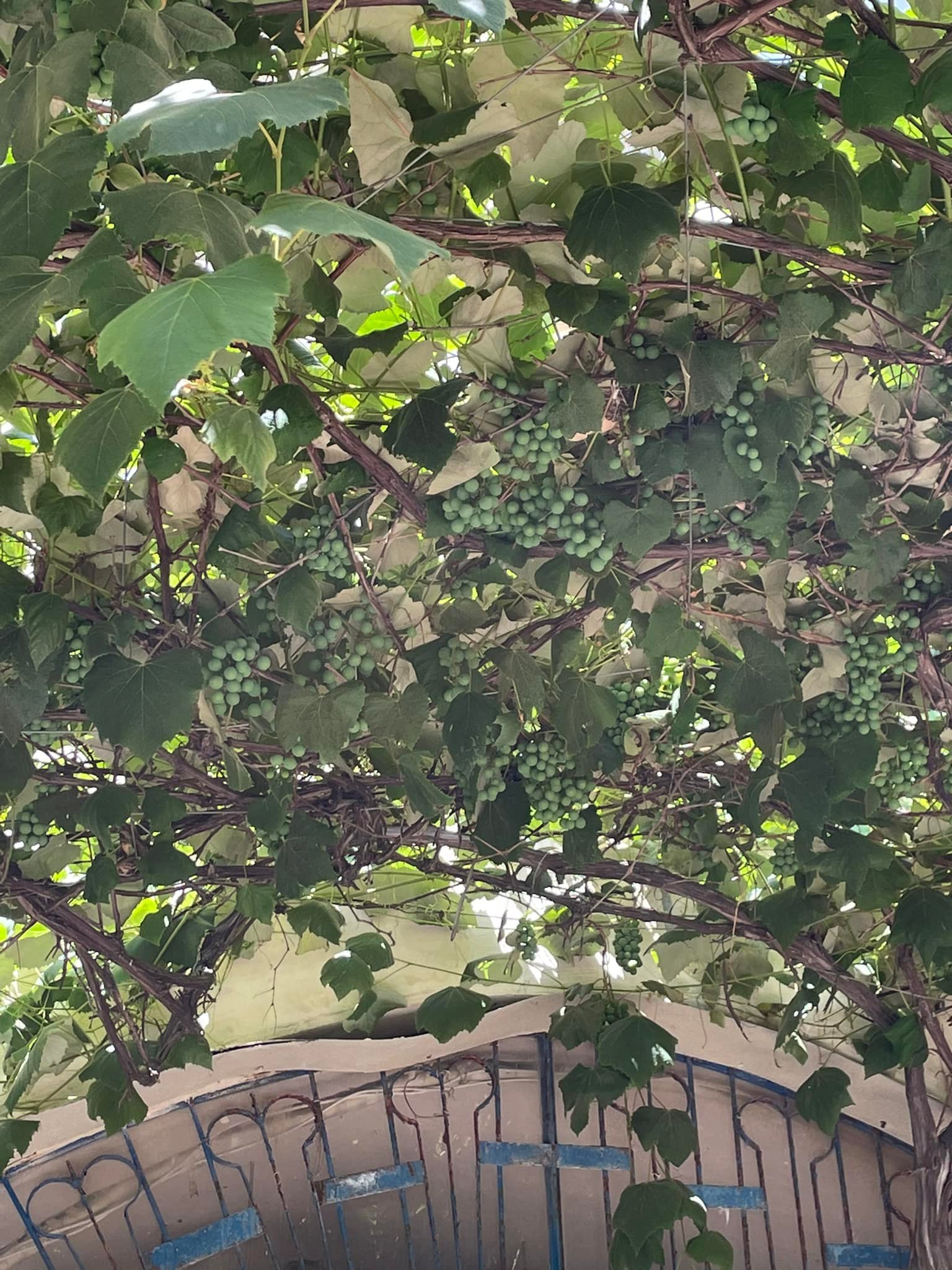
Grapes!
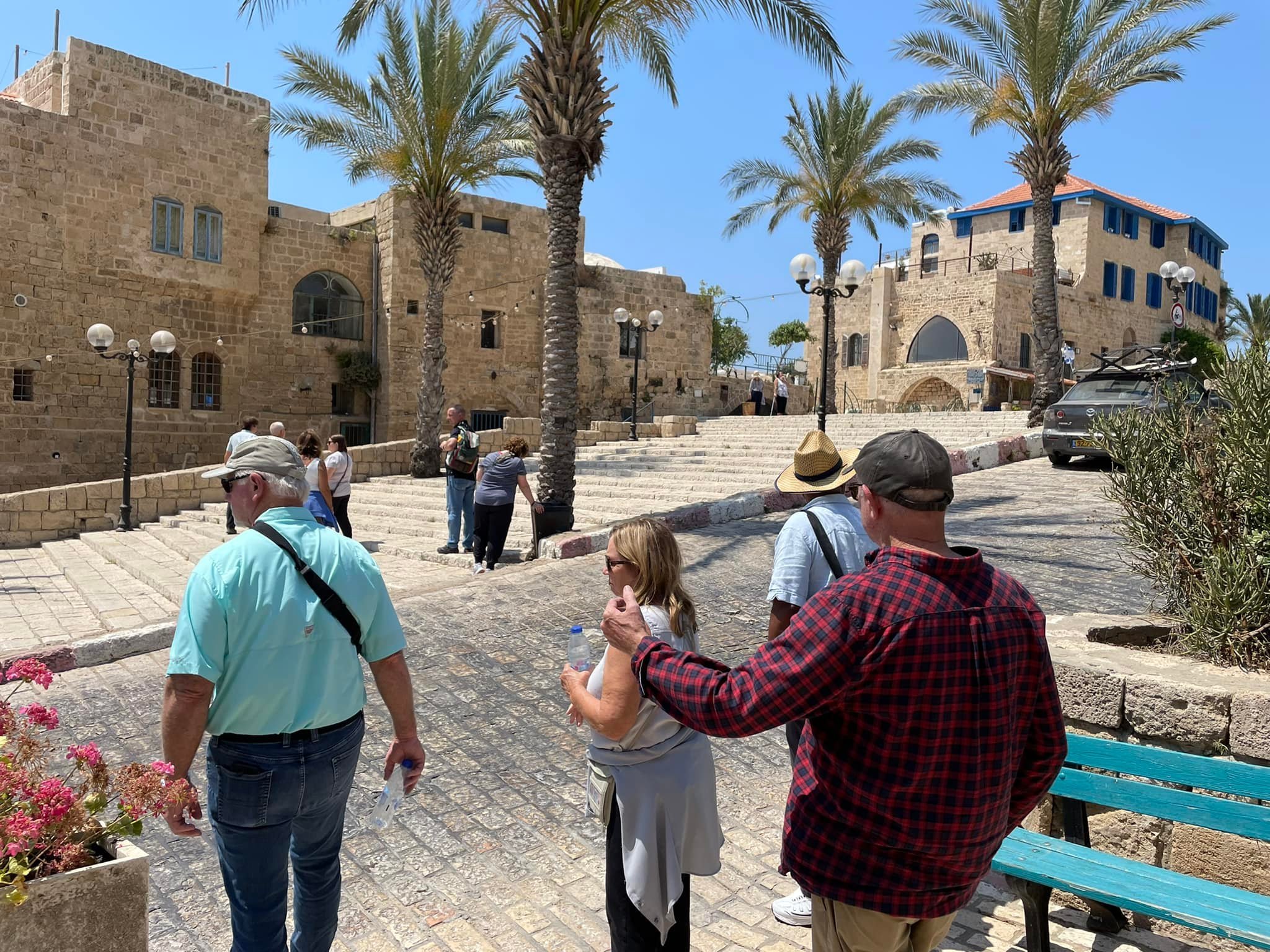
Seaside part of old Jaffa near where Simon the tanner lived (Acts 10.)

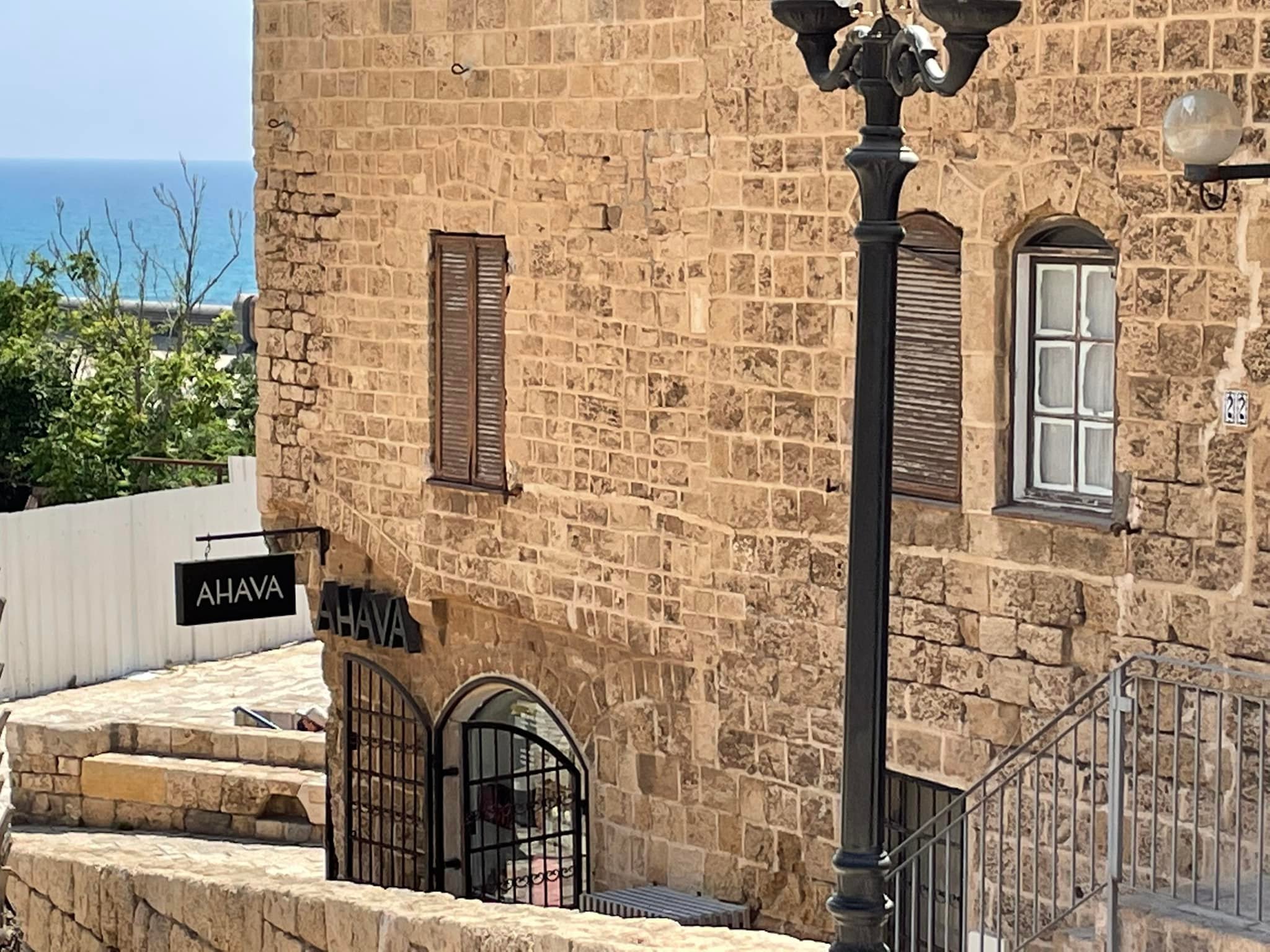

St. Peter’s Church, Jaffa.


Lunch!

Lamb shawarma with Coke in a glass bottle.
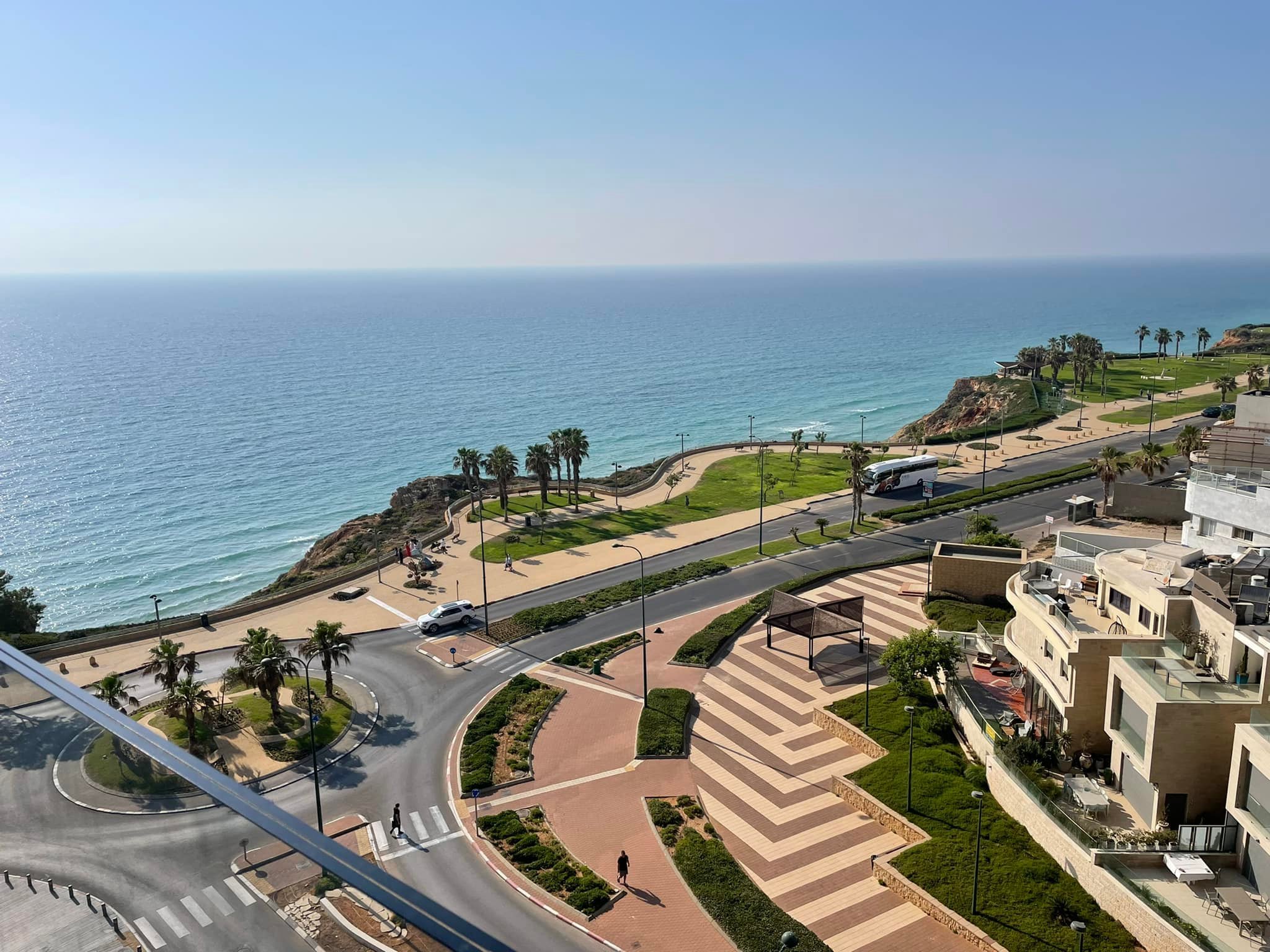
Netanya, coast of Israel.

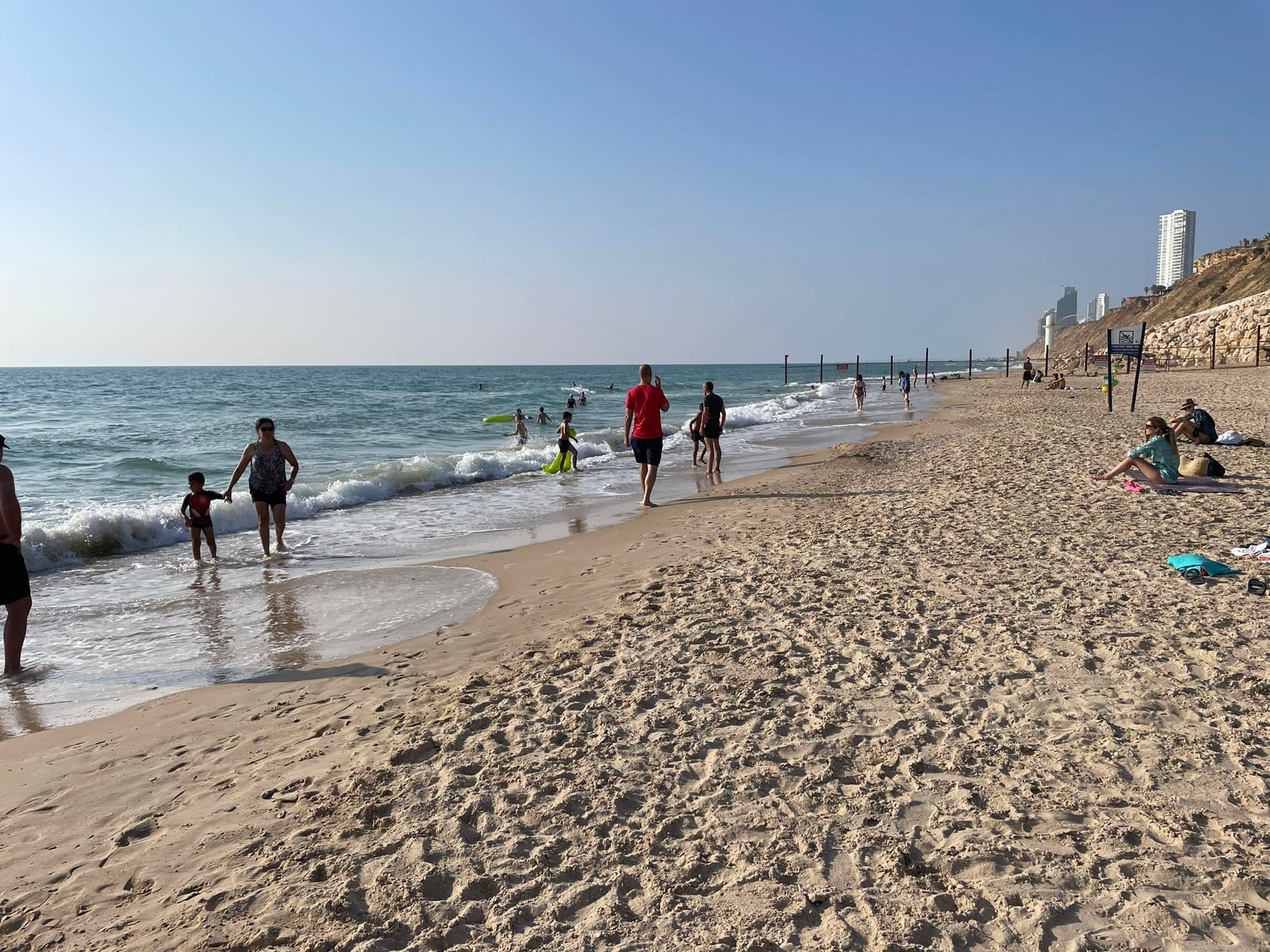
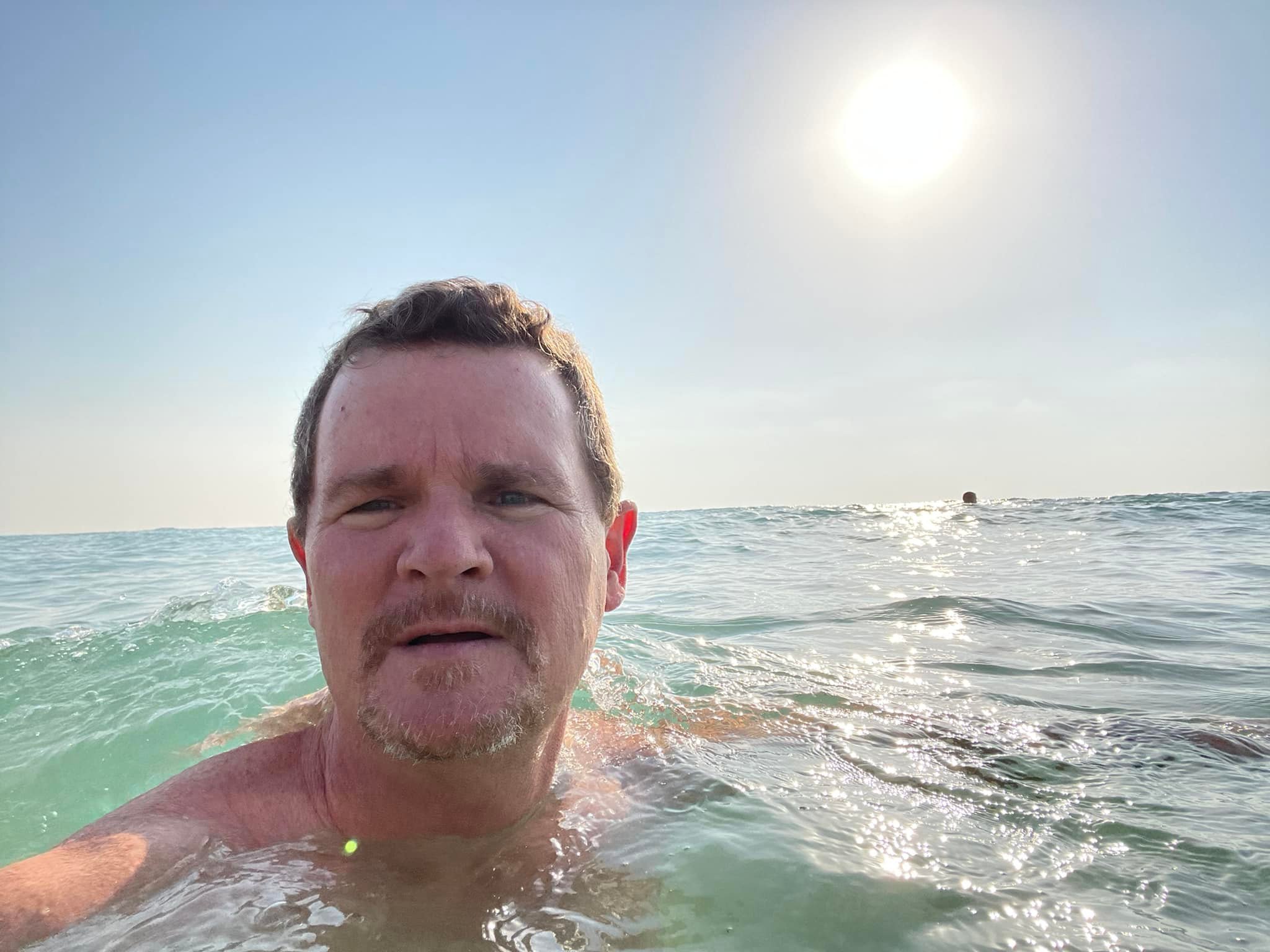
Fr. Tim in the Mediterranean for the first time ever!

John & Laura Motis with our hotel above John’s left shoulder.
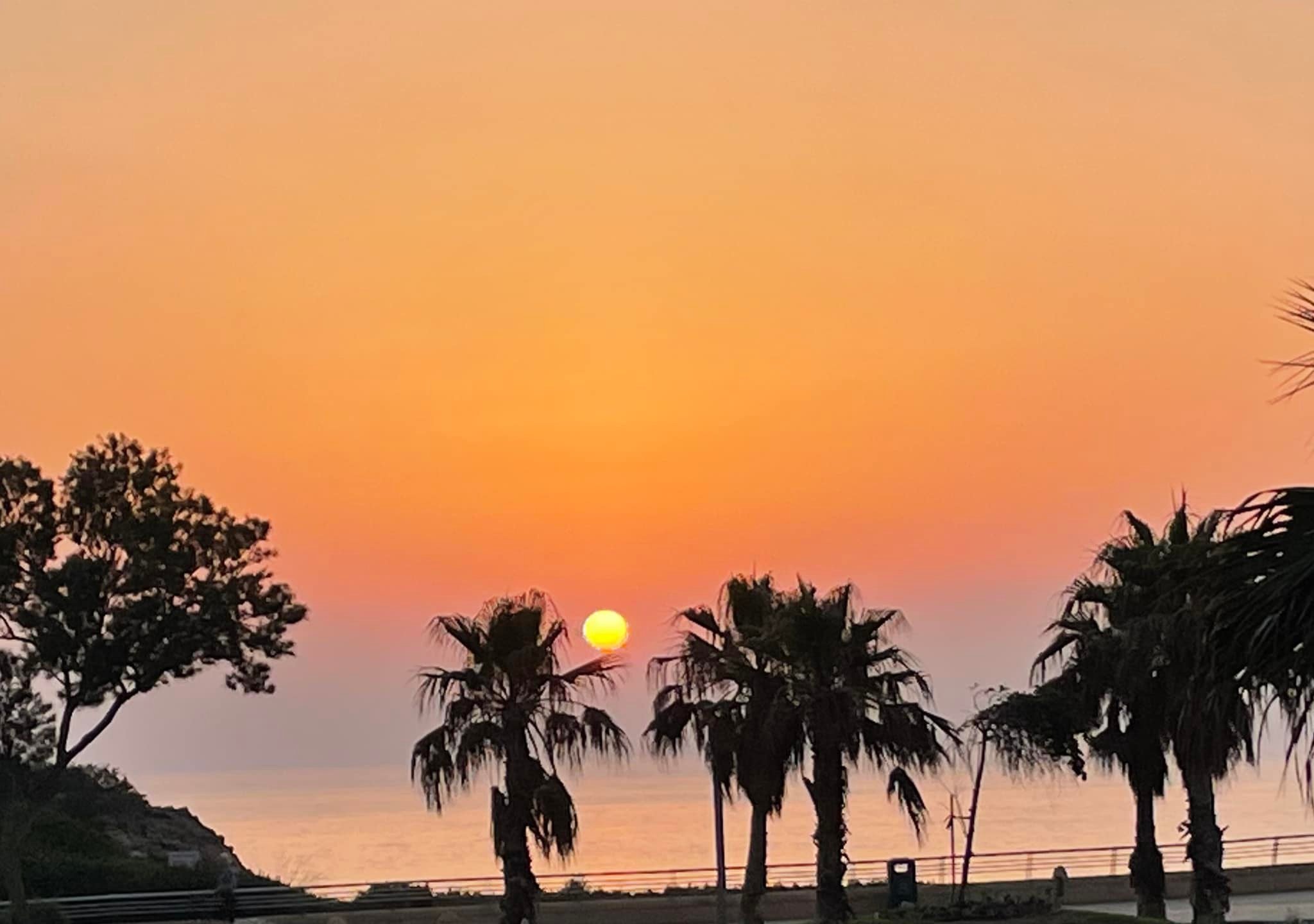
Sunset, Netanya.
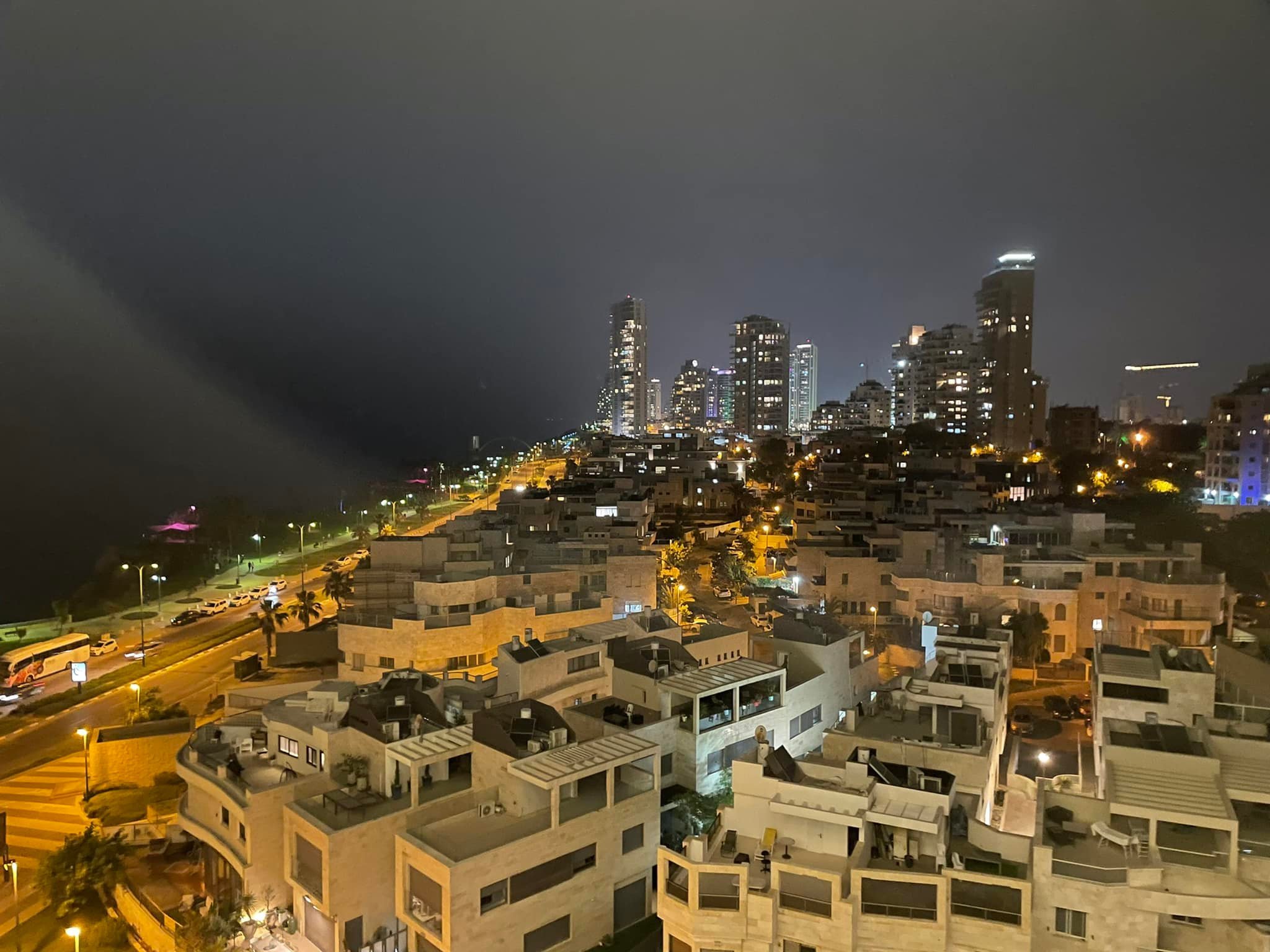
Netanya at night.
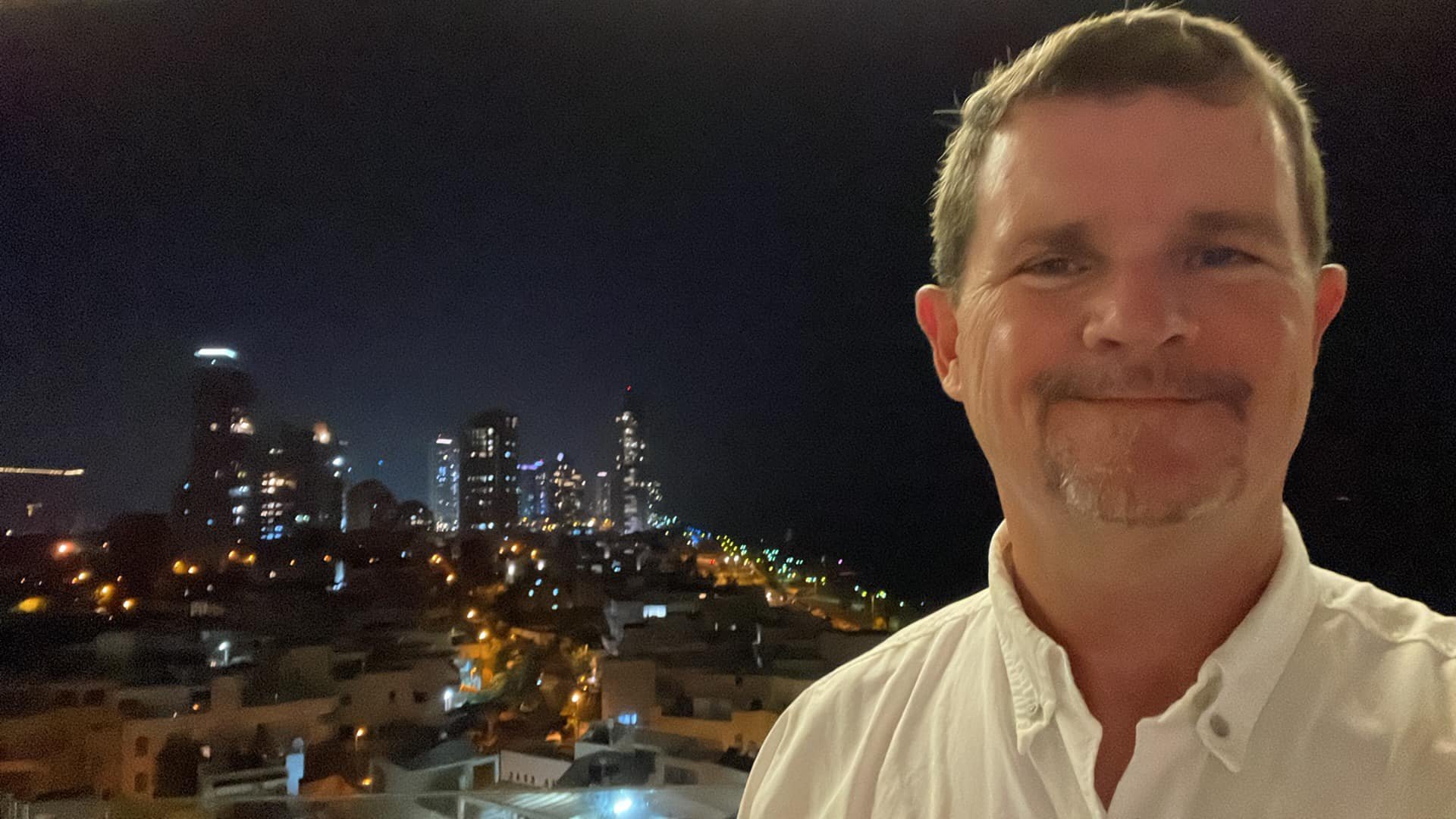
Fr. Tim doing Compline service live from Netanya.
